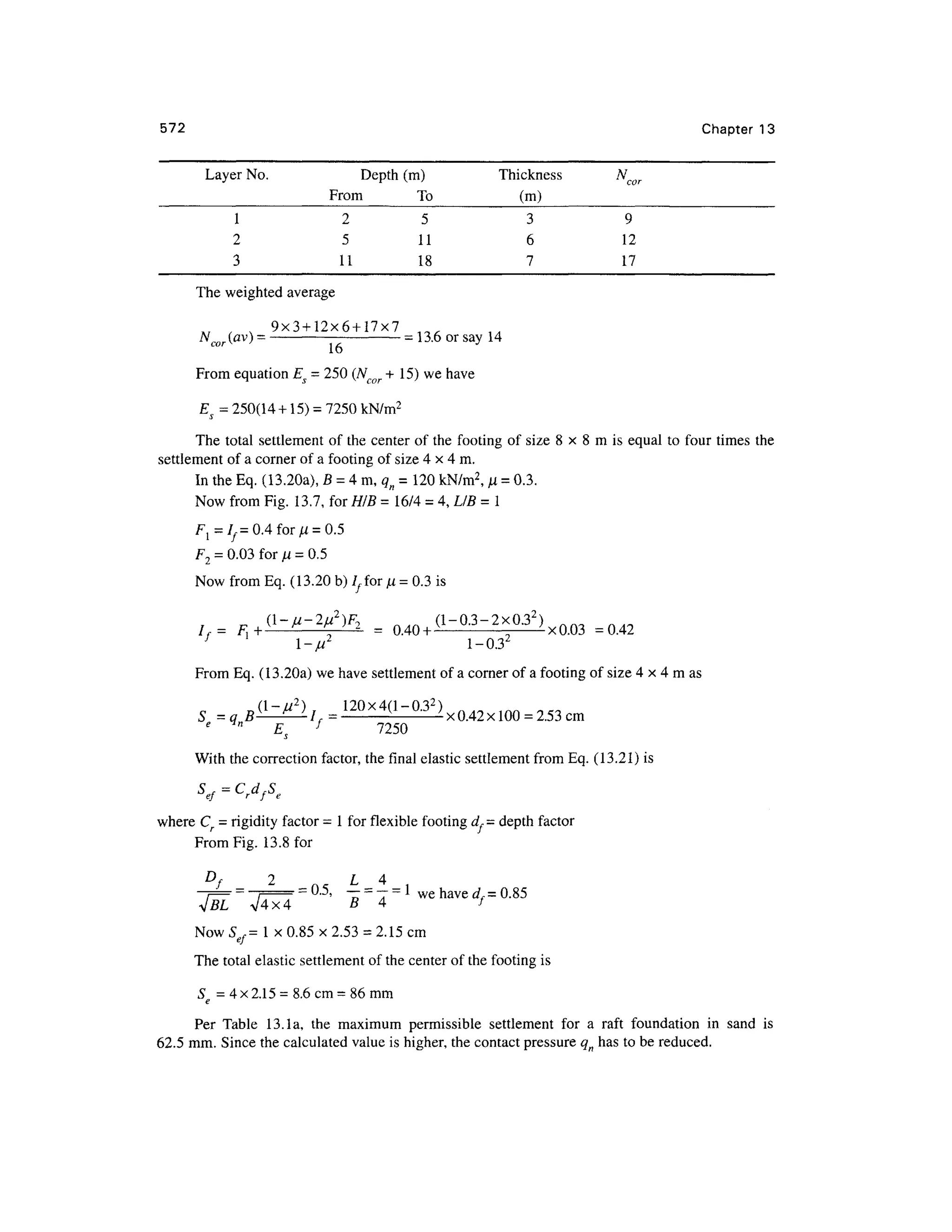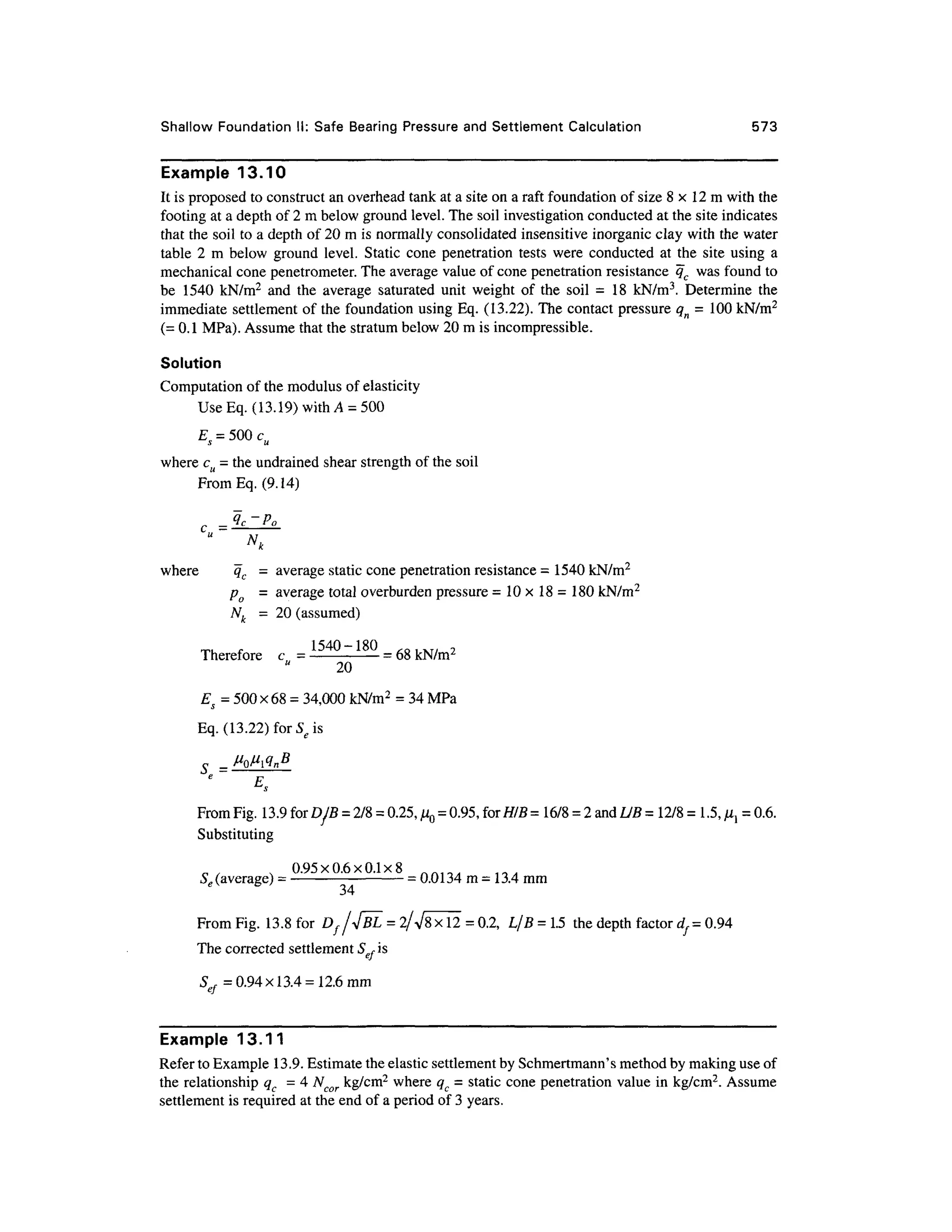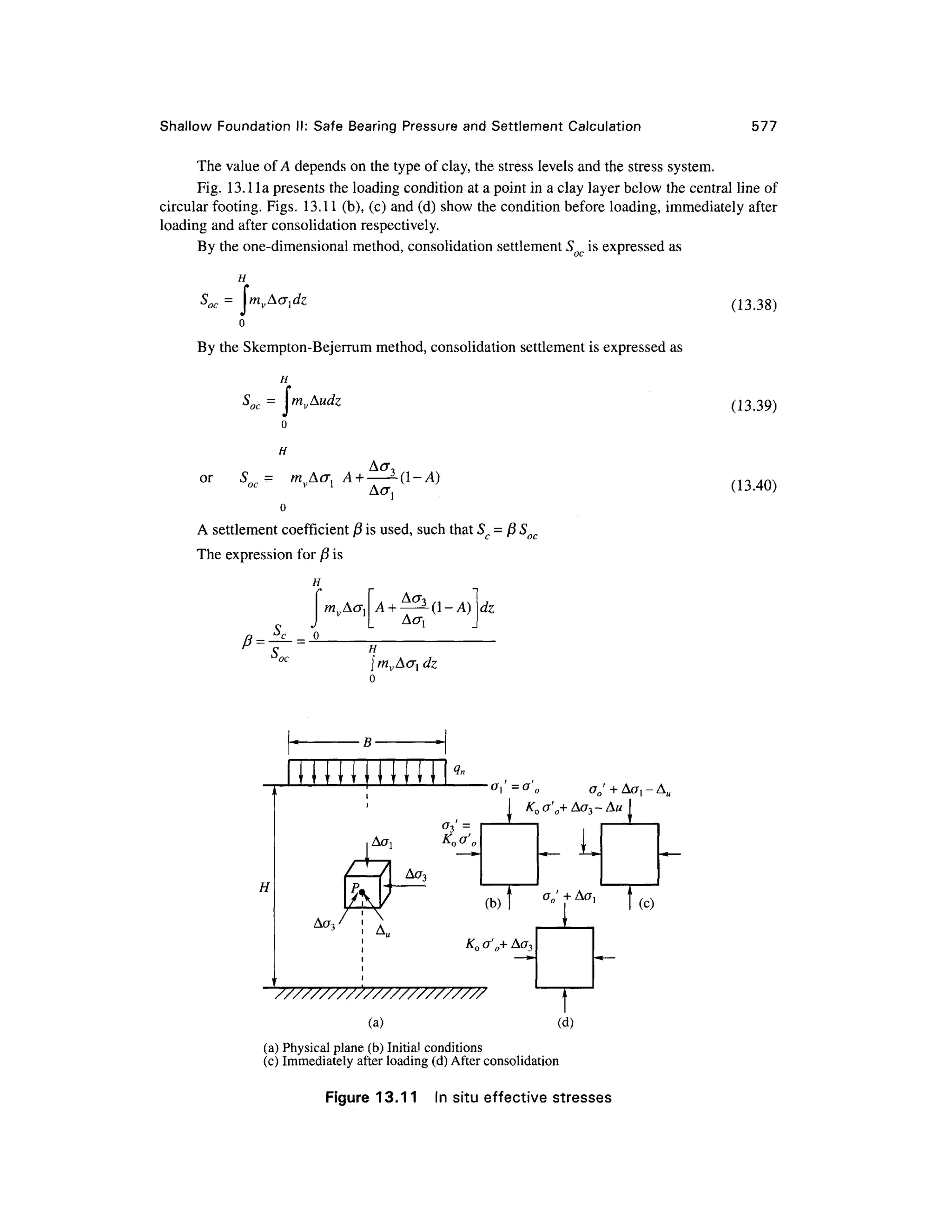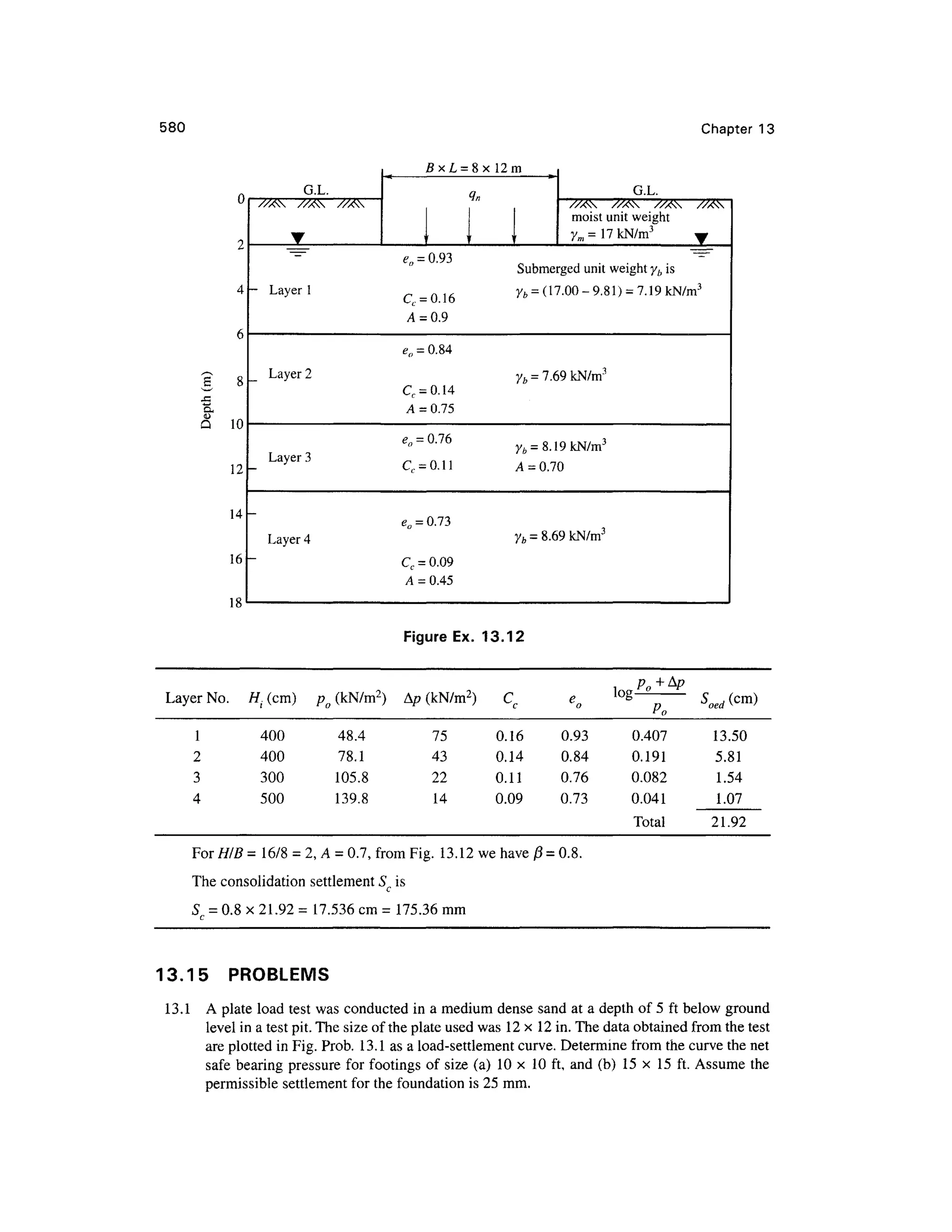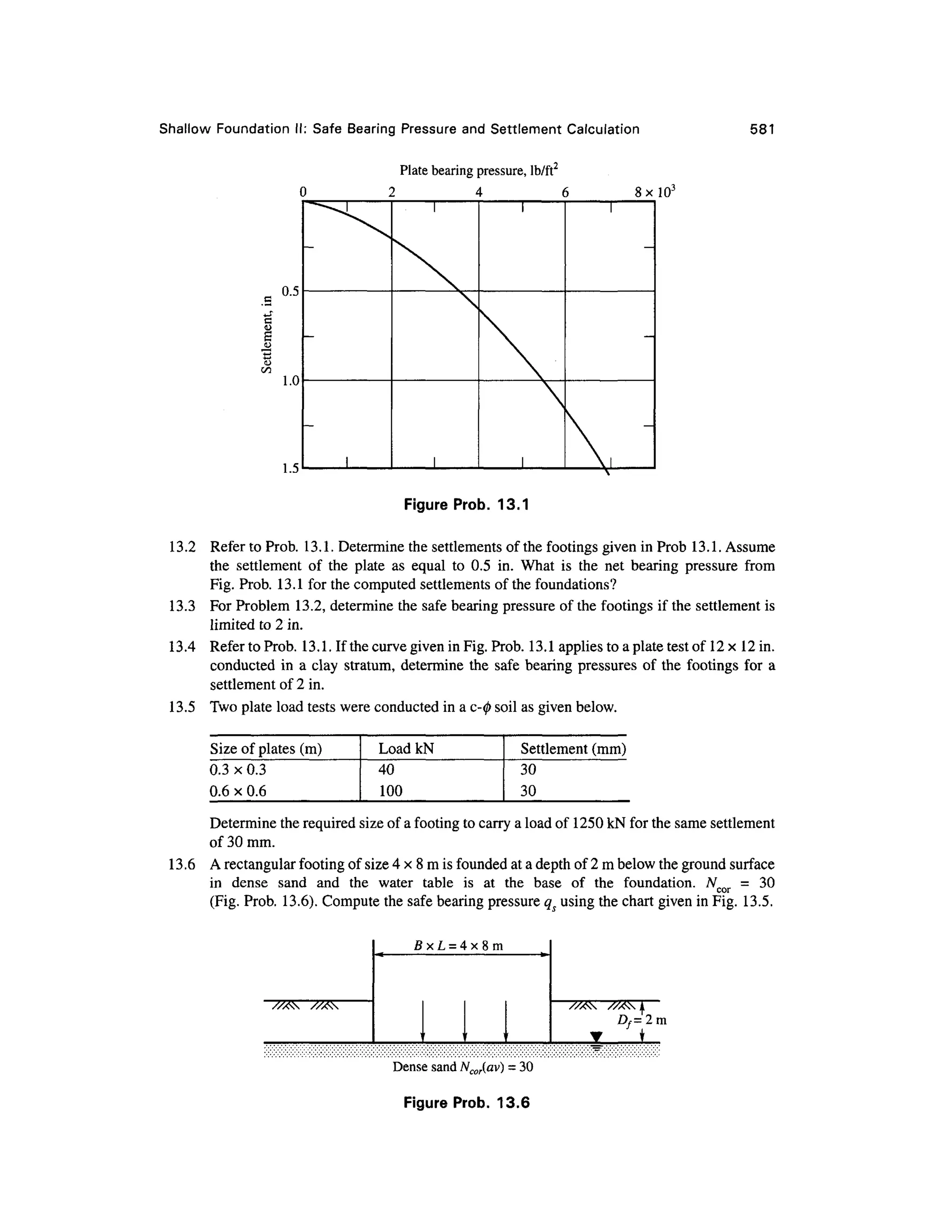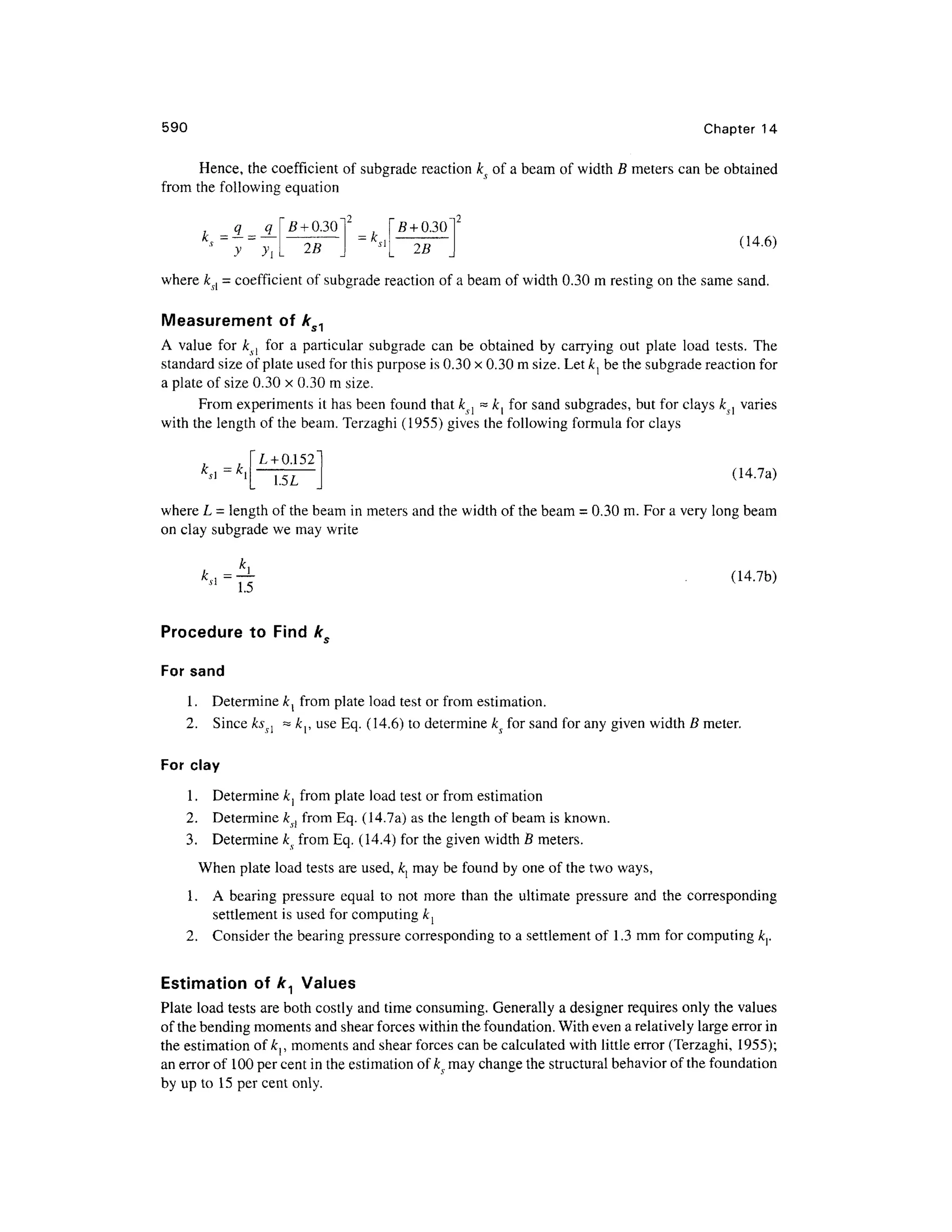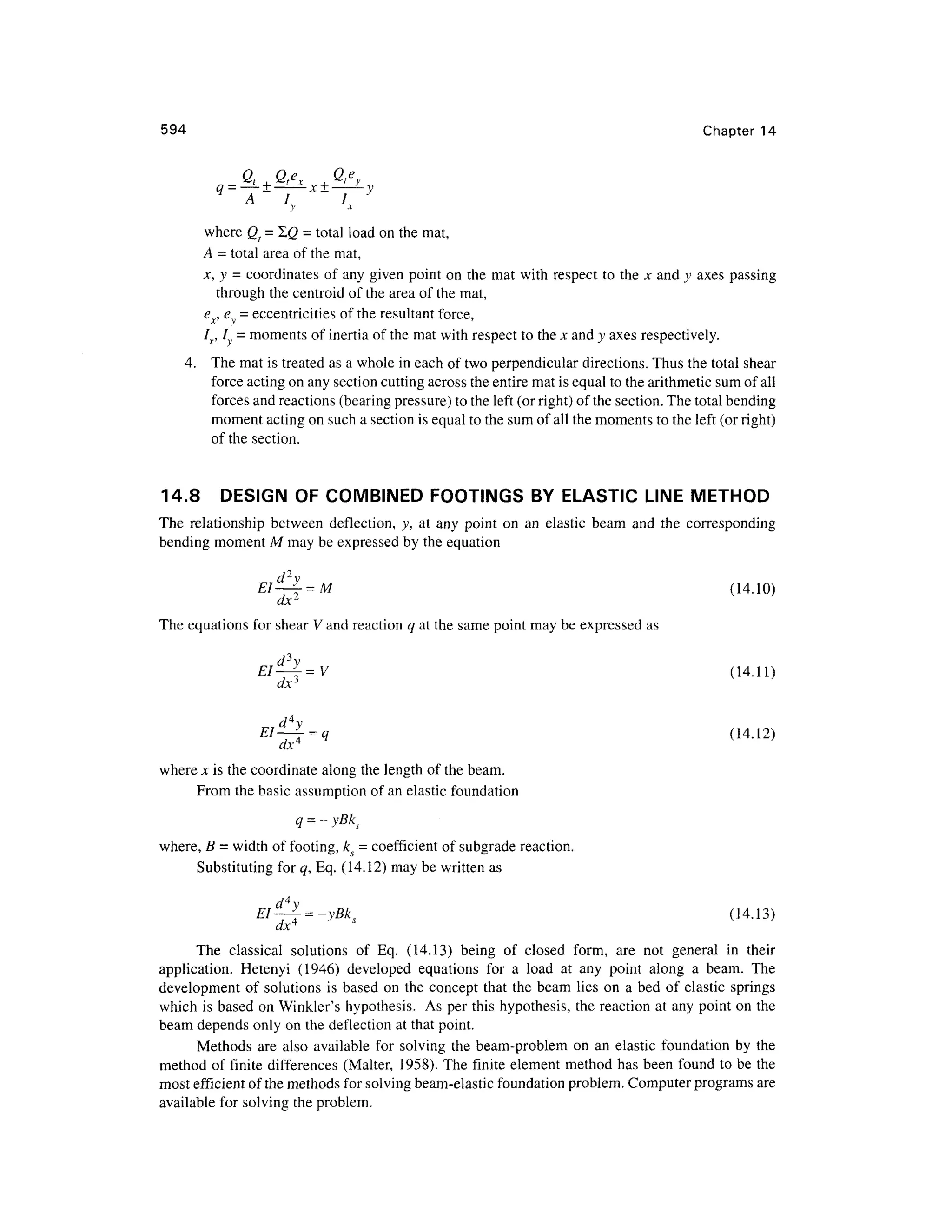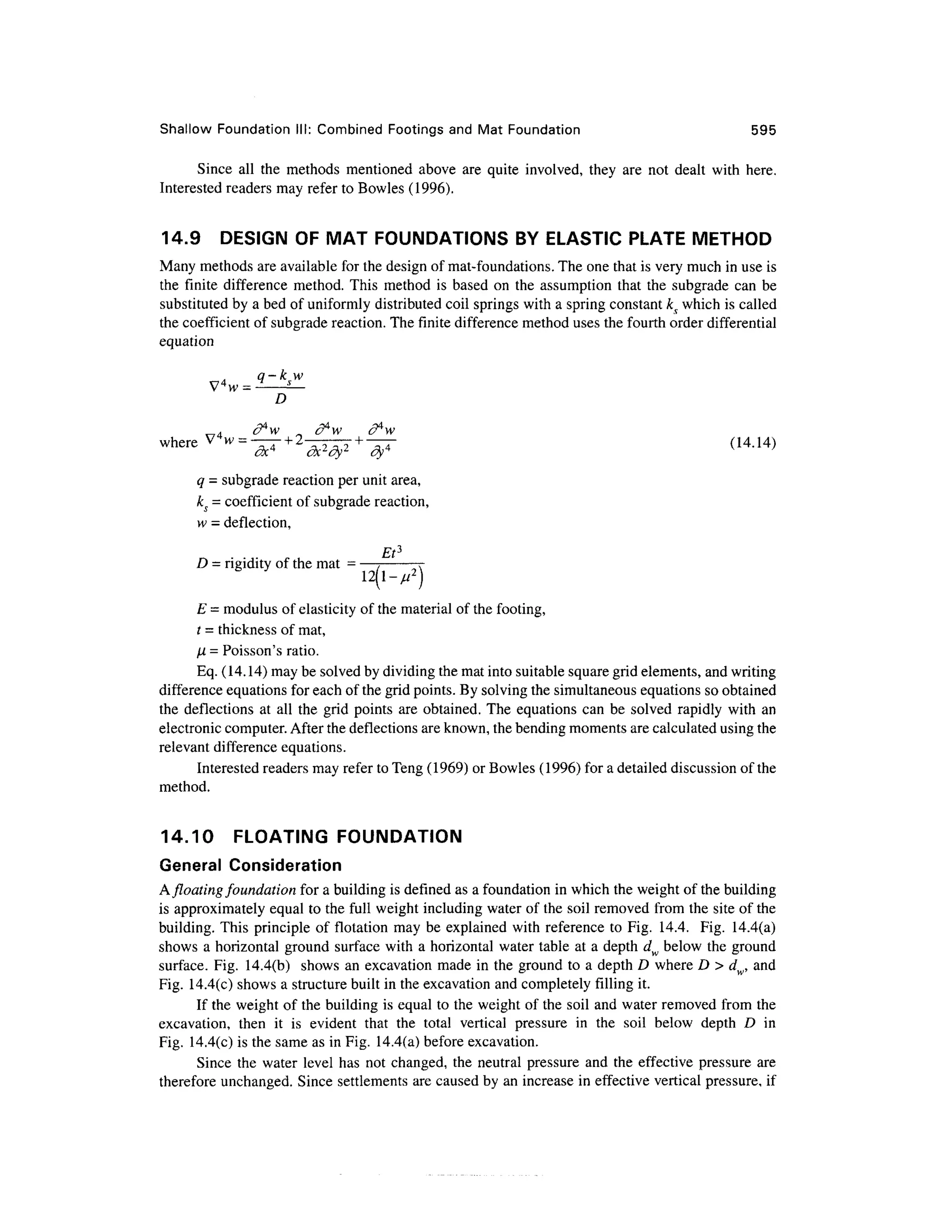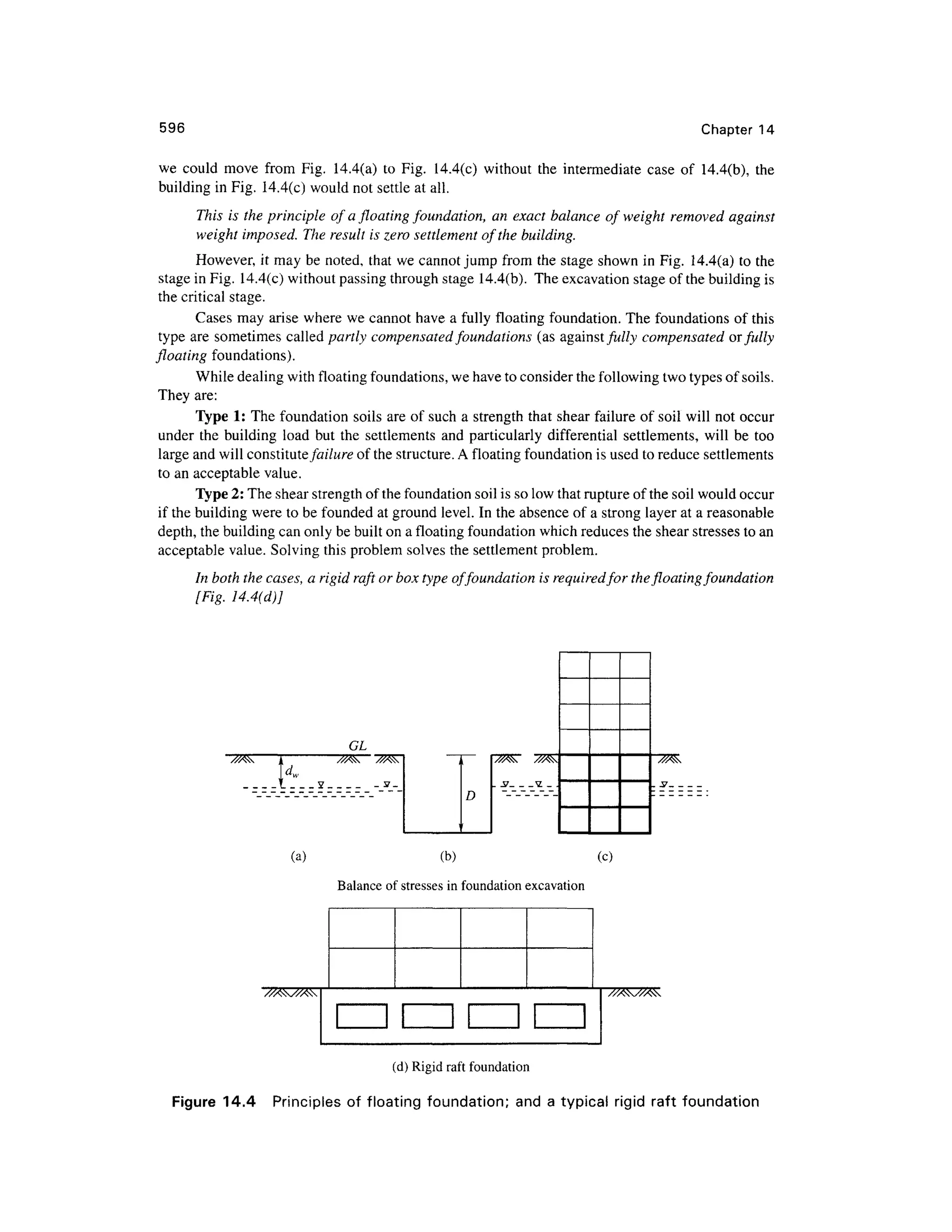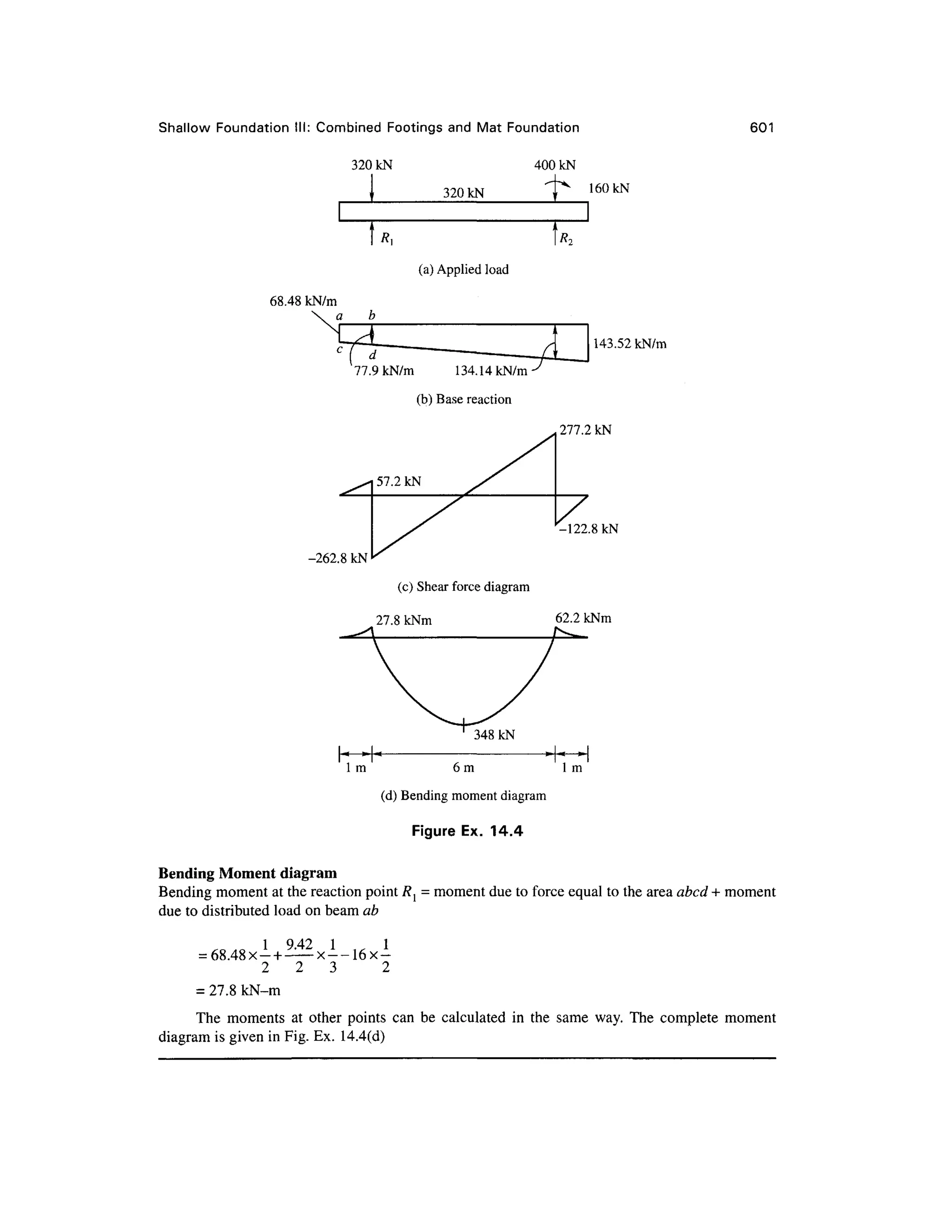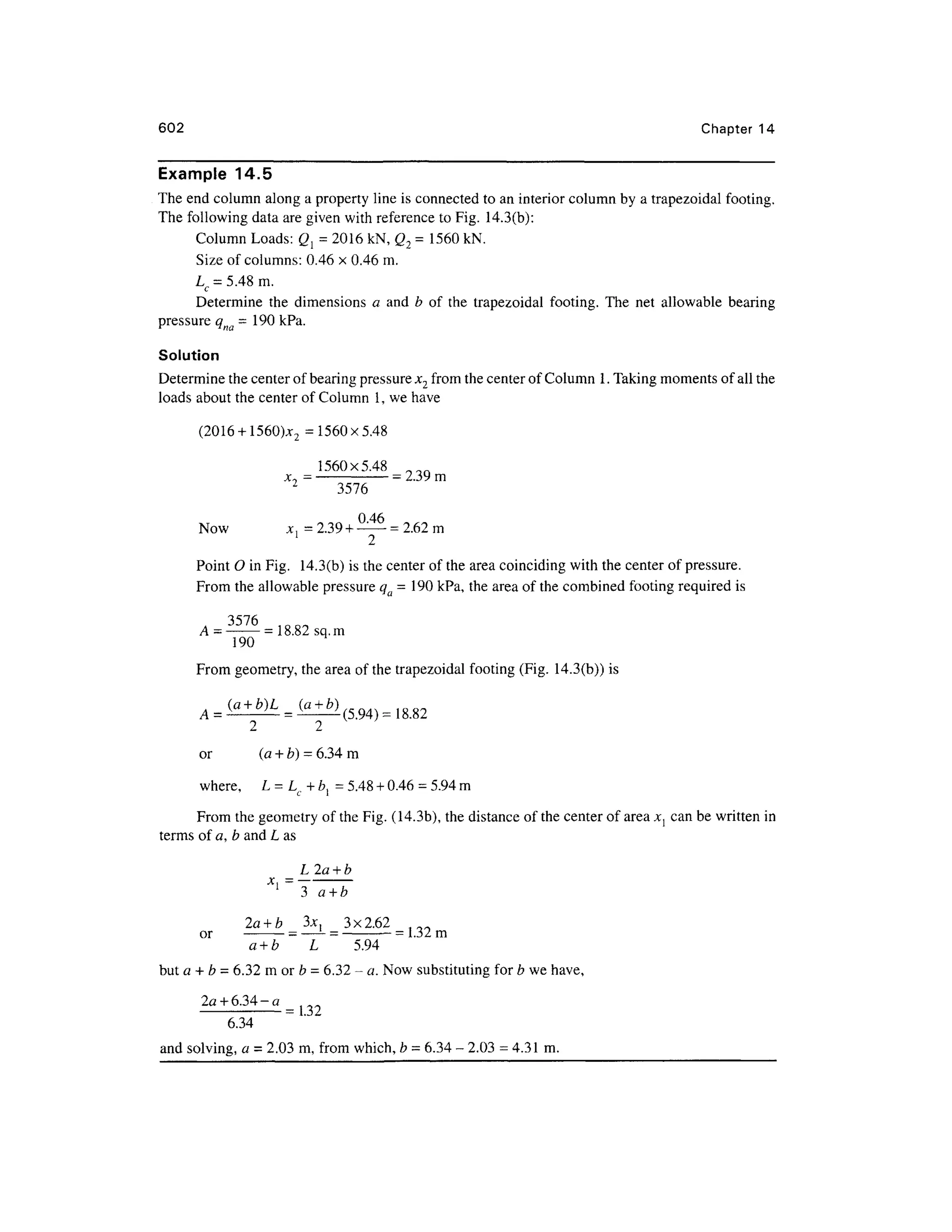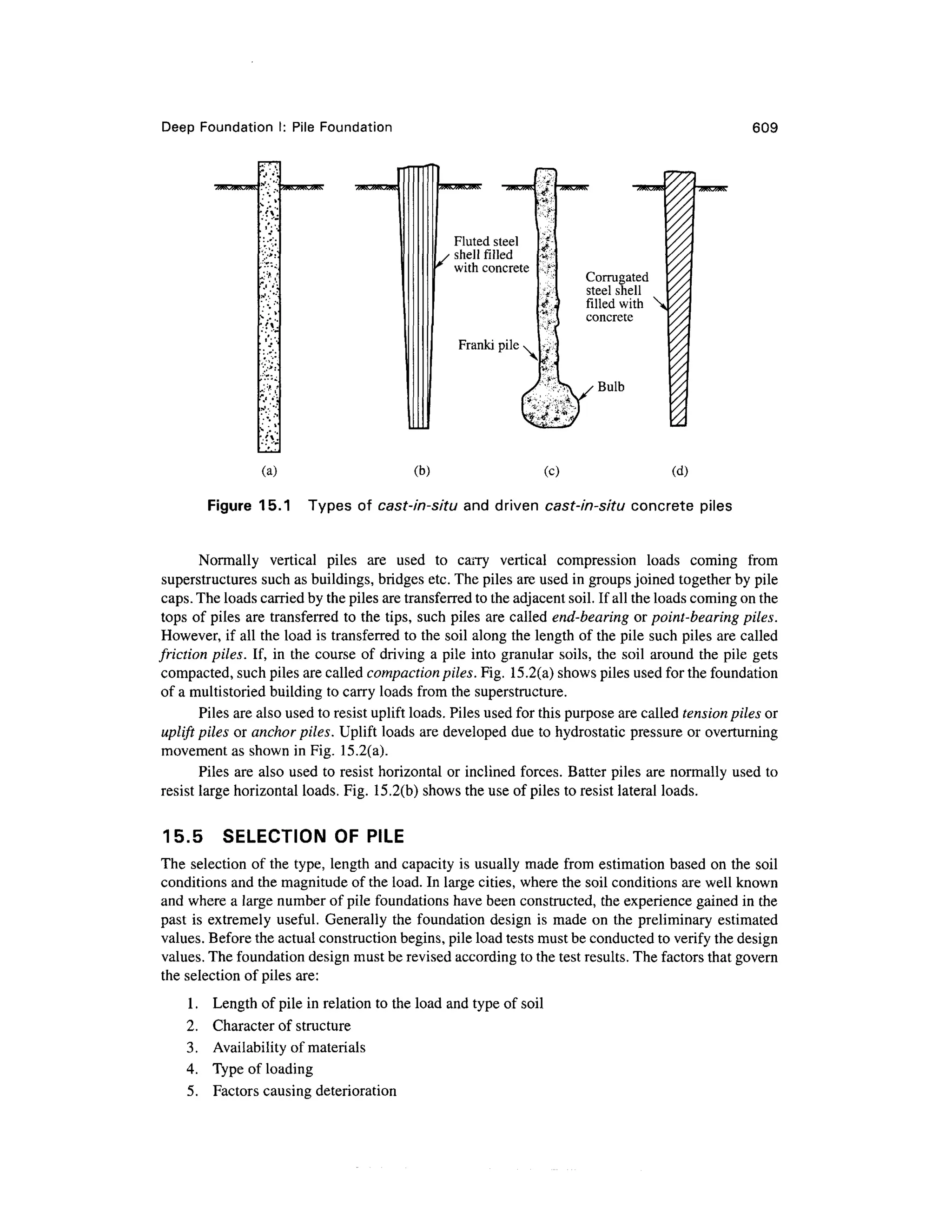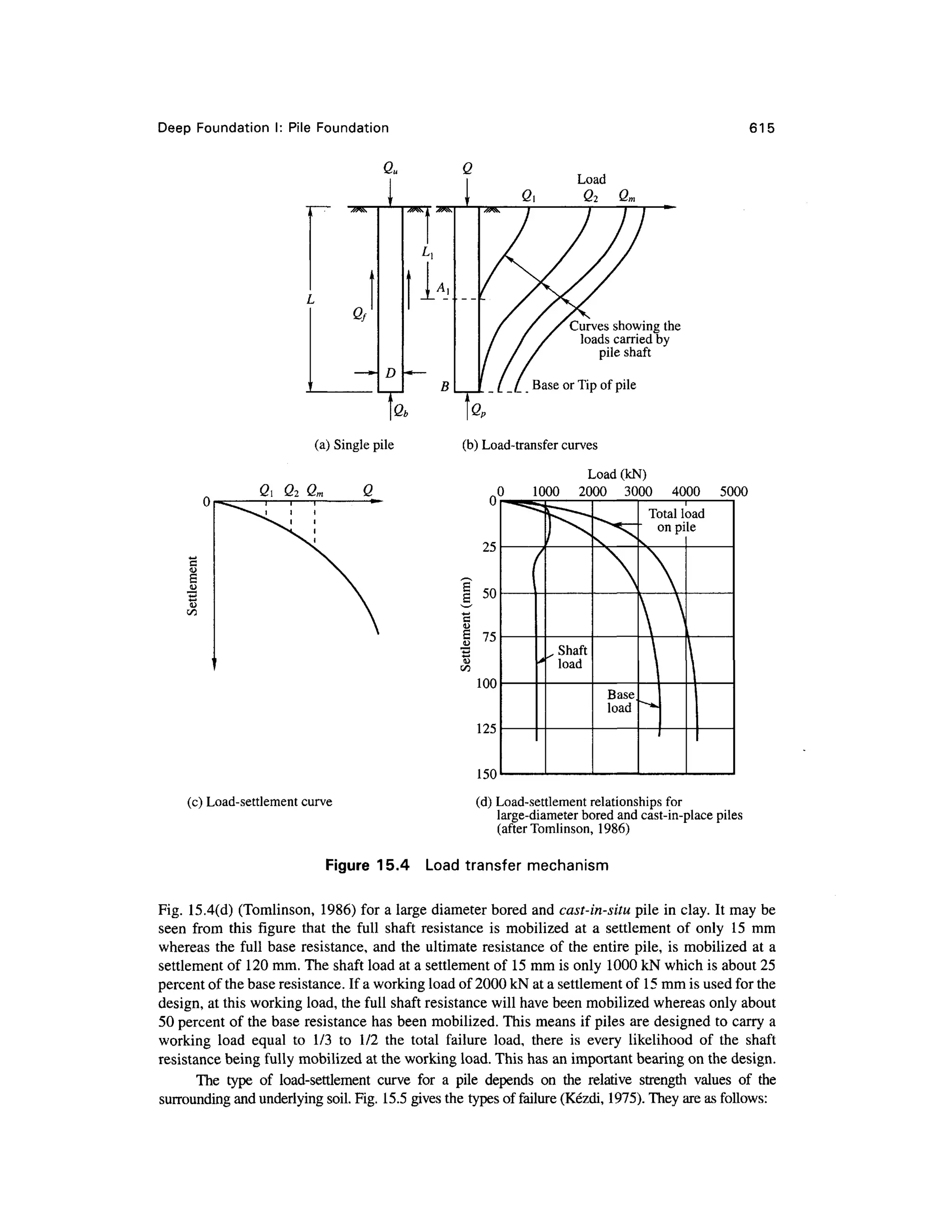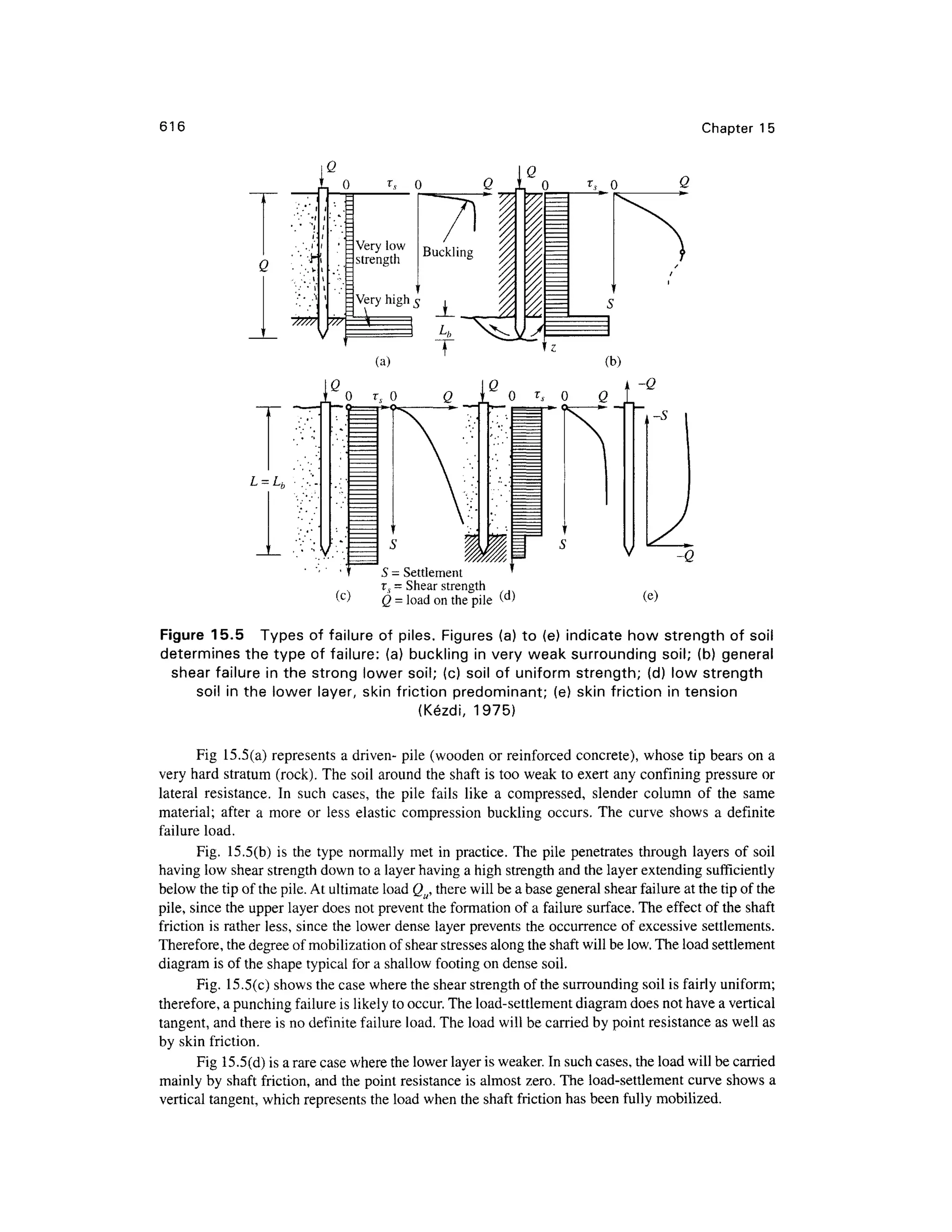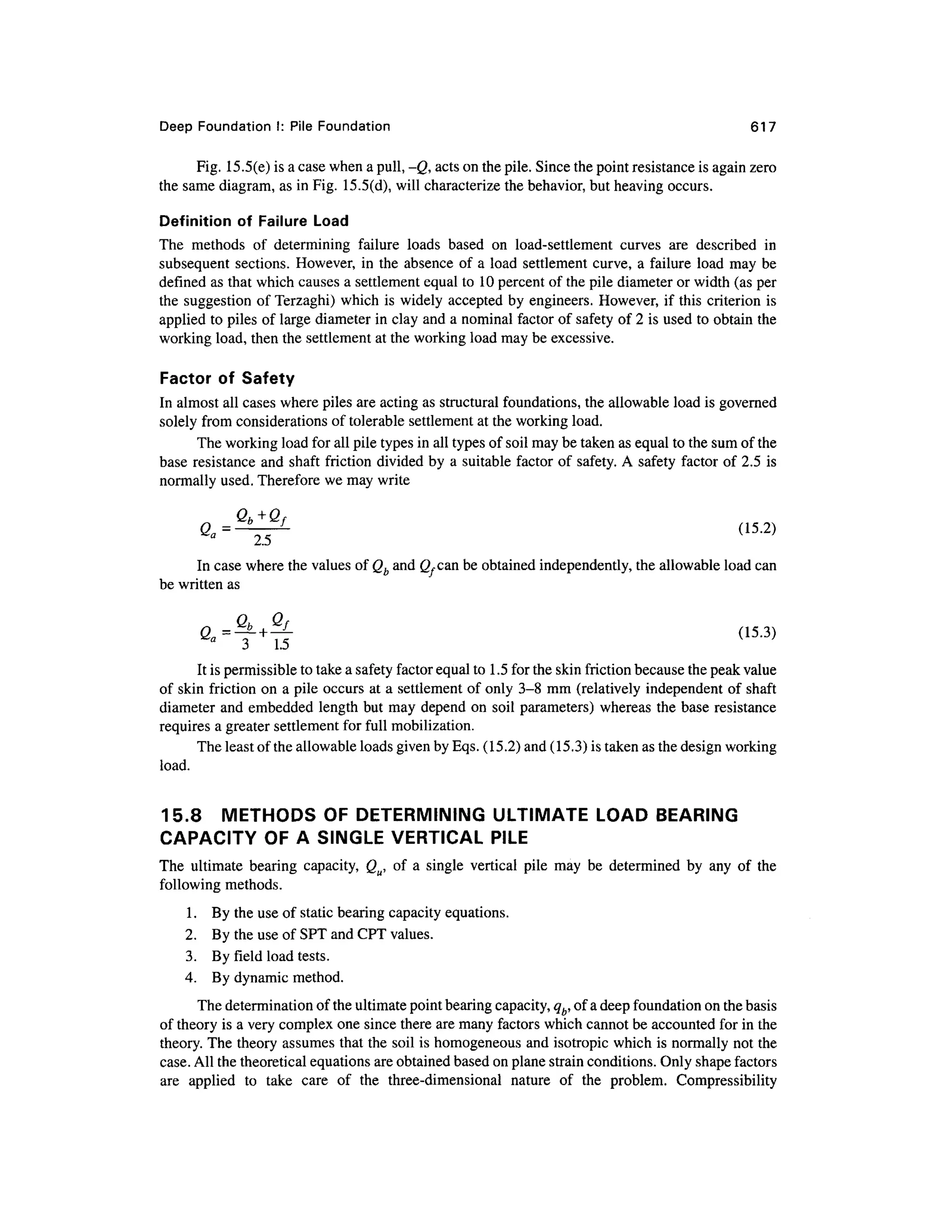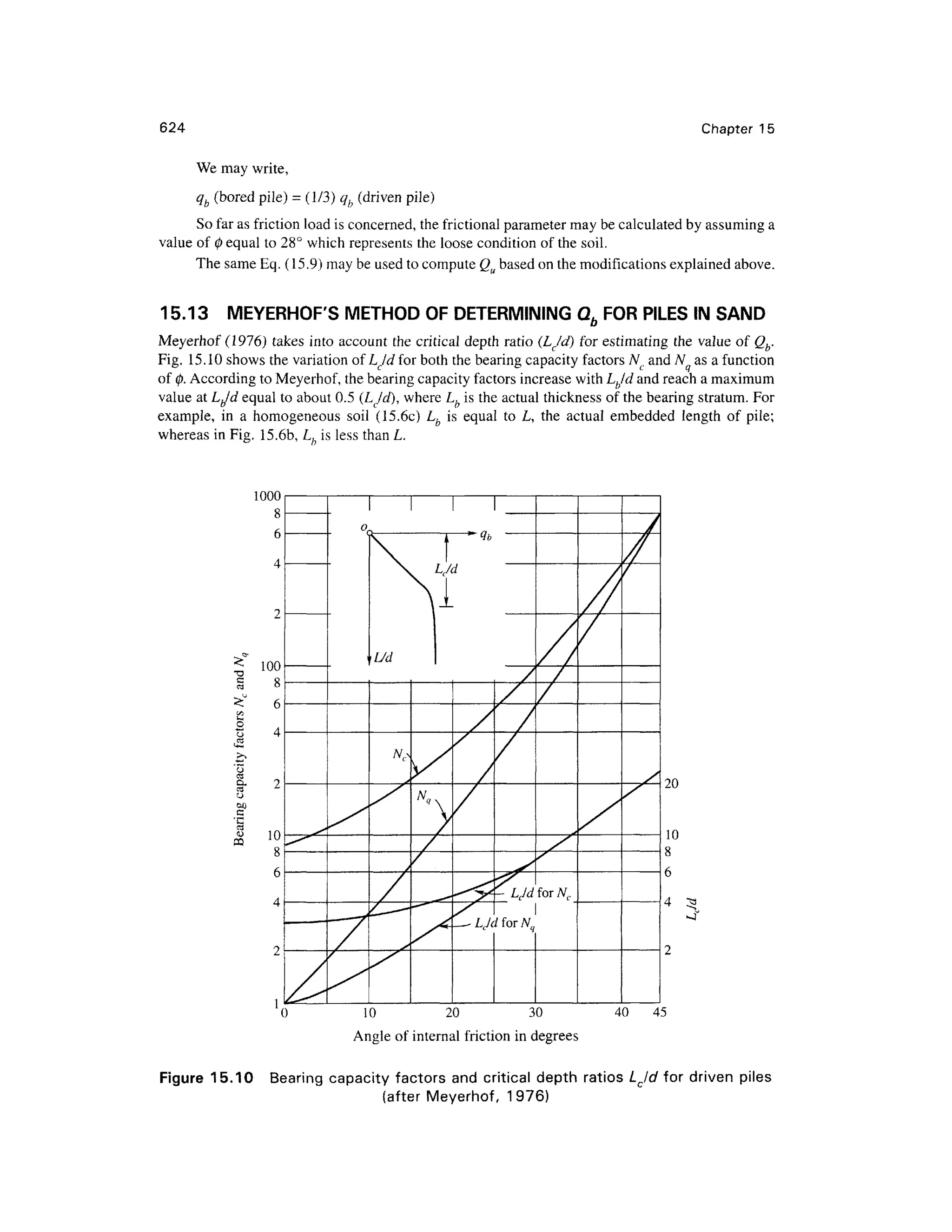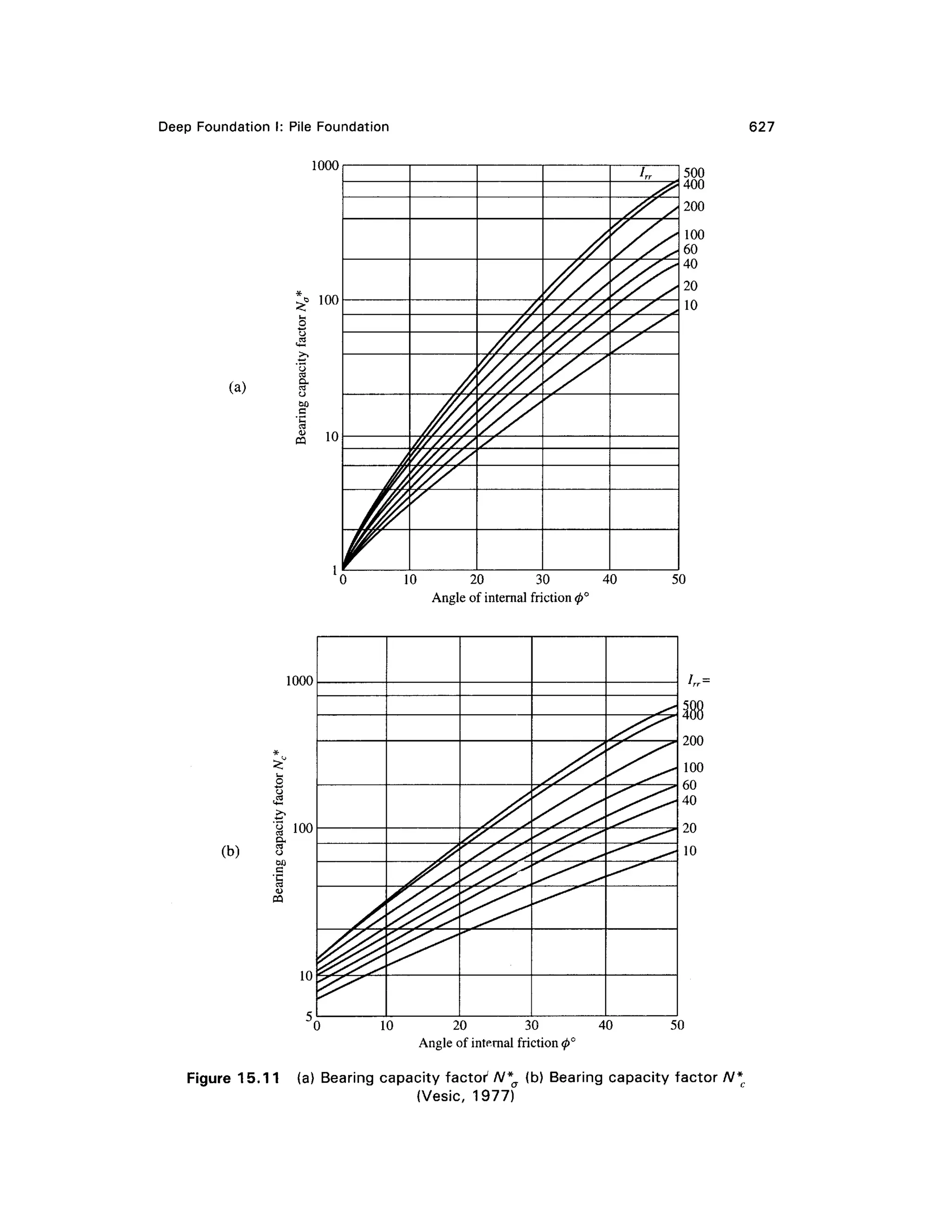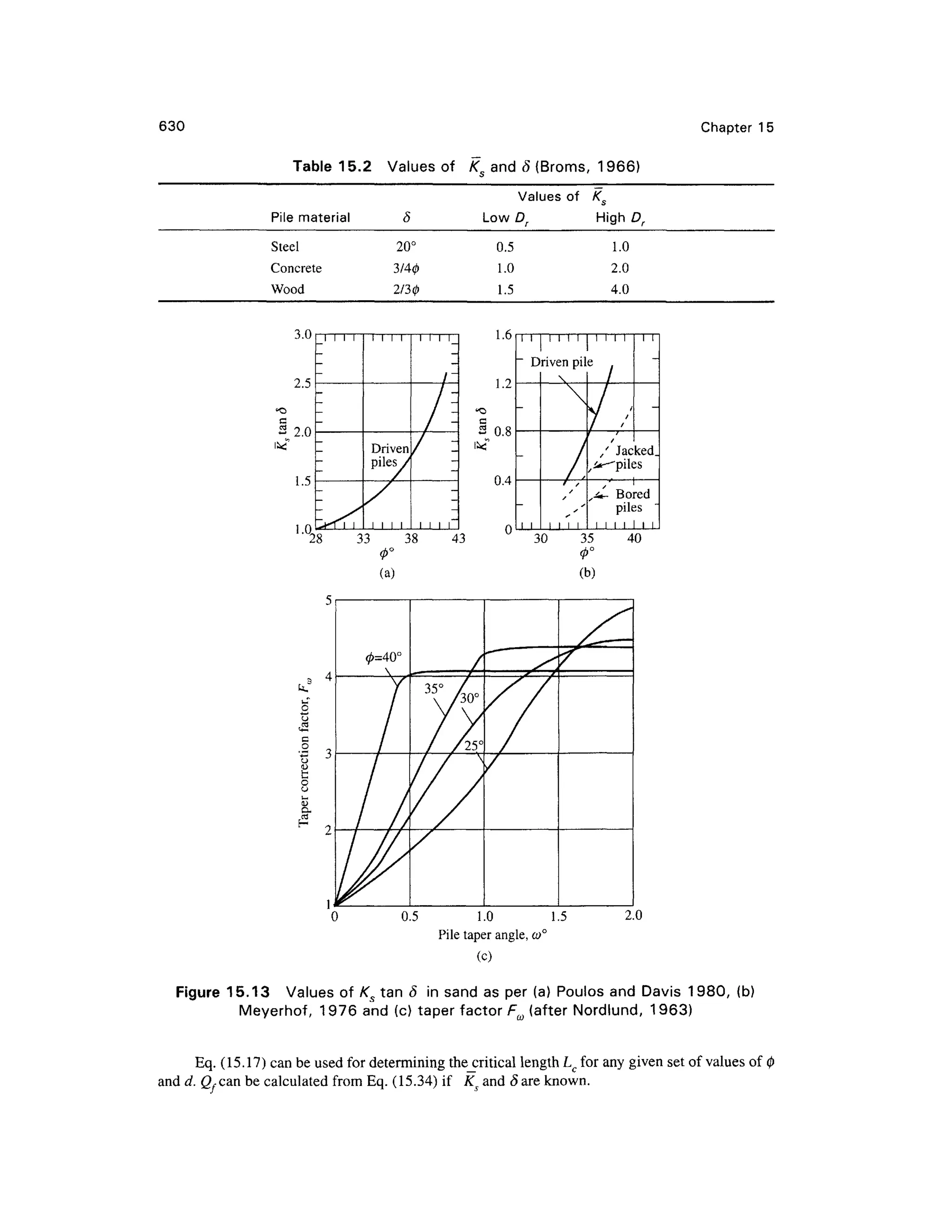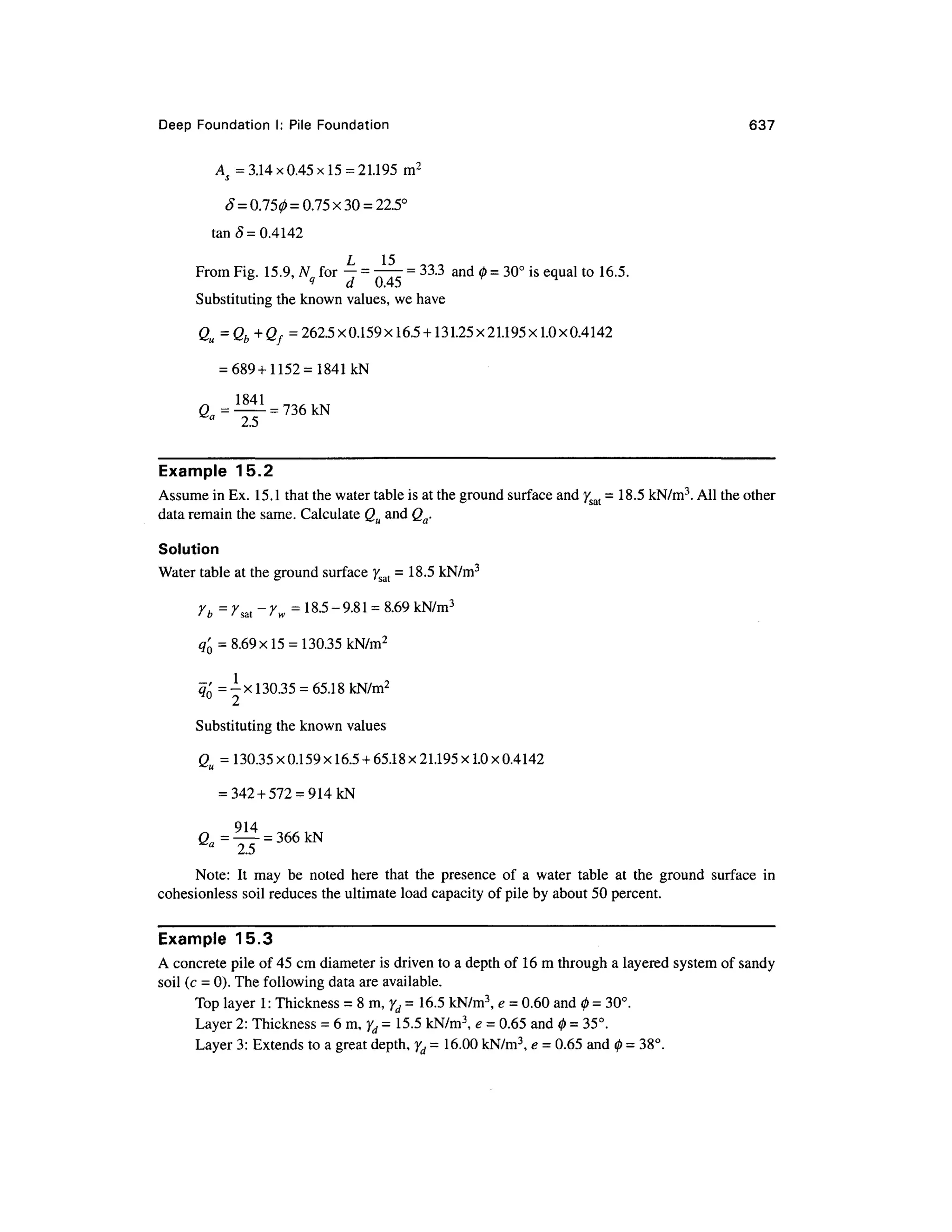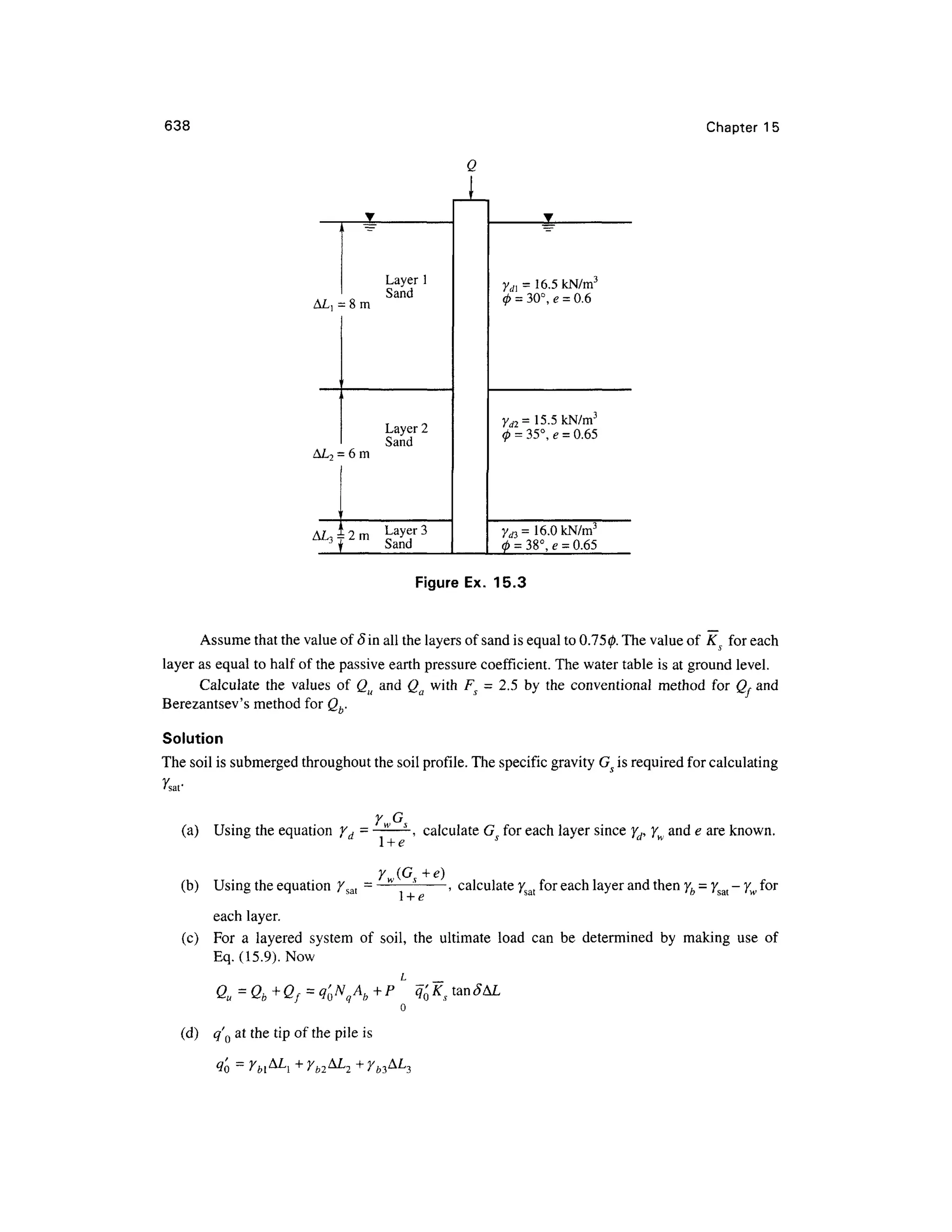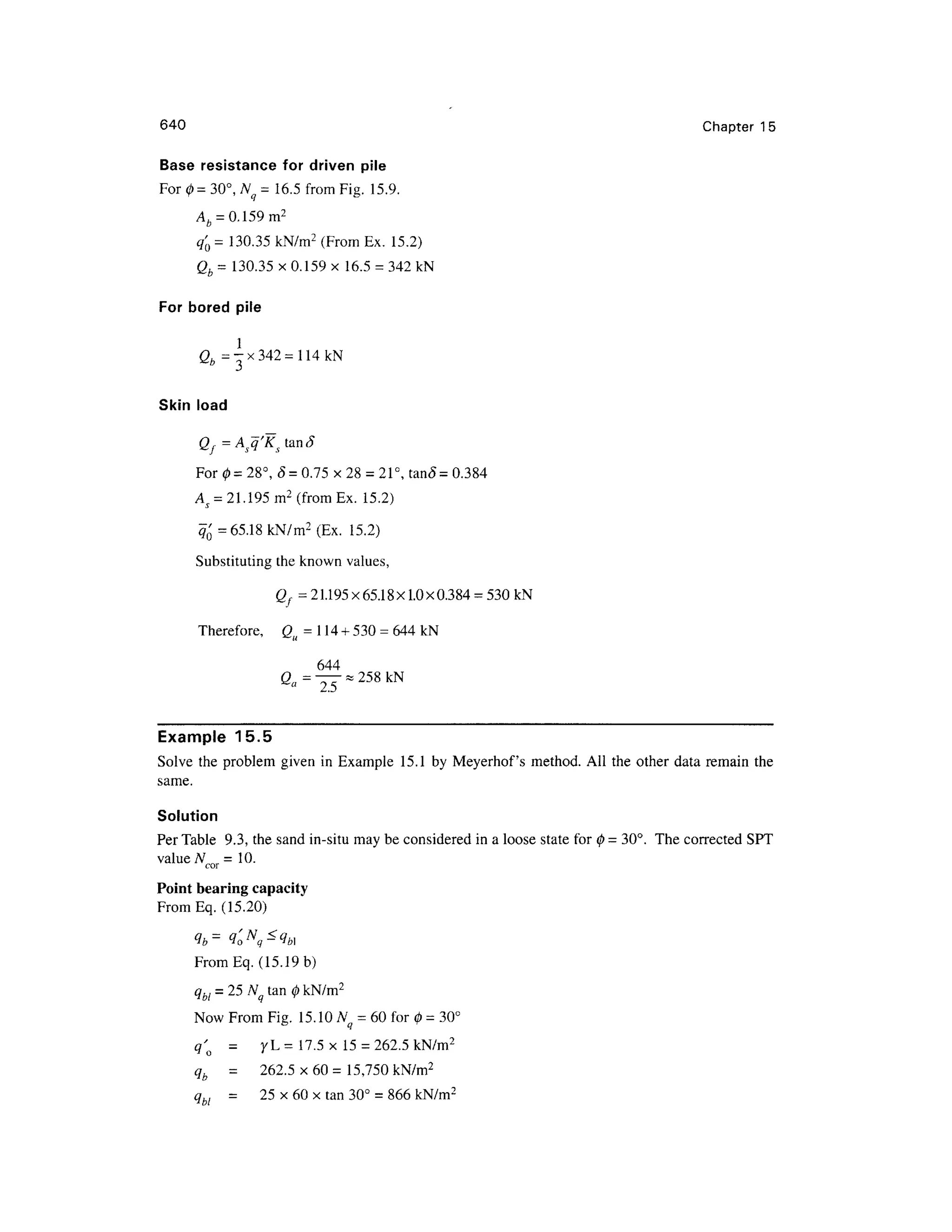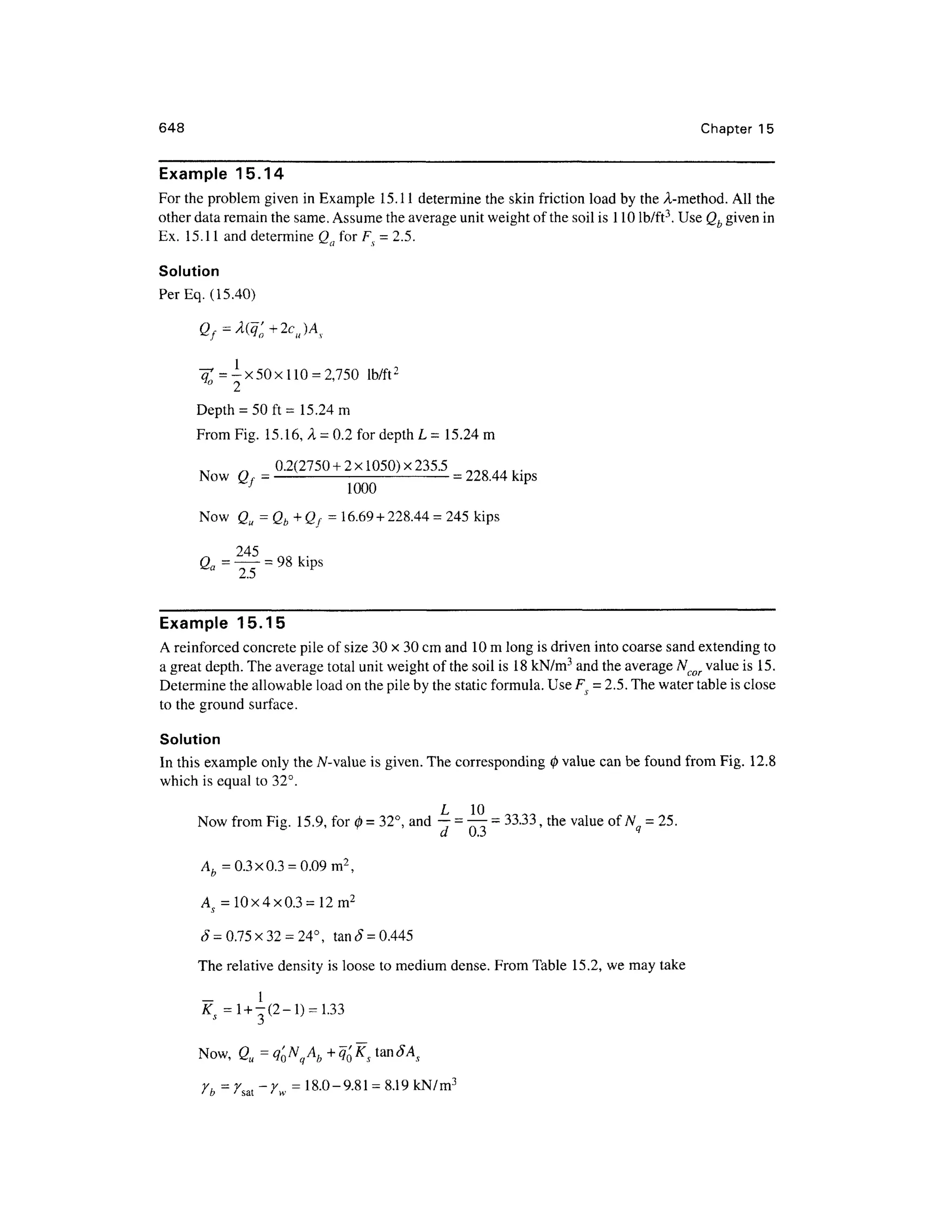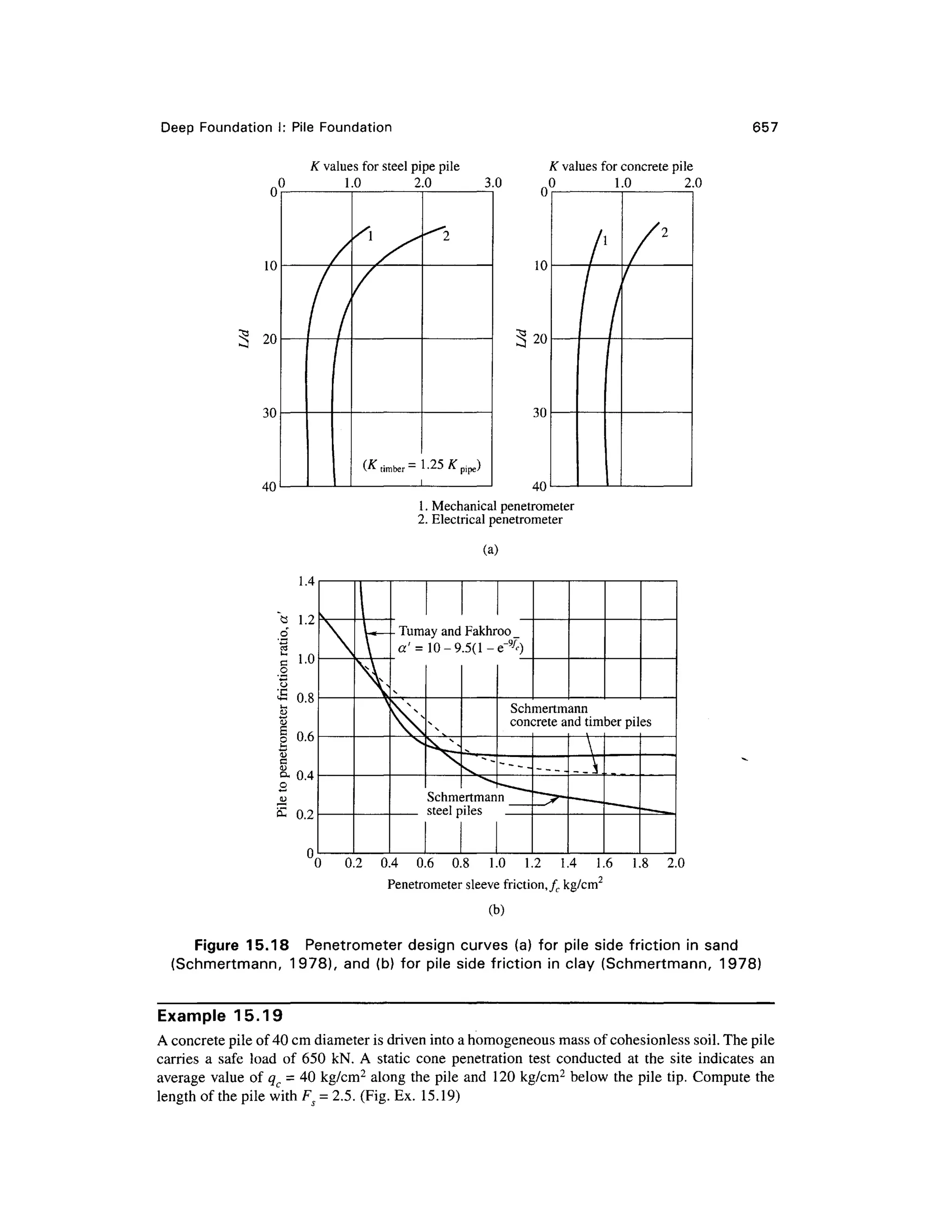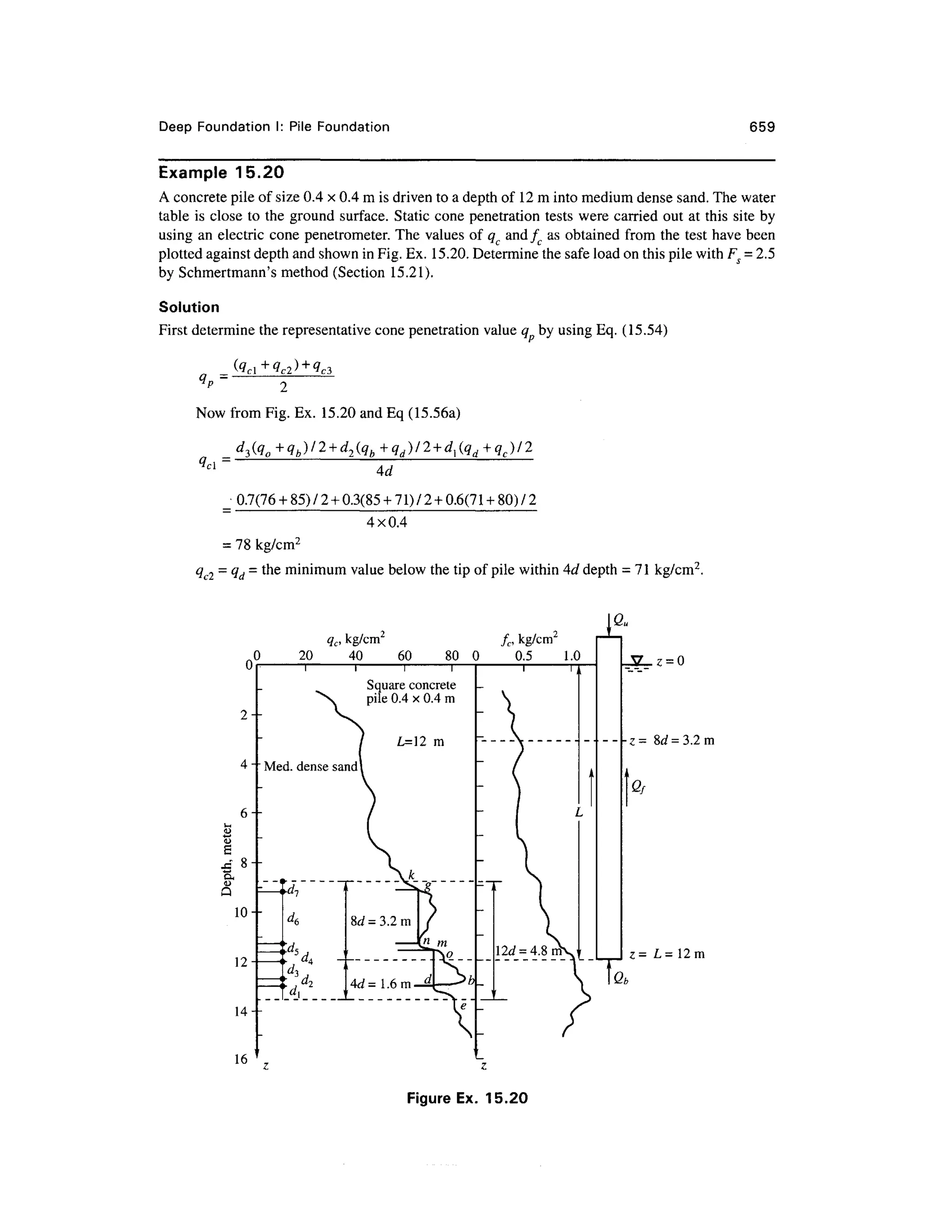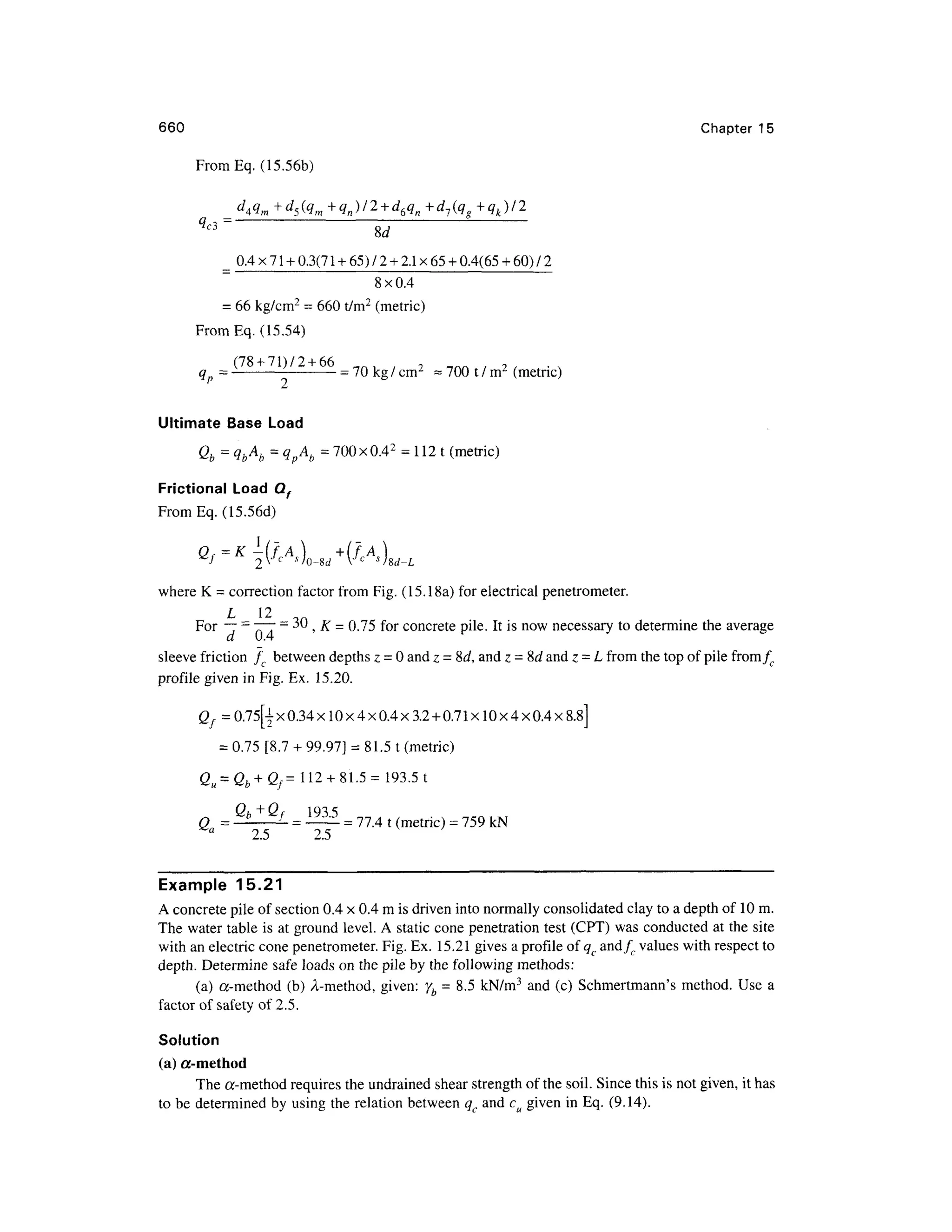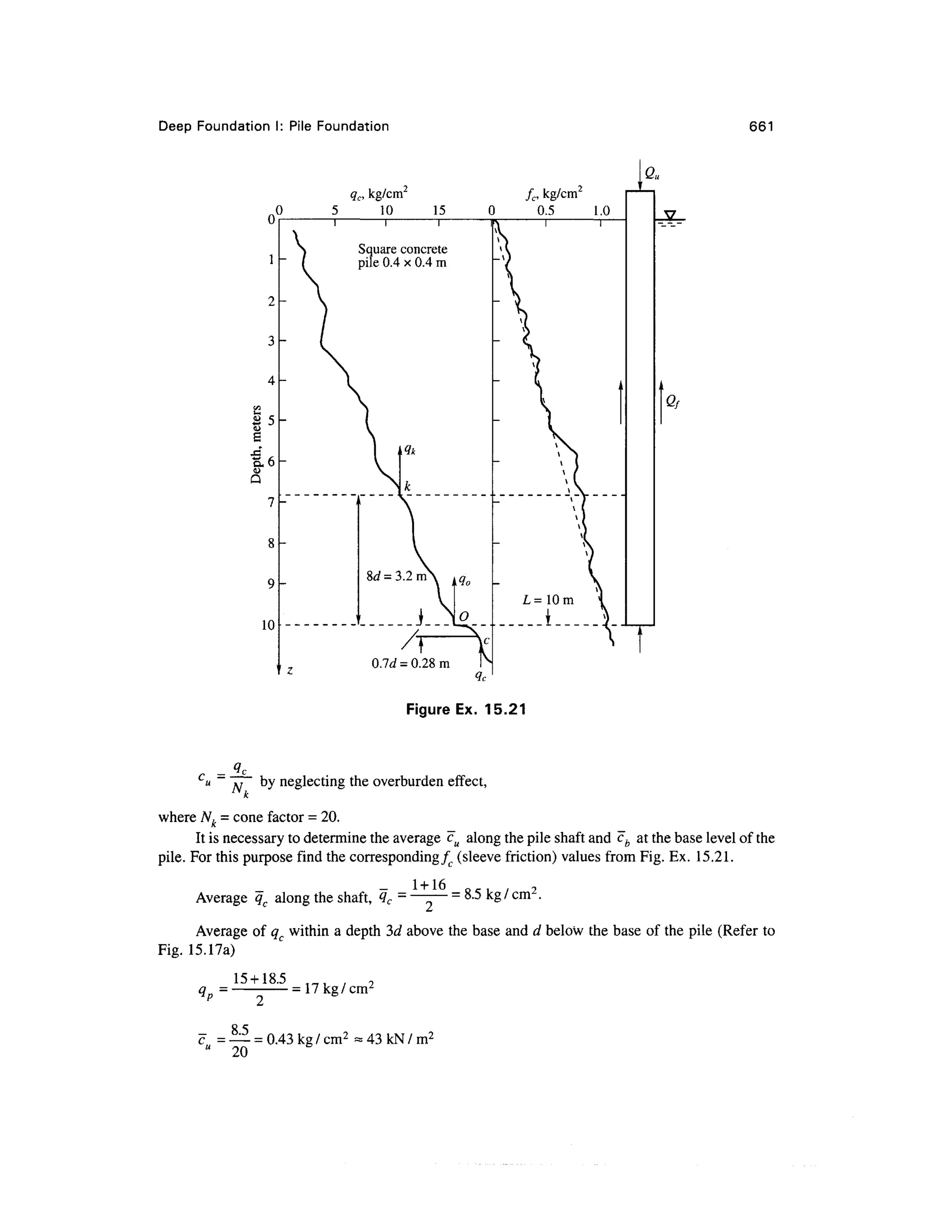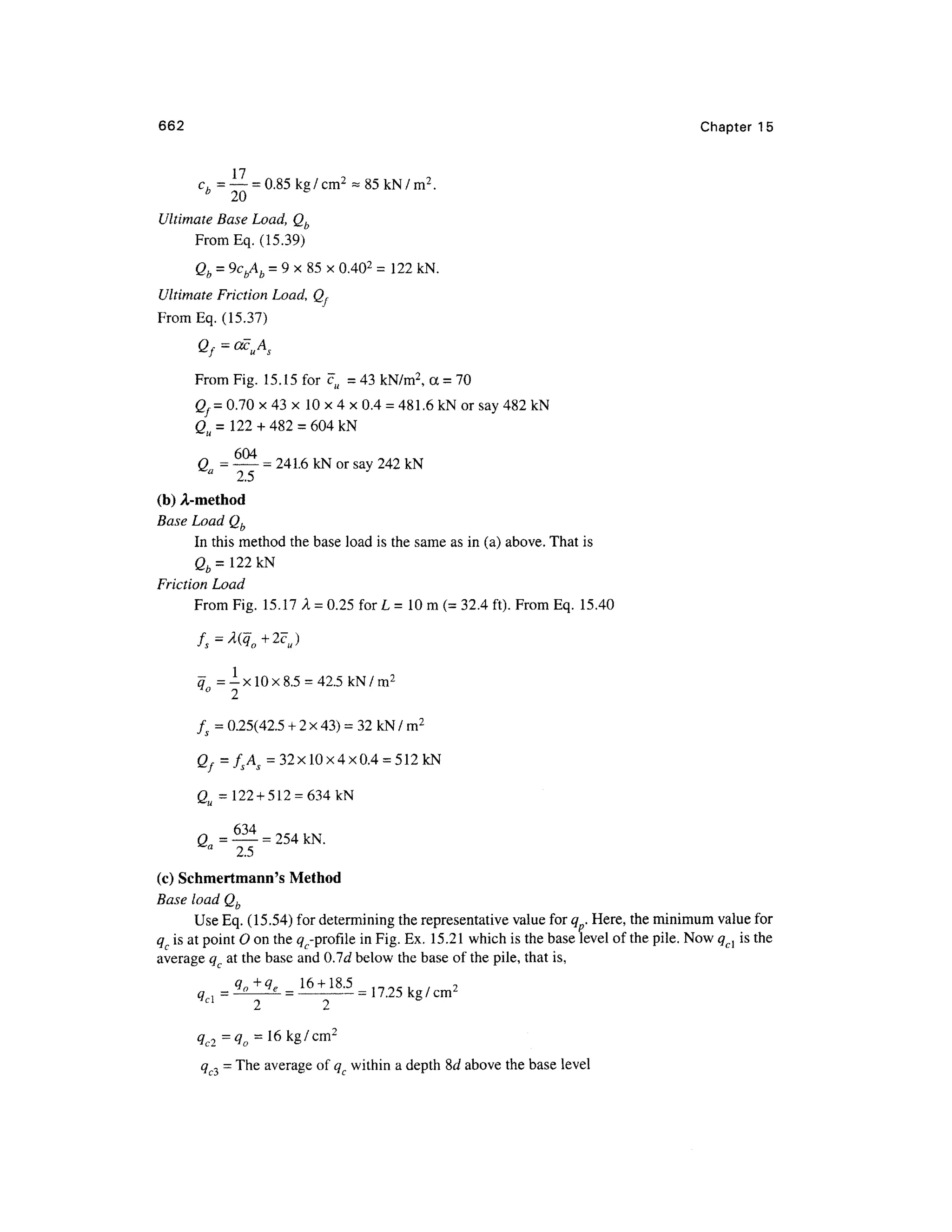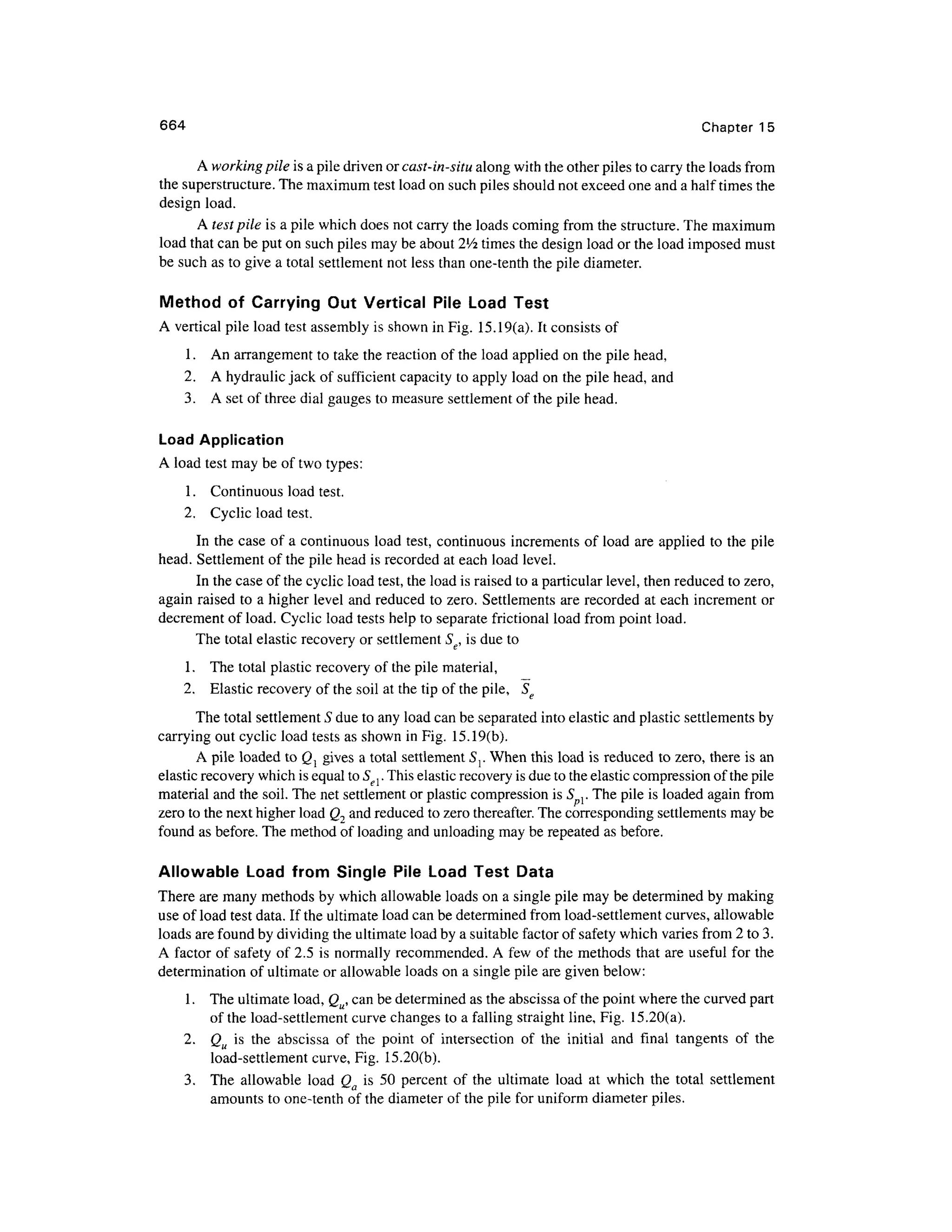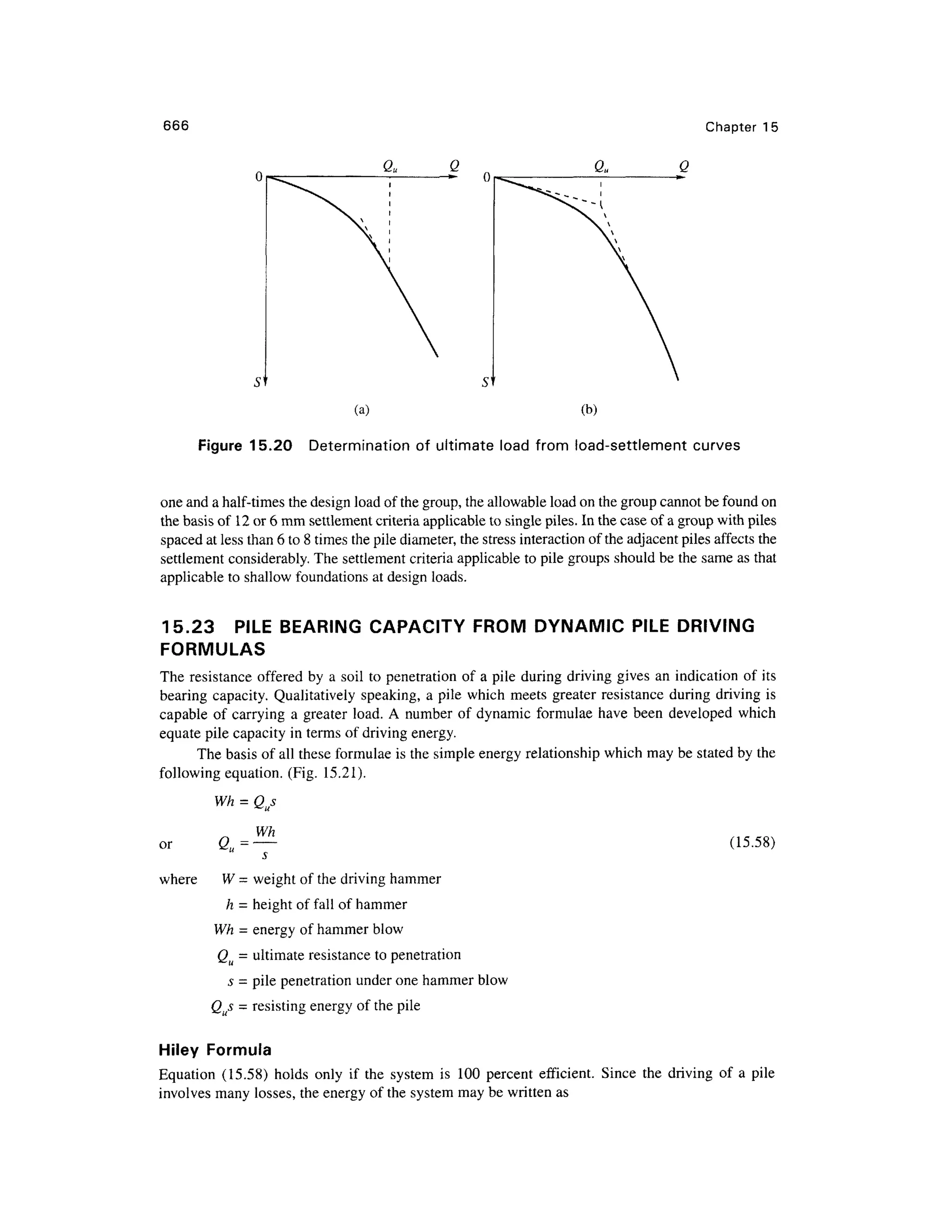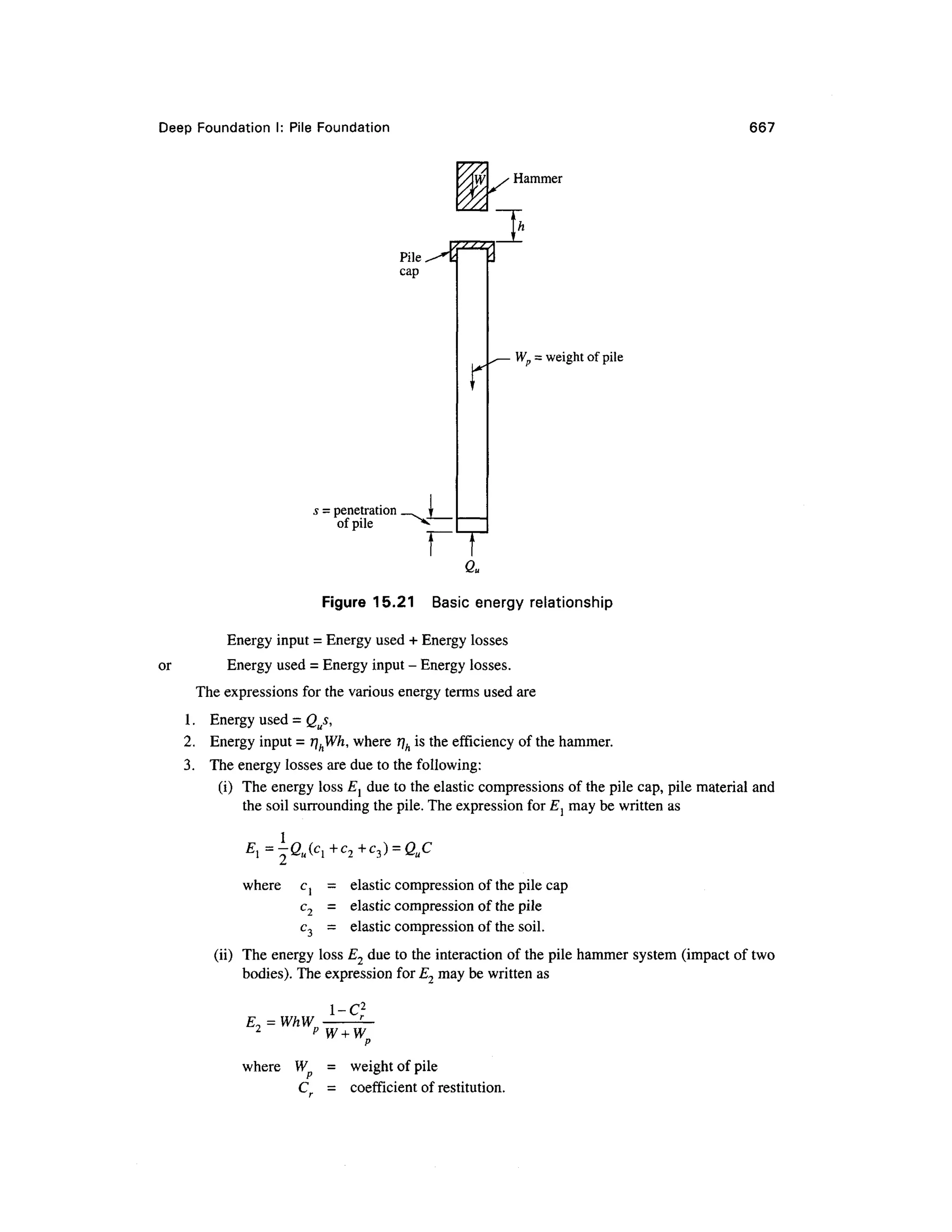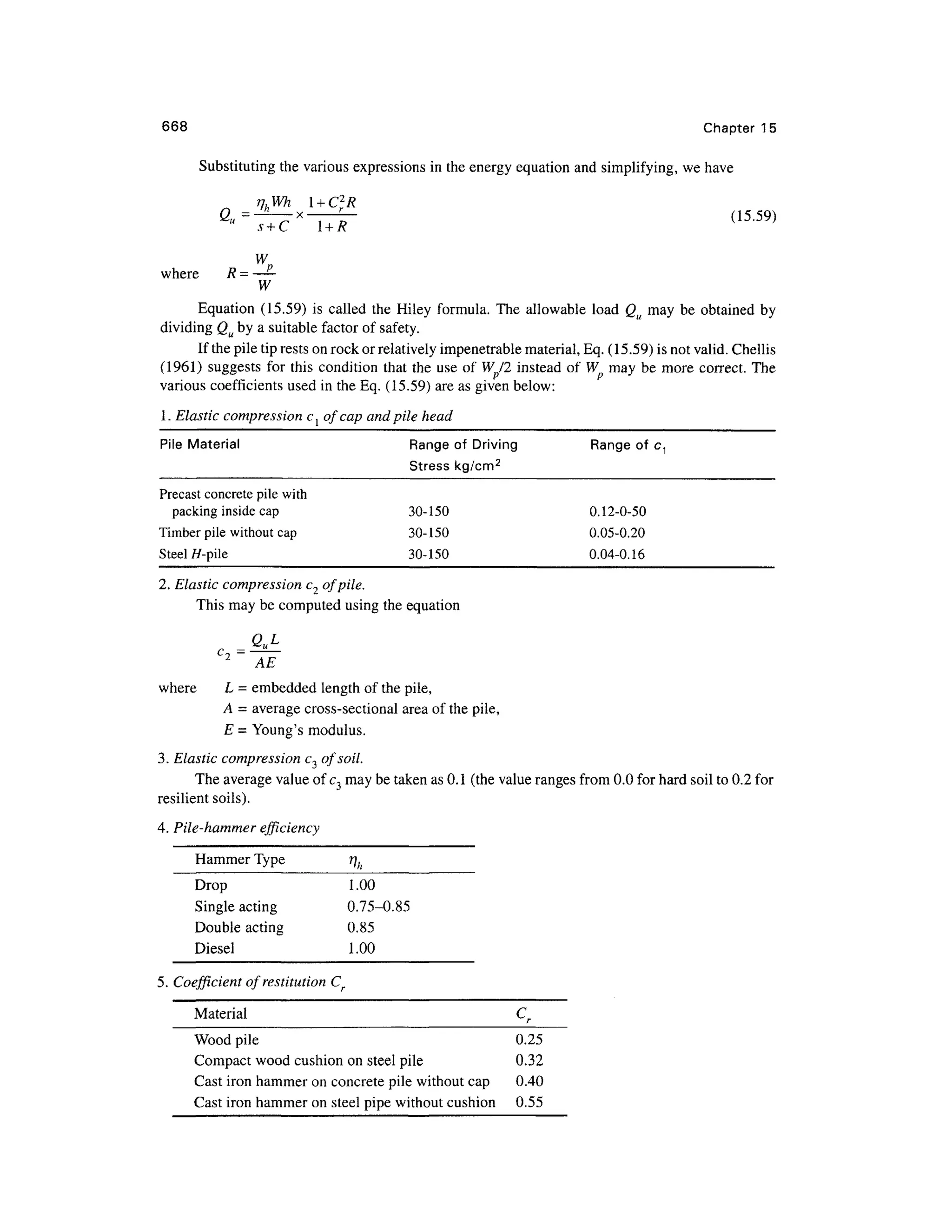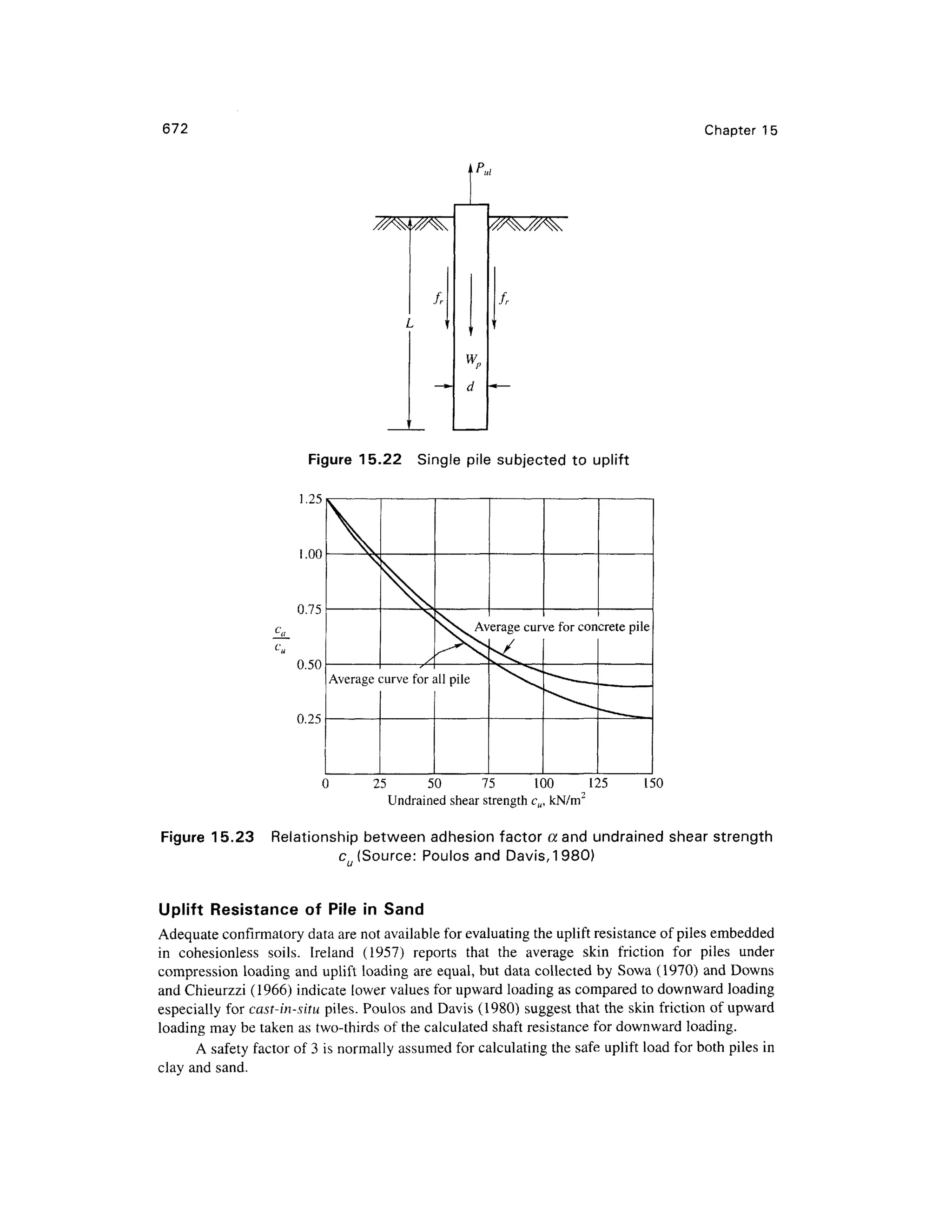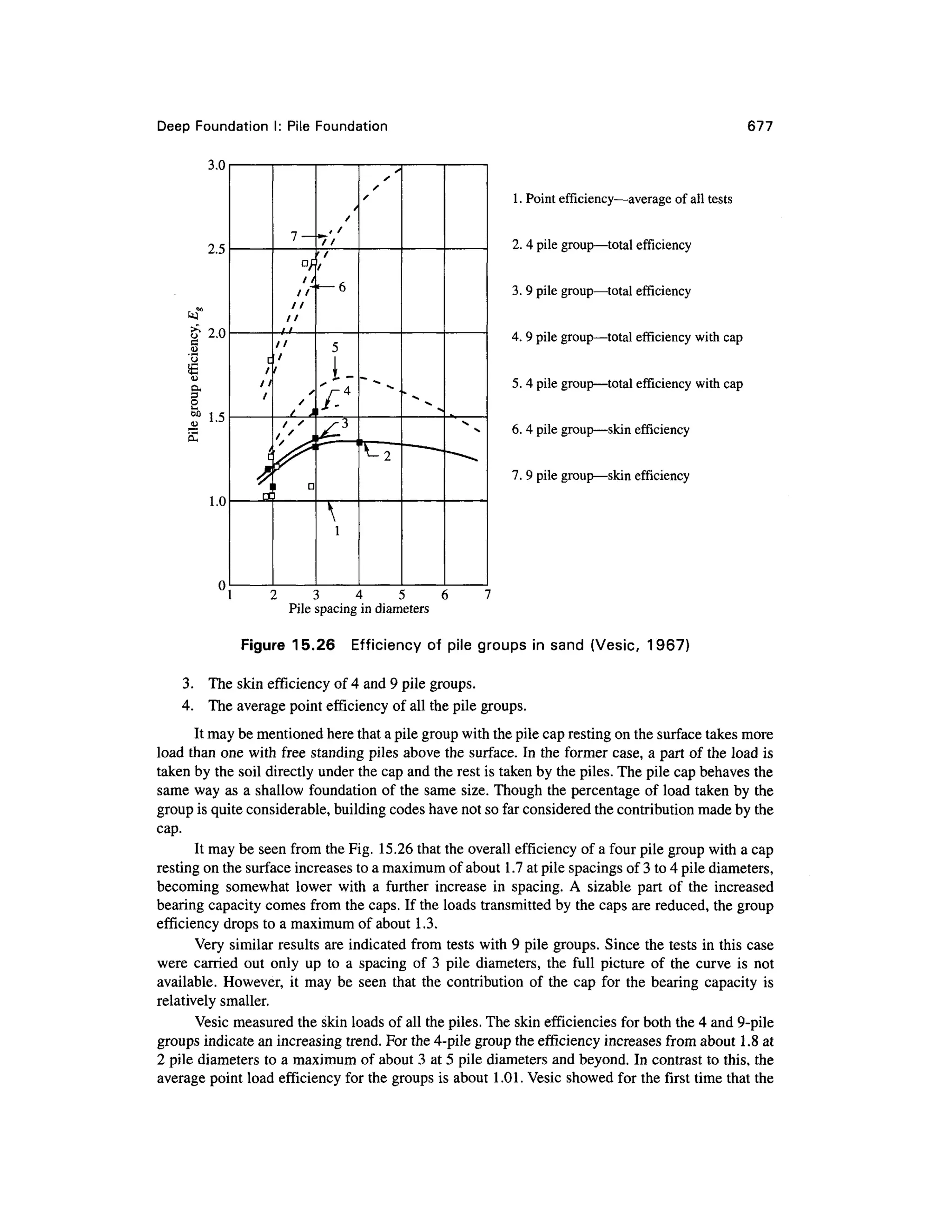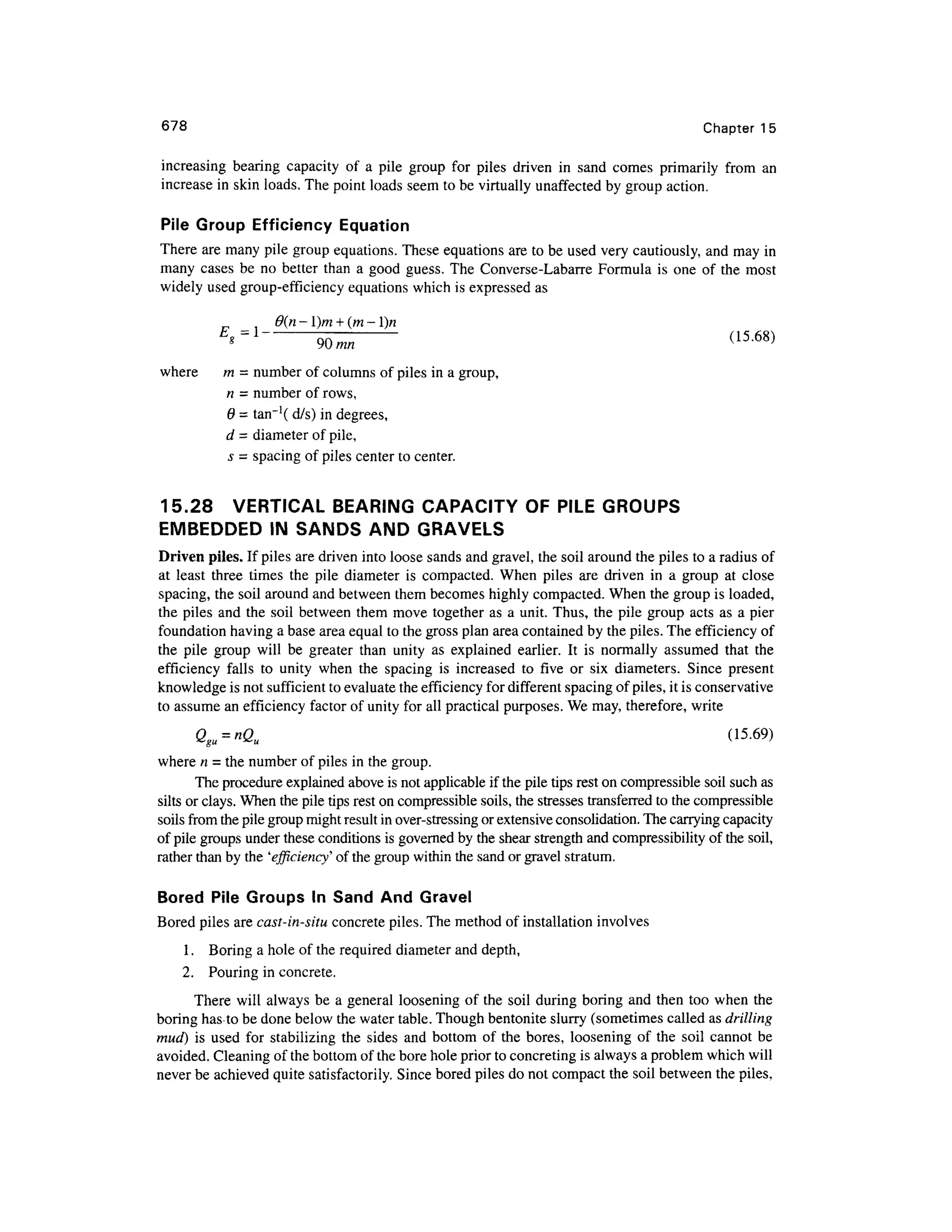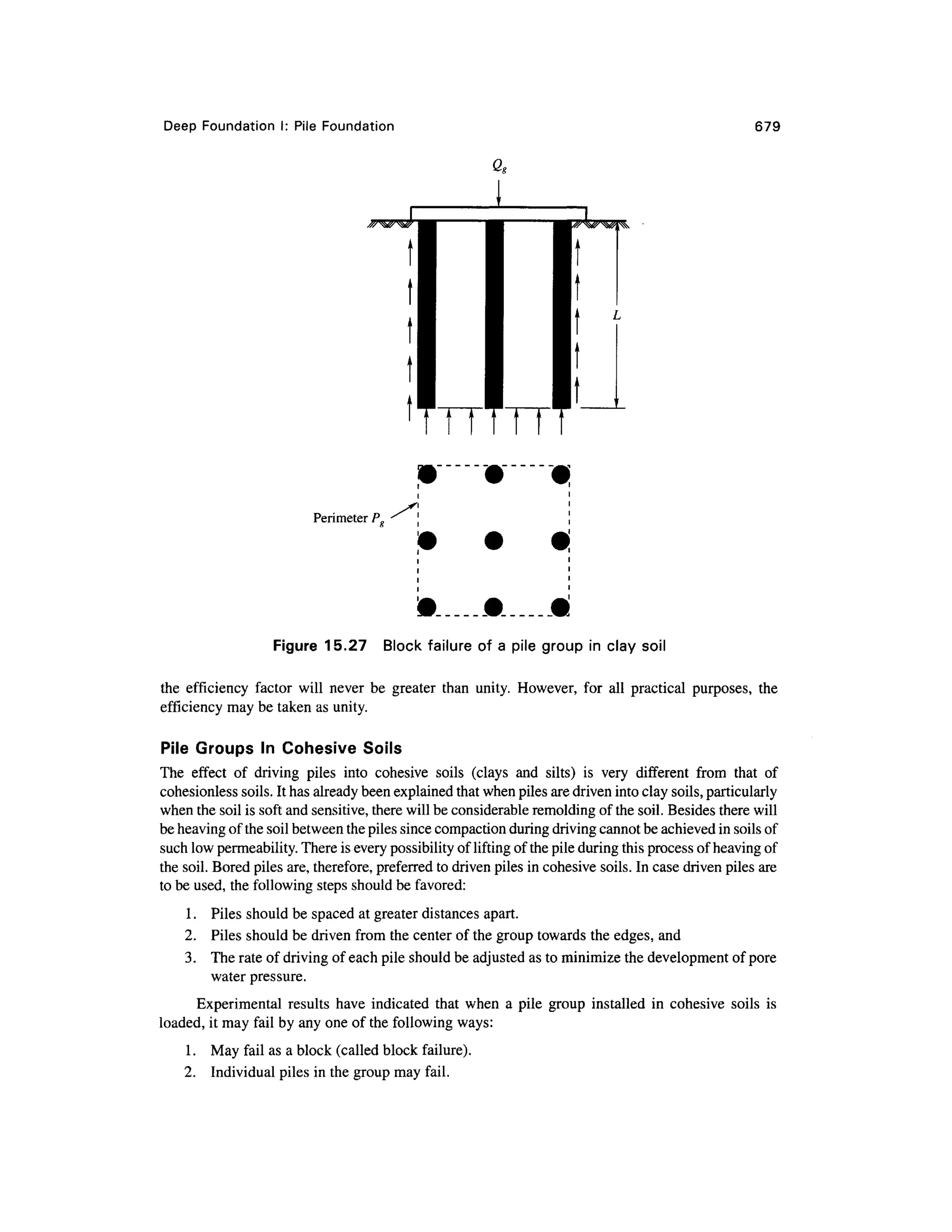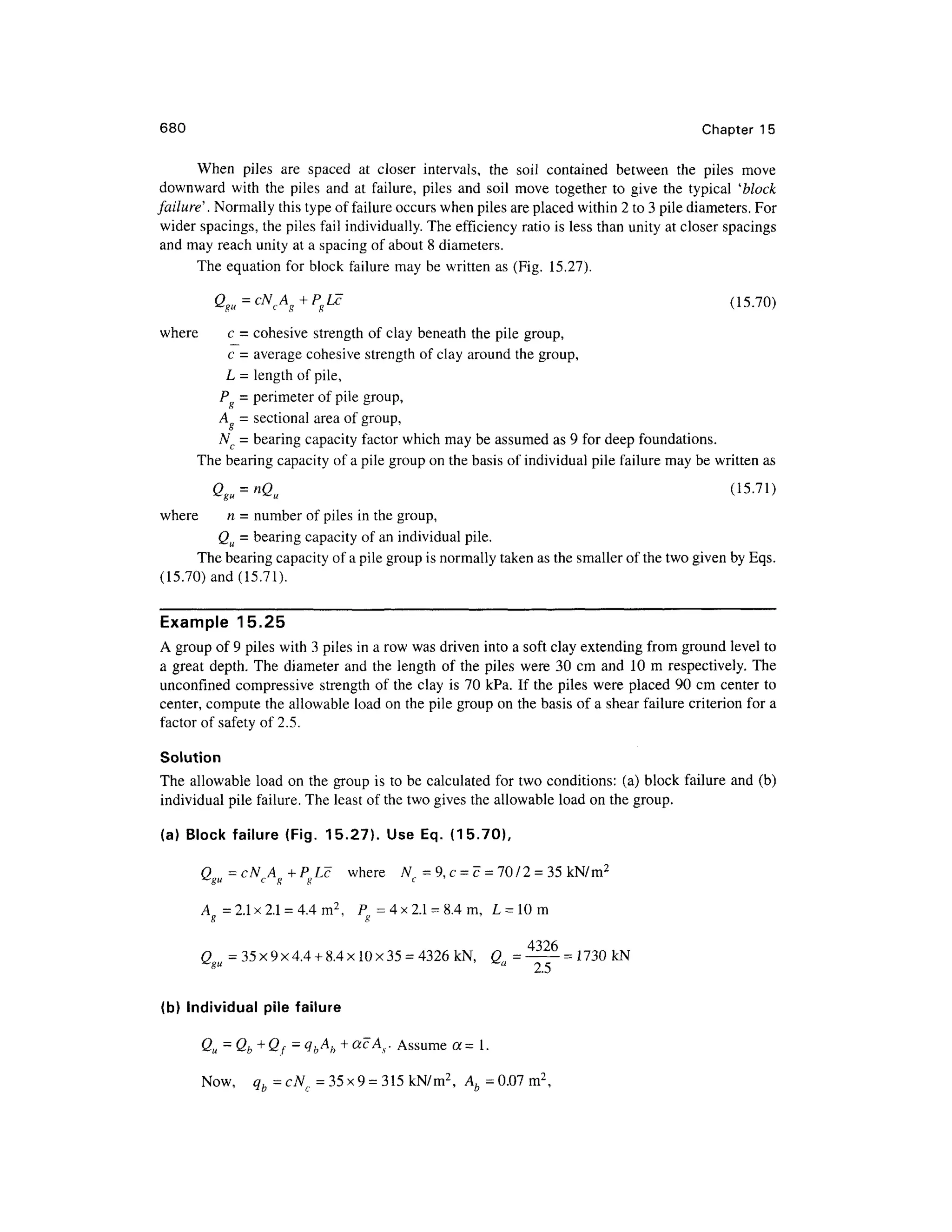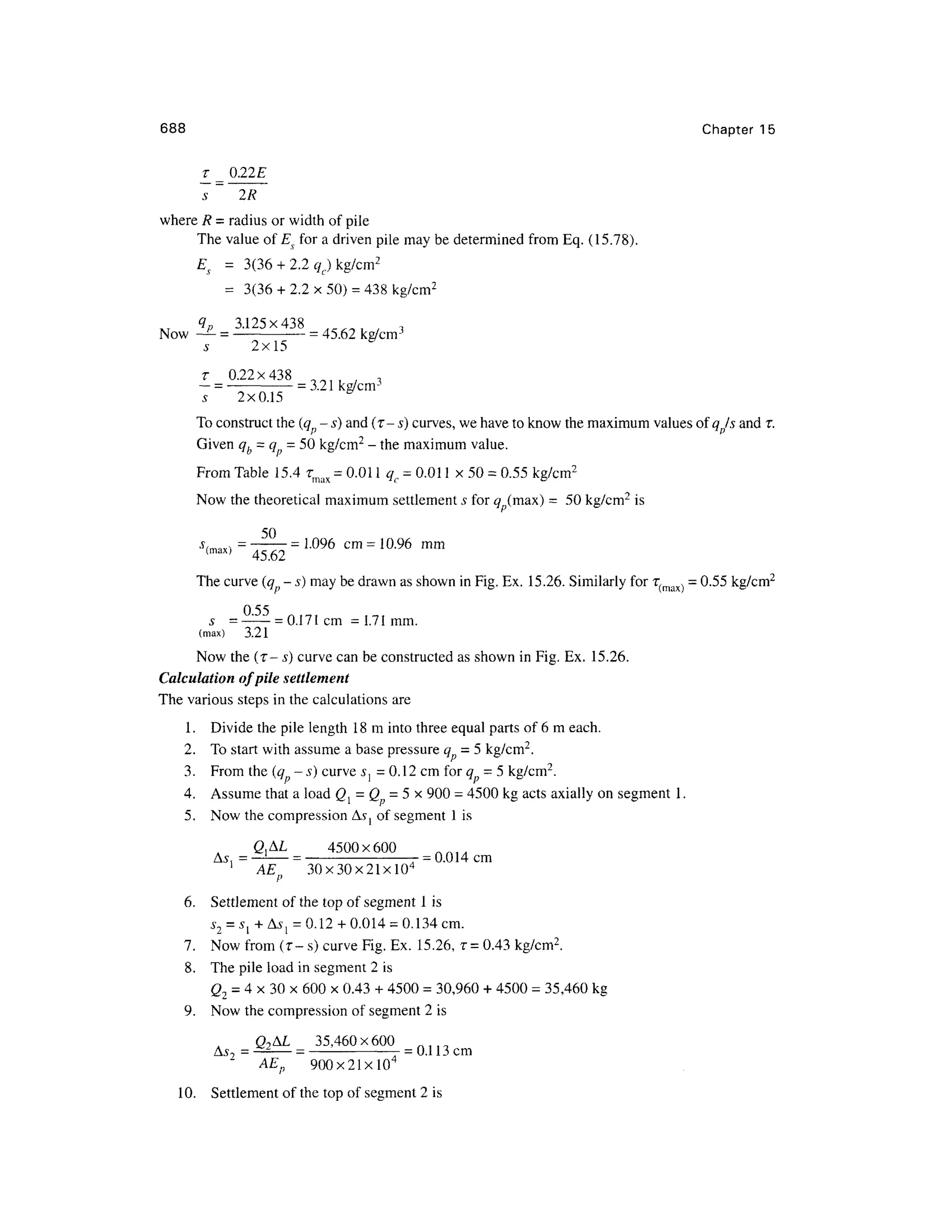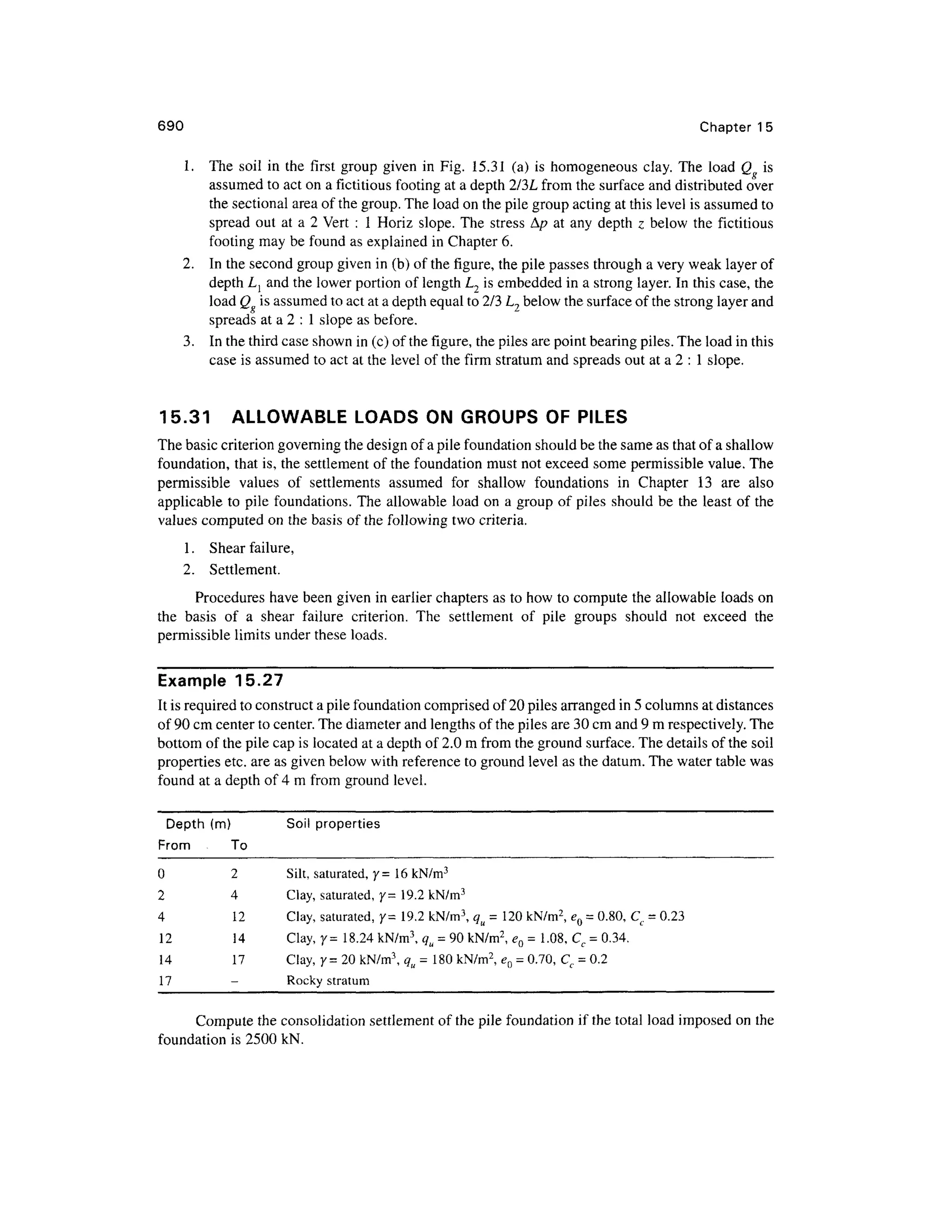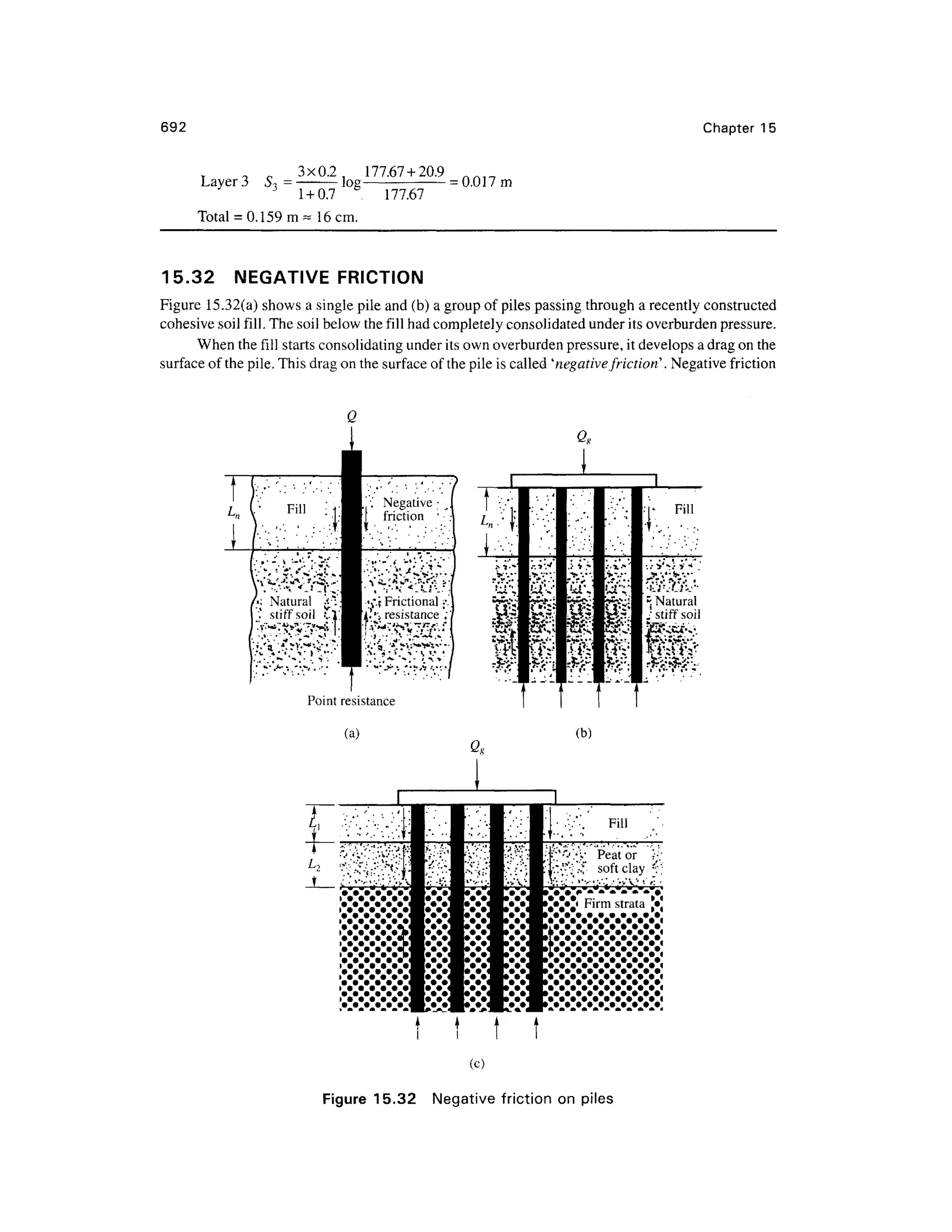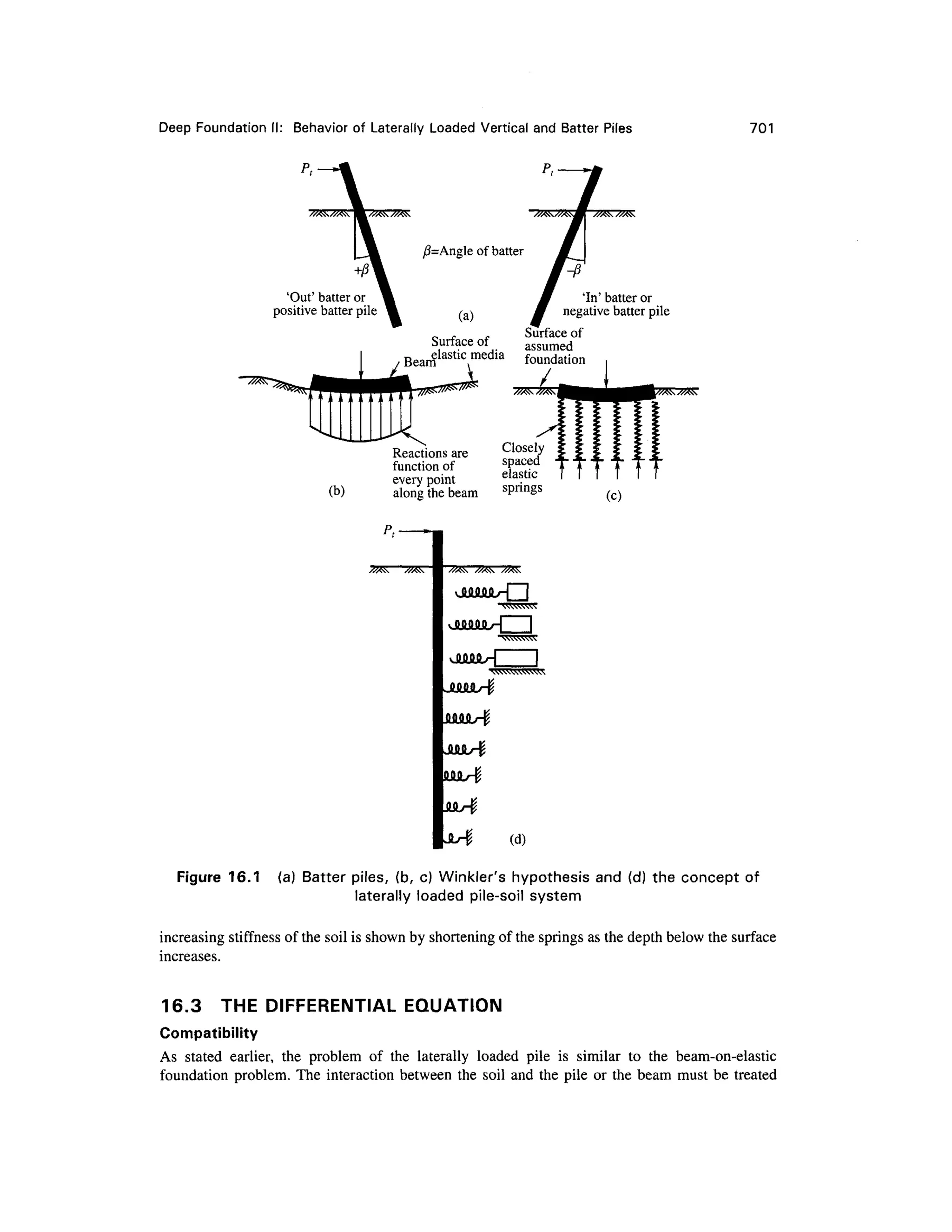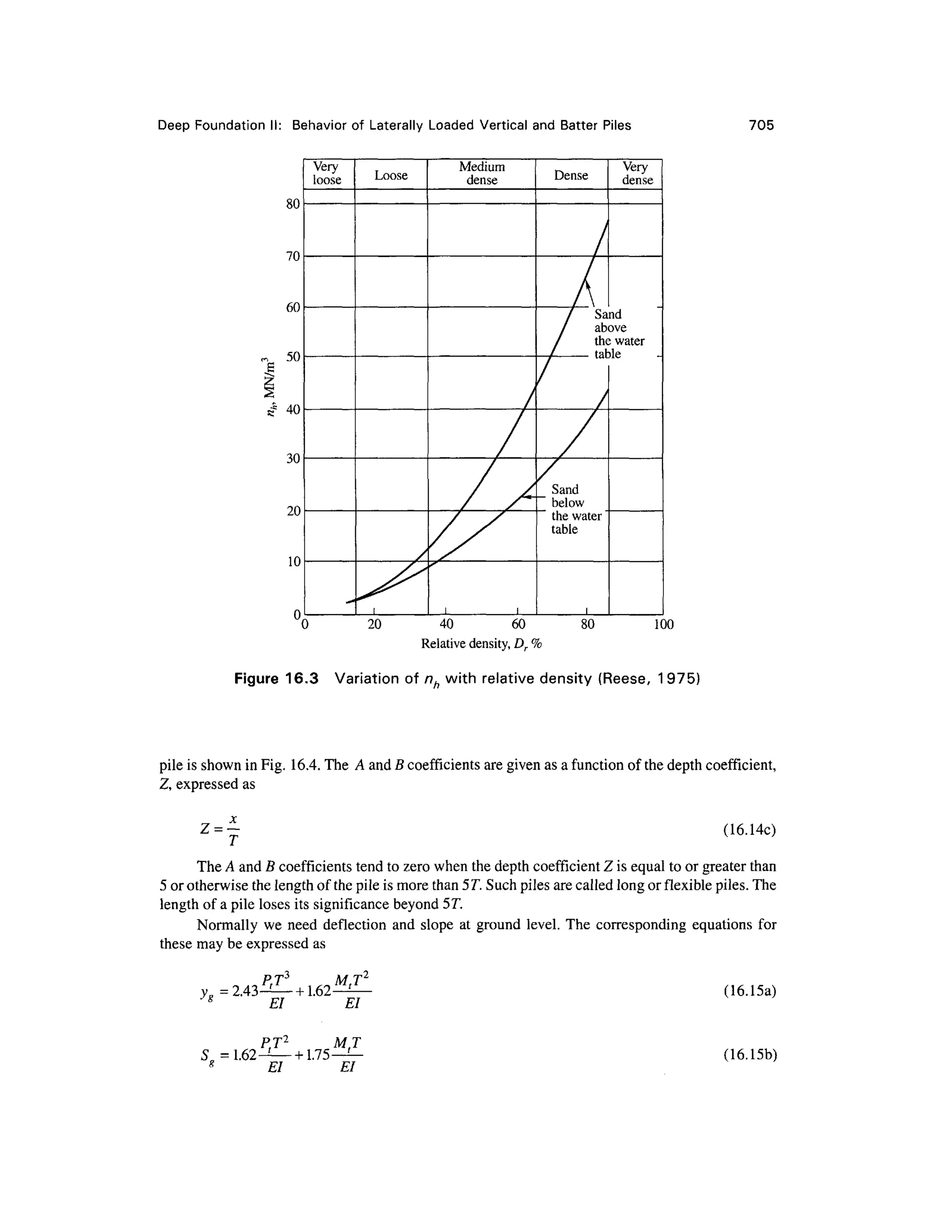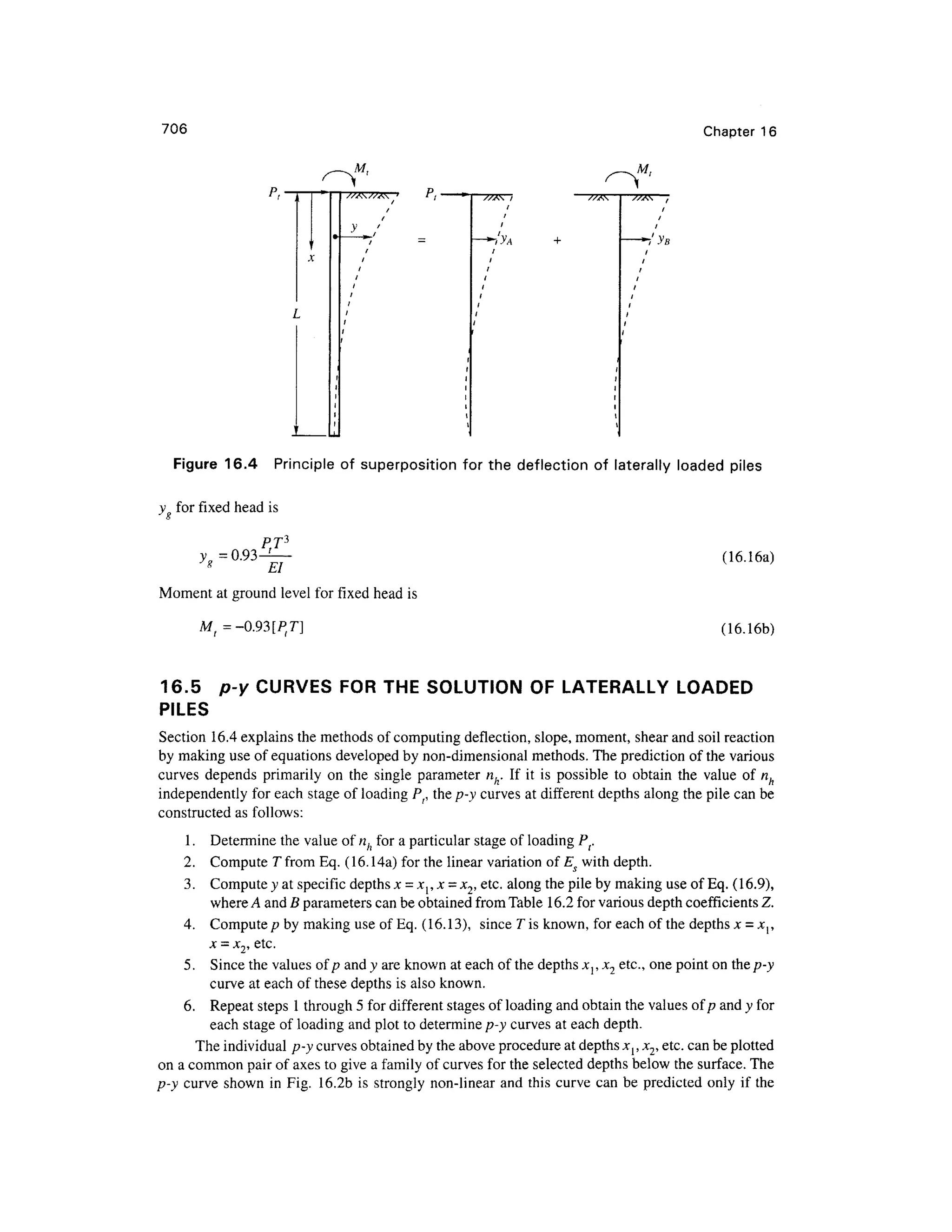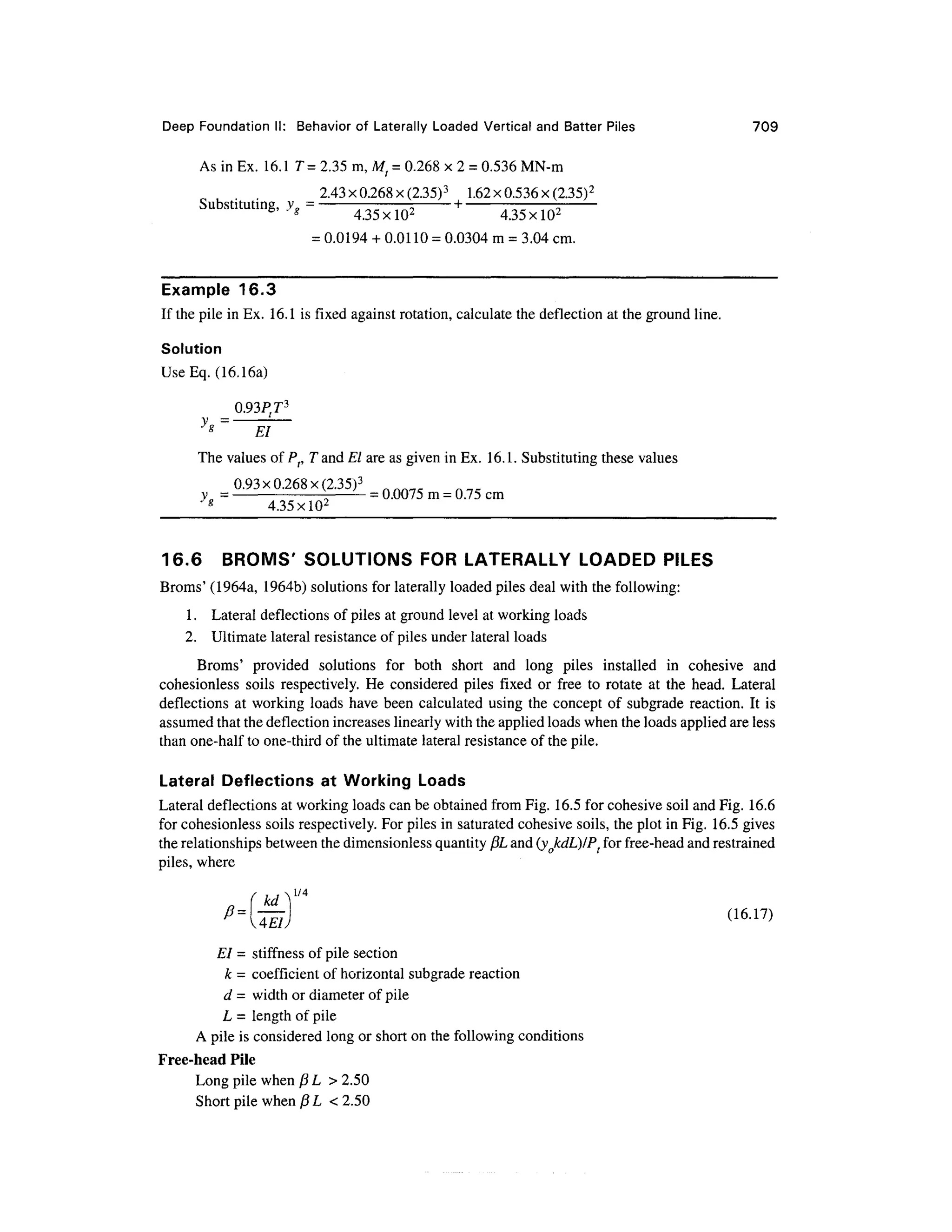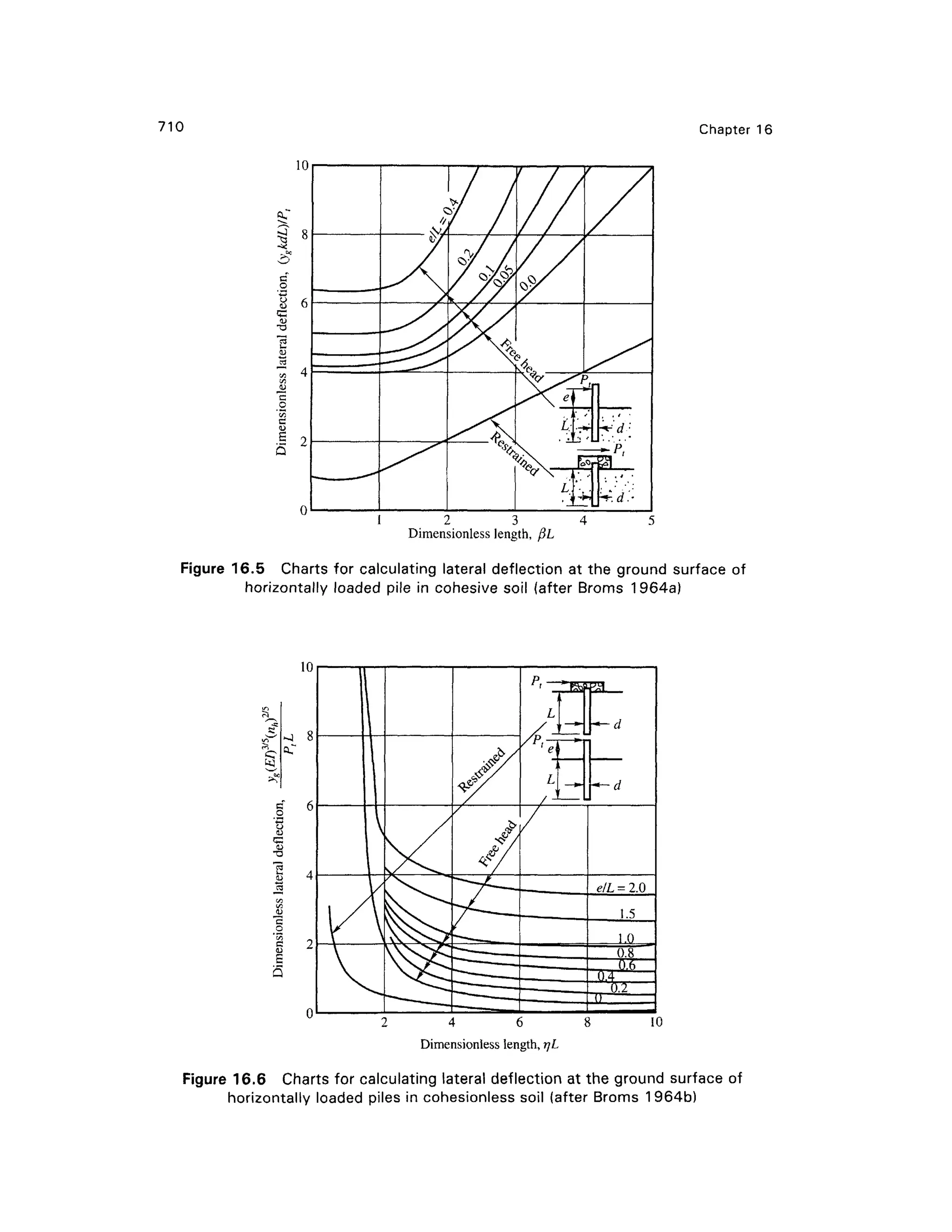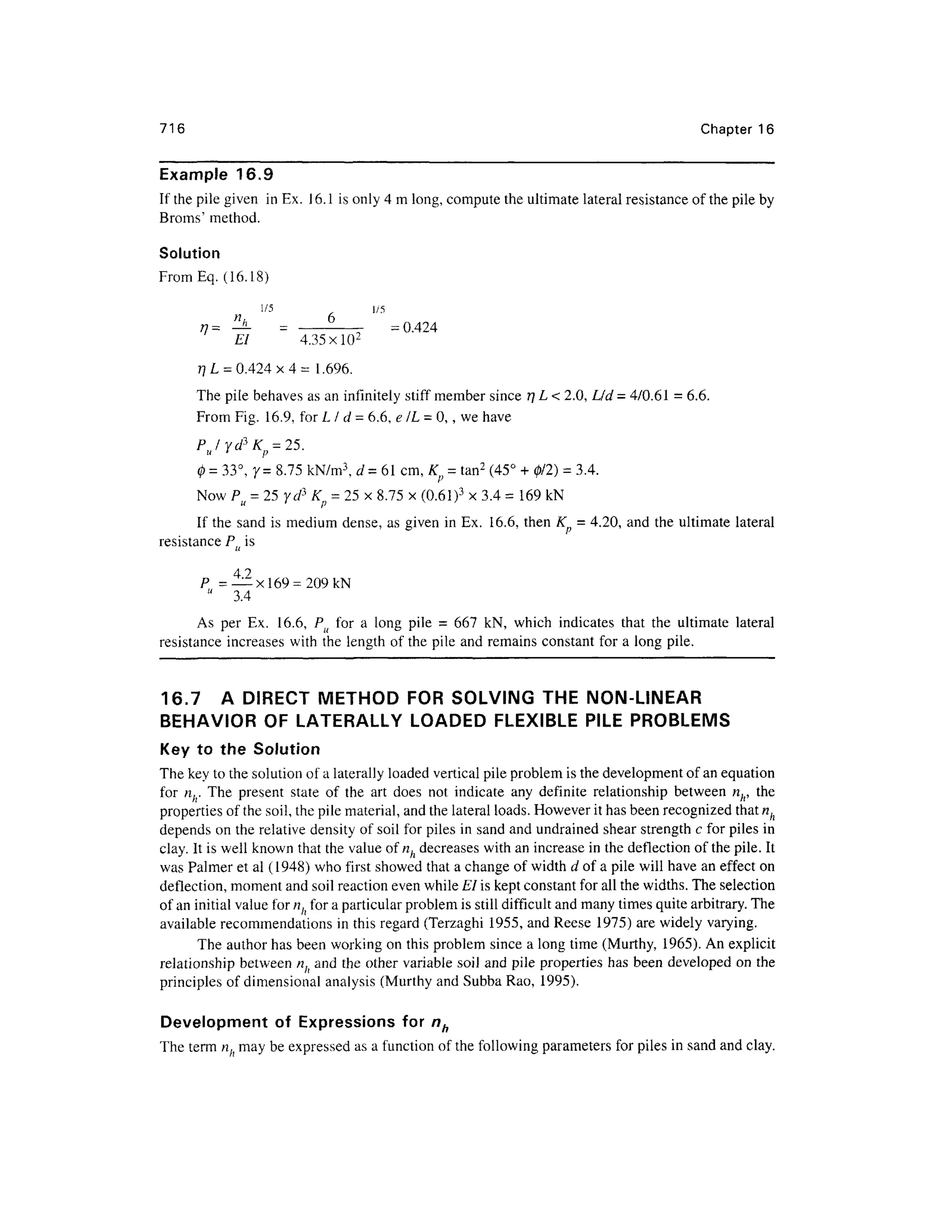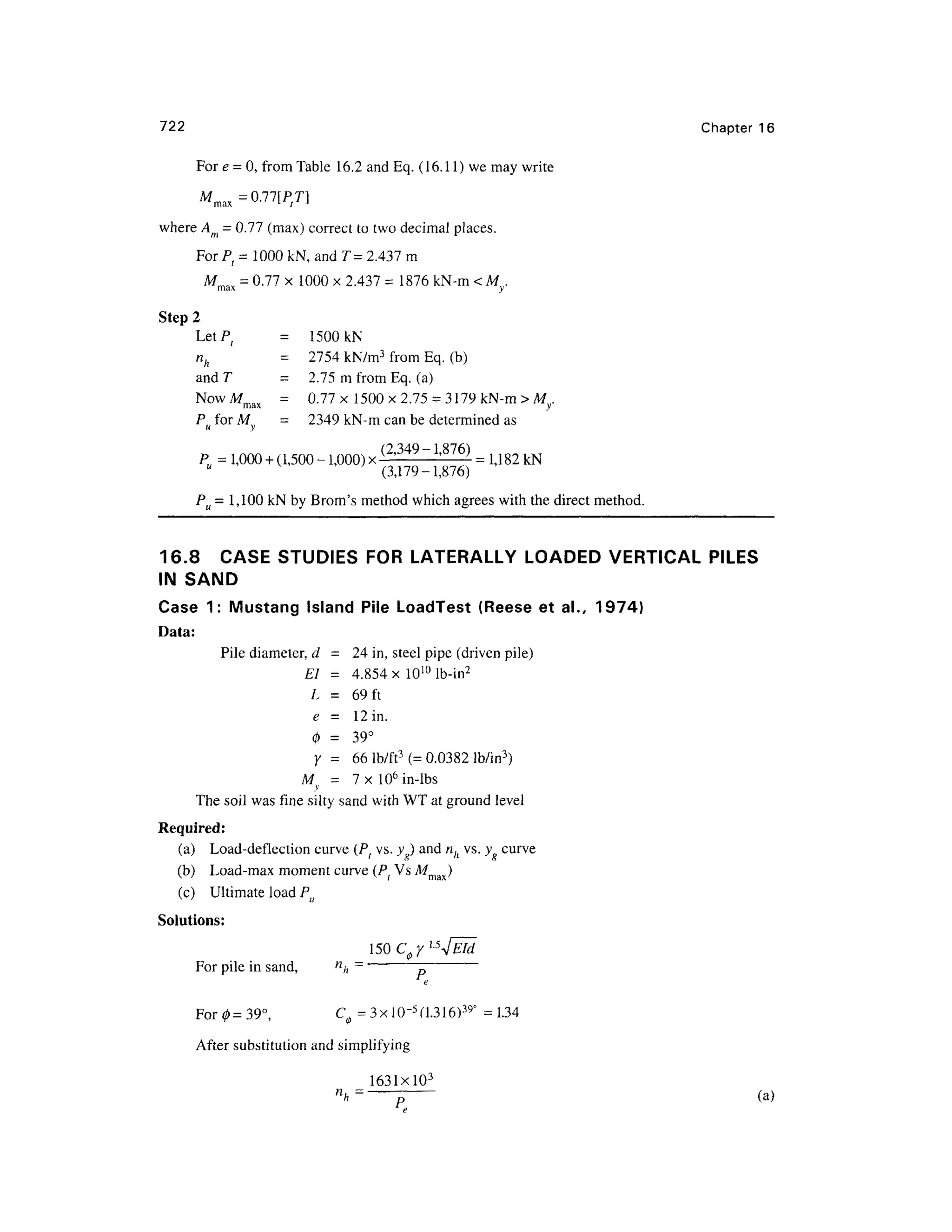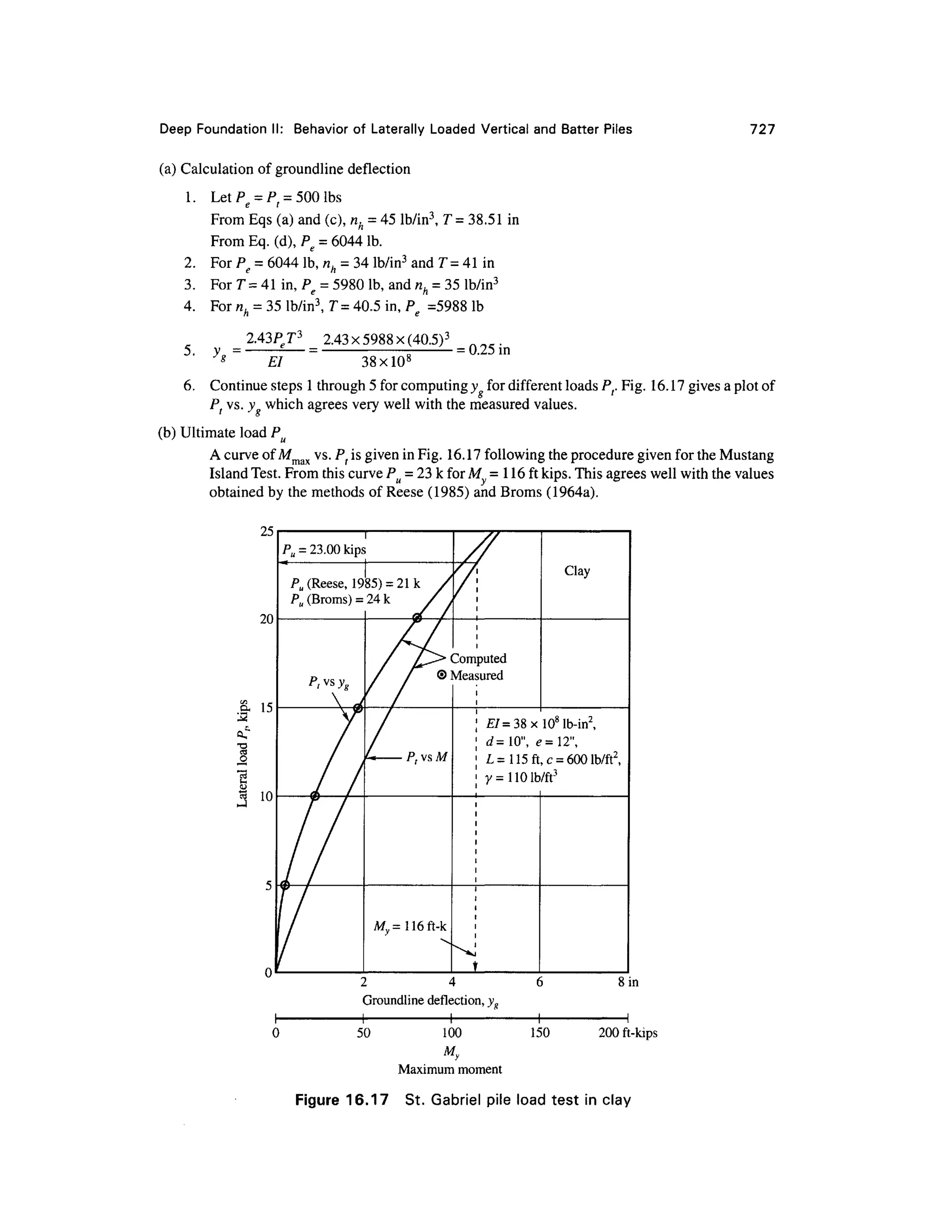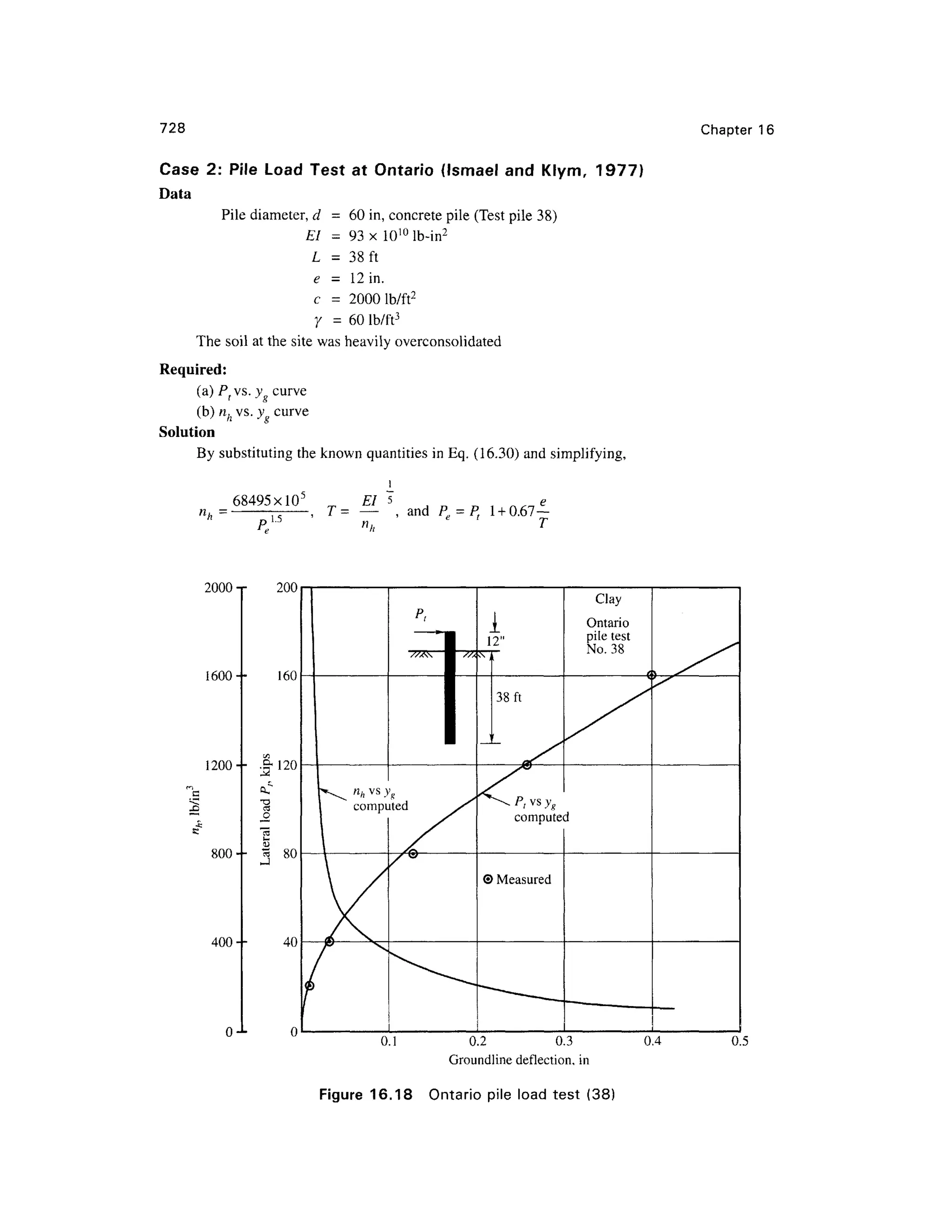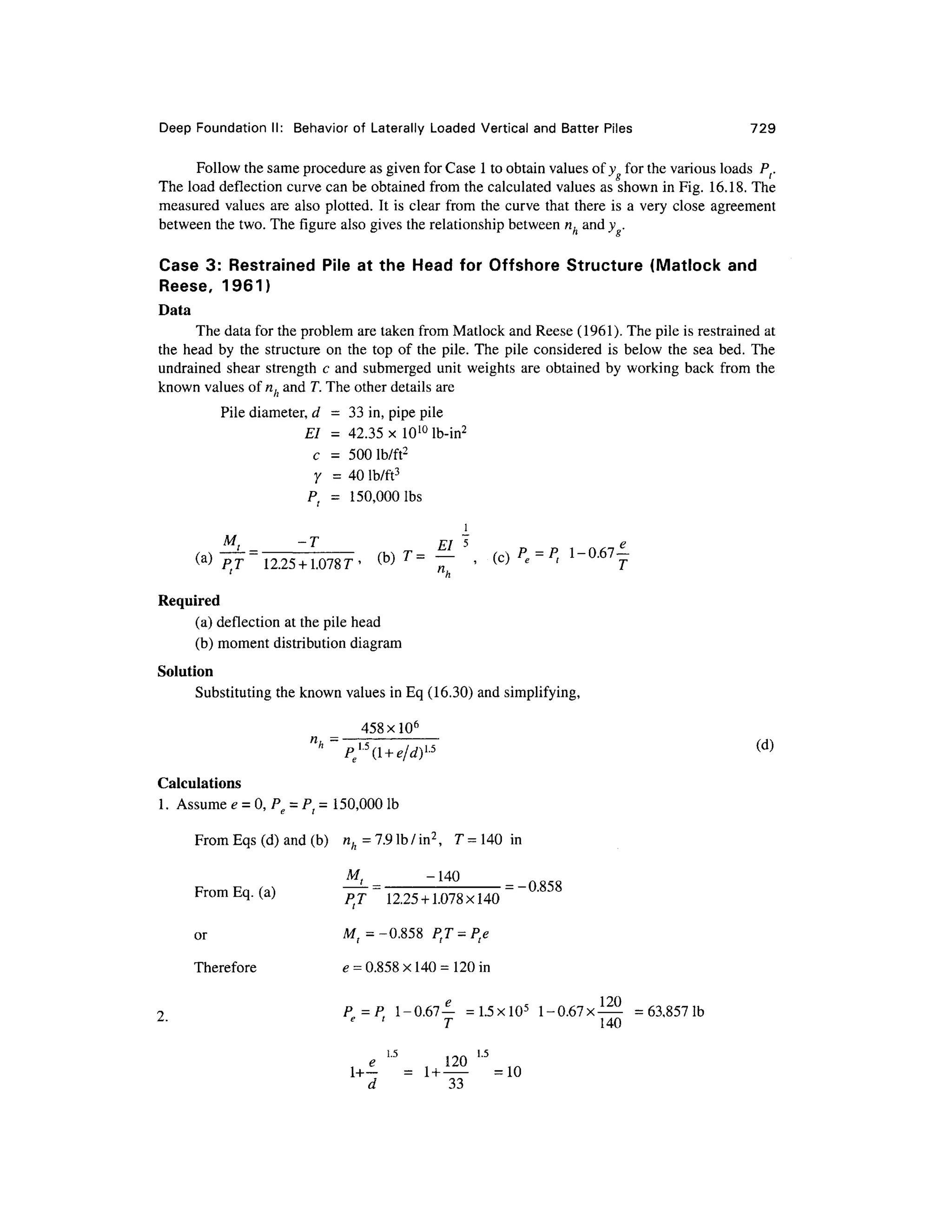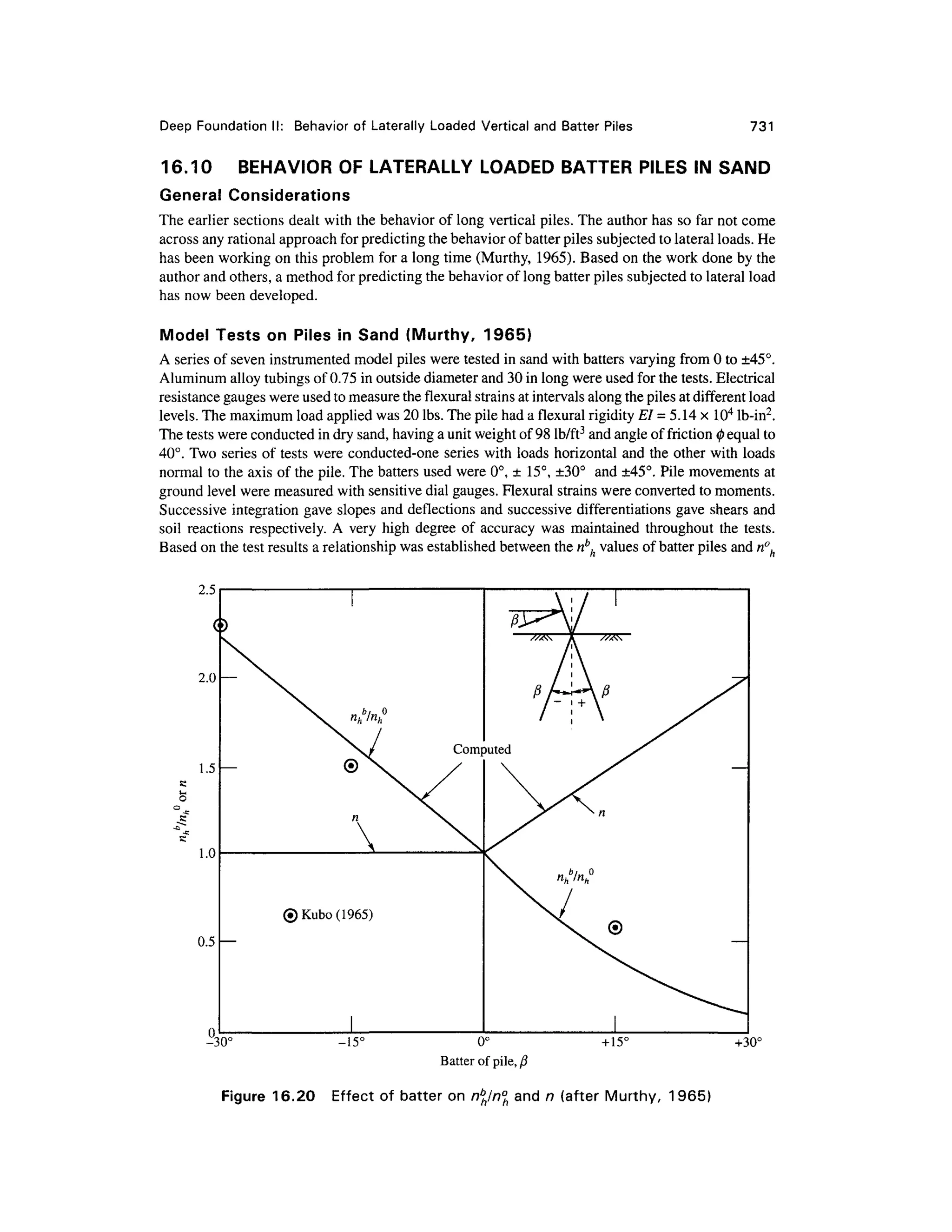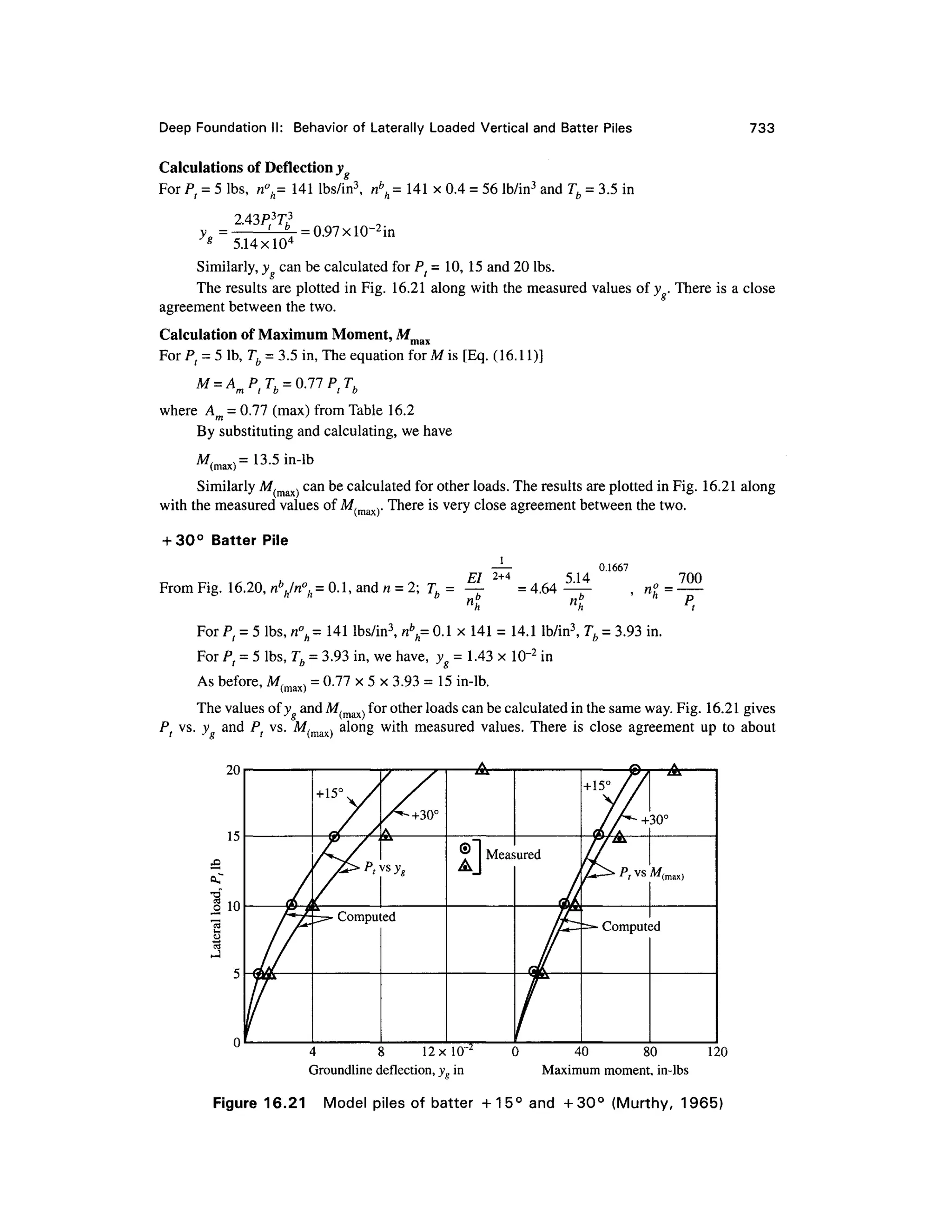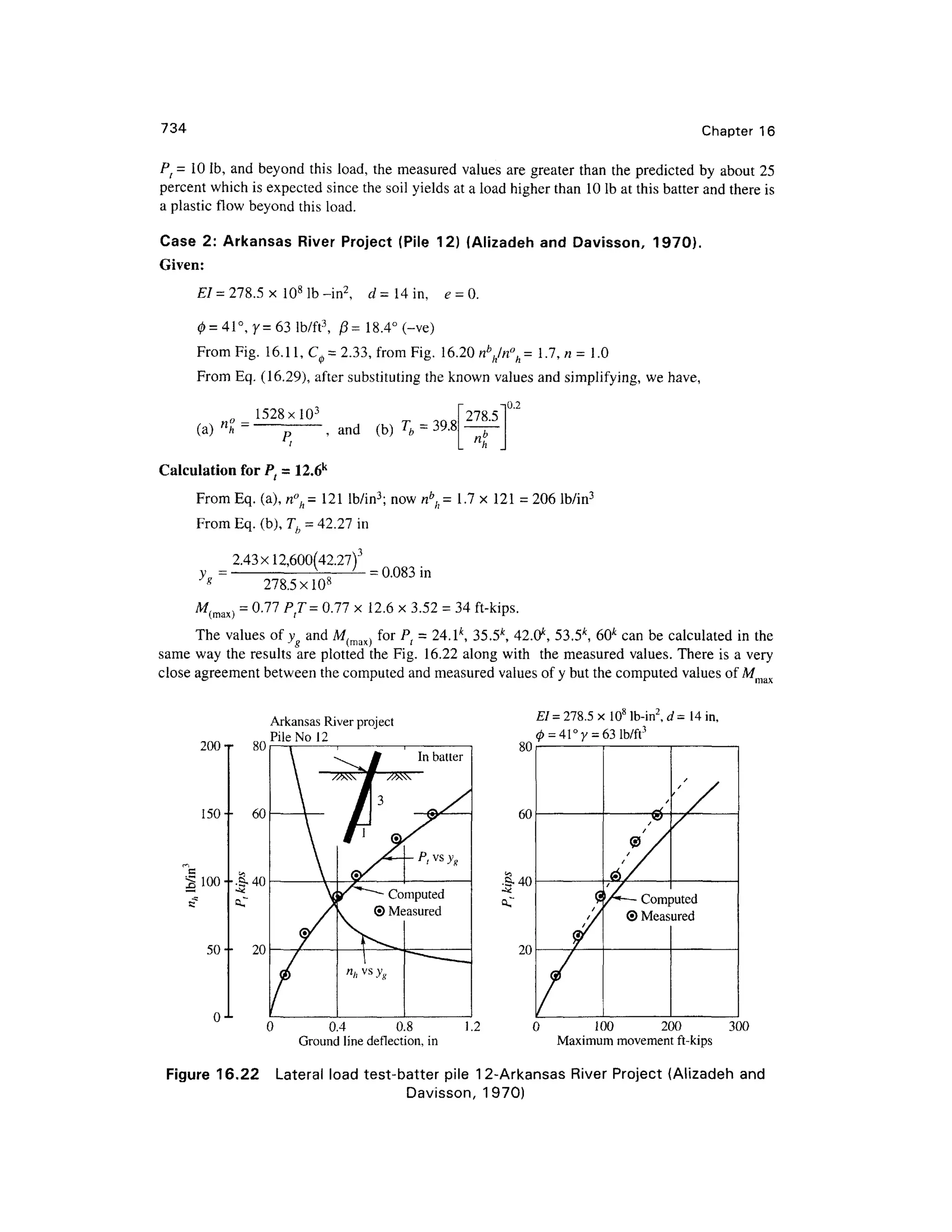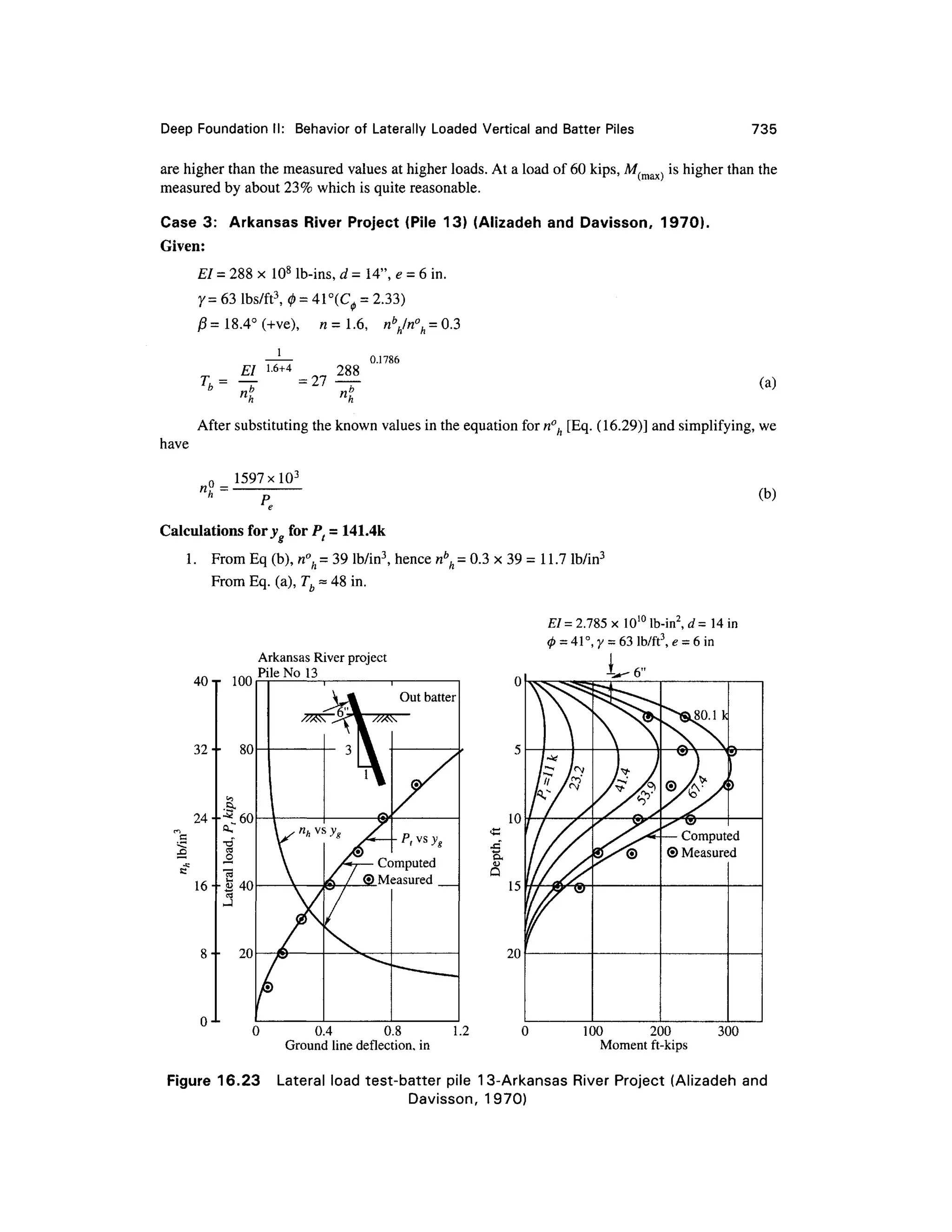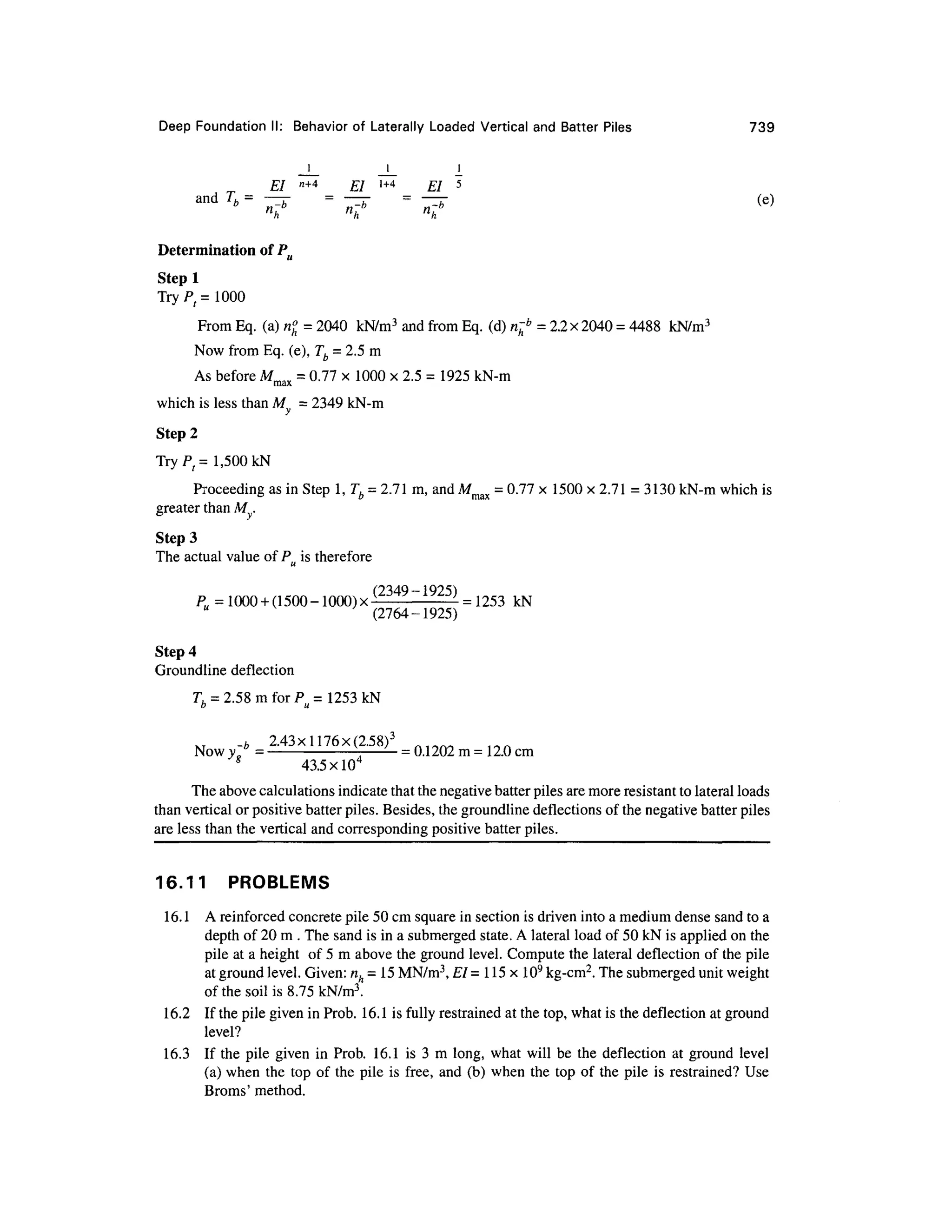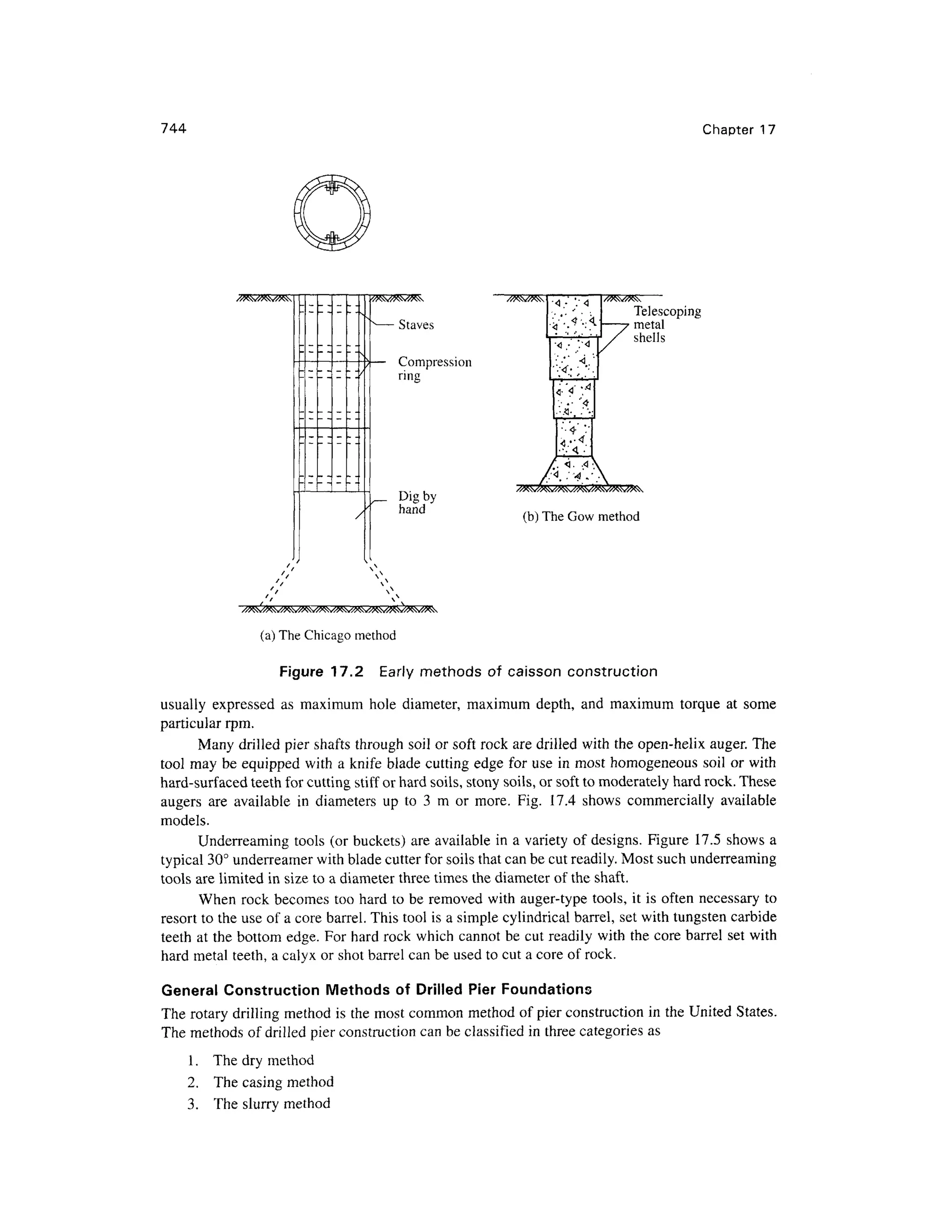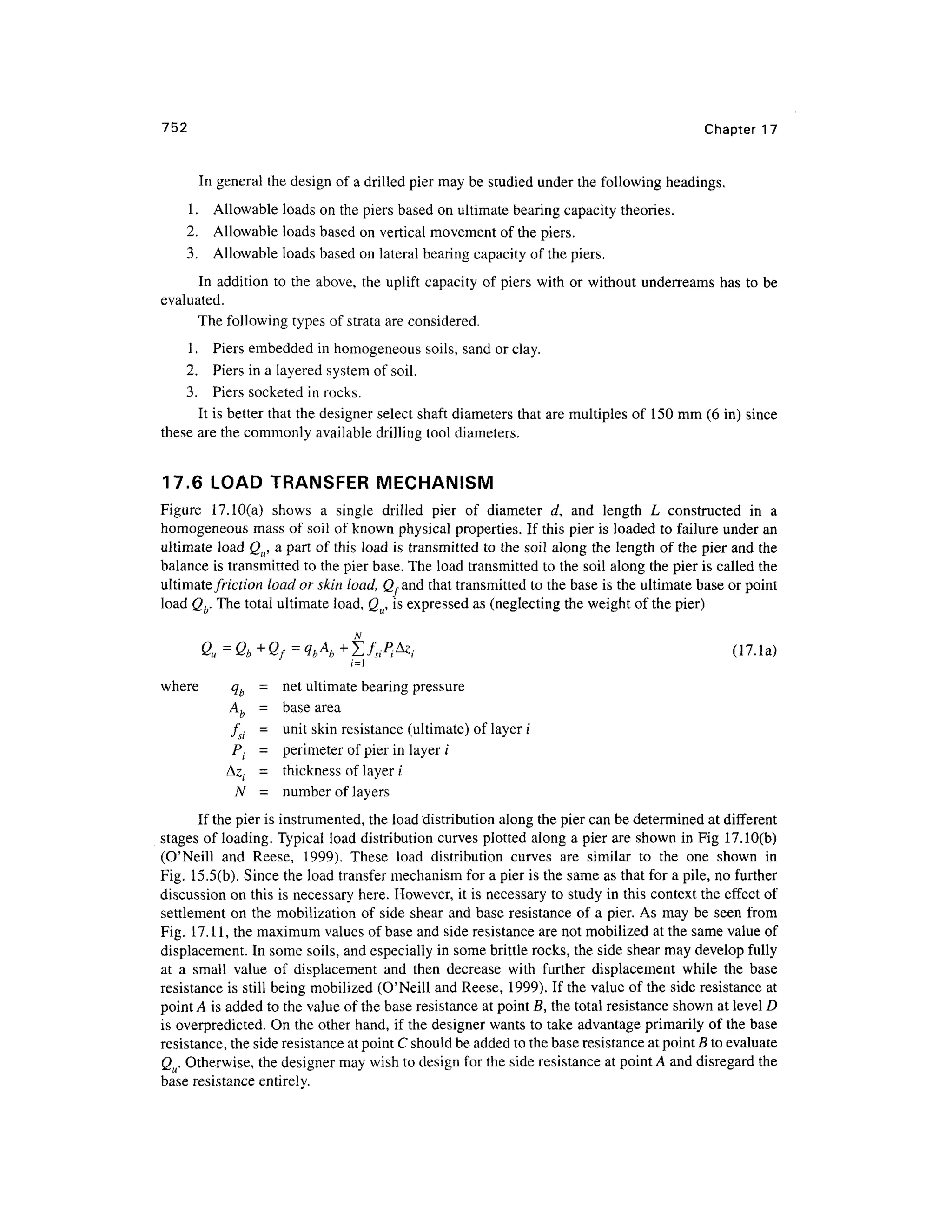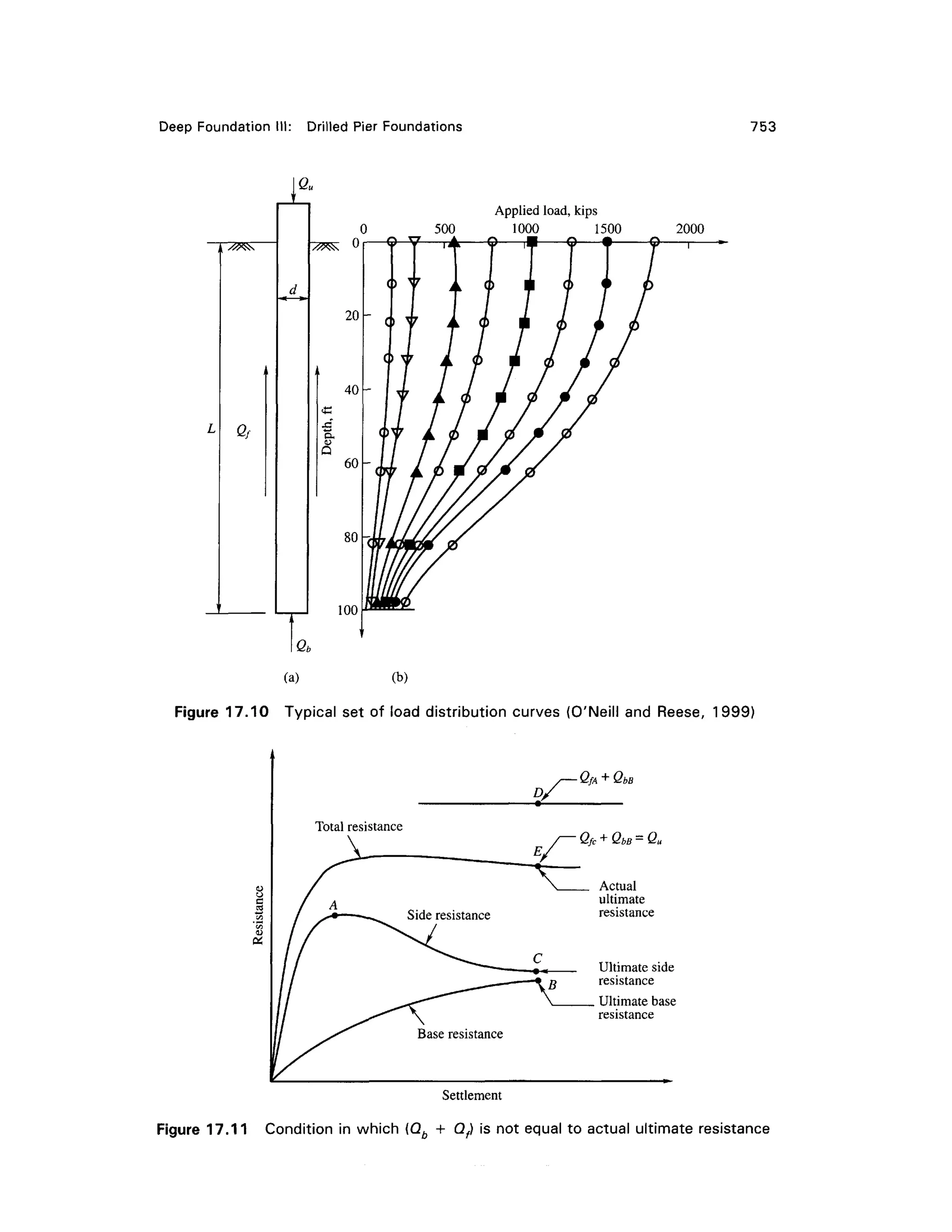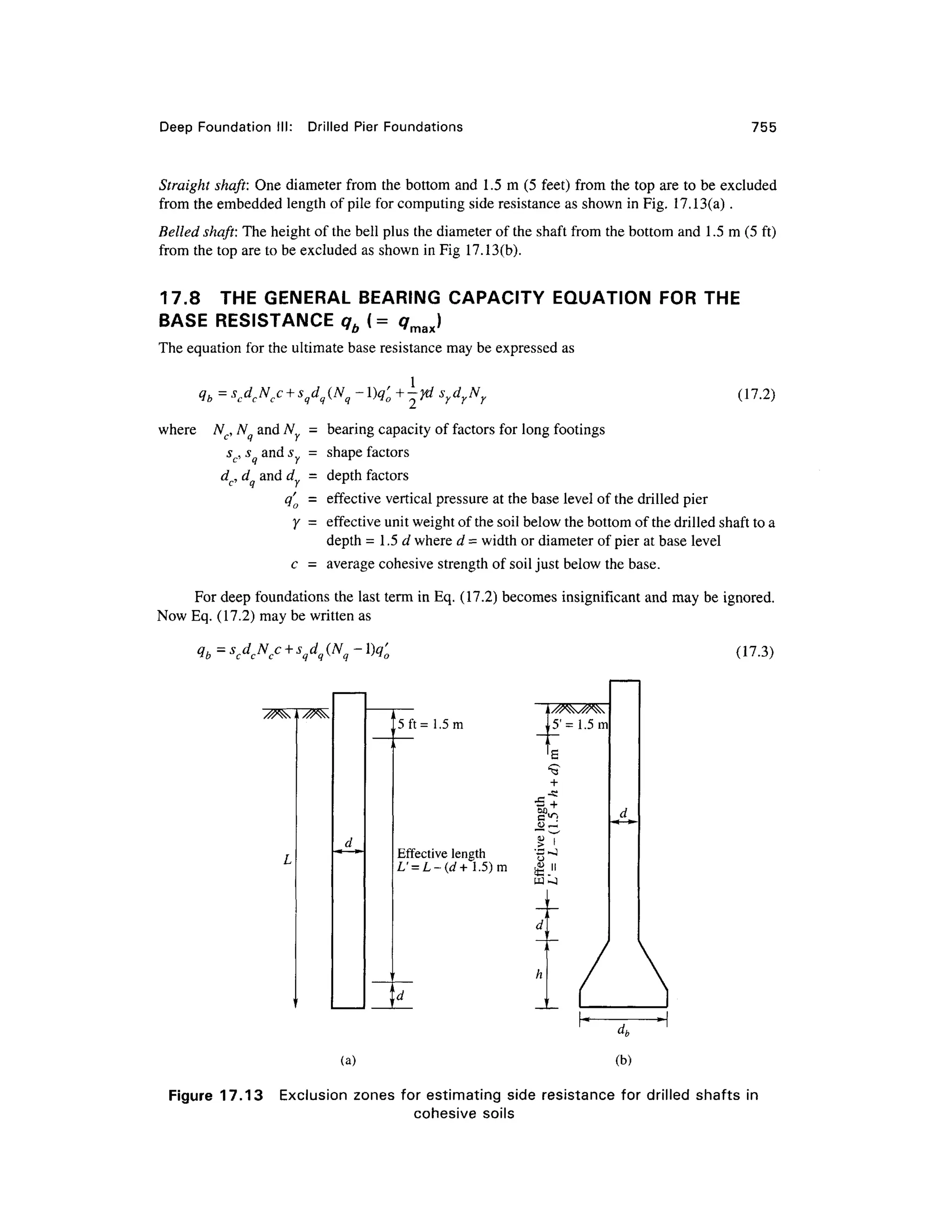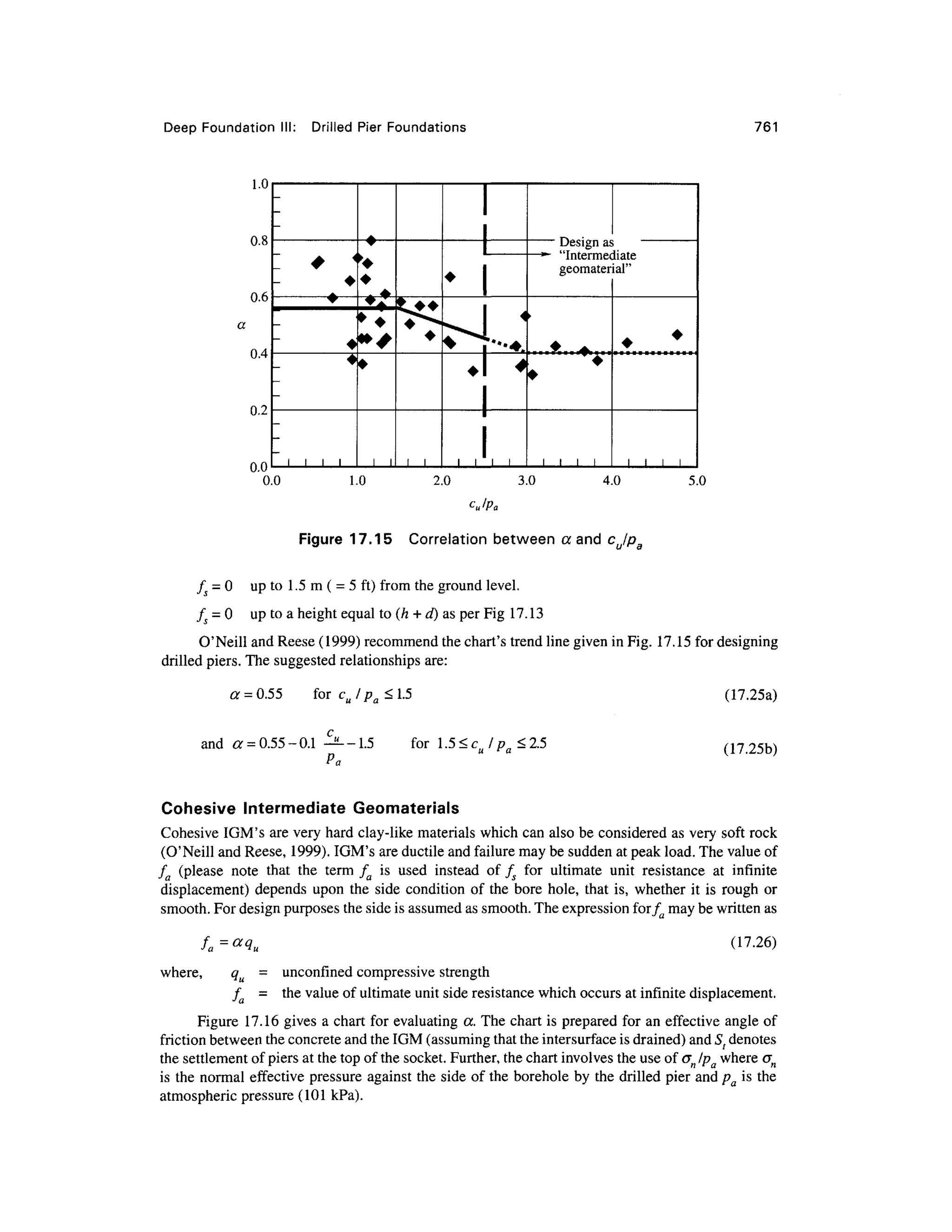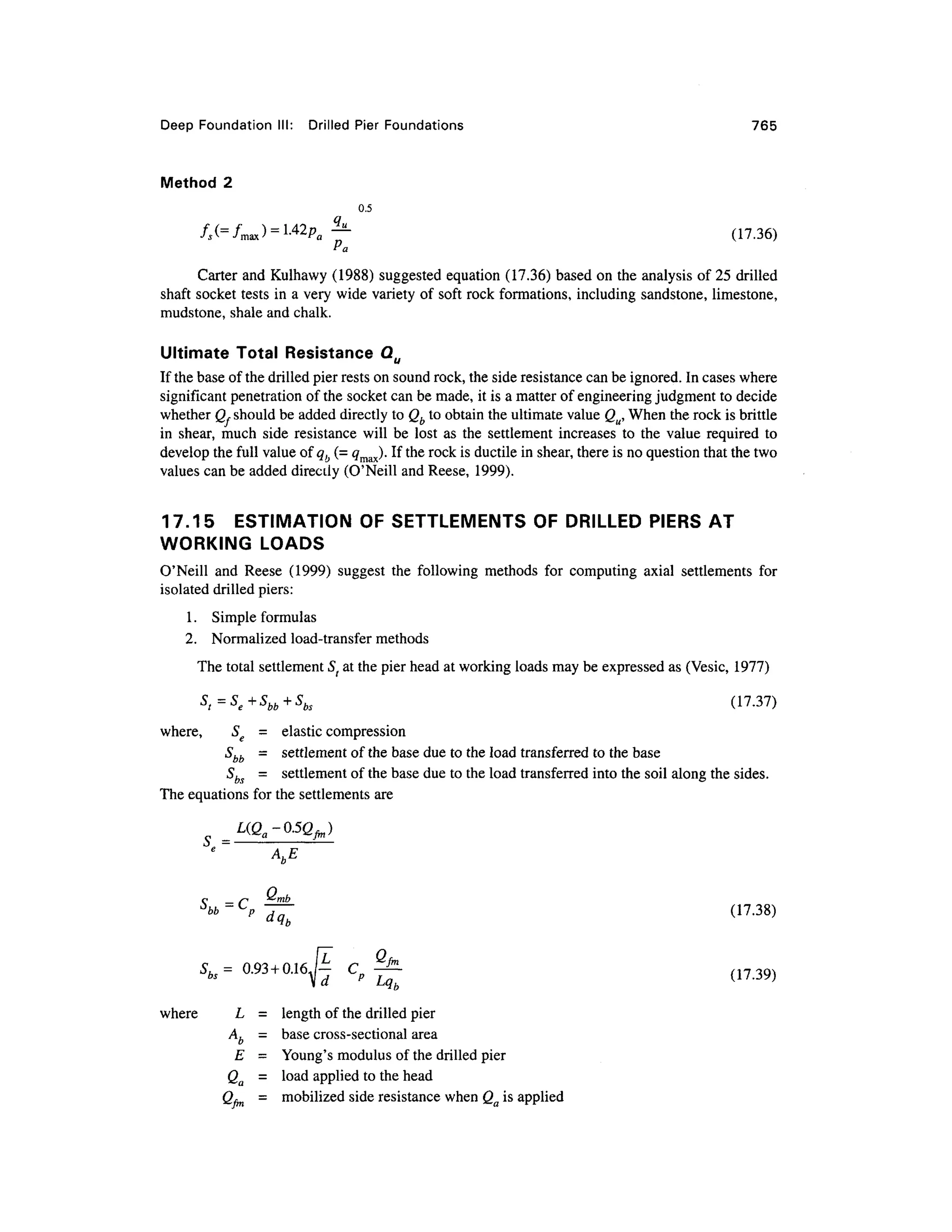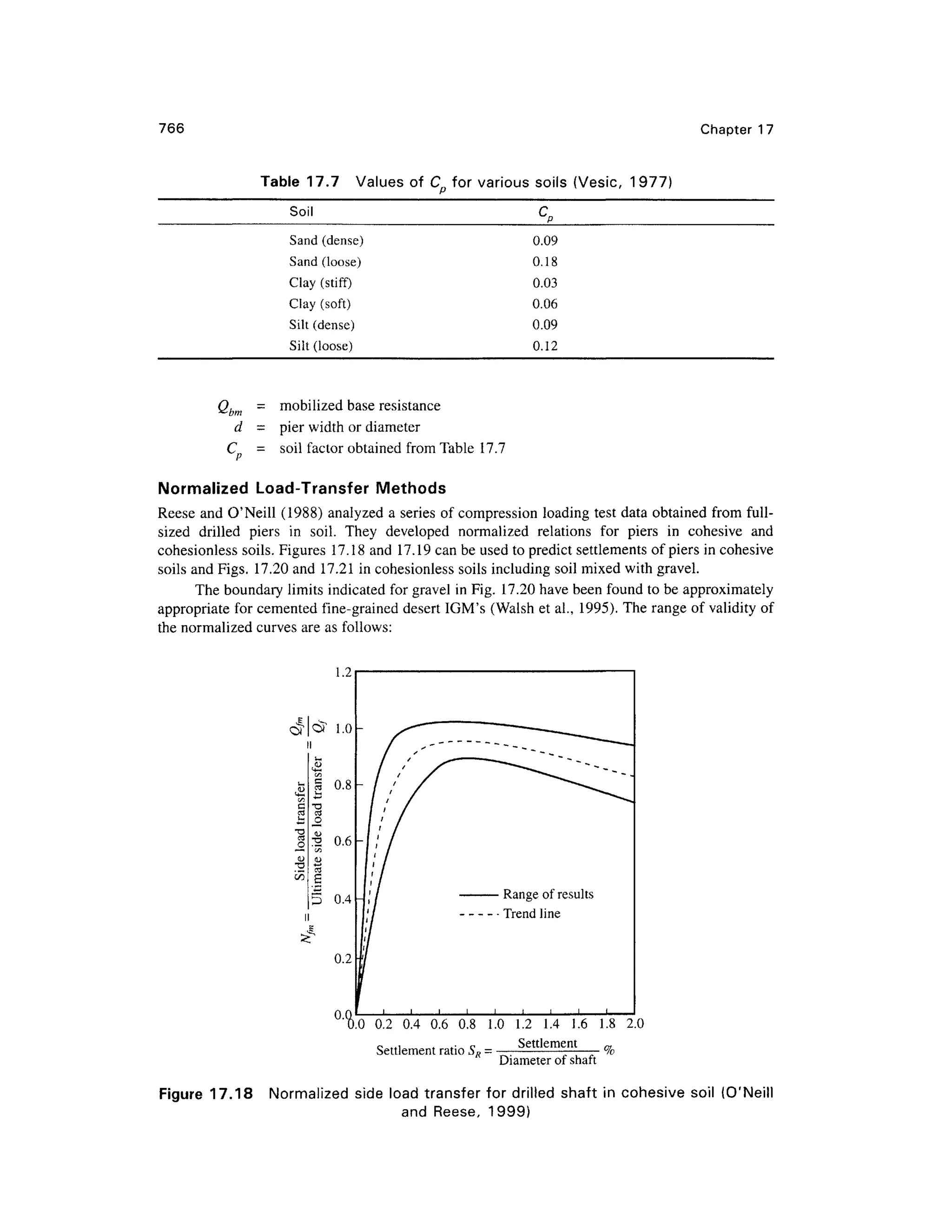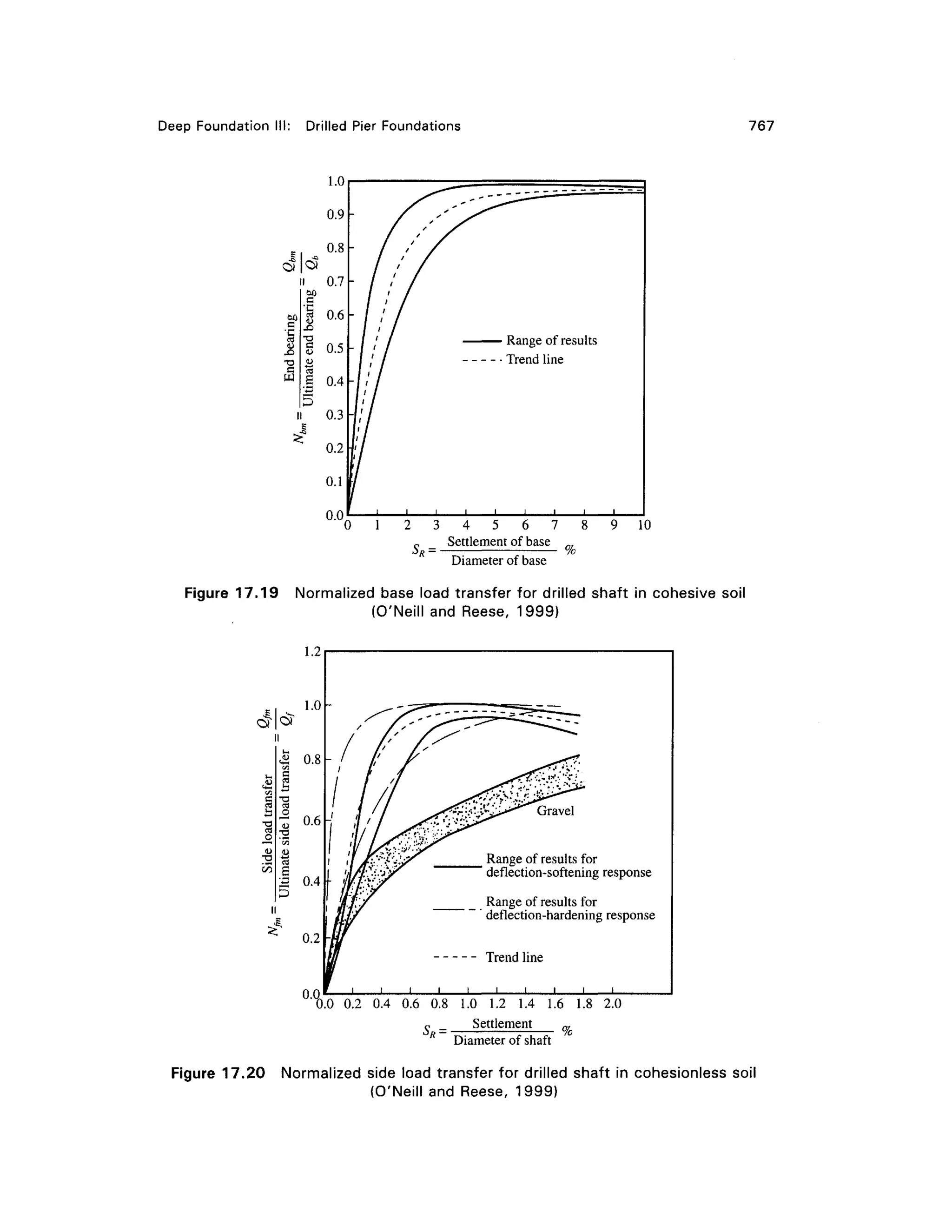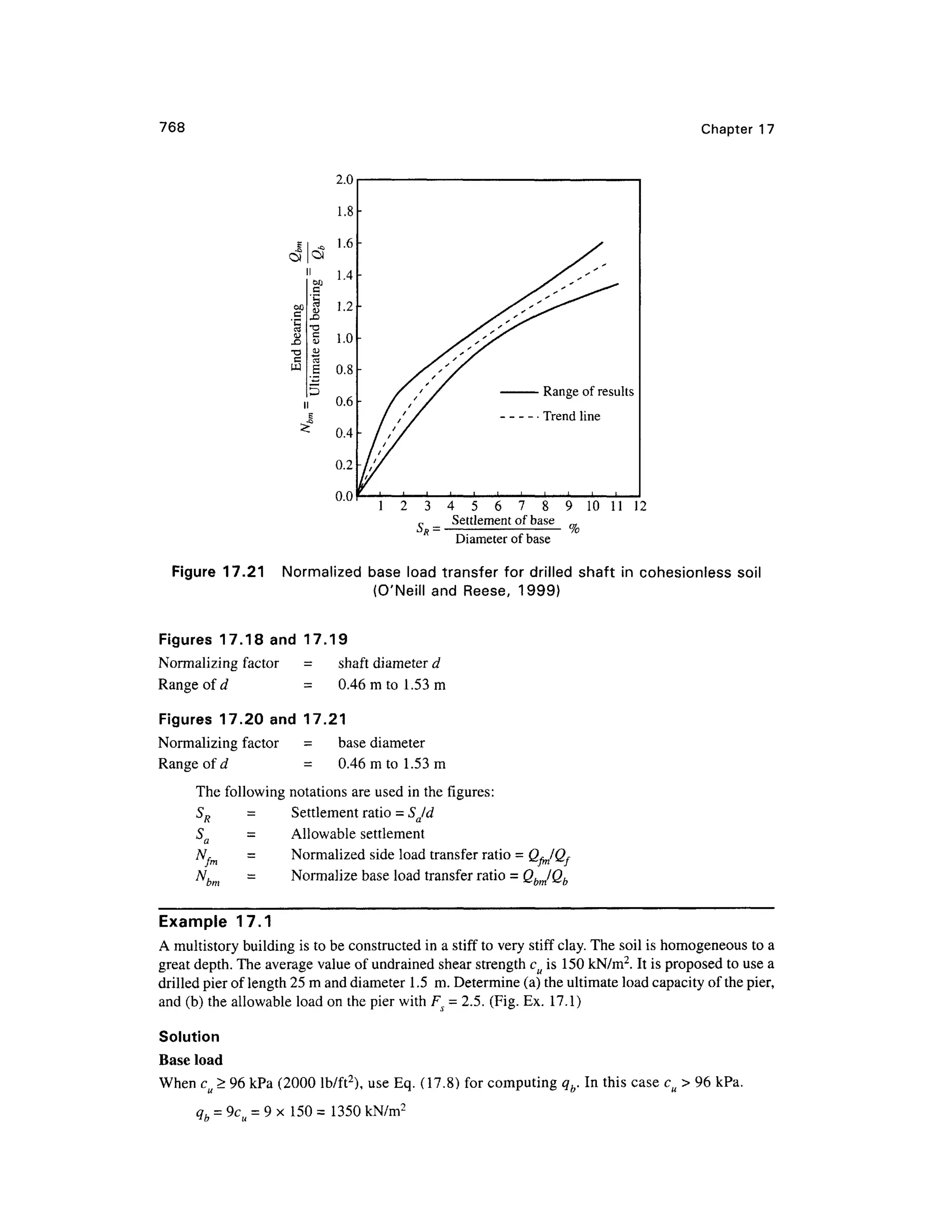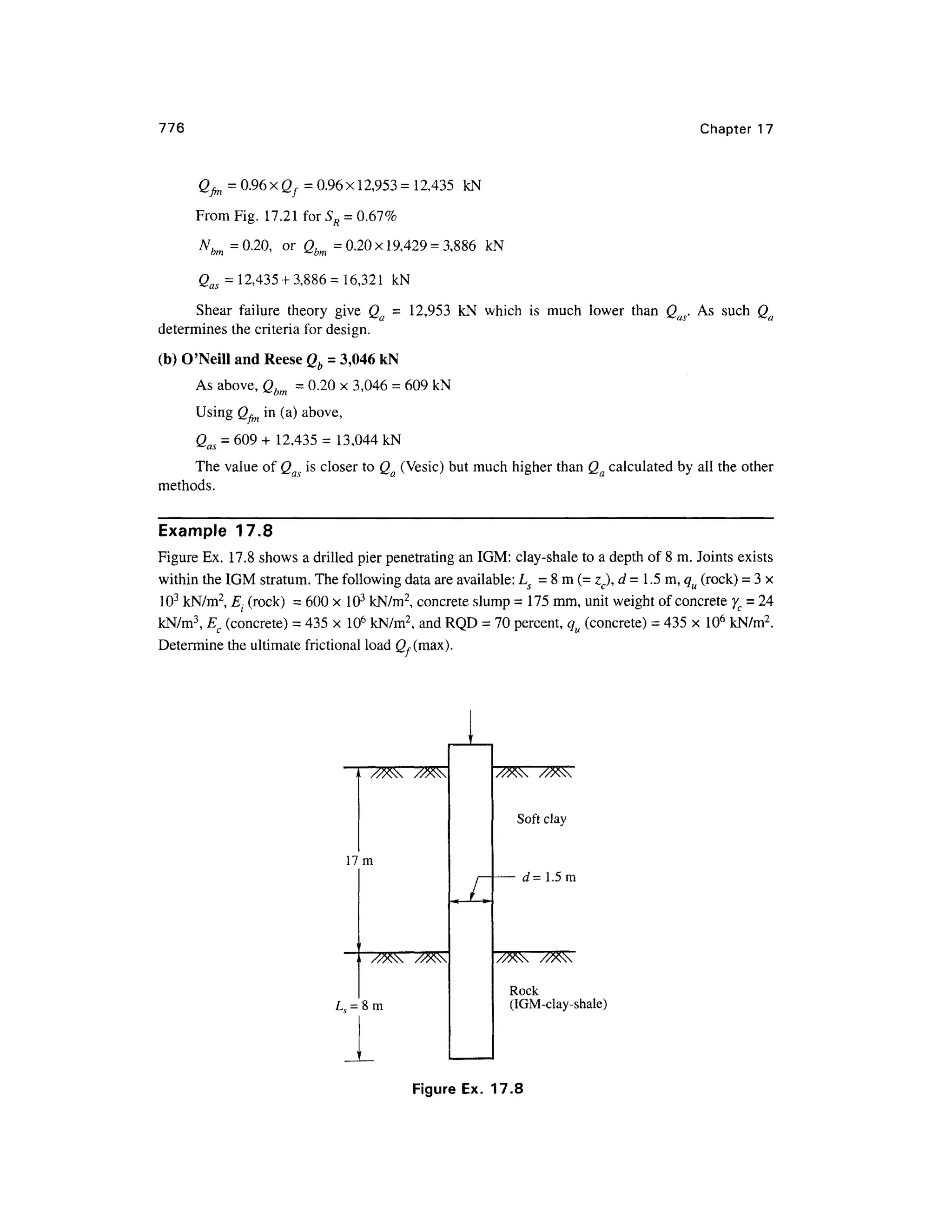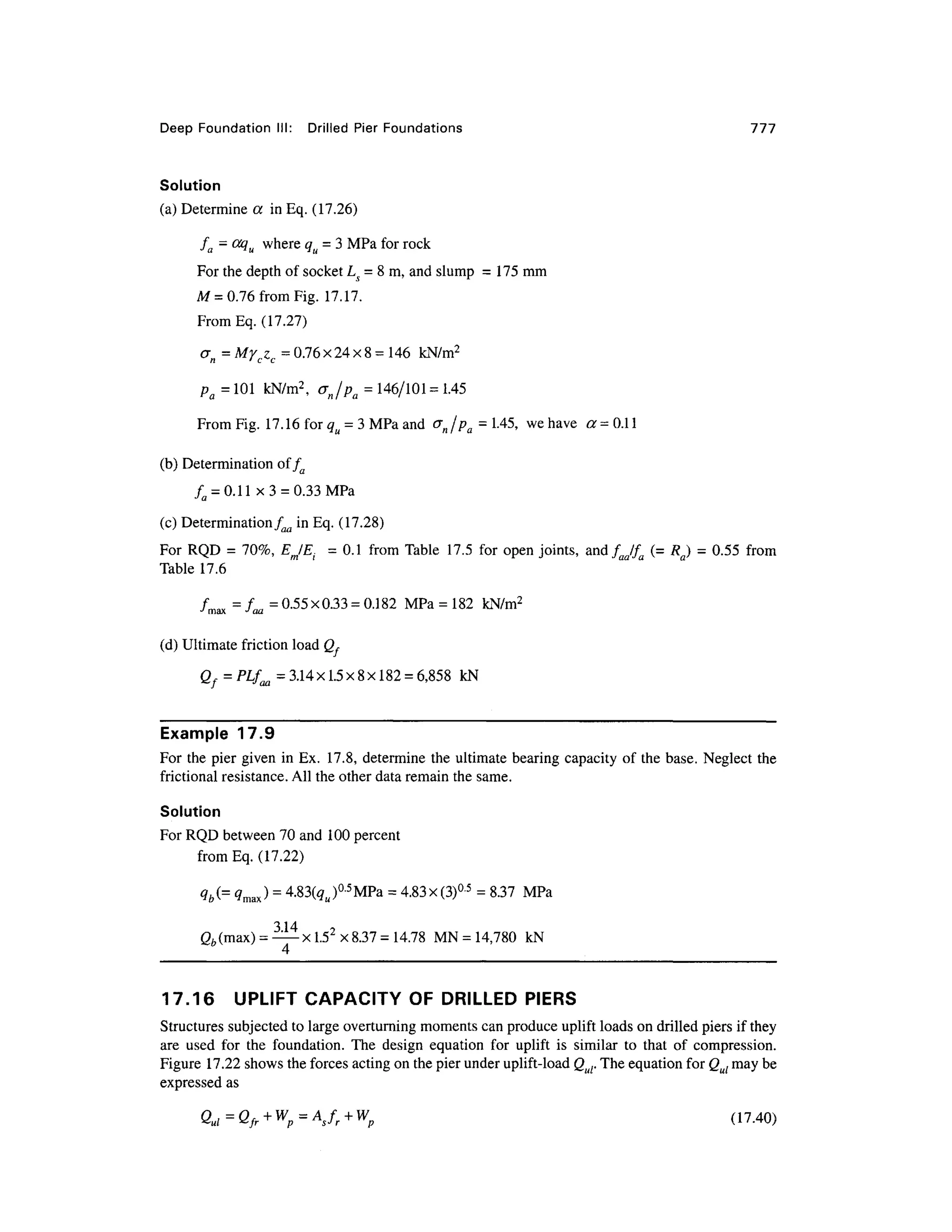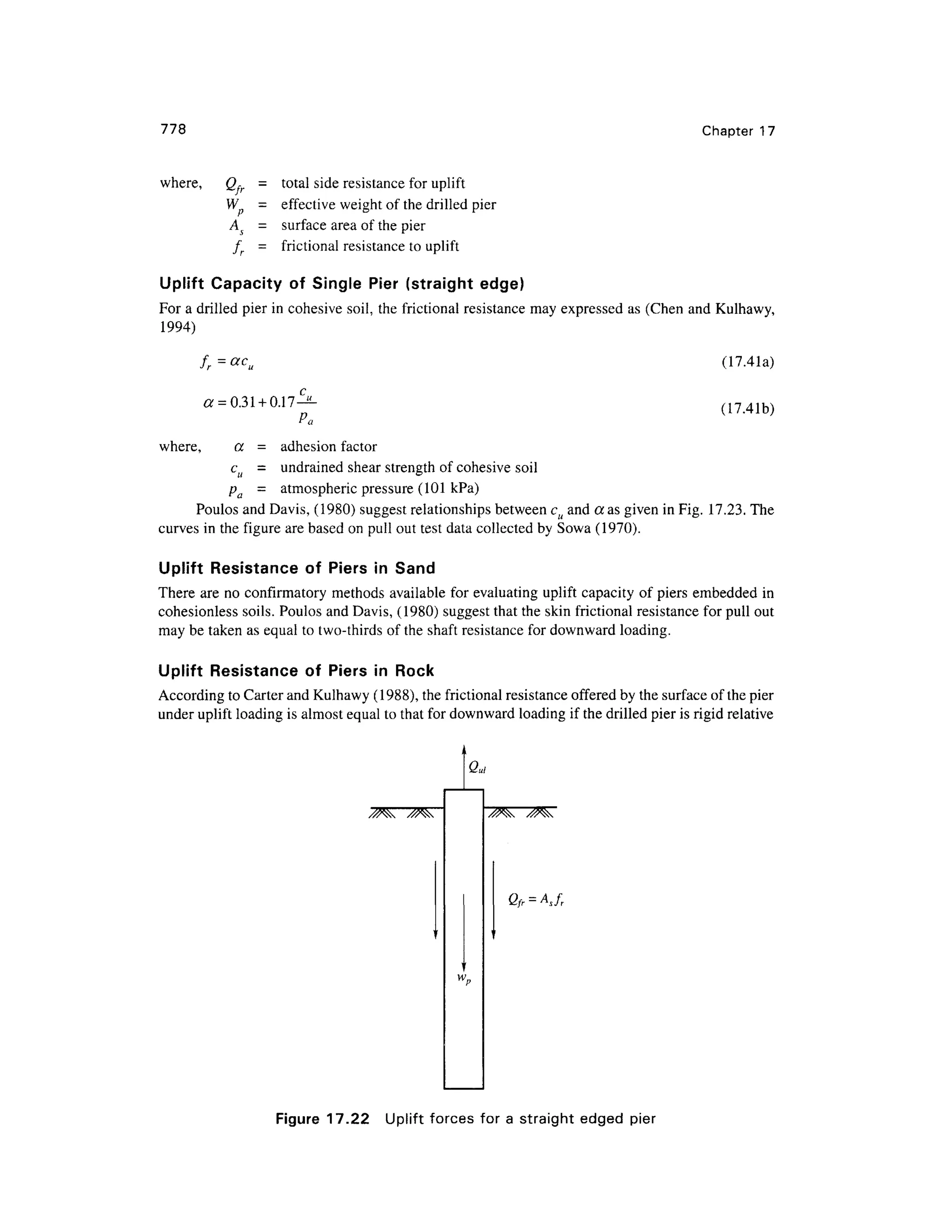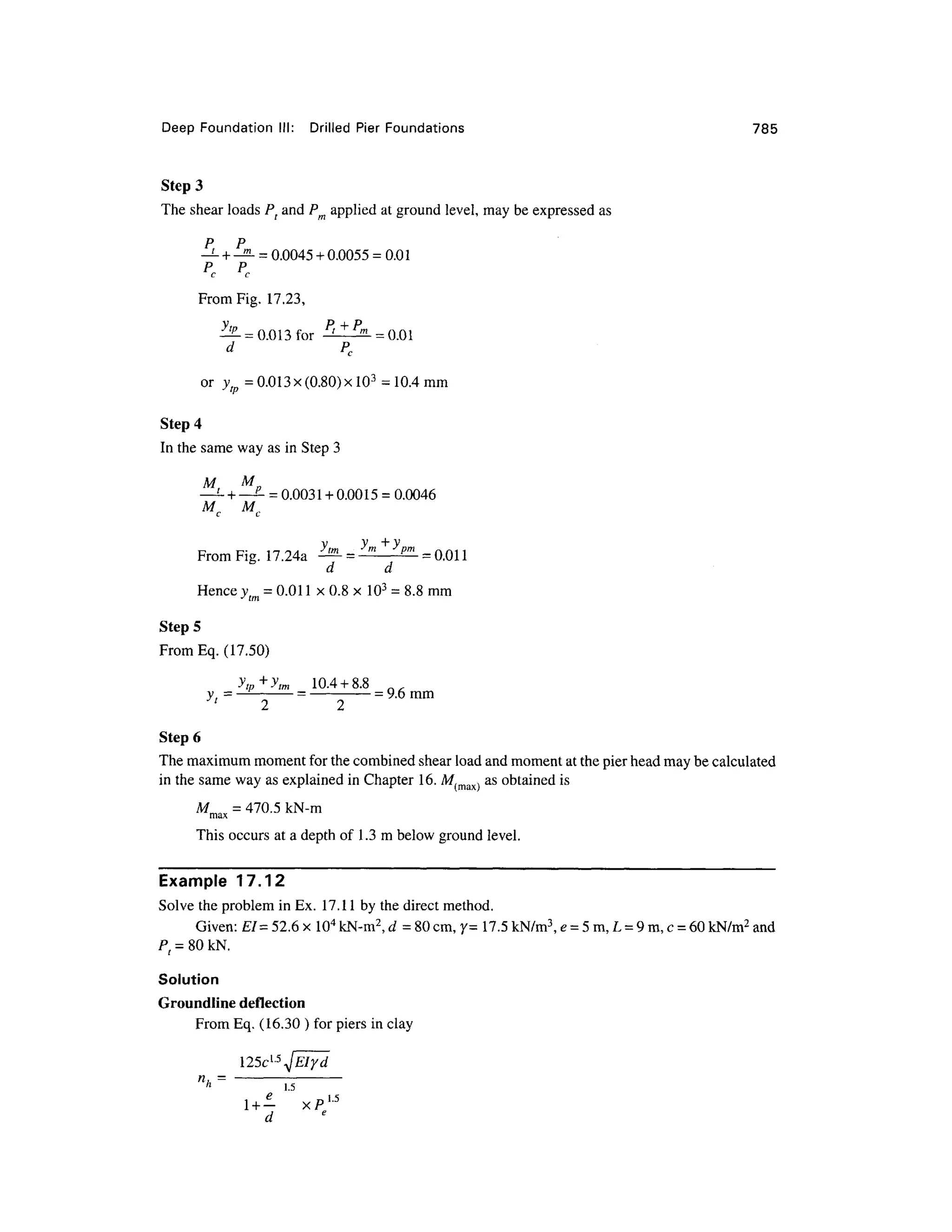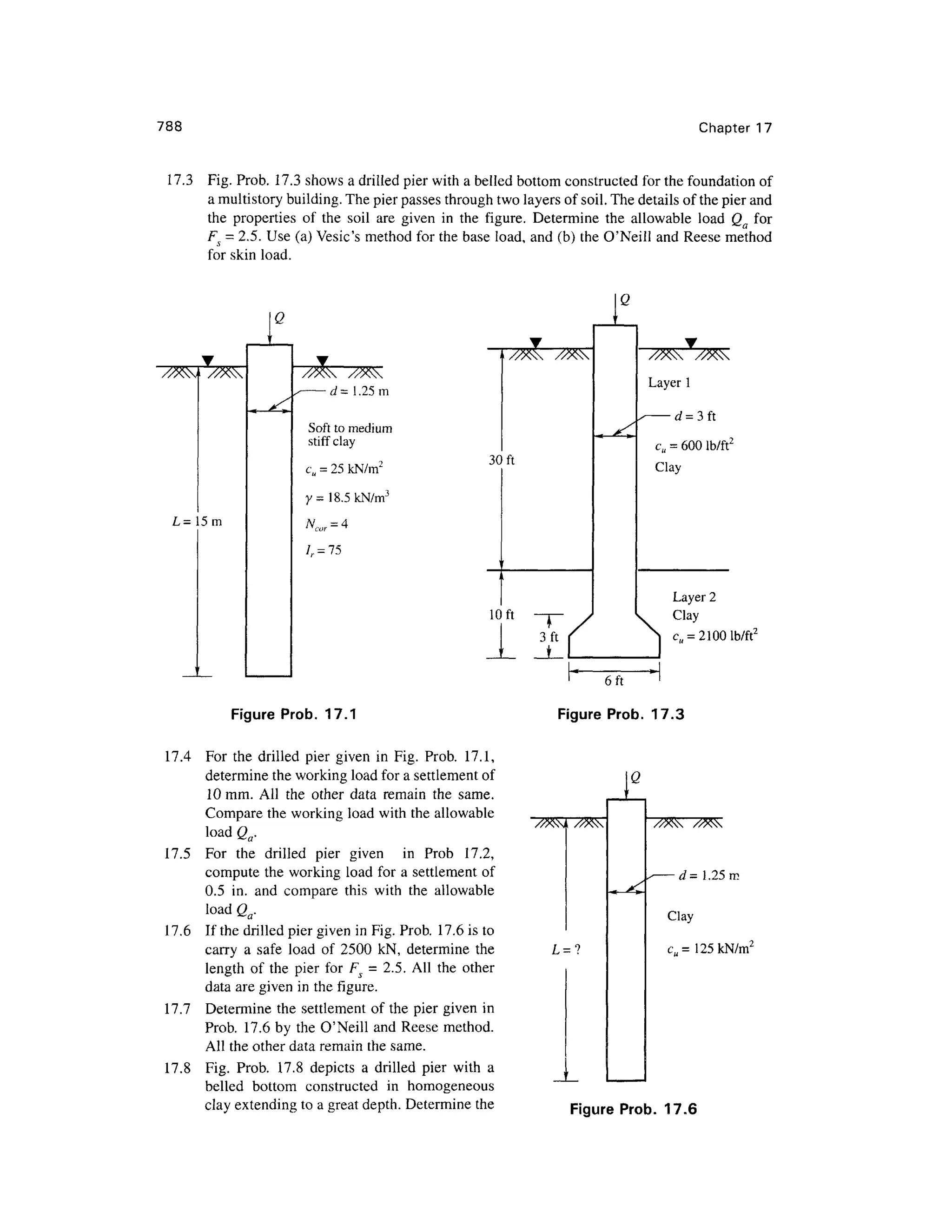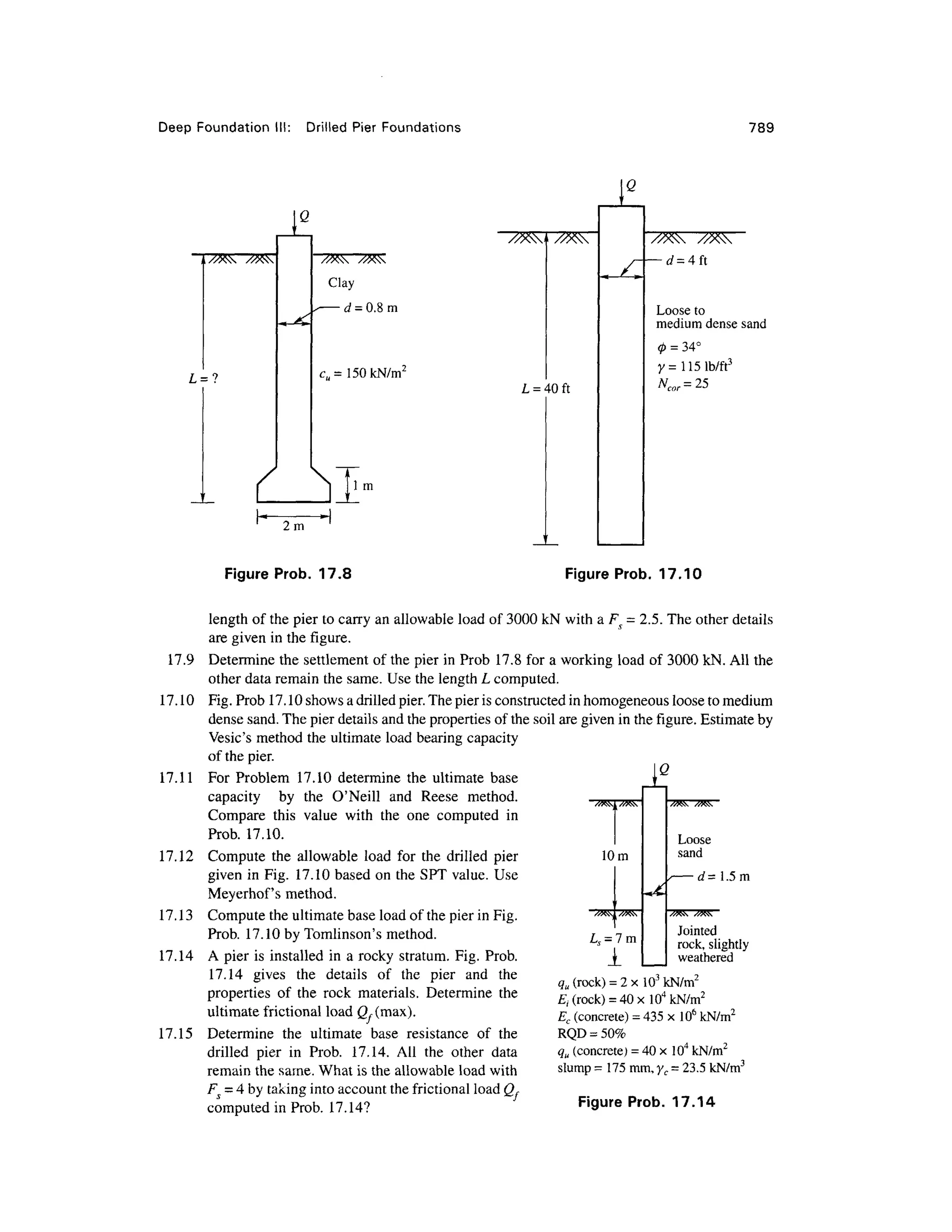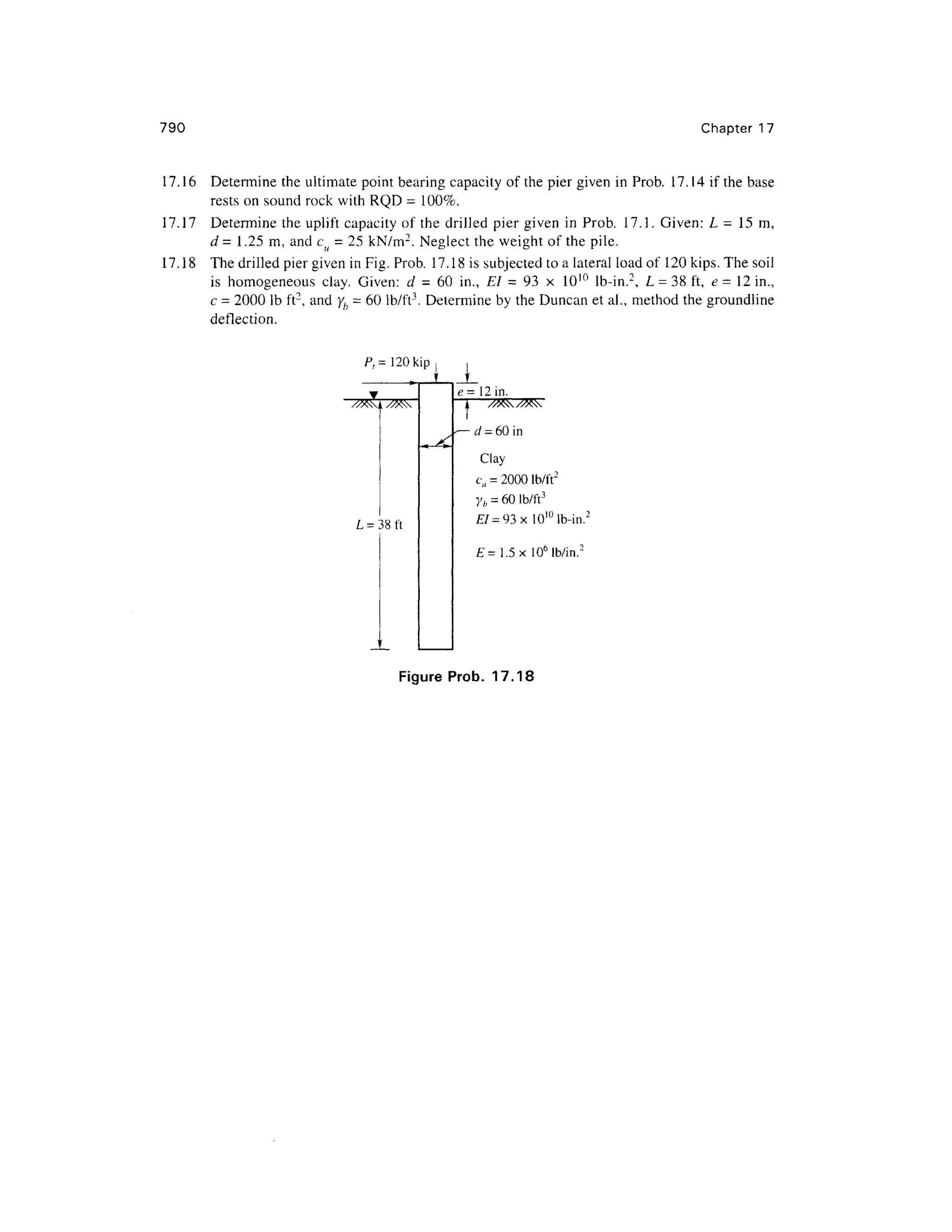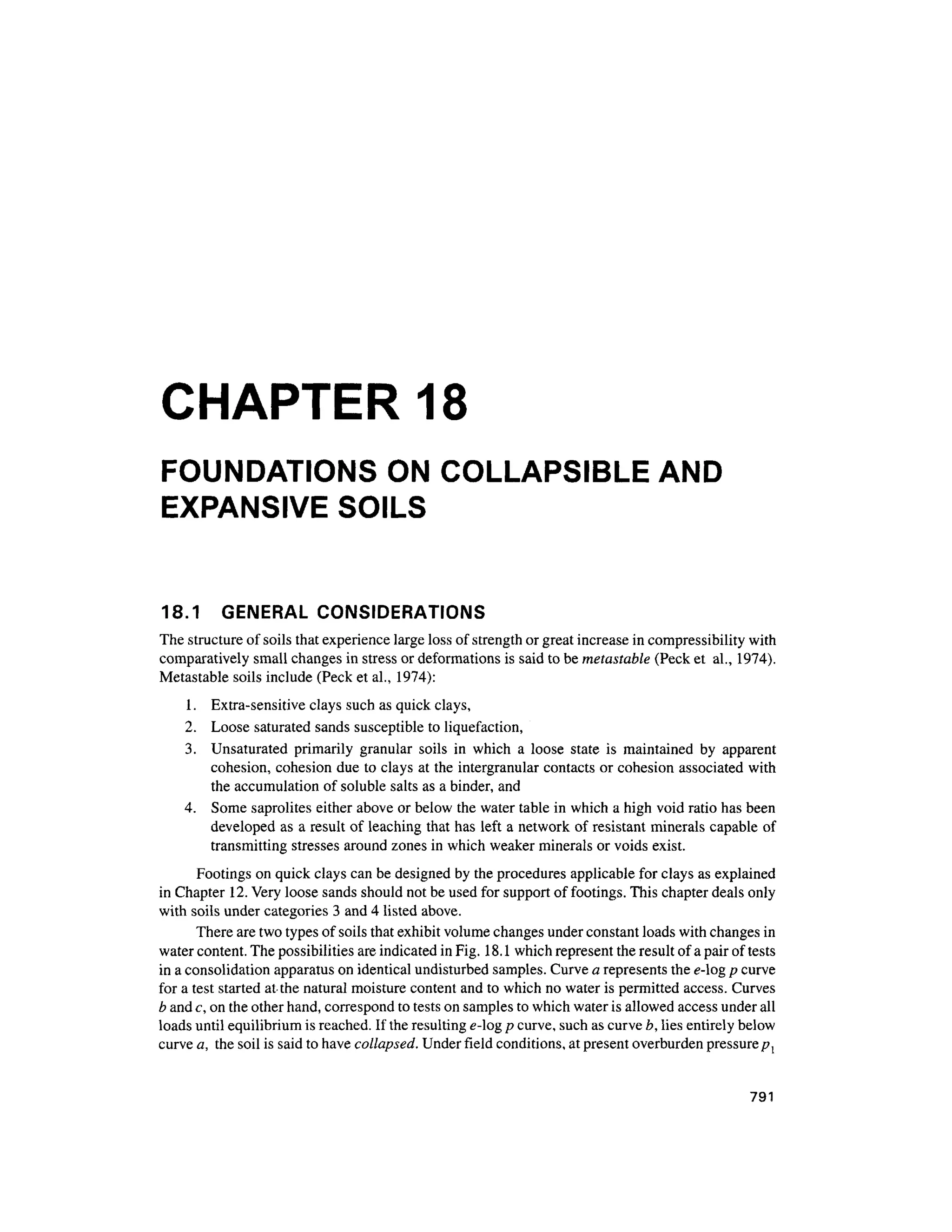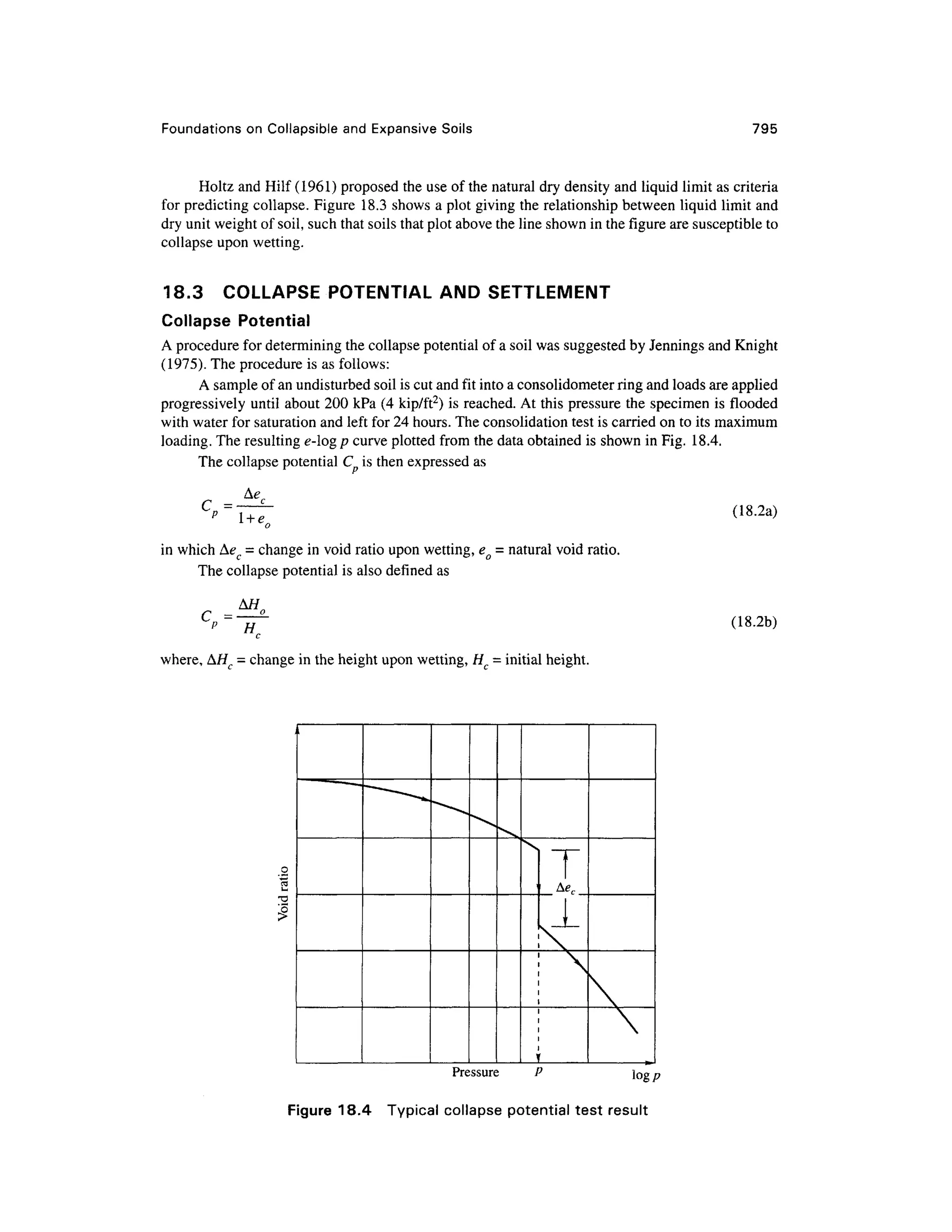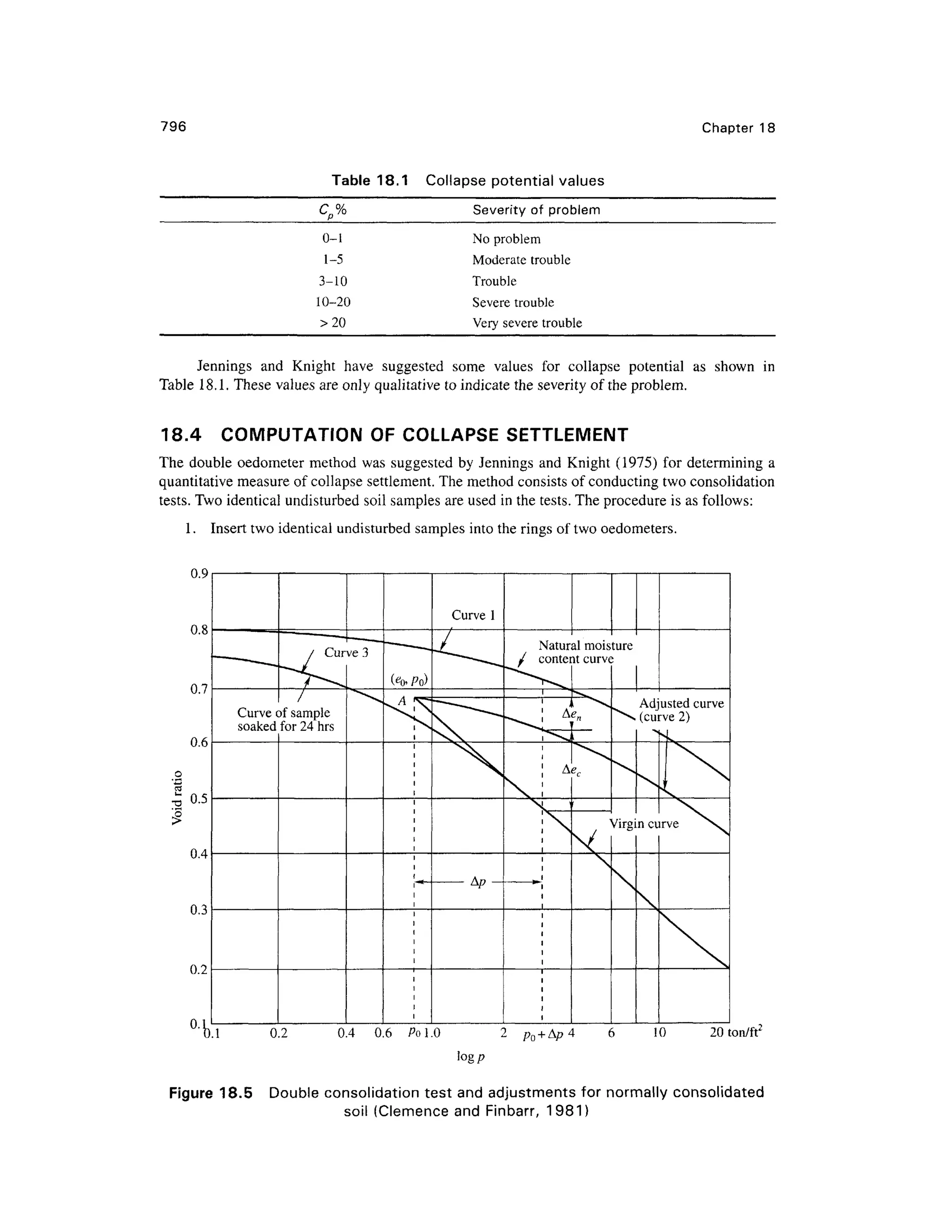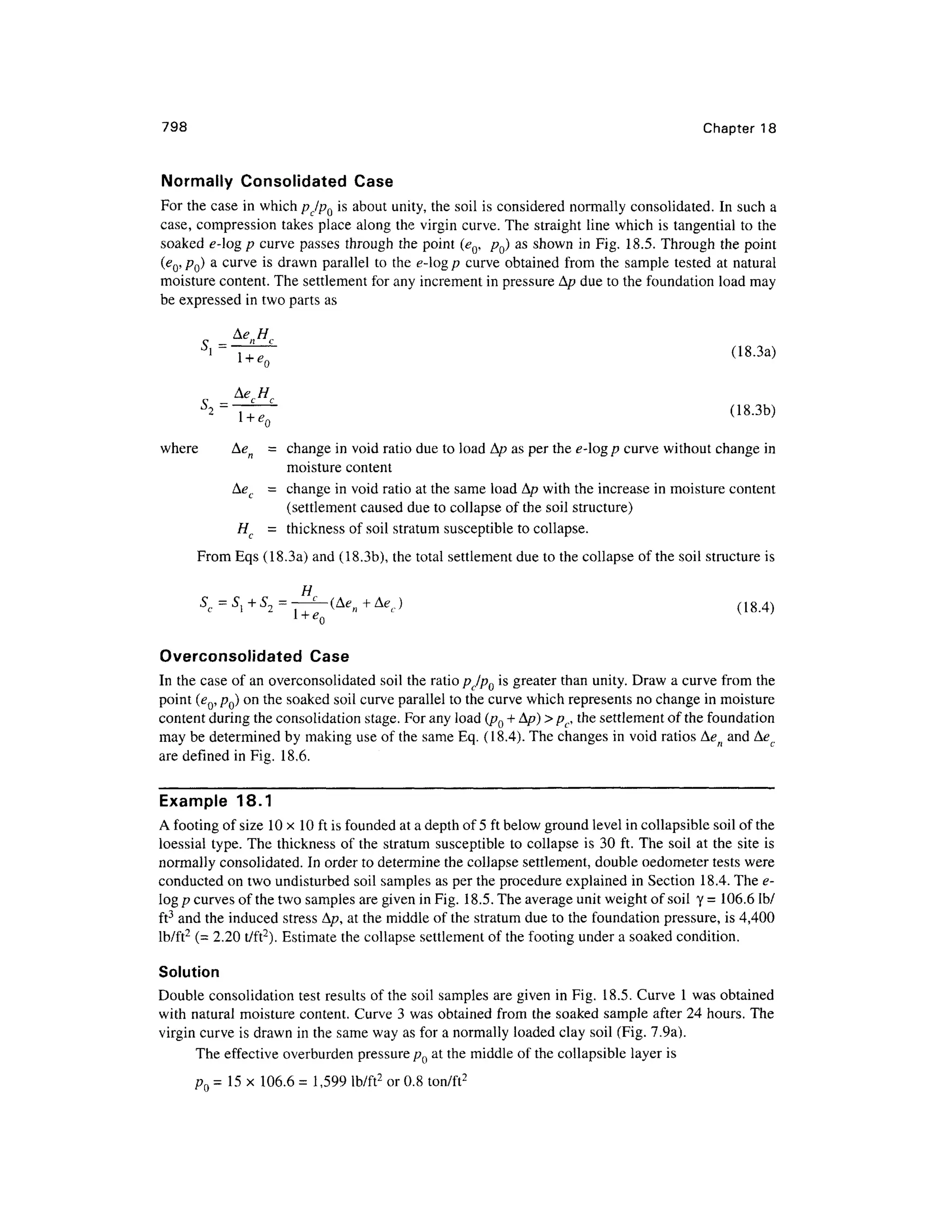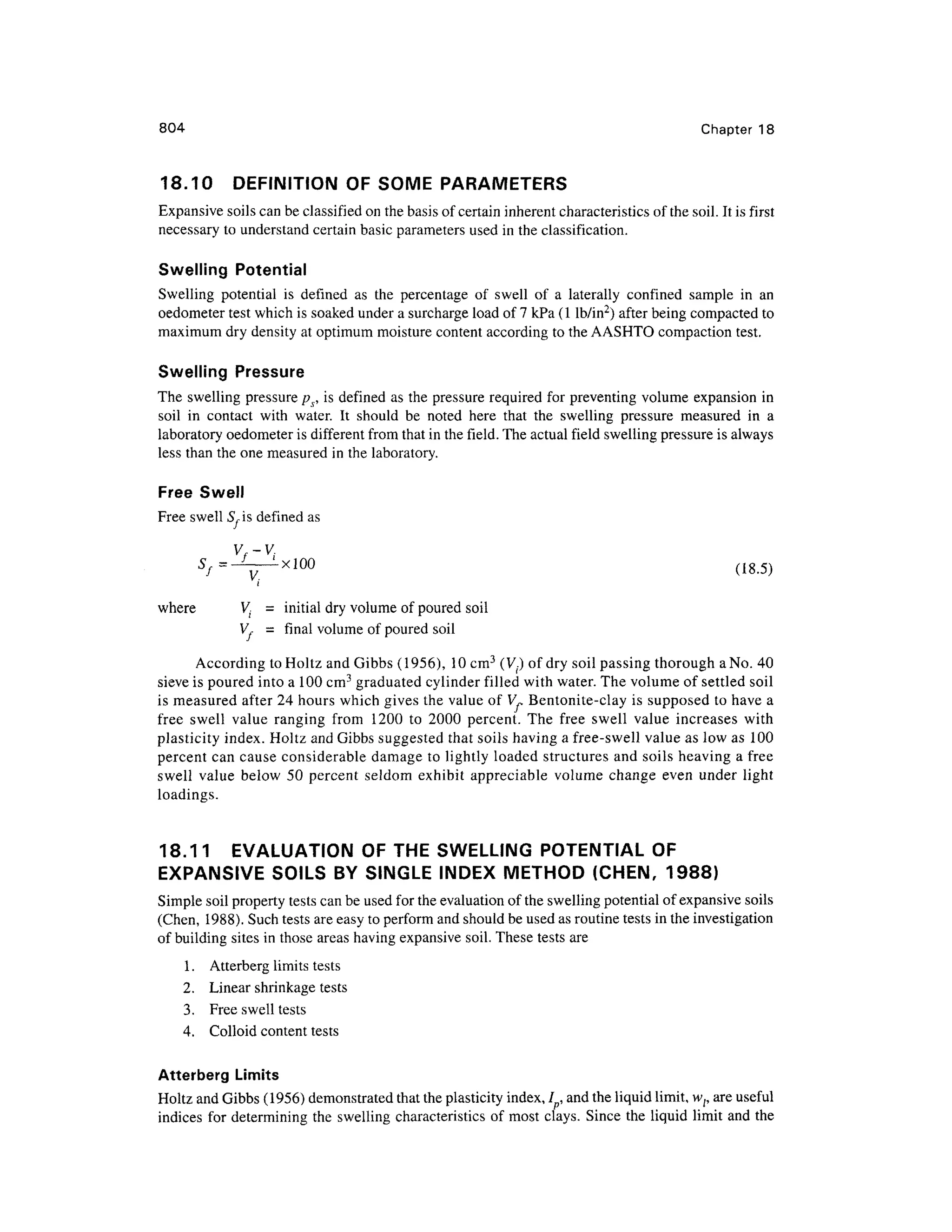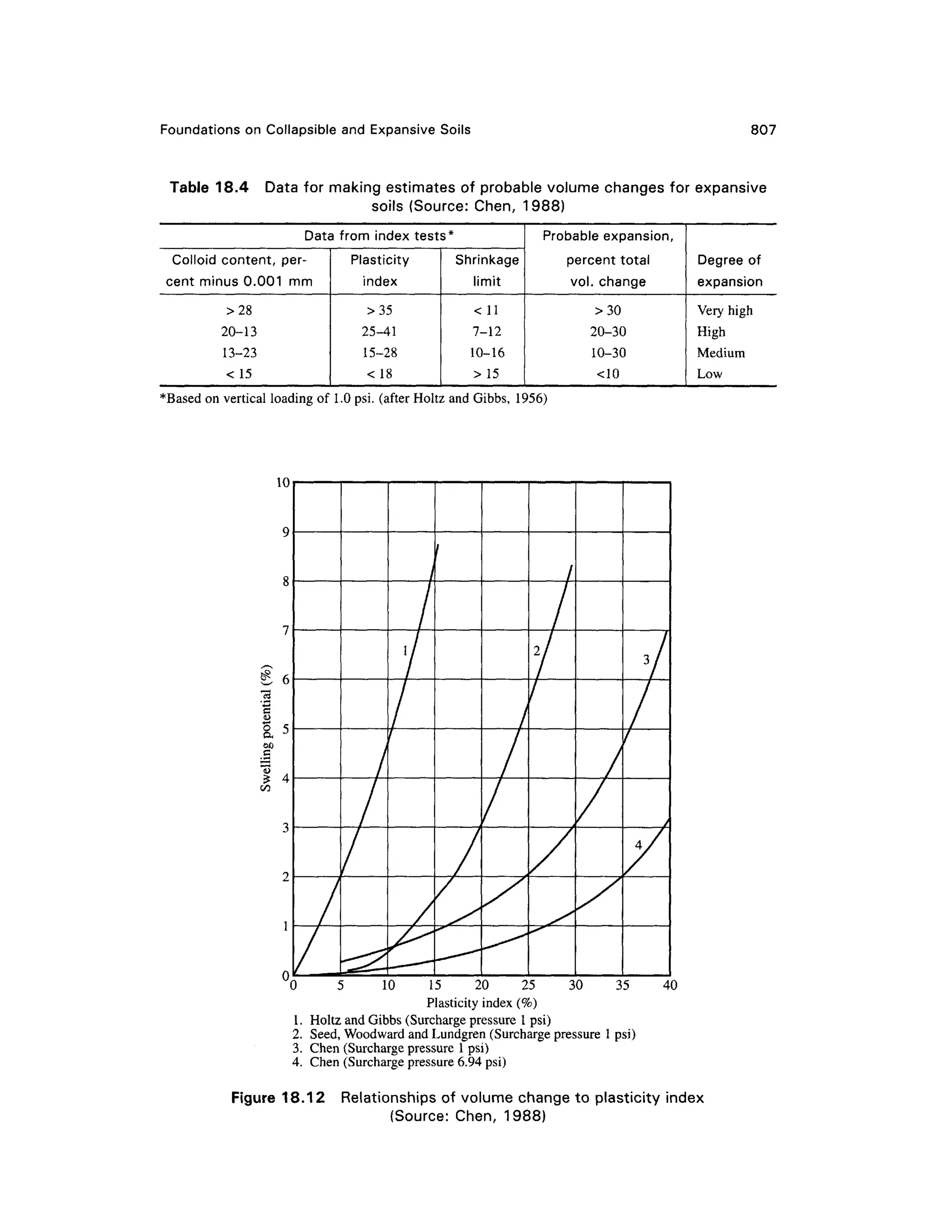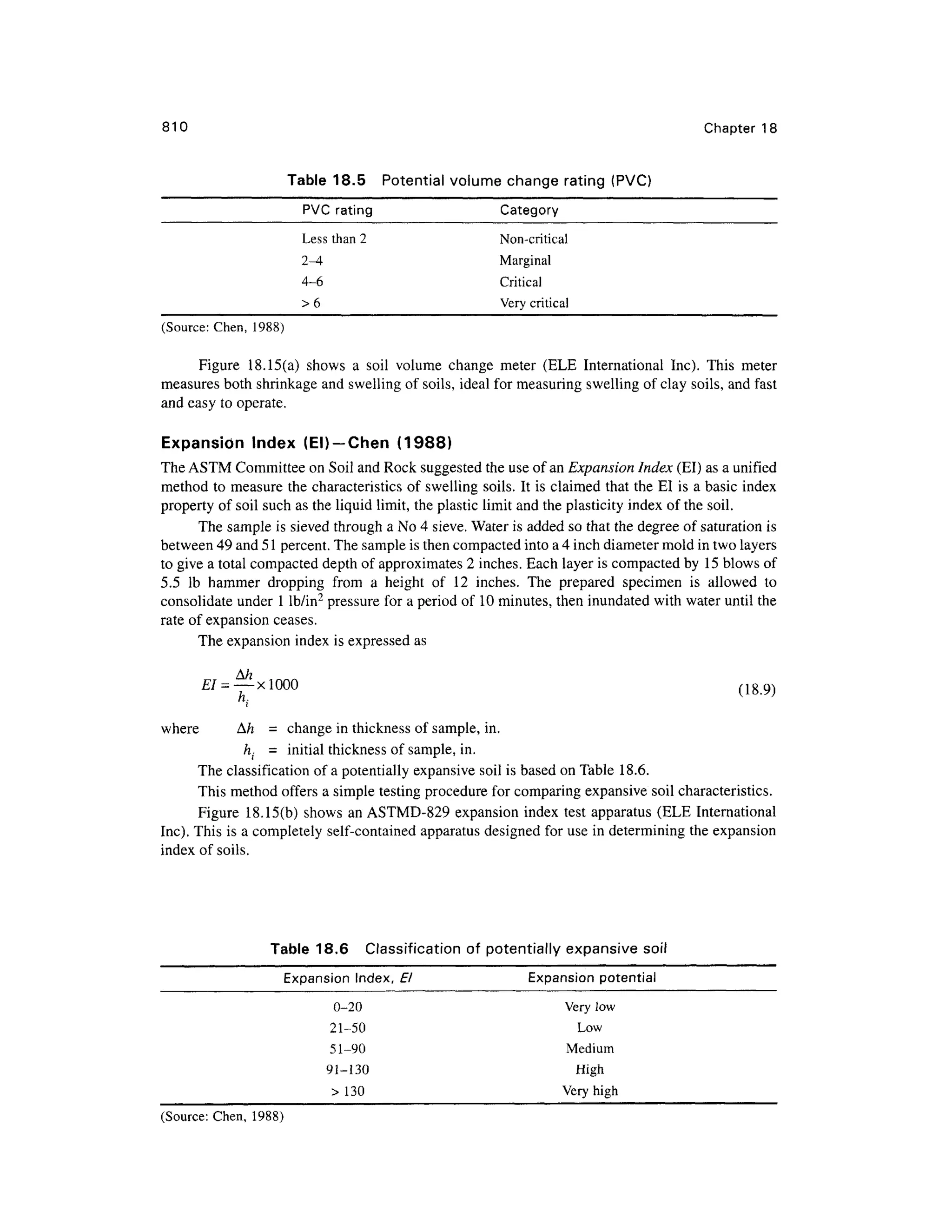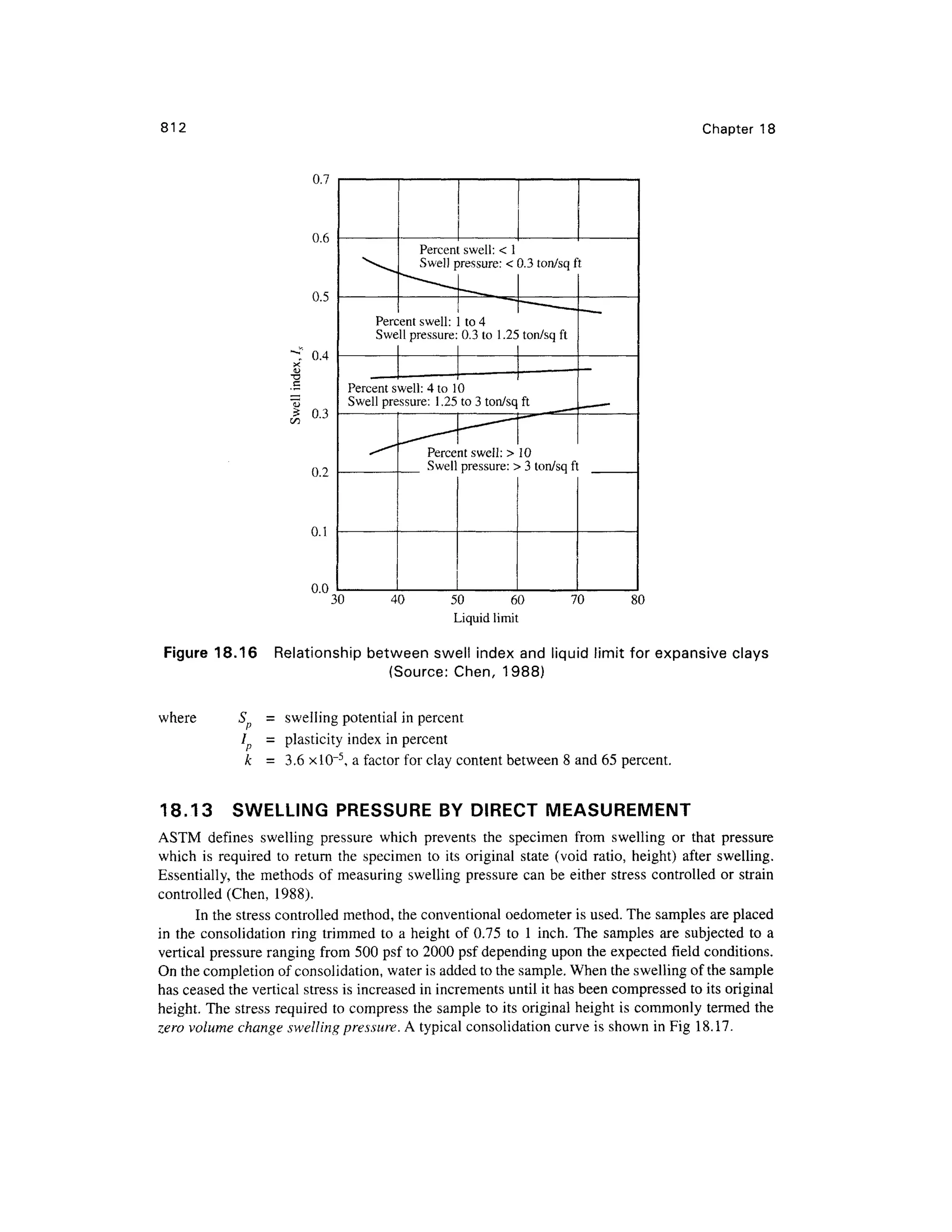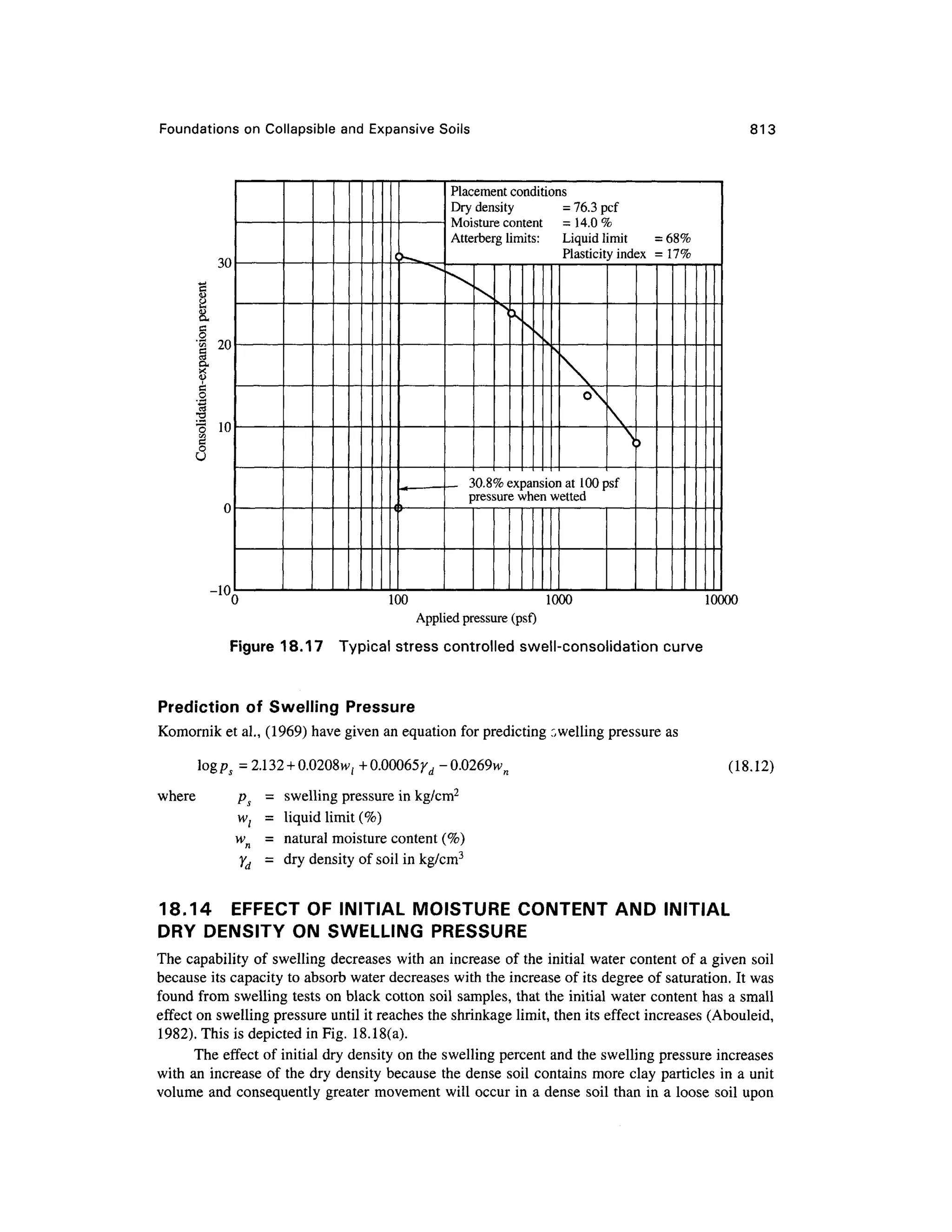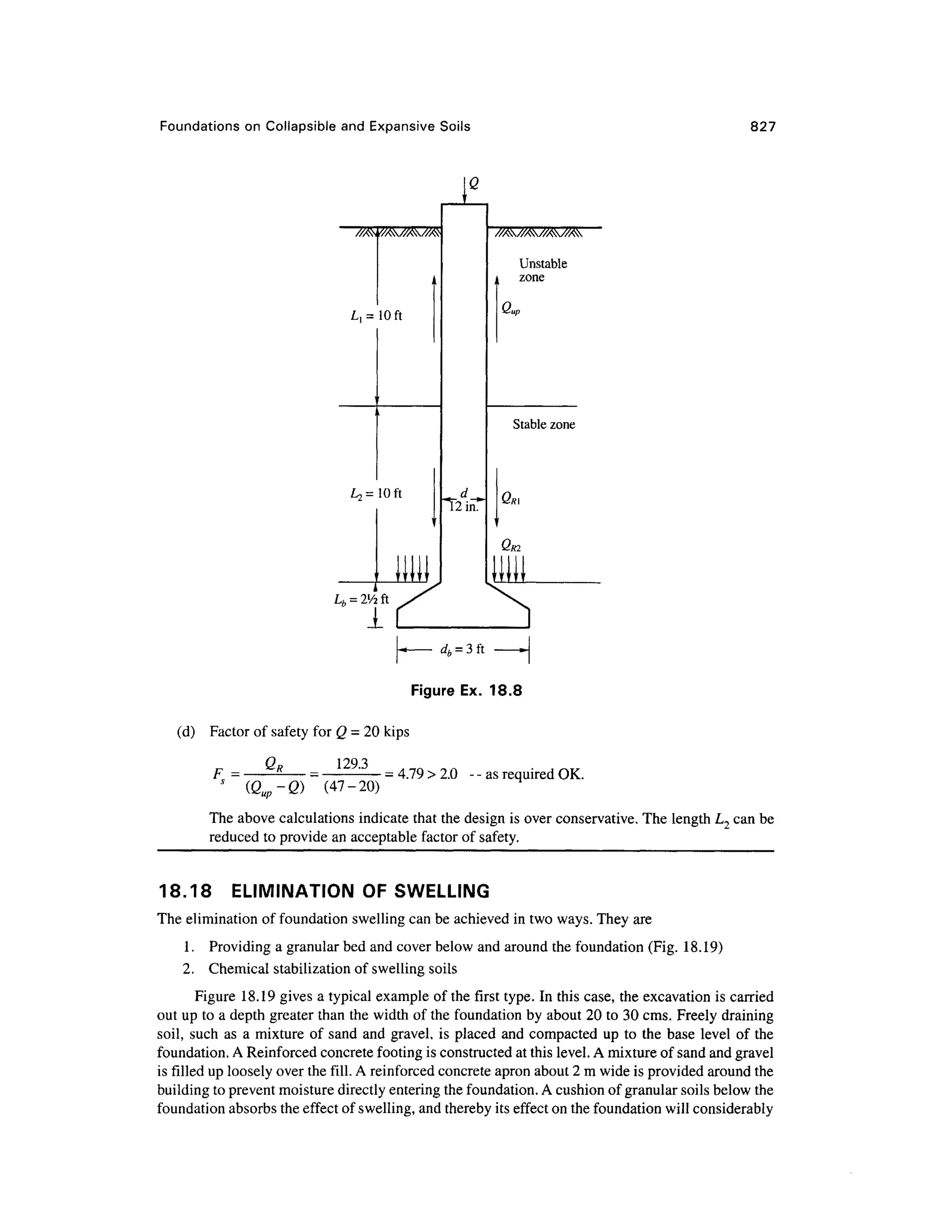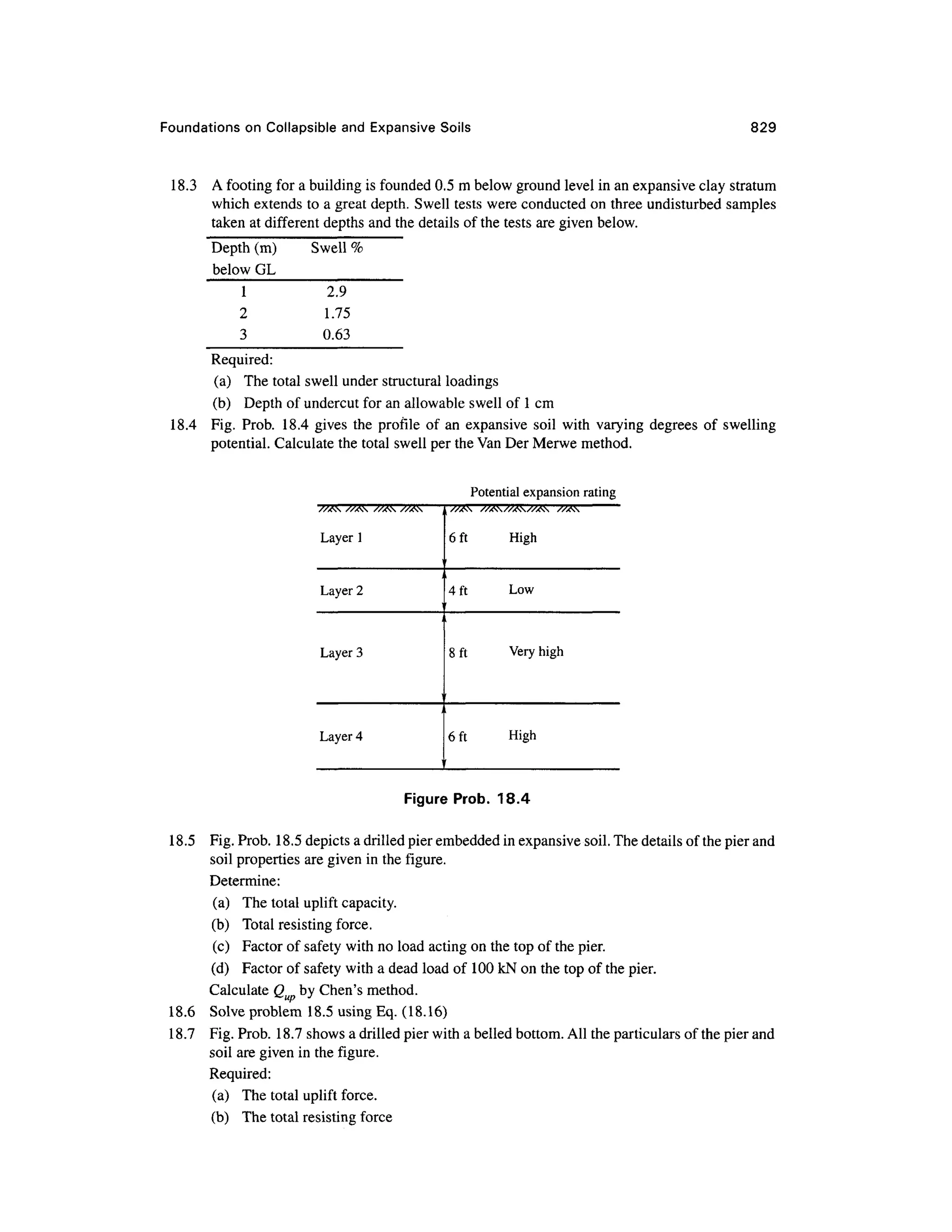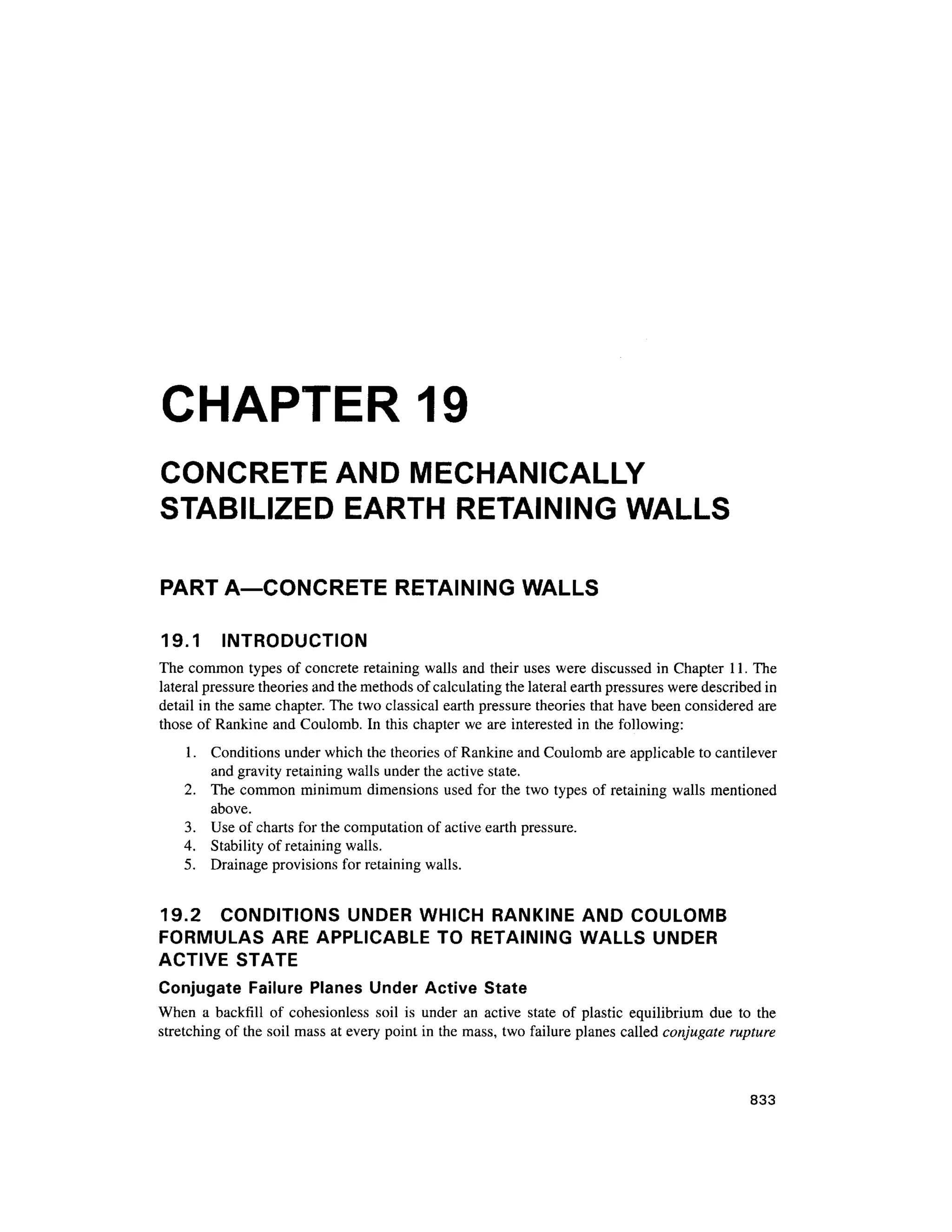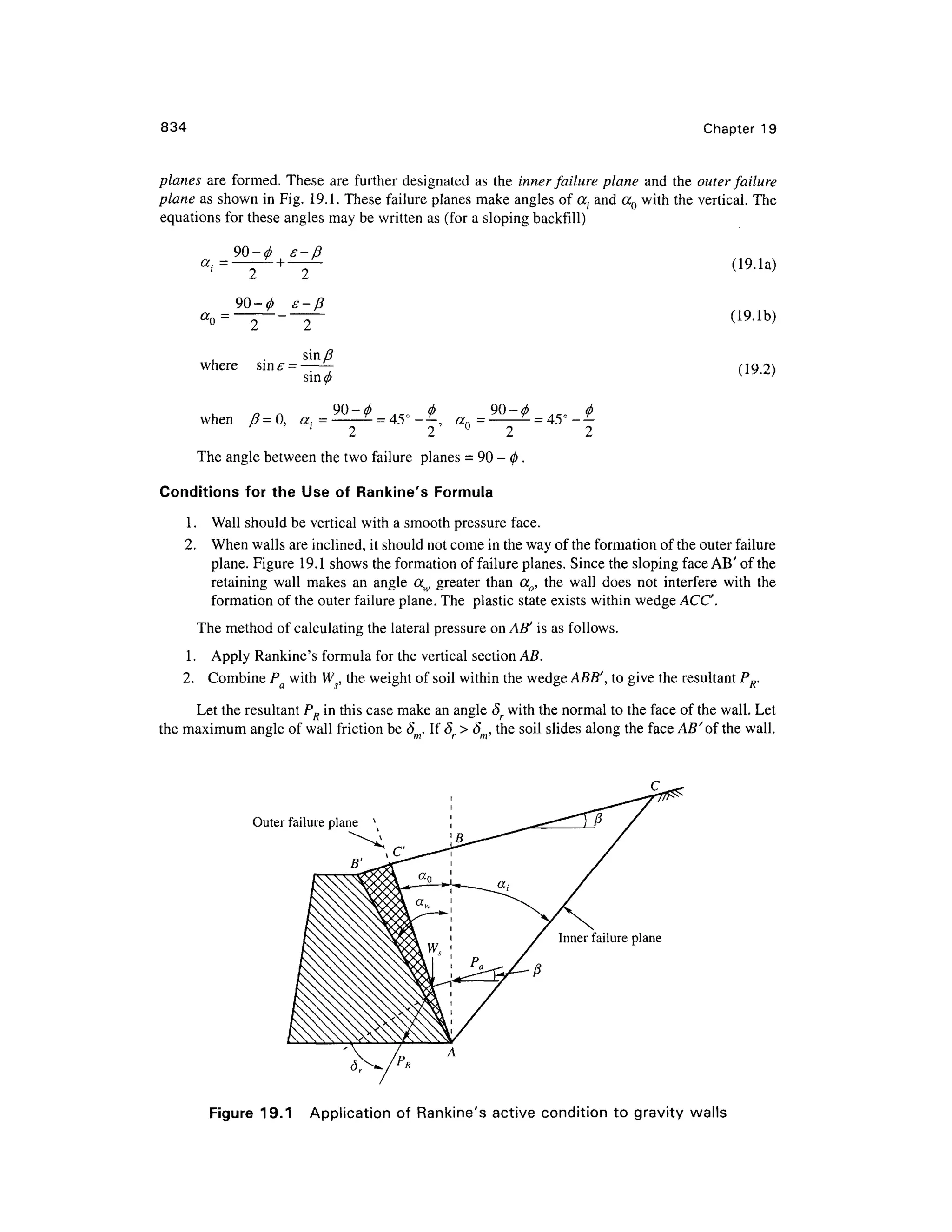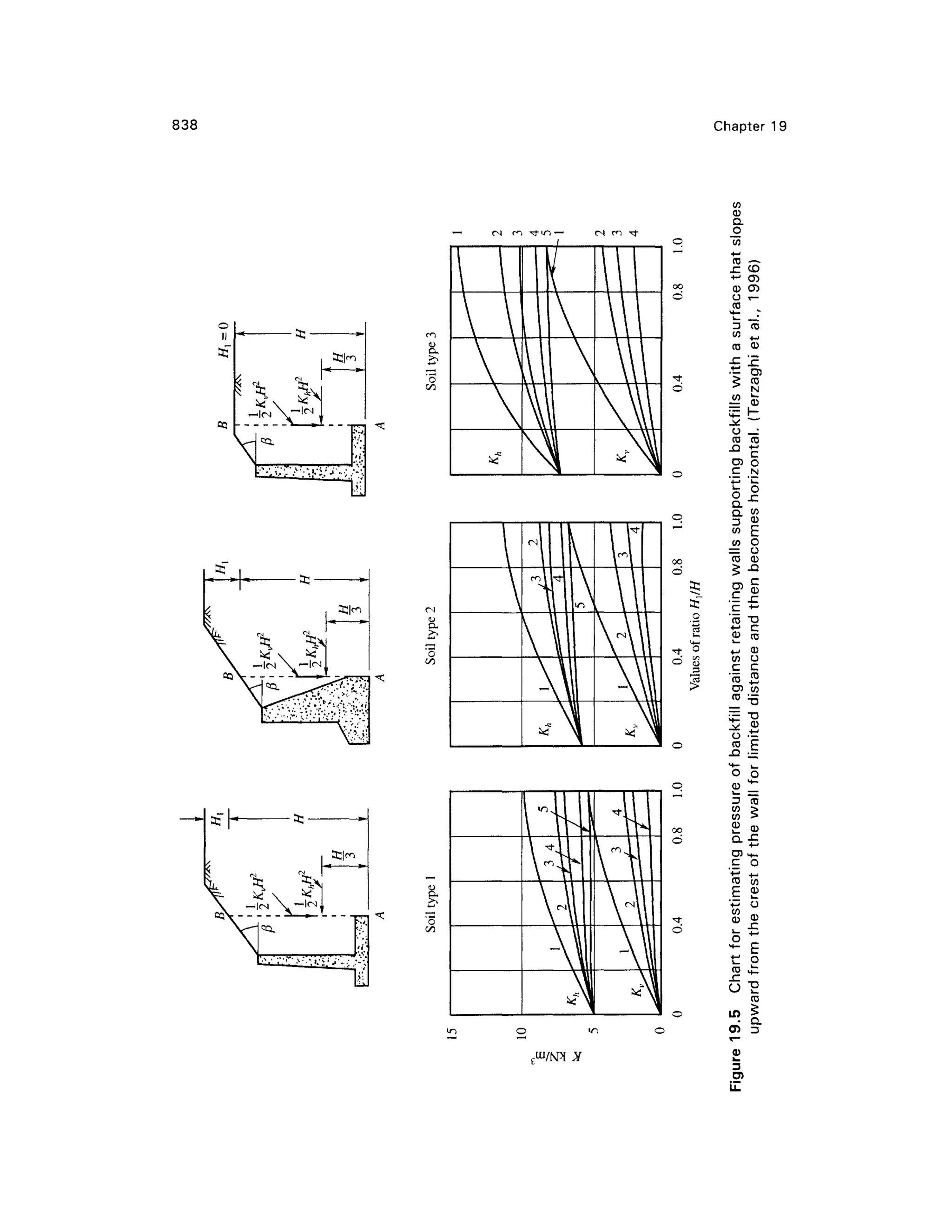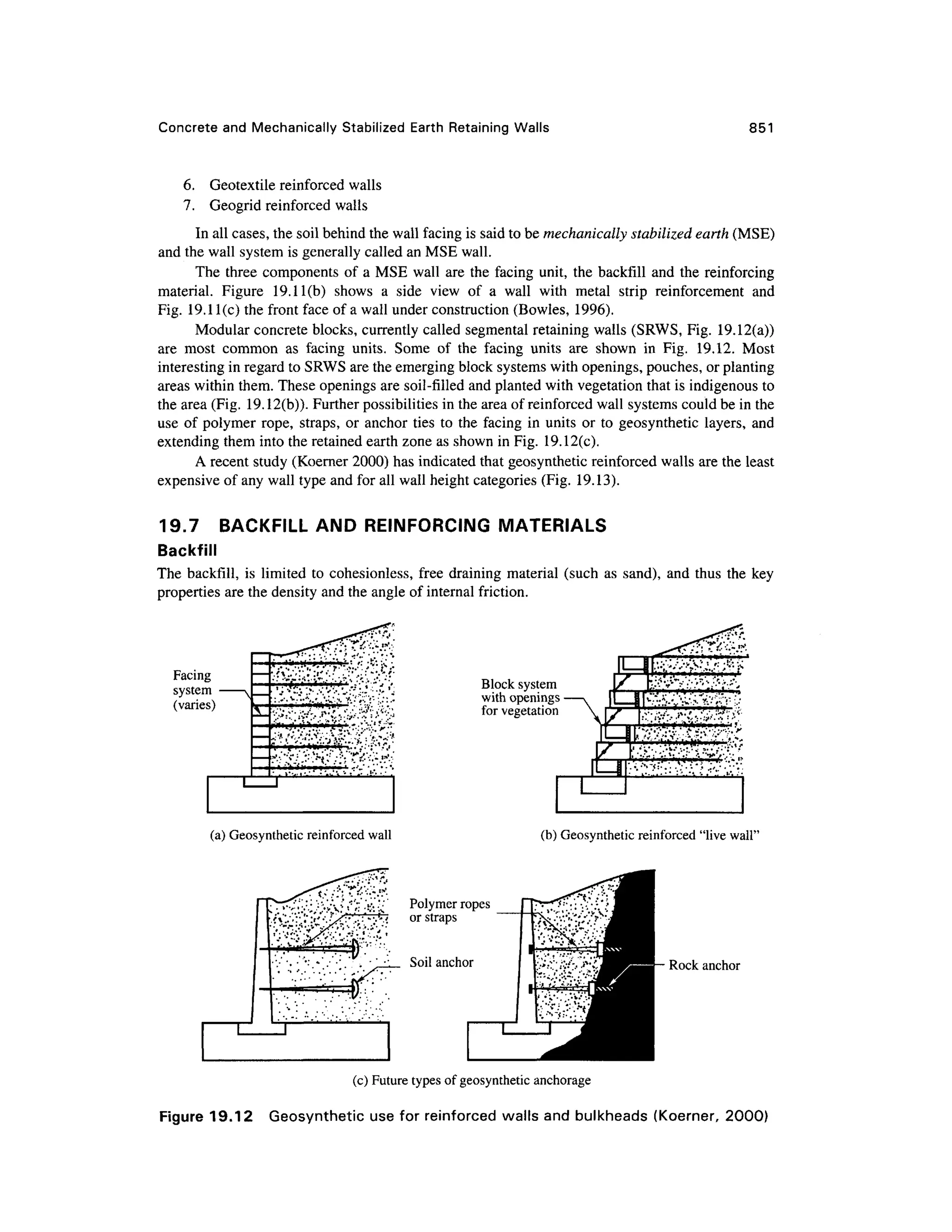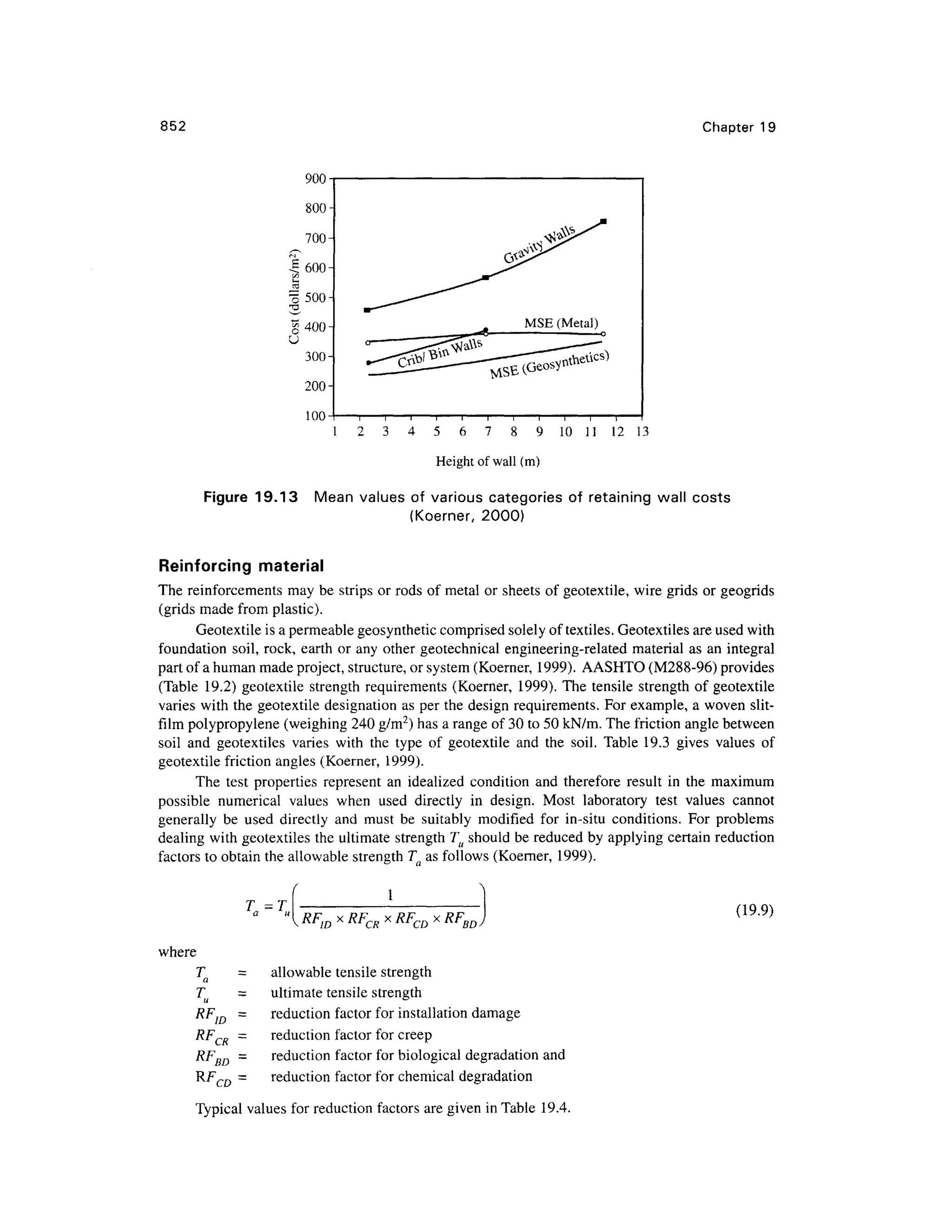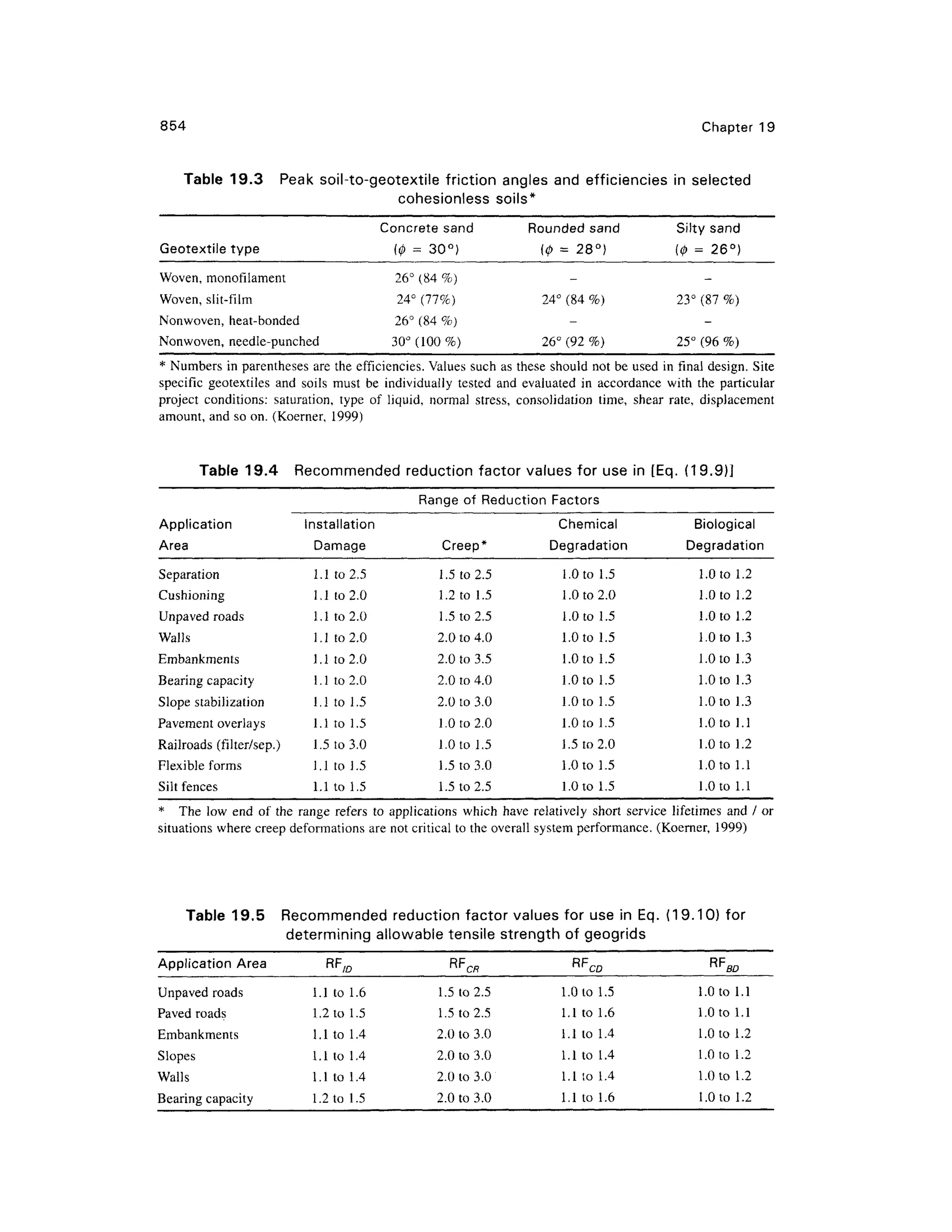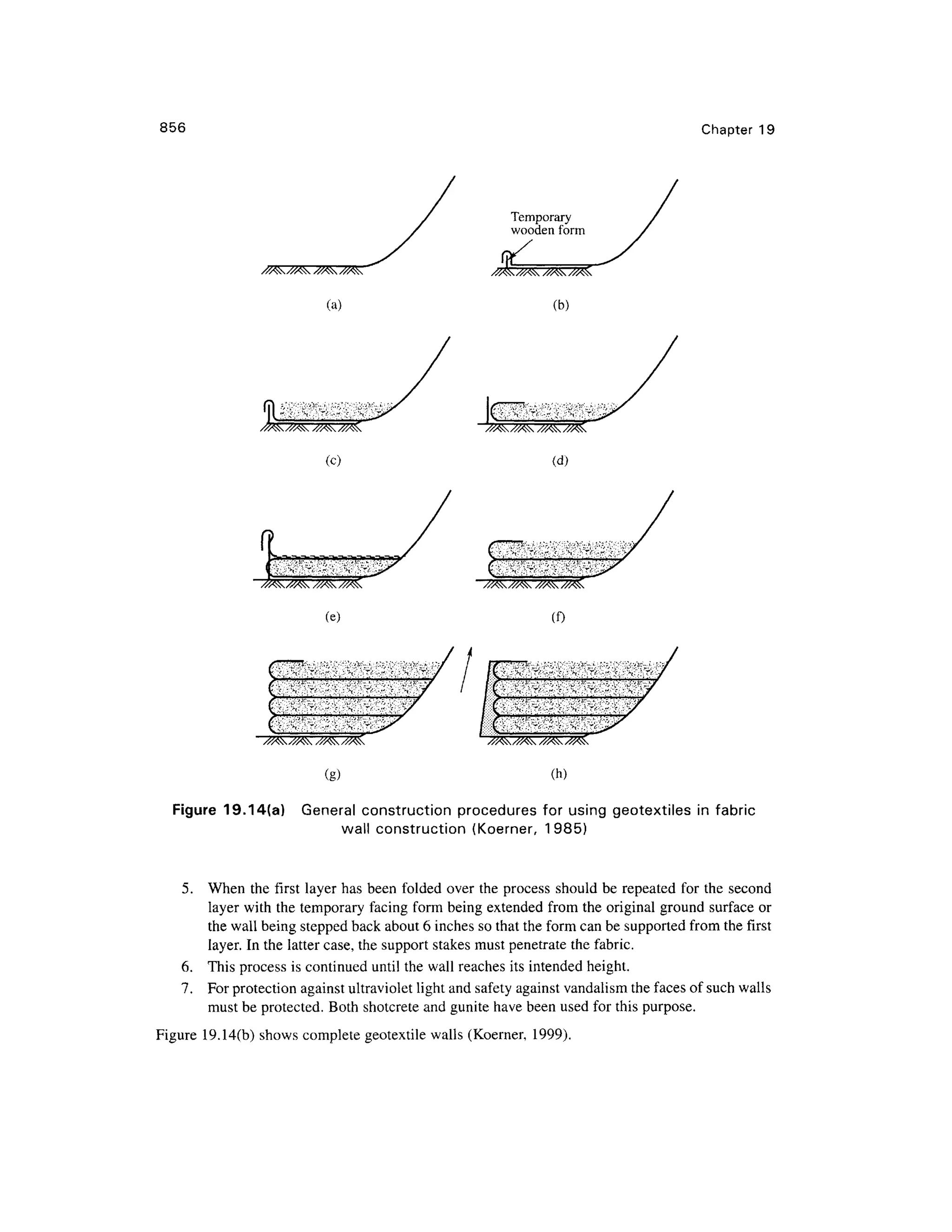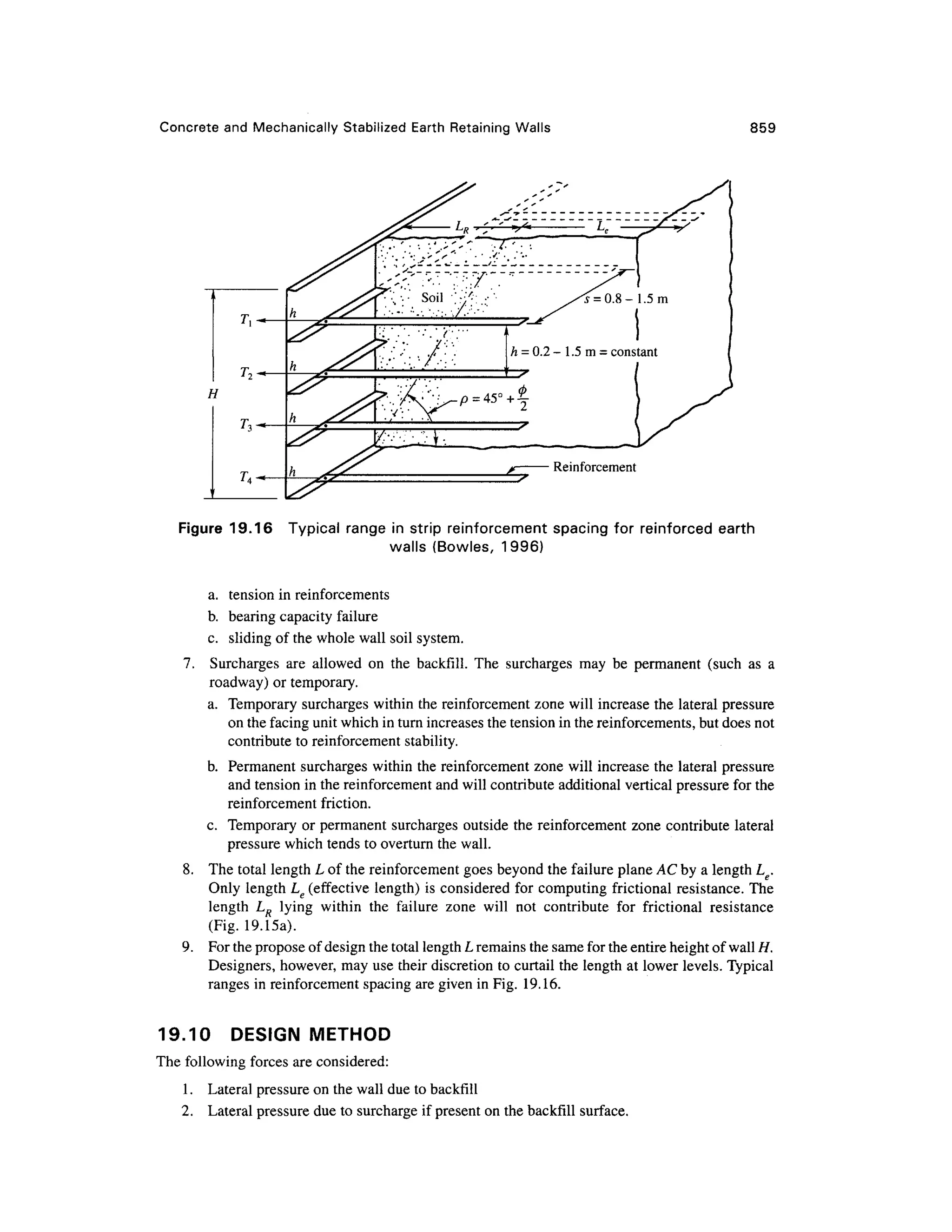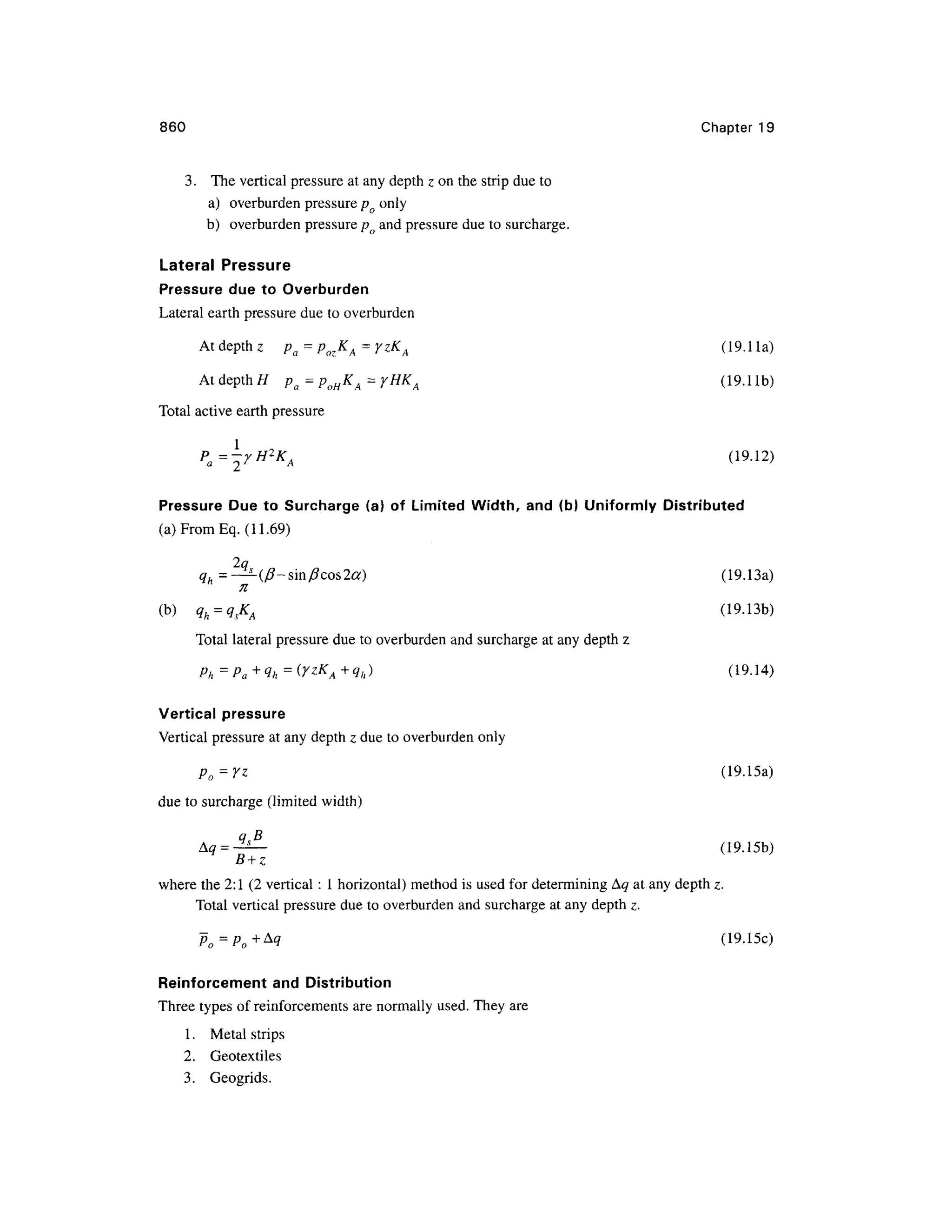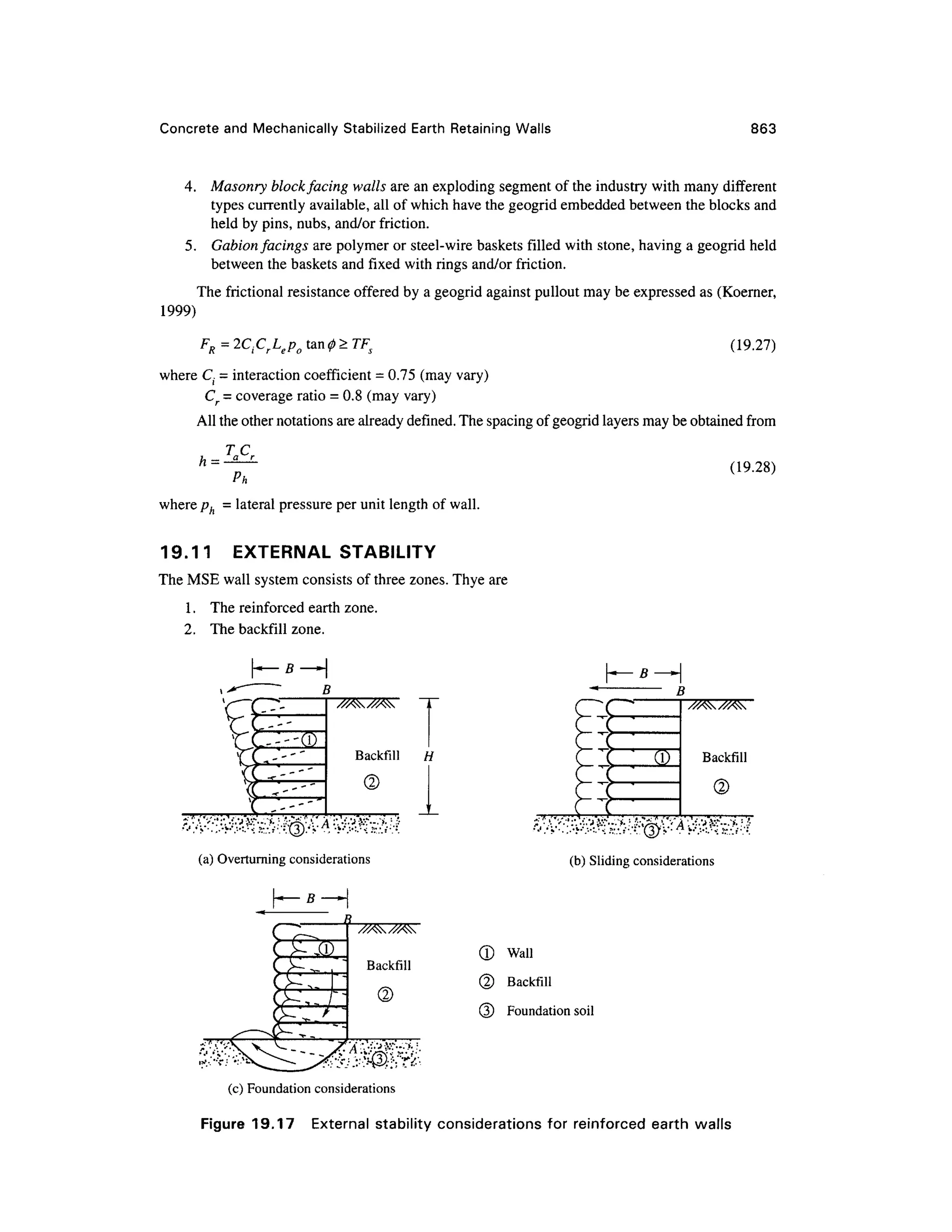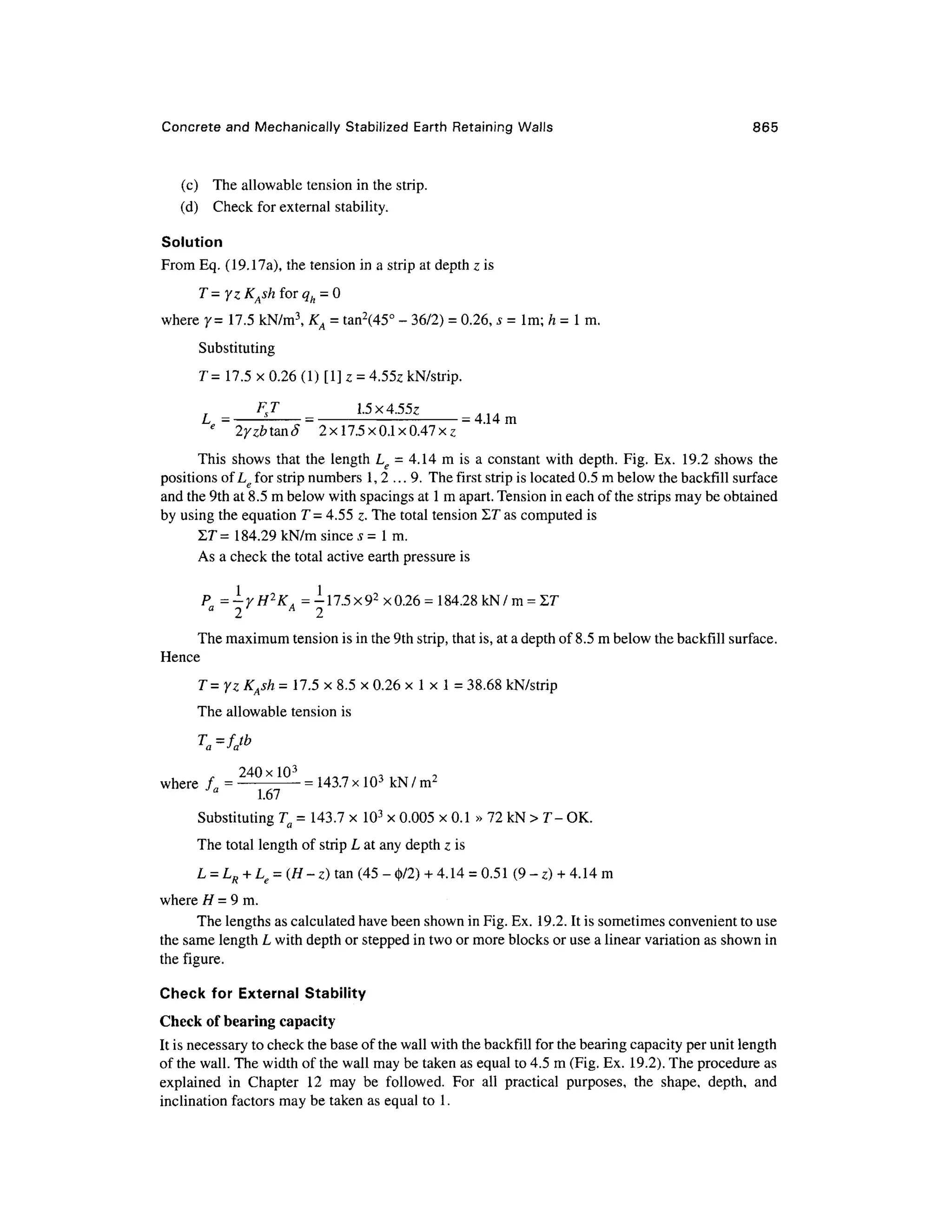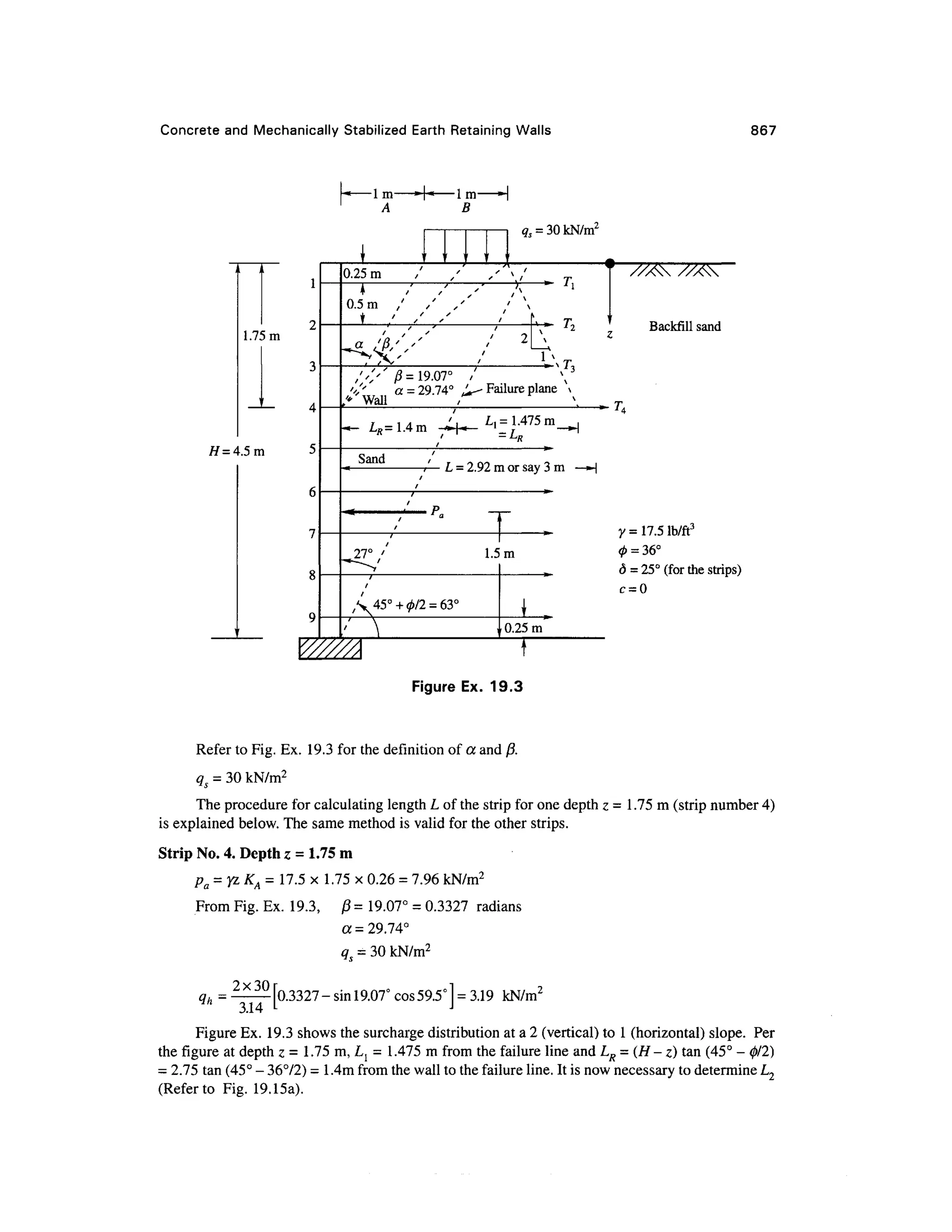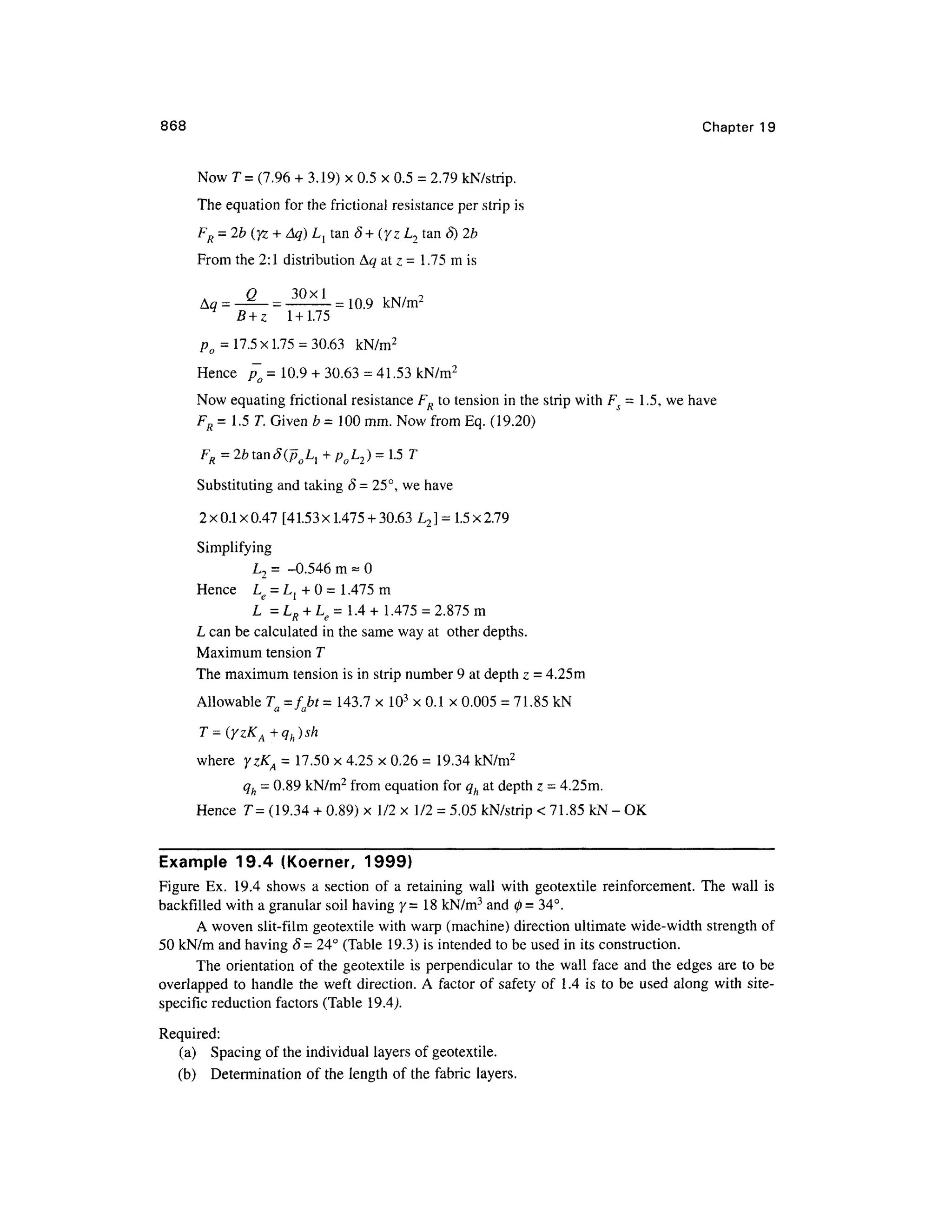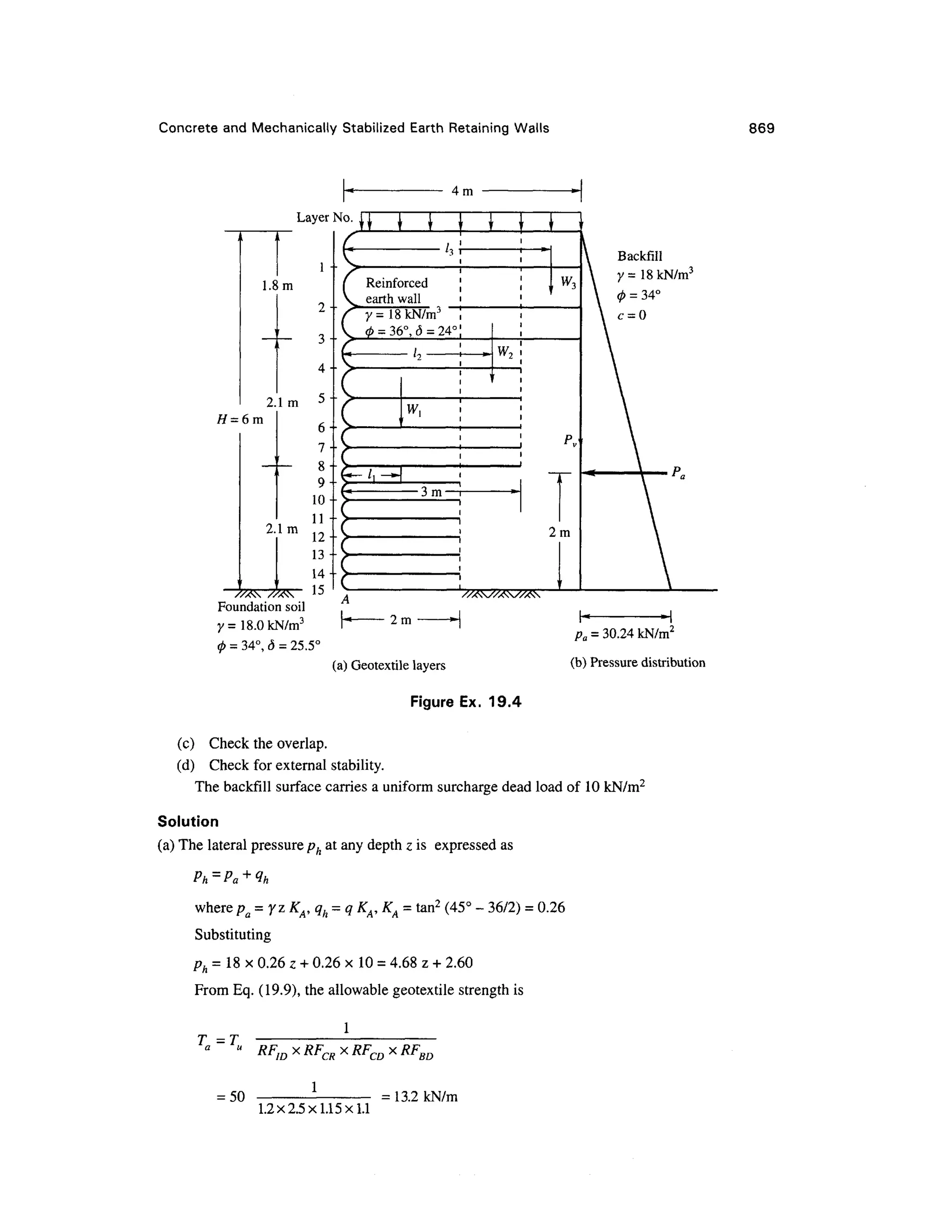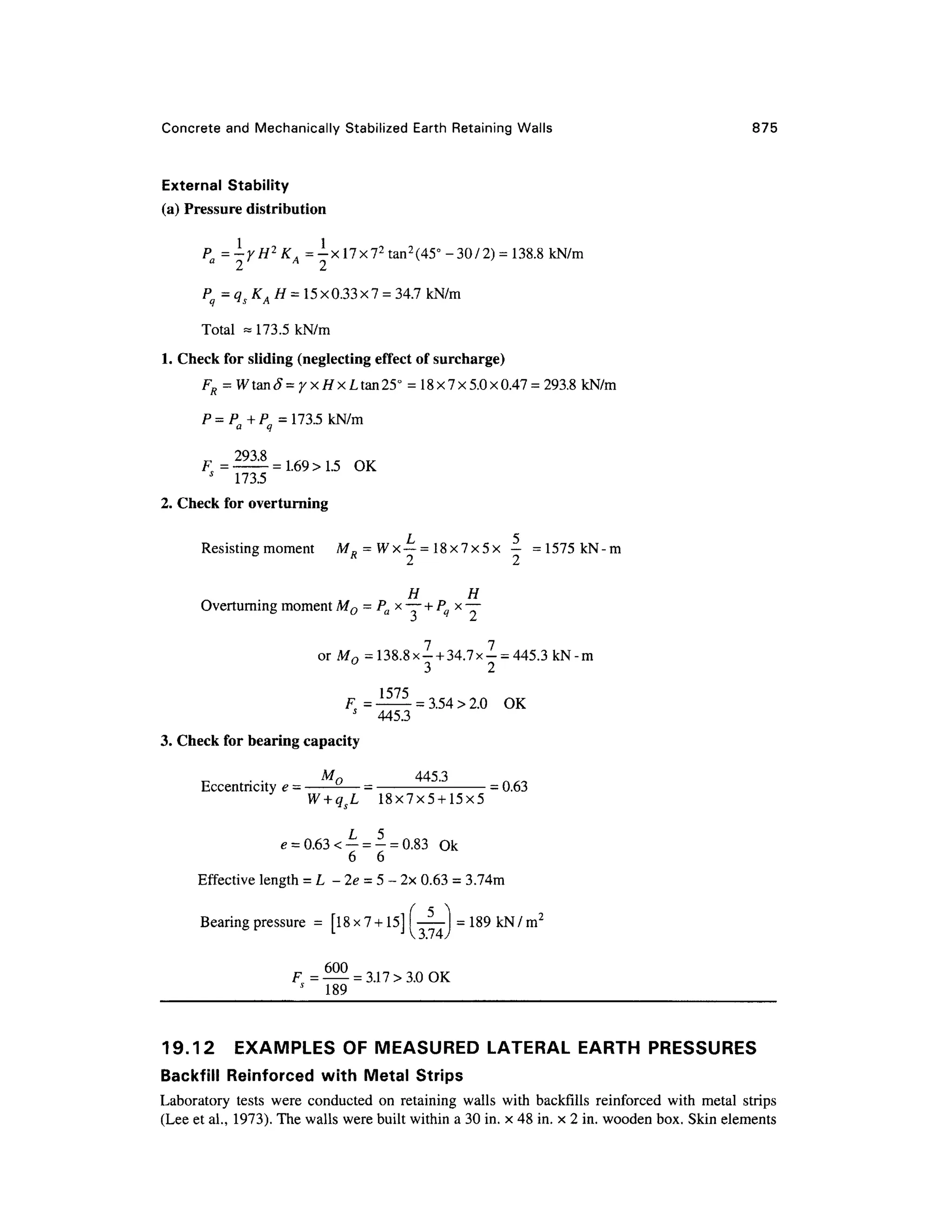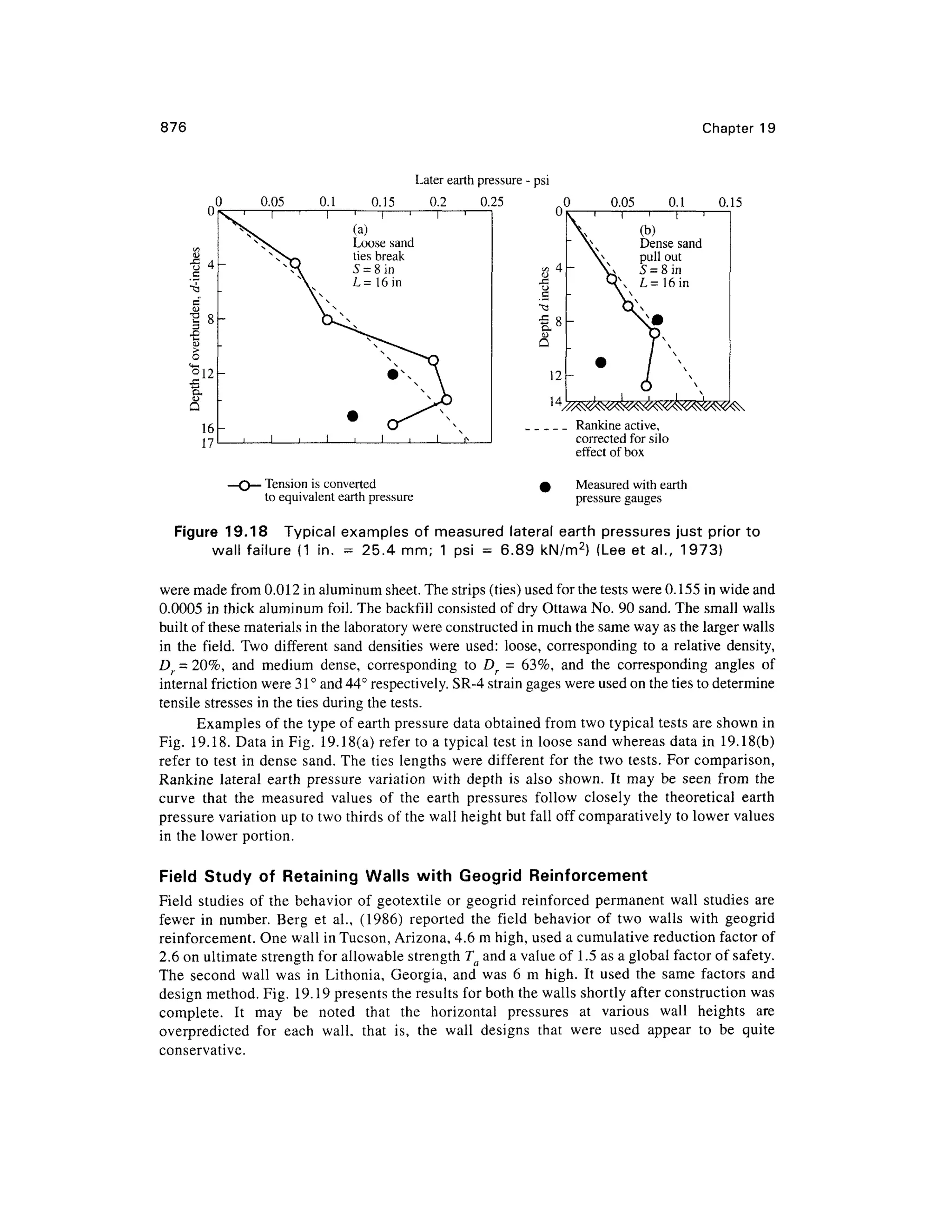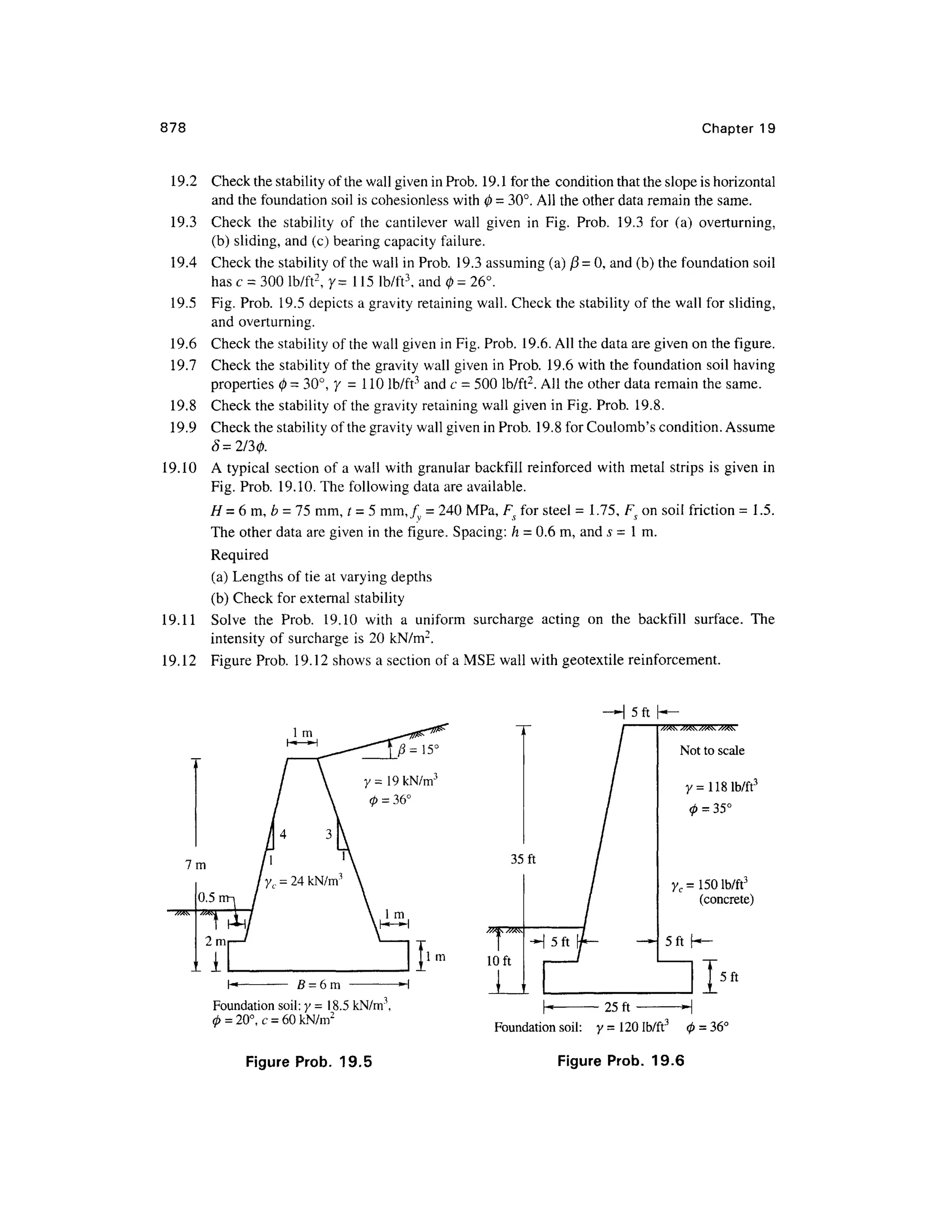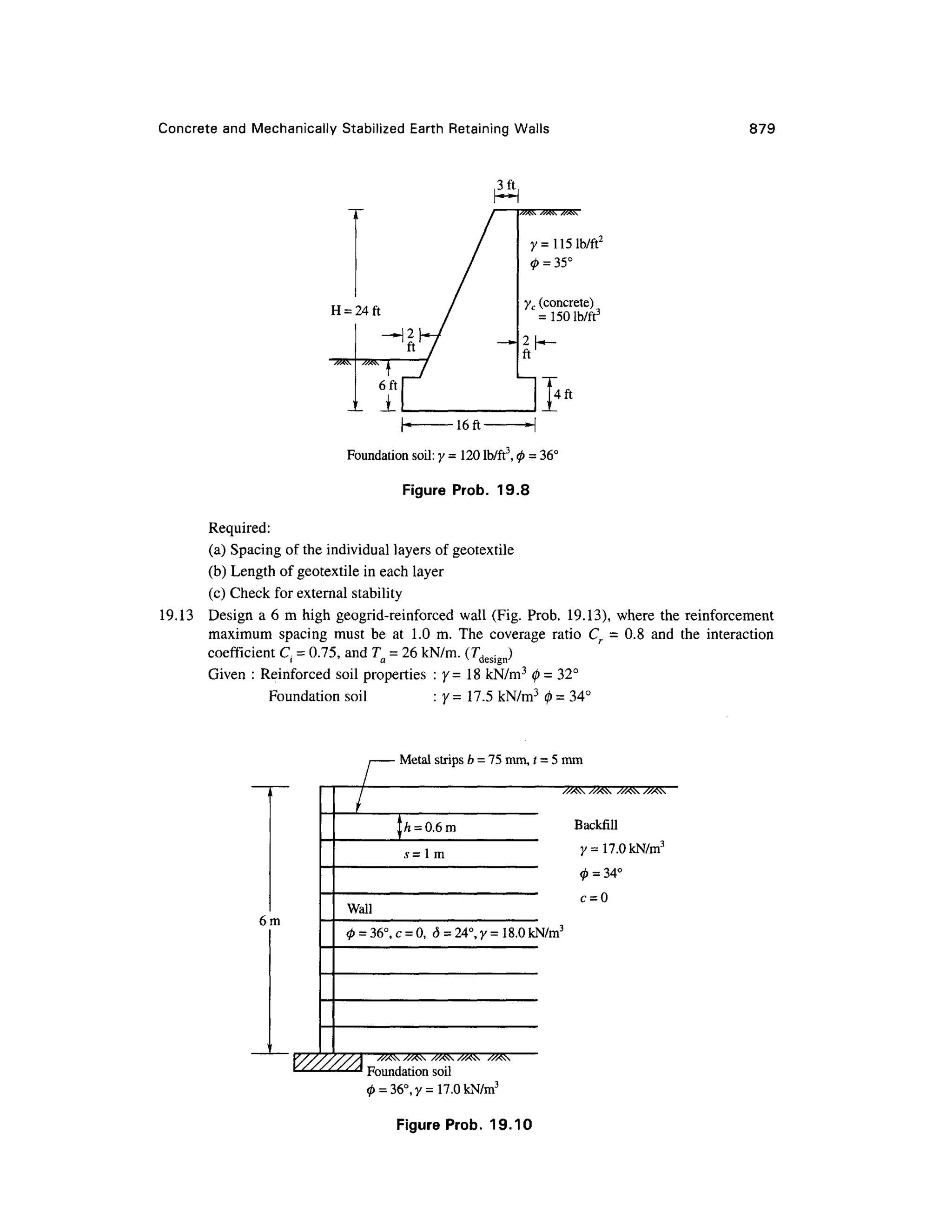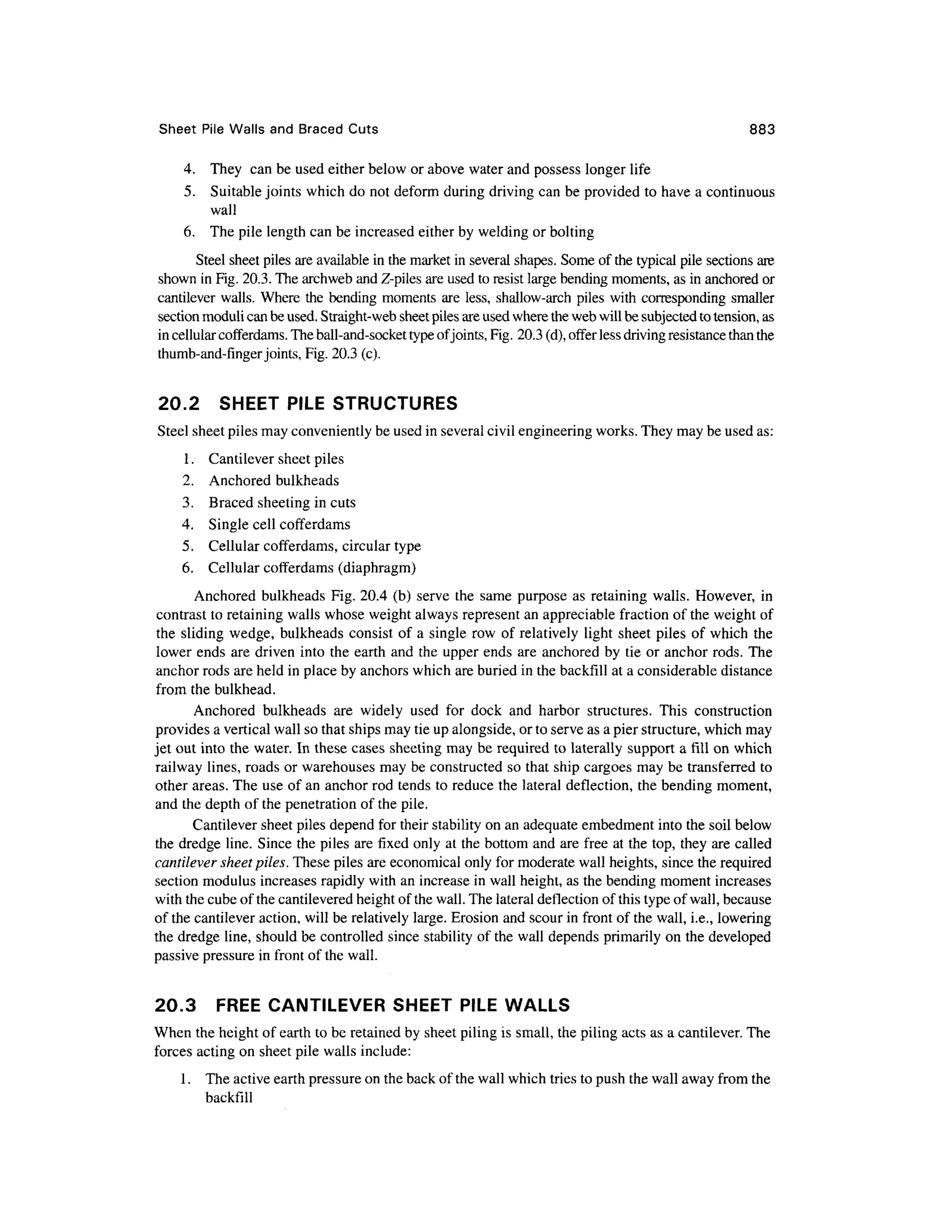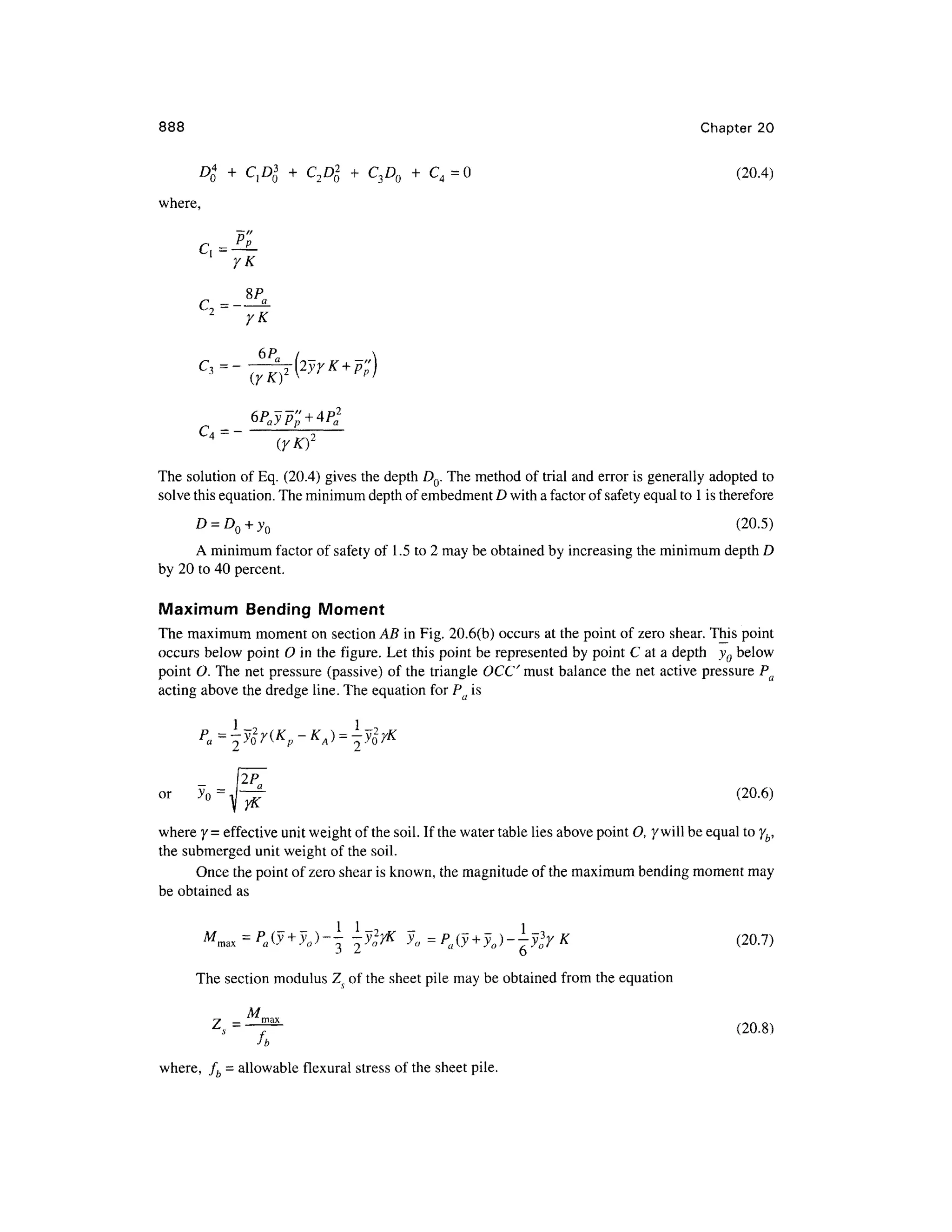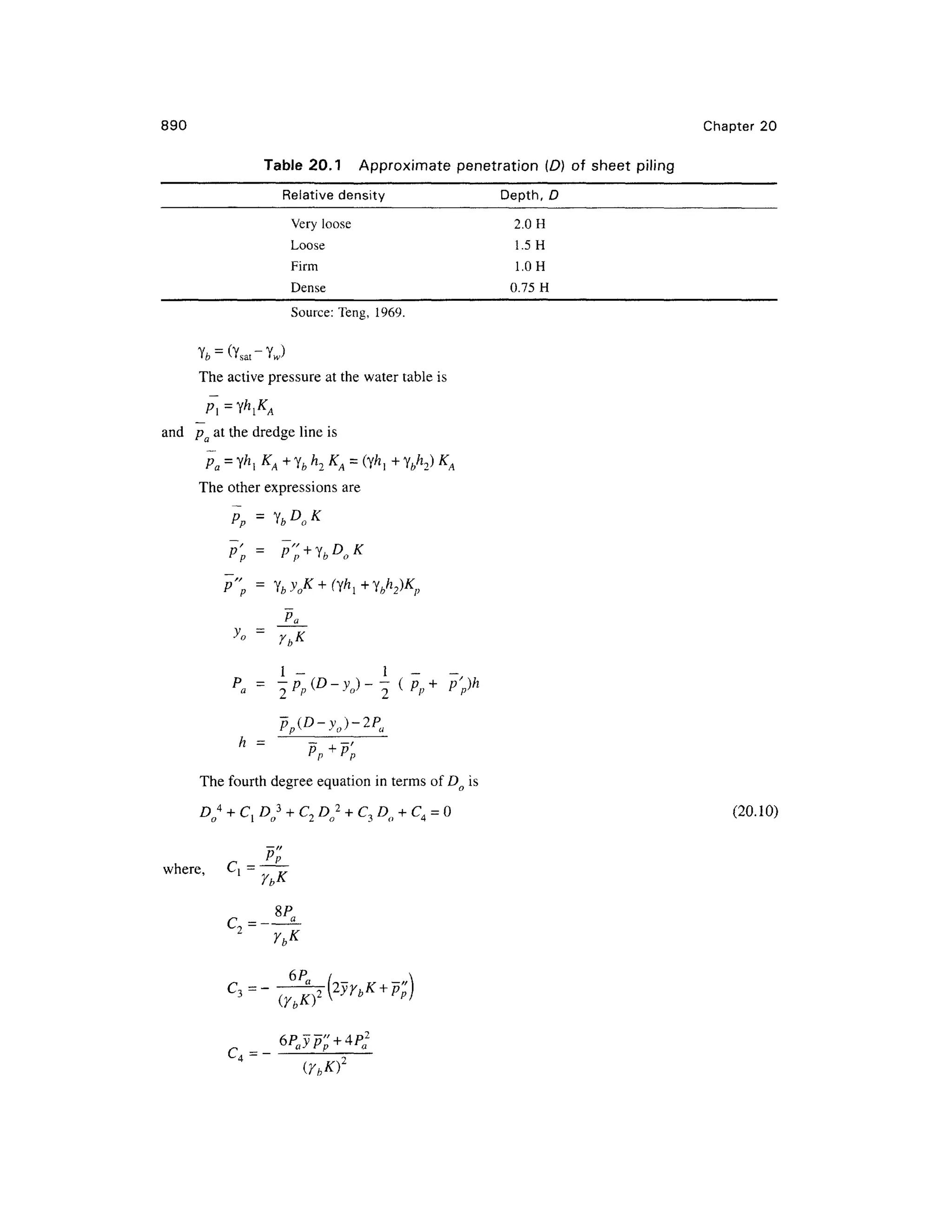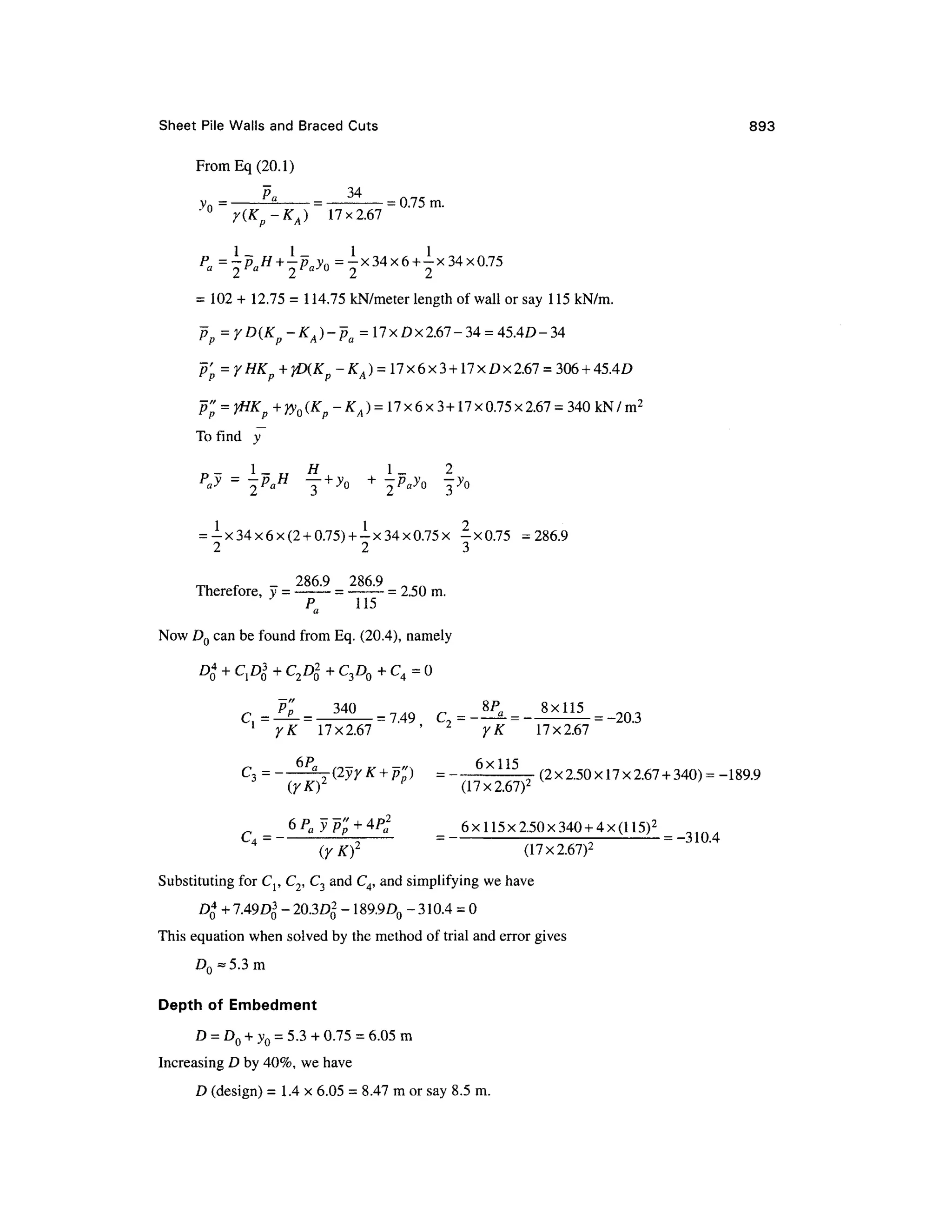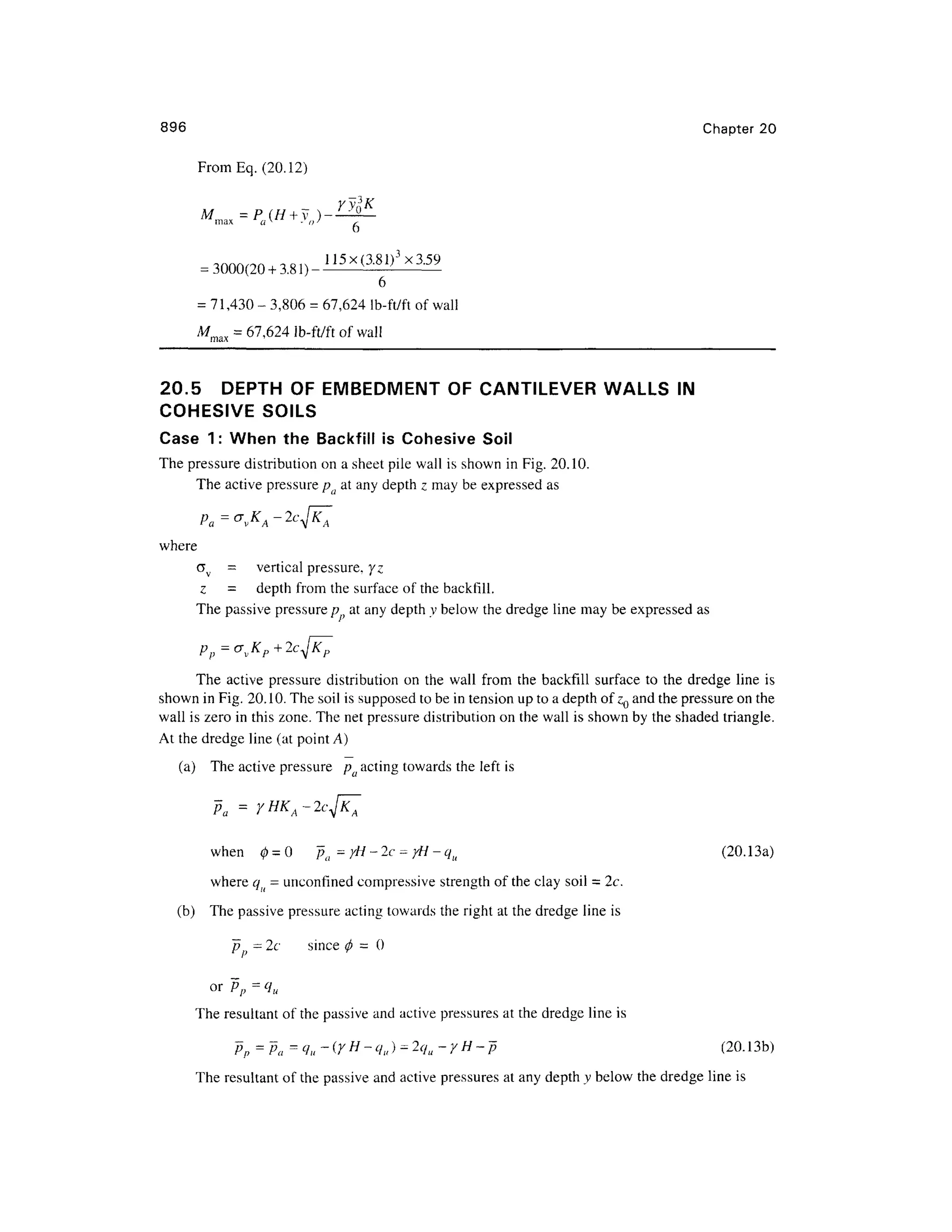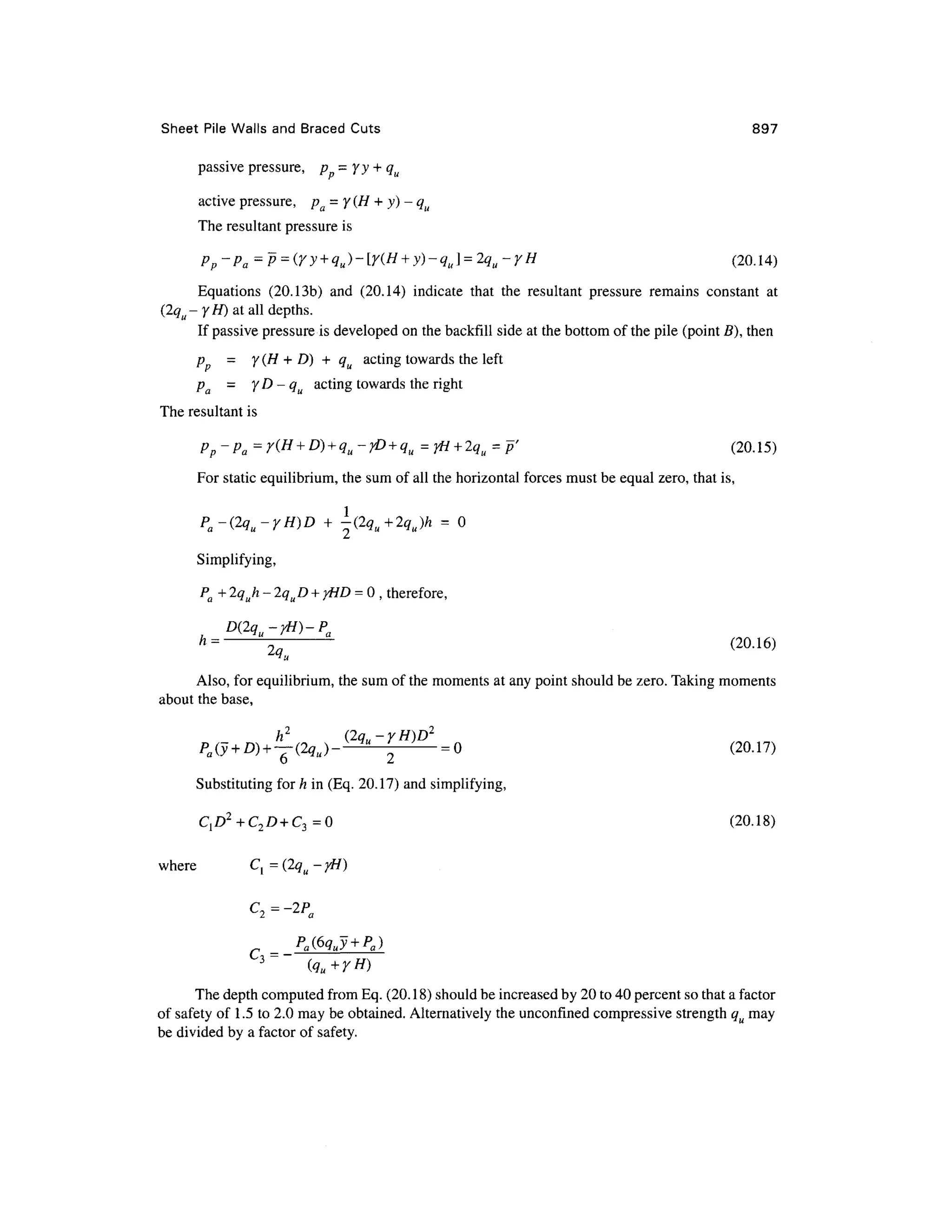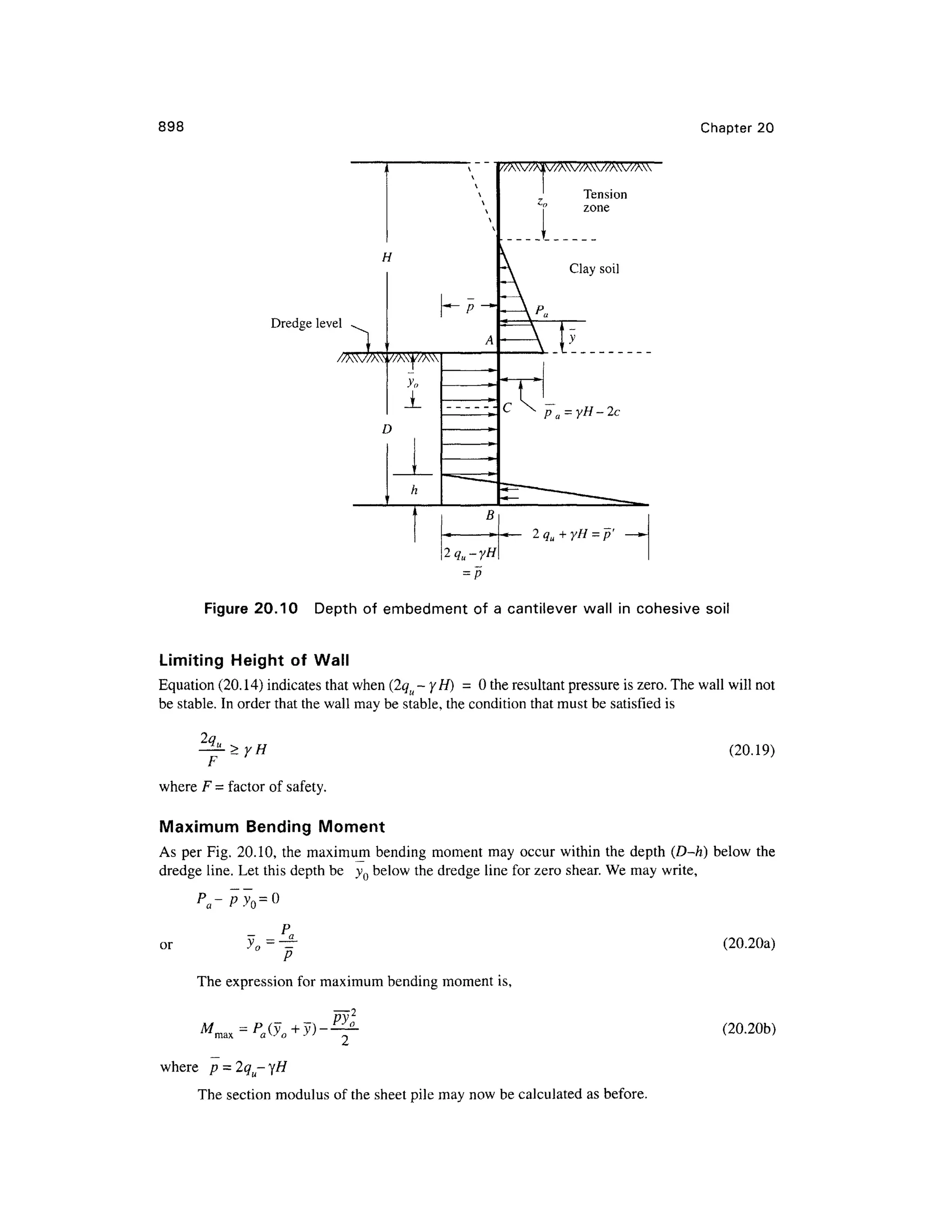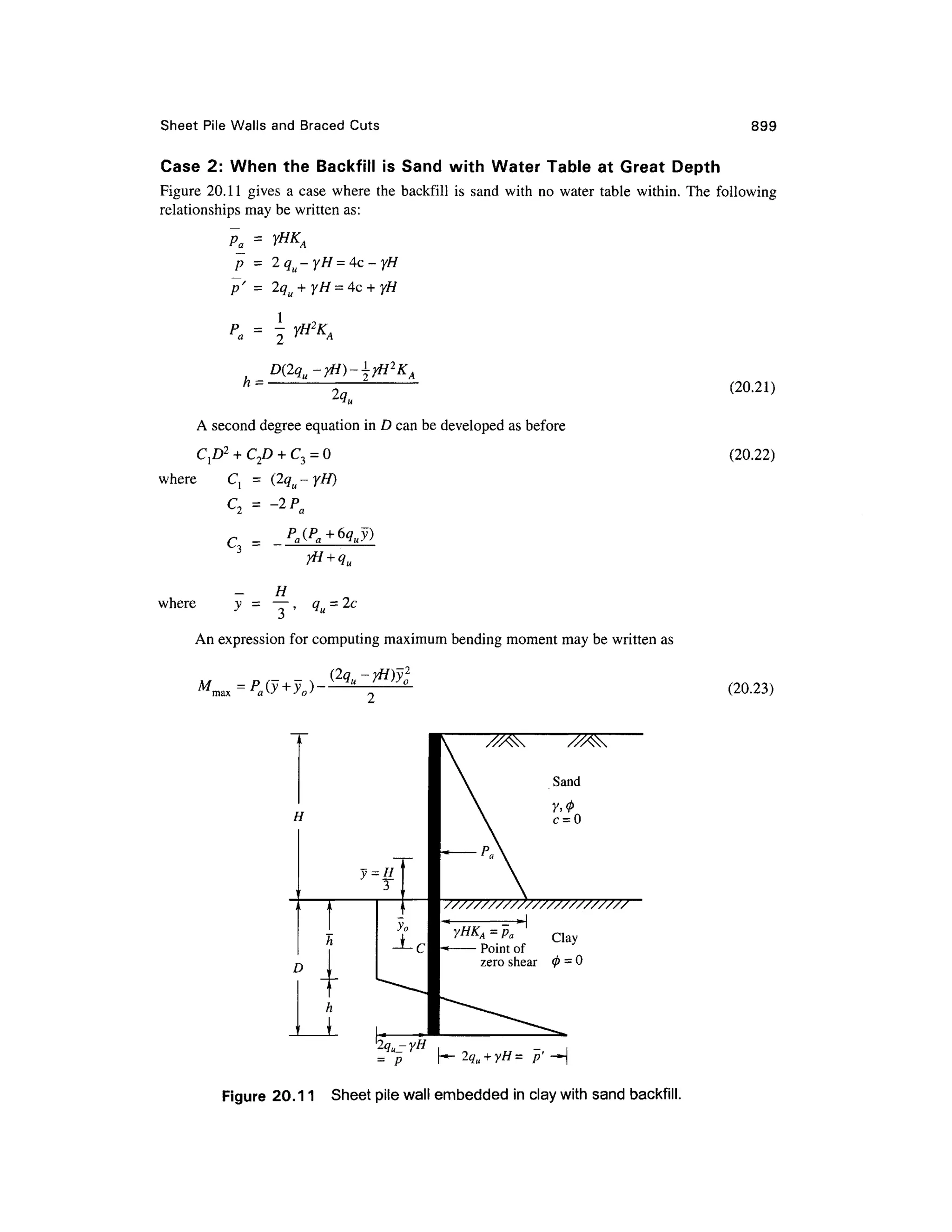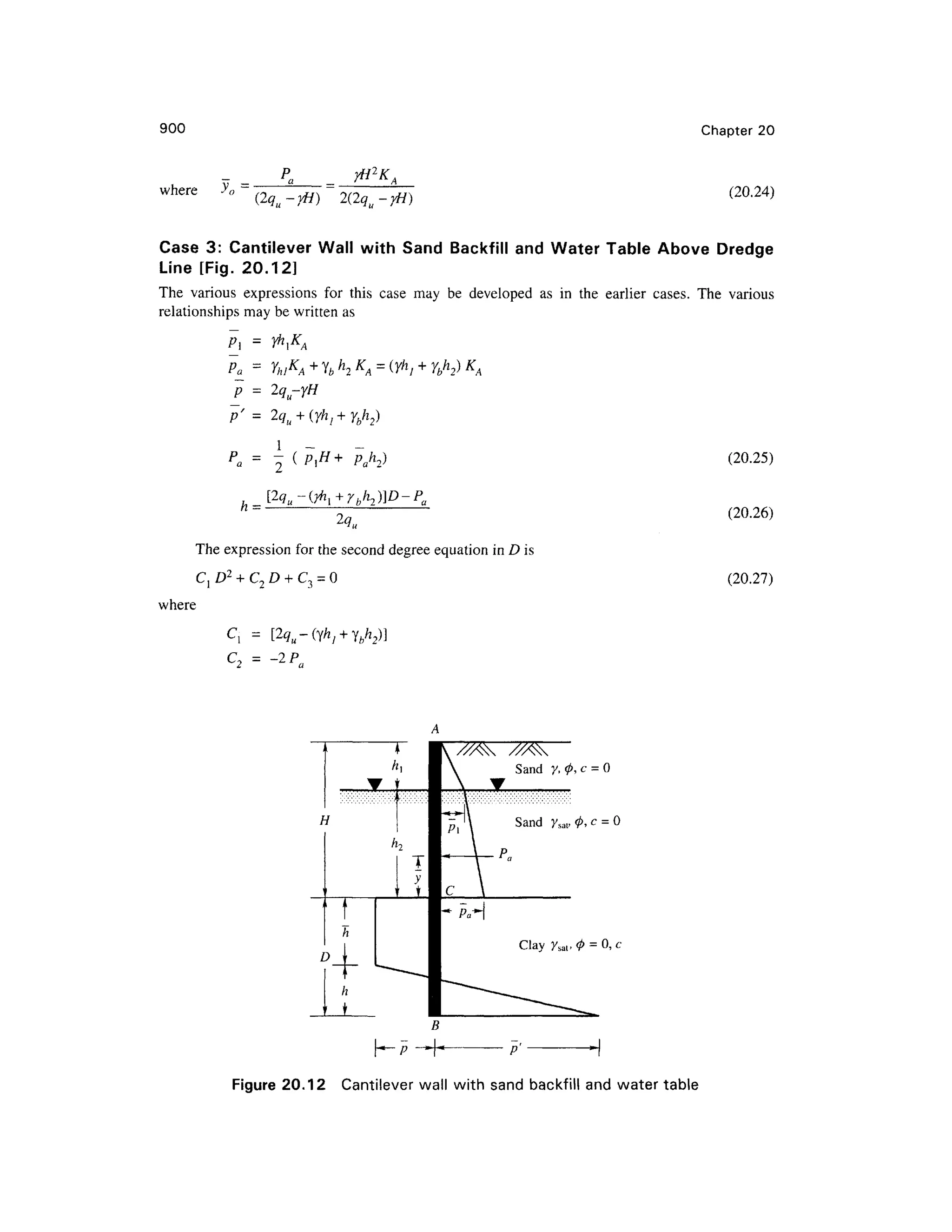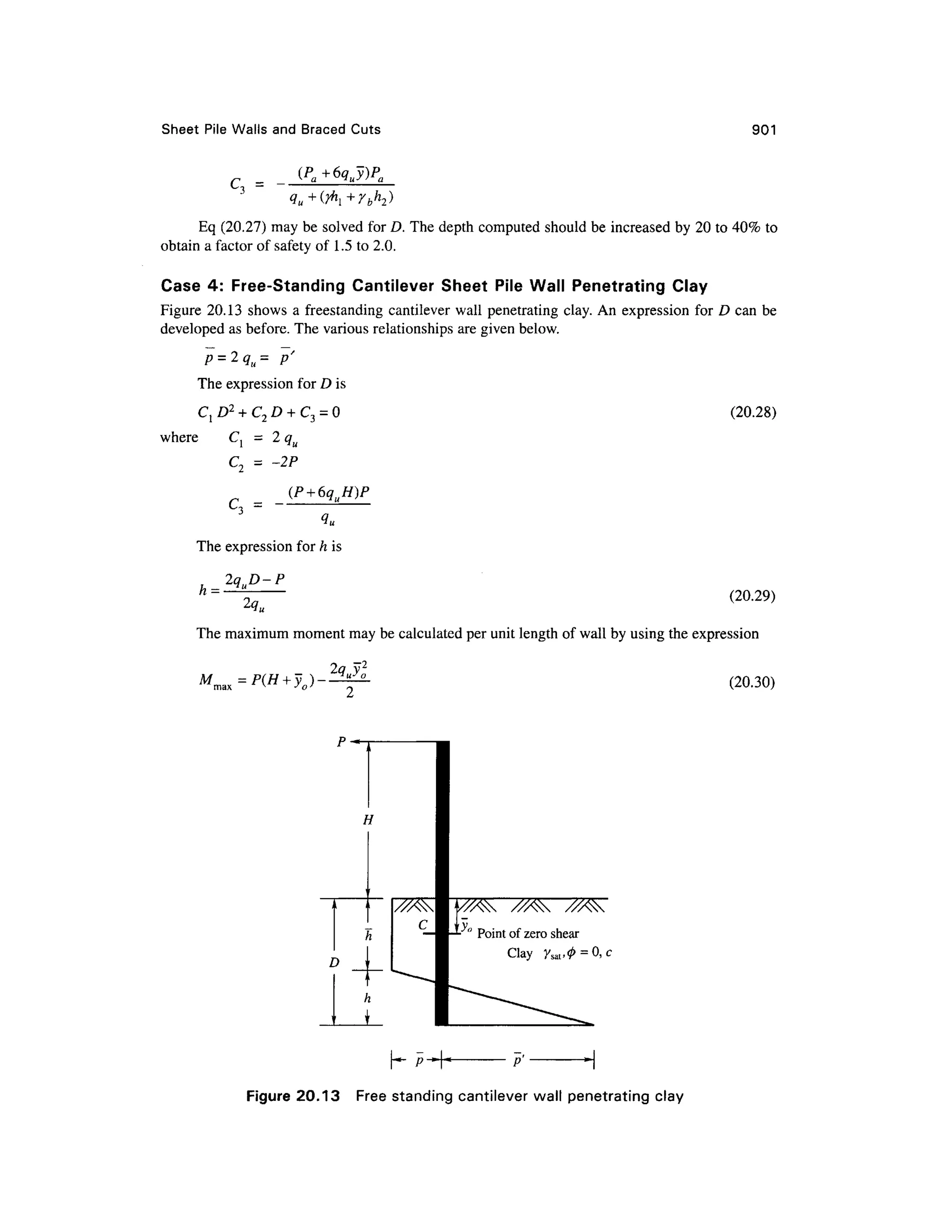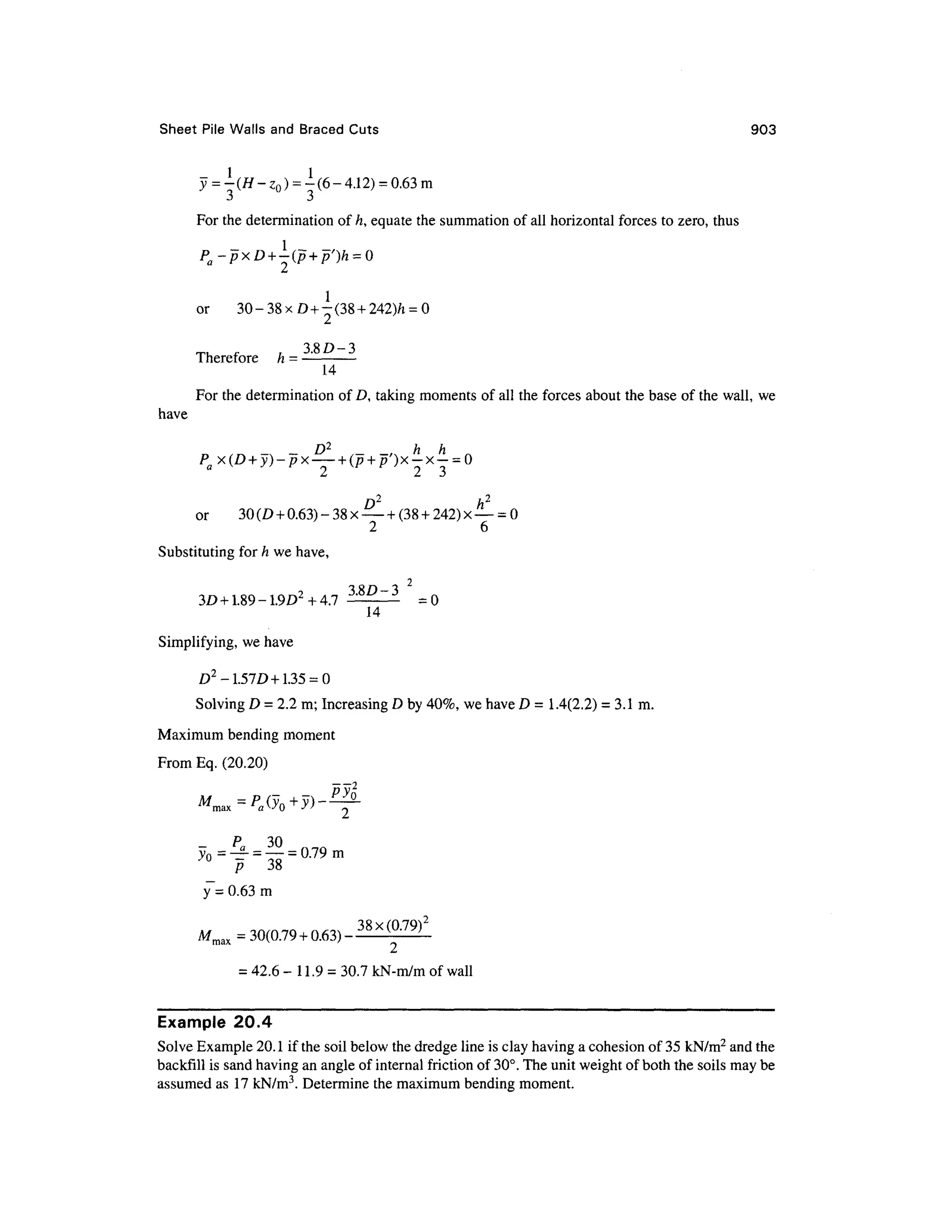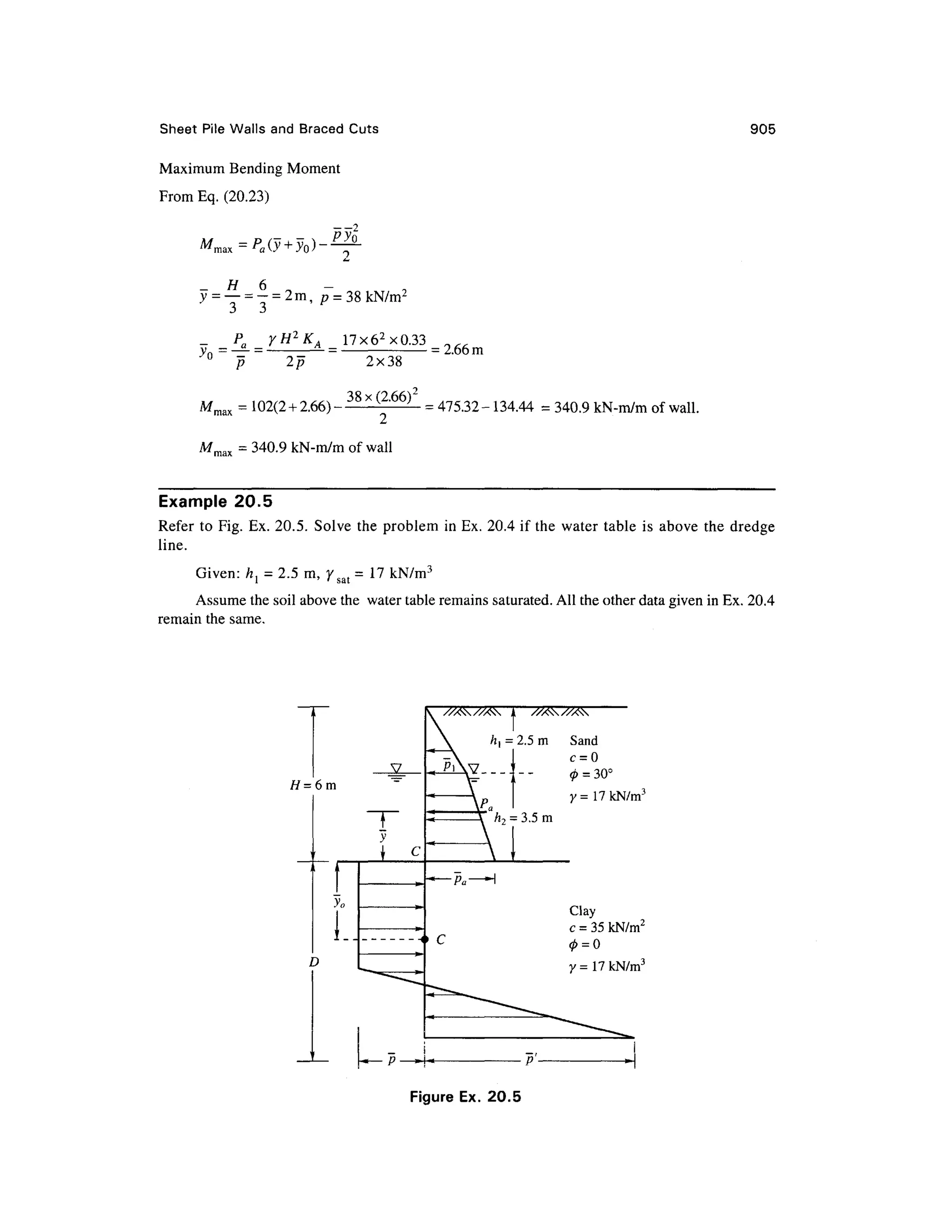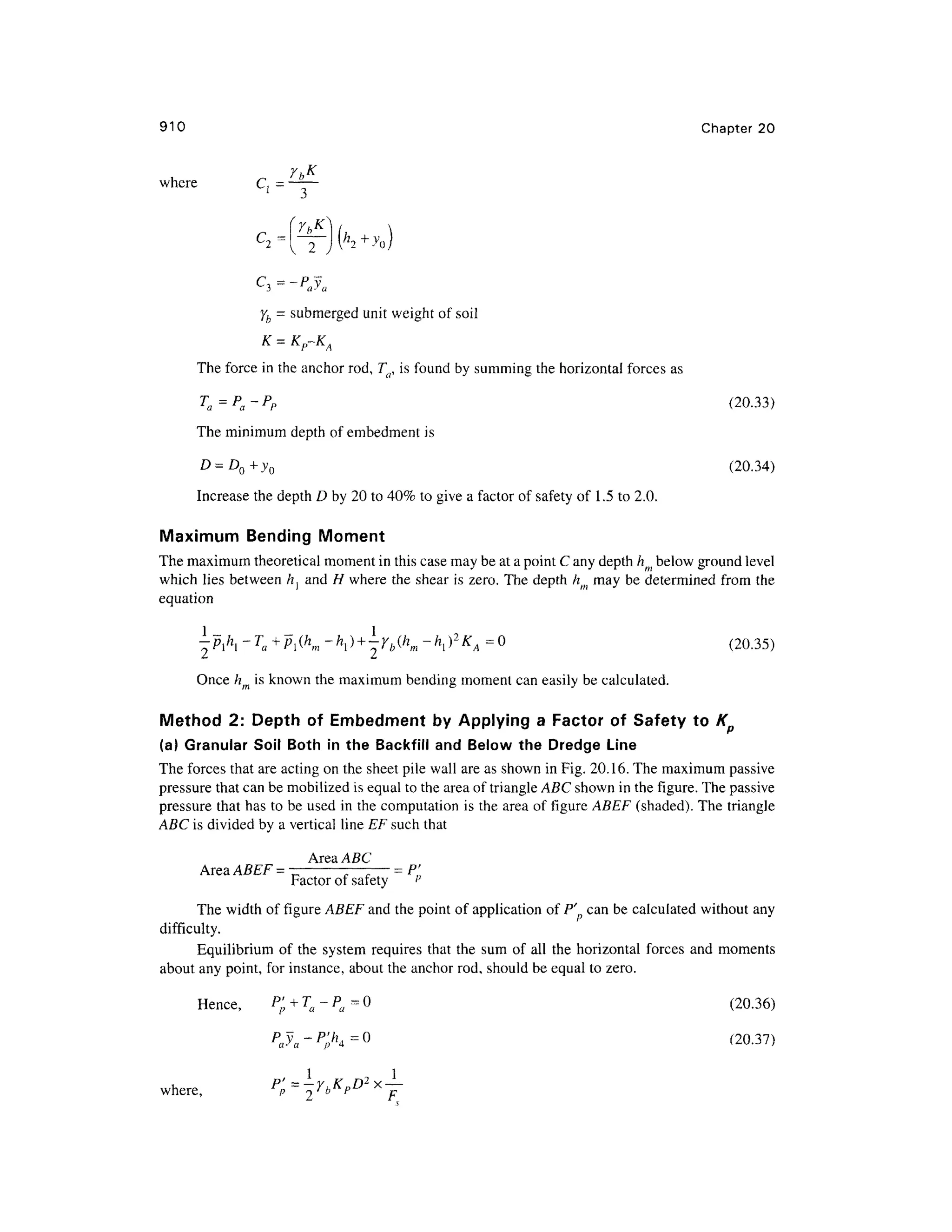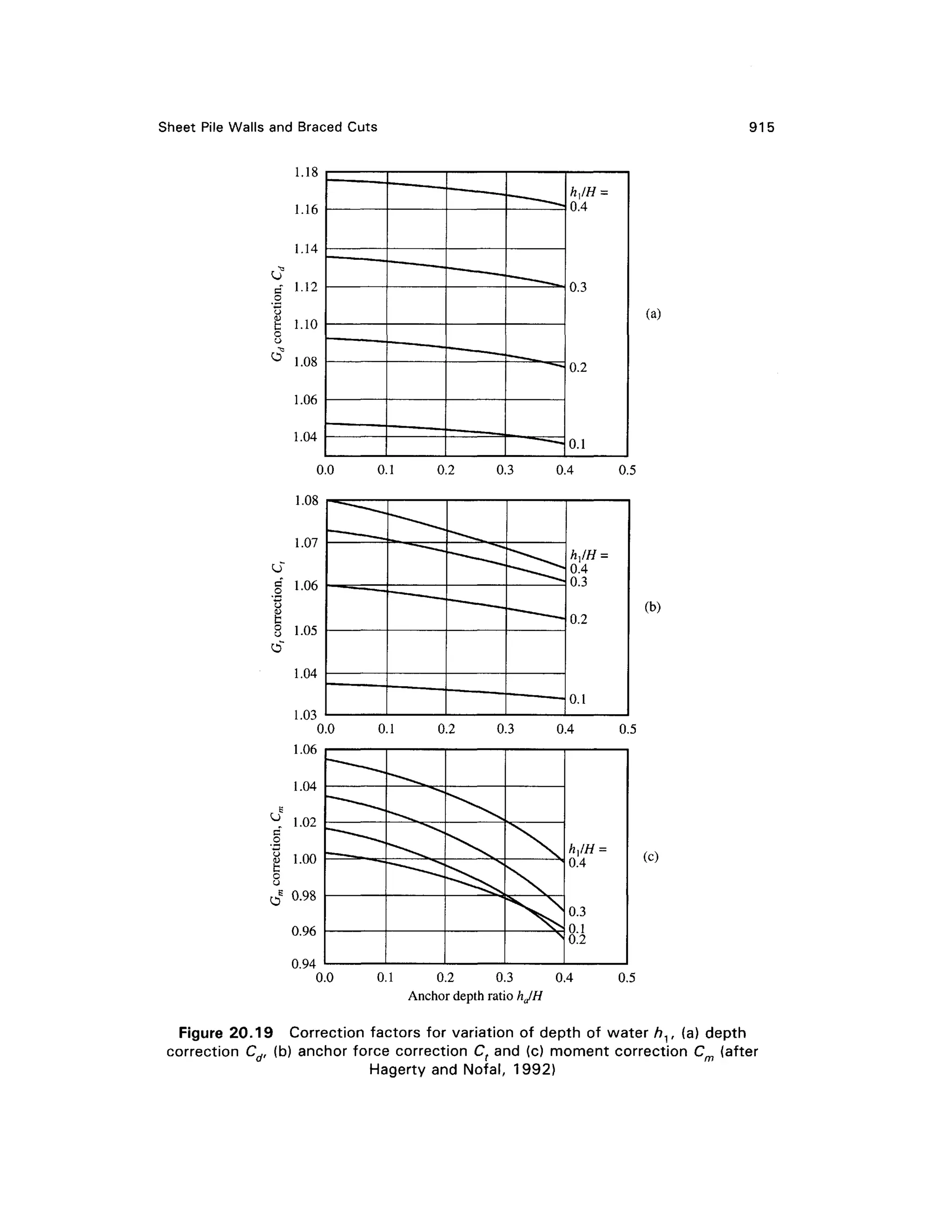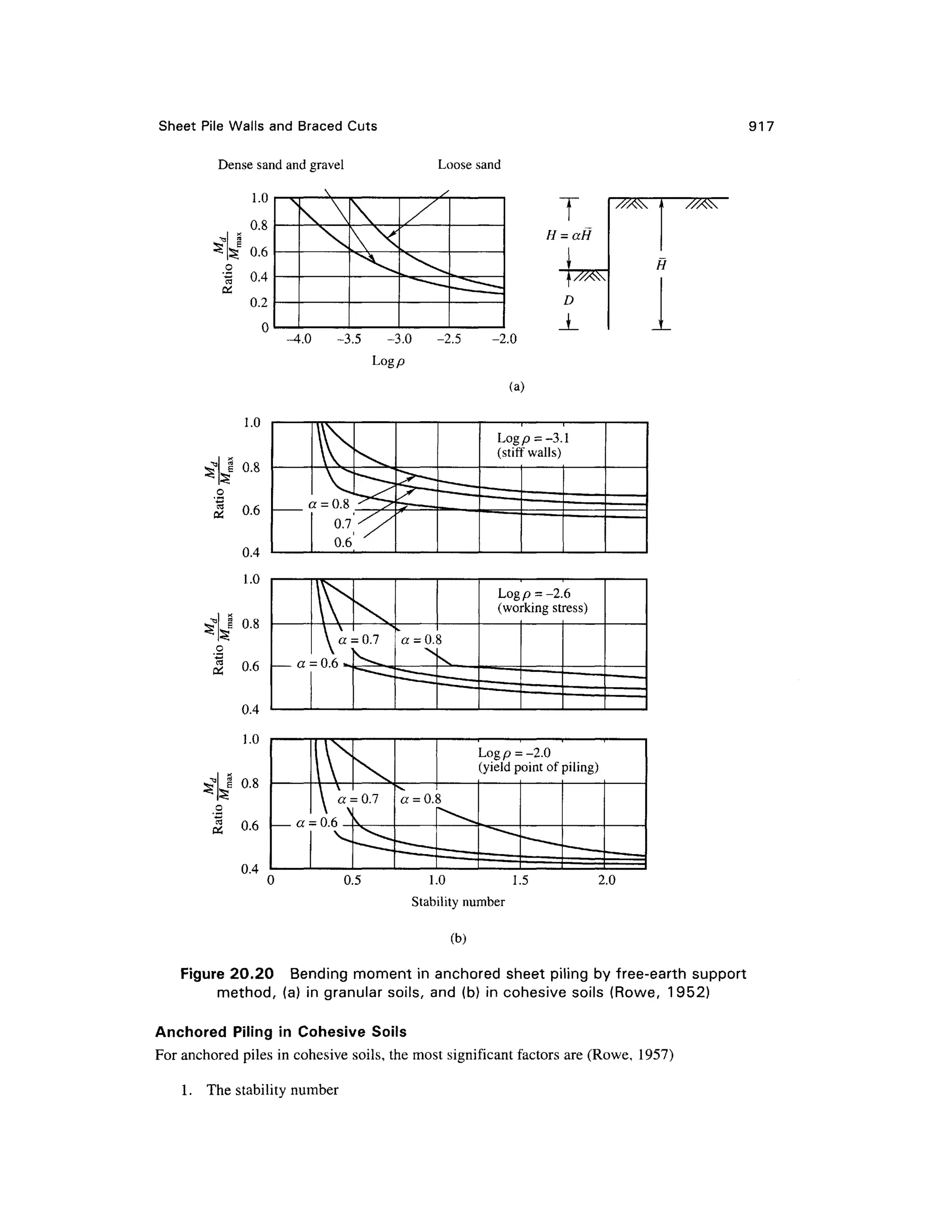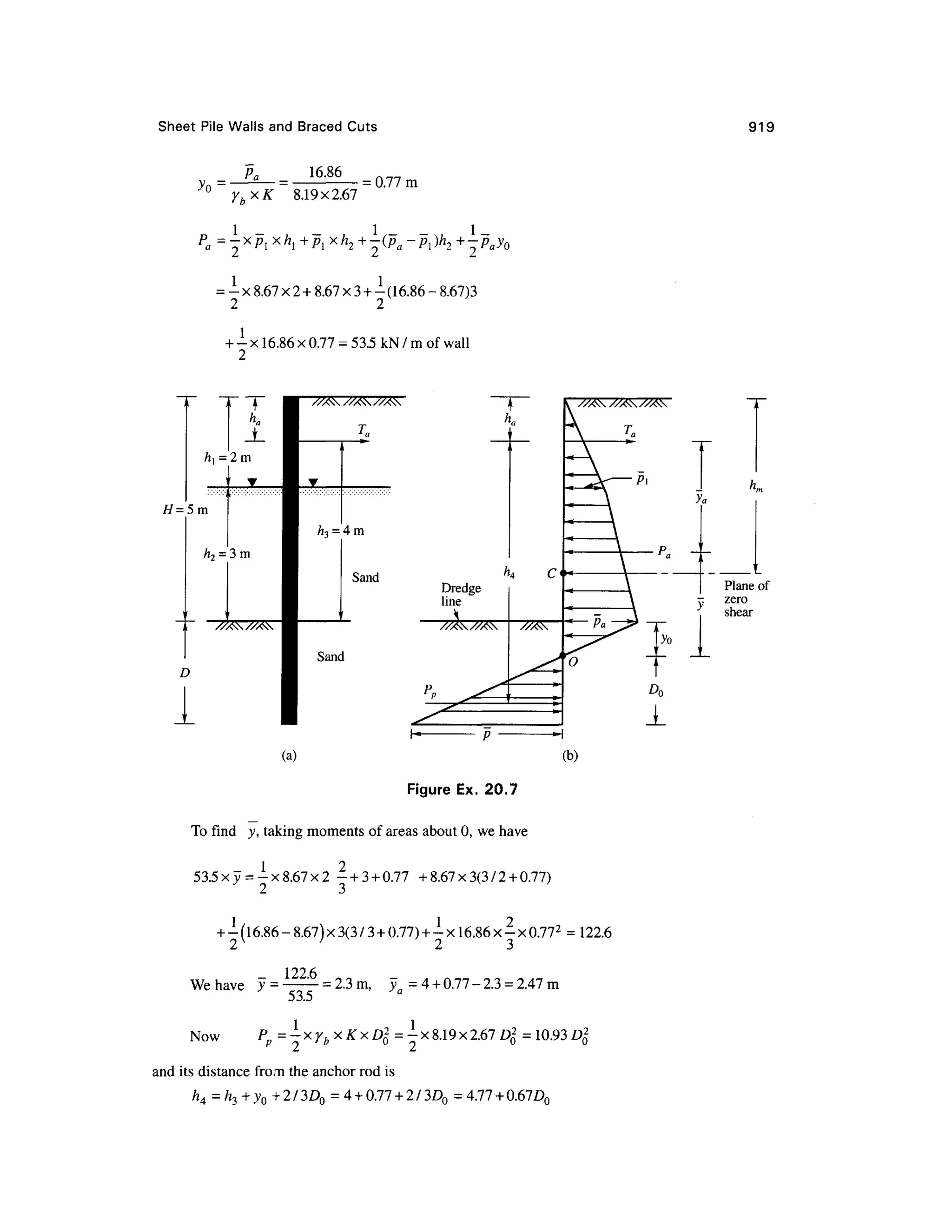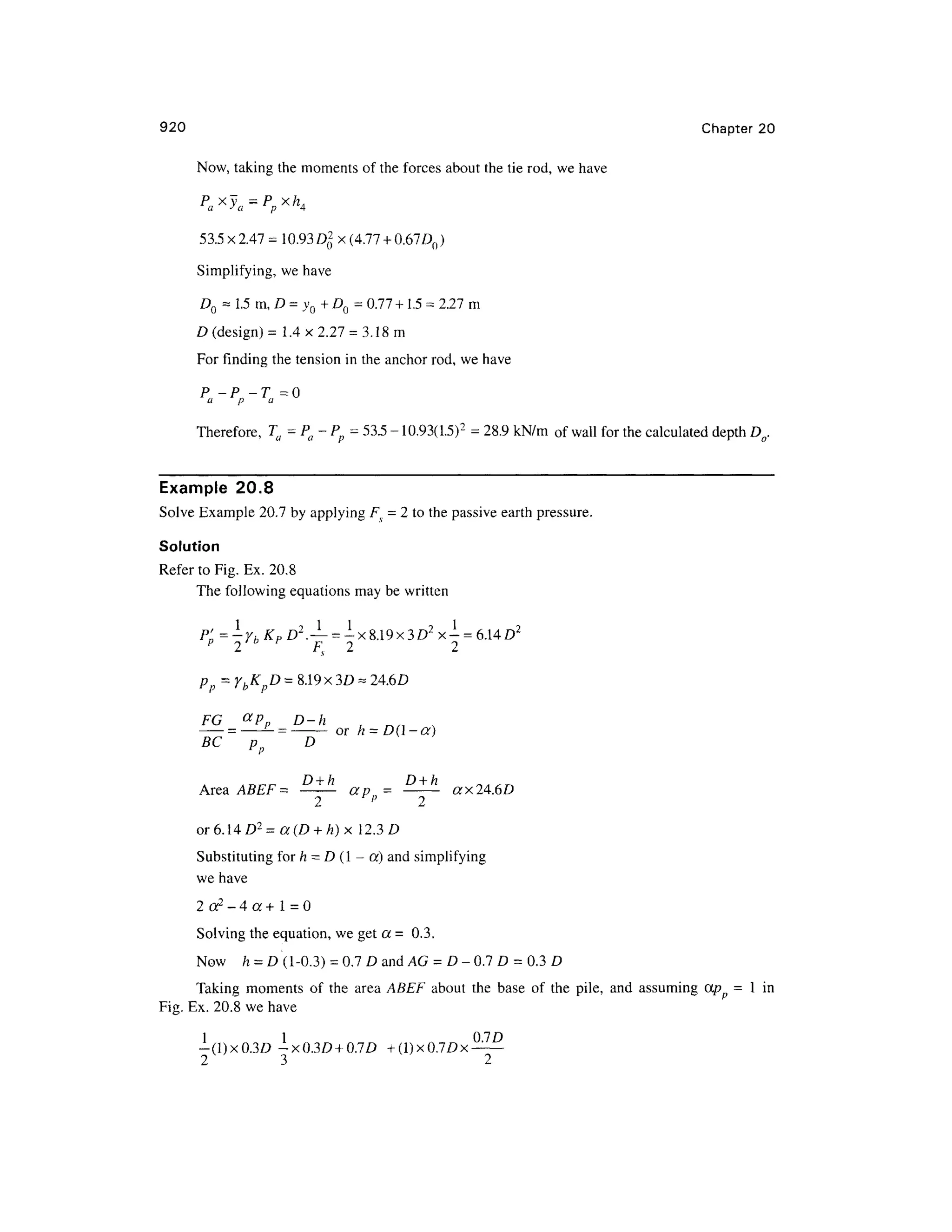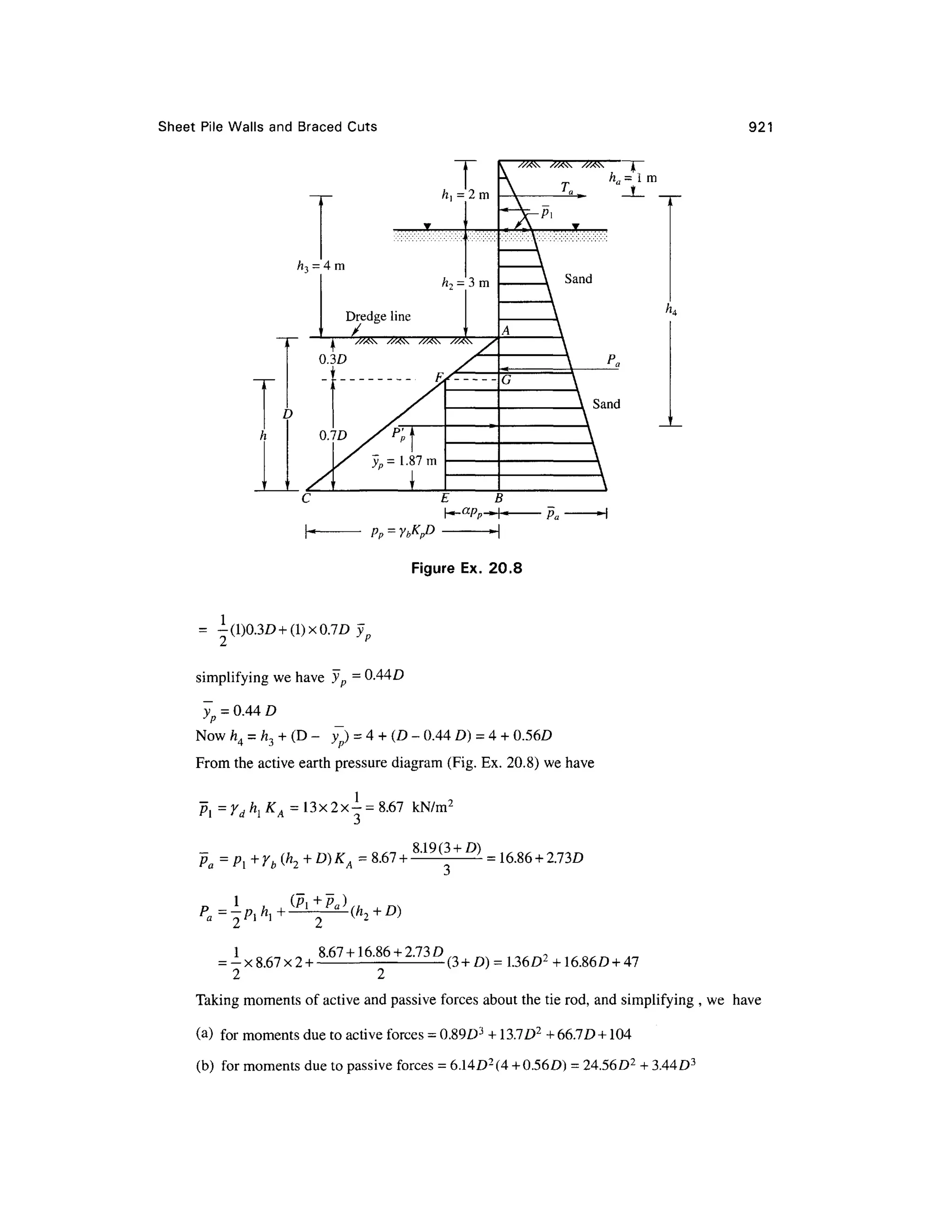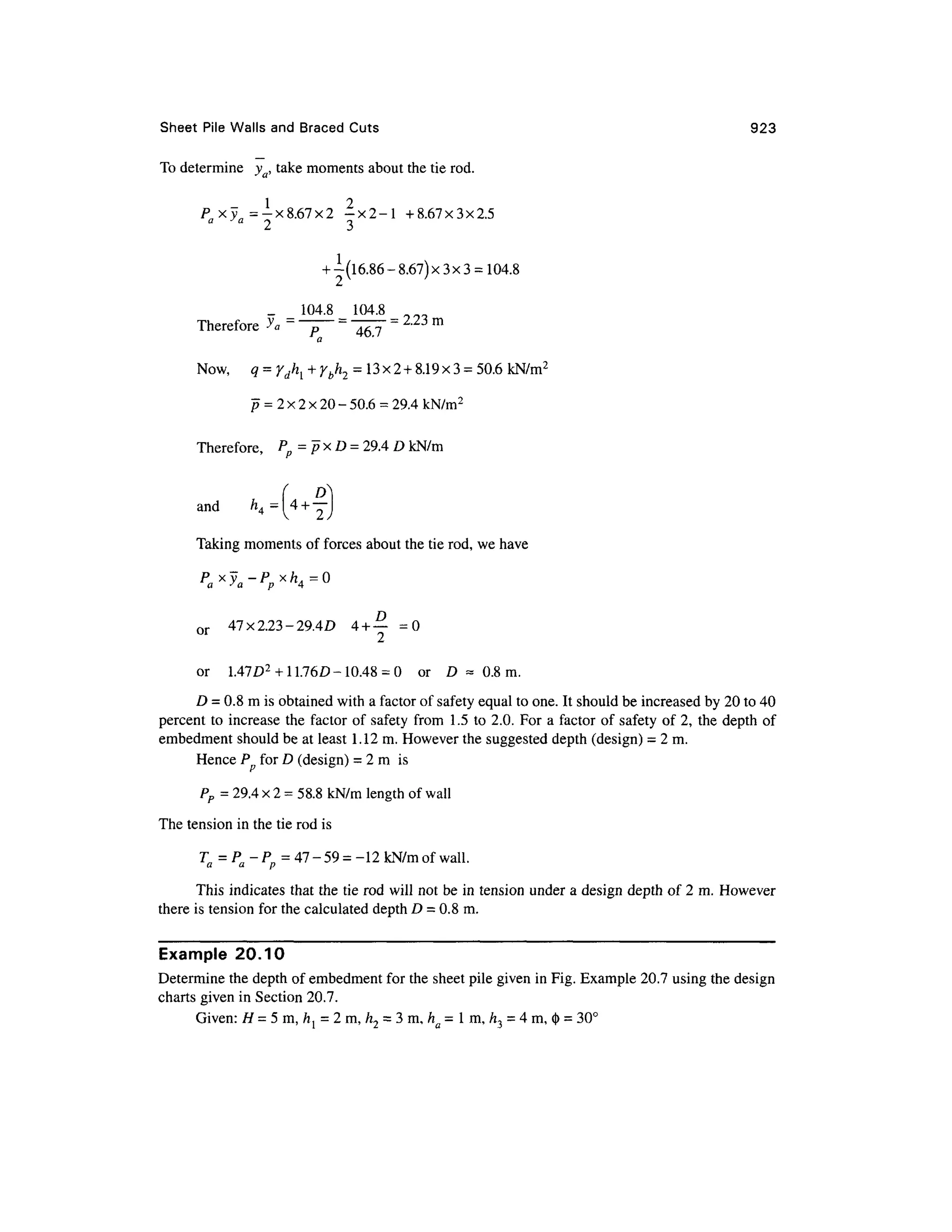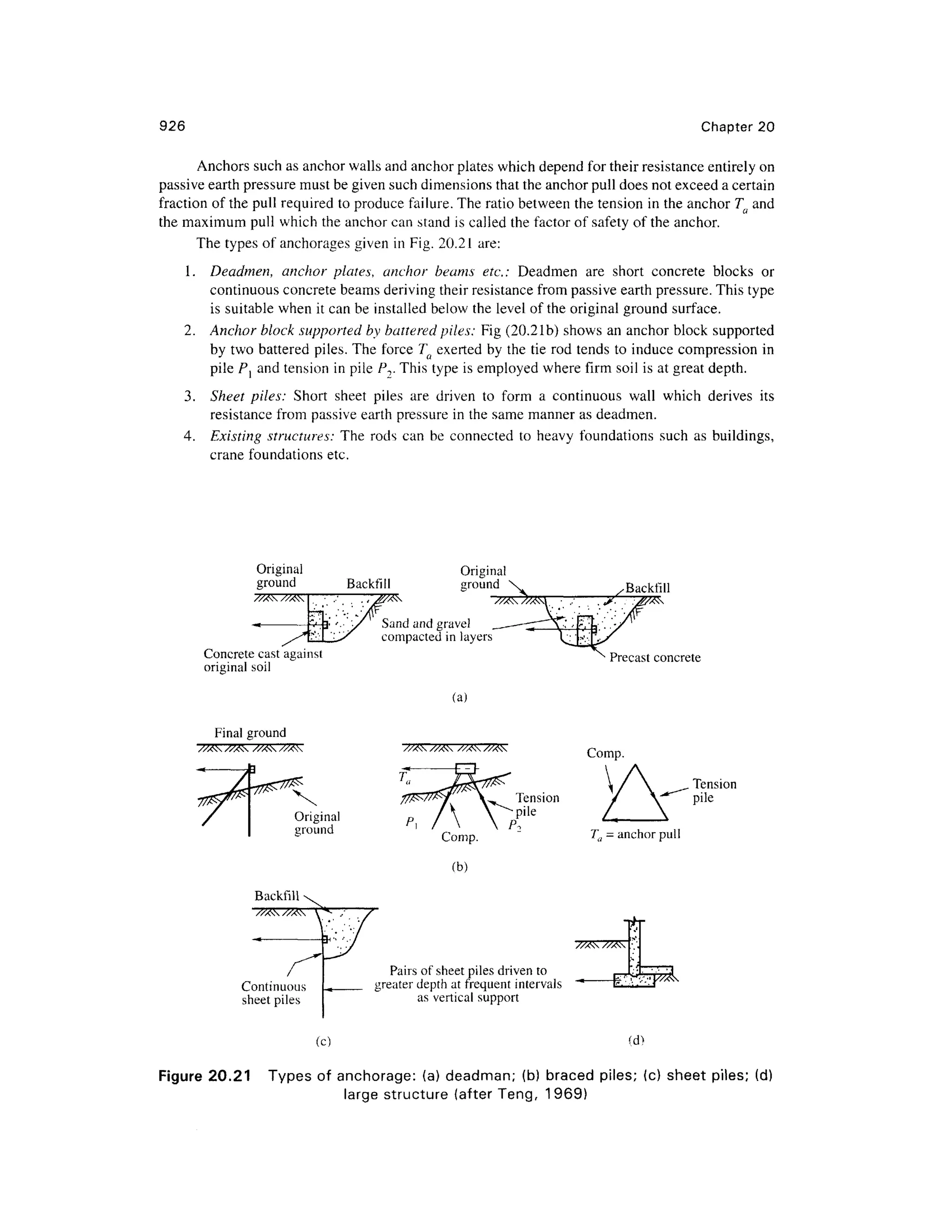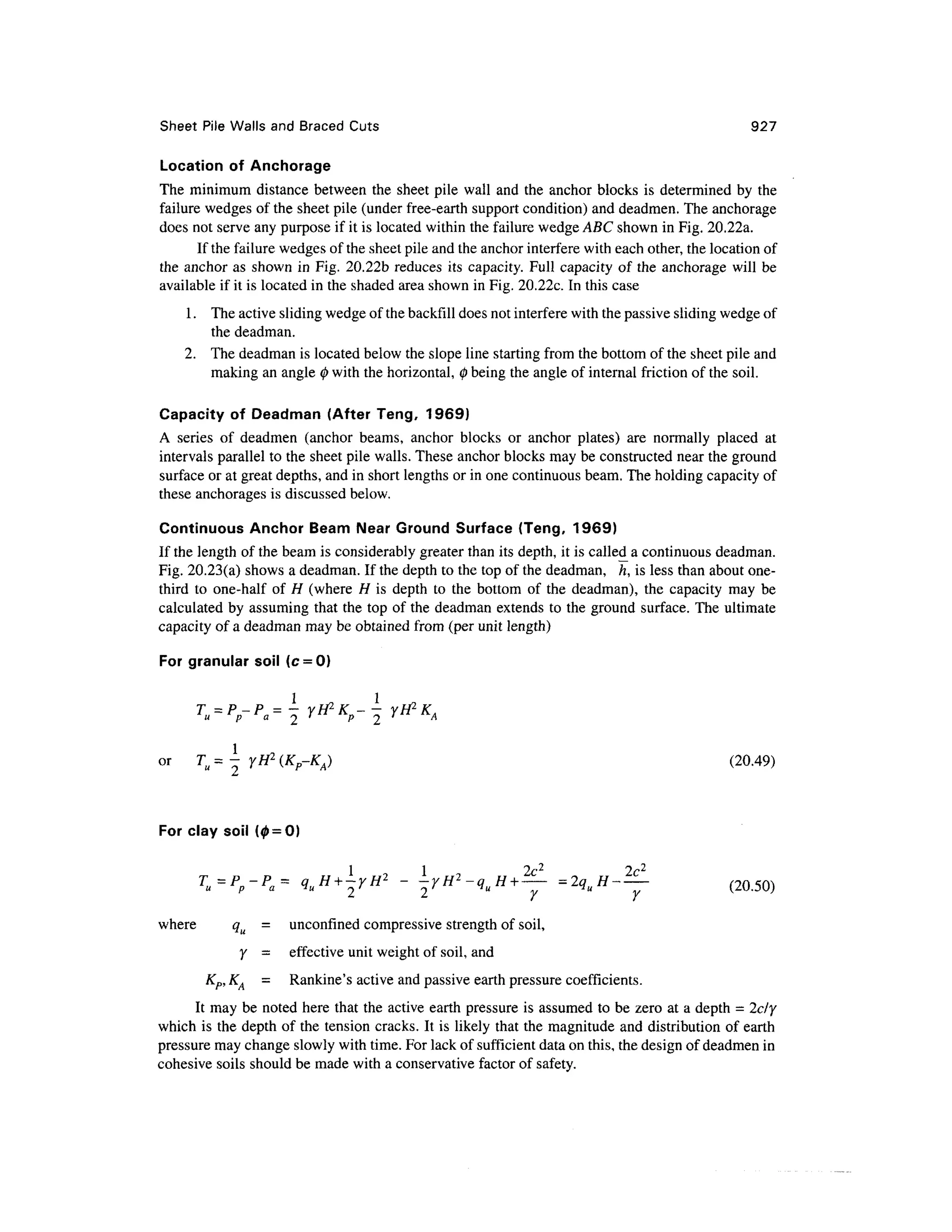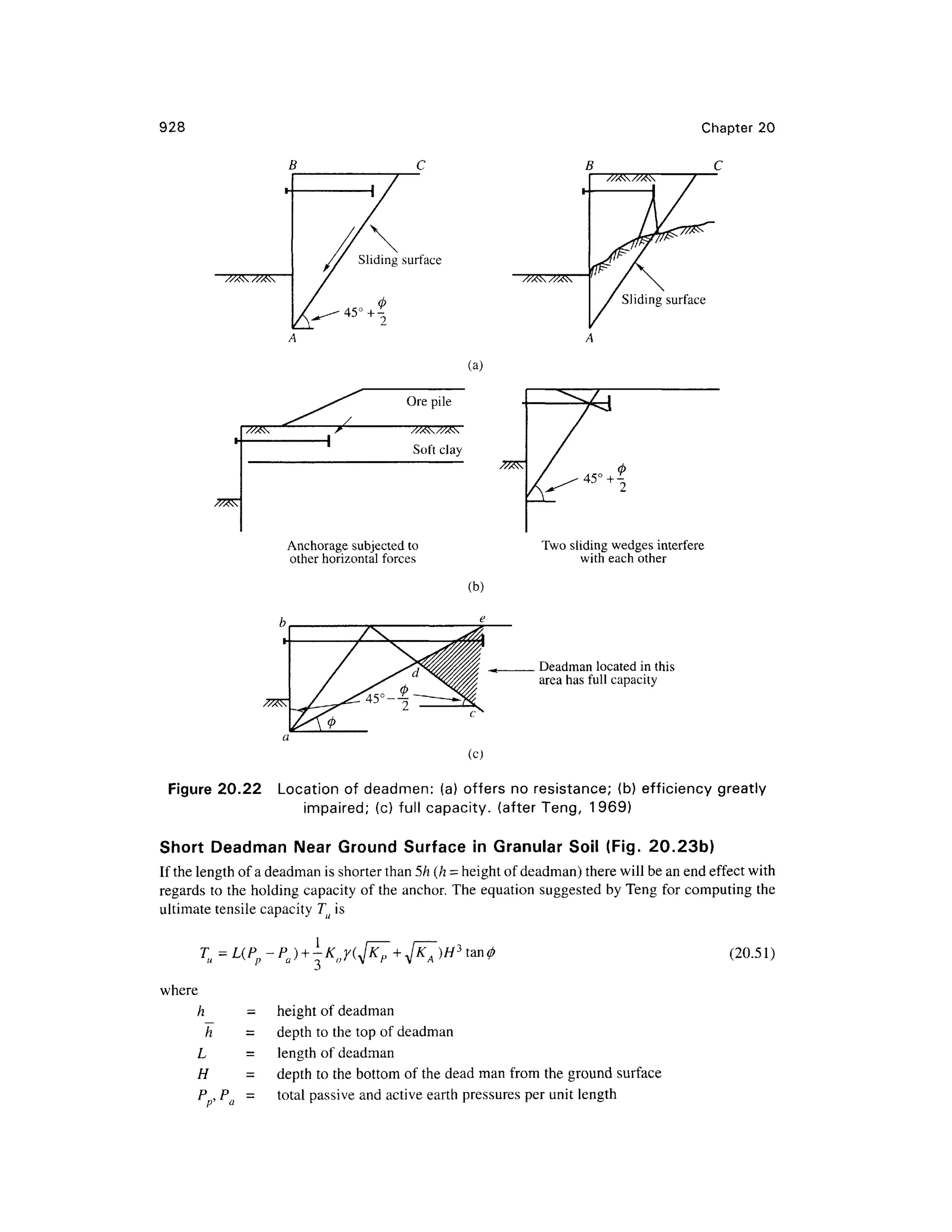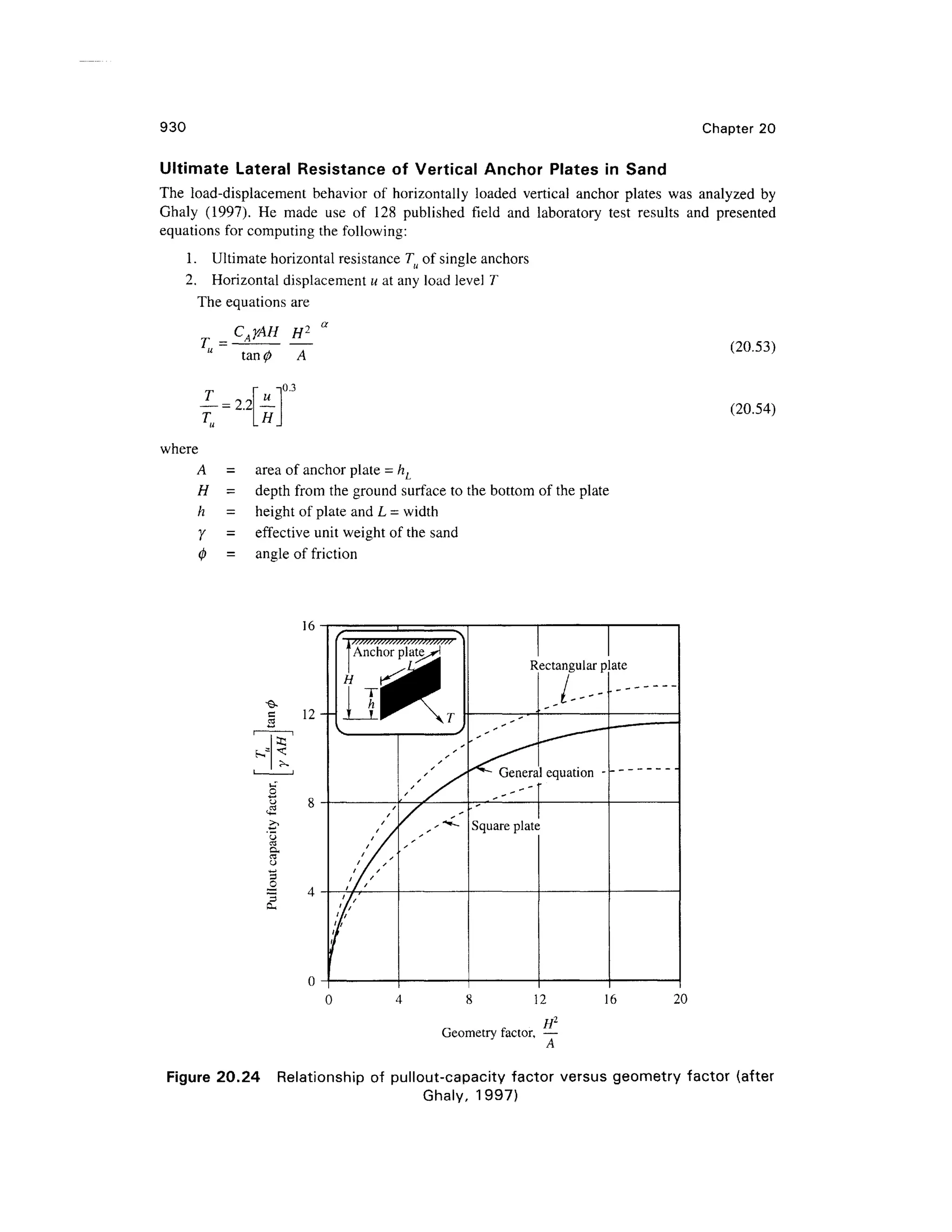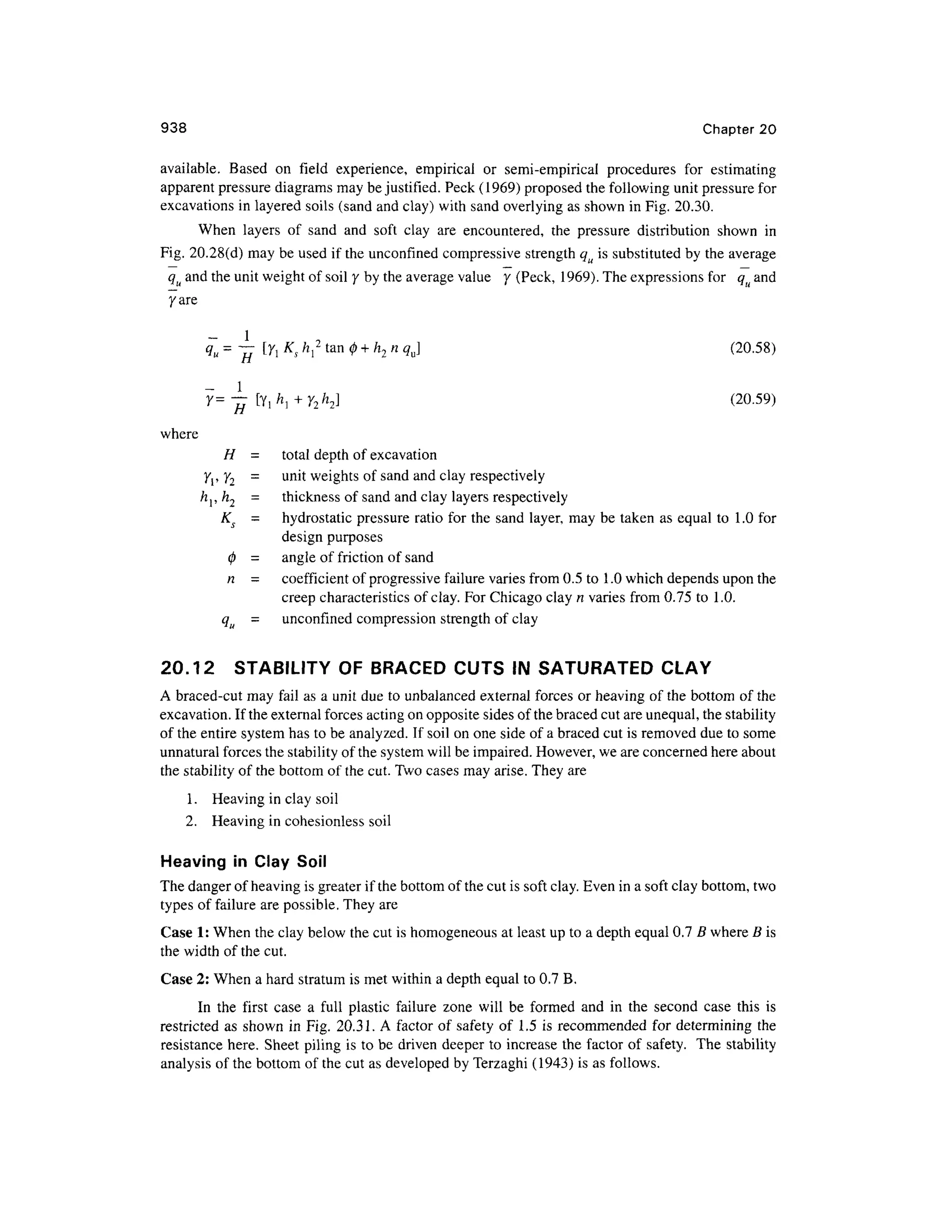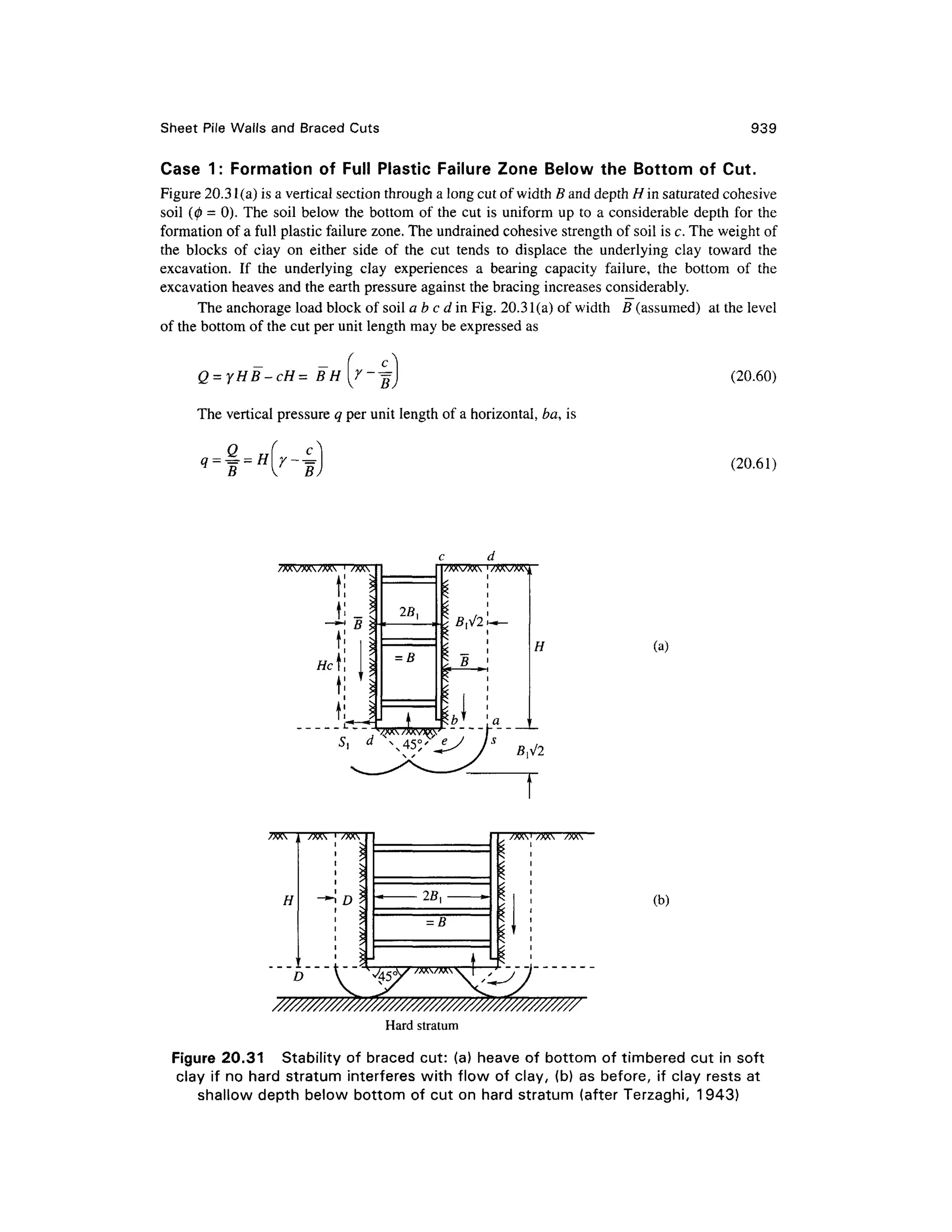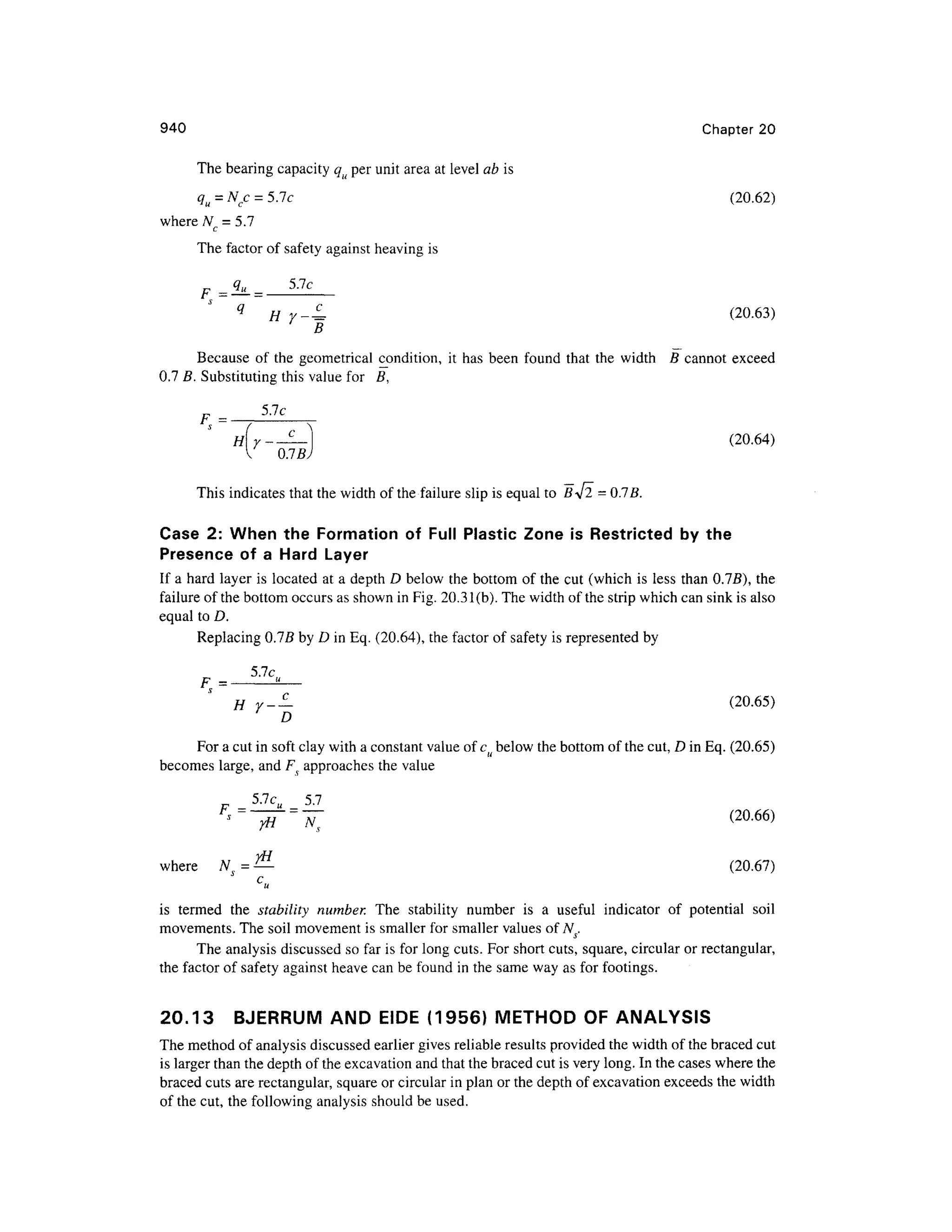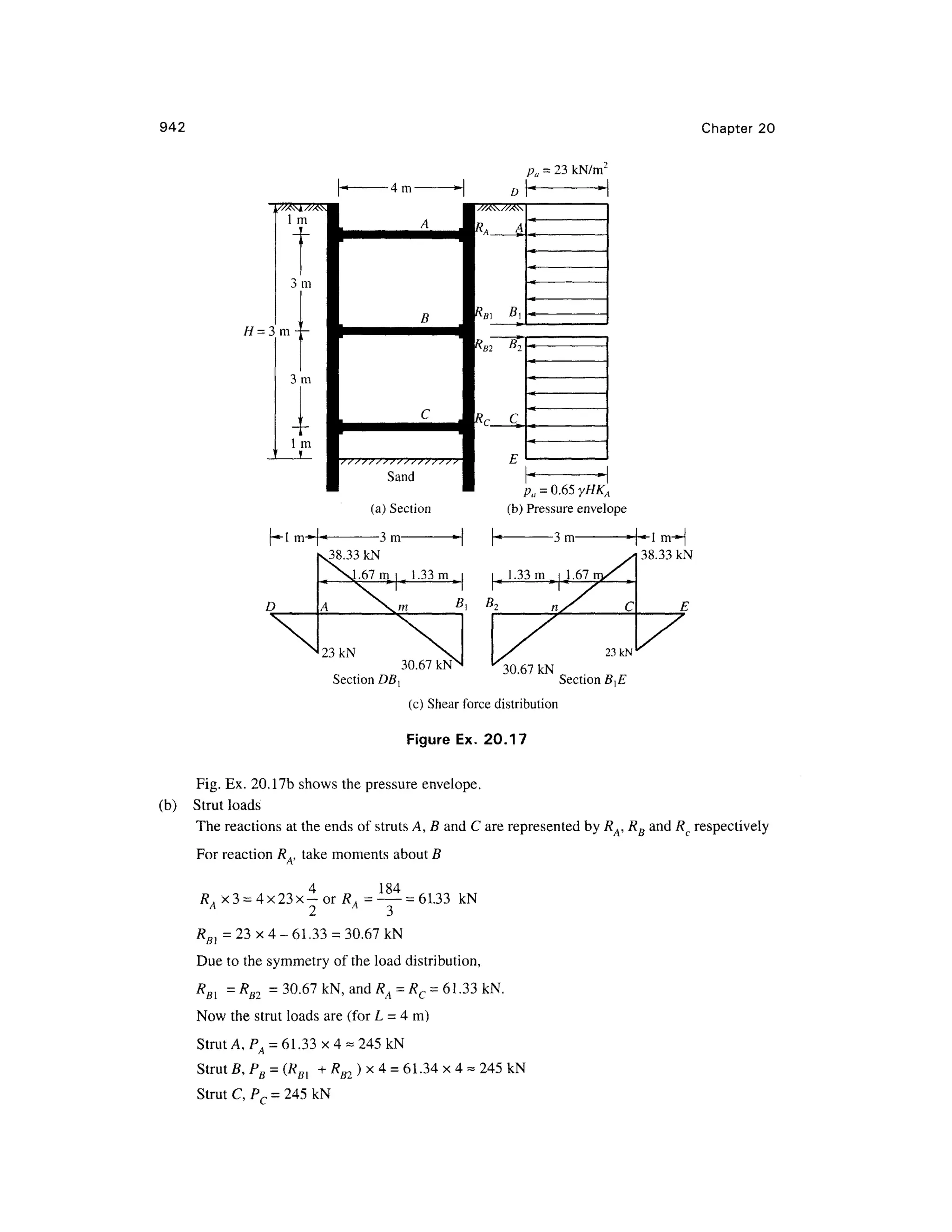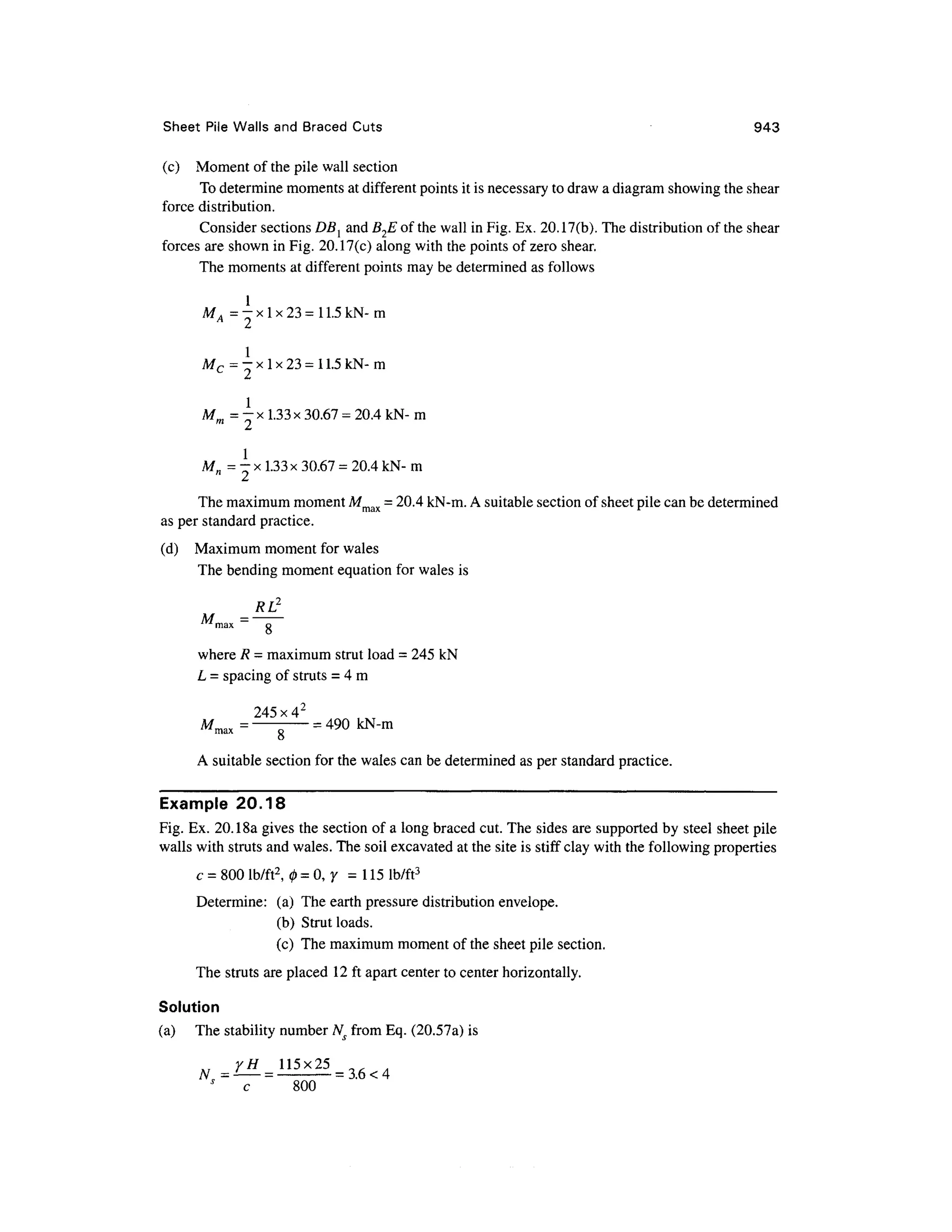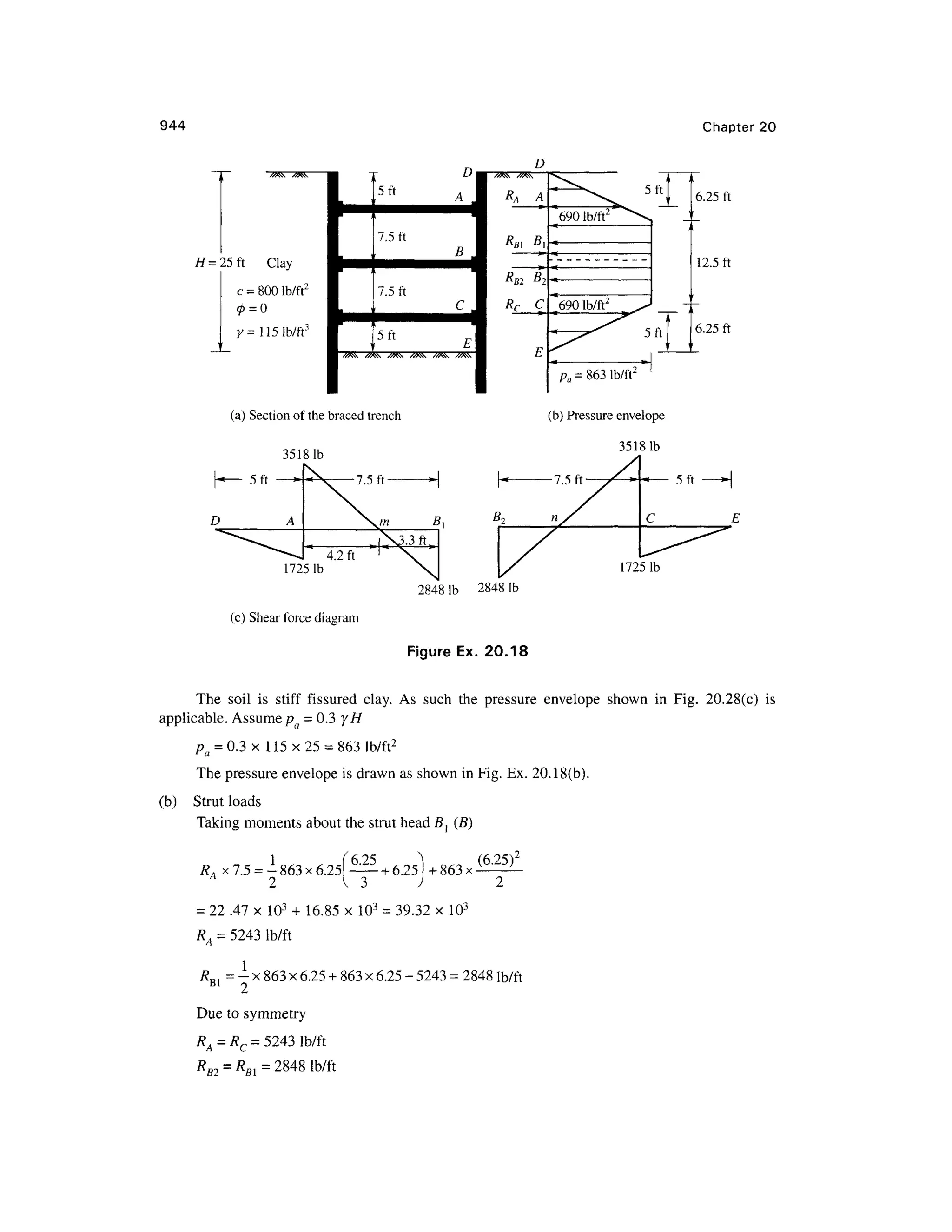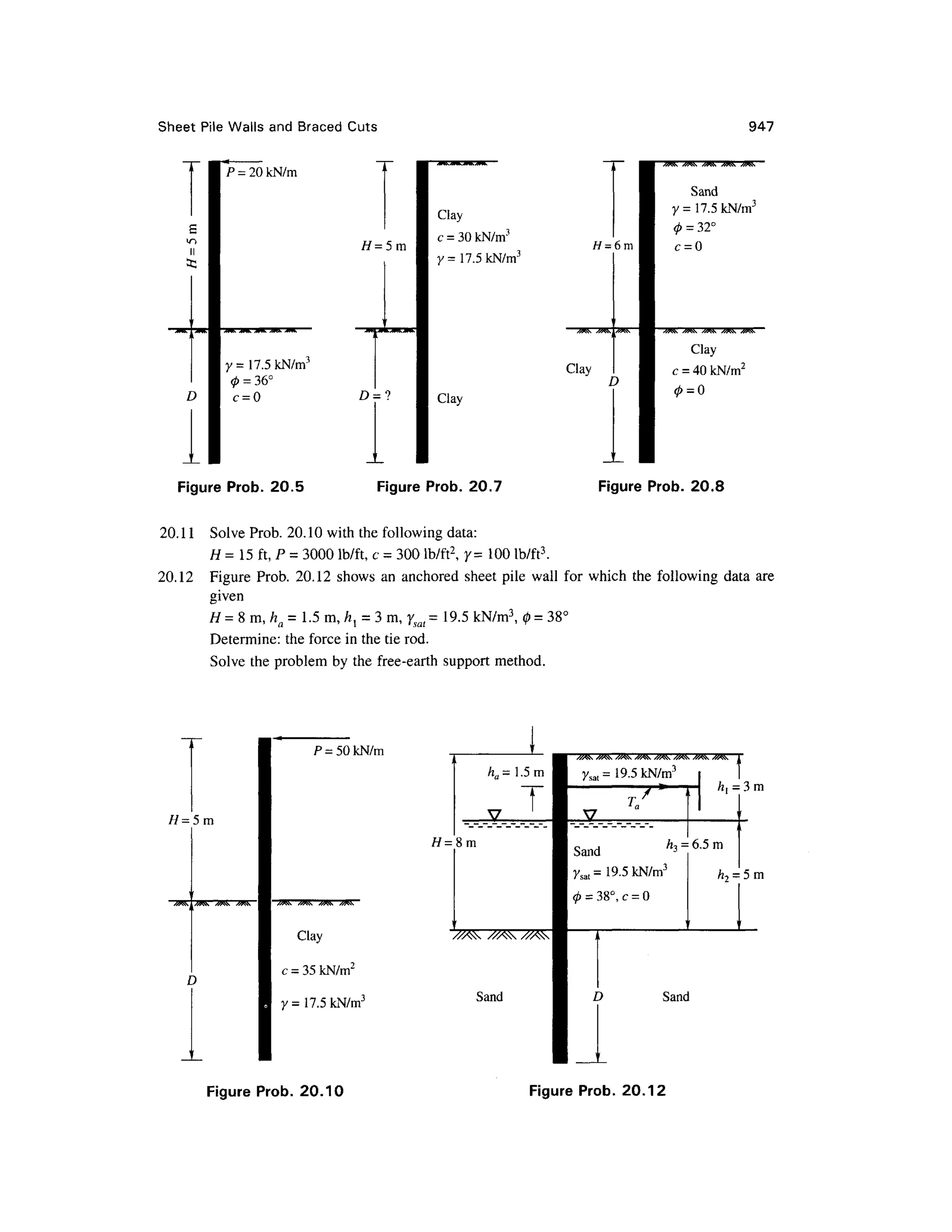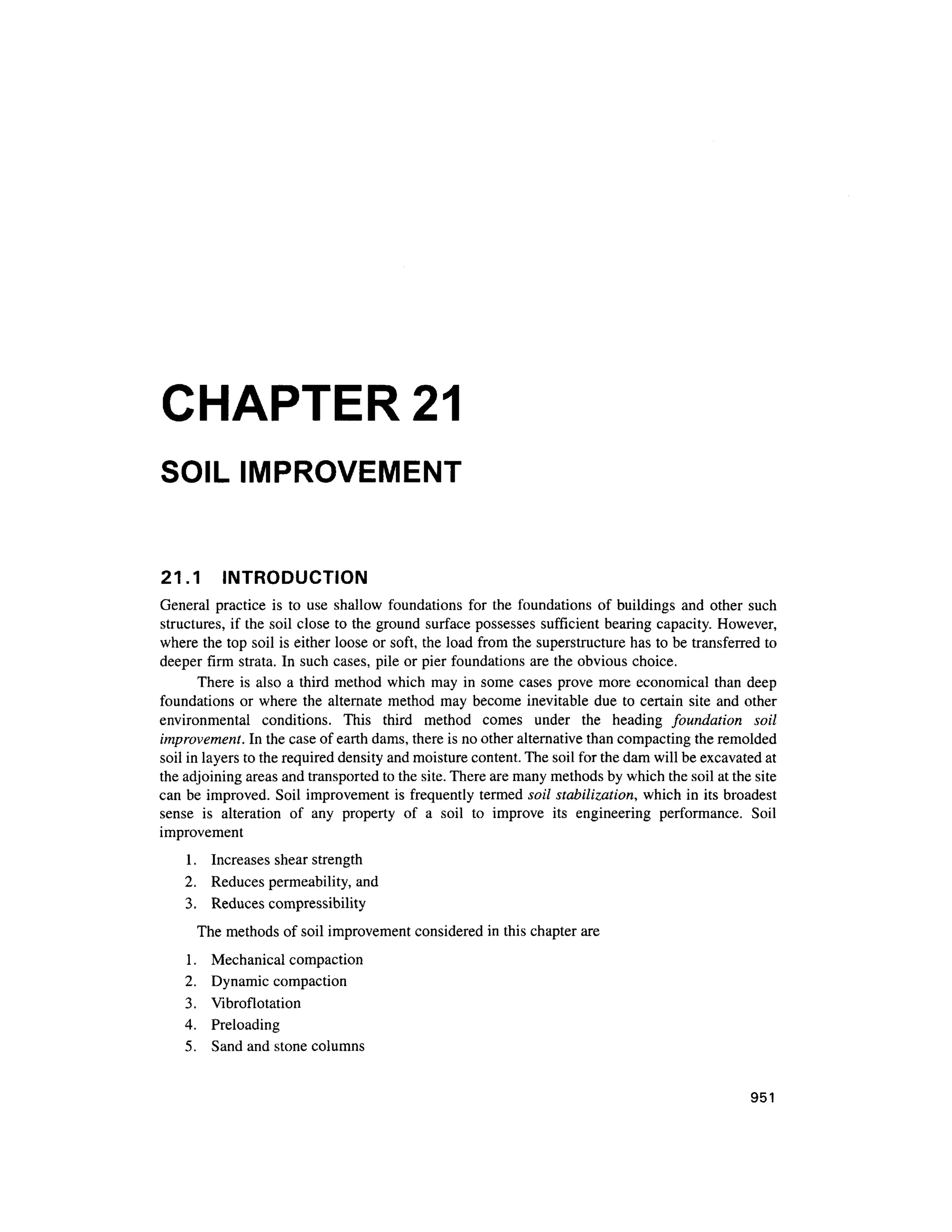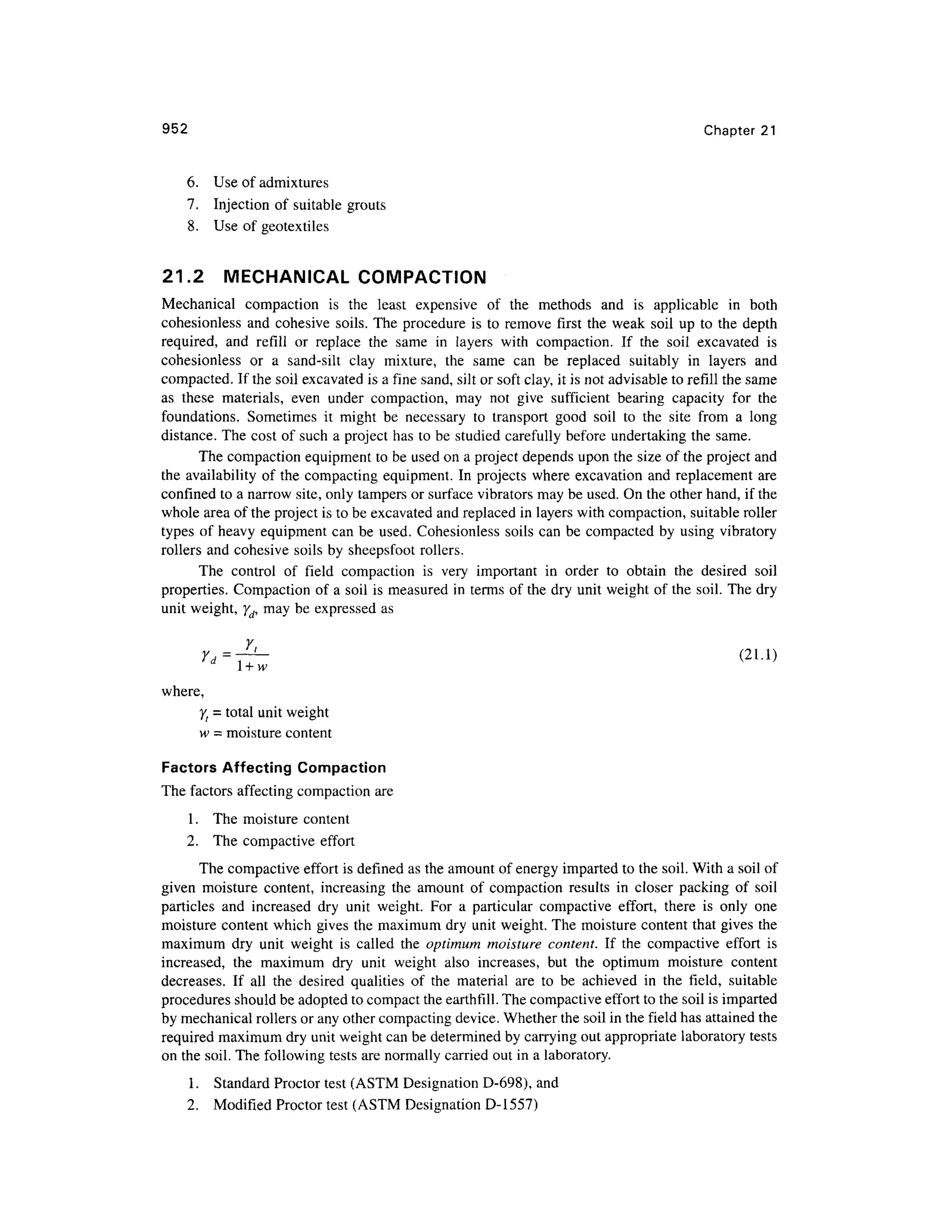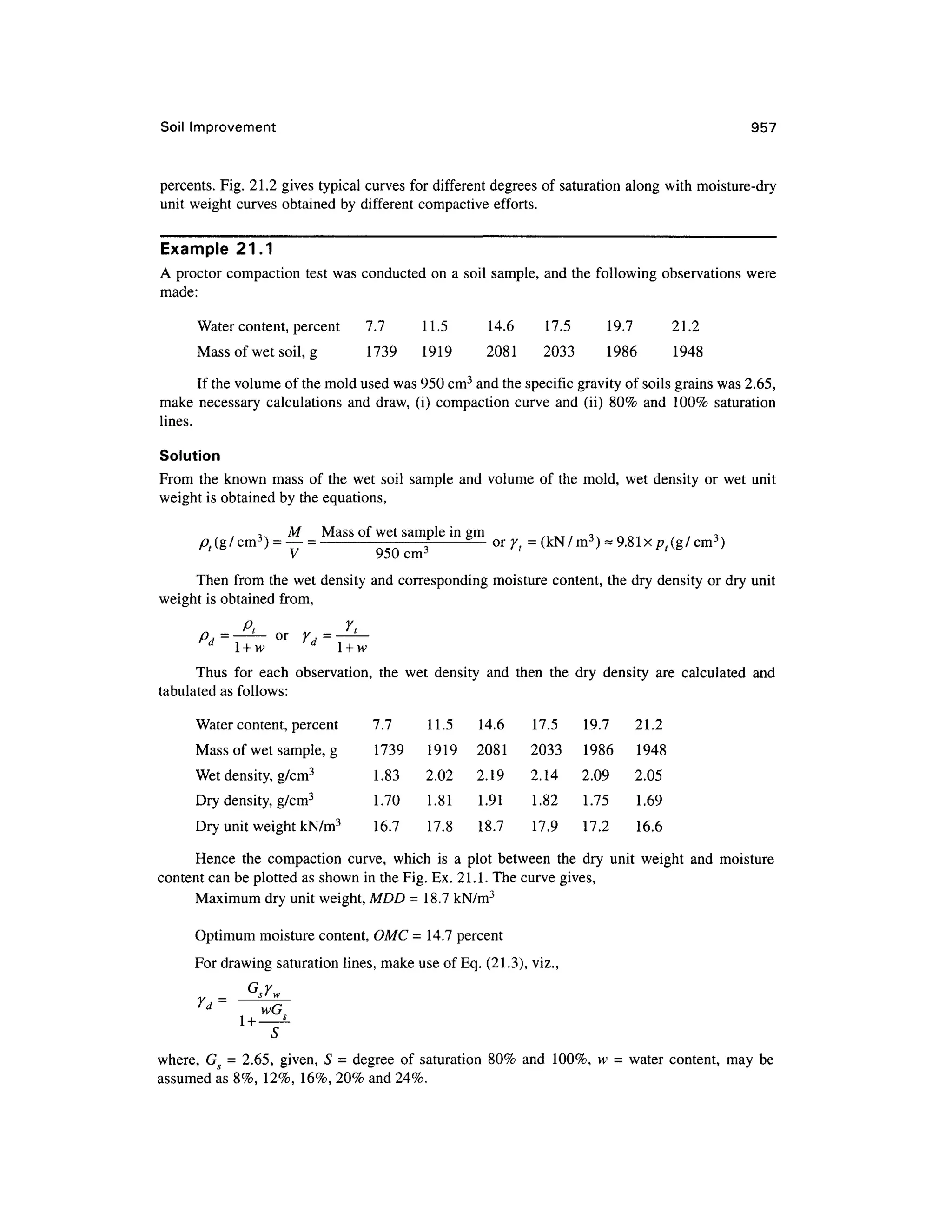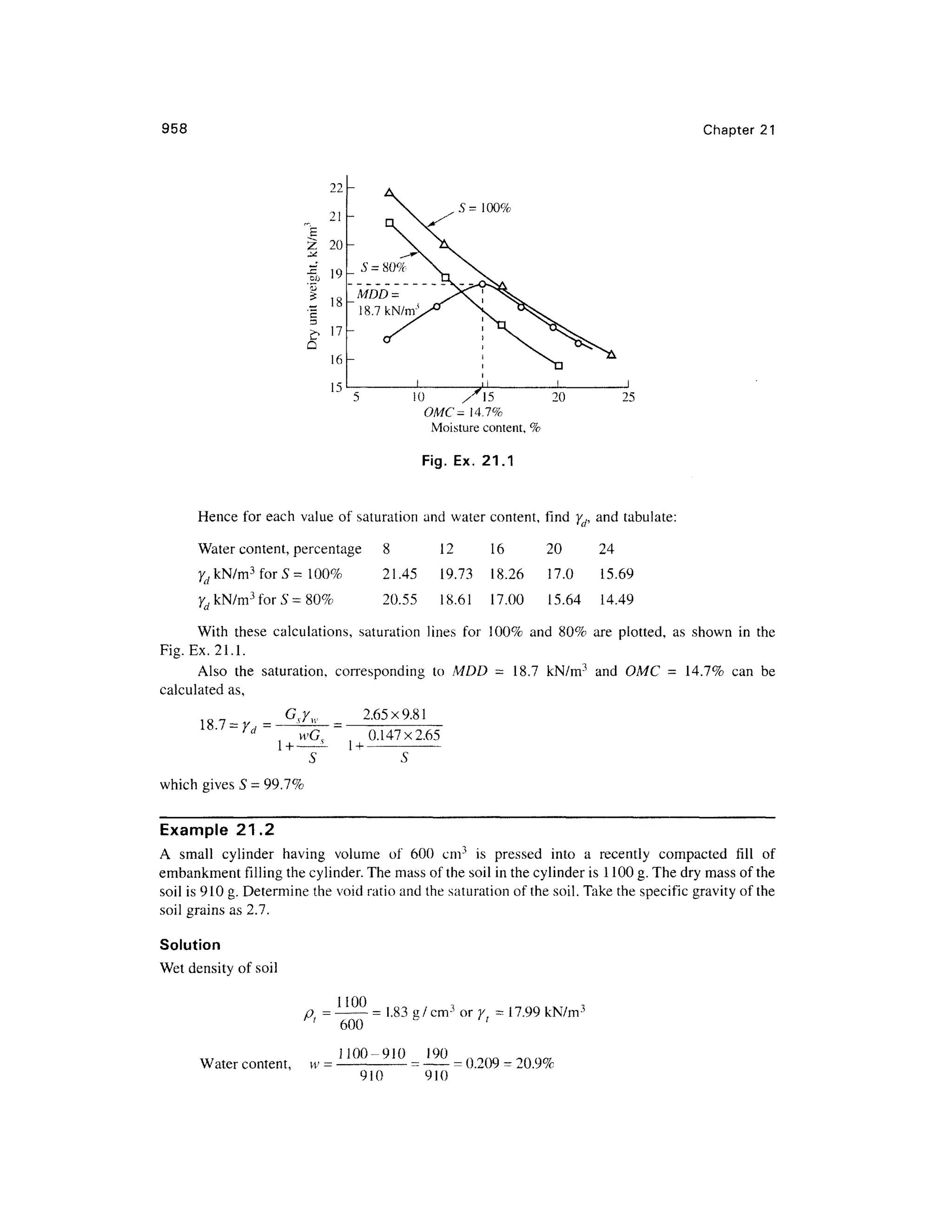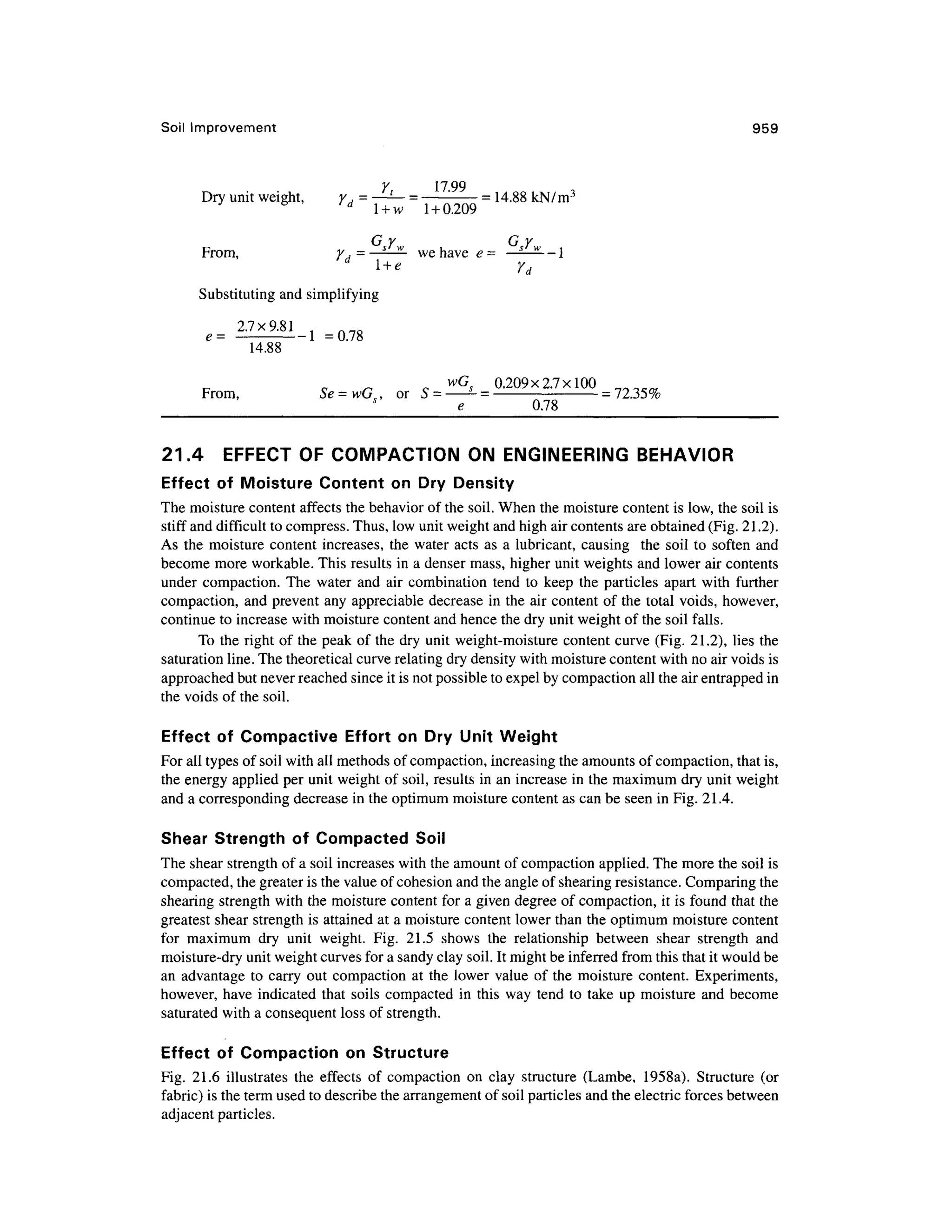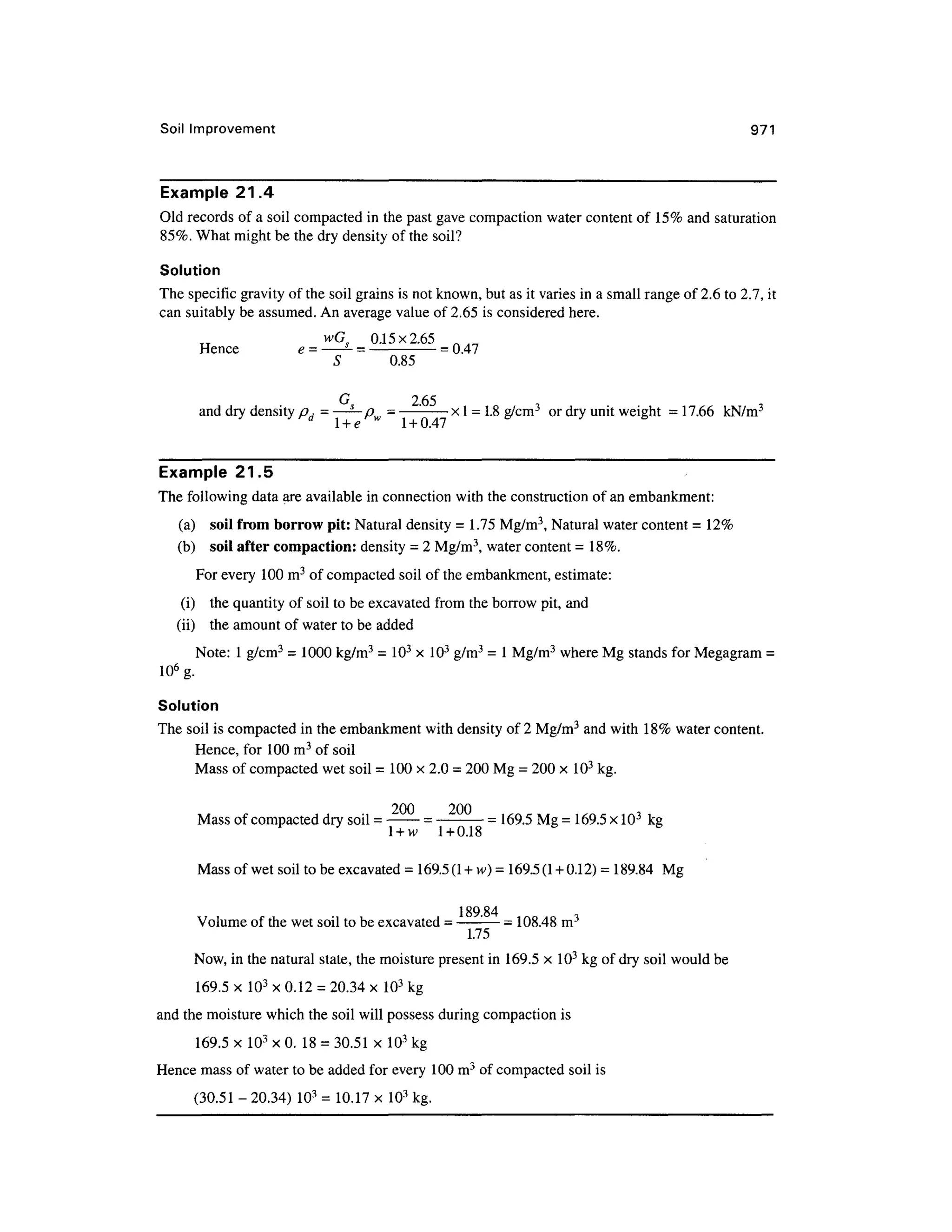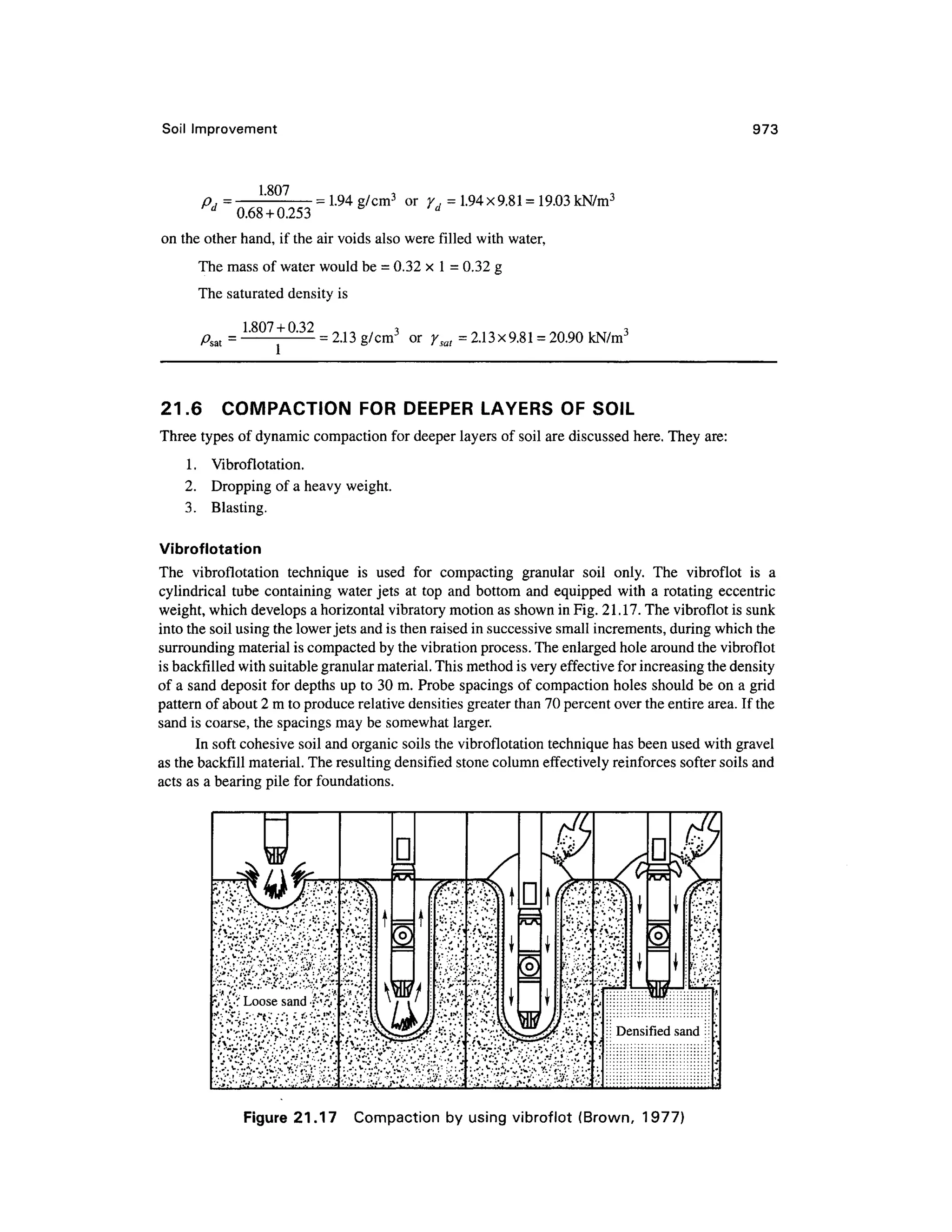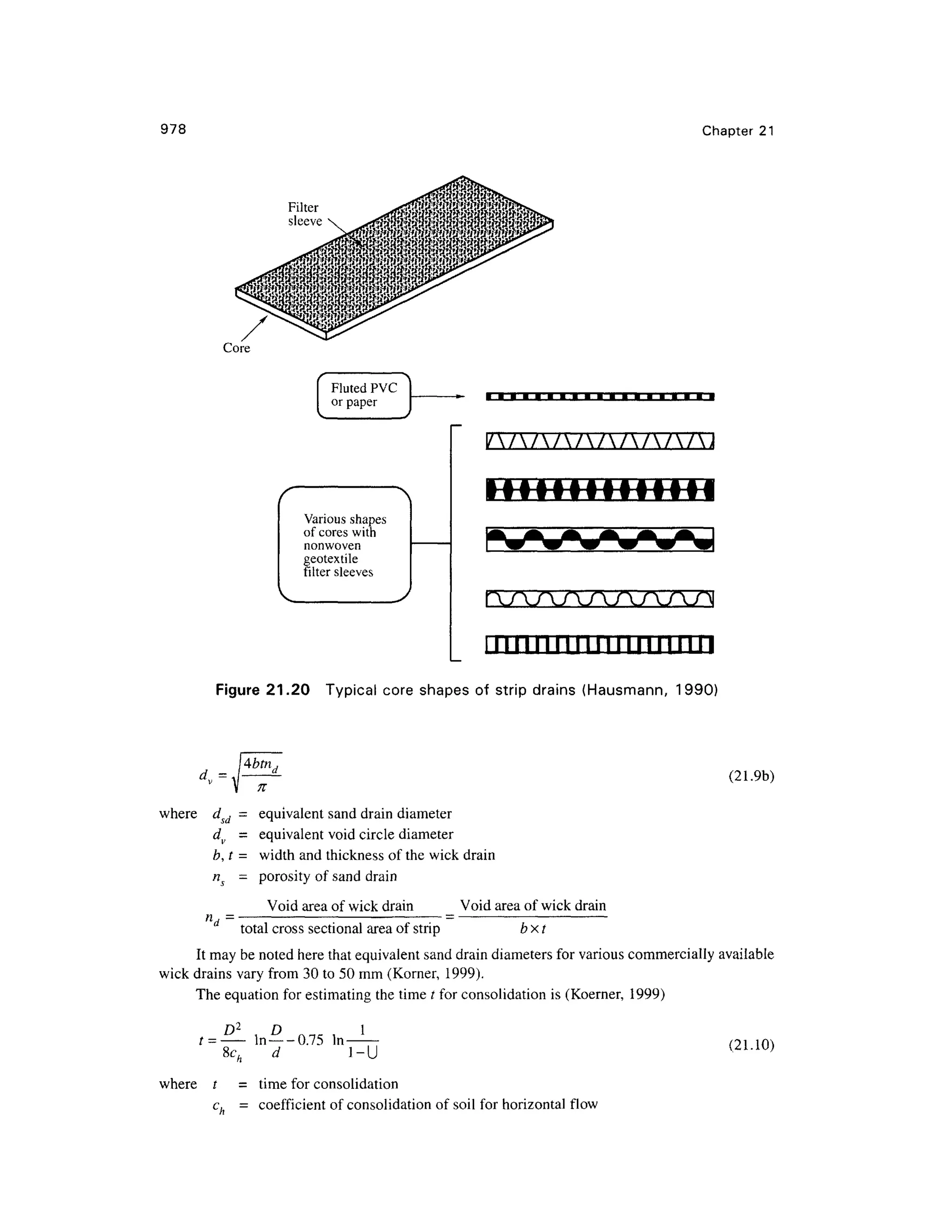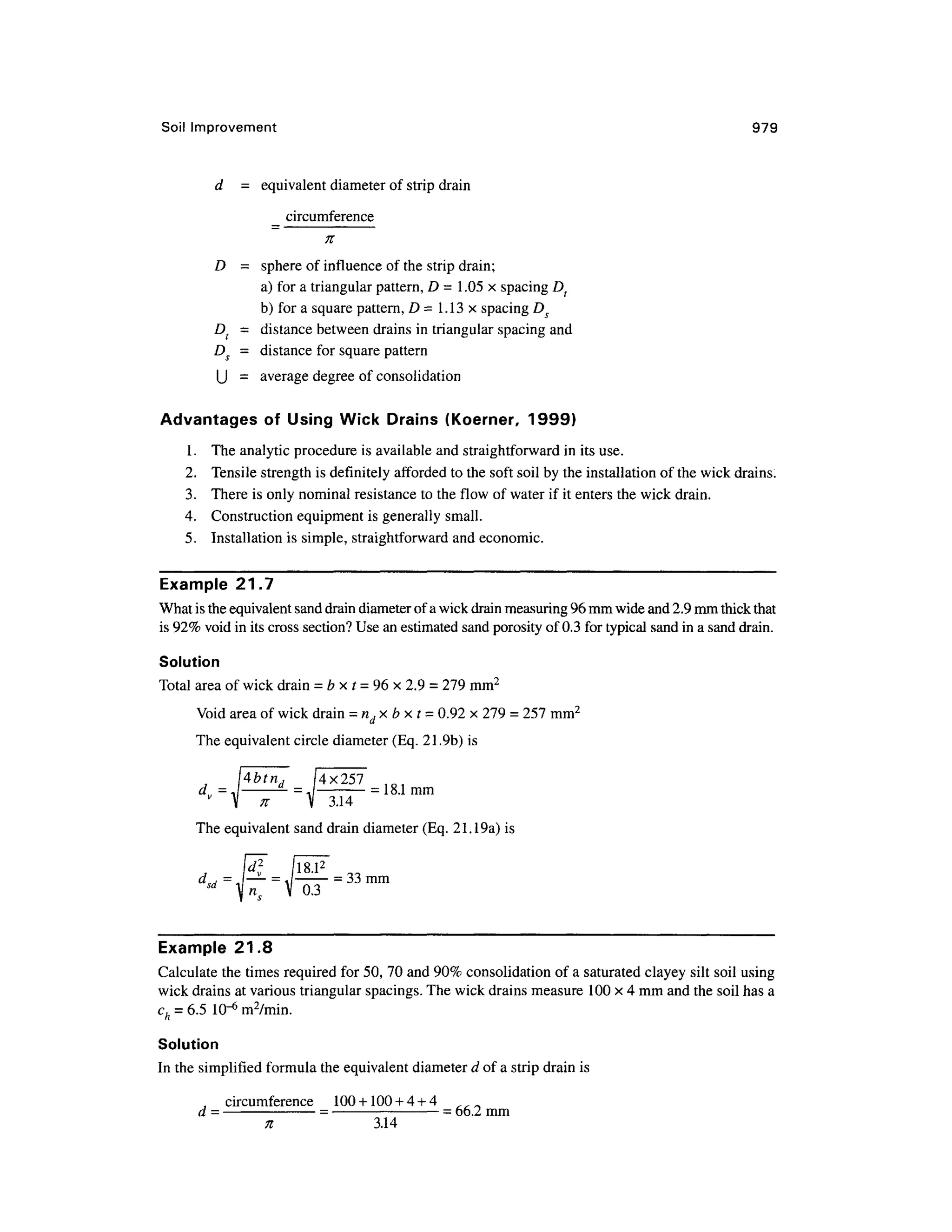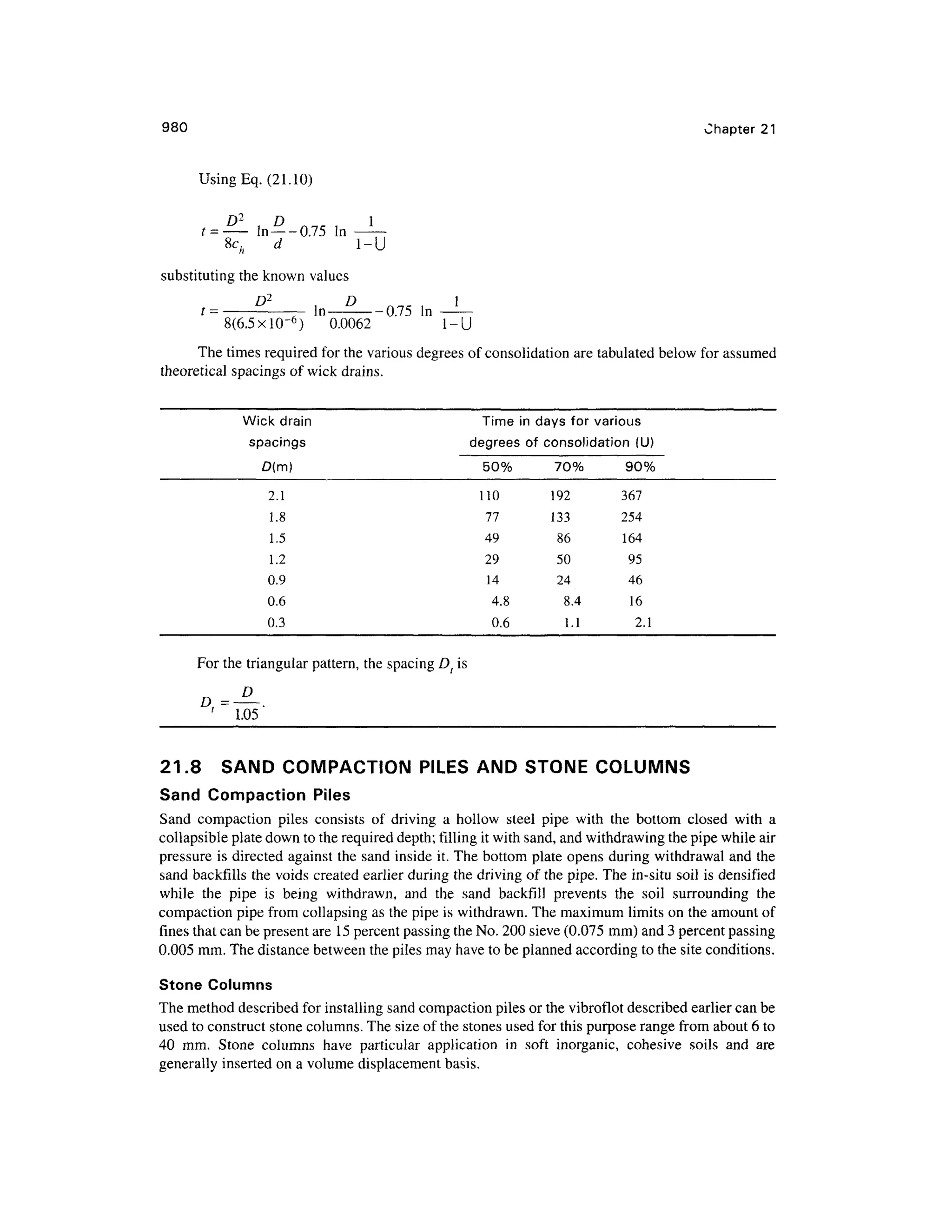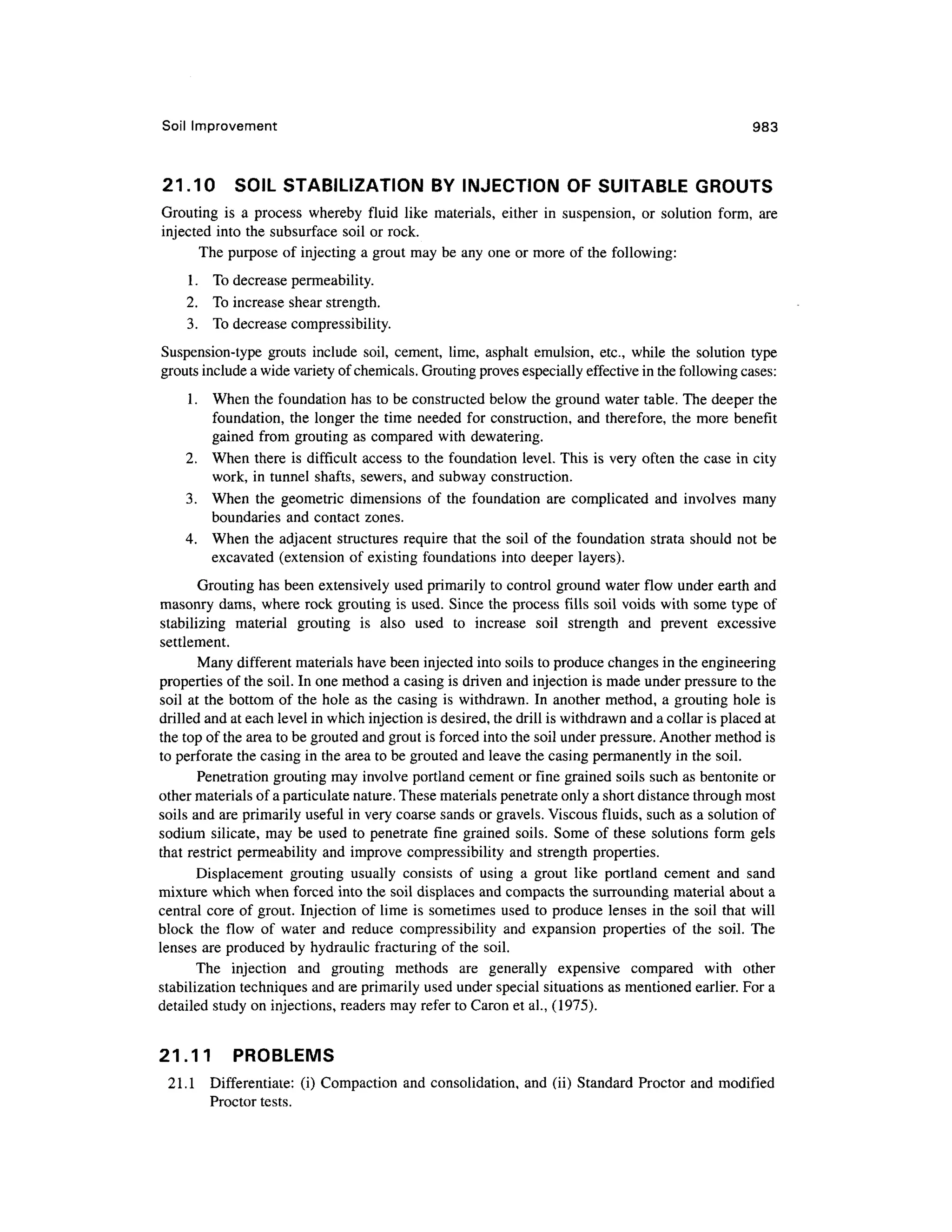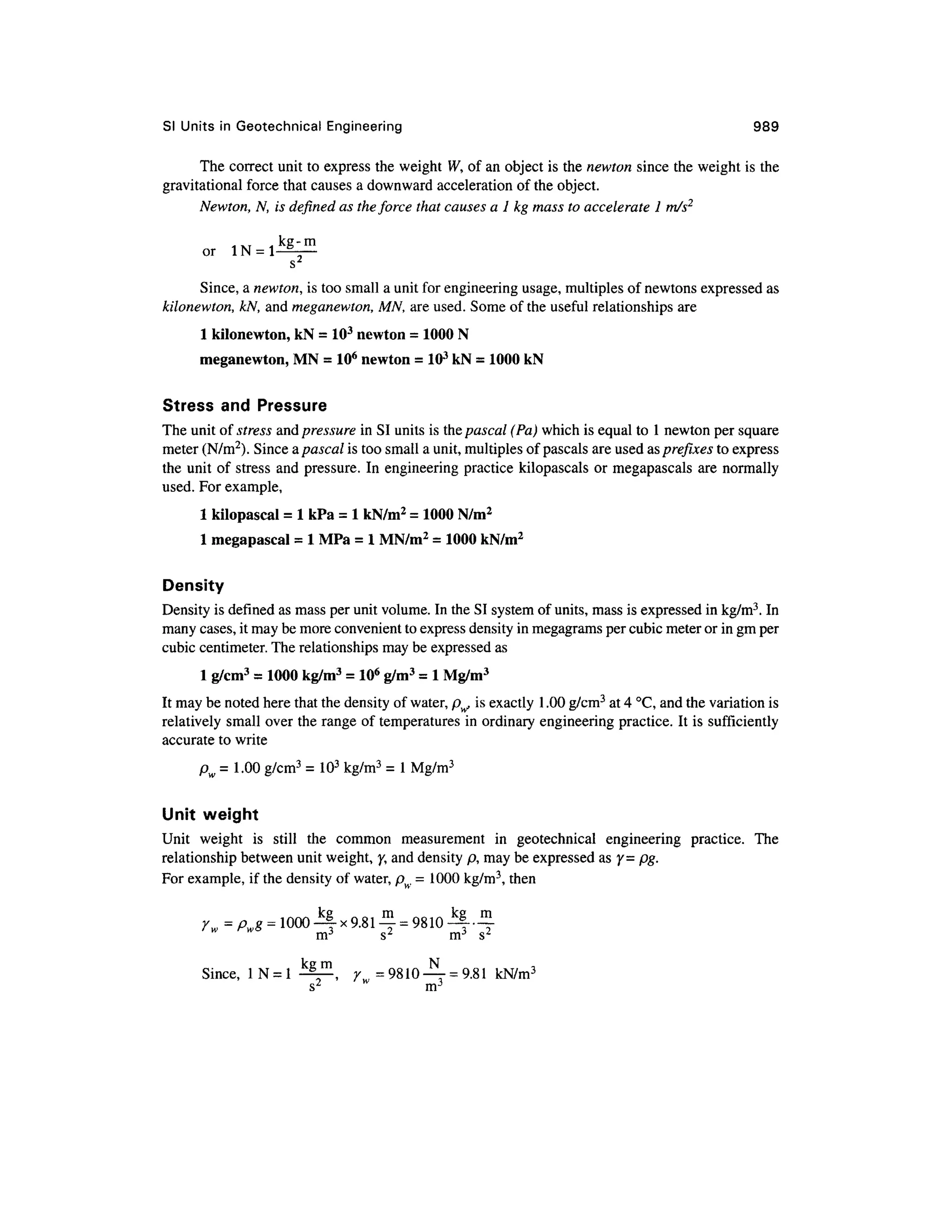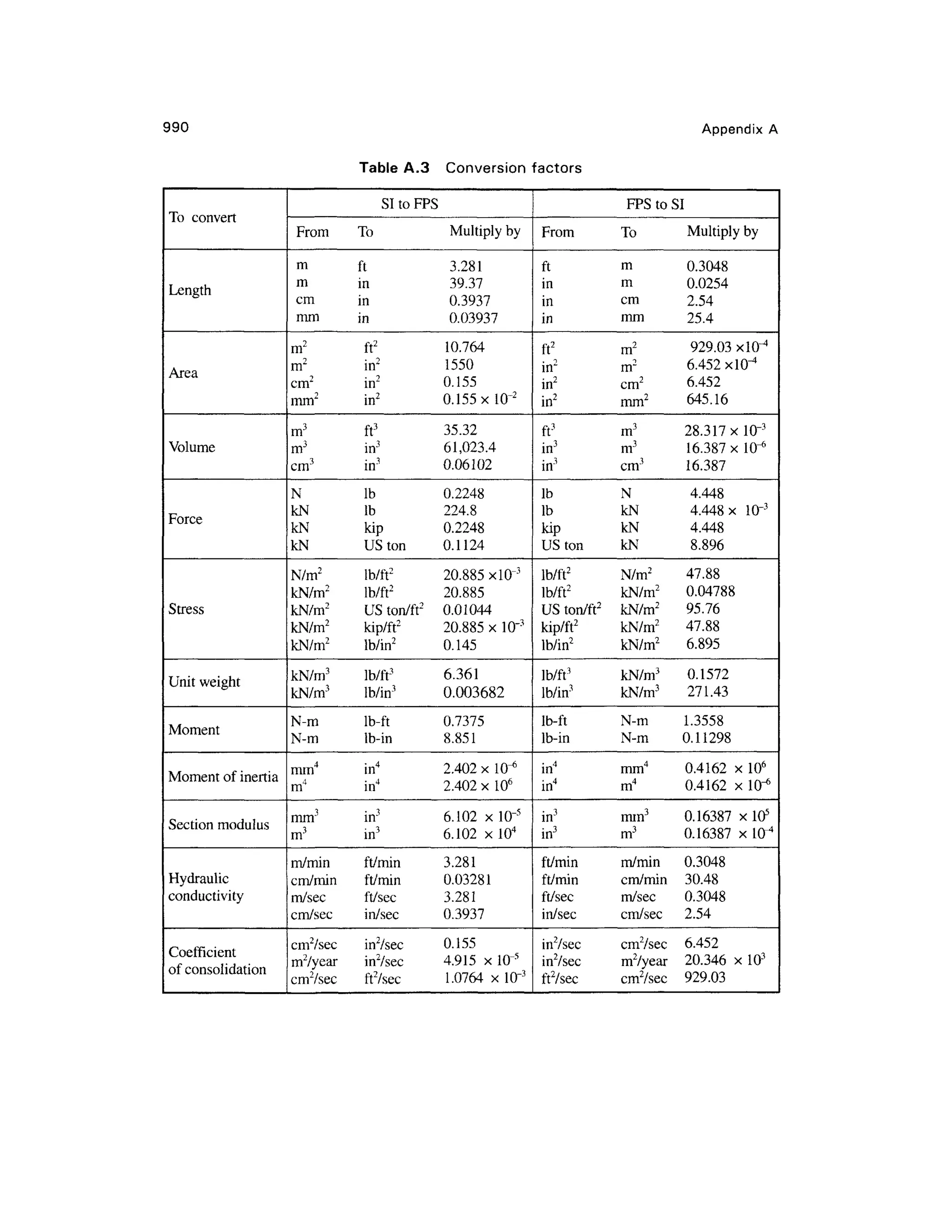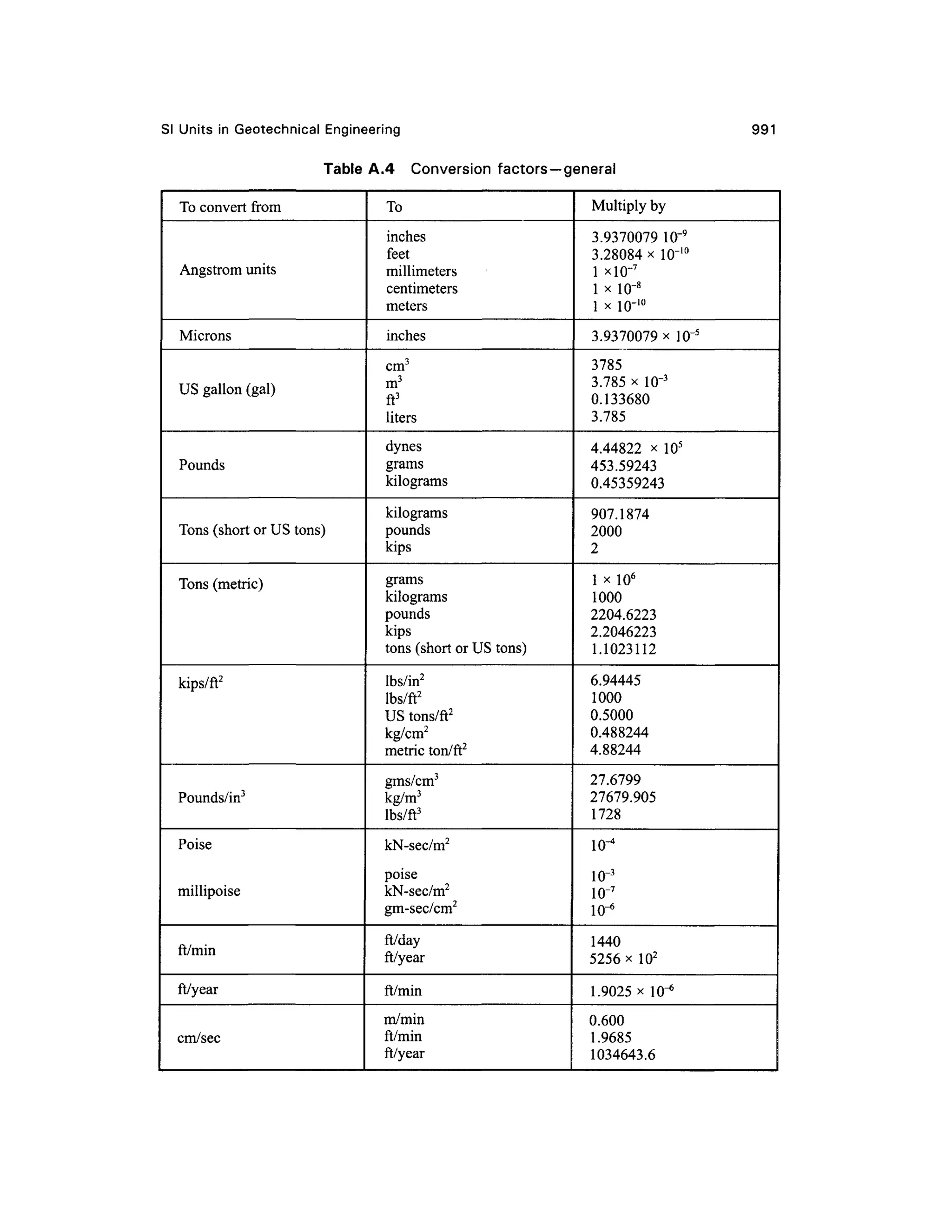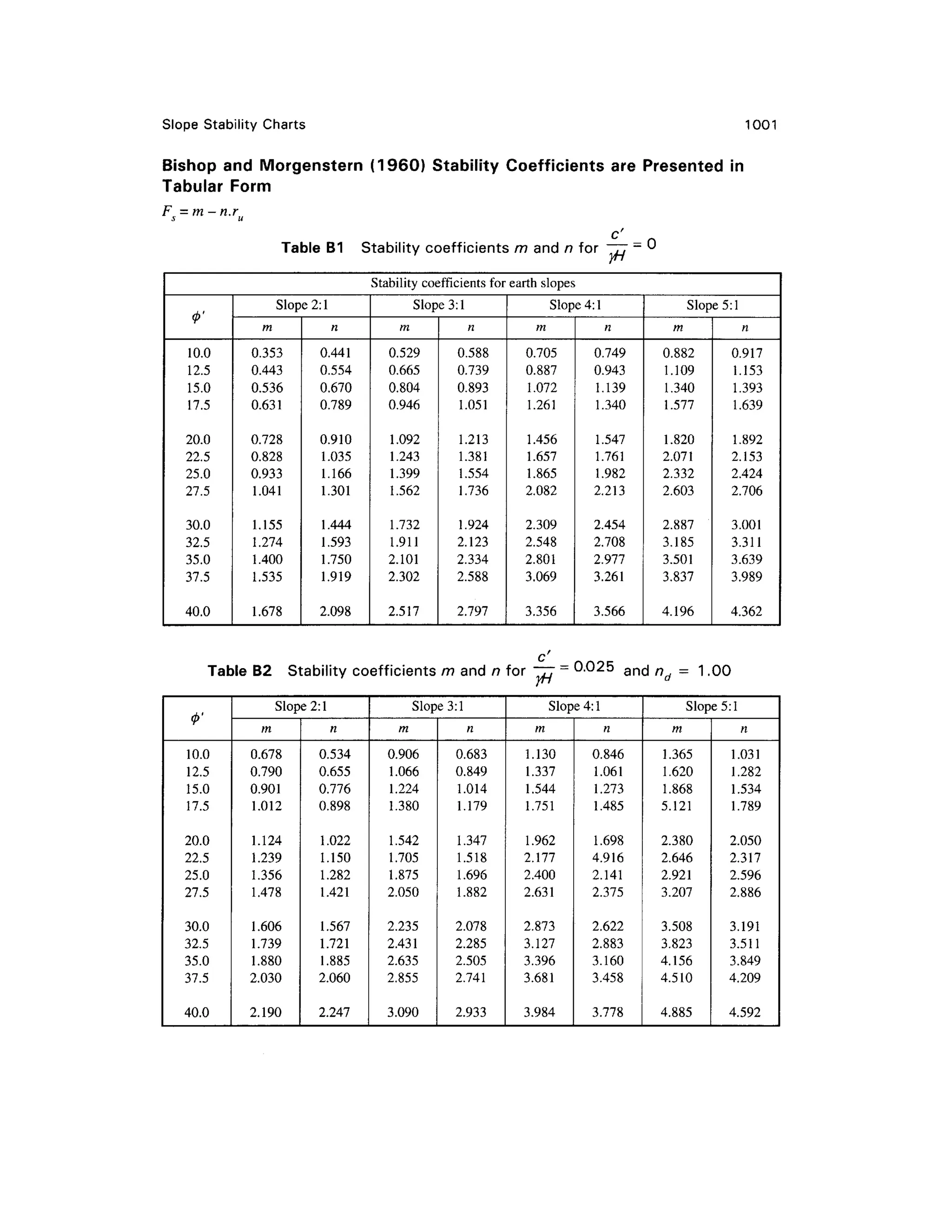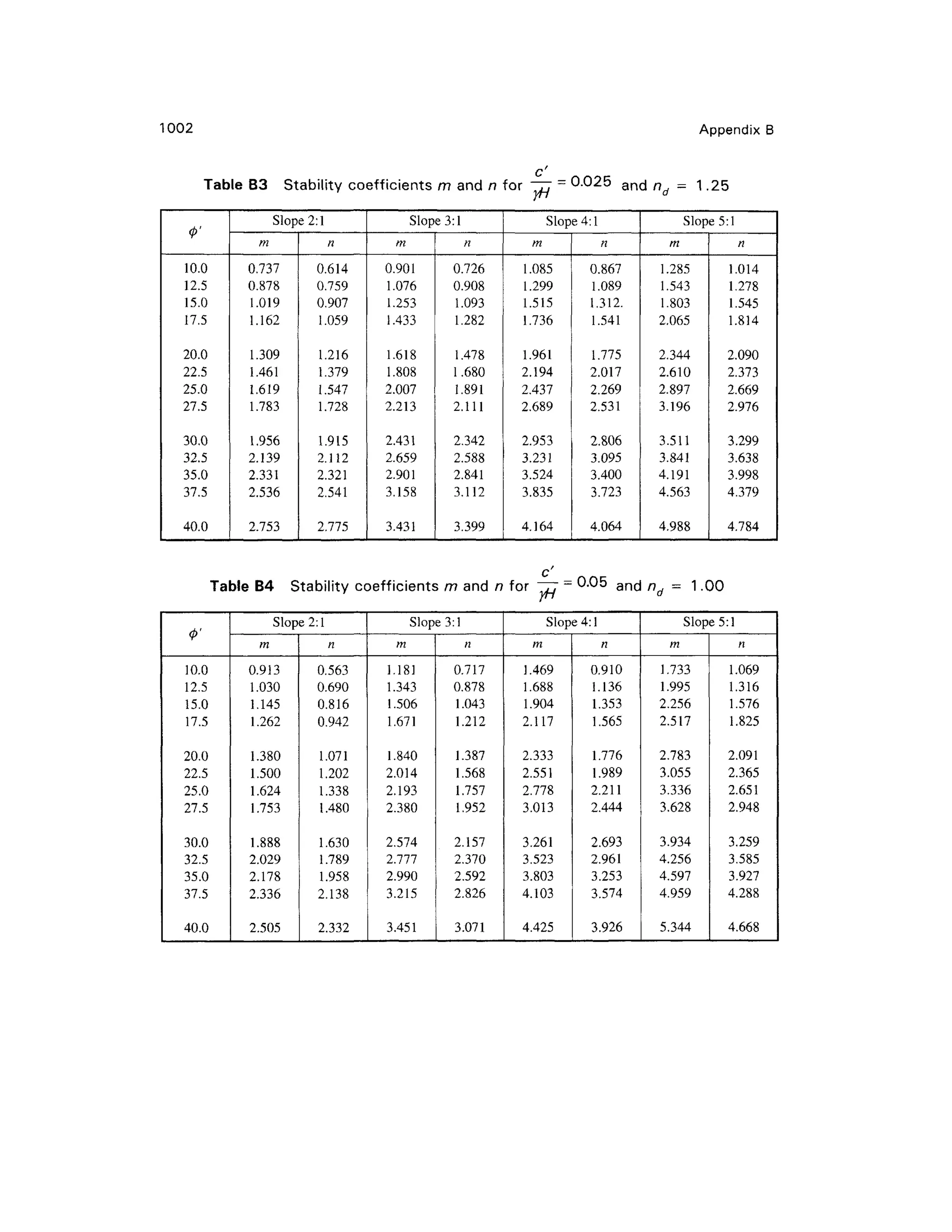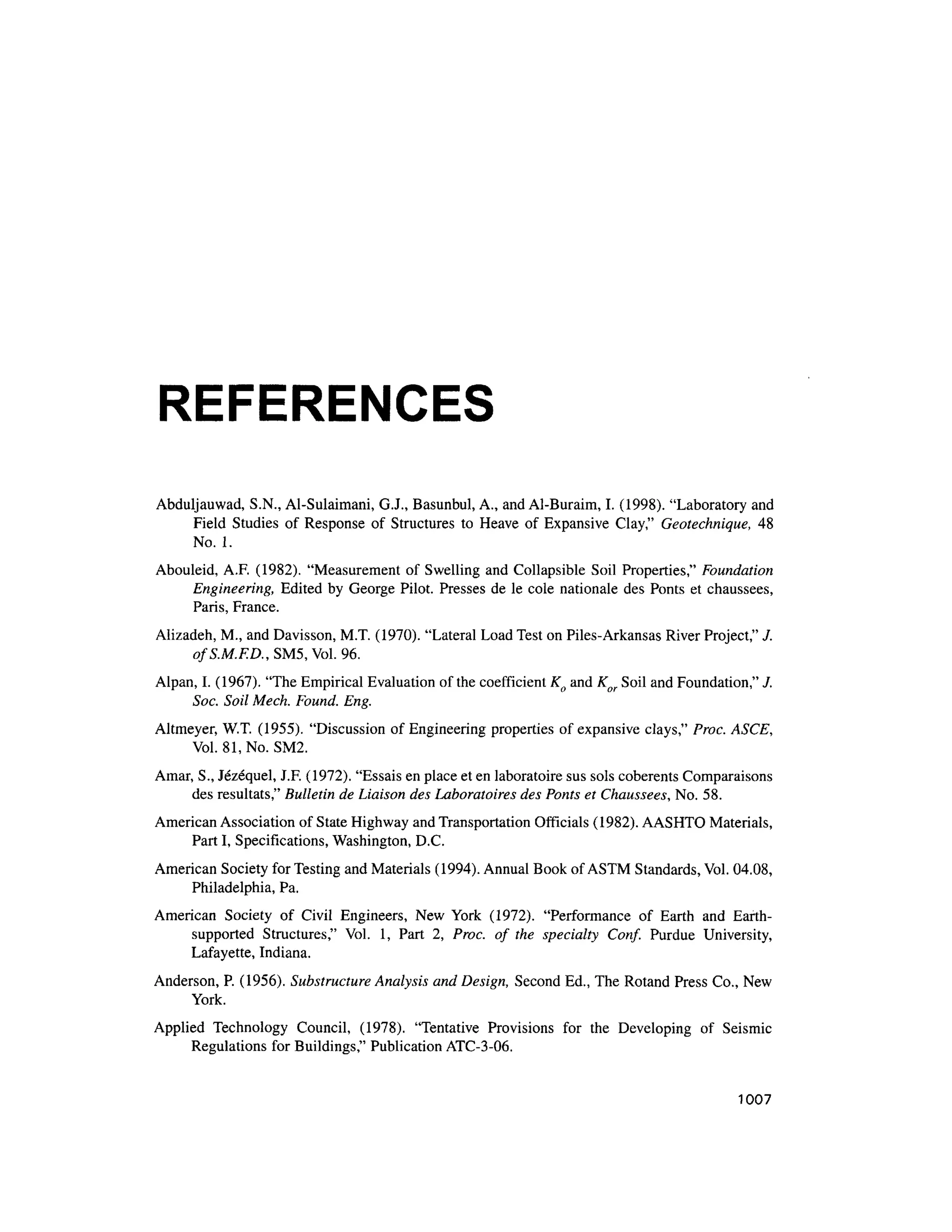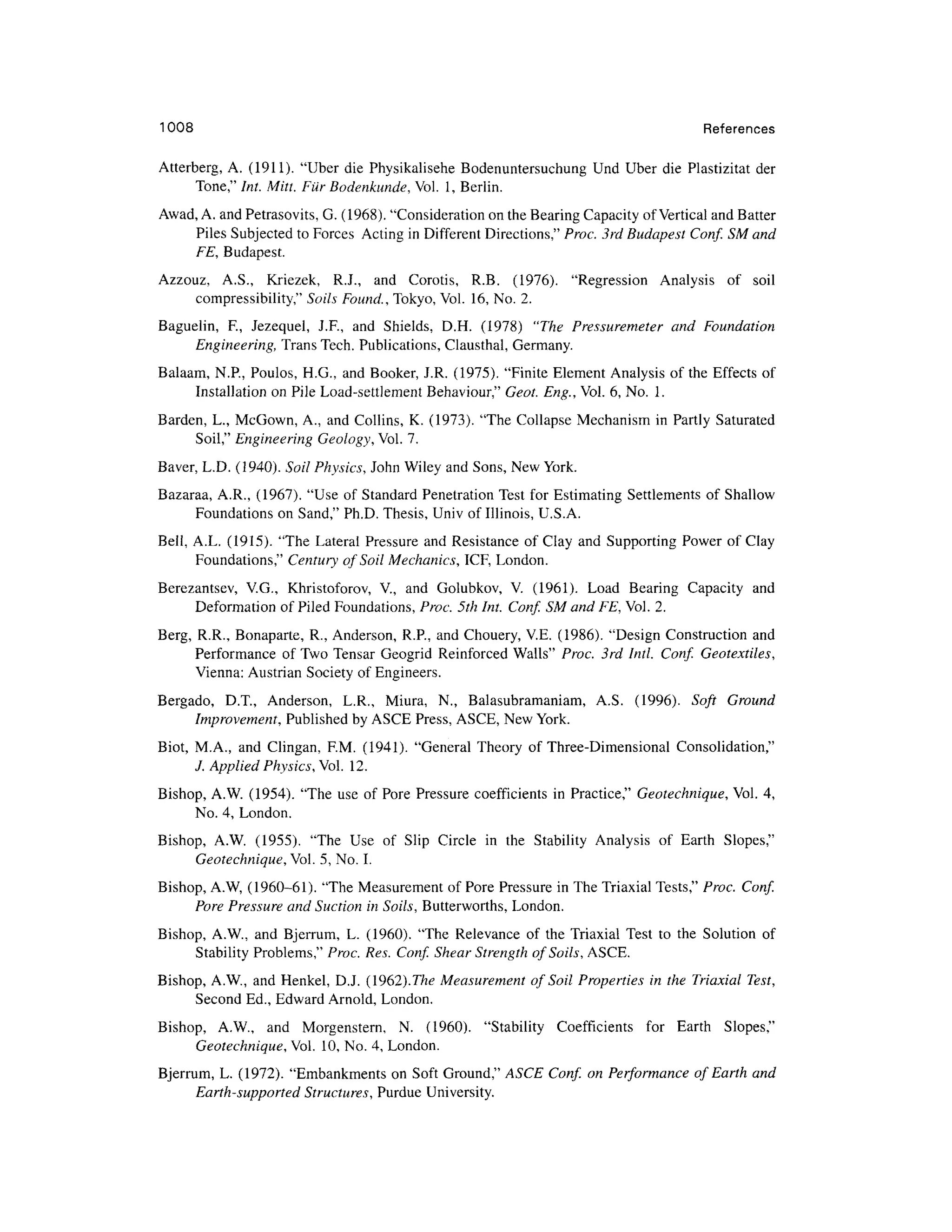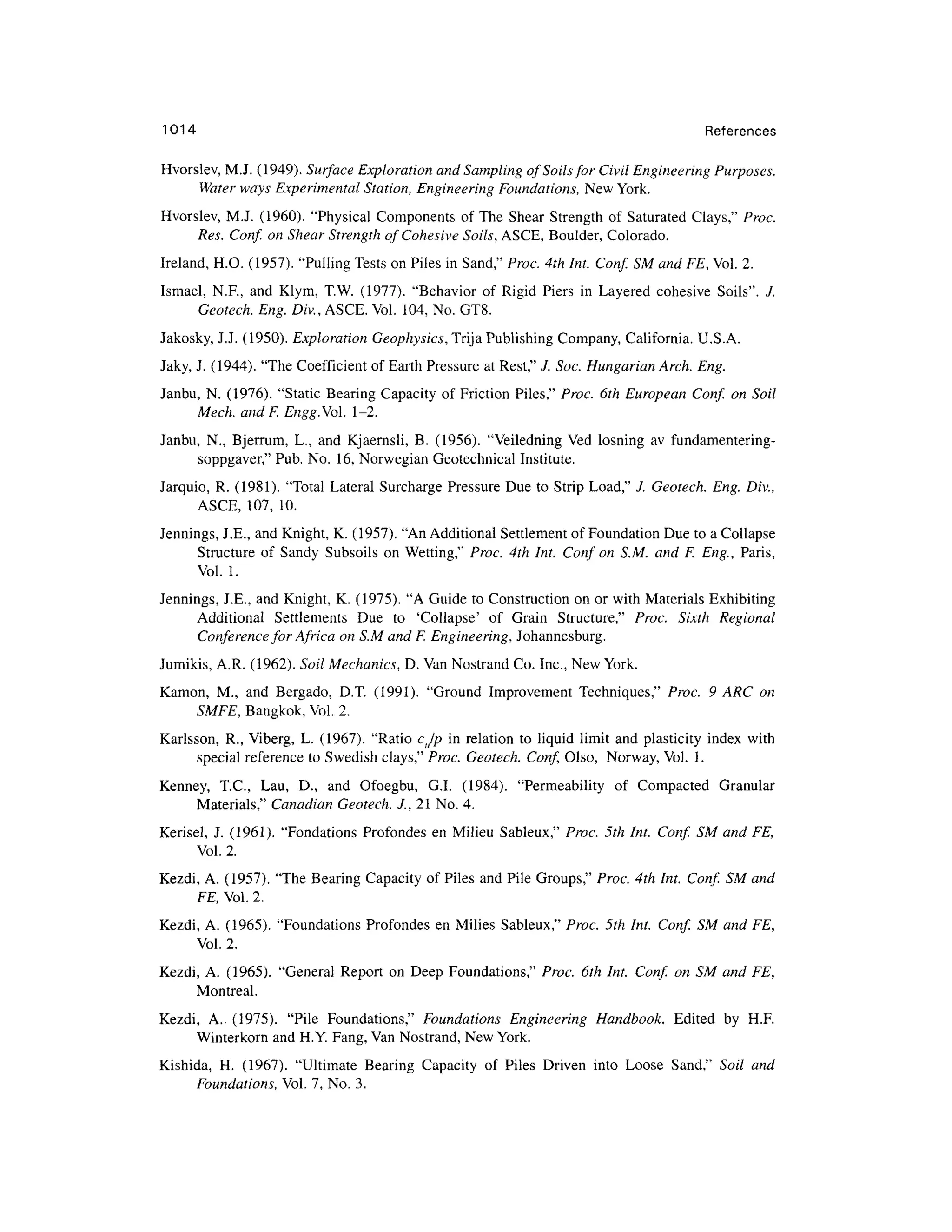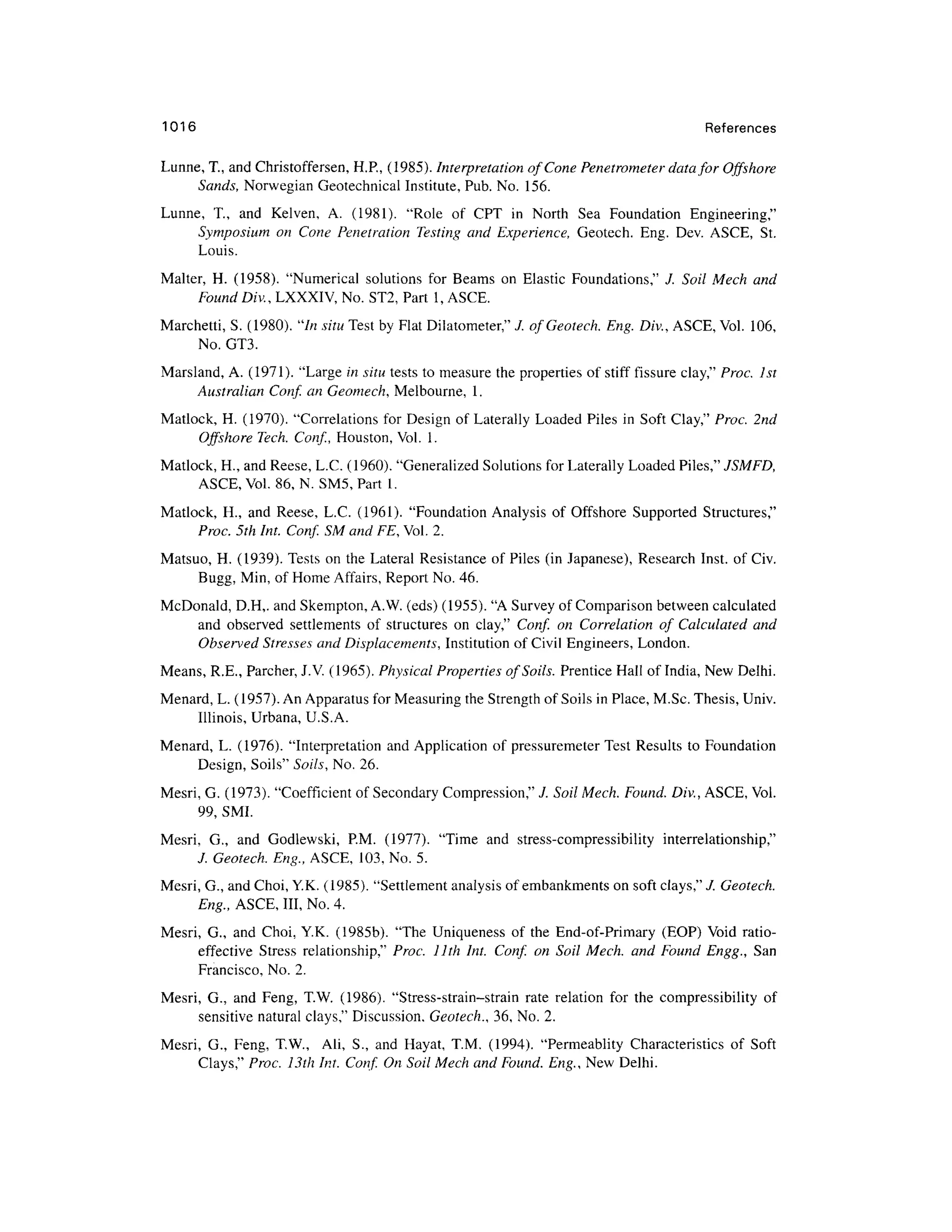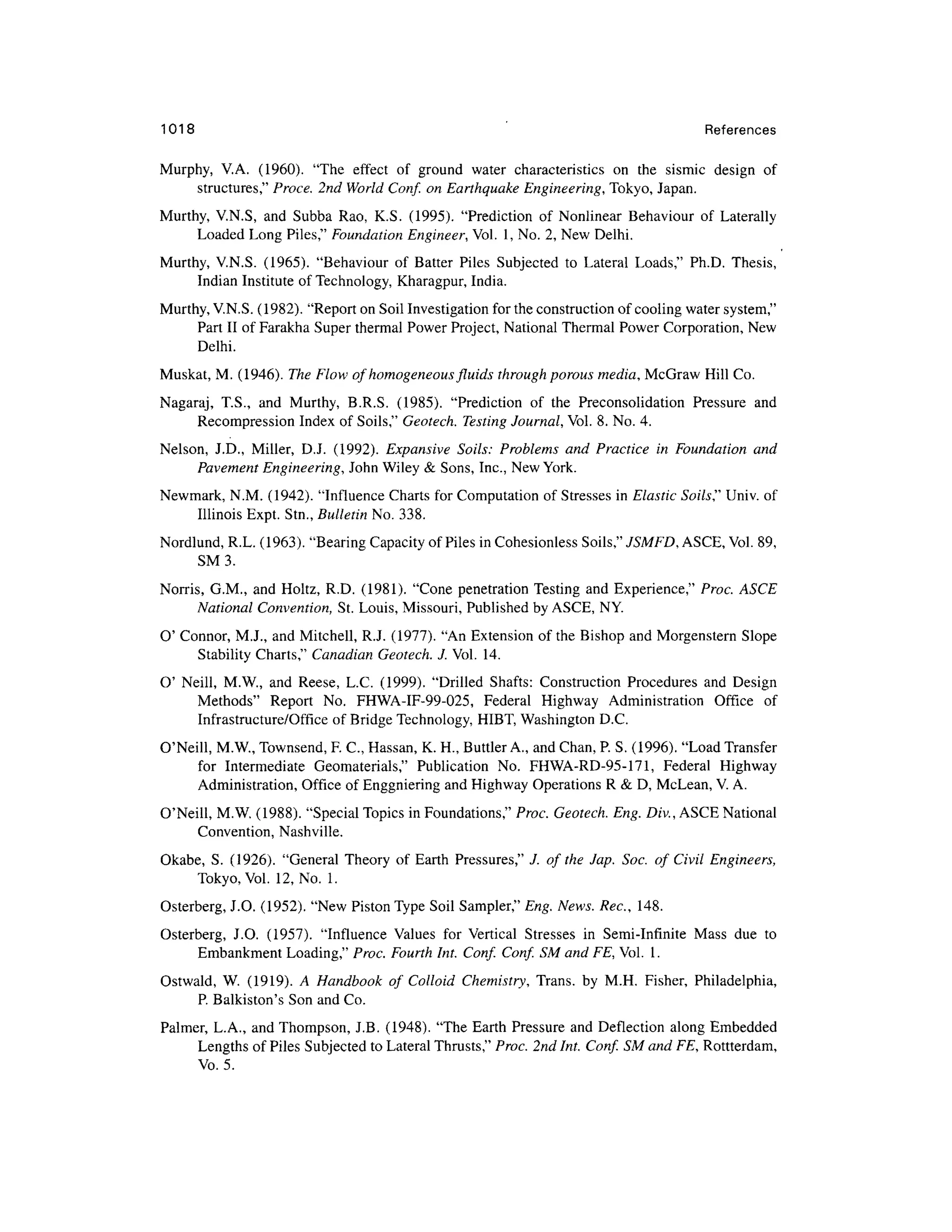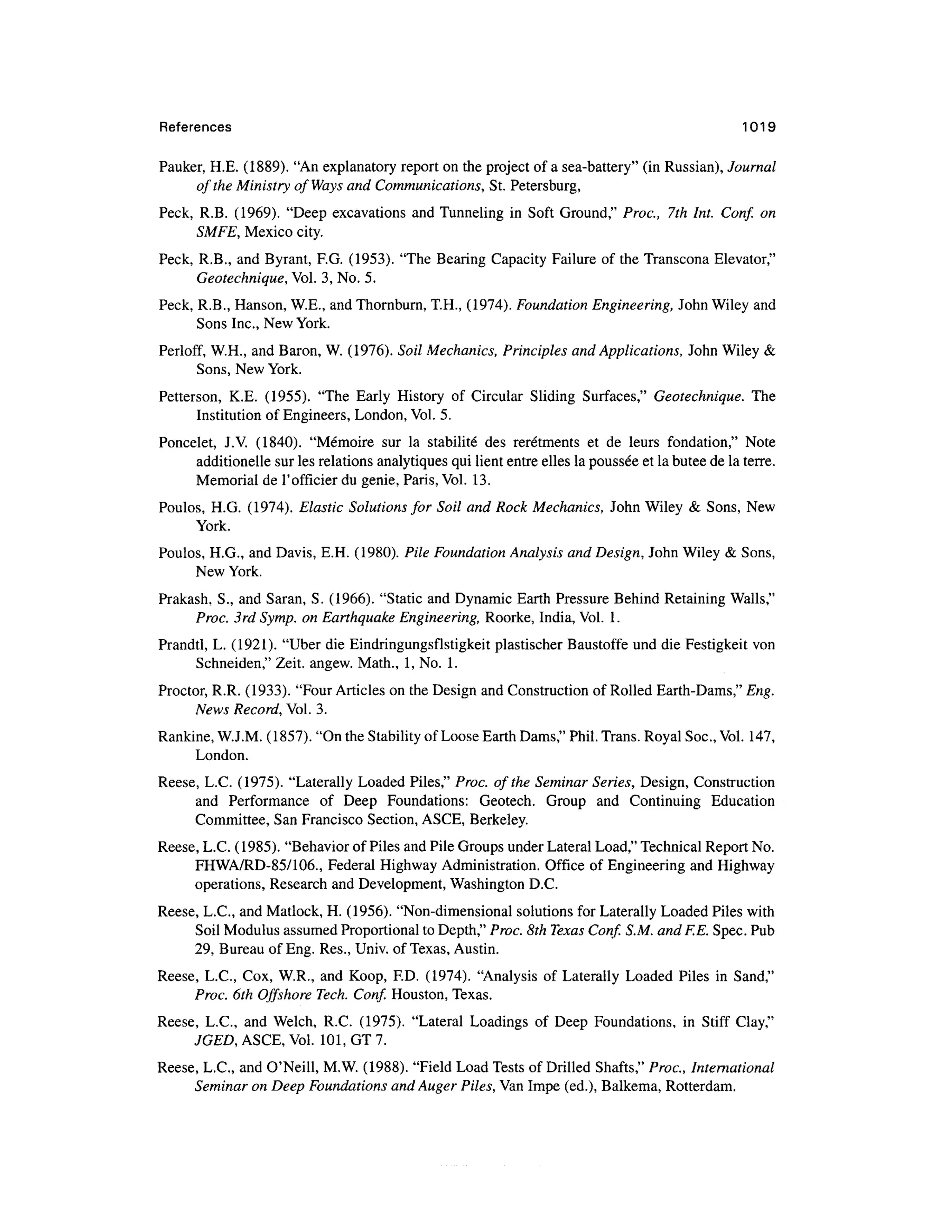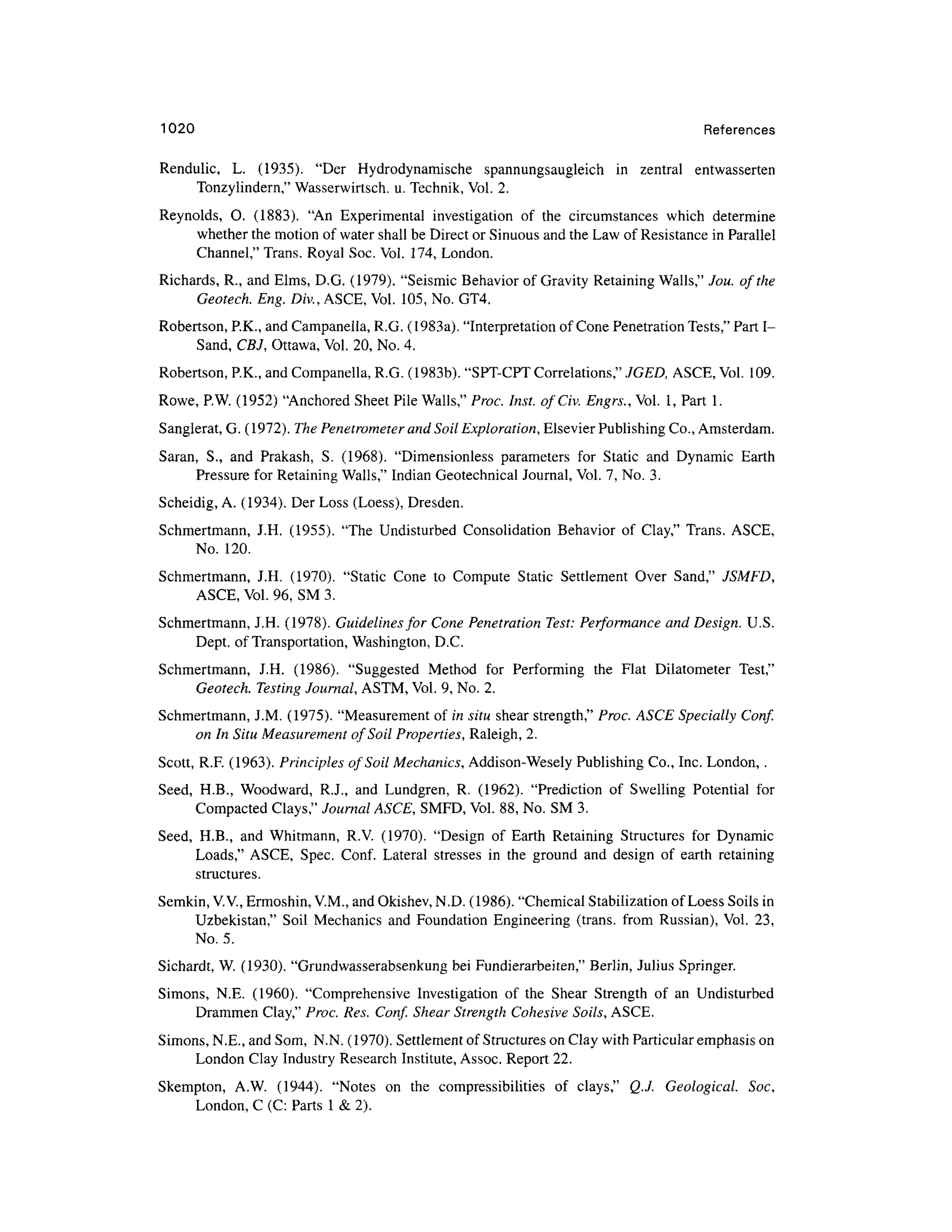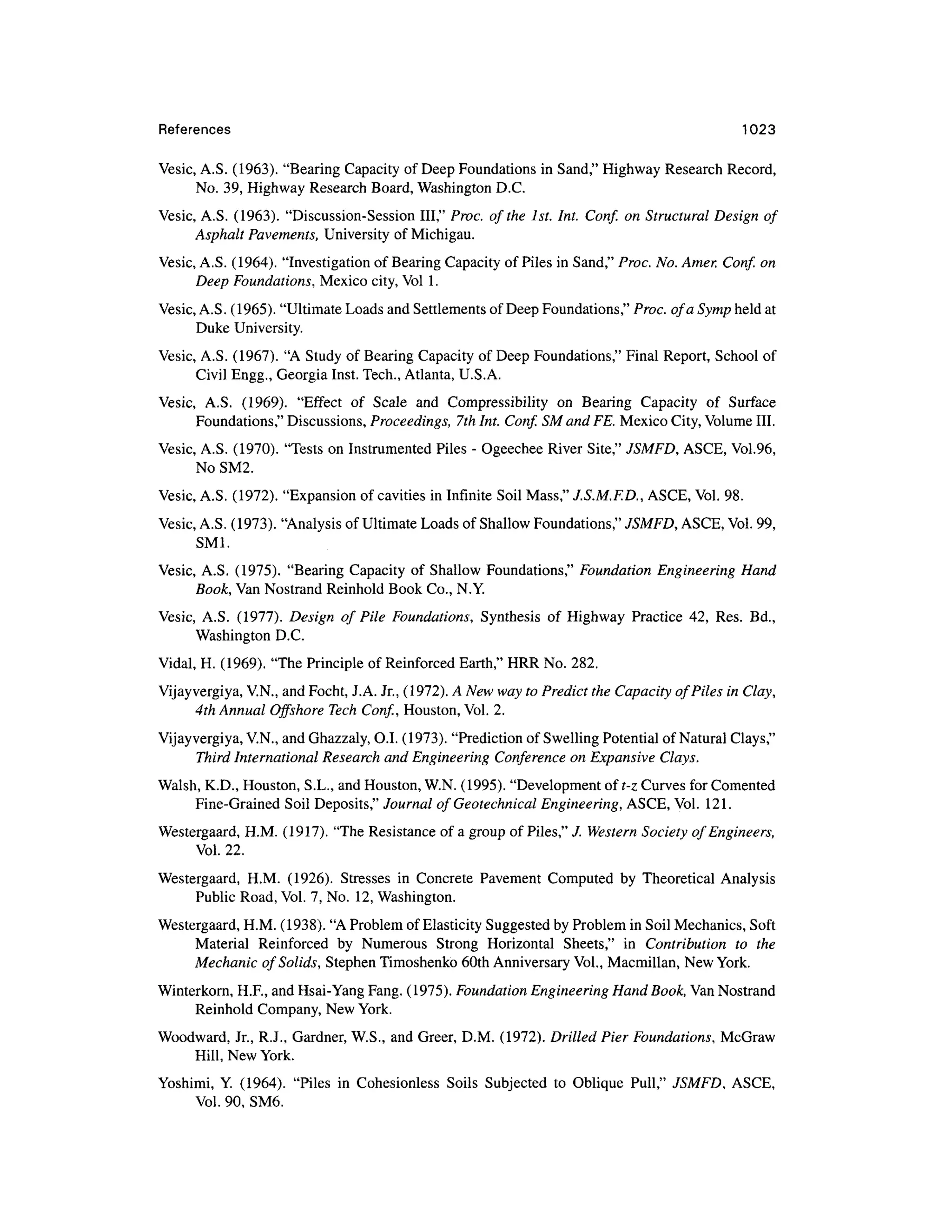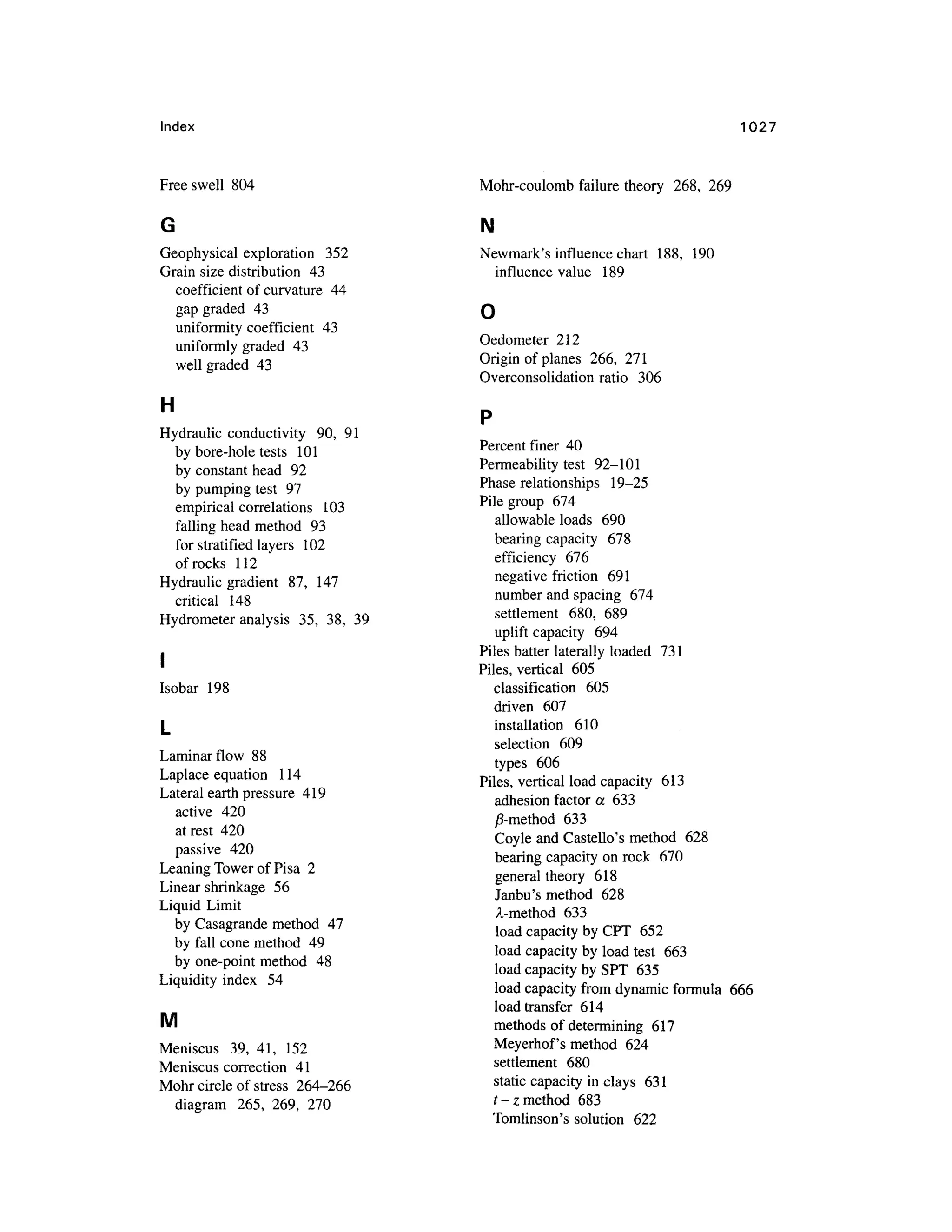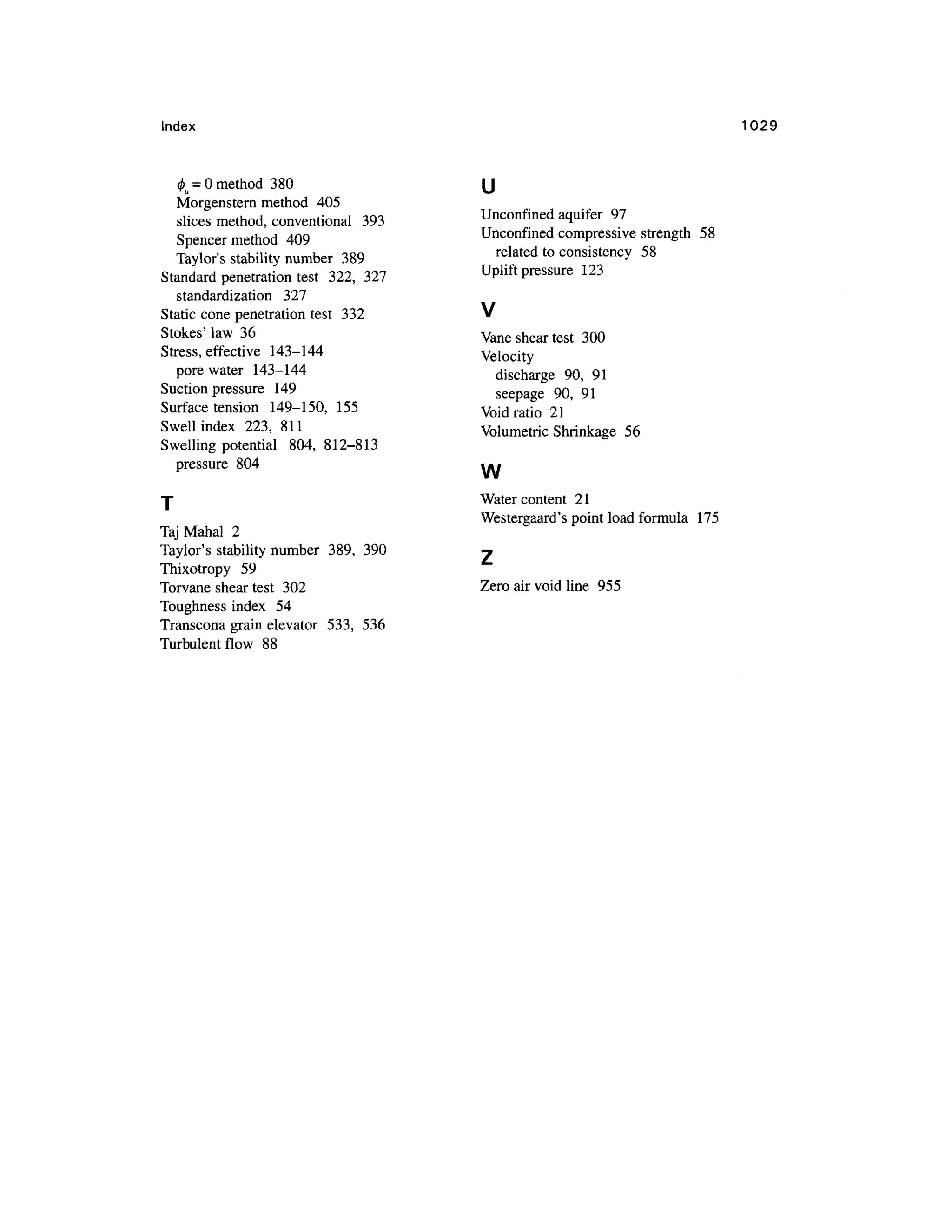This document provides a summary and introduction to a textbook on geotechnical engineering. It discusses the comprehensive nature and logical organization of the textbook. It provides endorsements from two professors who praise the coverage, clarity, and insights provided in the textbook. They believe the textbook will be well-received and serve as a valuable reference for students, professors, and engineers. The forewords provide a high-level endorsement of the textbook's suitability and comprehensive treatment of the subject matter.

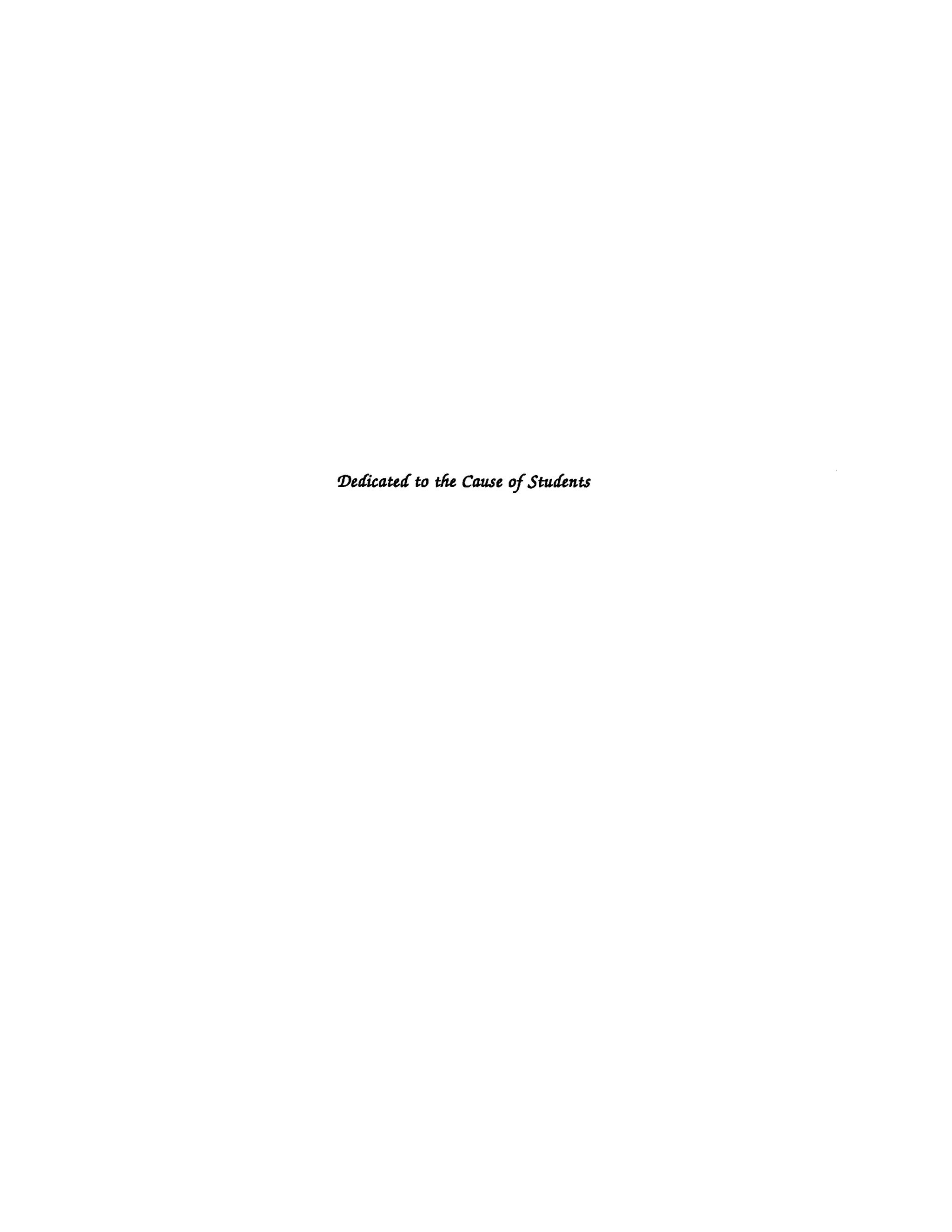
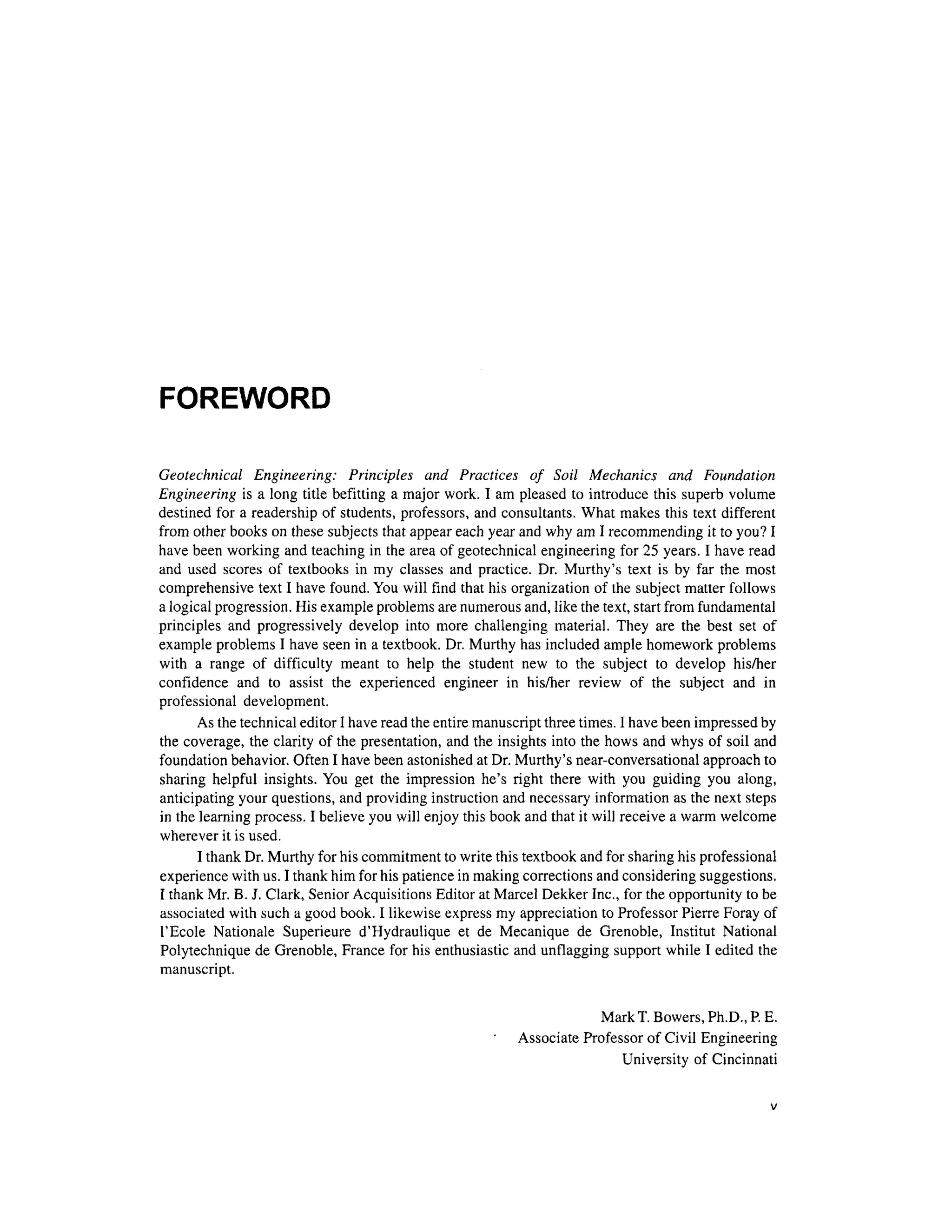
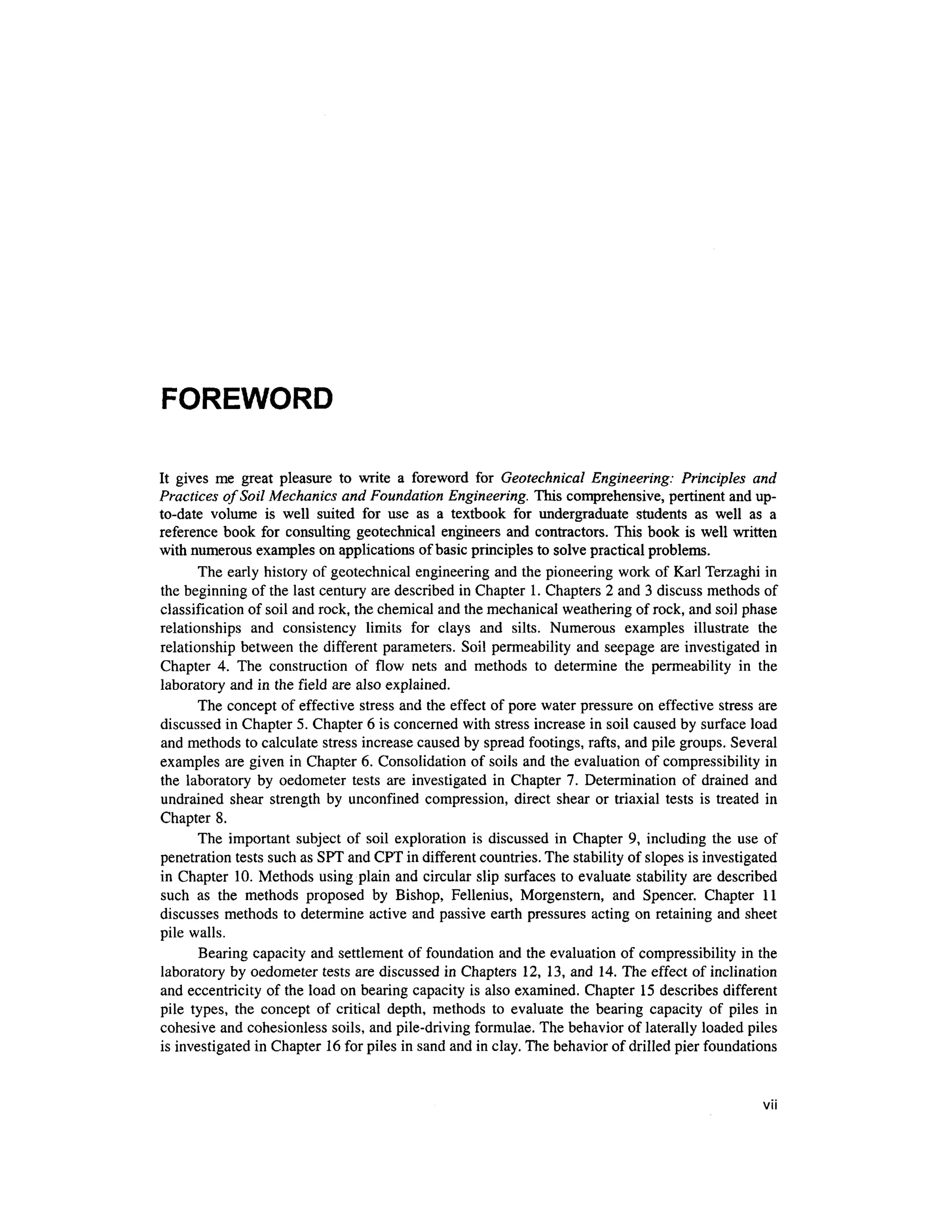

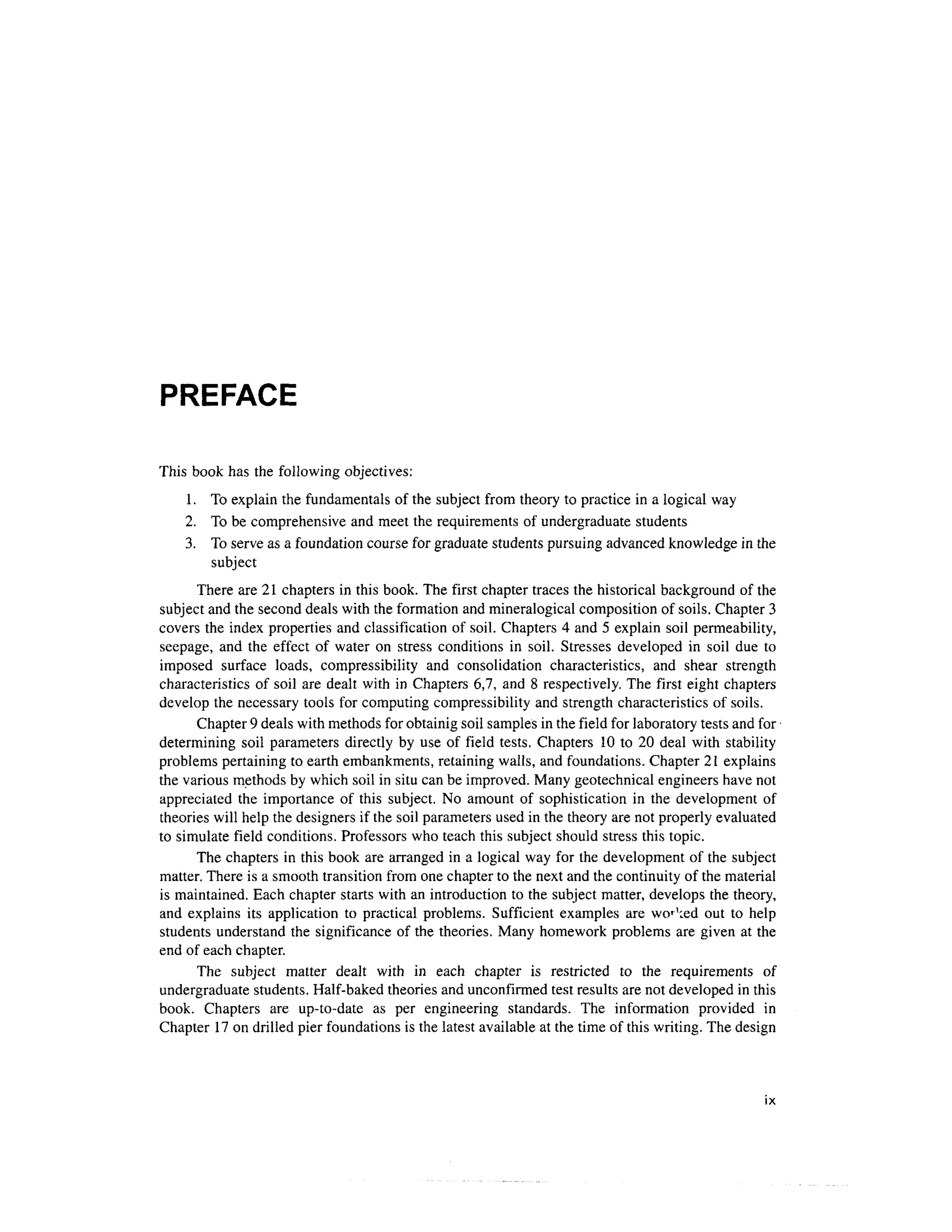
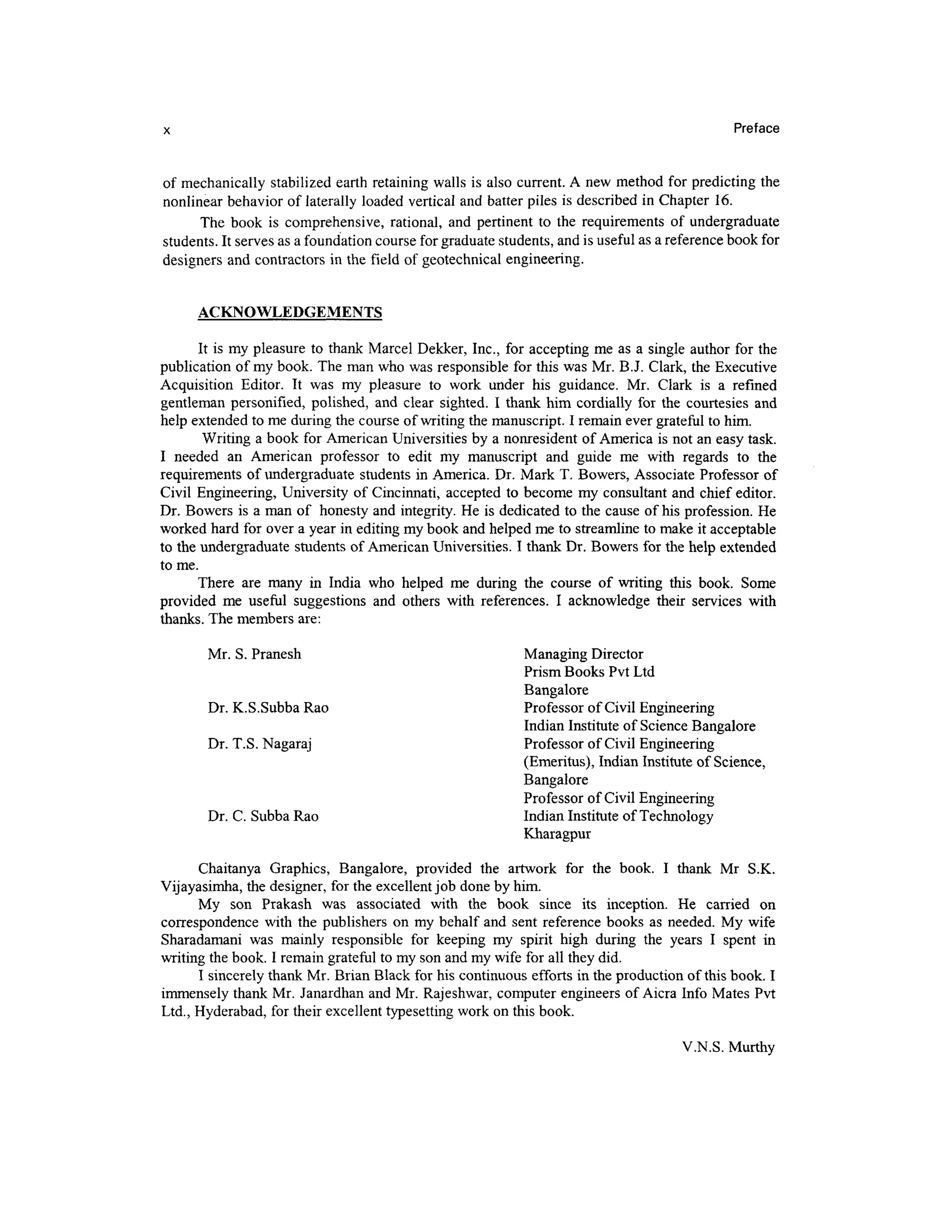
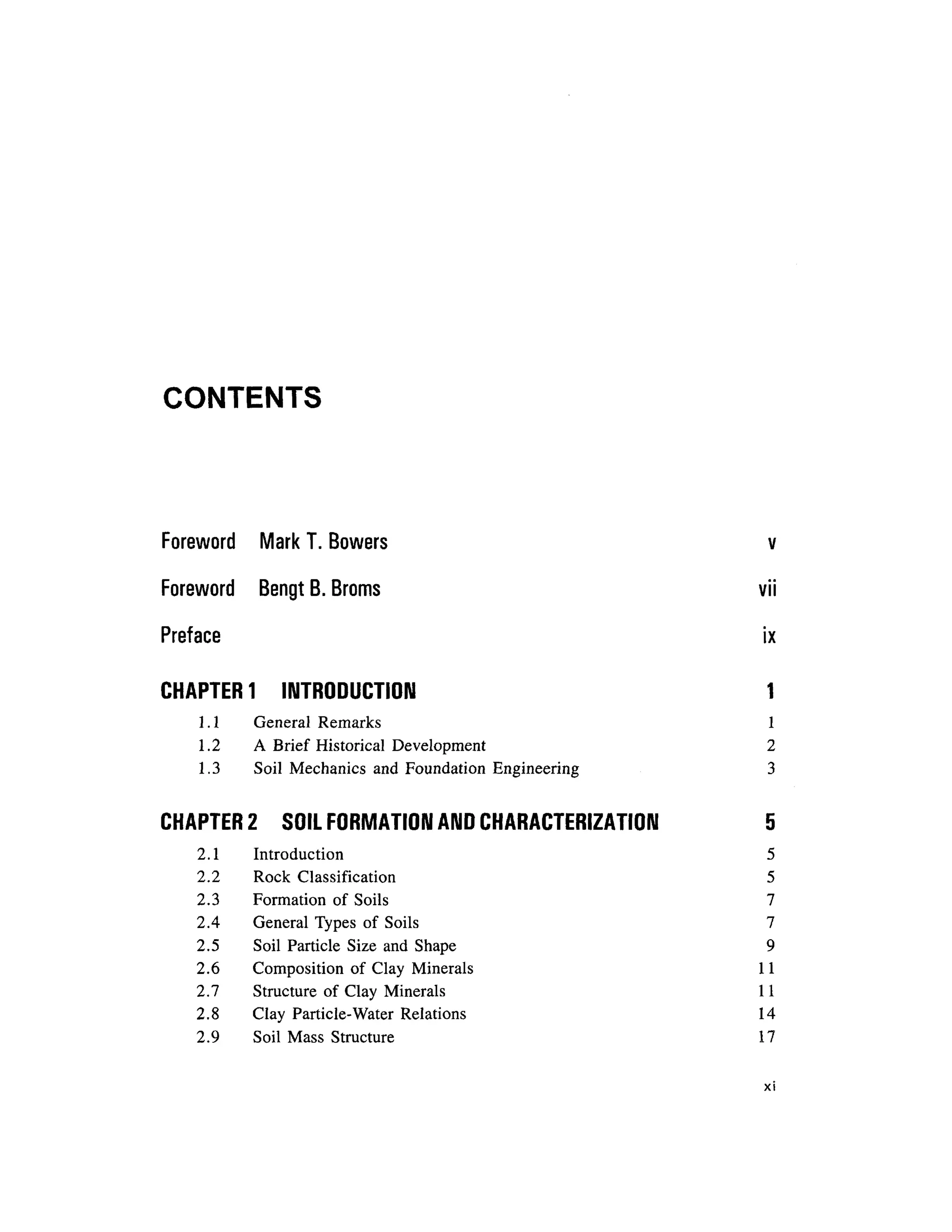

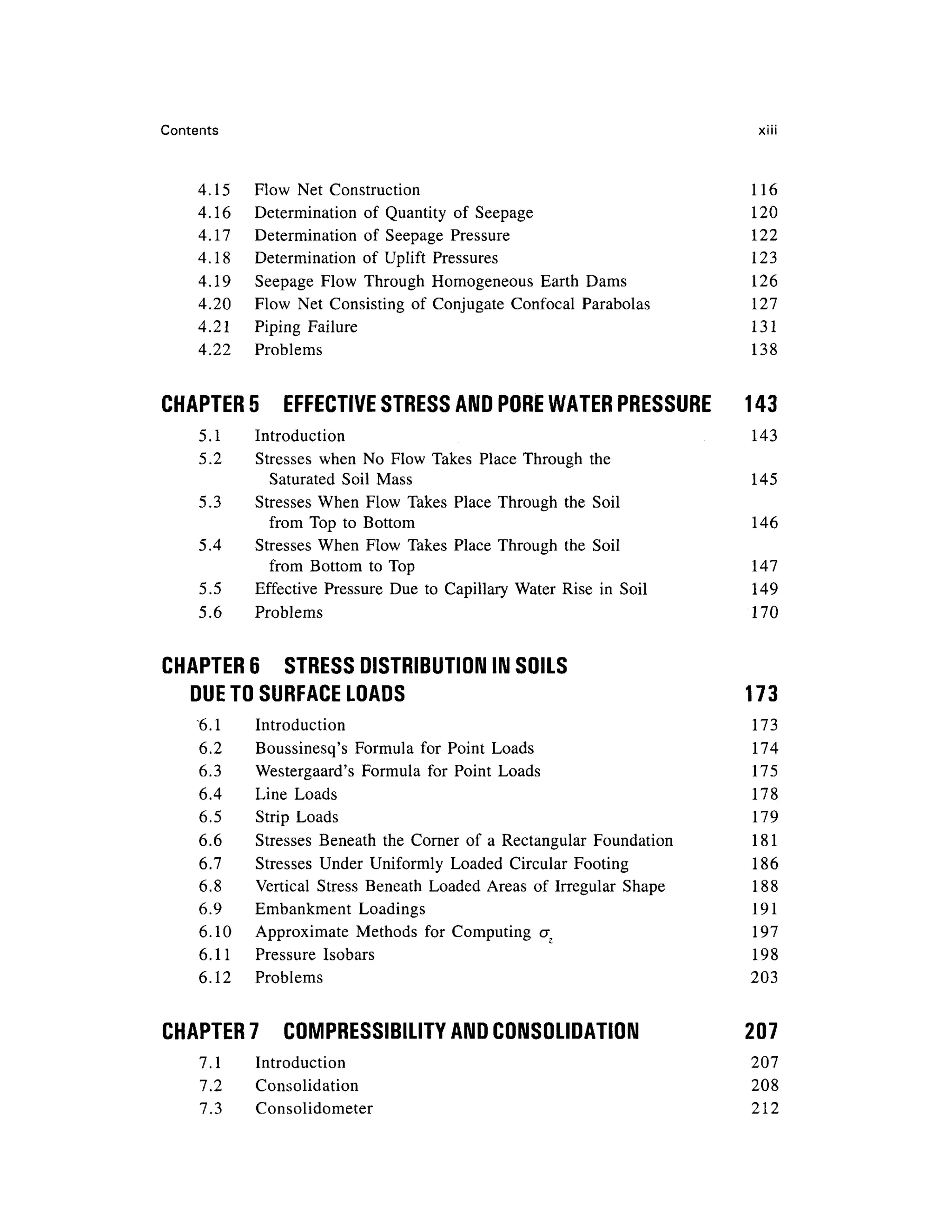



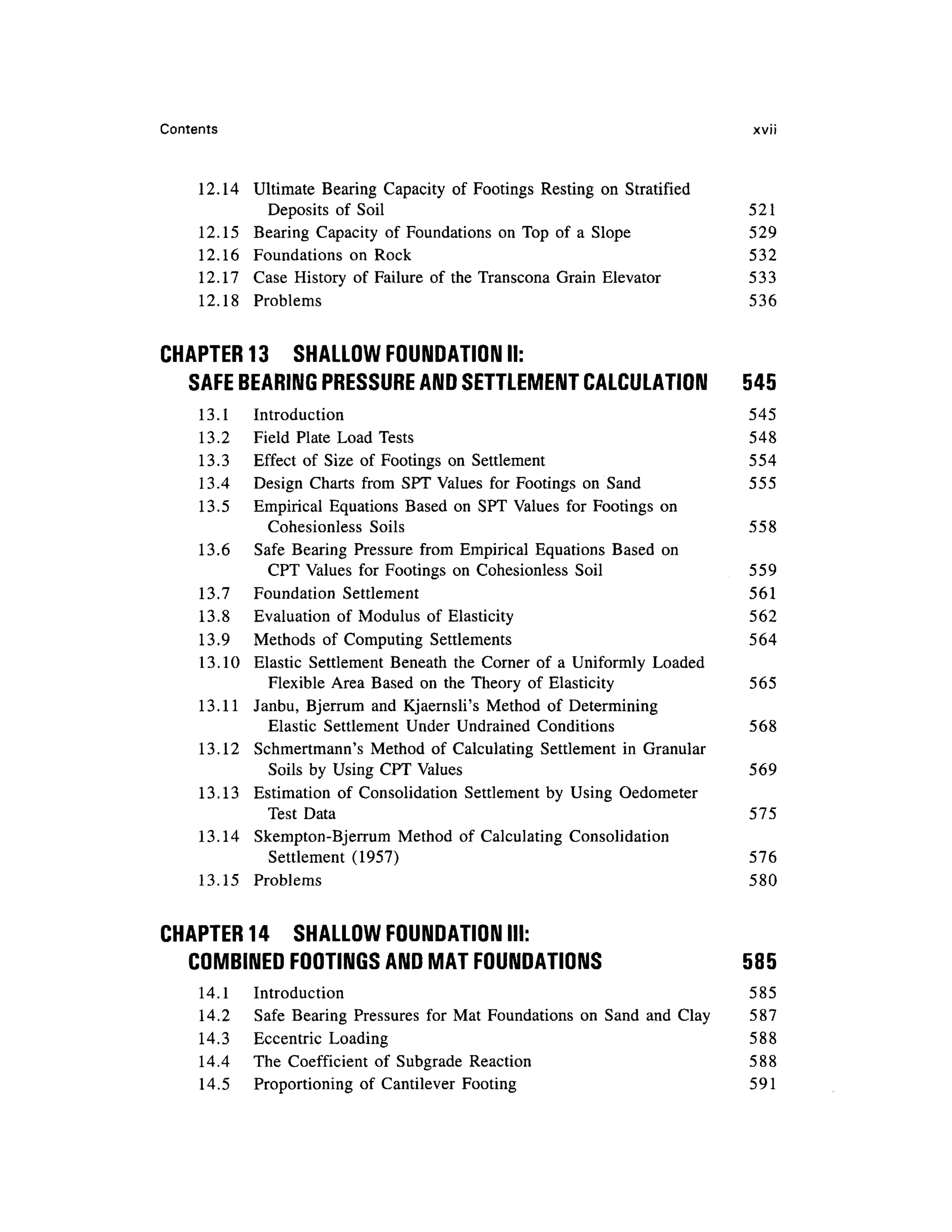


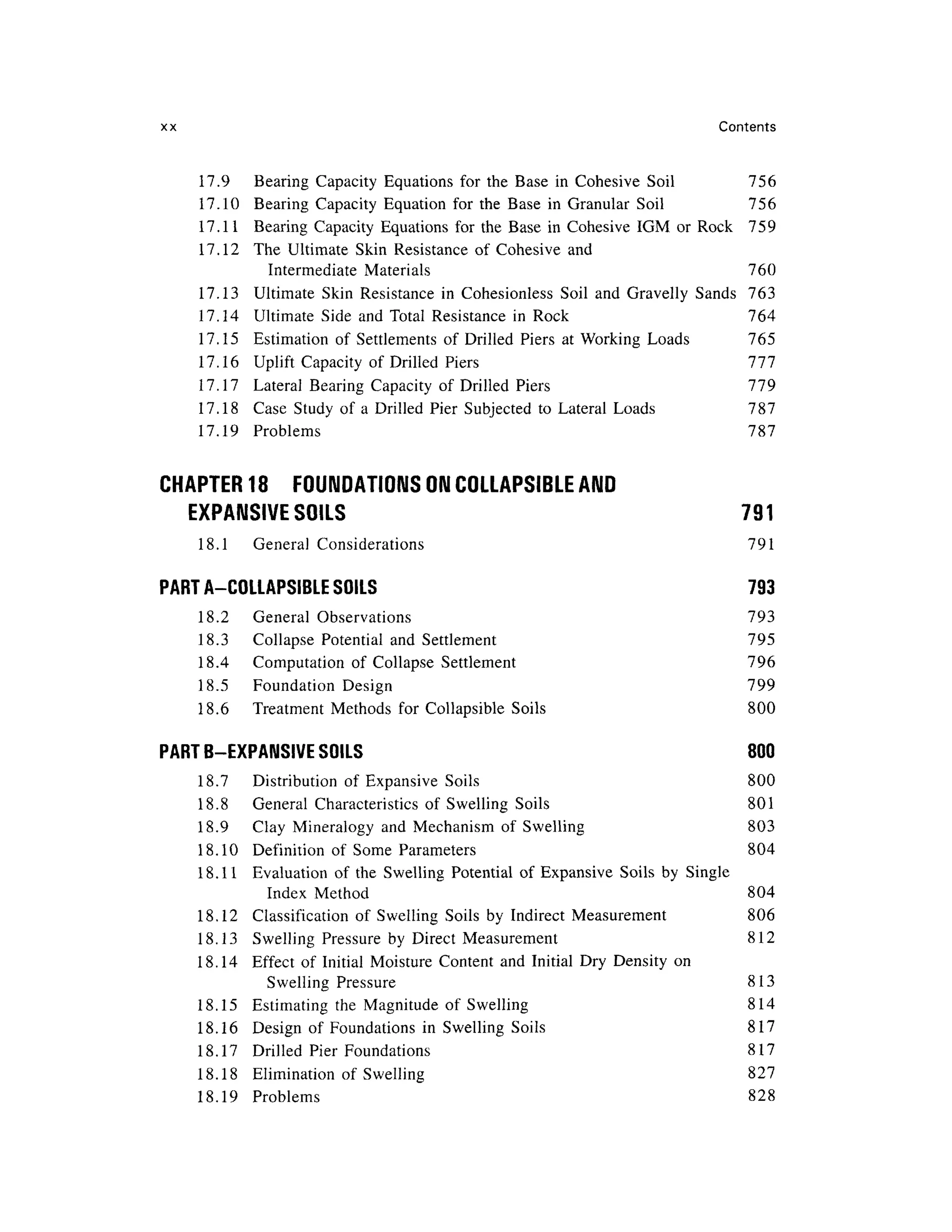
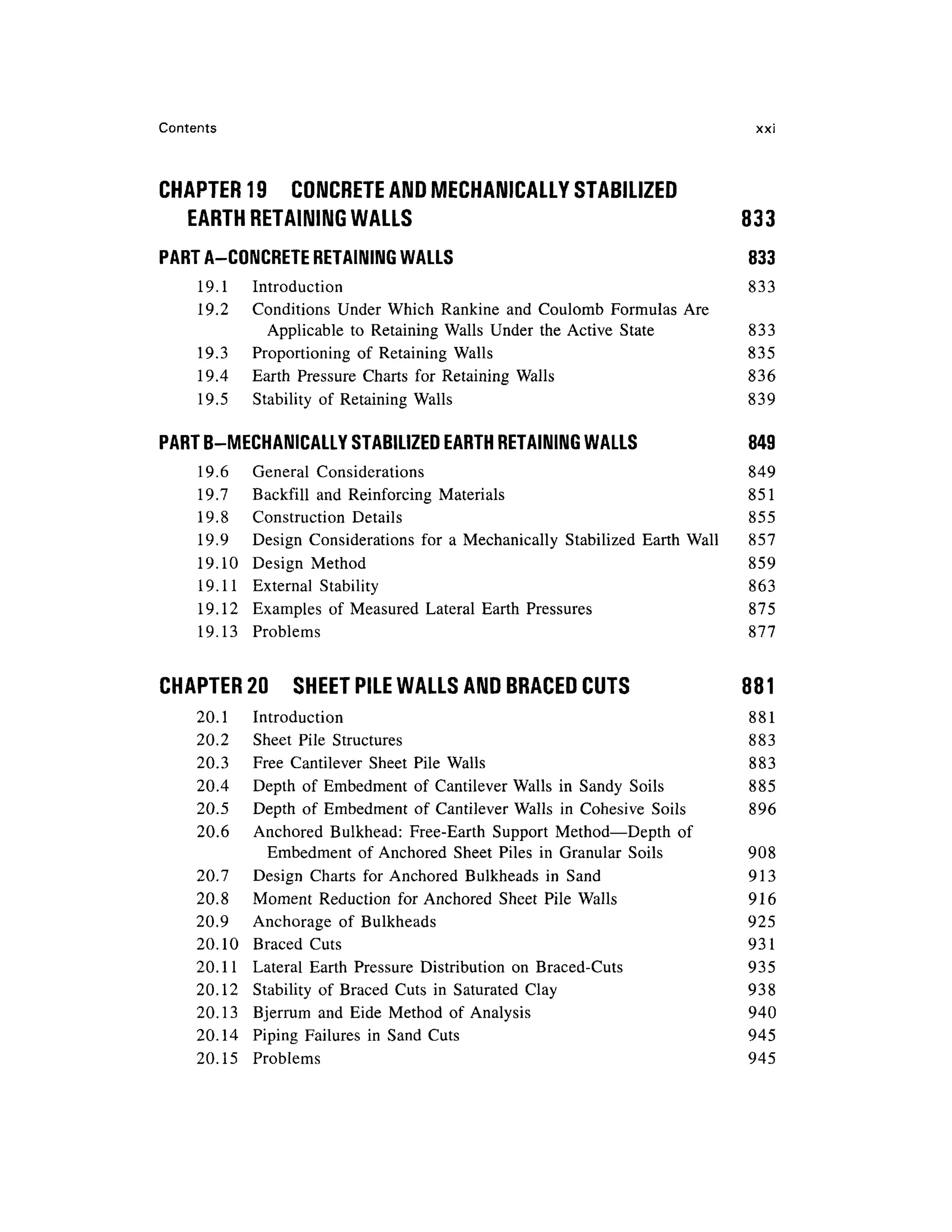






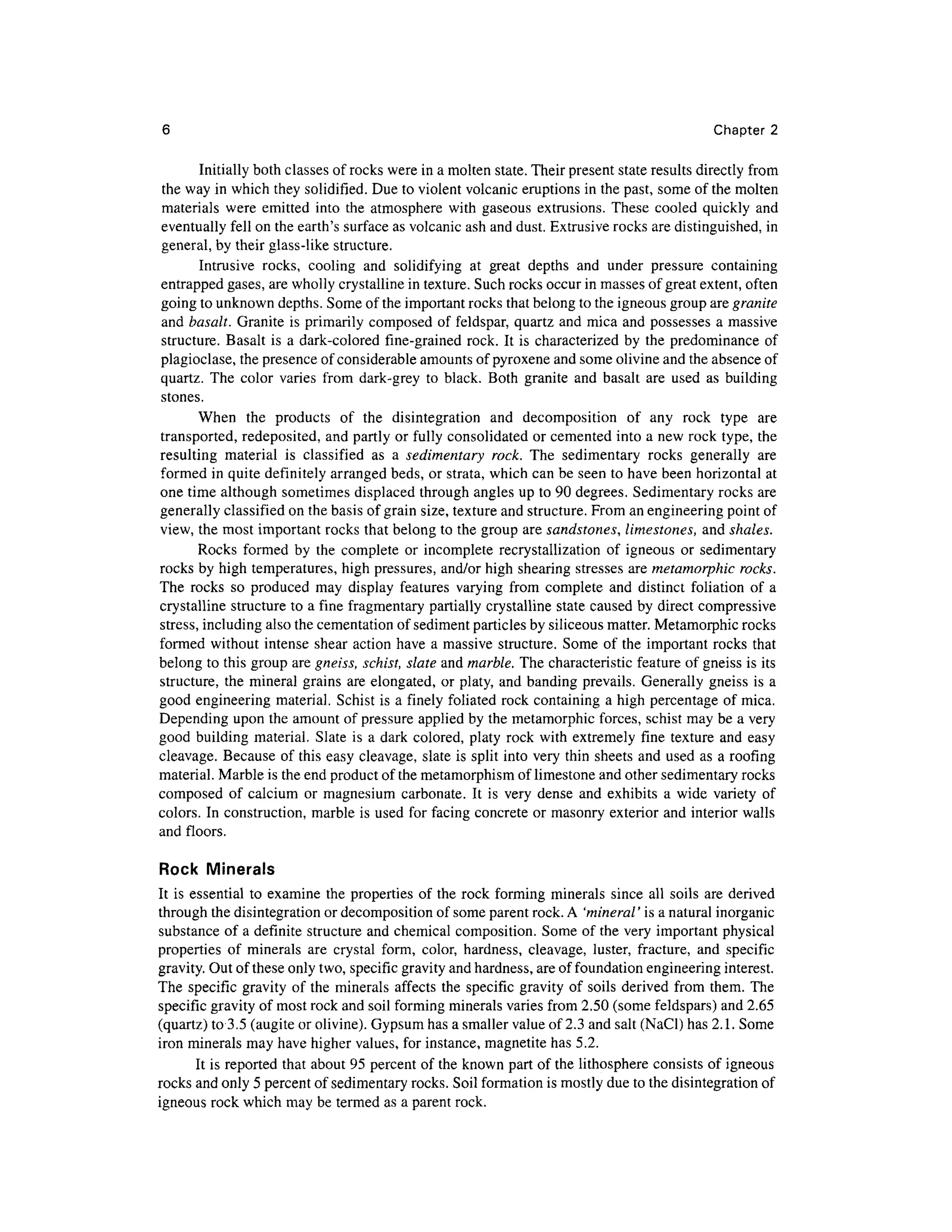
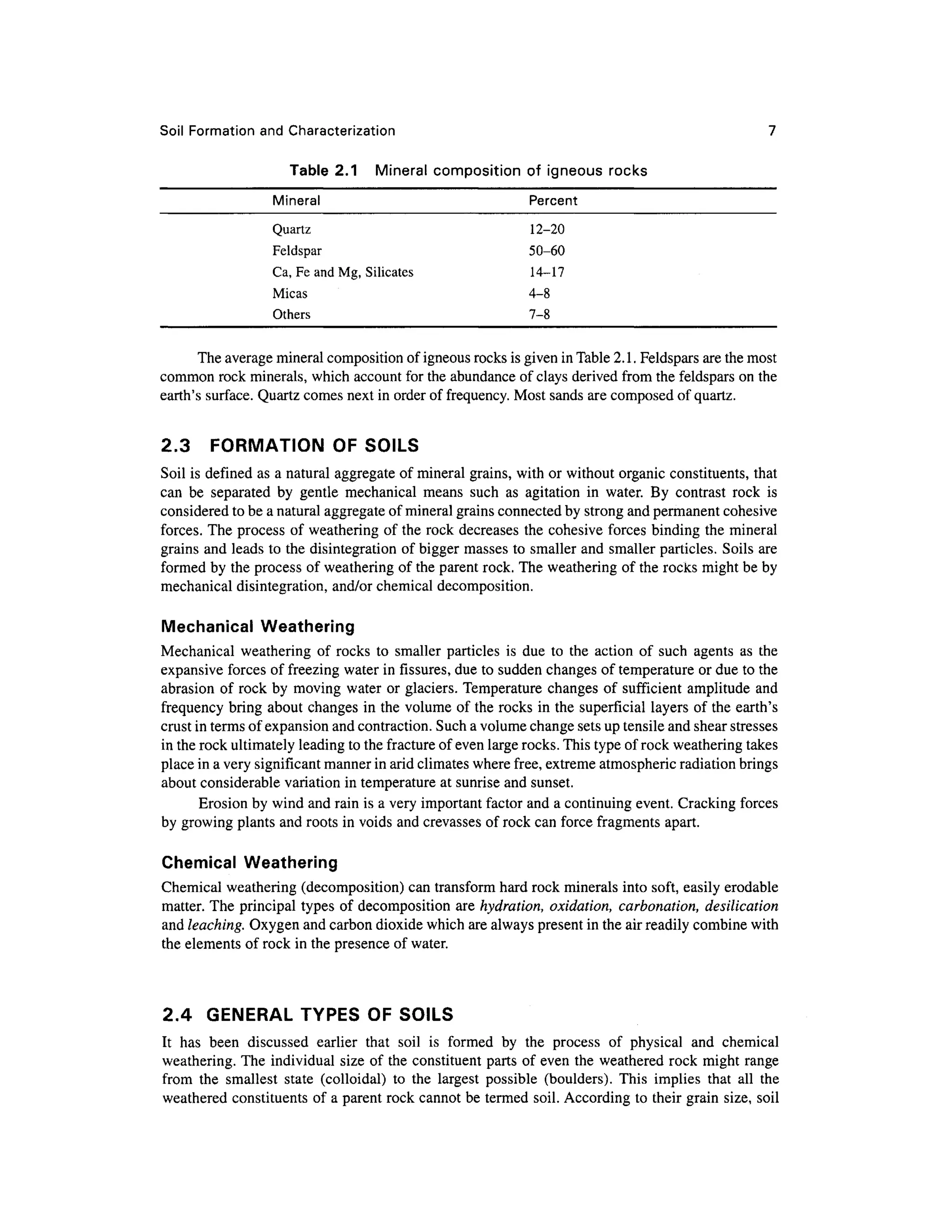


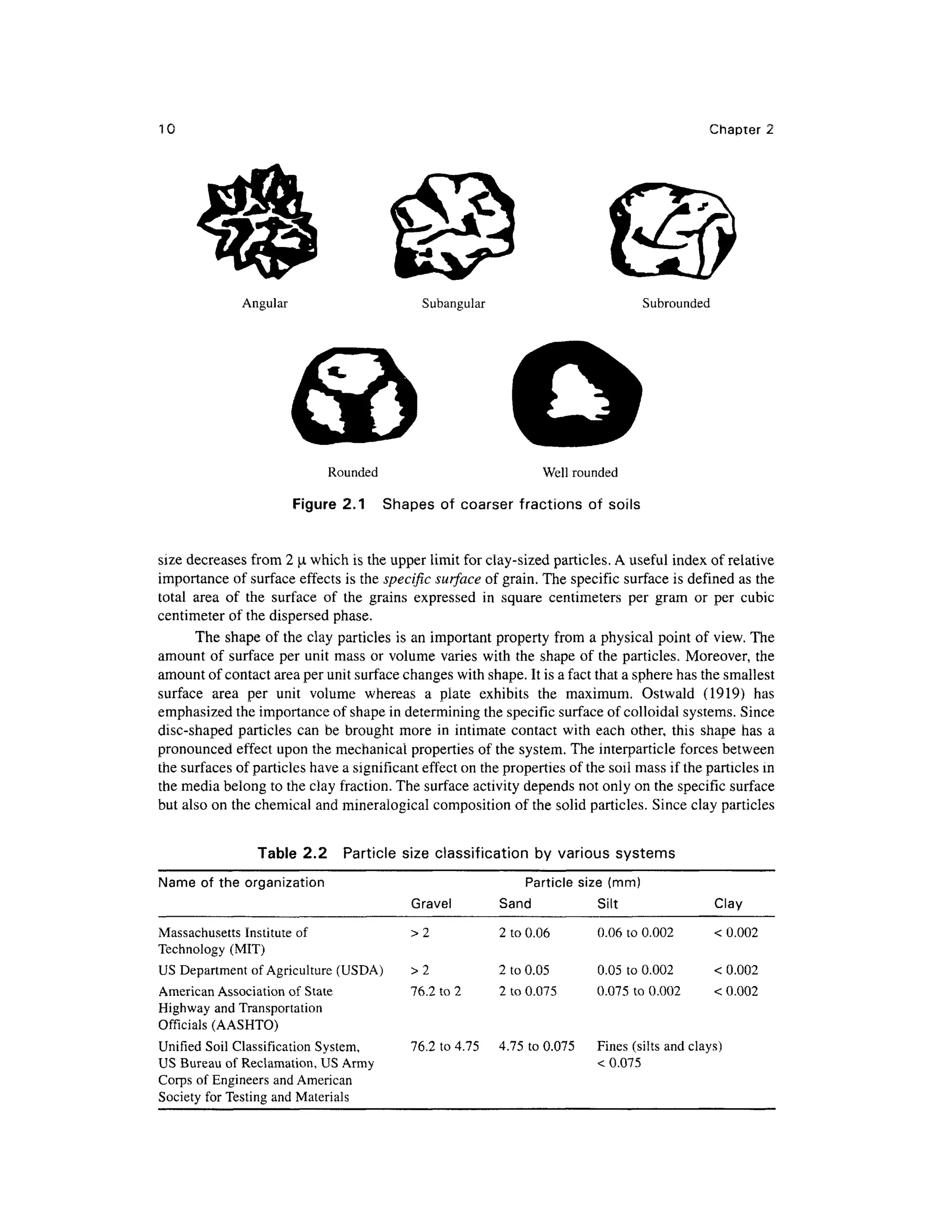
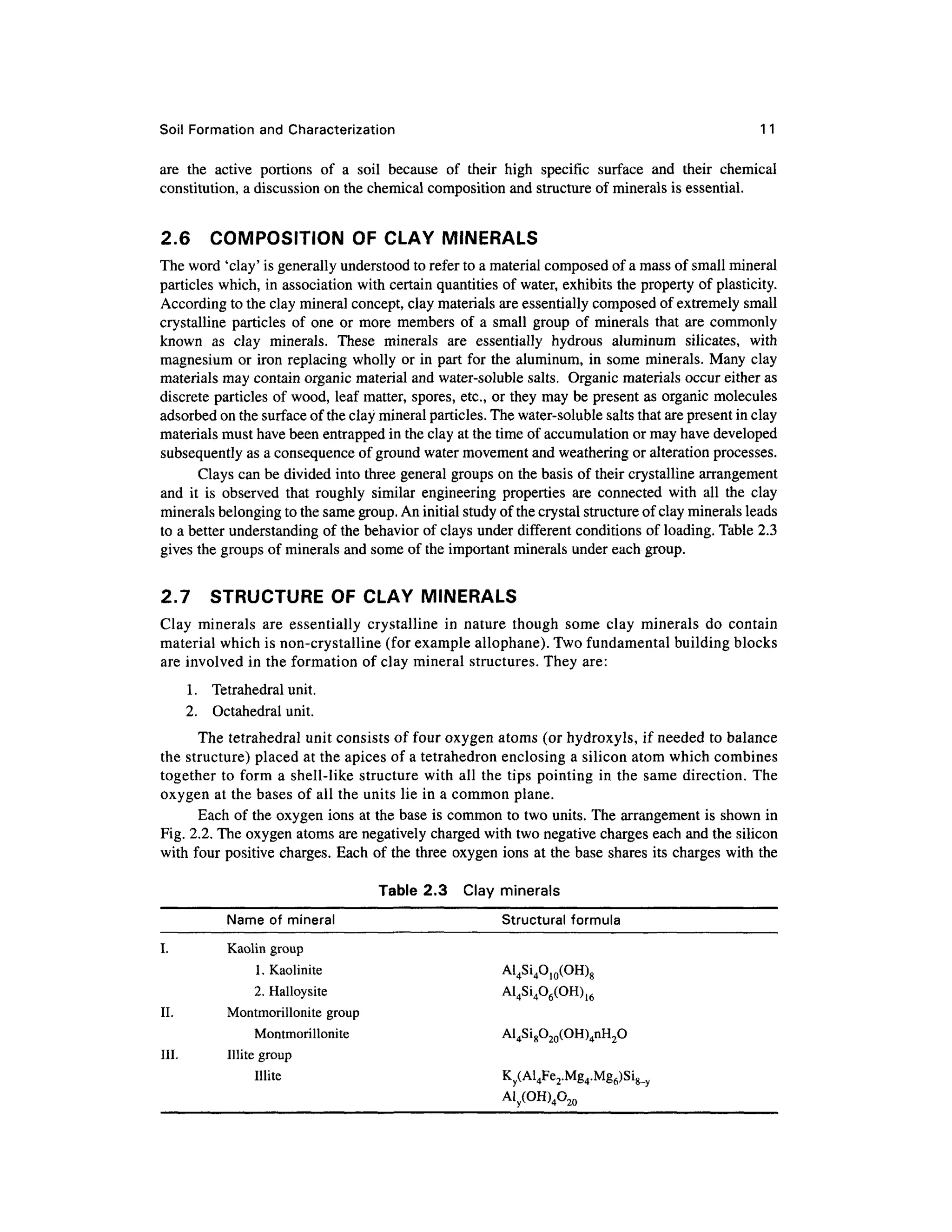
![1 2 Chapter 2
adjacent tetrahedra l unit . The sharin g of charge s leave s thre e negativ e charge s a t th e bas e per
tetrahedral unit and this along with two negative charges at the apex makes a total of 5 negative
charges to balance the 4 positive charges of the silicon ion. The process of sharing the oxygen ions
at the base with neighboring units leaves a net charge of -1 per unit.
The second building block is an octahedral unit with six hydroxyl ions at apices of an octahedral
enclosing an aluminum ion at the center. Iron or magnesium ions may replace aluminum ions in some
units. These octahedral units are bound together in a sheet structure with each hydroxyl ion common to
three octahedral units. This sheet is sometimes called as gibbsitesheet. The Al ion has 3 positive charges
and each hydroxyl ion divides its -1 charg e with two other neighboring units. This sharing of negative
charge with other units leaves a total of 2 negative charges per unit [(1/3) x 6]. The net charge of a unit
with a n aluminu m ion a t th e cente r is +1 . Fig. 2. 3 give s th e structura l arrangements o f the units.
Sometimes, magnesiu m replaces th e aluminu m atoms i n th e octahedra l unit s in thi s case , th e
octahedral sheet is called a brucite sheet.
Formation o f Mineral s
The combination of two sheets of silica and gibbsite in different arrangement s and conditions lead
to the formation of different clay minerals as given in Table 2.3. In the actual formation of the sheet
silicate minerals , the phenomenon of isomorphous substitution frequentl y occurs. Isomorphou s
(meaning same form) substitution consists of the substitution of one kind of atom for another.
Kaoiinite Minera l
This i s th e mos t commo n minera l o f th e kaoli n group . The buildin g blocks o f gibbsit e an d
silica sheets ar e arranged a s shown in Fig. 2.4 to give the structure of the kaolinite layer . The
structure i s compose d o f a singl e tetrahedra l shee t an d a singl e alumin a octahedra l shee t
combined i n unit s s o tha t th e tip s o f th e silic a tetrahedron s an d on e o f th e layer s o f th e
octahedral sheet form a common layer. All the tips of the silica tetrahedrons point in the same
direction and towards the center of the unit made of the silica and octahedral sheets. This gives
rise to strong ionic bonds between the silica and gibbsite sheets. The thickness of the layer is
about 7 A (on e angstro m = 10~ 8
cm) thick . The kaolinit e minera l i s formed b y stackin g th e
layers one above the other with the base of the silica sheet bonding to hydroxyls of the gibbsite
sheet b y hydroge n bonding . Sinc e hydroge n bond s ar e comparativel y strong , th e kaolinit e
(a) Tetrahedral unit (b) Silica sheet
Silicons
Oxygen
]_ Symbolic representation
of a silica sheet
Figure 2.2 Basi c structural unit s in the silico n shee t (Grim , 1959 )](https://image.slidesharecdn.com/geotechbook-240326034957-6522ccd8/75/geotech-book-FOR-CIVIL-ENGINEERINGGG-pdf-31-2048.jpg)






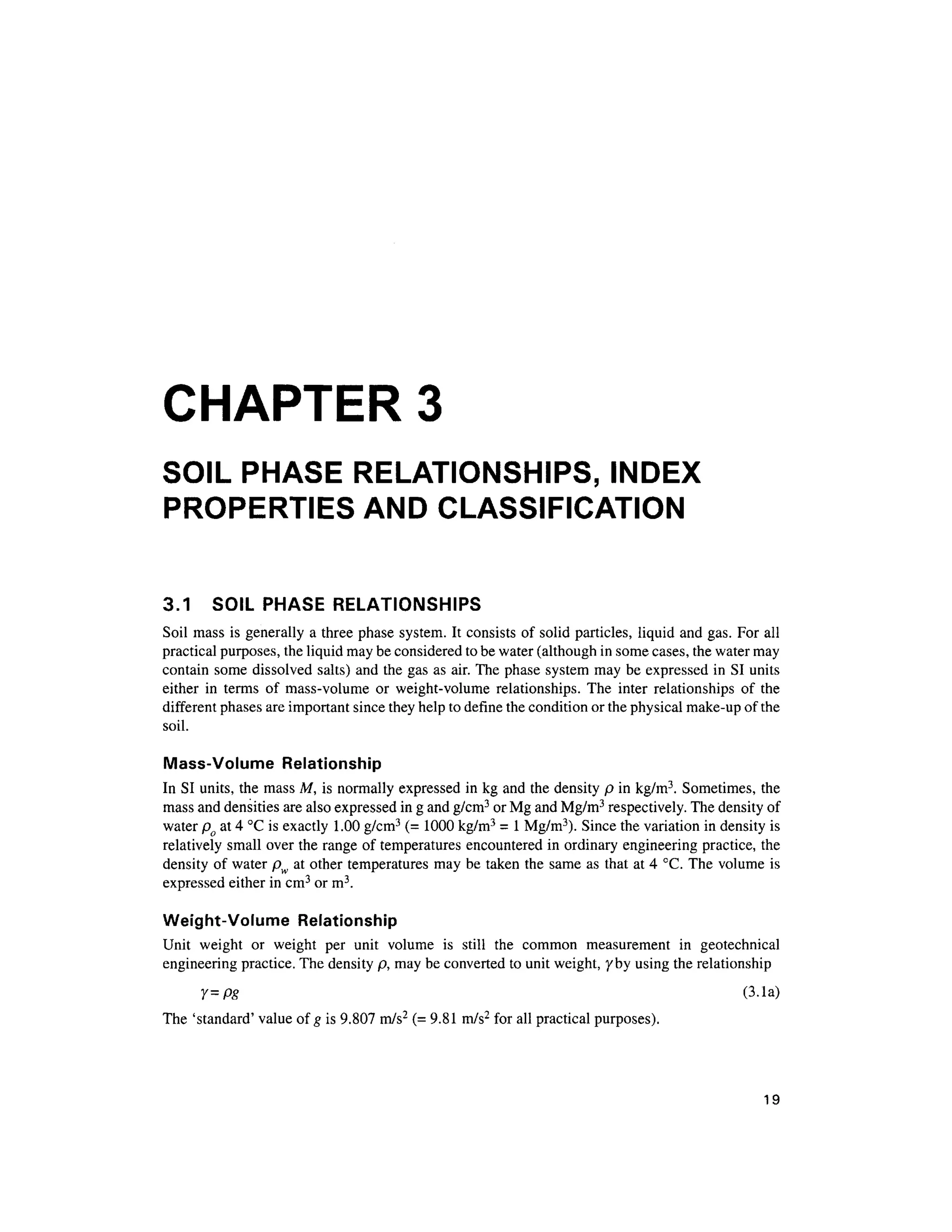



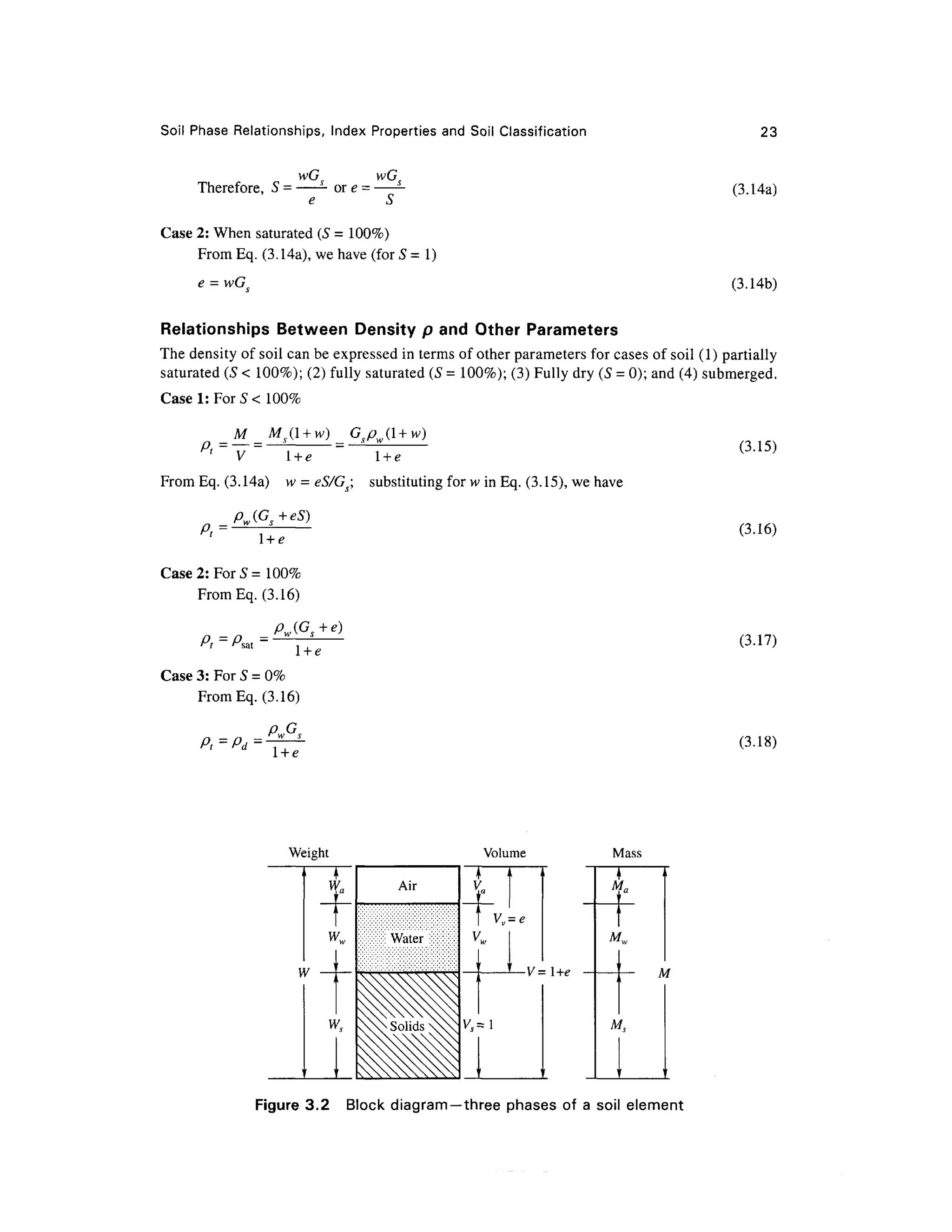






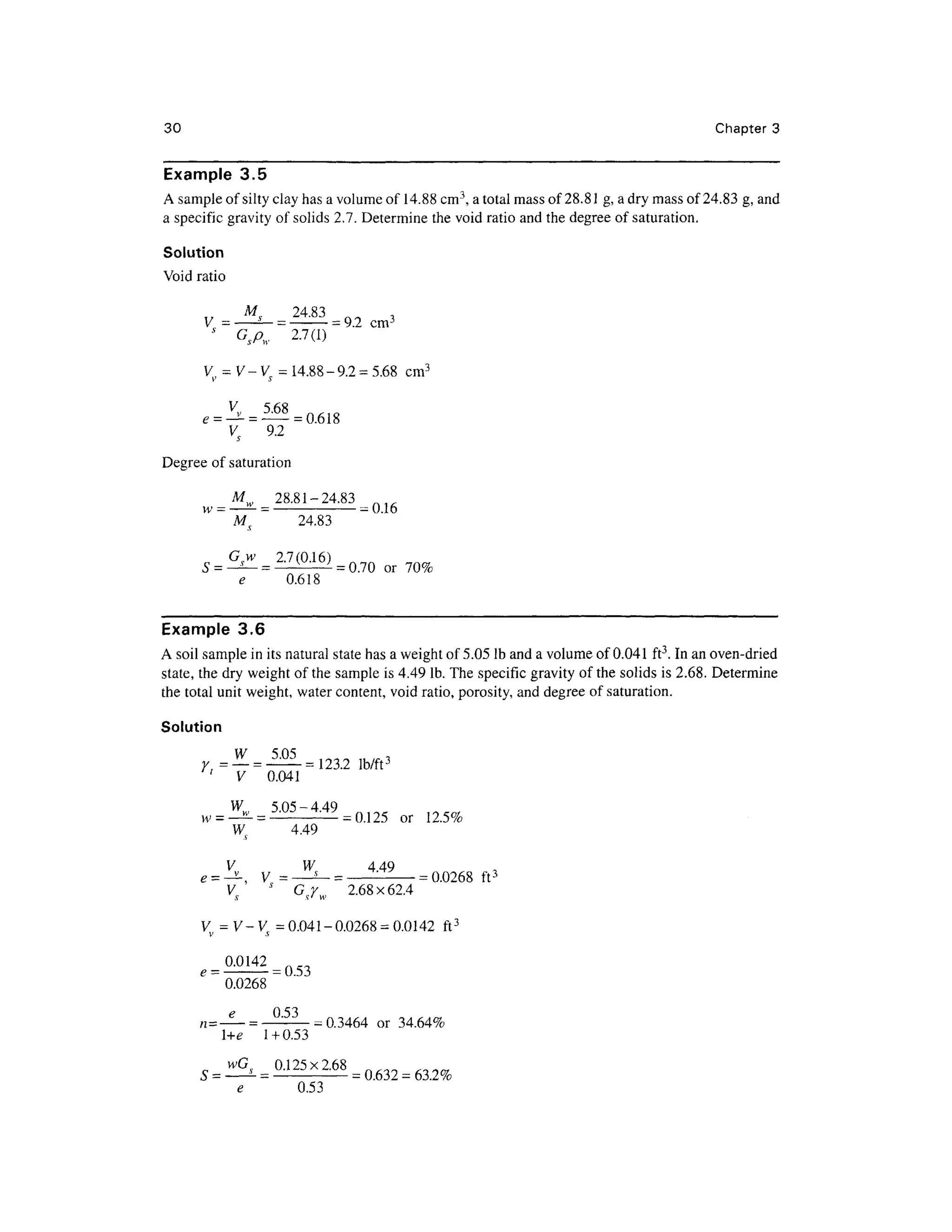
![Soil Phas e Relationships, Inde x Propertie s an d Soil Classificatio n 3 1
Example 3. 7
A soil sample has a total unit weight of 16.97 kN/m3
and a void ratio of 0.84. The specific gravity
of solids is 2.70. Determine the moisture content, dry unit weight and degree o f saturation of the
sample.
Solution
Degree of saturation [from Eq . (3.16a)]
= o r 1=
=
' l + e1 + 0.84
Dry unit weight (Eq. 3.18a)
d
l + e1 + 0.84
Water content (Eq. 3.14a1
Se 0.58x0.8 4 n i o
w- —= -
= 0.18 or 18 %
G 2. 7
Example 3. 8
A soil sample in its natural state has, when fully saturated, a water content of 32.5%. Determine the
void ratio, dry and total unit weights. Calculate the total weight of water required to saturate a soil
mass of volume 10 m3
. Assume G^ = 2.69.
Solution
Void ratio (Eq. 3.14a)
= ^
= 32.5 x2.69
S (l)xlO O
Total unit weight (Eq. 3.15a)
= . ) =
2*9 (9-81)0 +0323) = ,
' l + e1 + 0.874
Dry unit weight (Eq. 3.18a)
L&___ 2.69x9.8 1 = 14Q8kN/m3
d
l + e1 + 0.874
FromEq. (3.6a), W=ytV= 18.6 6 x10= 186.6 kN
From Eq . (3.7a), Ws = ydV= 14.0 8 x1 0 =140.8 kN
Weight of water =W-WS= 186. 6 - 140. 8 =45.8 kN
3.5 INDE X PROPERTIE S OF SOILS
The various properties of soils which would be considered as index properties are:
1 .Th e size and shape of particles.
2. Th e relative density or consistency of soil.](https://image.slidesharecdn.com/geotechbook-240326034957-6522ccd8/75/geotech-book-FOR-CIVIL-ENGINEERINGGG-pdf-50-2048.jpg)
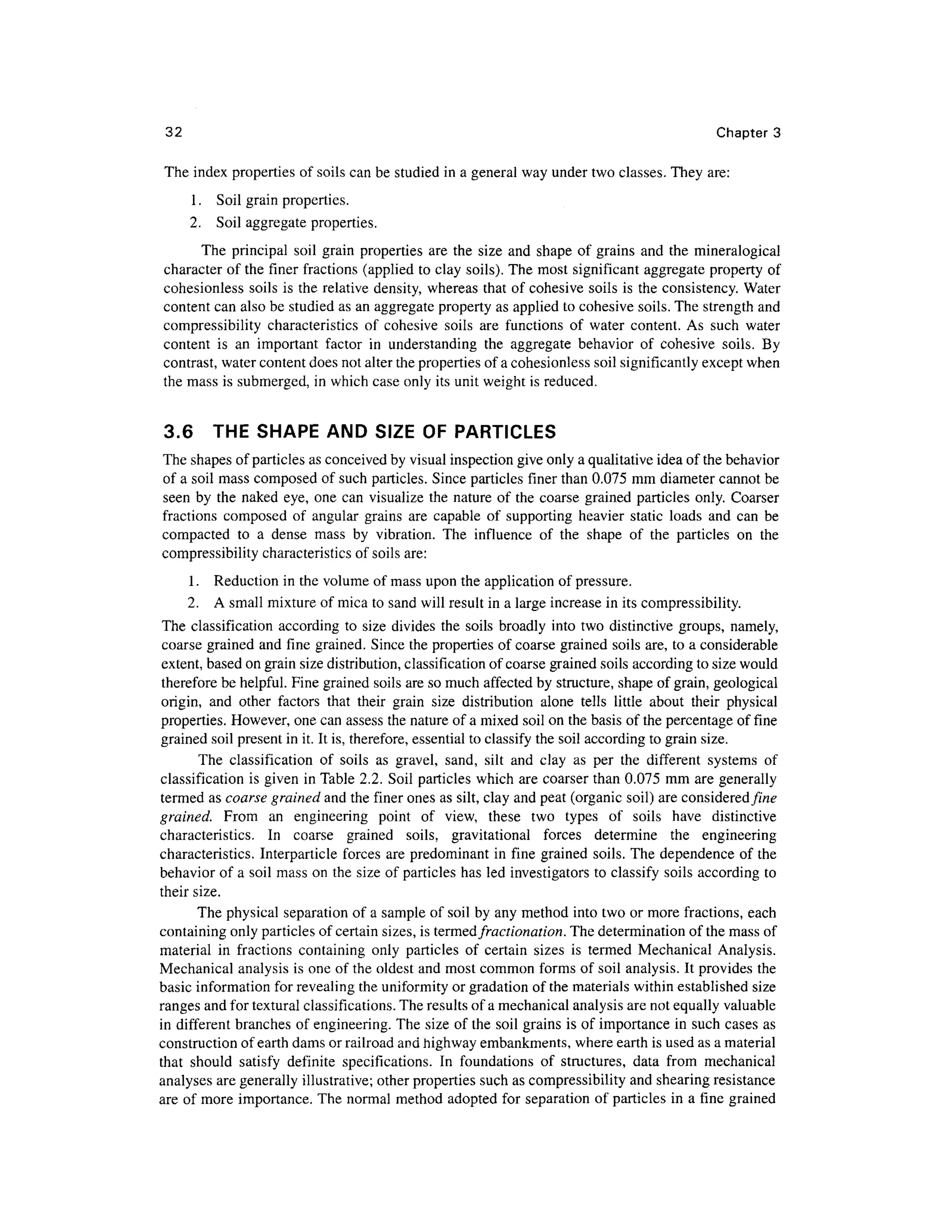






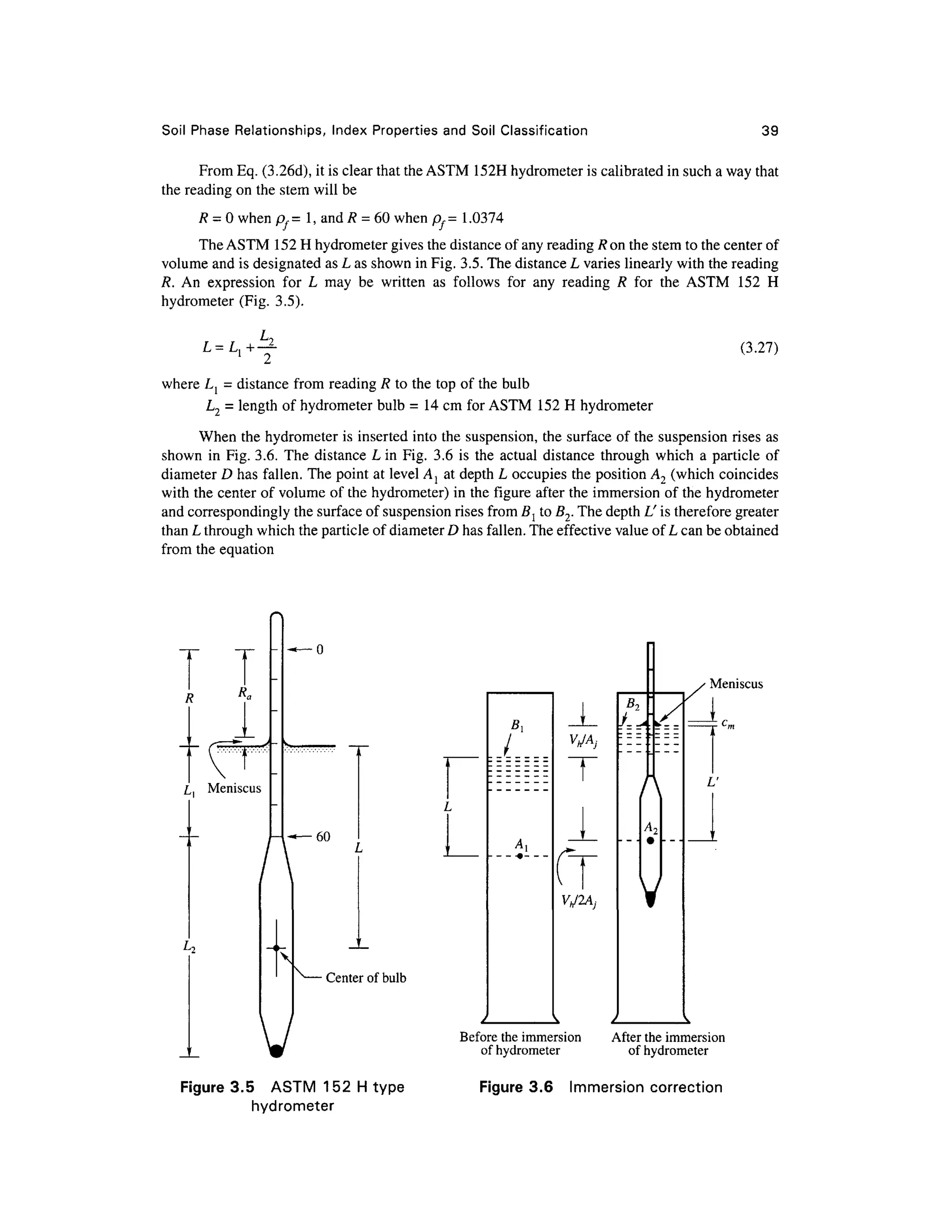


![42 Chapter 3
1.65G
C = i —
58
2.65(G ? -1)
(3.31)
Typical values of C? ar e given in Table 3.7 .
Now the percent fine r with the correction factor Cs ma y be expressed a s
Percent finer, P ' =
M
xlOO (3.32)
where R c
= gram s o f soi l i n suspensio n a t som e elapse d tim e t [correcte d hydromete r
reading from Eq. (3.30b)]
Ms
= mas s o f soil used i n the suspension in gms (no t more tha n 60 gm for 15 2 H
hydrometer)
Eq. (3.32) gives the percentage of particles finer than a particle diameter D in the mass of
soil Ms use d in the suspension. If M i s the mass of soil particles passing through 75 micron siev e
(greater tha n M) an d M the total mass taken for the combined siev e and hydrometer analysis , the
percent fine r fo r the entire sample may be expressed a s
Percent finer(combined) , P = P'% x
M
(3.33)
Now Eq. (3.33) with Eq. (3.24) give s point s for plotting a grain size distributio n curve.
Test procedure
The suggeste d procedur e fo r conducting the hydrometer test is as follows:
1. Tak e 60 g or less dry sample fro m th e soil passing throug h the No. 200 siev e
2. Mi x thi s sample with 12 5 mL of a 4% of NaPO3 solution in a small evaporating dis h
3. Allo w the soil mixture to stand for about 1 hour. At the end of the soaking period transfer
the mixtur e to a dispersion cup an d add distilled water until th e cup i s about two-thirds
full. Mi x fo r about 2 min.
4. Afte r mixing, transfer all the contents of the dispersion cup to the sedimentation cylinder ,
being carefu l no t t o los e an y materia l Now ad d temperature-stabilize d wate r t o fil l th e
cylinder to the 100 0 m L mark.
5. Mi x th e suspension wel l by placing the palm of the hand over th e open en d an d turning
the cylinder upside down and back for a period of 1 min. Set the cylinder down on a table.
6. Star t th e time r immediatel y afte r settin g th e cylinder . Inser t th e hydromete r int o th e
suspension just abou t 2 0 second s befor e th e elapse d tim e o f 2 min . an d tak e th e firs t
reading a t 2 min . Tak e th e temperatur e reading . Remov e th e hydromete r an d th e
thermometer an d place both of them in the control jar.
7. Th e contro l jar contain s 100 0 m L o f temperature-stabilize d distille d water mixe d wit h
125 mL of the same 4% solution of NaPO3.
Table 3. 7 Correctio n factor s C fo r uni t weight o f solid s
Gs of soi l solids
2.85
2.80
2.75
2.70
Correction factor C
0.96
0.97
0.98
0.99
Gs of soi l solids
2.65
2.60
2.55
2.50
Correction factor C
1.00
1.01
1.02
1.04](https://image.slidesharecdn.com/geotechbook-240326034957-6522ccd8/75/geotech-book-FOR-CIVIL-ENGINEERINGGG-pdf-61-2048.jpg)


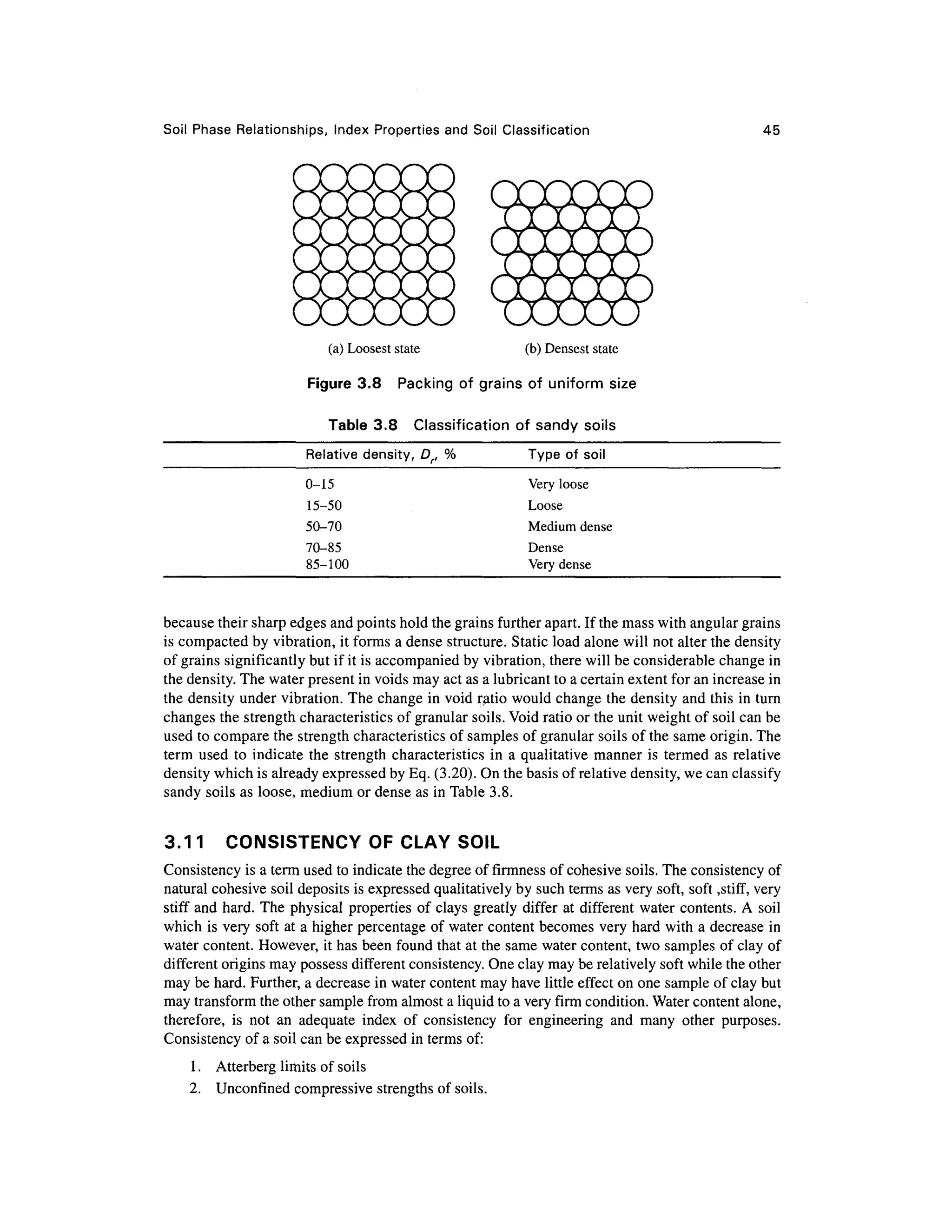

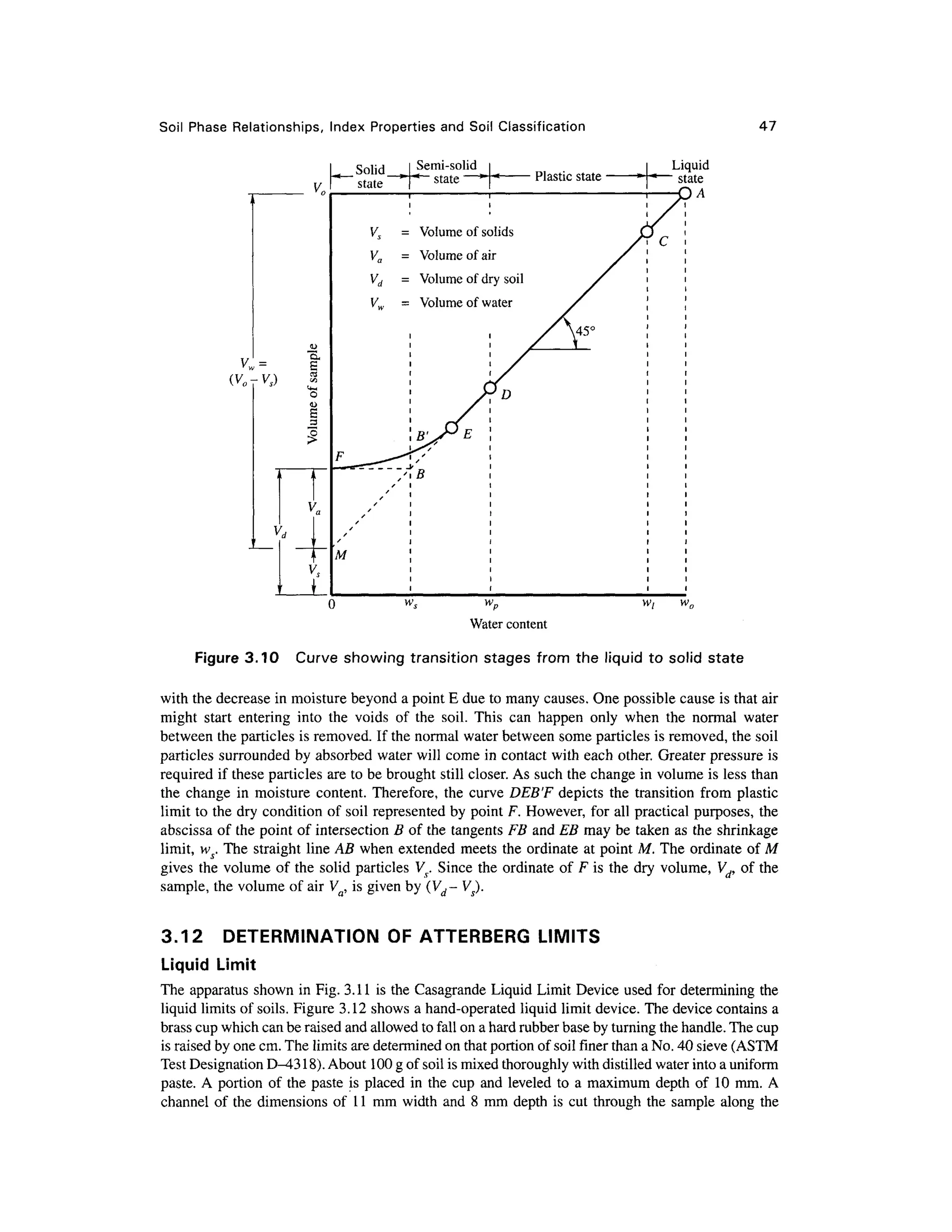

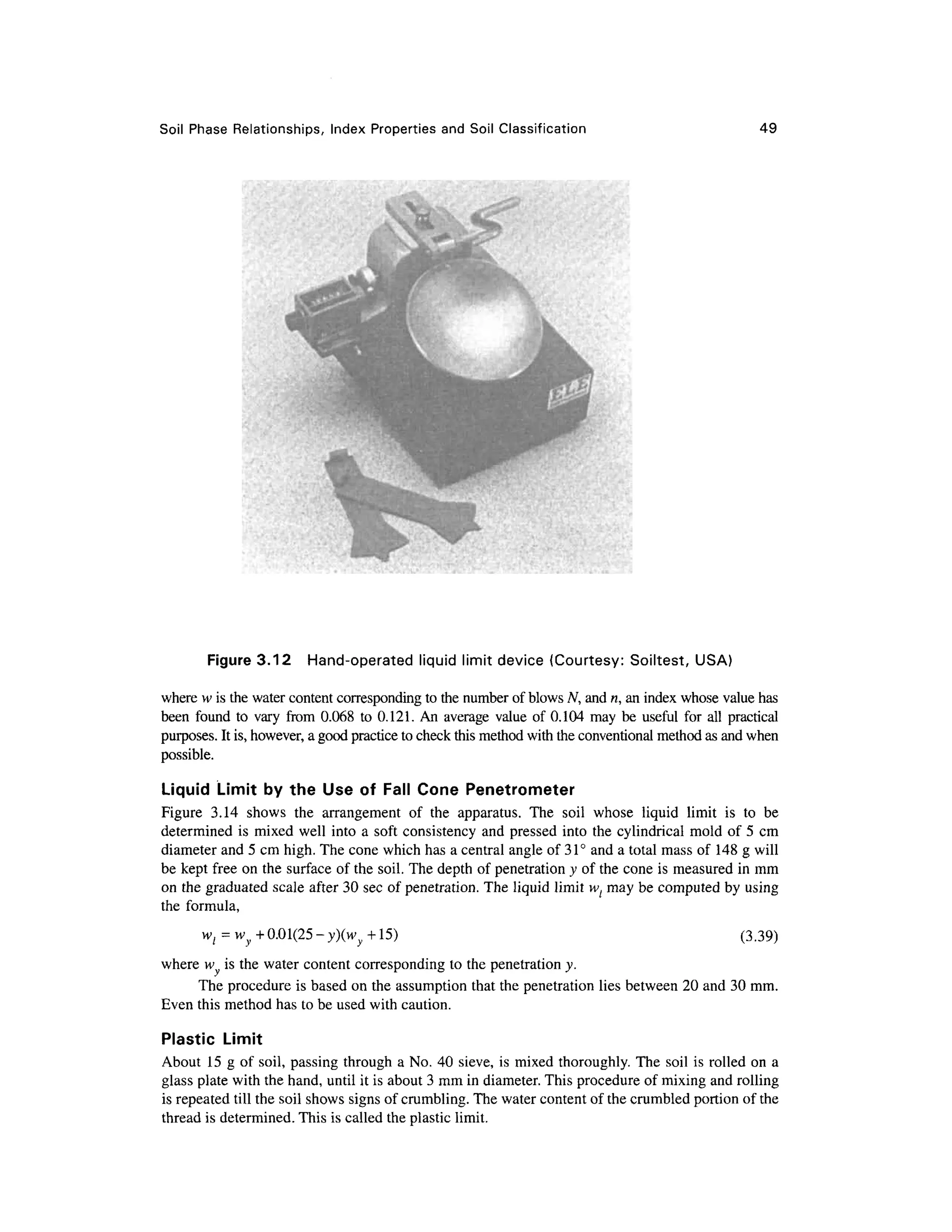

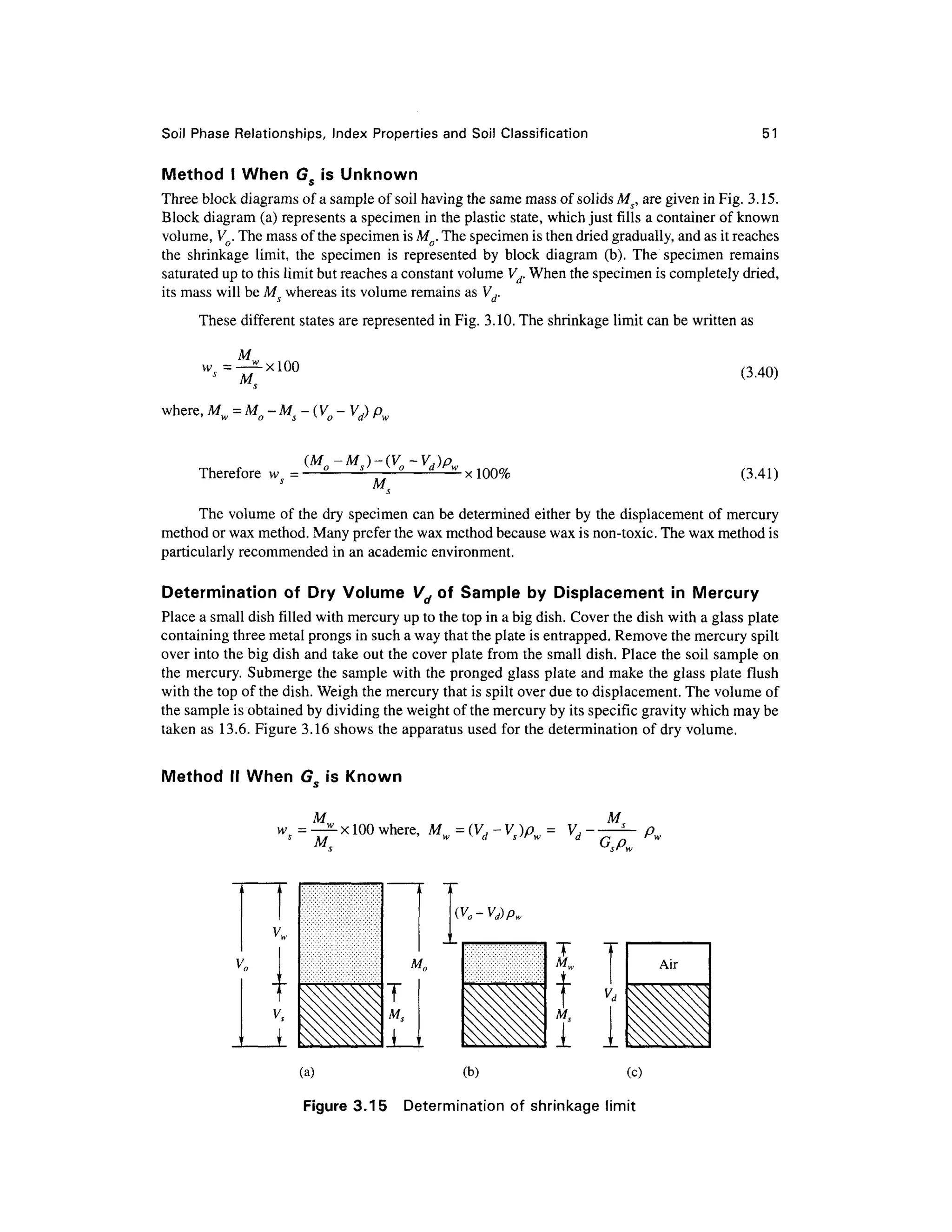
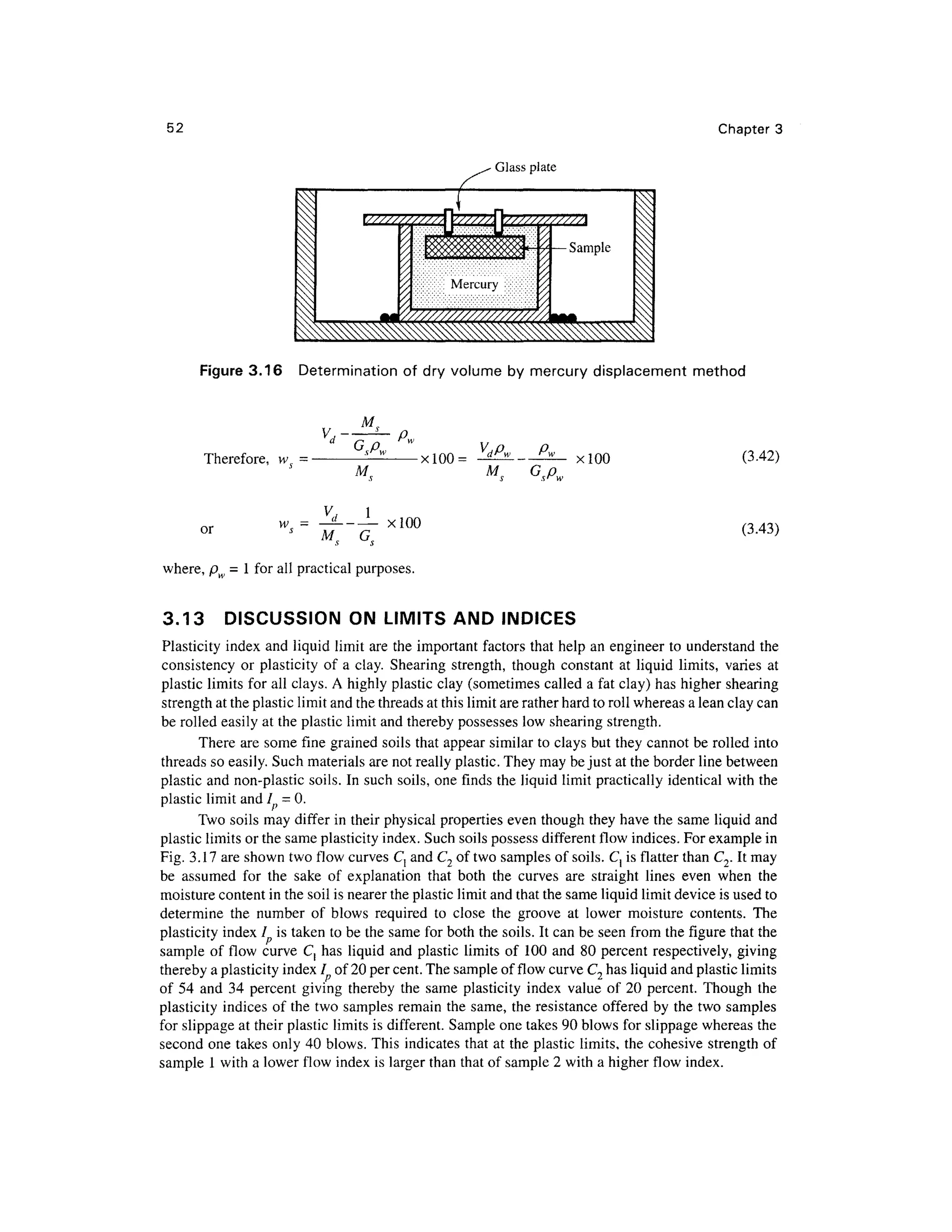
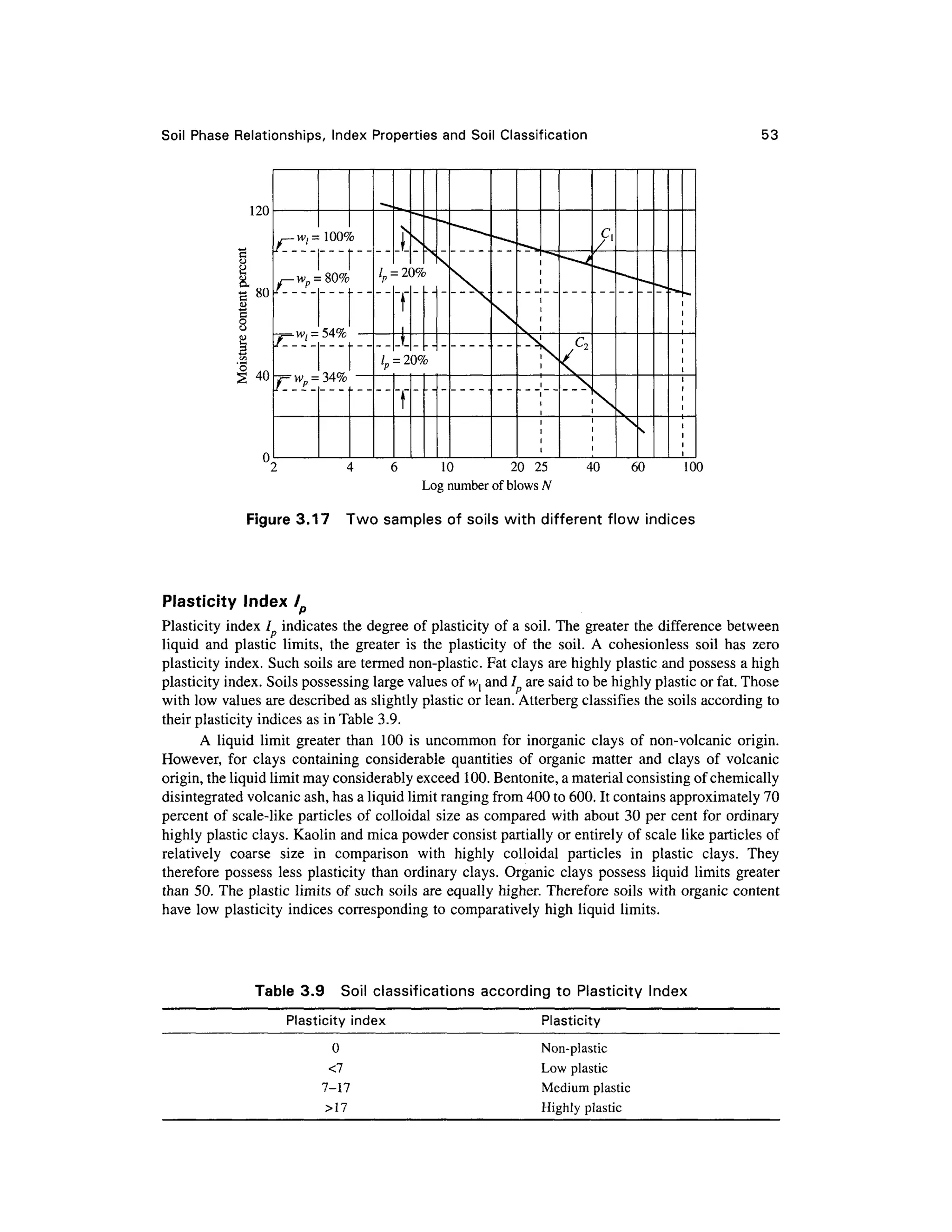

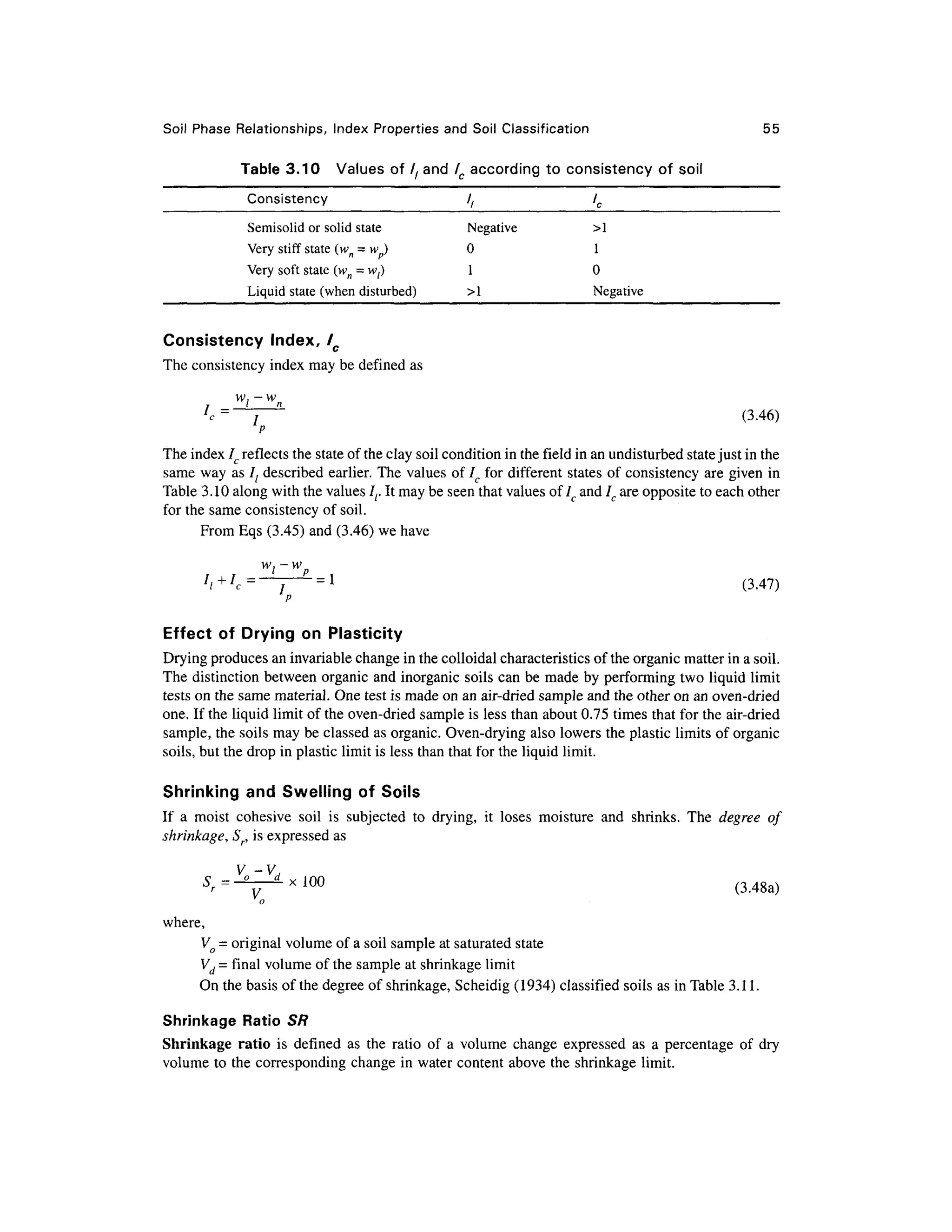
![56 Chapte r 3
Table 3.11 Soi l classificatio n accordin g t o degre e o f shrinkag e S r
Sr% Qualit y o f soi l
< 5 Goo d
5-10 Mediu m goo d
10-15 Poo r
> 1 5 Ver y poor
(V -V,)/V,
SR=' ° d)l d
xlO O (3-48b )
W
0~W
S
where
Vo = initial volume of a saturated soil sample at water content wo
Vd = the final volume of the soil sample at shrinkage limit ws
(wo-ws) = change in the water content
Md = mass of dry volume, Vd, of the sample
Substituting for (wo-ws) i n Eq (3.48b) and simplifying, we have
• ; - • - •
Thus the shrinkage ratio of a soil mass is equal to the mass specific gravity of the soil in its
dry state .
Volumetric Shrinkag e Sv
The volumetric shrinkage or volumetric change is defined as the decrease i n volume of a soil mass,
expressed as. apercentage of the dry volume of the soil mas s whe n the water conten t is reduce d
from the initial wo to the final w s at the shrinkage limit.
d
(3.49)
Linear shrinkage ca n be computed fro m the volumetric change by the following equatio n
1/3
5.. +1.0
LS= l
~ c 1 m Xl
°° percen t
(3-50 )
The volumetri c shrinkag e Sv i s use d a s a decima l quantit y in Eq . (3.50) . Thi s equatio n
assumes that the reduction in volume is both linear and uniform in all directions.
Linear shrinkage can be directly determined by a test [this test has not yet been standardized
in the United States (Bowles, 1992)]. The British Standard BS 1377 used a half-cylinder of mold of
diameter 12. 5 mm and length Lo = 140 mm. The wet sample filled int o the mold is dried and the
final lengt h L,is obtained. Fro m this , the linear shrinkage LS is computed a s](https://image.slidesharecdn.com/geotechbook-240326034957-6522ccd8/75/geotech-book-FOR-CIVIL-ENGINEERINGGG-pdf-75-2048.jpg)



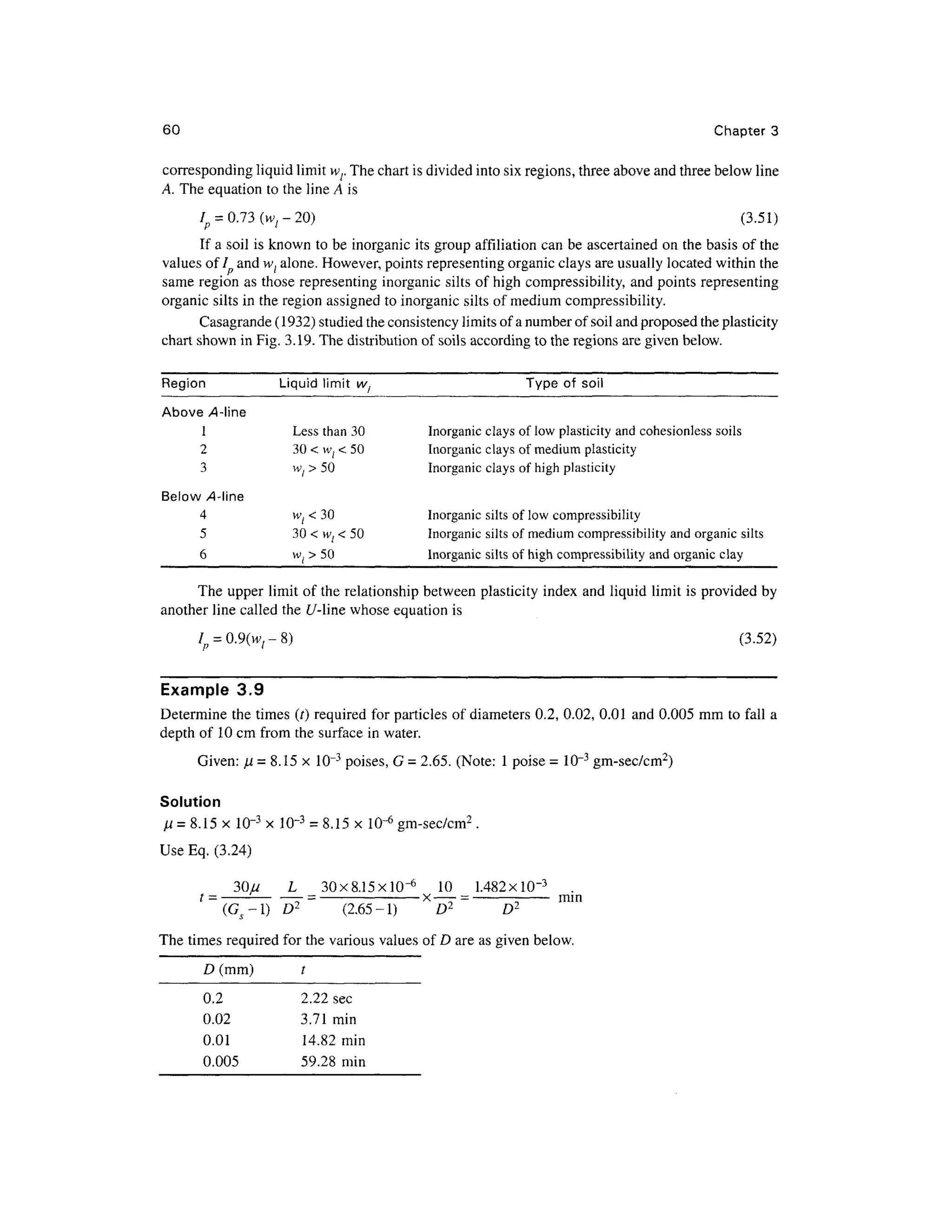


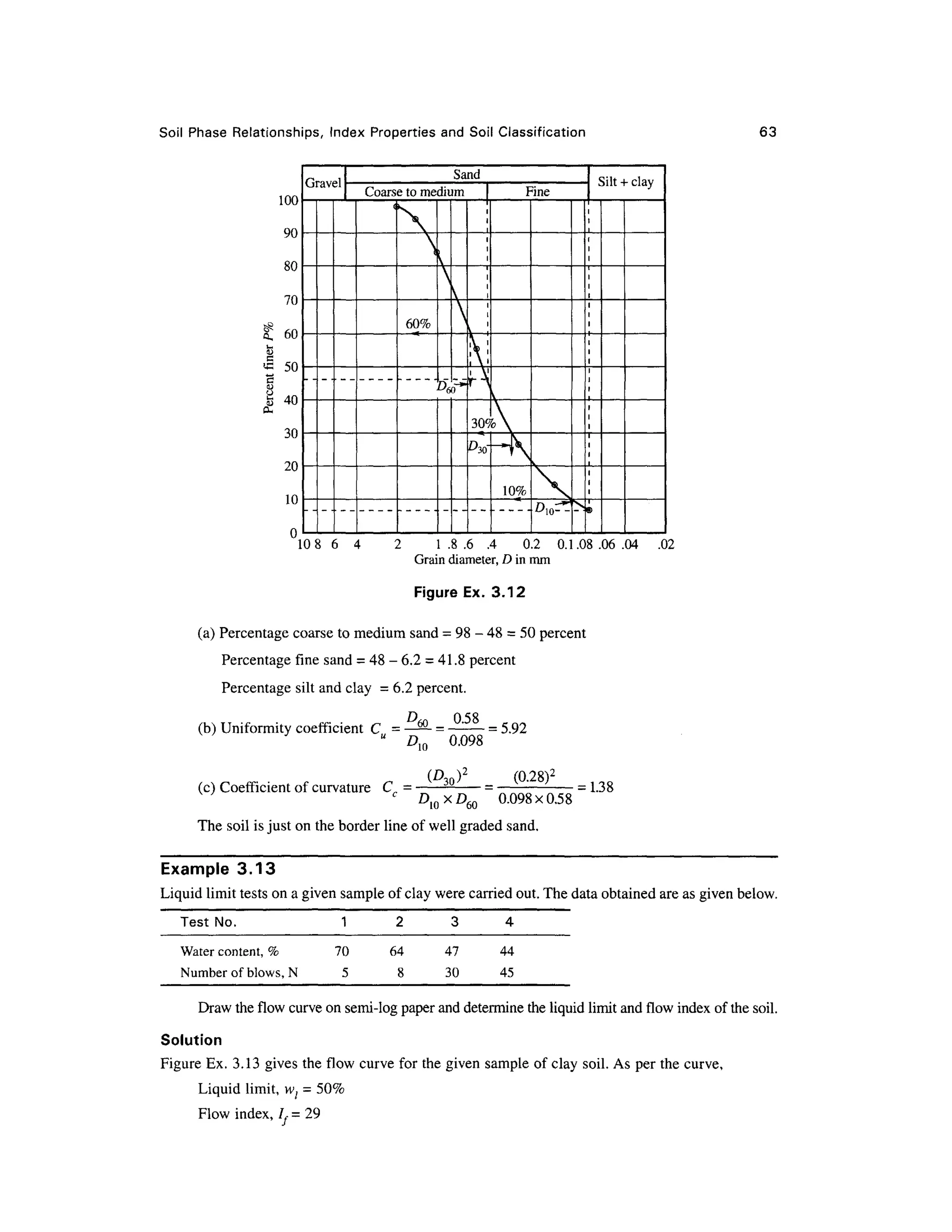
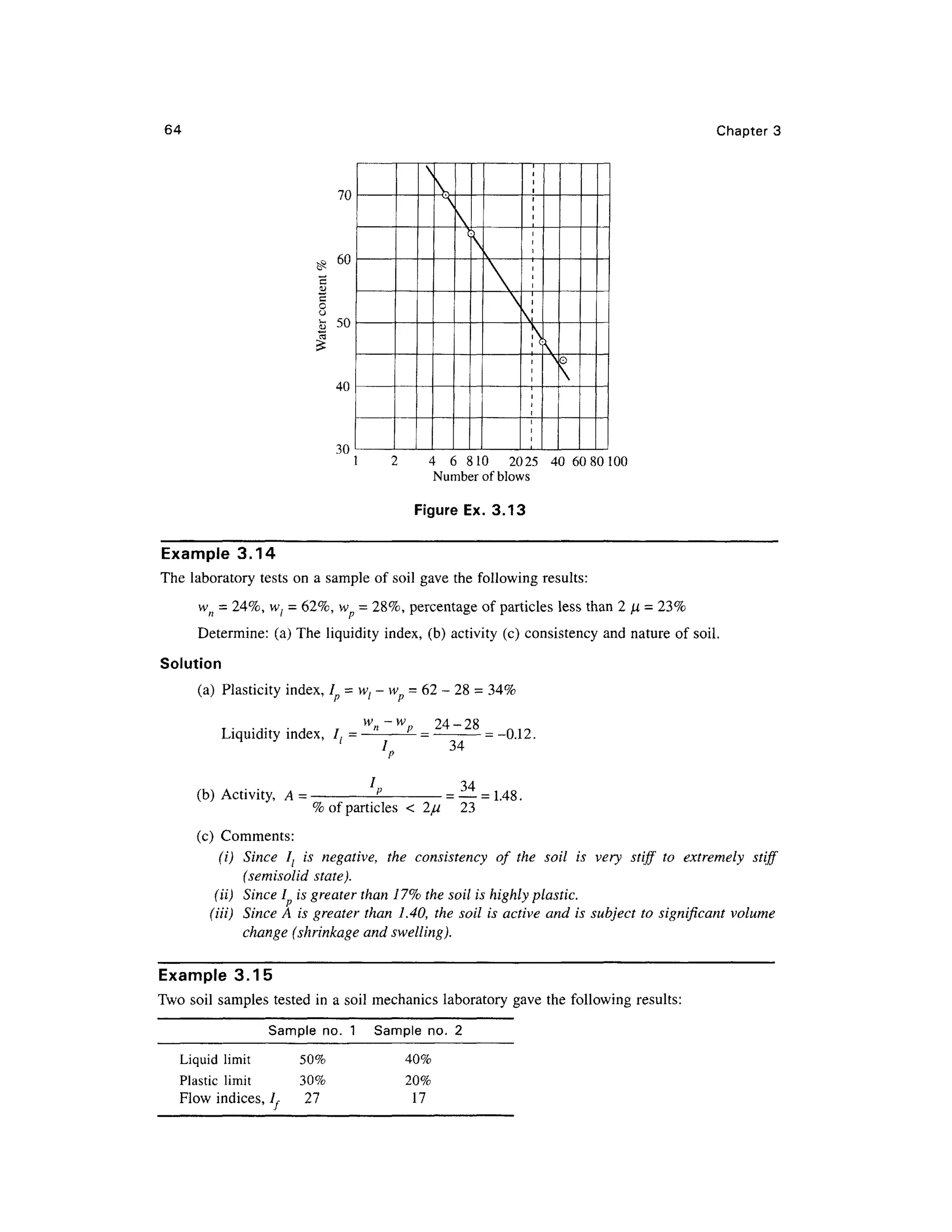





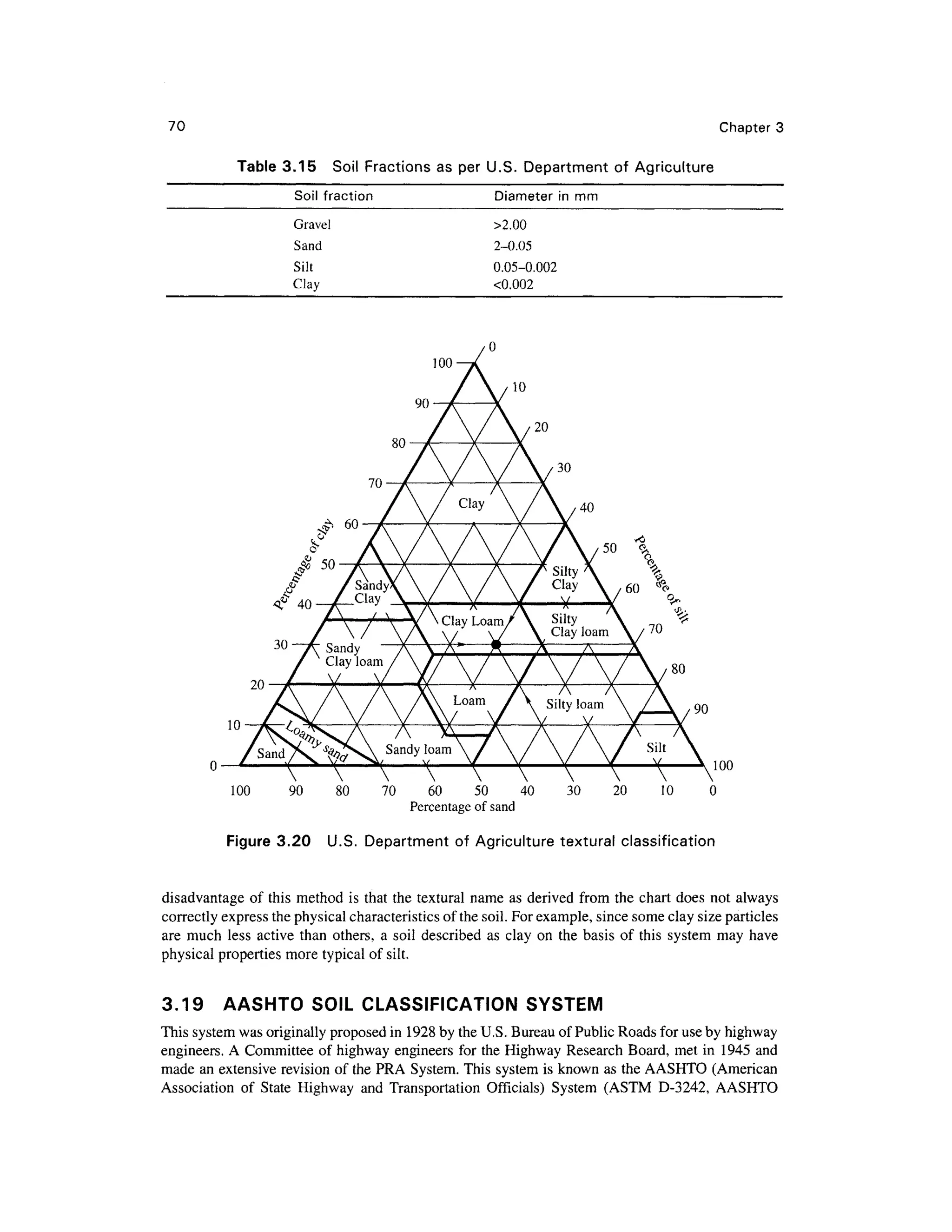


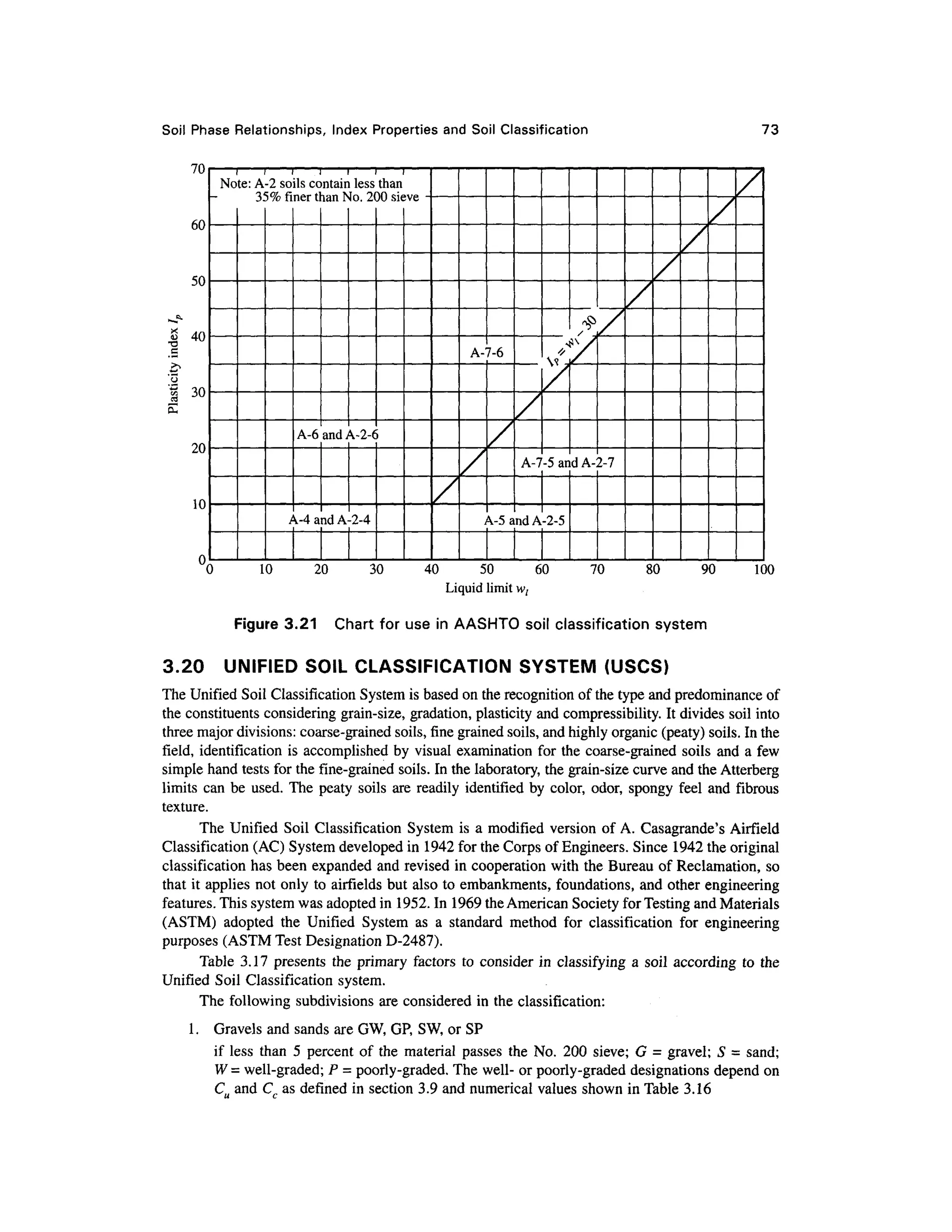
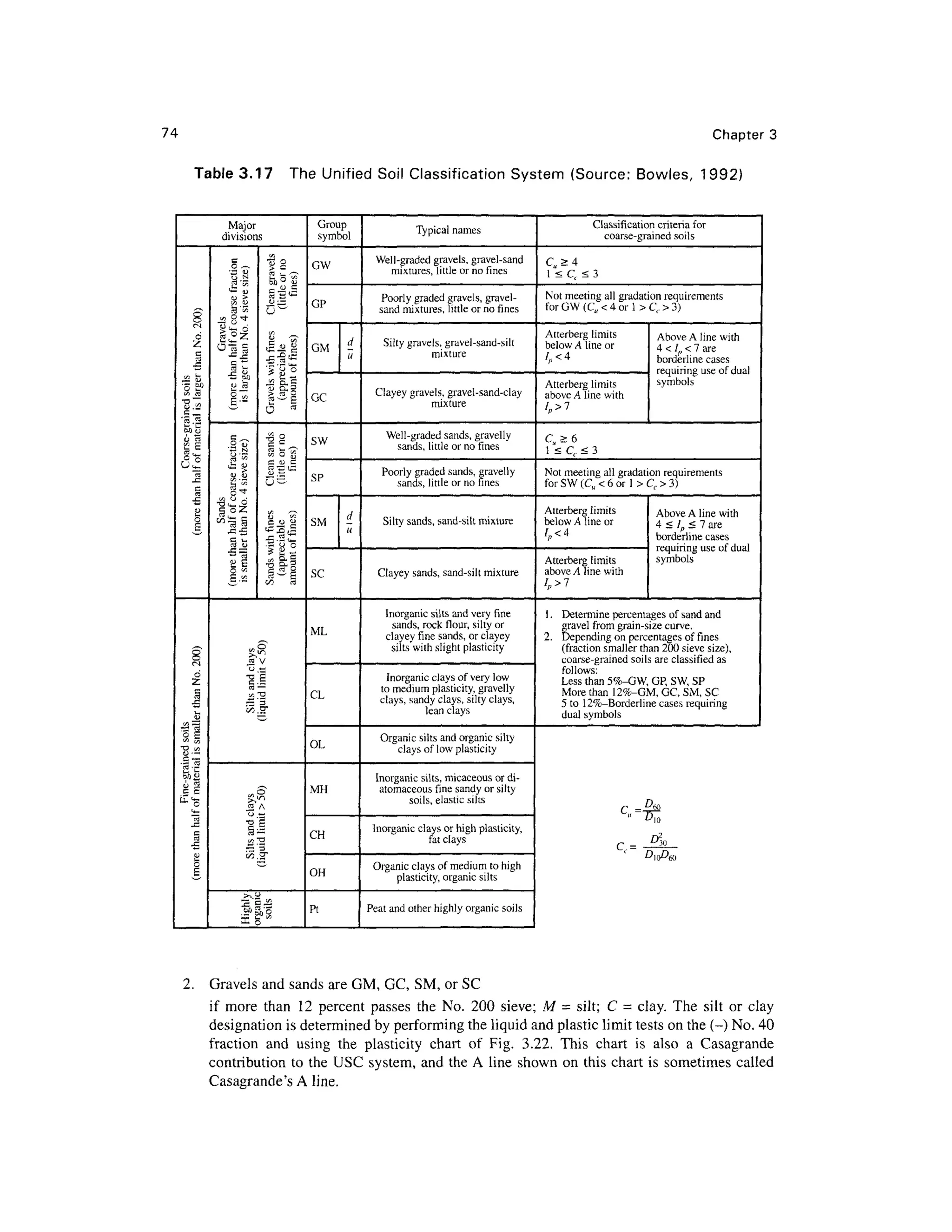
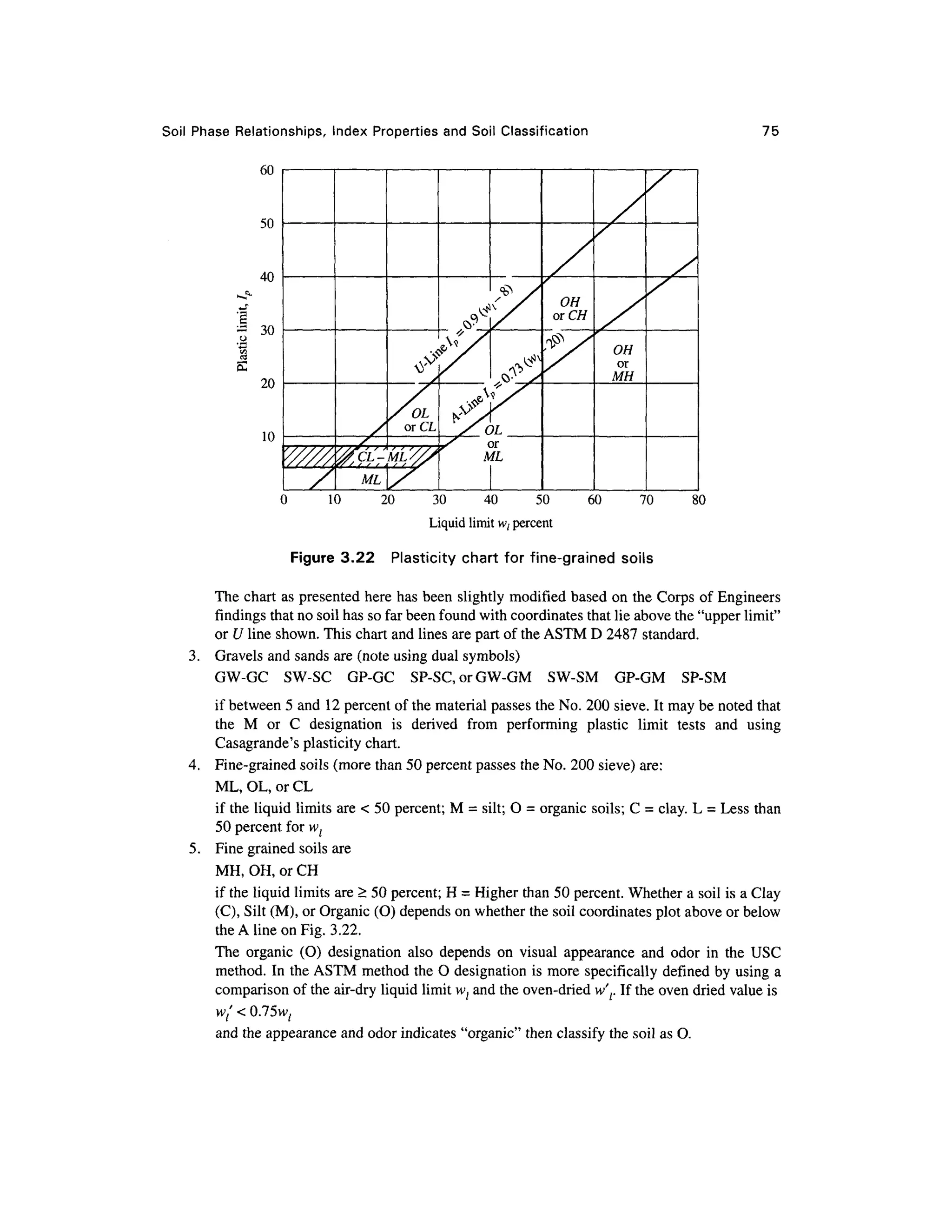

![Soil Phas e Relationships, Inde x Propertie s an d Soil Classificatio n 7 7
Example 3.2 0
A sampl e of inorgani c soi l has the following
grain siz e characteristic s
Size (mm ) Percen t passin g
2.0 (No. 10) 9 5
0.075 (No. 200) 7 5
The liquid limit is 56 percent, and the plasticity index 25 percent. Classify the soil according t o the
AASHTO classification system.
Solution
Percent of fine grained soil = 75
Computation of Group Index [Eq . (3.56a)]:
a = 75 -3 5 =4
0
b = 75 -1 5 =60
c = 56-40 = 16, d=
25-W=
15
Group Index, GI = 0.2 x 40 + 0.005 x 40 x 1 6 +0.01 x 60 x 1 5 =20.2
On the basis of percent of fine-grained soils, liquid limit and plasticity index values, the soil
is either A-7-5 or A-7-6. Since (wl - 30) = 56 -30 =26 > /(25) , the soilclassification isA-7-5(20).
Example 3.2 1
Mechanical analysis on four different samples designated as A, B,C and D were carried out in a soil
laboratory. The results of tests are given below. Hydrometer analysis was carried out on sample D.
The soil is non-plastic.
Sample D: liquid limit = 42, plastic limit = 24, plasticity index =18
Classify the soils per the Unified Soil Classification System.
Samples
ASTM Sieve
Designation
63.0 mm
20.0 mm
6.3
2.0mm
600JL I
212 ji
63 ji
20 n
6(1
2 |i
A
Percentage
100
64
39
24
12
5
1
B
finer than
100
98
90
9
2
C
93
76
65
59
54
47
34
23
7
4
D
100
95
69
46
31](https://image.slidesharecdn.com/geotechbook-240326034957-6522ccd8/75/geotech-book-FOR-CIVIL-ENGINEERINGGG-pdf-96-2048.jpg)




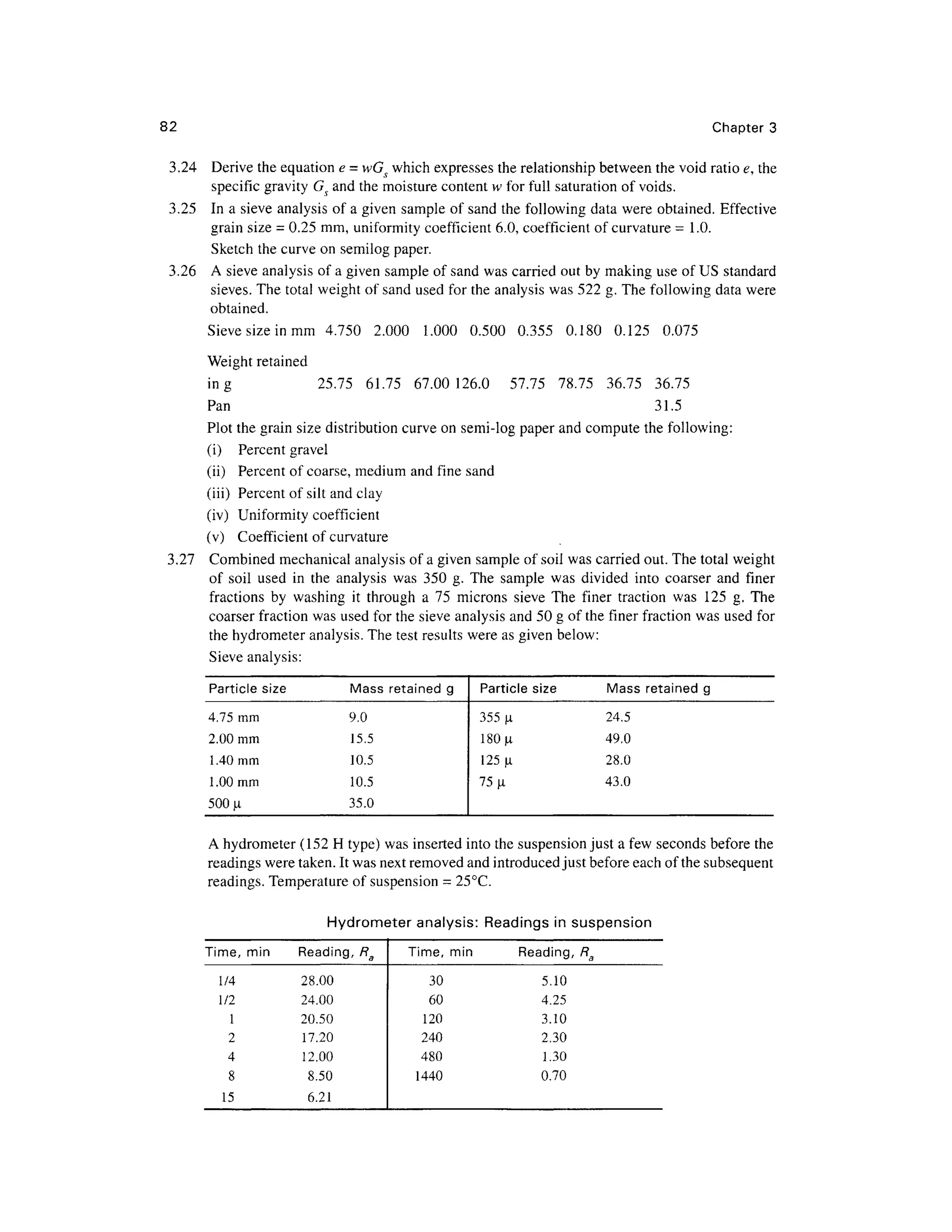
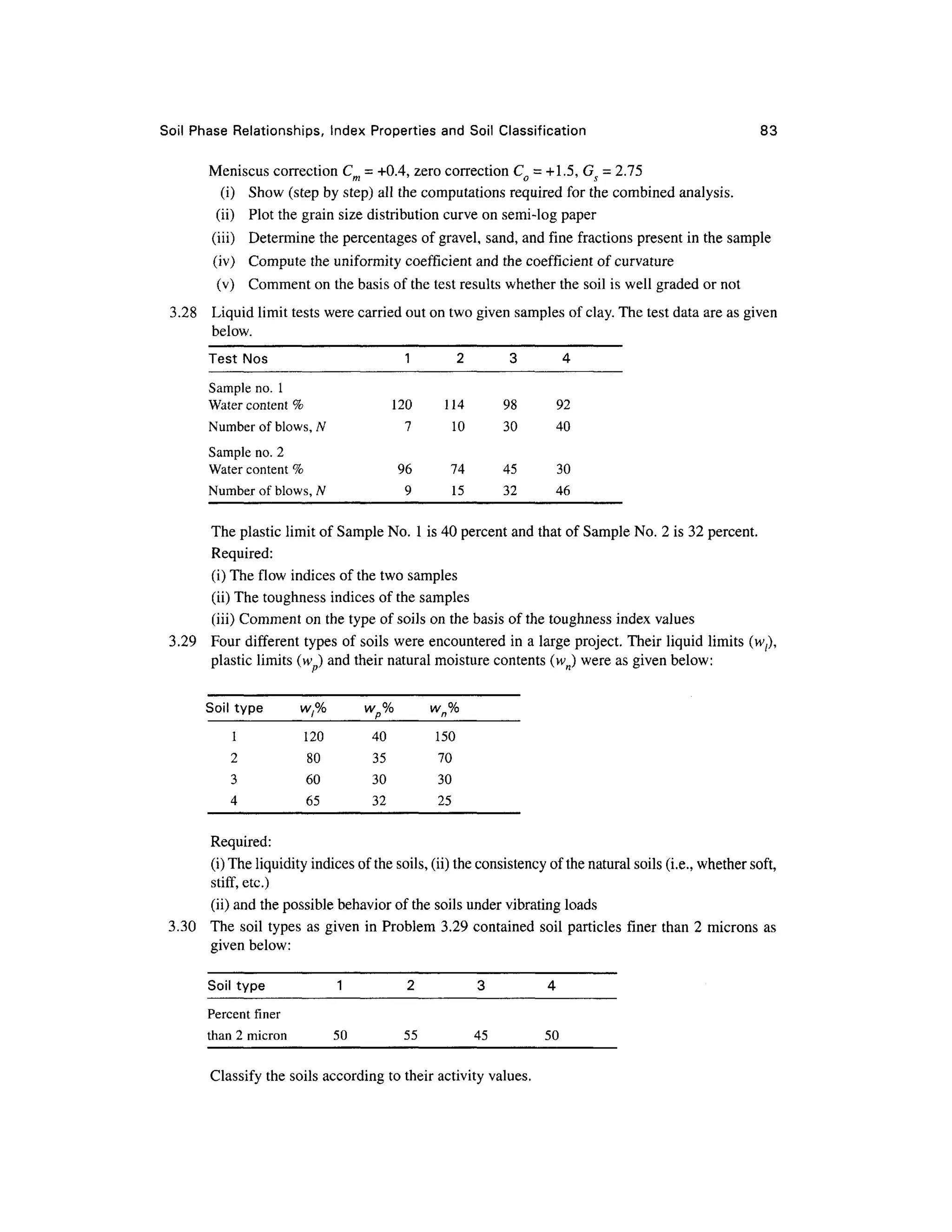


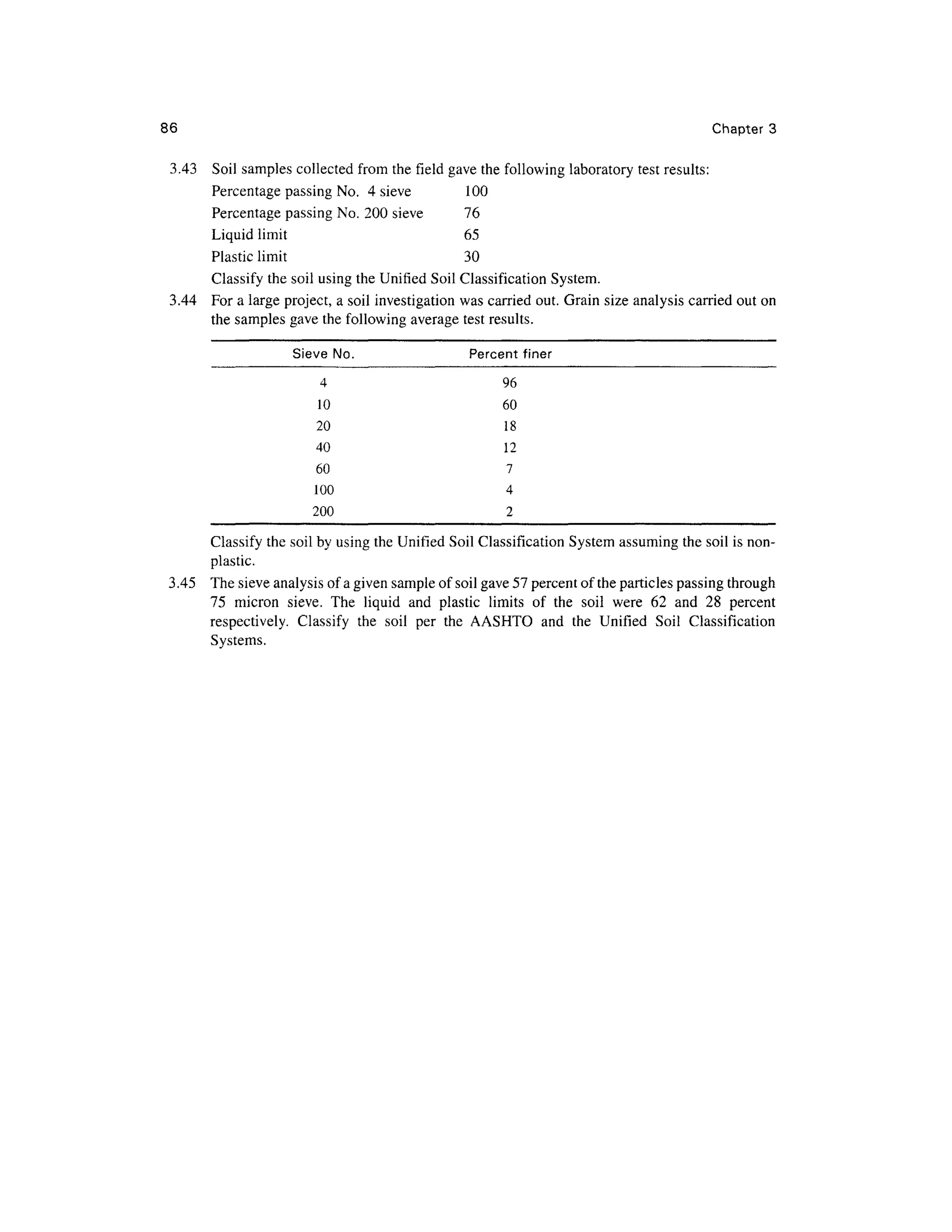

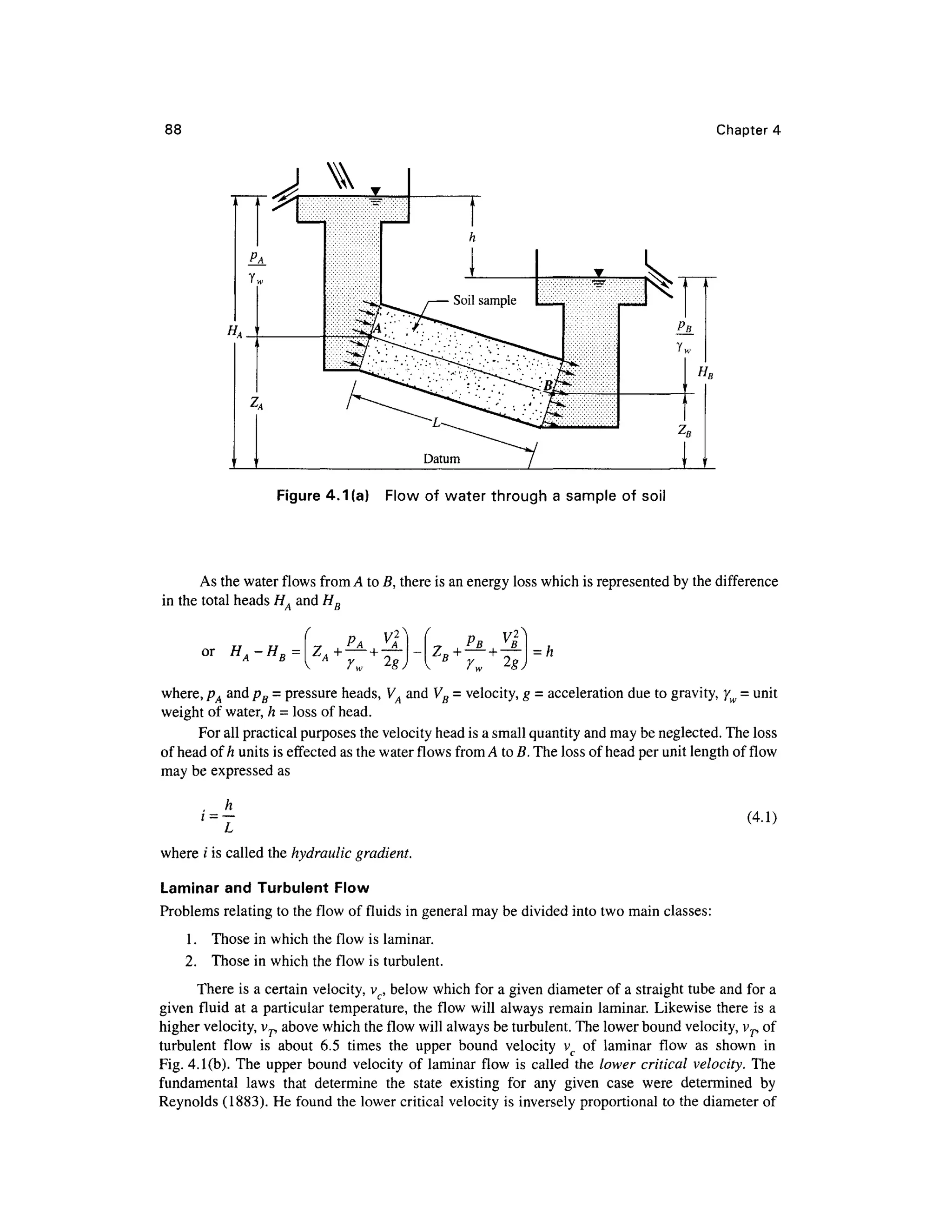

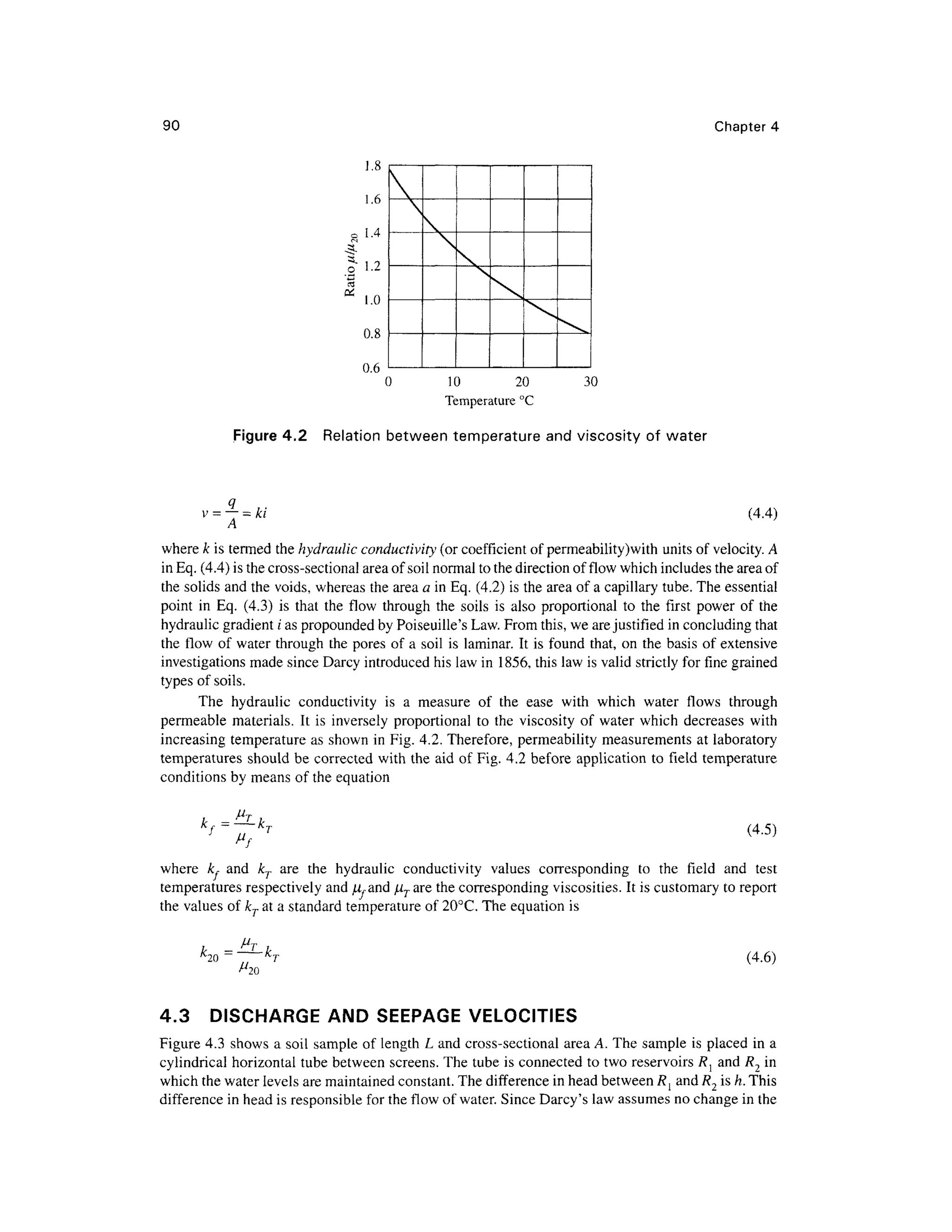





![96 Chapte r 4
drying, the test specimen weighe d 1. 1 Ib. Assuming Gs = 2.65, calculat e the seepag e velocit y of
water during the test.
Solution
From Eq. (4.9), k = ^-= -
2633x23
6
-
=0.8x 10~3
in./se c
hAt 15.75x7.75x10x6 0
Discharge velocity, v =ki = k— = 0.8xlO~3
x — :
—= 5.34xlO~3
in./sec
L 2.3 6
W 1 1
Y = —s- = -
: -
= 0.0601 lb/in3
=103.9 lb/ft 3
d
V 7.75x2.3 6
Y G
FromEq. (3.18a) , e = ^-^—
Yd
62.4x2.65
or e - -
-- 1 = 0.59 1 5
103.9
°-5915
= 0.37 2
l + e1 + 0.5915
v 5.3 4 xlO~3
Seepage velocity, v =— =
— -
=14.3
5 x10~3
in./sec
6 s
n 0.37 2
Example 4. 4
The hydrauli c conductivity of a soi l sampl e wa s determine d i n a soi l mechanic s laborator y b y
making us e o f a falling hea d permeameter. The dat a used an d th e tes t results obtaine d wer e as
follows: diameter of sample = 2.36 in, height of sample = 5.91 in, diameter of stand pipe = 0.79 in,
initial head h Q = 17.72 in. final hea d hl = 11.81 in. Time elapse d = 1 min 45 sec. Determin e the
hydraulic conductivity i n ft/day .
Solution
The formula for determining k is [Eq. (4.13)]
, . , , .
k = -
log,0 — -
where tis the elapsed time.
A • 3.14x0.79x0.7 9 0 . 1 A 4 ,2
Area of stand pipe, a = -
= 34 x 1
0 4
ft ^
4x12x12
Area of sample, A = 3
-14x2
-36x236
= 304 x 10~4
ft 2
4x12x12
Height of sample, L =(17
-72
~1L81
) = 04925 ft
1 772 118 1
Head, /z n = -^— = 1.477 ft, h, = —
= 0.984 ft
0
1 2 ]
1 2](https://image.slidesharecdn.com/geotechbook-240326034957-6522ccd8/75/geotech-book-FOR-CIVIL-ENGINEERINGGG-pdf-115-2048.jpg)




![Soil Permeability and Seepag e 101
4.8 BOREHOL E PERMEABILIT Y TEST S
Two types of tests may be carried out in auger hole s for determining k. They are
(a) Fallin g water level method
(b) Risin g water level method
Falling Water Leve l Metho d (case d hol e an d soil flush with bottom )
In thi s test auge r holes ar e made in the field that extend belo w th e water tabl e level . Casing is
provided down to the bottom of the hole (Fig. 4.8(a)). The casing is filled with water which is then
allowed t o see p int o the soil . The rat e o f dro p o f the wate r level i n th e casin g i s observe d b y
measuring the depth of the water surface below the top of the casing at 1, 2 and 5 minutes after the
start of the test and at 5 minutes intervals thereafter. These observations are made until the rate of
drop become s negligibl e o r unti l sufficien t reading s hav e bee n obtained . Th e coefficien t o f
permeability is computed as [Fig. 4.8(a)]
2-3 nrQ H {
k = —log— -
-f,) ff ,
(4.26)
where, H{ = piezometric head ait = tl,H2 = piezometric head at t - t 2-
Rising Wate r Leve l Metho d (case d hol e an d soil flus h with bottom )
This method, most commonly referred to as the time-lag method, consists of bailing the water out
of the casing and observing the rate of rise of the water level in the casing at intervals until the rise
in water level becomes negligible. The rate is observed by measuring the elapsed time and the depth
of the water surface below the top of the casing. The intervals at which the readings are required
will vary somewhat with the permeability of the soil. Eq. (4.26) is applicable fo r this case, [Fig
.
4.8(b)]. A rising water level test should always be followed by sounding the bottom of the holes to
determine whether the test created a quick condition.
HI a t t =
H a t t = t
(a) Falling water head method (b ) Rising water head method
Figure 4.8 Fallin g and rising water method of determining k](https://image.slidesharecdn.com/geotechbook-240326034957-6522ccd8/75/geotech-book-FOR-CIVIL-ENGINEERINGGG-pdf-120-2048.jpg)



![Soil Permeabilit y an d Seepage 105
Sand
Fine Medium] Coars e
Sand
10"
T3
8 io -
-3
2
•o
X
10-
10'
C, ,=1 - 3
10- 10- 10° IO1
D5 (mm)
Figure 4.11 Influenc e o f gradation o n permeability o n granular soil s
(after Kenne y et al., 1984 )
where k = a soil constant depending on temperature and void ratio e .
F(e) ma y be expressed as
F(e) =
o
2e
l + e
(4.32)
When e = 1, F(e) ~ 1 . Therefore k represent s th e hydraulic conductivity corresponding t o void
ratio e -1 . Since k i s assumed a s a constant, k is a function of e only.
By substituting in F(e), the limiting values,;c = 0, x = 0.25, and x = 0.5, we get
ForJ c = 0,
x = 0.25,
(4.33)
(4.34)
x = 0.50
F,(e) represents the geometric mean of F.(e) and F.(
The arithmetic mean of the functions F^e) an d F3(e) is
(4.35)
= e2
(4.36)](https://image.slidesharecdn.com/geotechbook-240326034957-6522ccd8/75/geotech-book-FOR-CIVIL-ENGINEERINGGG-pdf-124-2048.jpg)

![Soil Permeabilit y an d Seepage 107
3.5
3.0
2.5
•|2.0
1.0
0.5
0
Clay
O Batiscon
A Berthierville
D St . Hilaire
V Vosb y
• Bosto n blue
10- 10" 10,-8
Figure 4.14 Result s of falling-head and constant-head permeabilit y test s on
undisturbed samples of sof t clay s (Terzaghi, Pec k and Mesri, 1996 )
Fine Graine d Soil s
Laboratory experiment s hav e shown that hydraulic conductivity of very fin e graine d soil s are not
strictly a function o f void ratio since there is a rapid decrease i n the value of k for clays below the
plastic limit. This is mostly due to the much higher viscosity of water in the normal channels which
results from the fact that a considerable portion of water is exposed t o large molecular attractions by
the closely adjacent solid matter. It also depends upon the fabric of clays especially thos e of marine
origin whic h ar e often flocculated. Fig . 4.13 shows that the hydraulic conductivity in the vertica l
direction, at in situ void ratio eQ, is correlated wit h clay fraction (CF) finer than 0.002 mm an d with
the activity A (= I p/CF).
Consolidation o f soft clays may involve a significant decrease i n void ratio and therefore of
permeability. The relationships between e and k (log-scale) fo r a number of soft clays are shown in
Fig. 4.14 (Terzaghi, Peck, an d Mesri 1996) .
Example 4. 5
A pumping test was carried ou t for determining the hydraulic conductivity of soil in place. A well
of diamete r 40 cm wa s drilled dow n t o an impermeable stratum . The depth o f wate r abov e th e
bearing stratum was 8 m. The yield from th e well was 4 mVmin at a steady drawdow n of 4.5 m.
Determine th e hydraulic conductivity of the soil in m/day if the observed radiu s of influence was
150m.
Solution
The formula for determining k is [Eq. (4.18)]
k =
2.3 q
xD0(2H-D0) r 0
q = 4 m3
/min = 4 x 60 x 24 m3
/day
D0 = 4.5 m, H = 8 m, R . = 150 m, r Q = 0.2 m](https://image.slidesharecdn.com/geotechbook-240326034957-6522ccd8/75/geotech-book-FOR-CIVIL-ENGINEERINGGG-pdf-126-2048.jpg)
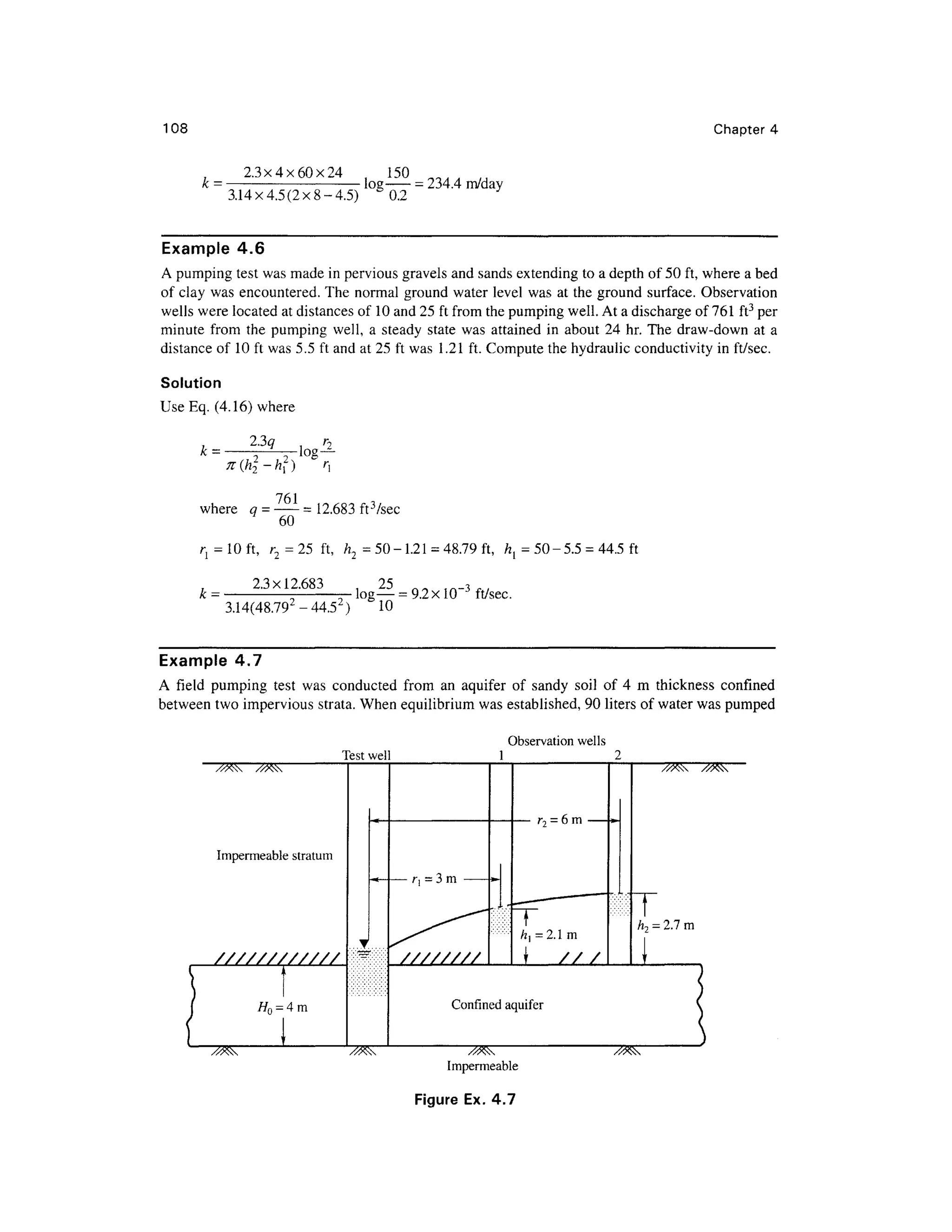

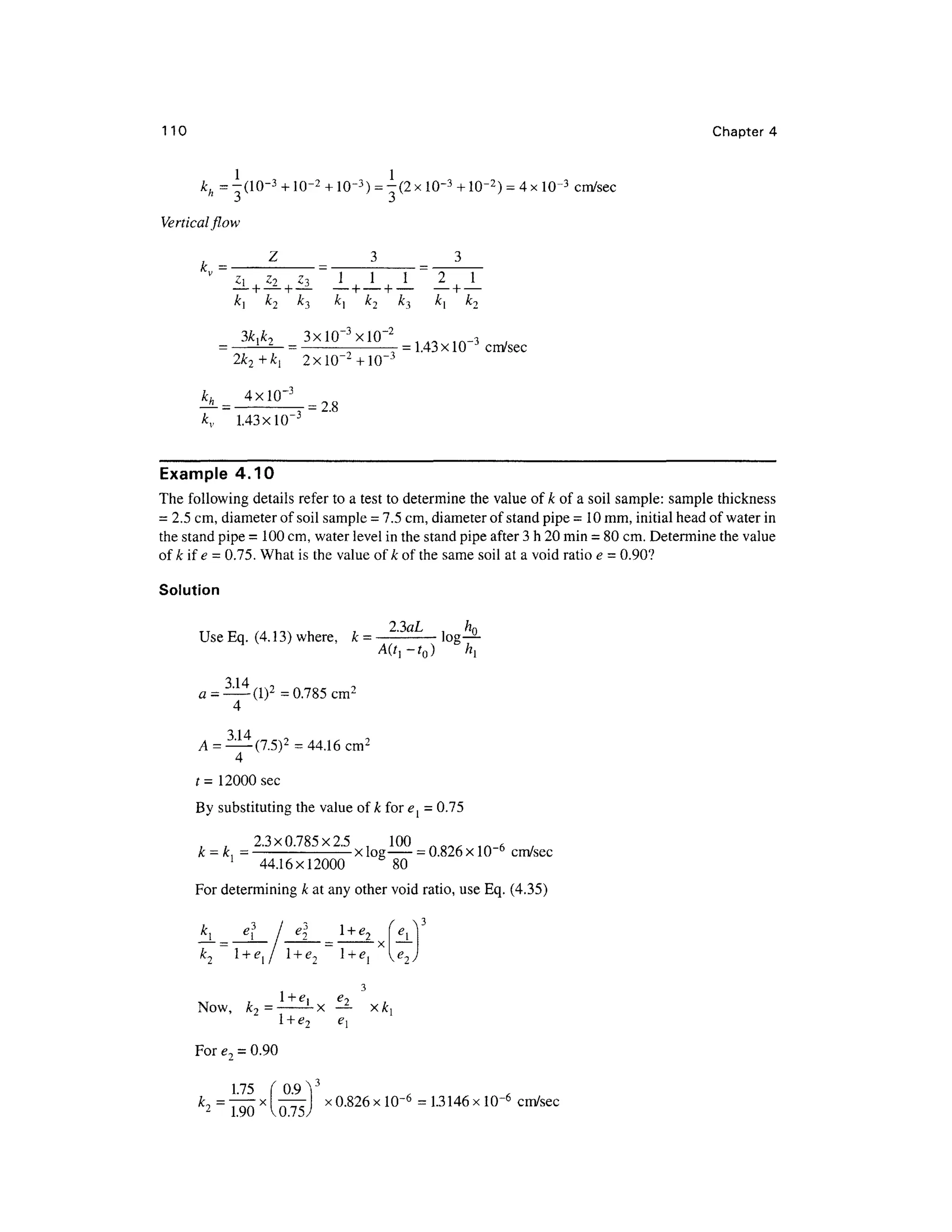
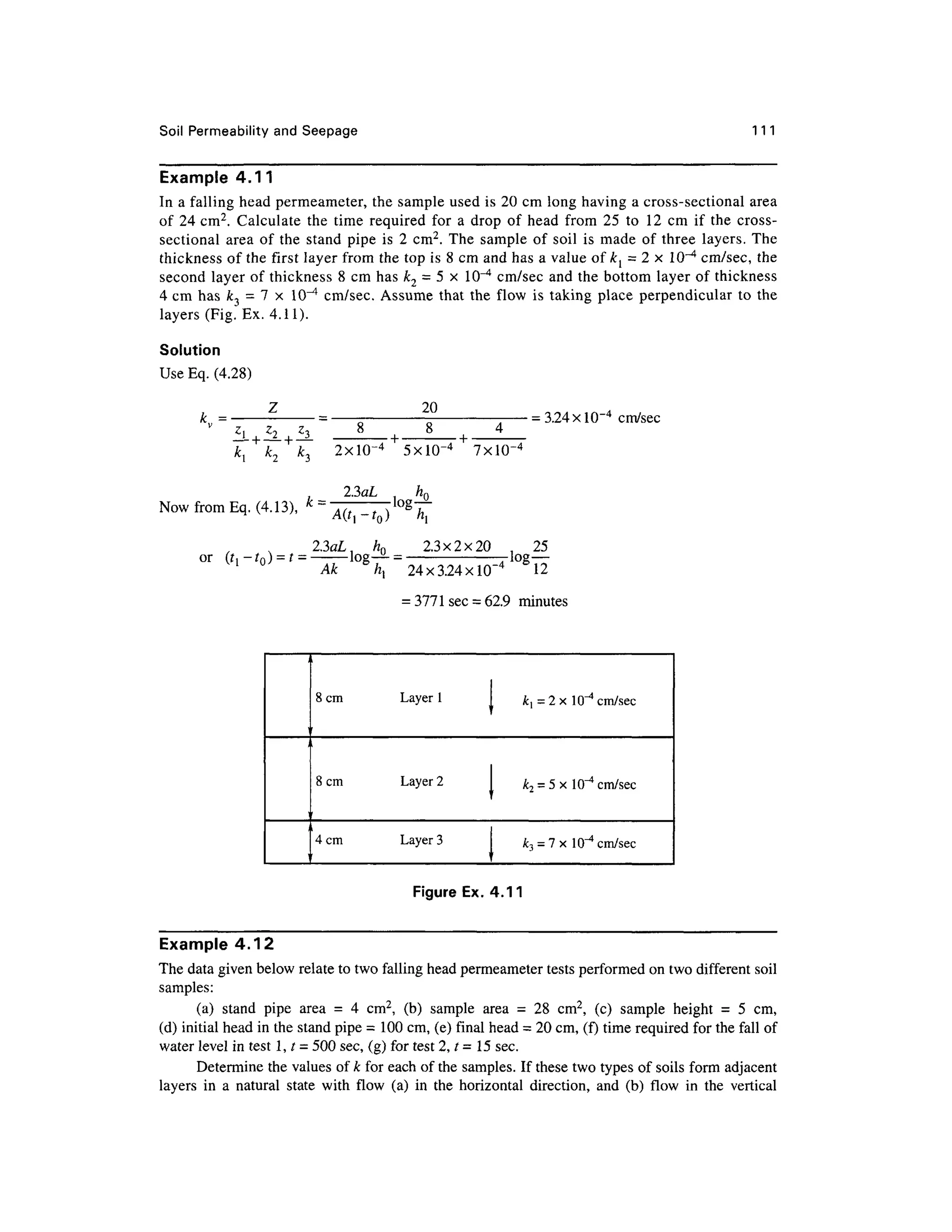









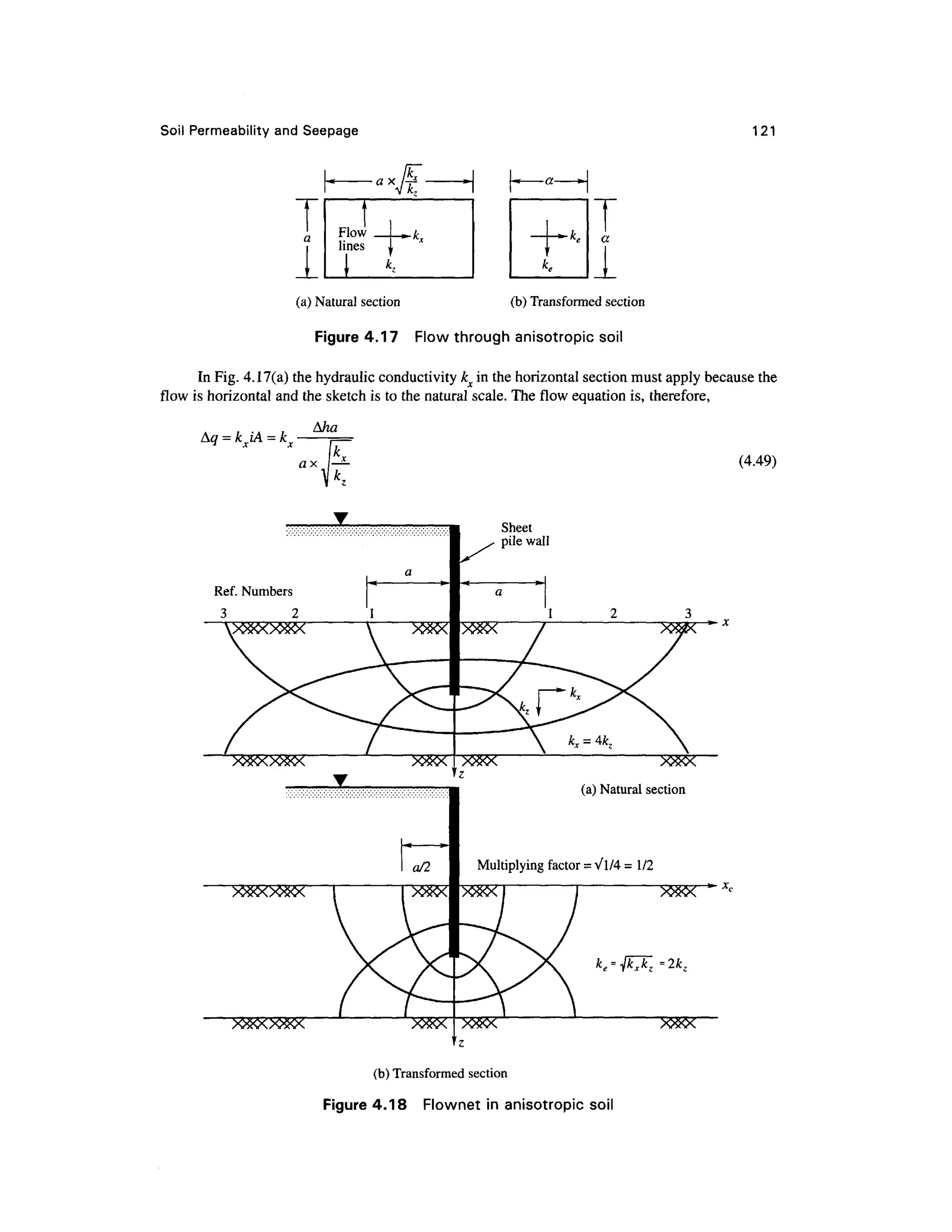
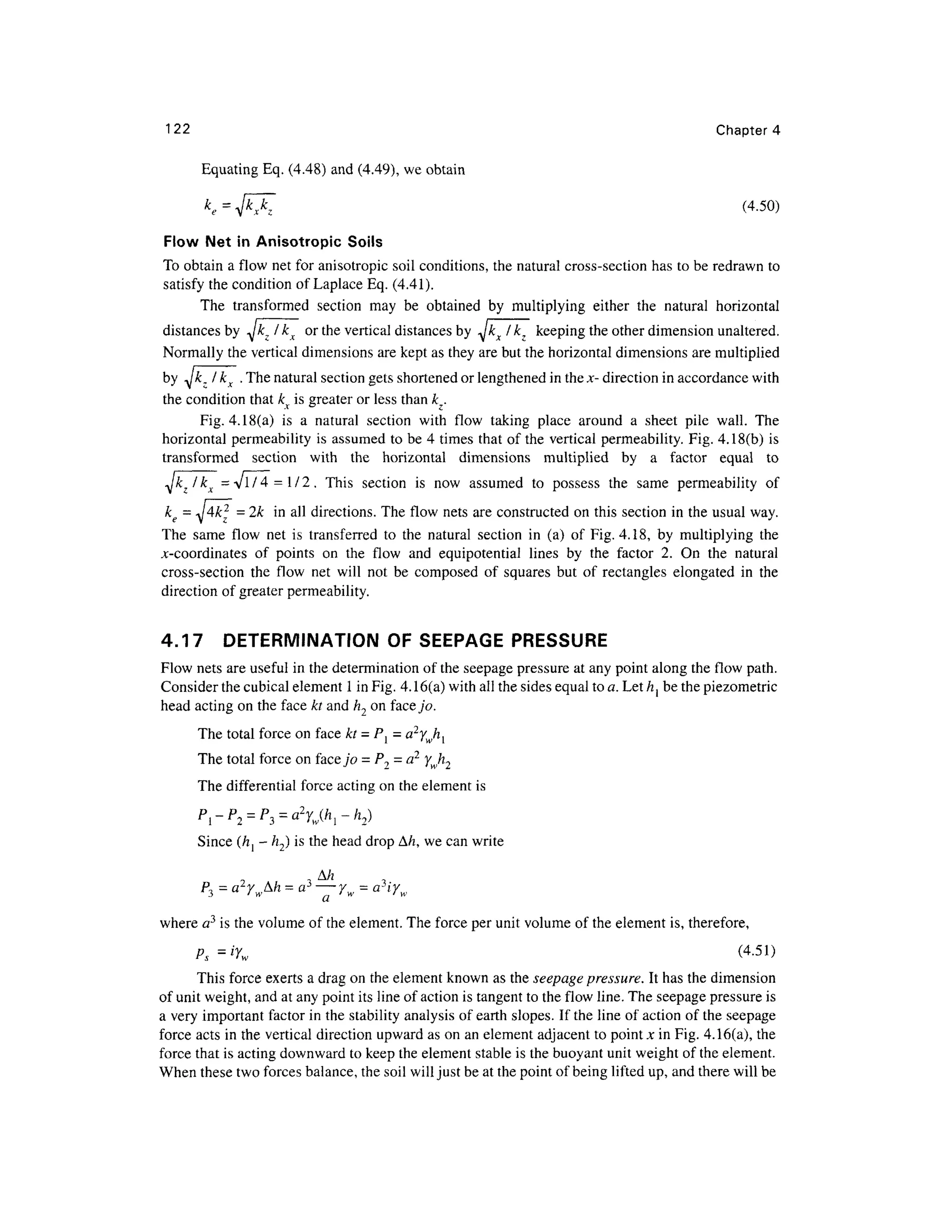

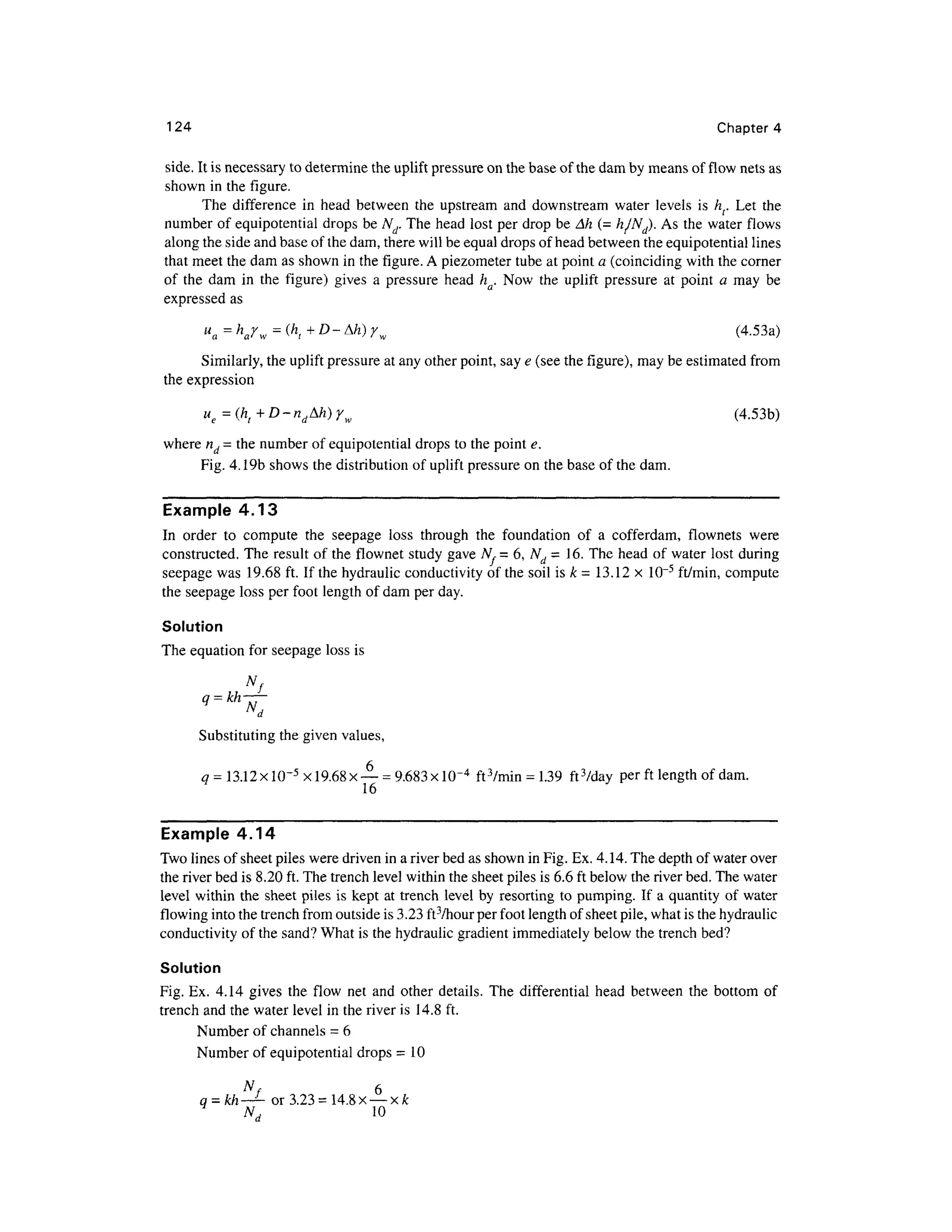
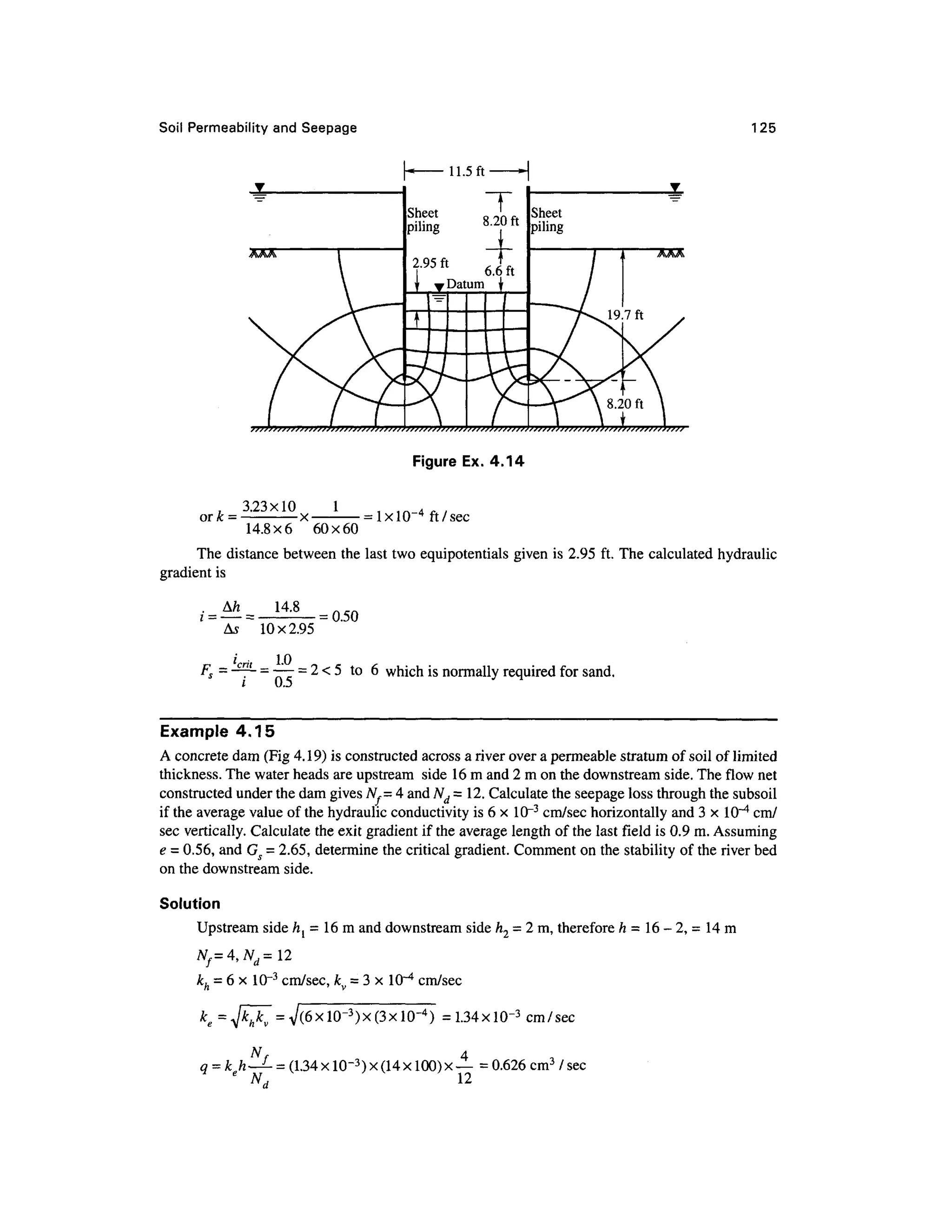


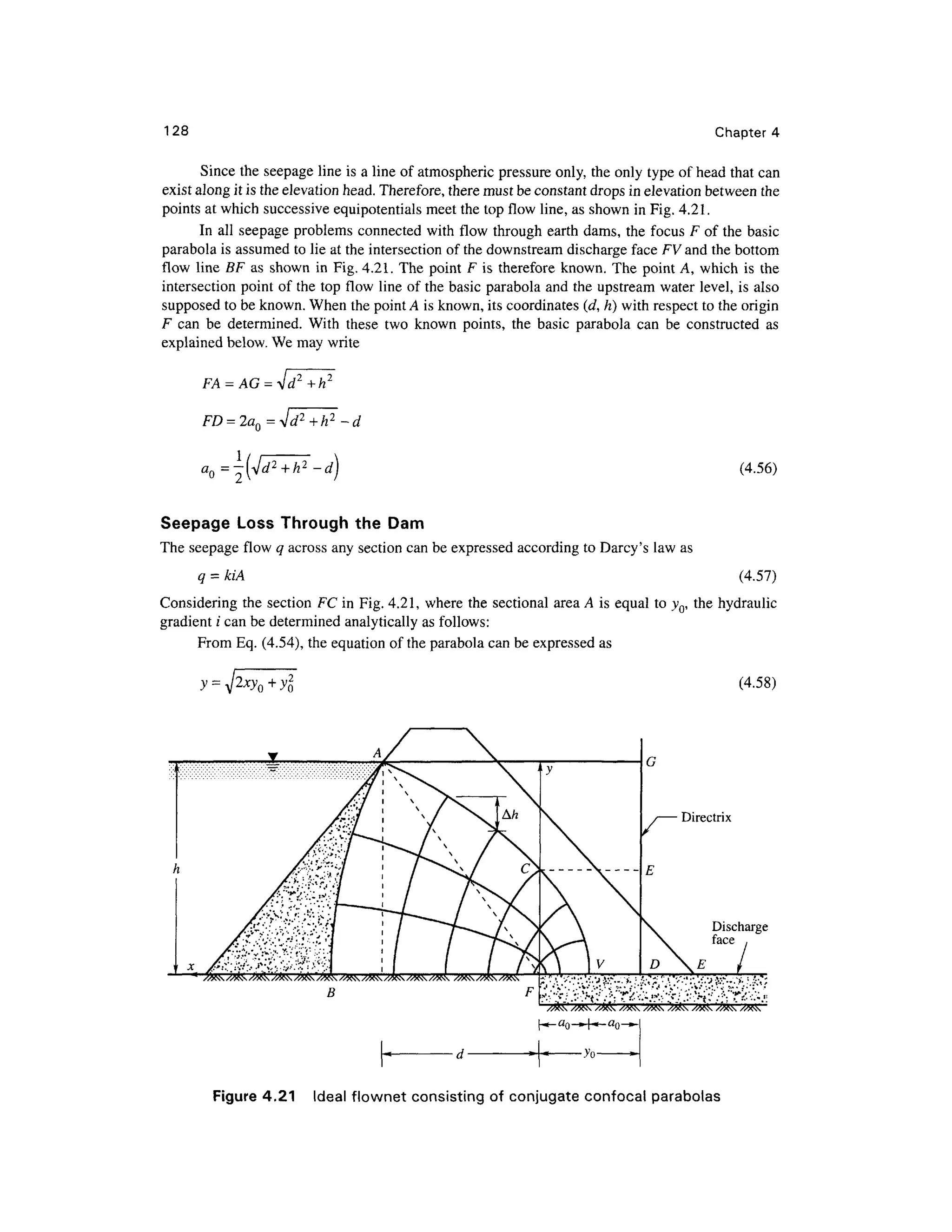

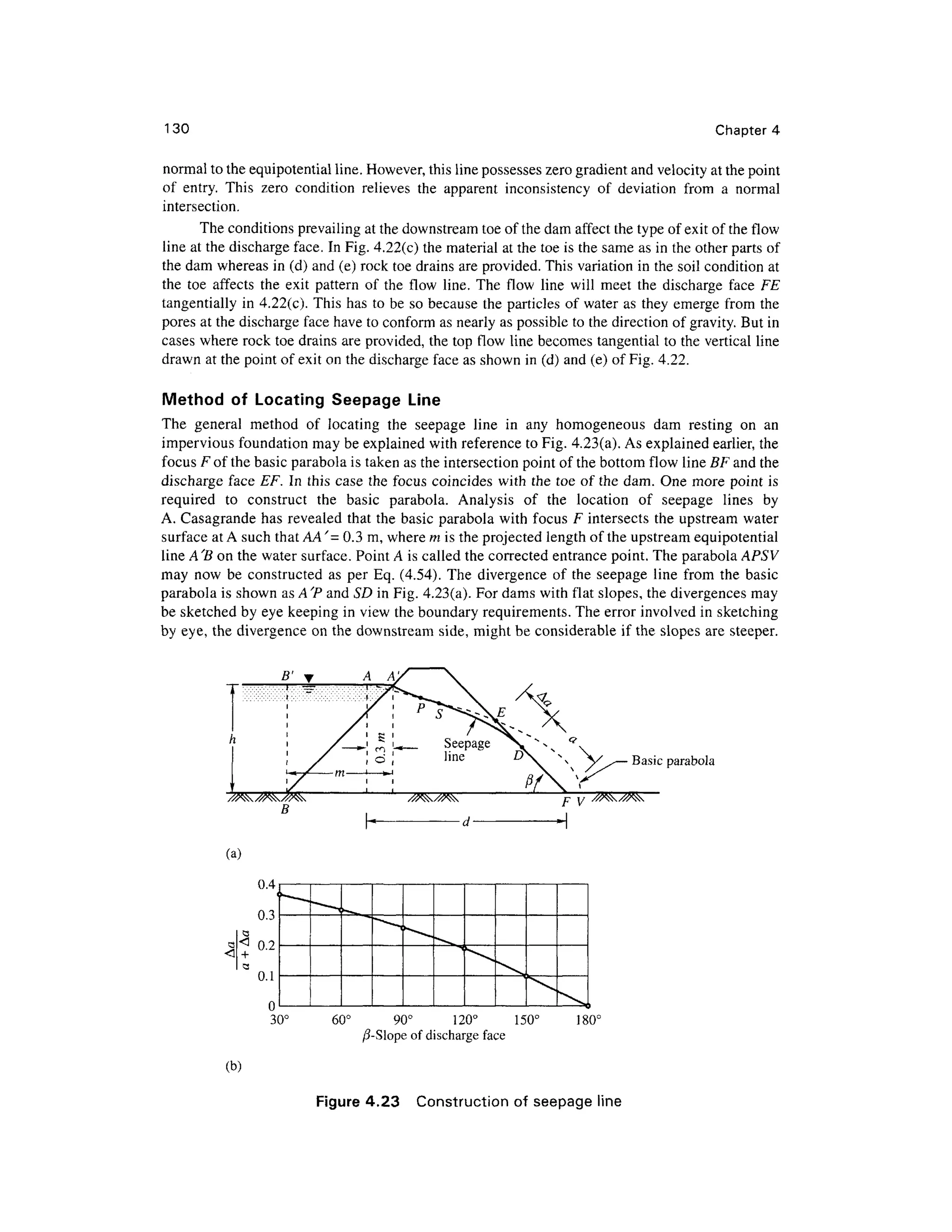


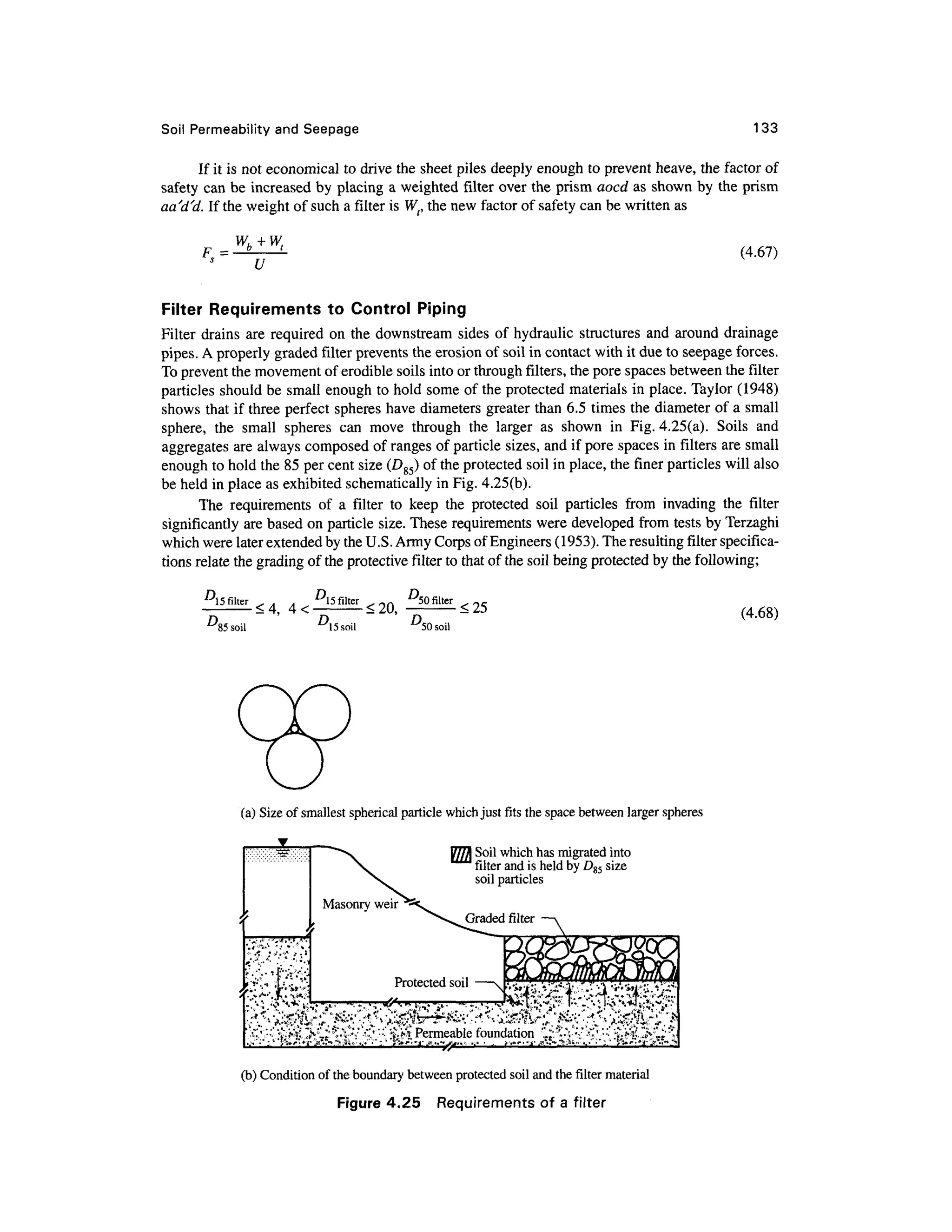
![134 Chapter 4
10 1.0
Grain size D mm
0.1
= 0.015 mm
0.01
Figure 4.26 Grai n size distribution curves for grade d filter and protected material s
The criteria ma y be explained as follows:
1. Th e 1 5 per cent size (D15) o f filter material must be less than 4 times the 85 per cent size
(D85) of a protected soil. The ratio of D15 of a filter to D85 of a soil is called the piping ratio.
2. Th e 1 5 per cent size (D15) o f a filter material should be at least 4 times the 1 5 per cent size
(D]5) of a protected soi l but not more than 20 times of the latter.
3. Th e 50 per cent size (D5Q) o f filter material should be less than 25 times the 50 per cent size
(D50) of protected soil .
Experience indicate s that if the basic filter criteria mentioned above are satisfied in every part
of a filter, piping cannot occur under even extremely sever e conditions.
A typica l grai n siz e distributio n curve o f a protected soi l an d th e limitin g sizes o f filte r
materials fo r constructing a graded filter is given in Fig. 4.26. The size of filter materials must fall
within the two curves C2 and C3 to satisfy th e requirements.
Example 4.1 6
Fig. Ex. 4.1 6 give s th e sectio n o f a homogeneou s da m wit h a hydrauli c conductivit y
k = 7.87 4 x 10"5
in/sec. Draw the phreatic line and compute the seepage loss per foot length of the
dam.](https://image.slidesharecdn.com/geotechbook-240326034957-6522ccd8/75/geotech-book-FOR-CIVIL-ENGINEERINGGG-pdf-153-2048.jpg)

![136 Chapte r 4
-^--035
a + Aa
or Aa = 0.35 (a + Aa) = 0.35 x 24.6 = 8.61 ft
From Eq . (4.60)
q = kyQ
where k = 7.874 x 10~ 5
in/sec or 6.56 x 10" 6
ft/sec an d yQ = 7.413 f t
q = 6.56 x 10-6
x 7.413 = 48.63 x 10" 6
ft3
/sec per ft length of dam.
Example 4.1 7
An earth dam which is anisotropic is given in Fig. Ex. 4.17(a). The hydraulic conductivities kx and
kz i n th e horizonta l an d vertica l direction s ar e respectivel y 4. 5 x 10~ 8
m/ s an d 1. 6 x 10~ 8
m/s .
Construct th e flo w ne t and determine th e quantity of seepage through the dam. What i s the por e
pressure a t point PI
Solution
The transforme d sectio n i s obtained b y multiplyin g the horizonta l distances b y ^Jk z I kx an d b y
keeping the vertical dimensions unaltered. Fig. Ex. 4.17(a) is a natural section of the dam. The scale
factor for transformation i n the horizontal direction i s
Scale factor = P - = JL6xl
°"8
B = 0.6
]kx V4.5X10- 8
The transforme d sectio n o f the da m i s given i n Fig. Ex. 4.17(b) . The isotropi c equivalen t
coefficient o f permeability is
k =
e
Confocal parabolas can be constructed with the focus of the parabola a t A. The basic parabol a
passes throug h point G such that
GC=0.3 H C = 0.3x2 7 = 8.10m
The coordinates of G are:
x = +40.80 m, z = +18.0 m
7 2
- 4 f l 2
As per Eq. (4.58) x = 9 . (a )
Substituting for x and z, we get, 40.8 0 =
Simplifying we have, 4a 2
+ 163.2aQ -32
4 =0
Solving, aQ = 1.9 m
Substituting for aQ in Eq. (a) above, we can write](https://image.slidesharecdn.com/geotechbook-240326034957-6522ccd8/75/geotech-book-FOR-CIVIL-ENGINEERINGGG-pdf-155-2048.jpg)


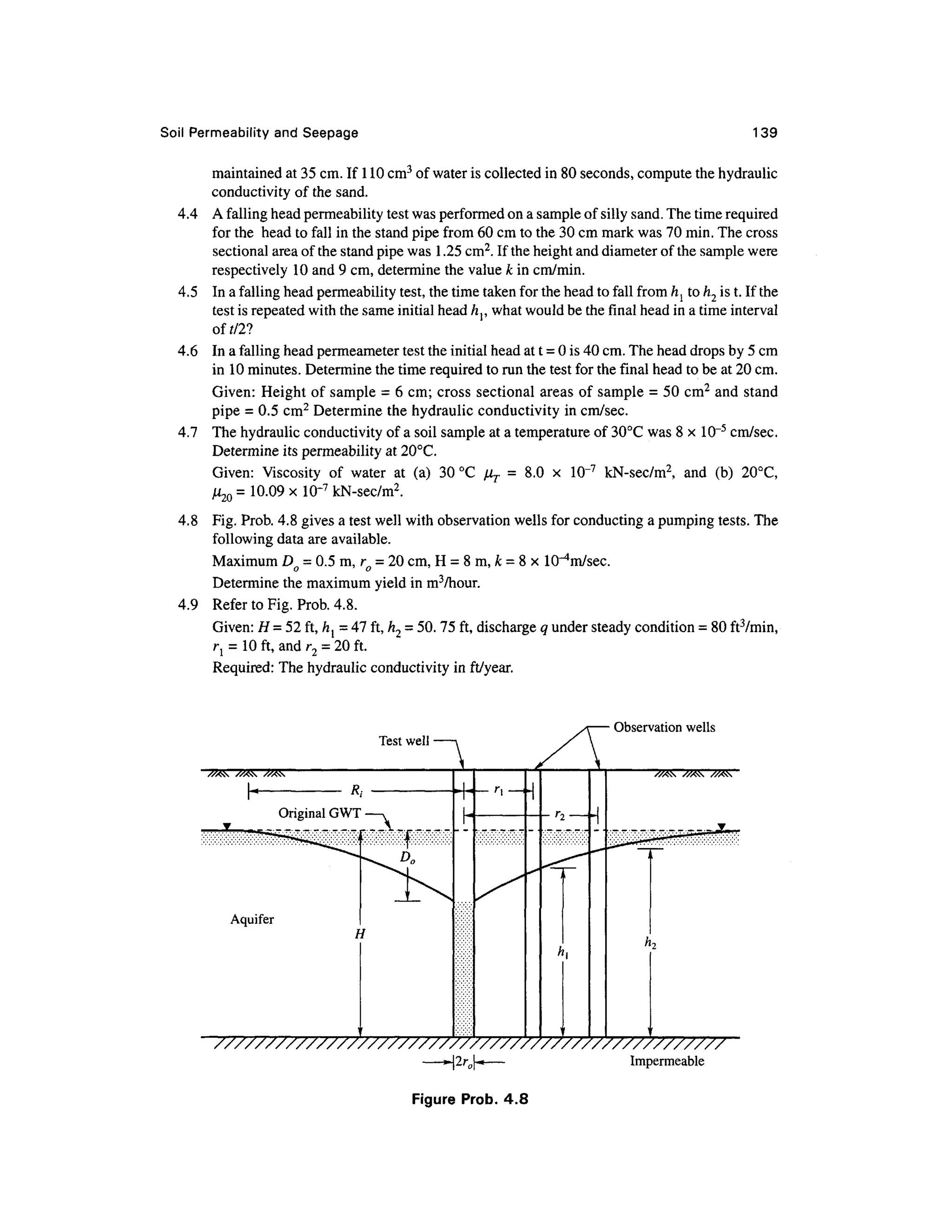
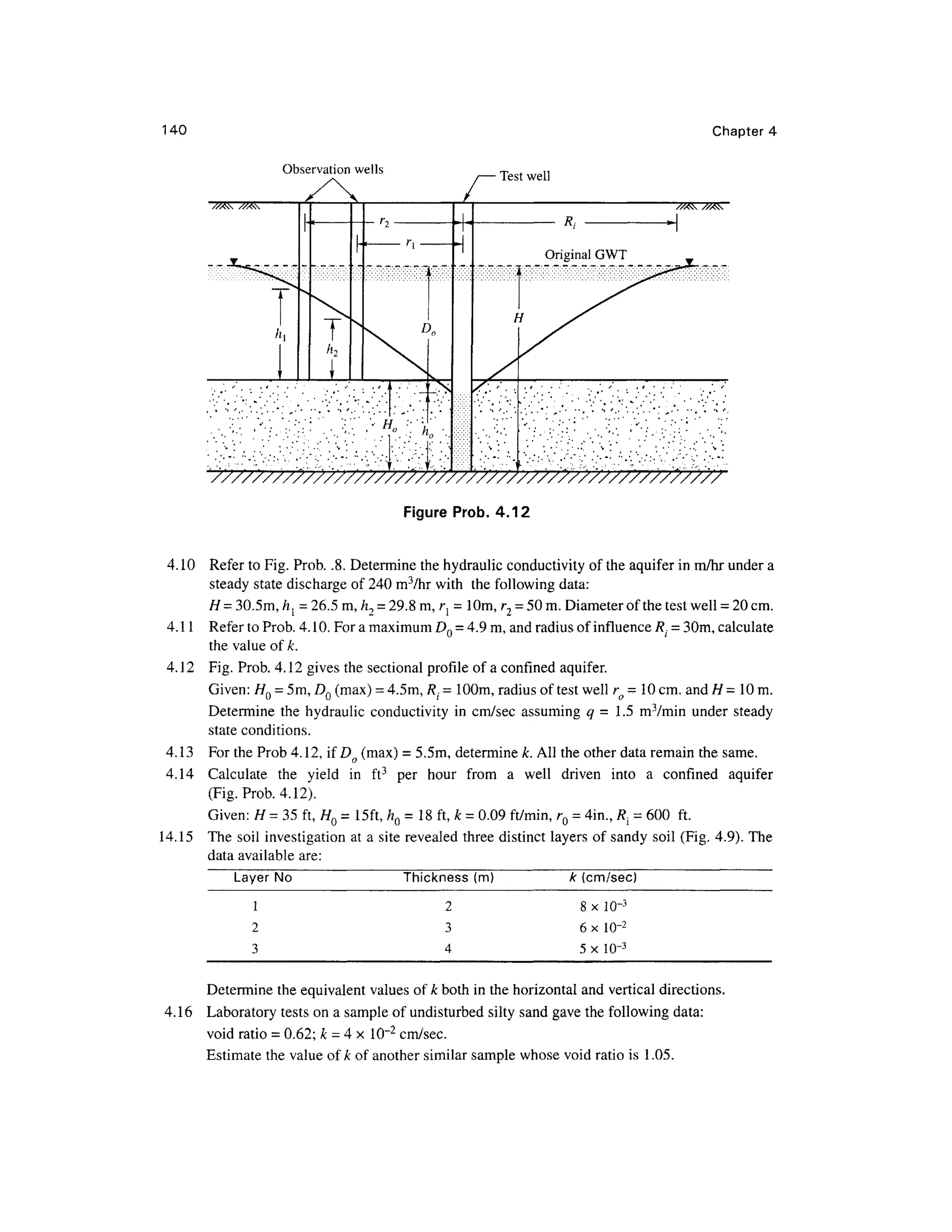

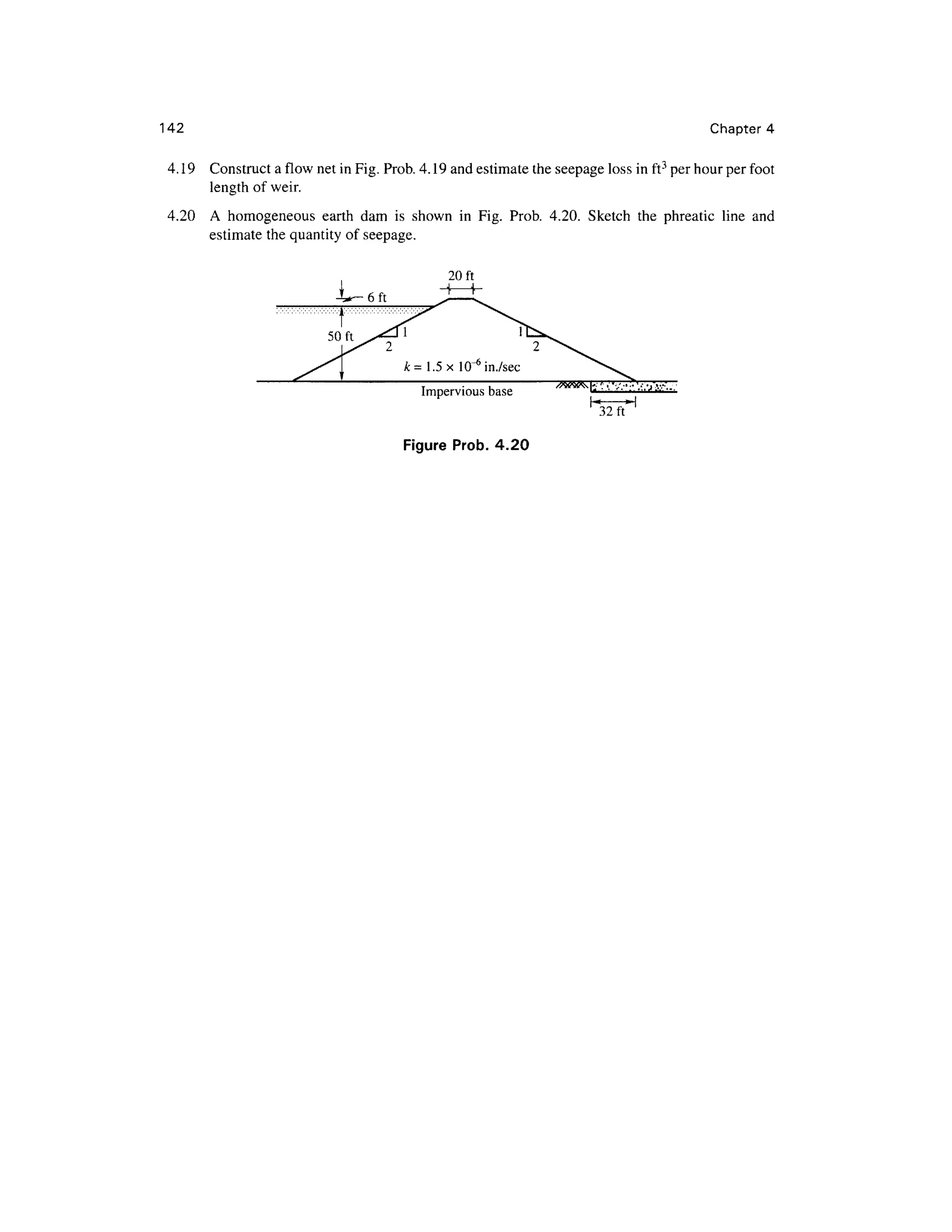
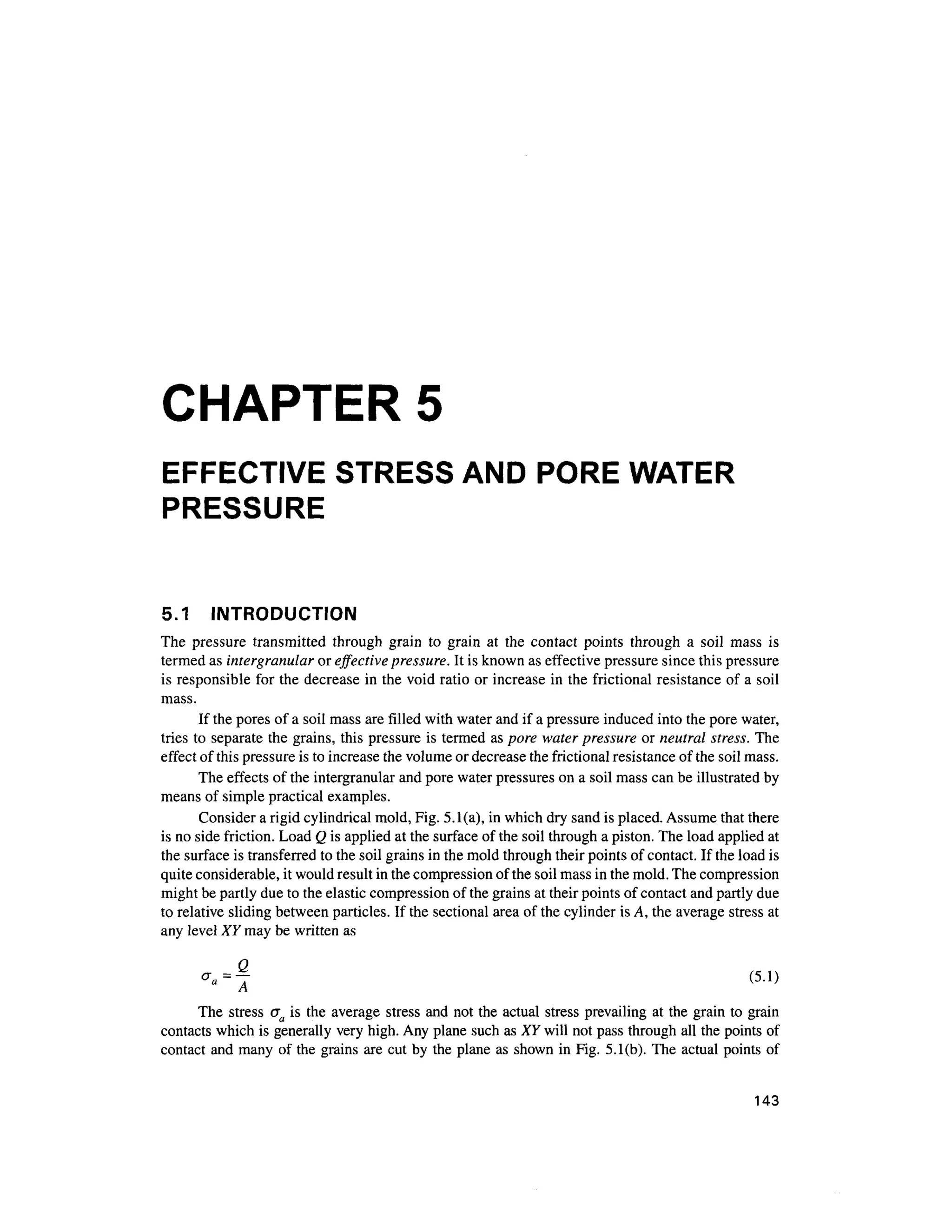




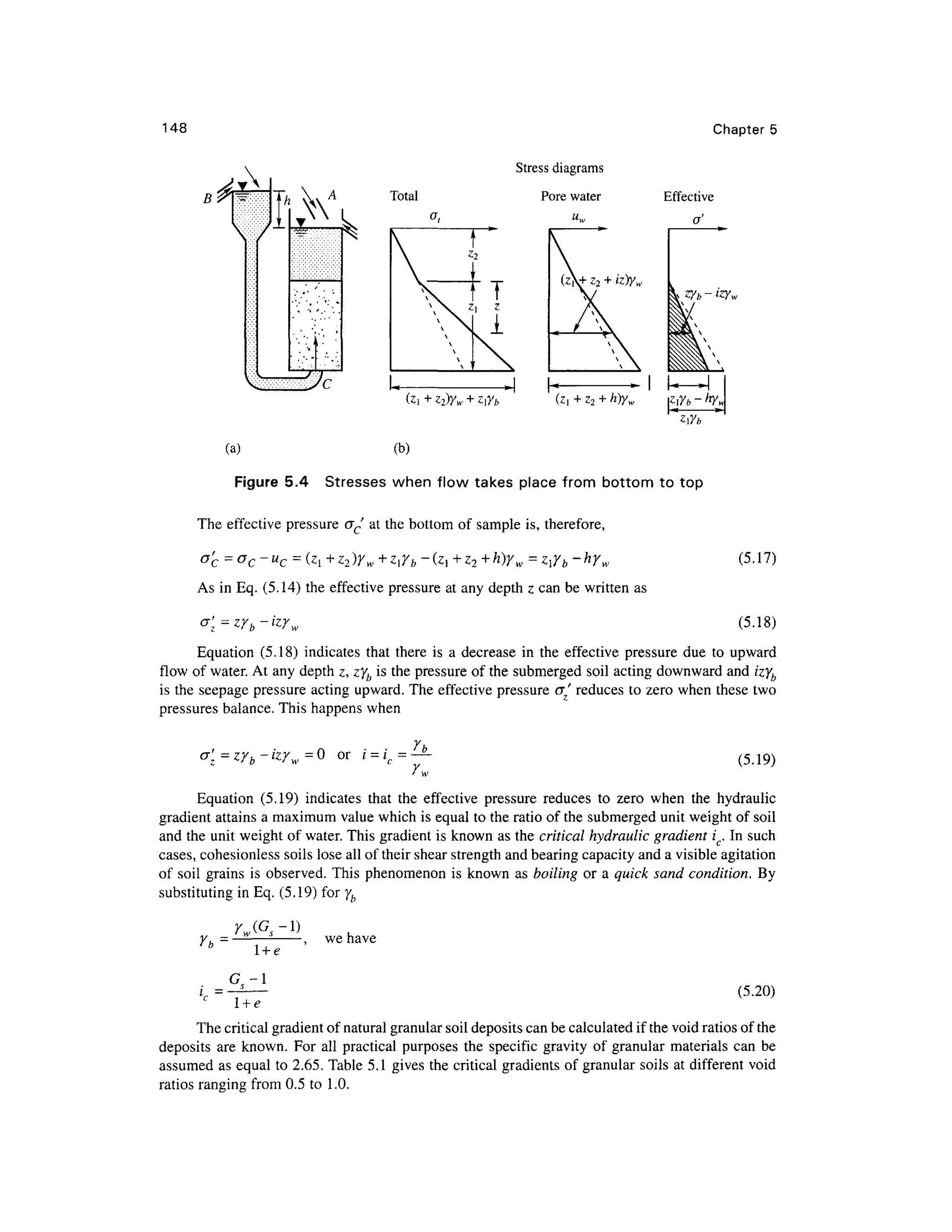

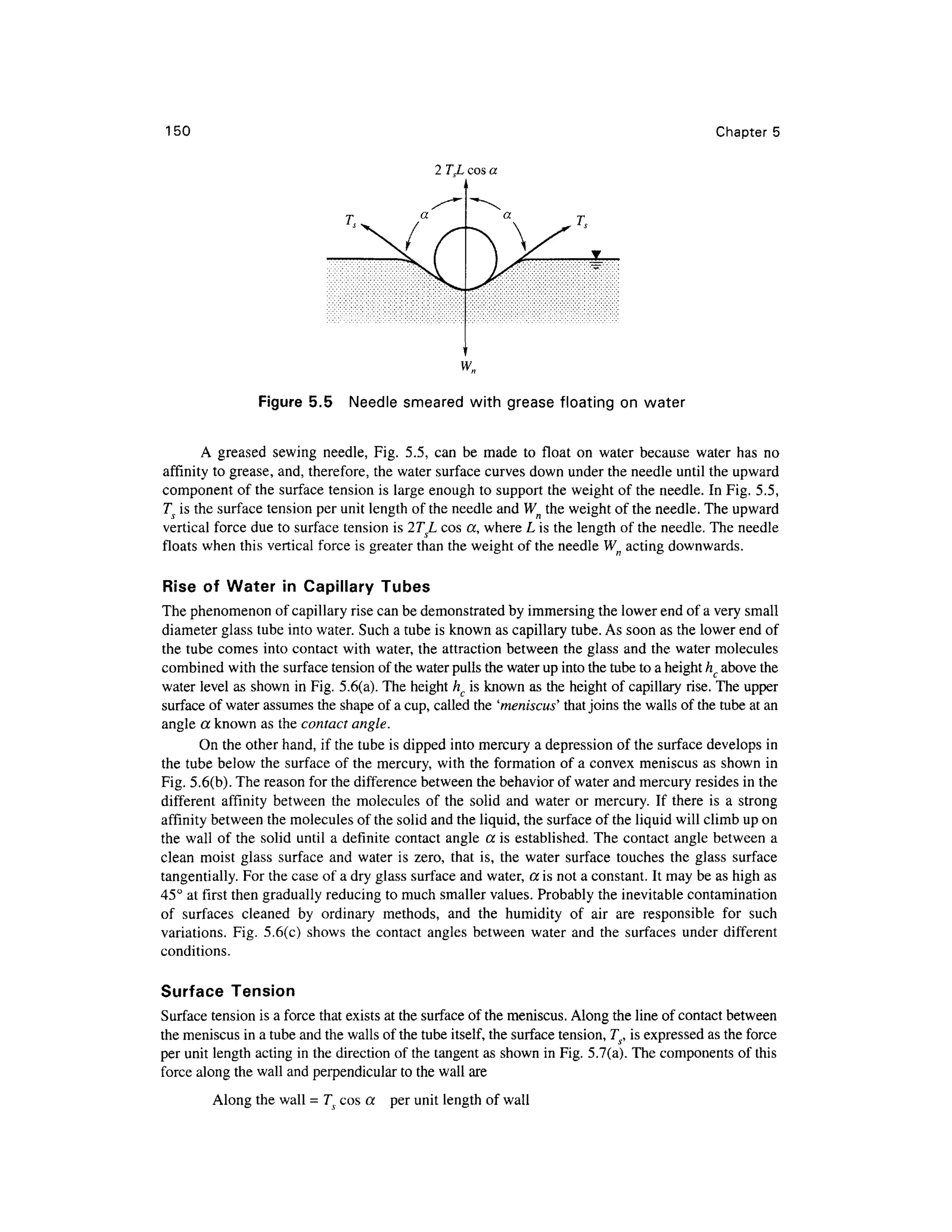


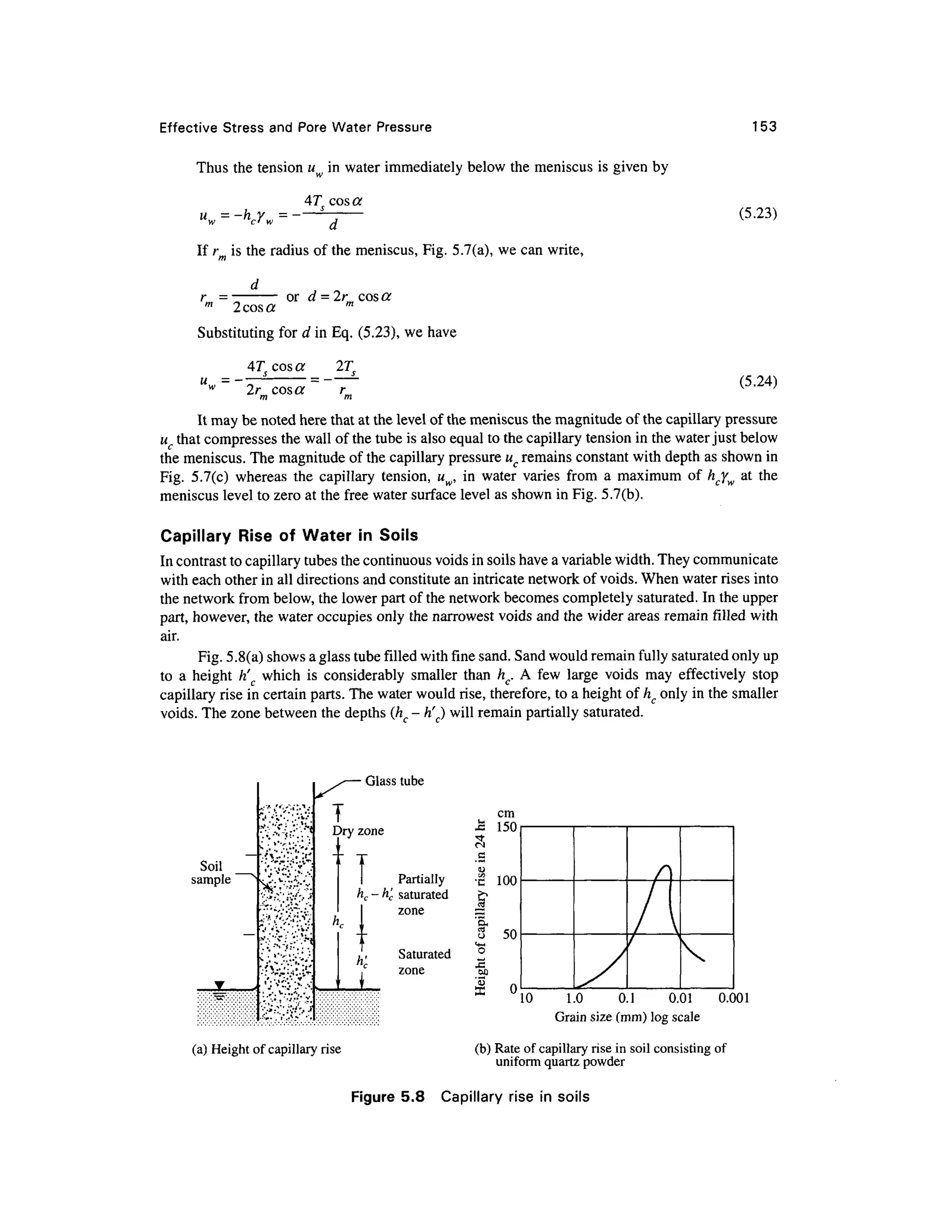

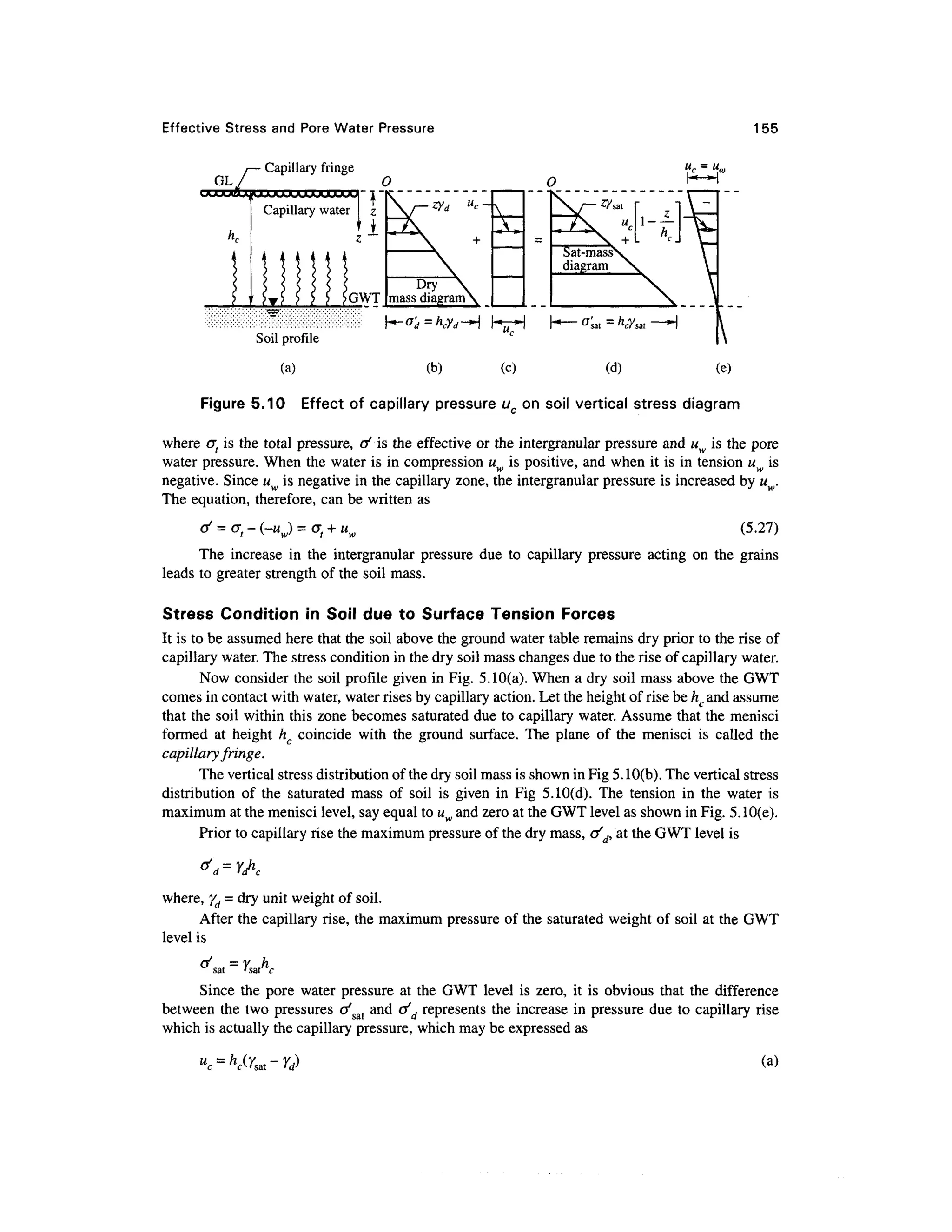
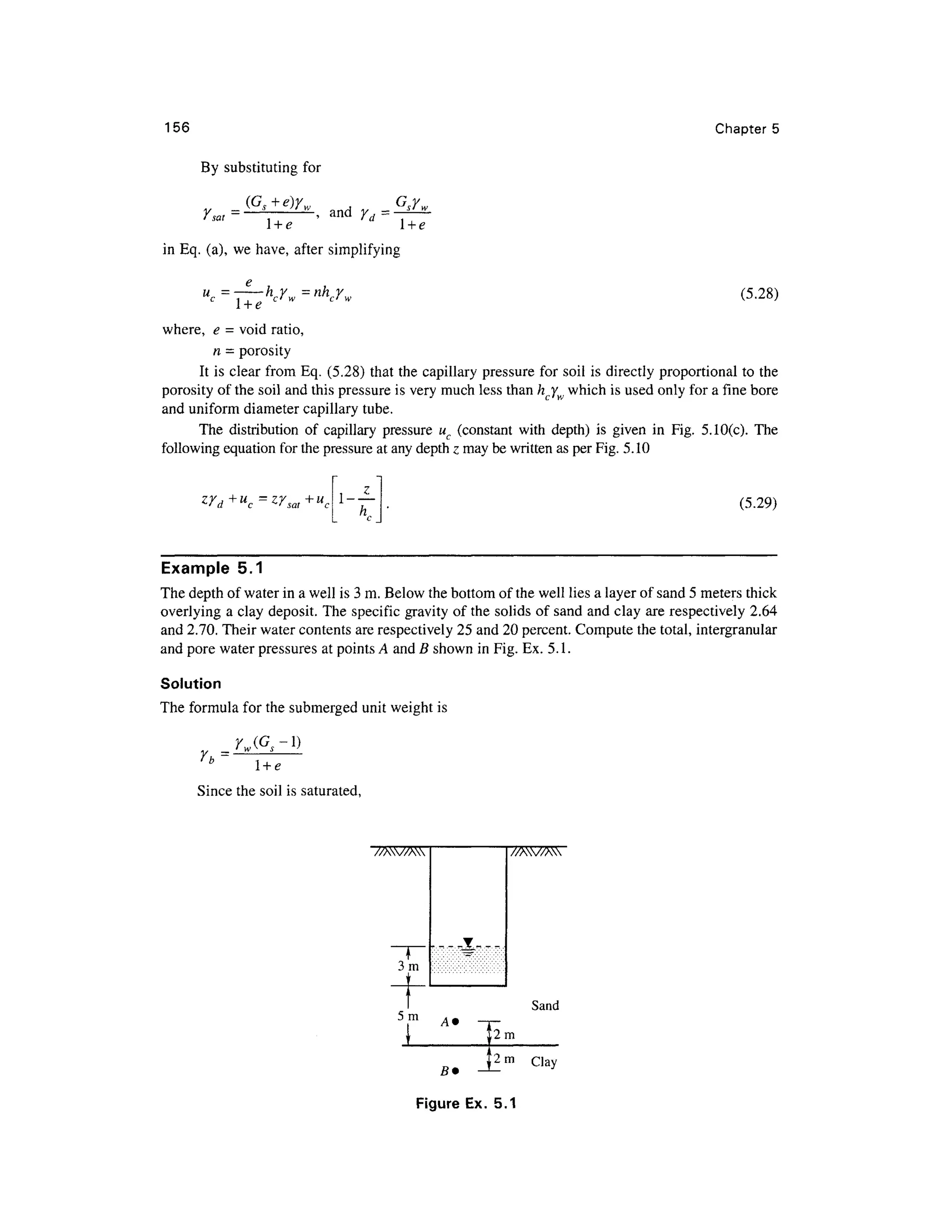


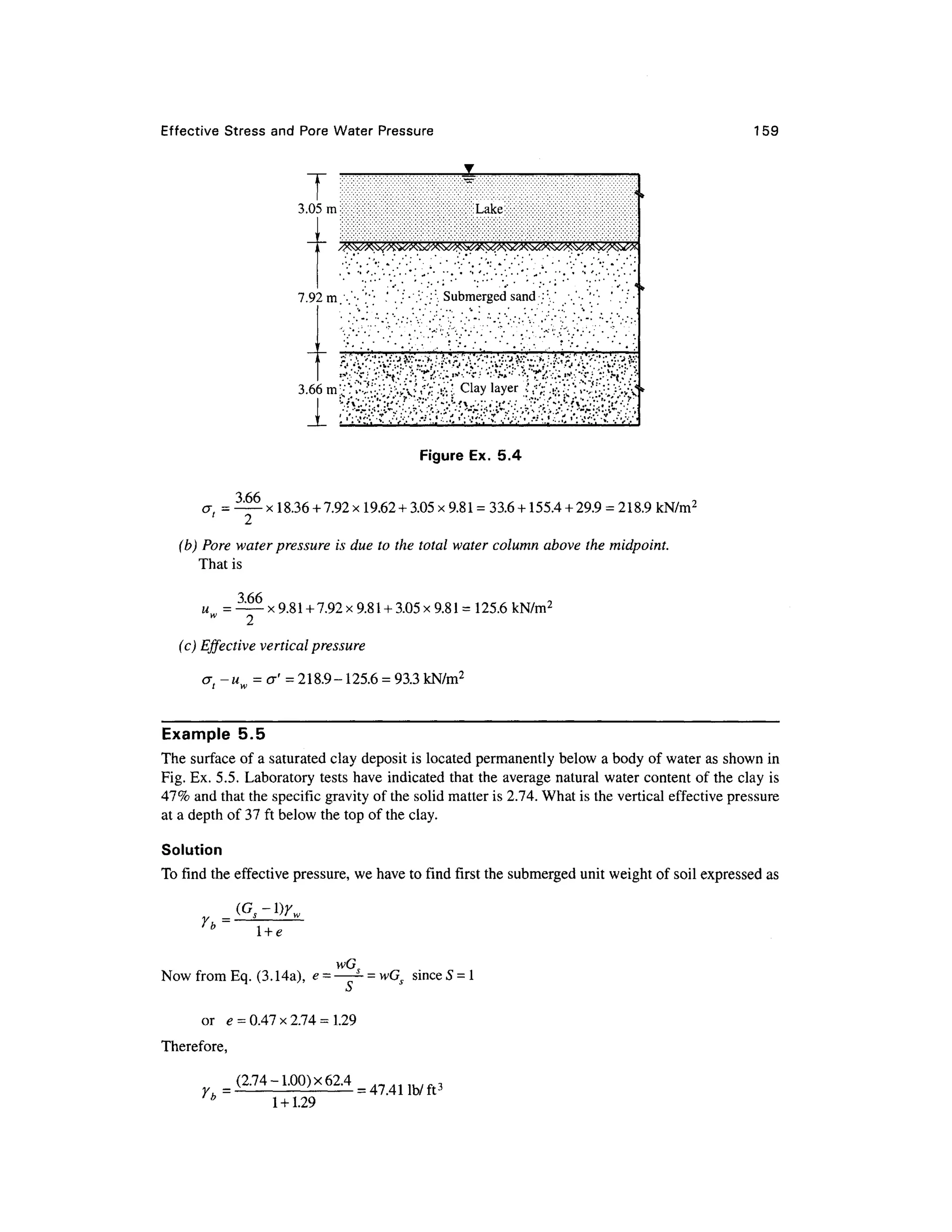













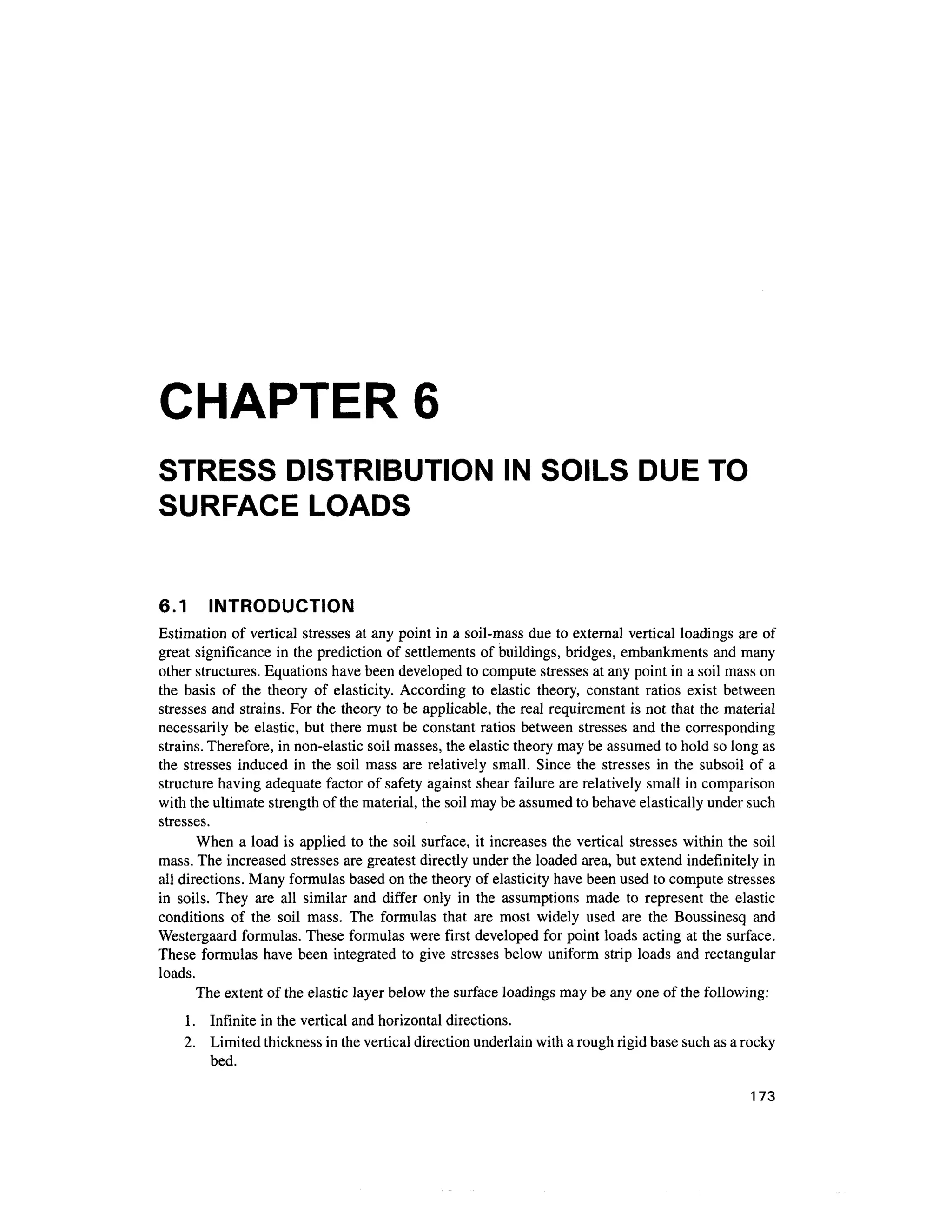

![Stress Distributio n in Soils du e to Surfac e Loads 175
that I B ha s a maximu m valu e o f 0.4 8 a t r/ z = 0, i.e. , indicatin g thereb y tha t th e stres s i s a
maximum below th e point load .
6.3 WESTERGAARD' S FORMUL A FO R POINT LOAD S
Boussinesq assume d tha t the soil is elastic, isotropic an d homogeneous for the development o f a
point loa d formula . However, th e soil i s neither isotropic no r homogeneous. Th e mos t commo n
type of soils that are met in nature are the water deposited sedimentary soils. When the soil particles
are deposited i n water, typical clay strata usually have their lenses of coarser materials within them.
The soil s o f thi s typ e ca n b e assume d a s laterall y reinforce d b y numerous , closel y spaced ,
horizontal sheets of negligible thickness but of infinite rigidity, which prevent the mass as a whole
from undergoing lateral movement of soil grains. Westergaard, a British Scientist, proposed (1938 )
a formula for the computation of vertical stress oz b y a point load, Q, at the surface as
cr, -'
Q
,3/2 2 M (6.2)
in whichfj, i s Poisson's ratio. Iffj, i s taken as zero for all practical purposes, Eq . (6.2) simplifies t o
Q 1 Q
[l +2(r/z)2
]3
'2 (6.3)
where /,, , =
(II a)
[l + 2(r/z)2
]3/2
is the Westergaard stres s coefficient . Th e variatio n o f / wit h the
ratios of (r/z) i s shown graphically in Fig. 6.2 along with the Boussinesq's coefficien t IB. The value
of Iw a t r/z = 0 is 0.32 which is less than that of IB by 33 per cent.
h or 7
w
0 0. 1 0. 2 0. 3 0. 4 0. 5
r/z 1. 5
2.5
Figure 6.2 Value s of IB or /^for use in the Boussines q o r Westergaard formul a](https://image.slidesharecdn.com/geotechbook-240326034957-6522ccd8/75/geotech-book-FOR-CIVIL-ENGINEERINGGG-pdf-194-2048.jpg)

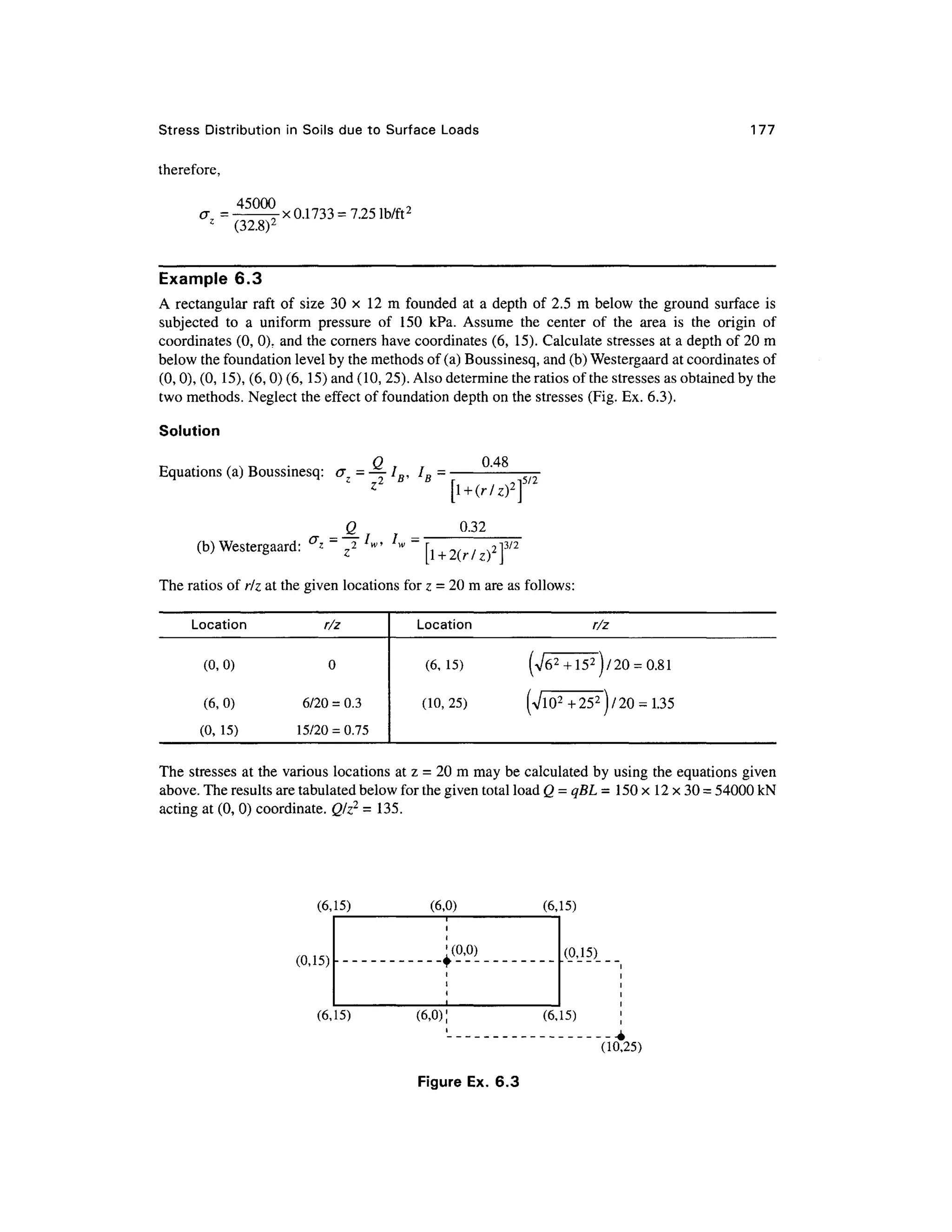
![178 Chapter 6
Location r/ z Boussinesq
I0 crJkPa )
Westergaard
w
a/a, w
(0,0)
(6,0)
(0, 15 )
(6,15)
(10, 25 )
0
0.3
0.75
0.81
1.35
0.48
0.39
0.16
0.14
0.036
65
53
22
19
5
0.32
0.25
0.10
0.09
0.03
43
34
14
12
4
1.51
1.56
1.57
1.58
1.25
6.4 LIN E LOAD S
The basi c equatio n use d fo r computin g a, at an y poin t P i n a n elasti c semi-infinit e mass i s
Eq. (6.1) of Boussinesq. By applyin g the principle of his theory, the stresse s a t any poin t in the
mass due to a line load of infinite extent acting at the surface may be obtained. The state of stress
encountered i n thi s cas e i s tha t o f a plan e strai n condition . Th e strai n a t an y poin t P i n th e
F-direction parallel to the line load is assumed equal to zero. The stress c r norma l to the XZ-plane
(Fig. 6.3) is the same at all sections and the shear stresses o n these sections ar e zero. By applying
the theor y o f elasticity , stresse s a t an y poin t P (Fig . 6.3 ) ma y b e obtaine d eithe r i n pola r
coordinates o r i n rectangula r coordinates. Th e vertica l stres s a a t poin t P ma y b e writte n in
rectangular coordinate s a s
a =
z [ 1 + U/z)2
]2
z z
where, / i s the influence factor equal to 0.637 at x/z - 0 .
(6.4)
r — i x•" • + z
cos fc) =
Figure 6.3 Stresse s due to vertica l lin e loa d i n rectangular coordinate s](https://image.slidesharecdn.com/geotechbook-240326034957-6522ccd8/75/geotech-book-FOR-CIVIL-ENGINEERINGGG-pdf-197-2048.jpg)
![Stress Distributio n in Soils du e to Surfac e Load s 179
6.5 STRI P LOAD S
The state of stress encountered i n this case also is that of a plane strain condition. Suc h conditions
are found fo r structures extended ver y much in one direction, suc h as strip and wall foundations,
foundations of retaining walls, embankments, dams and the like. For such structures the distribution
of stresses in any section (except for the end portions of 2 to 3 times the widths of the structures from
its end) will be the same as in the neighboring sections, provided that the load does no t change in
directions perpendicular to the plane considered.
Fig. 6.4(a ) shows a load q per unit area acting on a strip of infinite lengt h and of constant
width B. The vertical stress at any arbitrary point P due to a line load of qdx actin g at j c = x can be
written from Eq . (6.4) as
~
2q
n [(x-x) 2
+z2
]
(6.5)
Applying th e principl e o f superposition , th e tota l stres so~ z a t poin t P du e t o a stri p loa d
distributed over a width B(= 2b) may be written as
+b
[(x-x)2
+z2
}2 dx
or
-b
q , z
a = — tan" 1
1
n x-b
tan"
2bz(x2
-b2
-z2
)
x + b (6.6)
The non-dimensiona l value s o f cjjq ar e give n graphicall y i n Fig. 6.5 . Eq. (6.6 ) can b e
expressed i n a more convenient form as
=— [/?+sin/?cos(/?+2£)]
n
(6.7)
x O
(a) (b )
Figure 6.4 Stri p load](https://image.slidesharecdn.com/geotechbook-240326034957-6522ccd8/75/geotech-book-FOR-CIVIL-ENGINEERINGGG-pdf-198-2048.jpg)



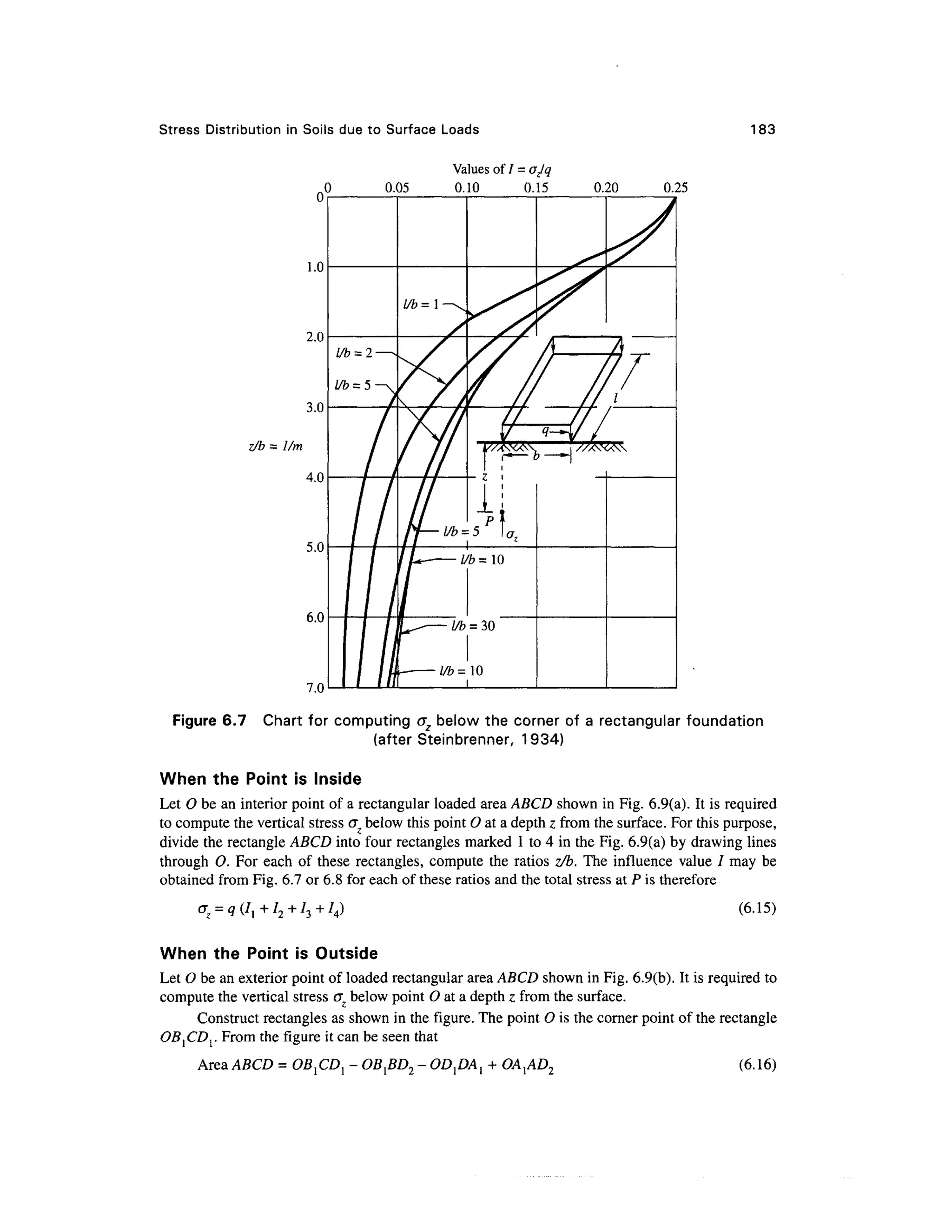

![Stress Distribution in Soils due to Surfac e Load s 18 5
The vertical stress a t point P located a t a depth z below poin t 0 du e to a surcharge q per
unit are a o f ABCD i s equa l t o the algebrai c su m o f the vertica l stresse s produce d b y loadin g
each one of the areas liste d on the right hand side of the Eq. (6.16) with q per unit of area. If /j
to /4 are the influence factors of each of these areas, th e total vertica l stres s is
(6.17)
Example 6. 5
ABCD i s a raf t foundatio n o f a multi-stor y building [Fig . 6 . 9(b) ] wherei n AB = 65.6 ft , an d
BC = 39.6 ft. The uniformly distributed load q over the raft is 73 10 lb/ft2
. Determine crz at a depth of
19.7 ft below point O [Fig. 6.9(b)] wherein AA, = 13.12 ft and A,0 = 19.68 ft. Use Fig. 6.8 .
Solution
Rectangles are constructed as shown in [Fig. 6.9(b)].
Area ABCD = OB}CDl - OB }BD2 - OD 1DA1 + OA1AD2
Rectangle
OB1CD1
OB1BD2
OD1DA1
OA{AD2
I
(ft)
85.28
85.28
52.72
19.68
b
(ft)
52.72
13.12
19.68
13.12
m
2.67
0.67
1.00
0.67
n
4.33
4.33
2.67
1.00
7
0.245
0.168
0.194
0.145
Per Eq. (6.17)
oz = q (/! - /2 - /3 + /4) =7310 (0.24 5 - 0.168 - 0.194 + 0.145) = 204.67 lb/ft2
The same value can be obtained using Fig. 6.7 .
Example 6. 6
A rectangula r raf t o f siz e 3 0 x 1 2 m founde d on th e groun d surface i s subjecte d t o a uniform
pressure of 150 kN/m2
. Assume the center of the area as the origin of coordinates (0,0), and corners
with coordinates (6 , 15) . Calculate the induced stress a t a depth of 20 m by the exact method at
location (0, 0).
Solution
Divide the rectangle 1 2 x 30 m into four equal parts of size 6 x 15m.
The stres s belo w th e corne r o f eac h footin g ma y b e calculate d b y usin g chart s give n in
Fig. 6.7 or Fig. 6.8. Here Fig. 6.7 is used.
For a rectangle 6 x 1 5 m, z Ib = 20/6 = 3.34, l/b = 15/6 = 2.5.
For z/b = 3.34, l/b = 2.5,< r Iq = 0.07
Therefore, o ; = 4cr = 4 x 0.01 q= 4 x 0.07 x 15 0 =42 kN/m2
.](https://image.slidesharecdn.com/geotechbook-240326034957-6522ccd8/75/geotech-book-FOR-CIVIL-ENGINEERINGGG-pdf-204-2048.jpg)
![186 Chapter 6
6.7 STRESSE S UNDE R UNIFORML Y LOADE D CIRCULA R FOOTIN G
Stresses Along the Vertica l Axis of Symmetry
Figure 6.1 0 show s a pla n an d sectio n o f th e loade d circula r footing . The stres s require d t o b e
determined a t any point P along the axis is the vertical stress cr,.
Let dA be an elementary area considered as shown in Fig. 6.10. dQ may be considered as the
point load acting on this area which is equal to q dA. We may write
(6.18)
The vertical stress d(J a t point P due to point load dQ may be expressed [Eq . (6. la)] as
3q
(6.19)
The integral form of the equation for the entire circular area may be written as
0=0 r= 0
3qz3
( f rdOdr
~^~ J J ( r 2 + z 2 ) 5 ,
0=0 r= 0
,3
On integration we have, (6.20)
o
R z
P
Figure 6.10 Vertica l stress unde r uniforml y loade d circular footin g](https://image.slidesharecdn.com/geotechbook-240326034957-6522ccd8/75/geotech-book-FOR-CIVIL-ENGINEERINGGG-pdf-205-2048.jpg)


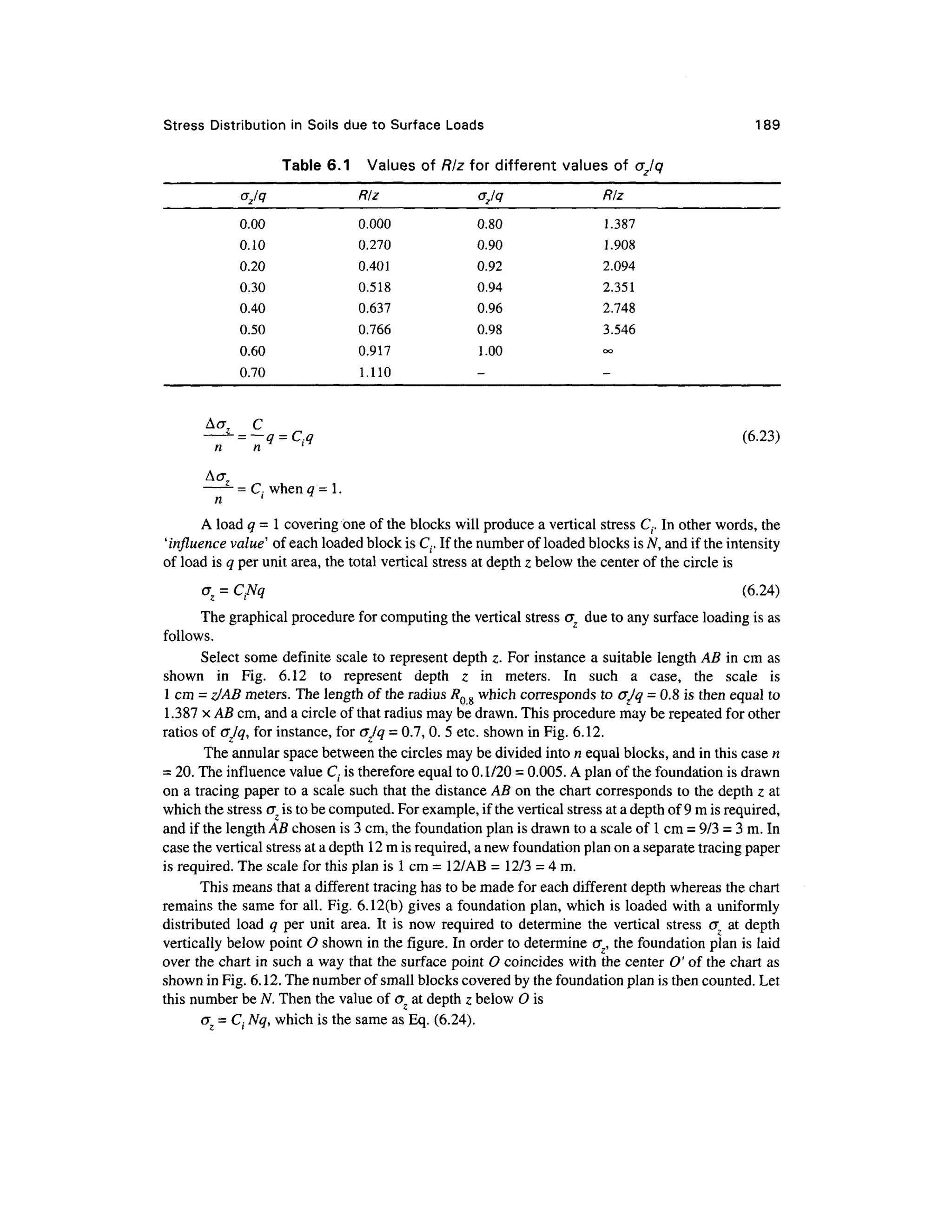
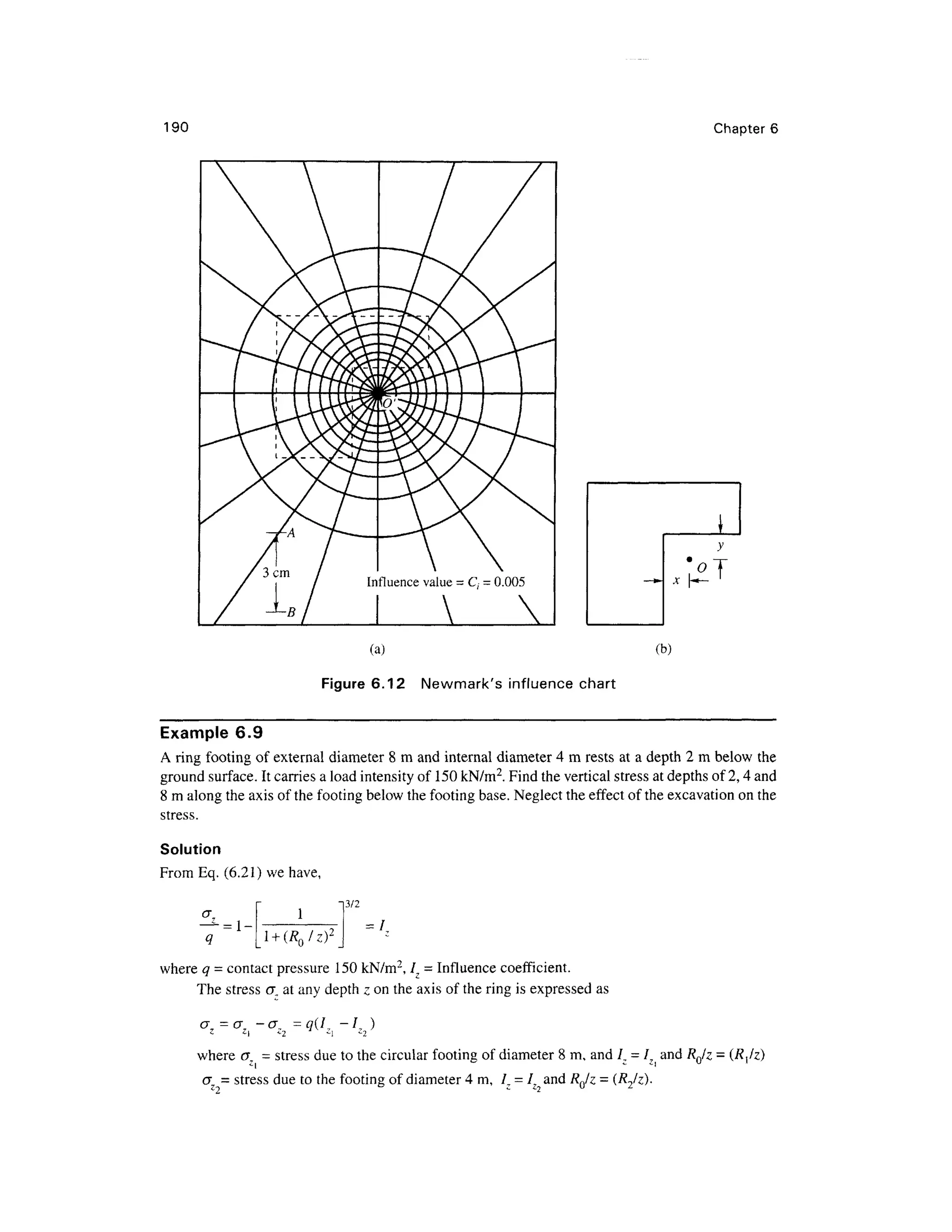

![192 Chapter s
Linearly Increasin g Vertical Loadin g
Fig. 6.13(a ) shows a linearly increasing vertica l loadin g startin g fro m zero at A to a finite value q
per unit length at B. Consider a n elementary stri p of width db at a distance b from A. The load per
unit length may be written as
dq - (q/d) b db
Ifdq i s considered a s a line load on the surface, th e vertica l stres s dcr, at P [Fig . 6 . 1 3(a)]
due t o d q ma y b e writte n fro m Eq . (6.4 ) a s
dcr,=— —
'
Therefore,
er
b=a
2q
[(x-,
/ 9
on integration, o - = 77" ~~ a-sm20 = 07 (6.25 )
z
2/T a y z
where 7 i s non-dimensional coefficien t whose value s for various values of xla and zla are given in
Table 6.2 .
If th e point P lies in the plane BC [Fig. 6.13(a)], then j 8 = 0 at jc = a. Eq. (6.25) reduces to
vz=-(a) (6.26 )
<• n
Figs. 6.13(b ) an d (c ) sho w th e distributio n of stres s e r o n vertica l an d horizonta l section s
under th e actio n o f a triangular loadin g a s a function of q. The maximu m vertica l stres s occur s
below th e center of gravity of the triangular load as shown in Fig. 6.13(c) .
Vertical Stres s Du e to Embankmen t Loadin g
Many time s i t ma y b e necessar y t o determin e th e vertica l stres s e r beneat h roa d an d railwa y
embankments, an d als o beneat h eart h dams . Th e vertica l stres s beneat h embankment s ma y b e
Table 6. 2 / fo r triangula r loa d (Eq . 6.25 )
x/a
-1.500
-1.00
0.00
0.50
0.75
1.00
1.50
2.00
2.50
0.00
0.00
0.00
0.00
0.50
0.75
0.50
0.00
0.00
0.00
0.5
0.002
0.003
0.127
0.410
0.477
0.353
0.056
0.017
0.003
1.0
0.014
0.025
0.159
0.275
0.279
0.241
0.129
0.045
0.013
2/fl
1.5
0.020
0.048
0.145
0.200
0.202
0.185
0.124
0.062
0.041
2
0.033
0.061
0.127
0.155
0.163
0.153
0.108
0.069
0.050
4
0.051
0.060
0.075
0.085
0.082
0.075
0.073
0.060
0.049
6
0.041
0.041
0.051
0.053
0.053
0.053
0.050
0.050
0.045](https://image.slidesharecdn.com/geotechbook-240326034957-6522ccd8/75/geotech-book-FOR-CIVIL-ENGINEERINGGG-pdf-211-2048.jpg)

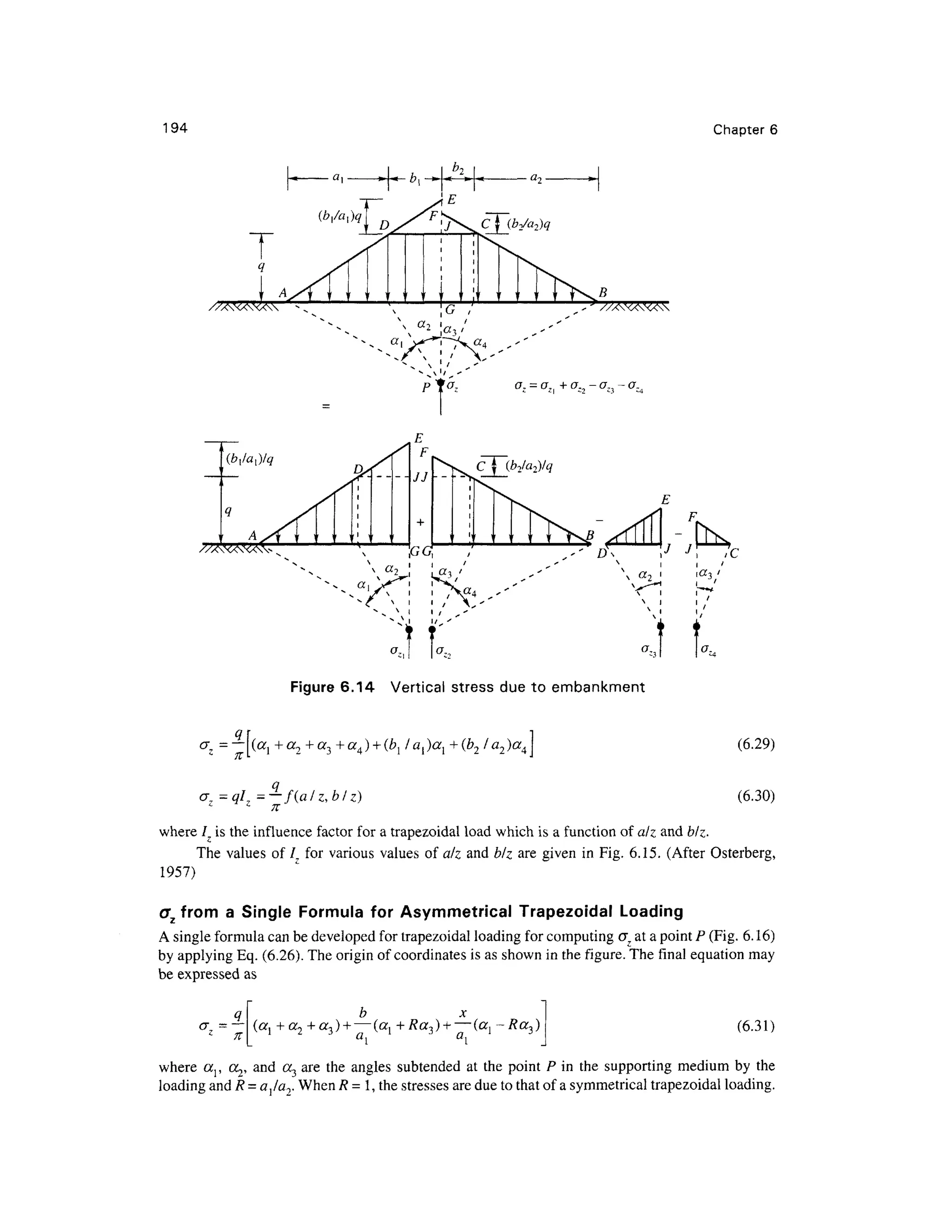

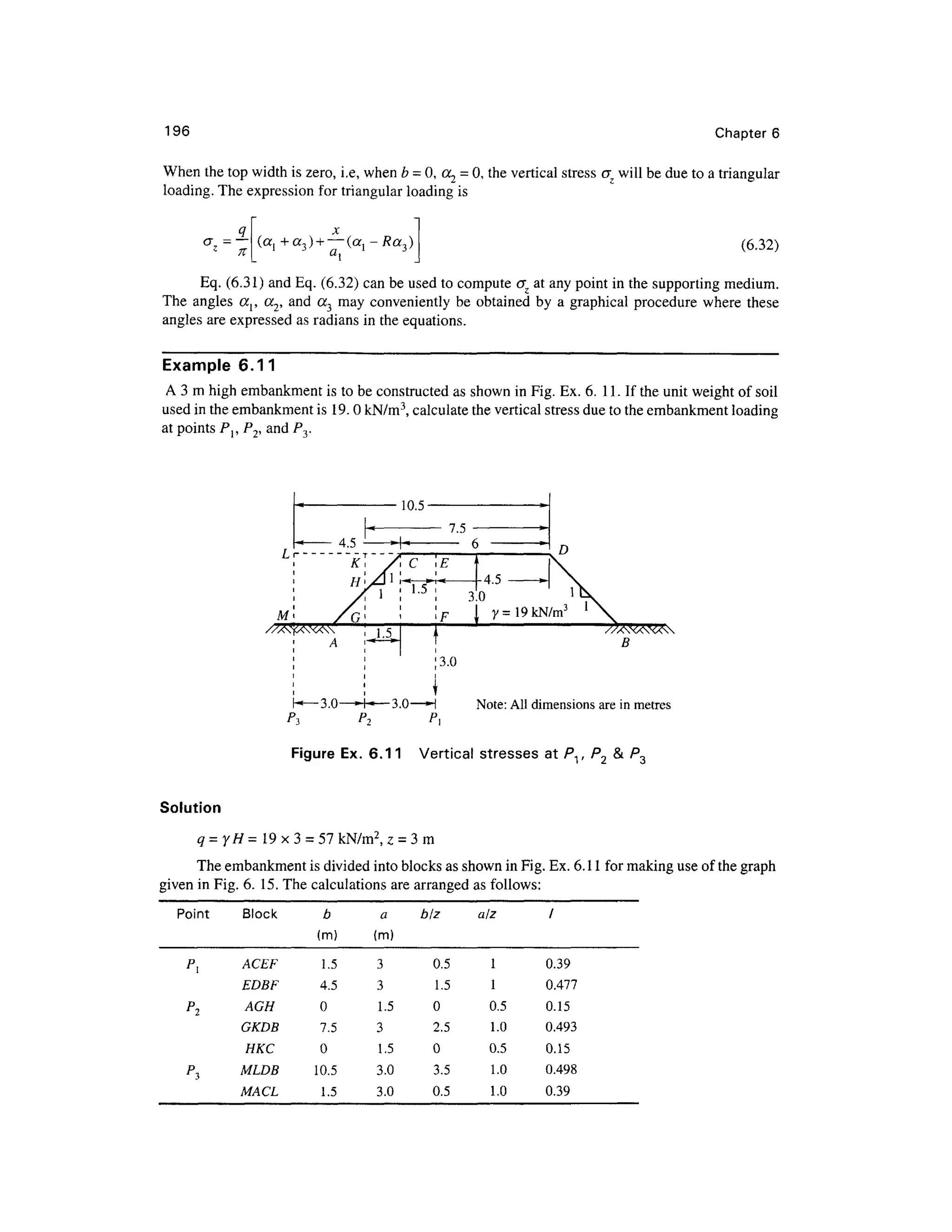


![Stress Distributio n in Soils due to Surfac e Loads 199
Lines of
equal vertical
pressure or
isobars
Figure 6.19 Bul b o f pressure
Significant Dept h
In hi s openin g discussio n o n
settlement o f structure s a t th e
First Internationa l Conferenc e
on Soi l Mechanic s an d
Foundation Engineering (held in
1936 a t Harvar d Universit y i n
Cambridge, Mass , USA) ,
Terzaghi stresse d th e
importance o f th e bul b o f
pressure an d it s relationshi p
with th e sea t o f settlement . As
stated earlie r w e may dra w any
number of isobars fo r any given
load system , but the on e tha t is
of practica l significanc e i s th e
one which encloses a soil mass which is responsible for the settlement of the structure. The depth of
this stressed zone may be termed as the significant depth DS which is responsible for the settlement
of the structure. Terzaghi recommended that for all practical purposes one can take a stress contour
which represents 20 per cent of the foundation contact pressure q, i.e, equal to Q.2q. The depth of
such an isobar can be taken as the significant depth Ds which represents the seat of settlement for
the foundation. Terzaghi's recommendation wa s based o n his observation that direct stresse s are
considered o f negligible magnitude when they are smaller than 20 per cent of the intensity of the
applied stress from structural loading, and that most of the settlement, approximately 80 per cent of
the total, takes place at a depth less than Ds. The depth Ds is approximately equal to 1. 5 times the
width of square or circular footings [Fig. 6.20(a)].
If several loaded footing s are spaced closely enough, the individual isobars of each footing
in questio n woul d combin e an d merg e int o on e larg e isoba r o f the_intensit y a s show n i n
[Fig. 6.20(b)]. The combined significan t dept h D i s equal to about 1. 5 B .
az = Q.2q
D<=.5B Stresse d zone
Isobar
(a) Significant depth of stressed zone
for single footing
Isobar
Combined stressed zone
(b) Effect o f closely placed footings
Figure 6.2 0 Significan t dept h o f stressed zon e](https://image.slidesharecdn.com/geotechbook-240326034957-6522ccd8/75/geotech-book-FOR-CIVIL-ENGINEERINGGG-pdf-218-2048.jpg)







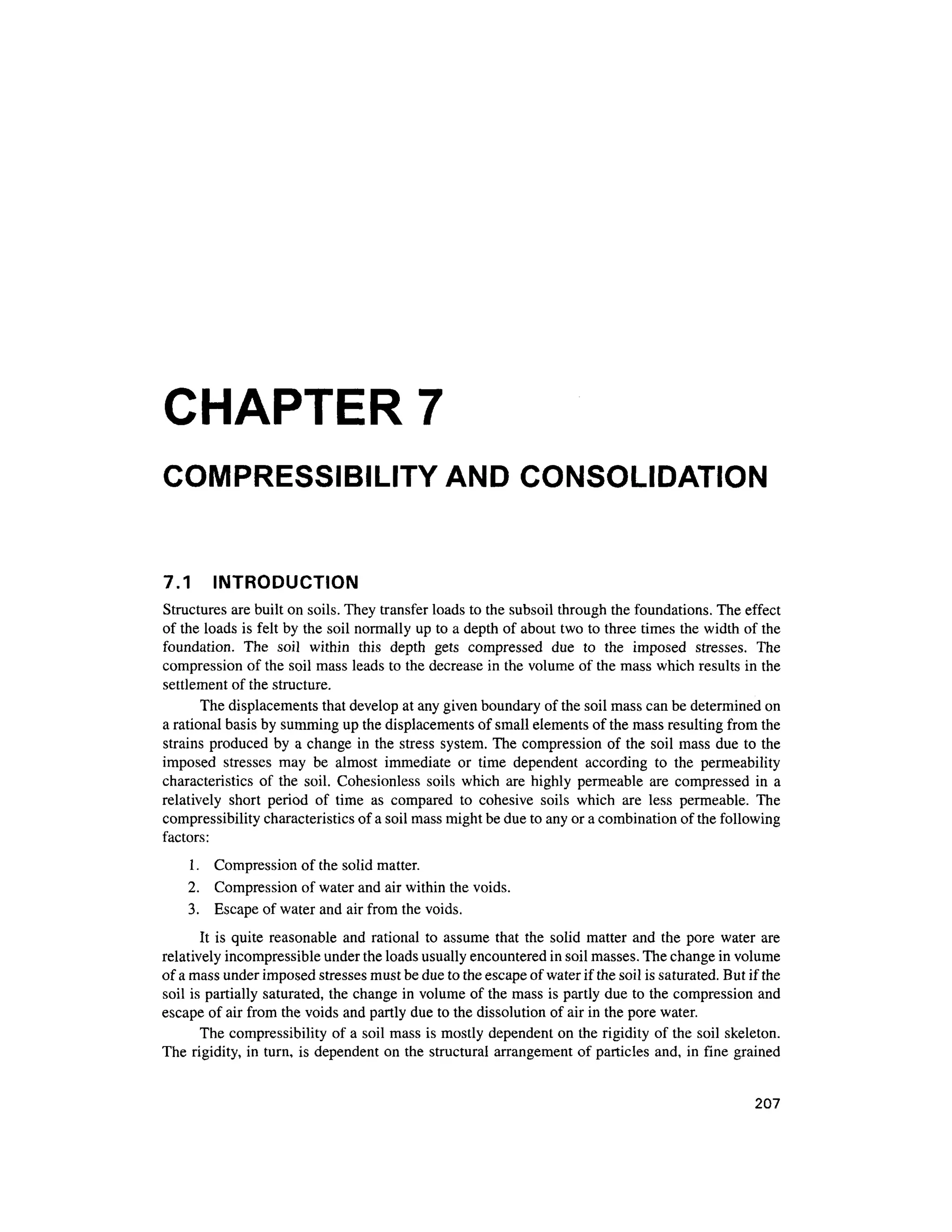







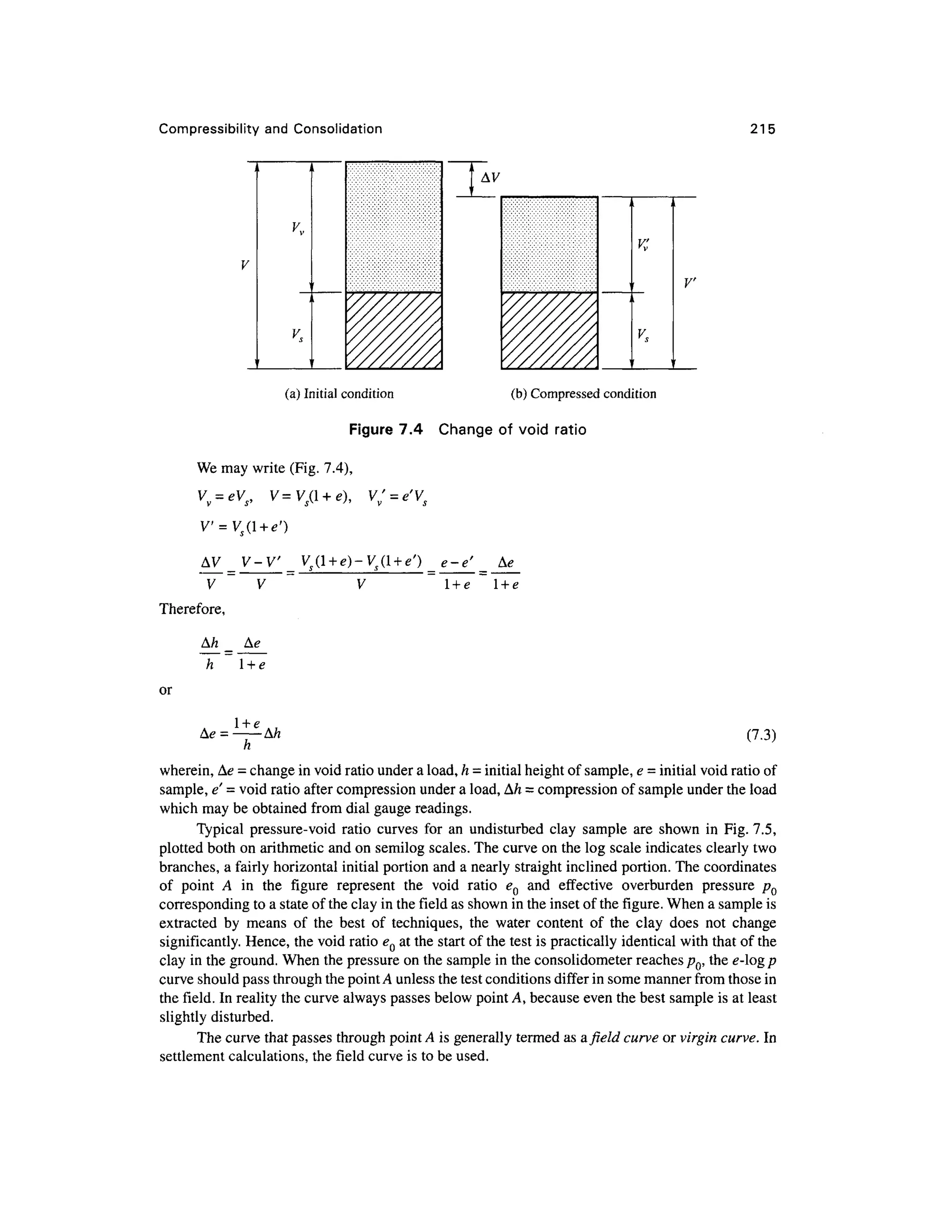

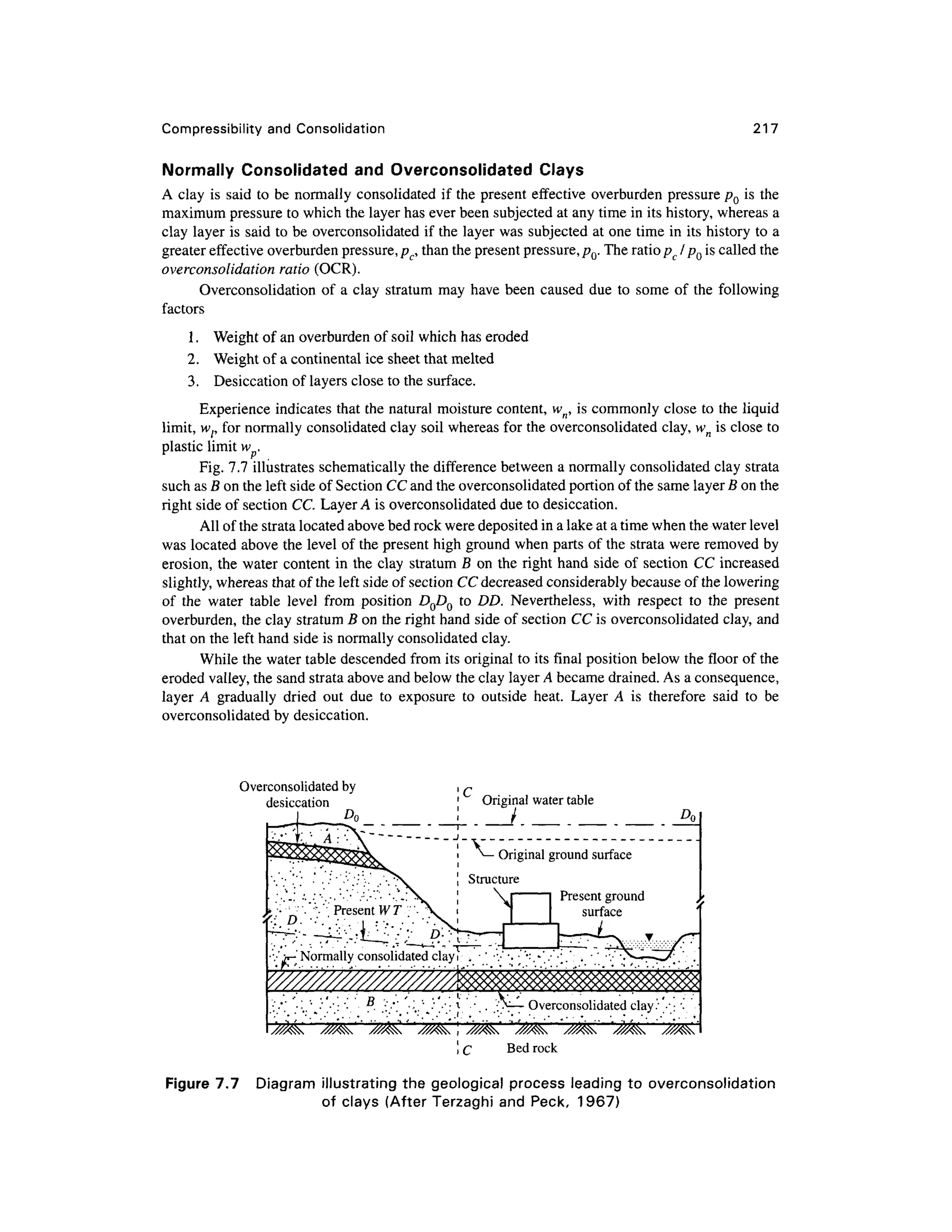
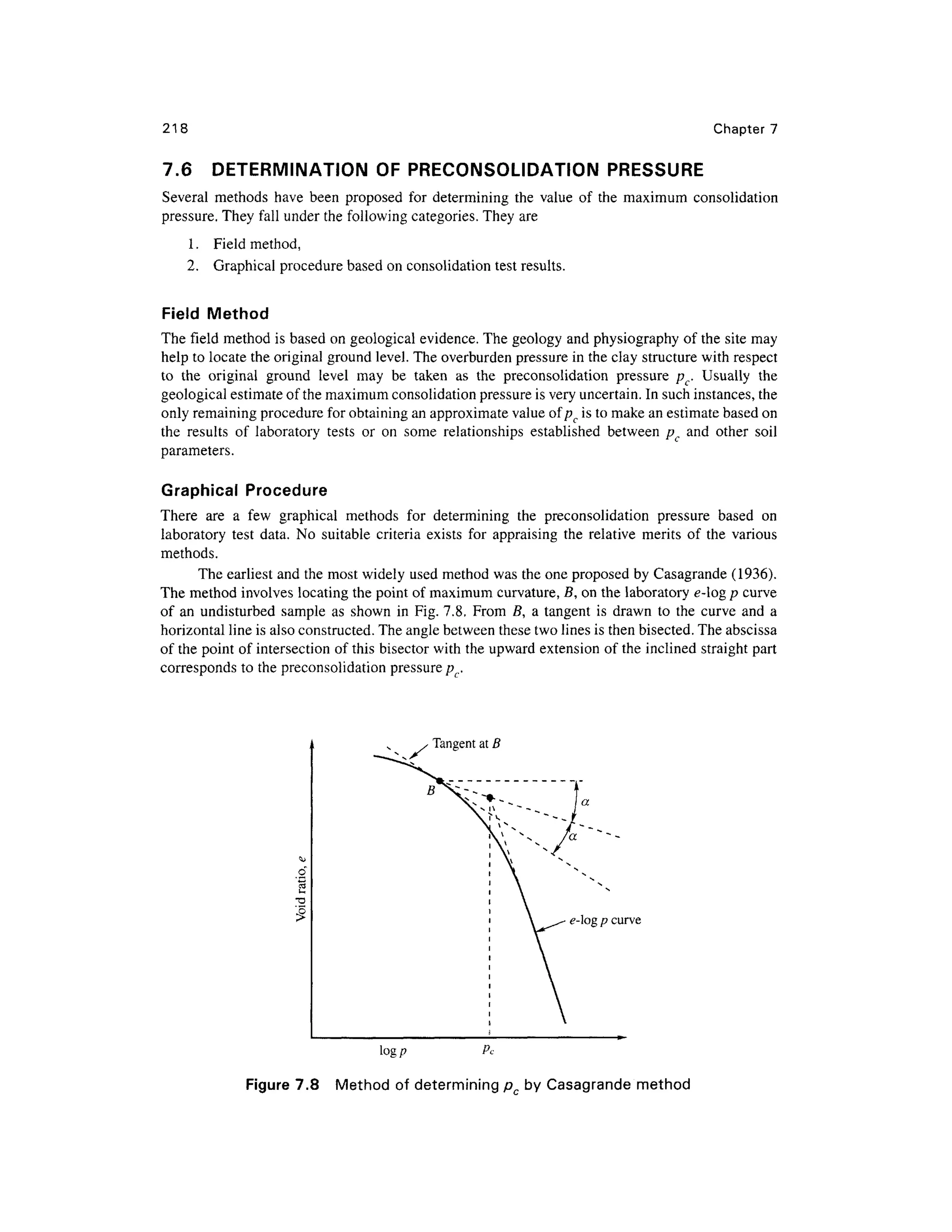
![Compressibility an d Consolidation 21 9
7.7 e-log p FIEL D CURVE S FO R NORMALLY CONSOLIDATE D AN D
OVERCONSOLIDATED CLAYS O F LOW TO MEDIU M SENSITIVIT Y
It has been explaine d earlie r wit h reference t o Fig. 7.5, tha t the laborator y e-lo g p curv e of an
undisturbed sample does not pass through point A and always passes below the point. It has been
found fro m investigatio n tha t th e incline d straigh t portio n o f e-log p curve s o f undisturbe d or
remolded sample s of clay soil intersect a t one point at a low void ratio and corresponds t o 0.4eQ
shown as point C in Fig. 7.9 (Schmertmann, 1955). It is logical to assume the field curve labelled as
Kf shoul d als o pas s throug h thi s point . Th e fiel d curv e ca n b e draw n fro m poin t A, havin g
coordinates (e Q, /?0), which corresponds t o the in-situ condition of the soil. The straight line AC in
Fig. 7.9(a) gives the field curve AT,for normally consolidated clay soil of low sensitivity.
The field curve for overconsolidated cla y soil consists of two straight lines, represented by
AB and BC in Fig. 7.9(b). Schmertmann (1955) has shown that the initial section AB of the field
curve is parallel to the mean slope MNof th e rebound laboratory curve. Point B is the intersection
point of the vertical line passing through the preconsolidation pressure pc on the abscissa an d the
sloping line AB. Sinc e point C is the intersection of the laboratory compressio n curv e and the
horizontal line at void ratio 0.4eQ, line BC can be drawn. The slope of line MN whic h i s the slope
of the rebound curve is called the swell index Cs.
Clay o f Hig h Sensitivit y
If th e sensitivit y St i s greate r tha n abou t 8 [sensitivit y is define d a s th e rati o o f unconfme d
compressive strengths of undisturbed and remolded soi l samples refer to Eq. (3.50)], then the clay
is said to be highly sensitive. The natural water contents of such clay are more than the liquid
limits. Th e e-log p curv e K u fo r a n undisturbe d sampl e o f suc h a clay wil l hav e th e initia l
branch almost flat as shown in Fig. 7.9(c) , and after this it drops abruptly into a steep segment
indicating there b y a structural breakdown o f the clay suc h that a slight increase of pressur e
leads t o a large decrease in void ratio. The curve then passes through a point of inflection a t d
and its slope decreases . If a tangent is drawn at the point of inflection d, it intersects th e line
eQA a t b . The pressur e correspondin g t o b (p b) i s approximatel y equa l t o tha t a t whic h th e
structural breakdown take s place . I n areas underlain by soft highl y sensitive clays, the exces s
pressure Ap over the layer should be limited to a fraction of the difference of pressure (pt-p0).
Soil o f this type belongs mostl y to volcanic regions .
7.8 COMPUTATIO N O F CONSOLIDATION SETTLEMEN T
Settlement Equation s for Normall y Consolidate d Clays
For computin g th e ultimat e settlemen t o f a structur e founde d o n cla y th e followin g dat a ar e
required
1. Th e thickness of the clay stratum, H
2. Th e initial void ratio, eQ
3. Th e consolidation pressur e pQ or pc
4. Th e field consolidation curve K,
The slope of the field curve K.on a semilogarithmic diagram is designated a s the compression
index Cc (Fig. 7.9 )
The equation for Cc may be written as
C e
°~e e
°~e A g
Iogp-logp0 logp/ Po logp/p Q
(7
'4)](https://image.slidesharecdn.com/geotechbook-240326034957-6522ccd8/75/geotech-book-FOR-CIVIL-ENGINEERINGGG-pdf-238-2048.jpg)

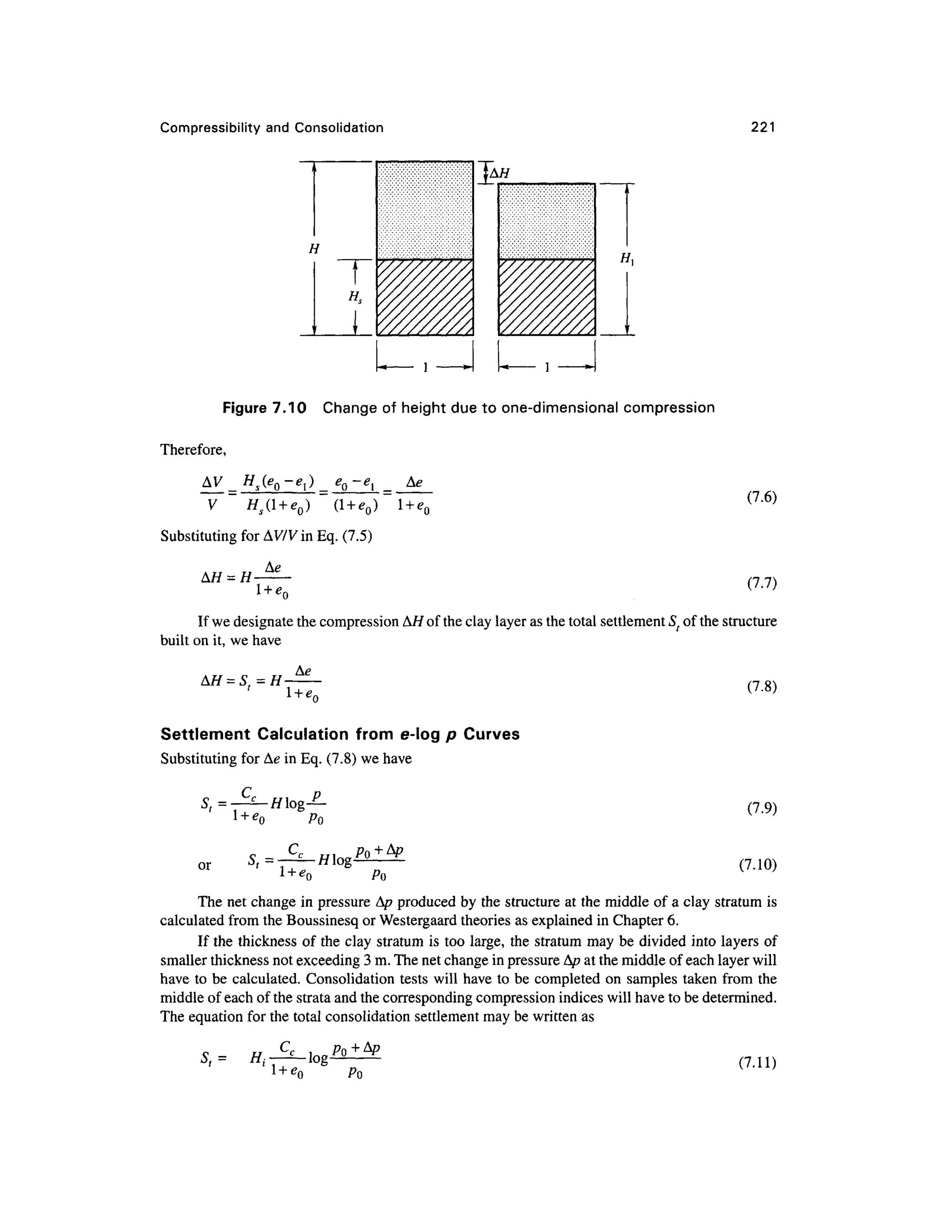
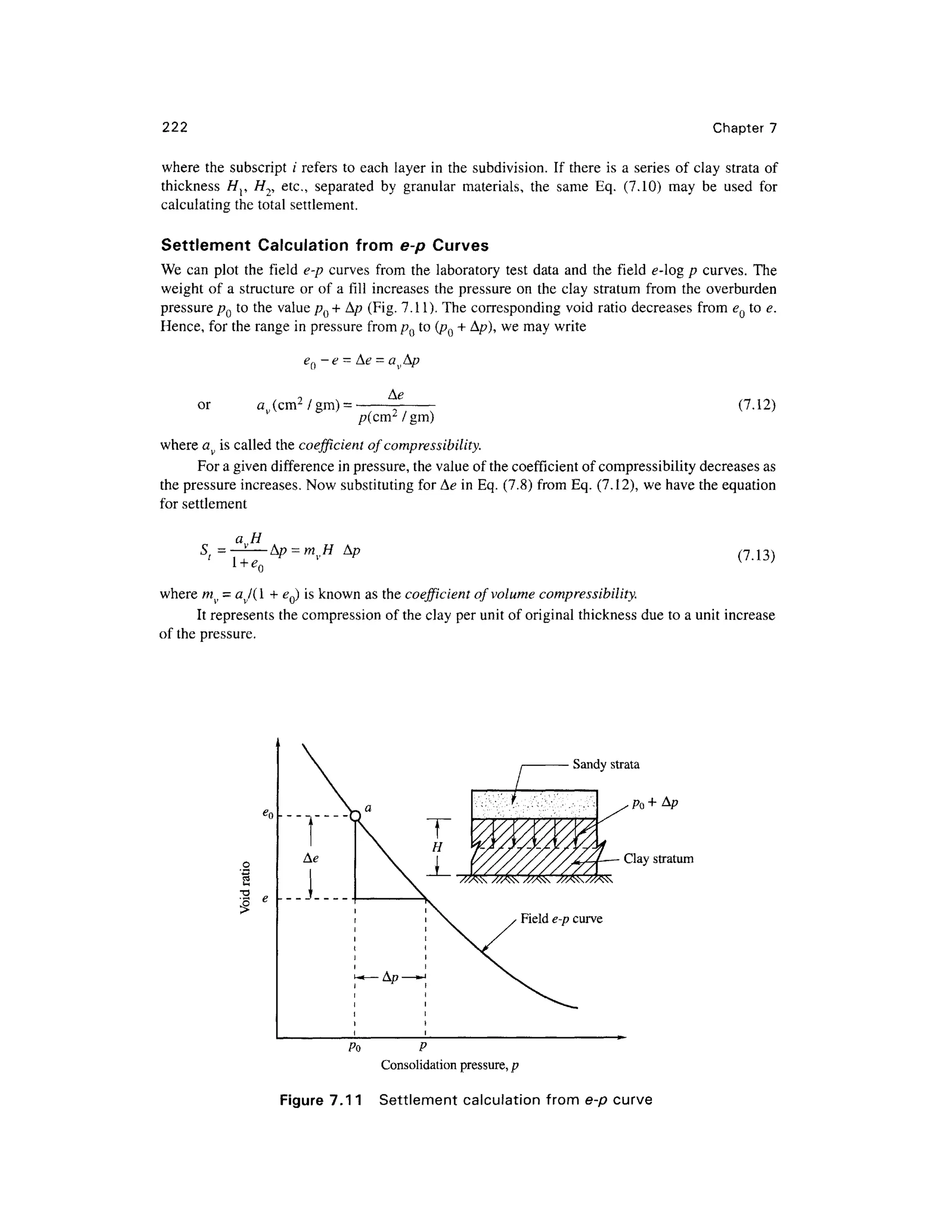
![Compressibility and Consolidation 22 3
Settlement Calculatio n from e-log p Curv e fo r Overconsolidate d Cla y Soi l
Fig. 7.9(b) gives the field curve Kffor preconsolidate d clay soil. The settlement calculation depends
upon the excess foundation pressure Ap over and above the existing overburden pressure pQ.
Settlement Computation , i f pQ + A/0 < pc (Fig . 7.9(b))
In such a case, us e the sloping line AB. If Cs = slope of this line (also called the swell index), we
have
a
c =
log(p
o+Ap)
(7.14a )
Po
or A * = C, log
^ (7.14b )
By substituting for A< ? in Eq. (7.8) , we have
(7.15a)
Settlement Computation , if p0 < pc < p0 + Ap
We may write from Fig. 7.9(b)
Pc
(715b)
In this case the slope of both the lines AB and EC in Fig. 7.9(b) are required to be considered.
Now the equation for St may be written as [from Eq. (7.8) and Eq. (7.15b)]
CSH p c C CH
log— + — -—log
* Pc
The swell index Cs « 1/ 5 to 1/10 Cc can be used as a check.
Nagaraj an d Murthy (1985) have proposed the following equation for Cs as
C = 0.046 3 -^ - G
100 s
where wl = liquid limit, Gs = specific gravity of solids.
Compression Inde x C c — Empirica
l Relationship s
Research workers in different part s of the world have established empirica l relationships between
the compression index C and other soil parameters. A few of the important relationships are given
below.
Skempton's Formul a
Skempton (1944) established a relationship between C, and liquid limits for remolded clay s as
Cc = 0.007 (wl - 10 ) (7.16 )
where wl is in percent.](https://image.slidesharecdn.com/geotechbook-240326034957-6522ccd8/75/geotech-book-FOR-CIVIL-ENGINEERINGGG-pdf-242-2048.jpg)

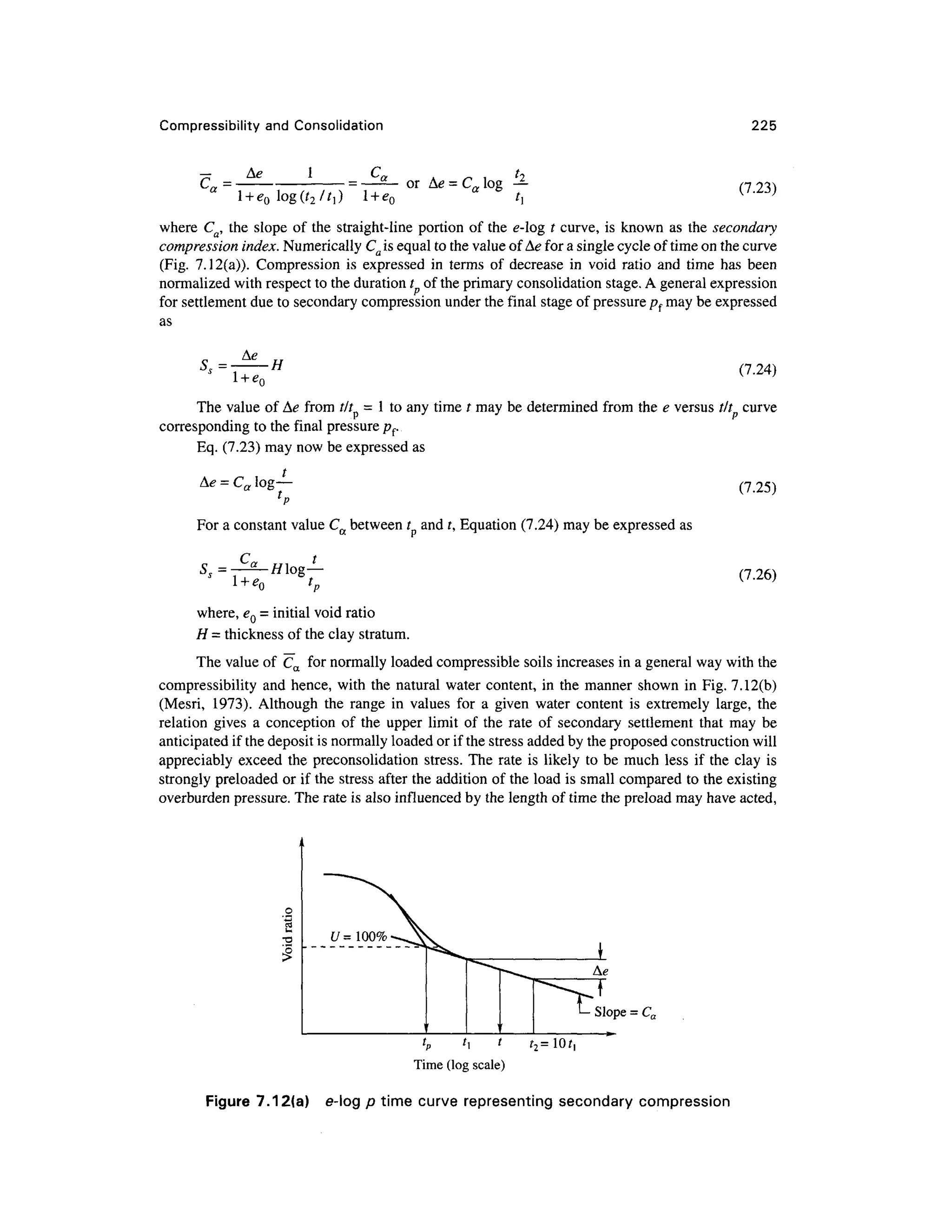



![Compressibility and Consolidation 22 9
Solution
Per Eq. (7.7), the compression of the fill may be calculated as
where AH = the compression, Ae = change in void ratio, eQ = initial void ratio, HQ = thickness of fill.
Substituting, A/ f = L0
~0
-8
x 32.8 = 3.28 ft .
Example 7. 3
A stratum of normally consolidated clay 7 m thick is located a t a depth 12 m below ground level.
The natura l moisture content of the clay is 40.5 pe r cent and its liquid limit is 48 per cent. The
specific gravity of the solid particles is 2.76. The water table is located at a depth 5 m below ground
surface. The soil is sand above the clay stratum. The submerged unit weight of the sand is 1 1 kN/m3
and the same weighs 1 8 kN/m3
above the water table. The average increase in pressure at the center
of the clay stratum is 120 kN/m2
due to the weight of a building that will be constructed on the sand
above the clay stratum. Estimate the expected settlemen t of the structure.
Solution
1 .Determinatio n of e and yb for the clay [Fig. Ex. 7.3]
W
=1x2.76x1 =2.76 g
405
W = — x2.7 6 =1.118 g
w
10 0
„
r
vs i
= UI& + 2.76 = 3.878 g
W
' 1 Q - J / 3
Y, = -
= -
=1-83 g/c m
' 2.11 8
Yb = (1.83-1 ) = 0.83 g/cm 3
.
2. Determinatio n of overburden pressure p Q
PO = yh
i+ Y2h
i+ yA°r
P0= 0.83x9.81x3.5 + 11x7 + 18x5 = 195.5 kN/m 2
3. Compressio n inde x [Eq. 11.17 ]
Cc = 0.009(w, -10) = 0.009 x(48 -10
) =0.34](https://image.slidesharecdn.com/geotechbook-240326034957-6522ccd8/75/geotech-book-FOR-CIVIL-ENGINEERINGGG-pdf-248-2048.jpg)
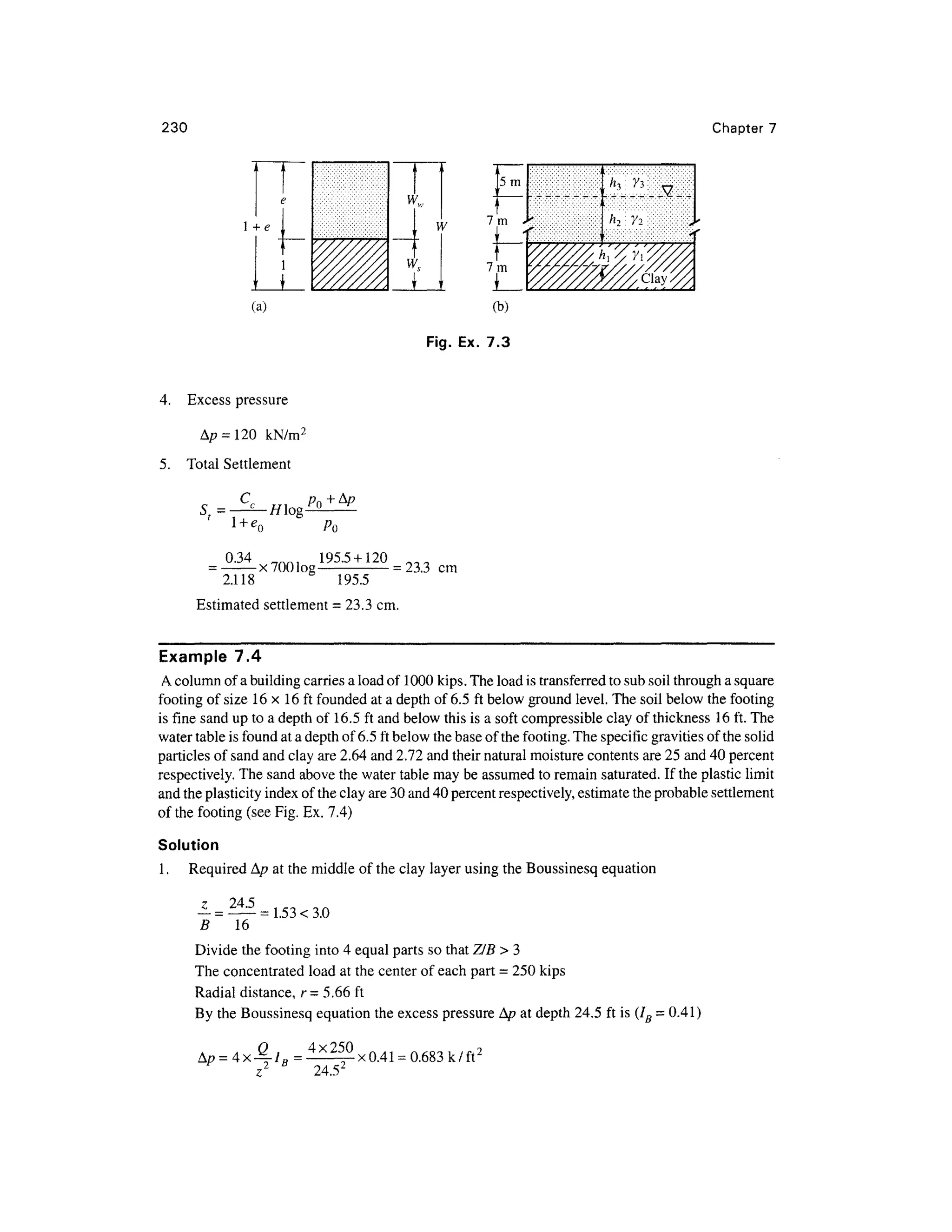
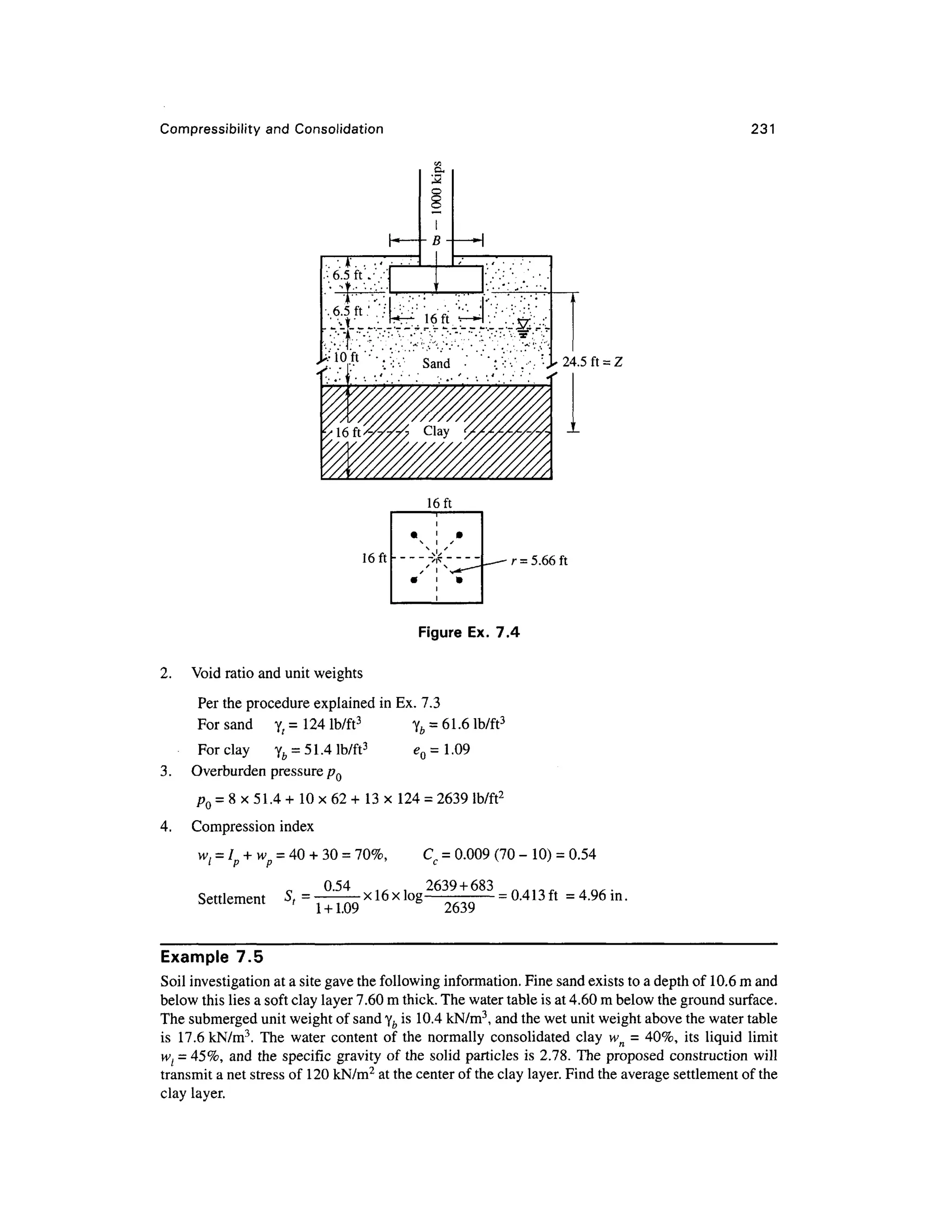
![232 Chapte r 7
Solution
For calculating settlement [Eq. (7.15a)]
C p n + A/?
S = — —H log^ -
-wher e &p = 120 kN /m2
l + eQ p Q
From Eq. (7.17), Cr = 0.009 (w, - 10 ) =
0.009(45 - 10 ) =
0.32
wG
From Eq. (3. 14a), e Q = -
= wG = 0.40 x 2.78 =1.1 1sinc e S =1
tJ
Yb, the submerged unit weight of clay, is found as follows
MG.+«.) = 9*1(2.78 + Ul) 3
' ^" t 1 , 1 . 1 1 1
l + eQ l + l.ll
Yb=Y^-Yw = 18.1-9.8 1 =8.28 kN/m3
The effective vertical stress pQ a t the mid height of the clay layer is
pQ = 4.60 x 17.6 + 6 x10.4 + —x 8.28 = 174.8 kN / m2
_ 0.32x7.60 , 174. 8 + 120
Now S t = -
log -
=0.26m =26 cm
1
1+1.1 1 174. 8
Average settlement
= 2 6 cm.
Example 7. 6
A soil sampl e ha s a compression inde x of 0.3. I f the void ratio e at a stress o f 2940 Ib/ft2
i s 0.5,
compute (i ) the void ratio if the stress i s increased to 4200 Ib/ft2
, an d (ii) the settlement o f a soil
stratum 1 3 ft thick.
Solution
Given: C c = 0.3, el = 0.50, /?, = 2940 Ib/ft2
, p2 = 4200 Ib/ft2
.
(i) No w from Eq. (7.4),
p — p
C i
%."-)
C = l
- 2
—
or e 2 = e
]-c
substituting the known values, we have,
e- = 0.5 -0.31og - 0.454
2
294 0
(ii) Th e settlement per Eq. (7.10) is
c c
c „ , Pi 0.3x13x12 , 420 0
S = — —//log— = -
log -
=4.83 m
.
pl 1. 5 294 0](https://image.slidesharecdn.com/geotechbook-240326034957-6522ccd8/75/geotech-book-FOR-CIVIL-ENGINEERINGGG-pdf-251-2048.jpg)
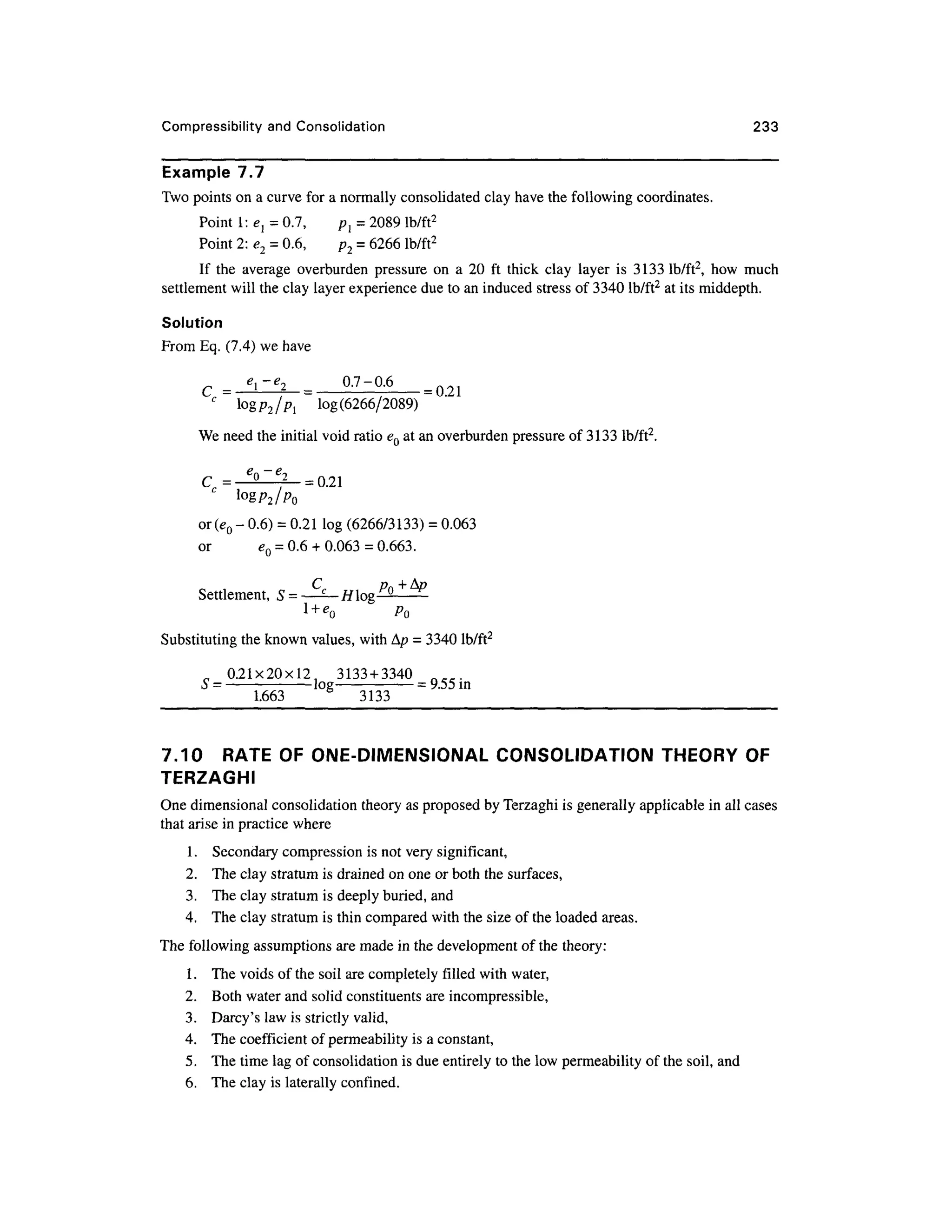

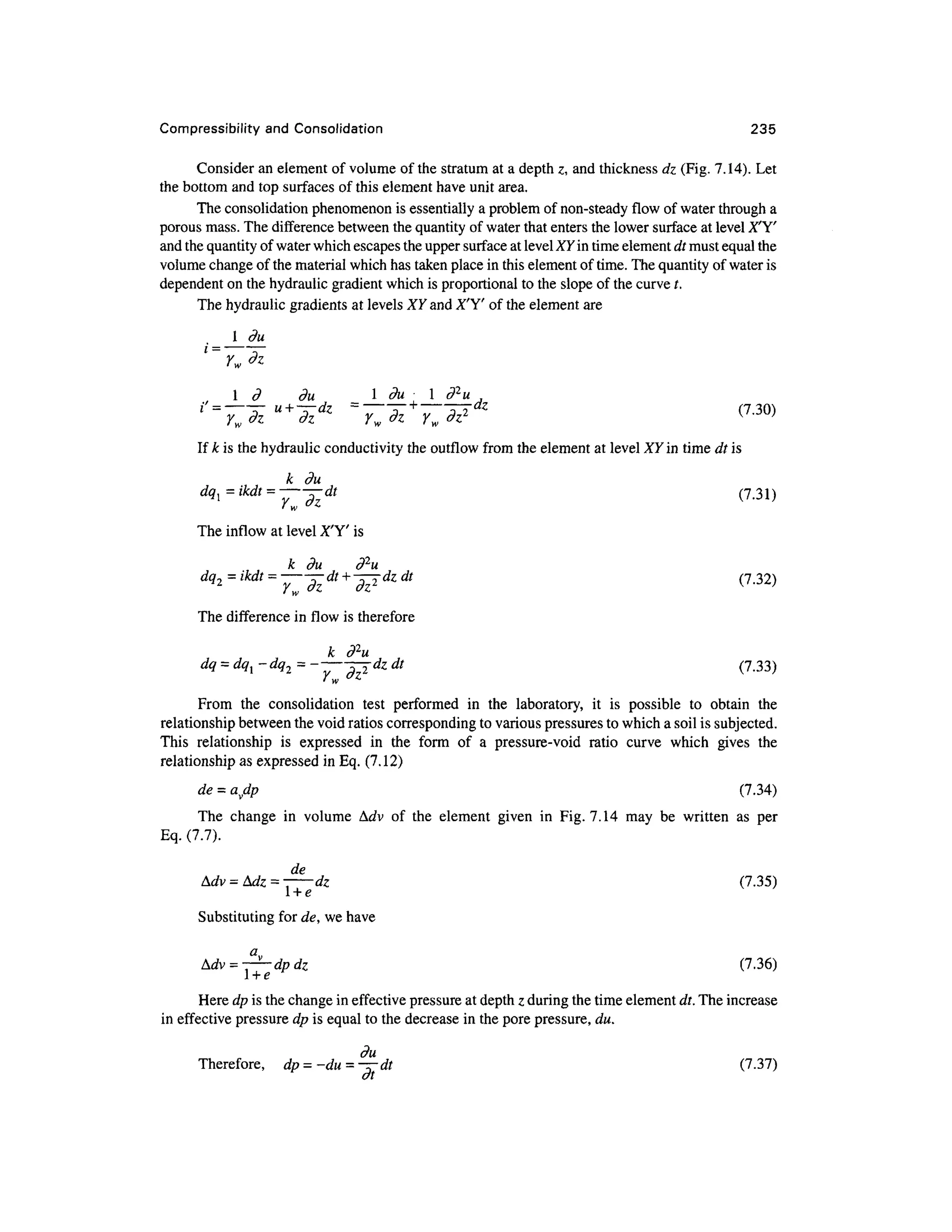



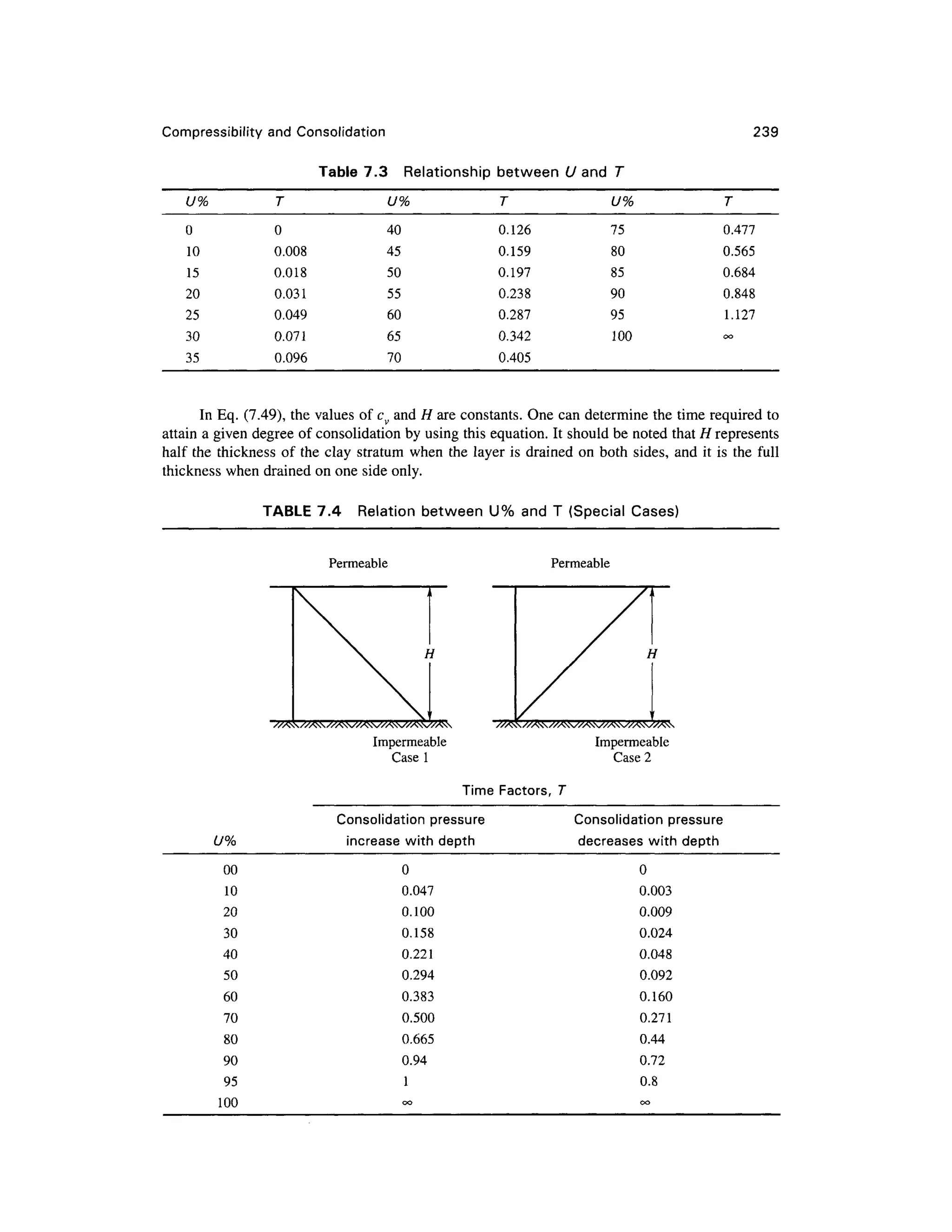




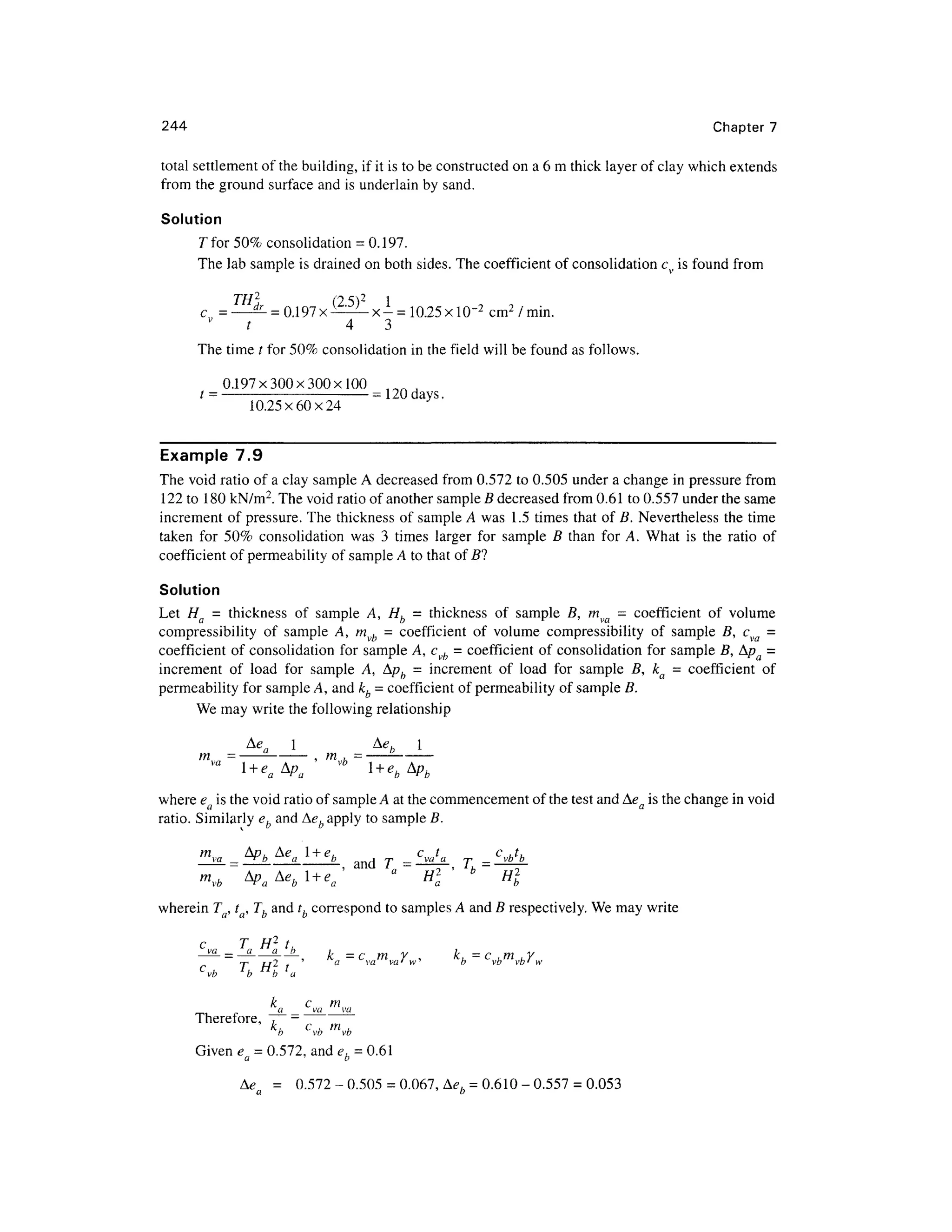






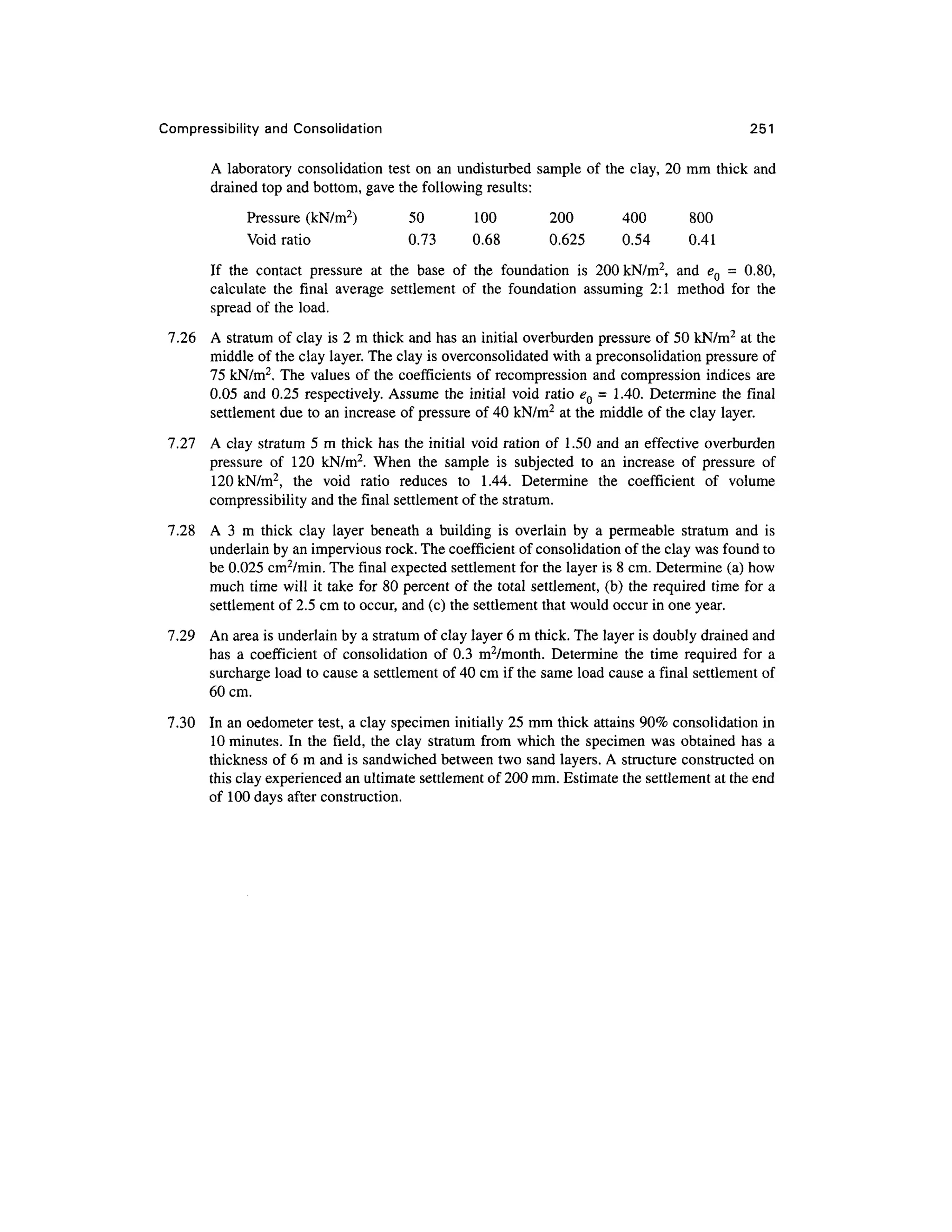


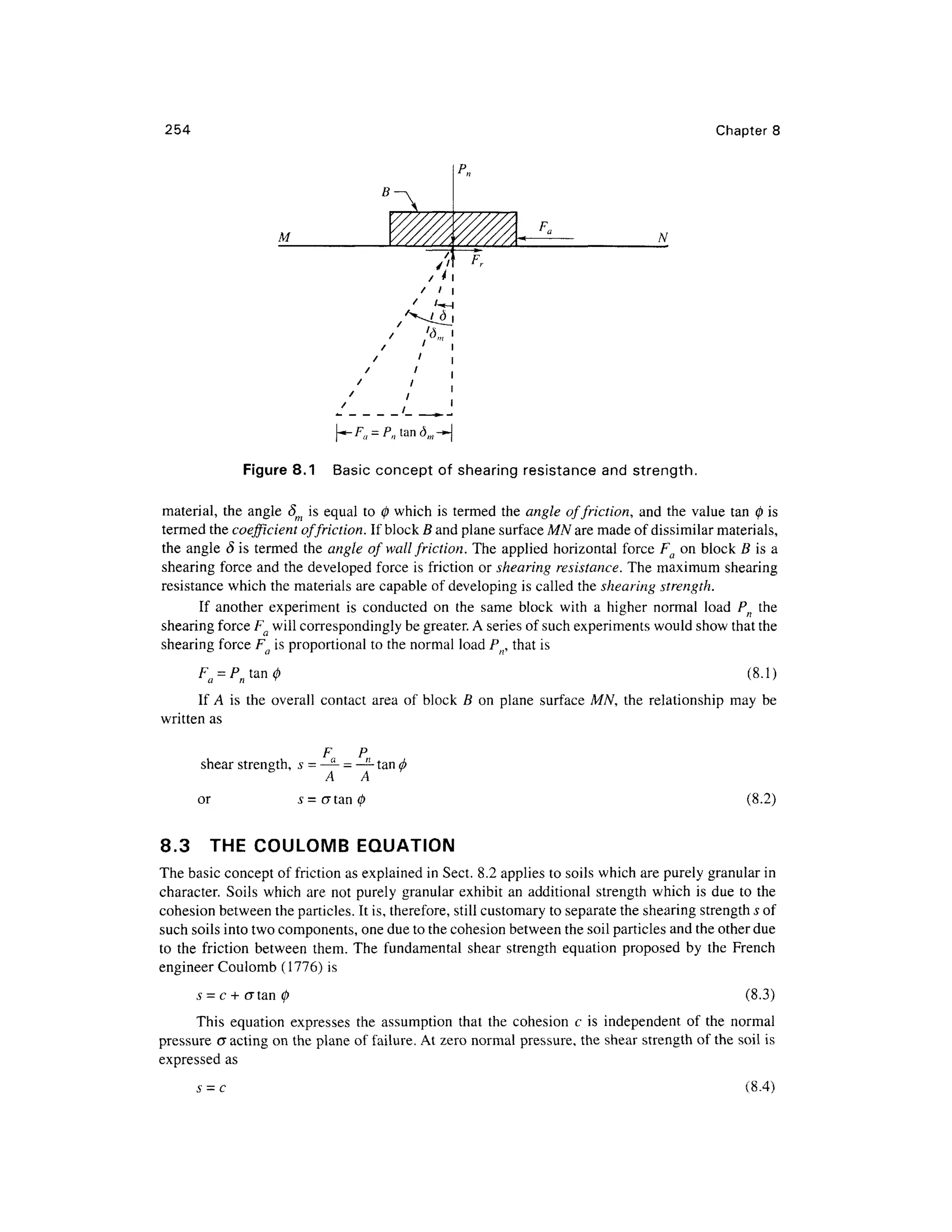
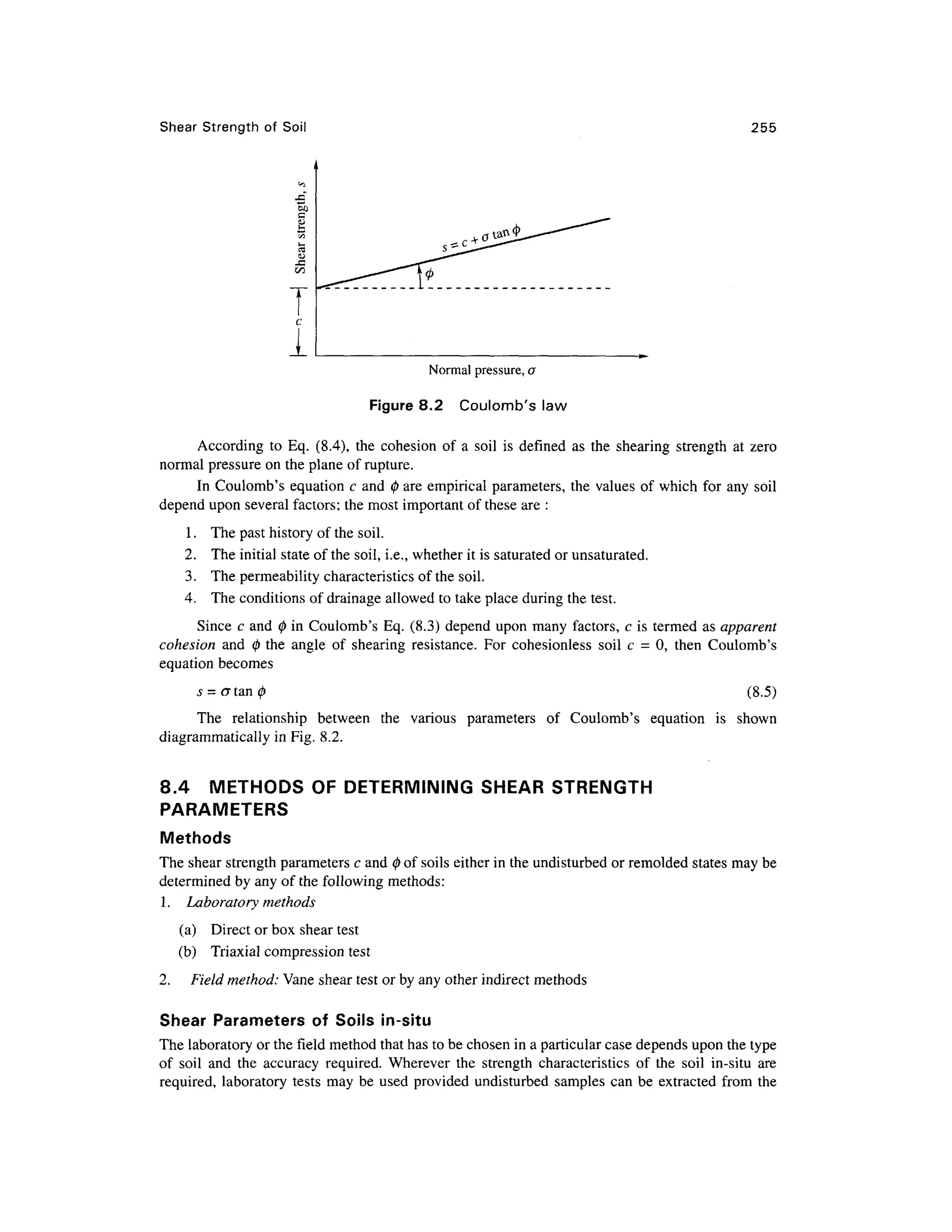





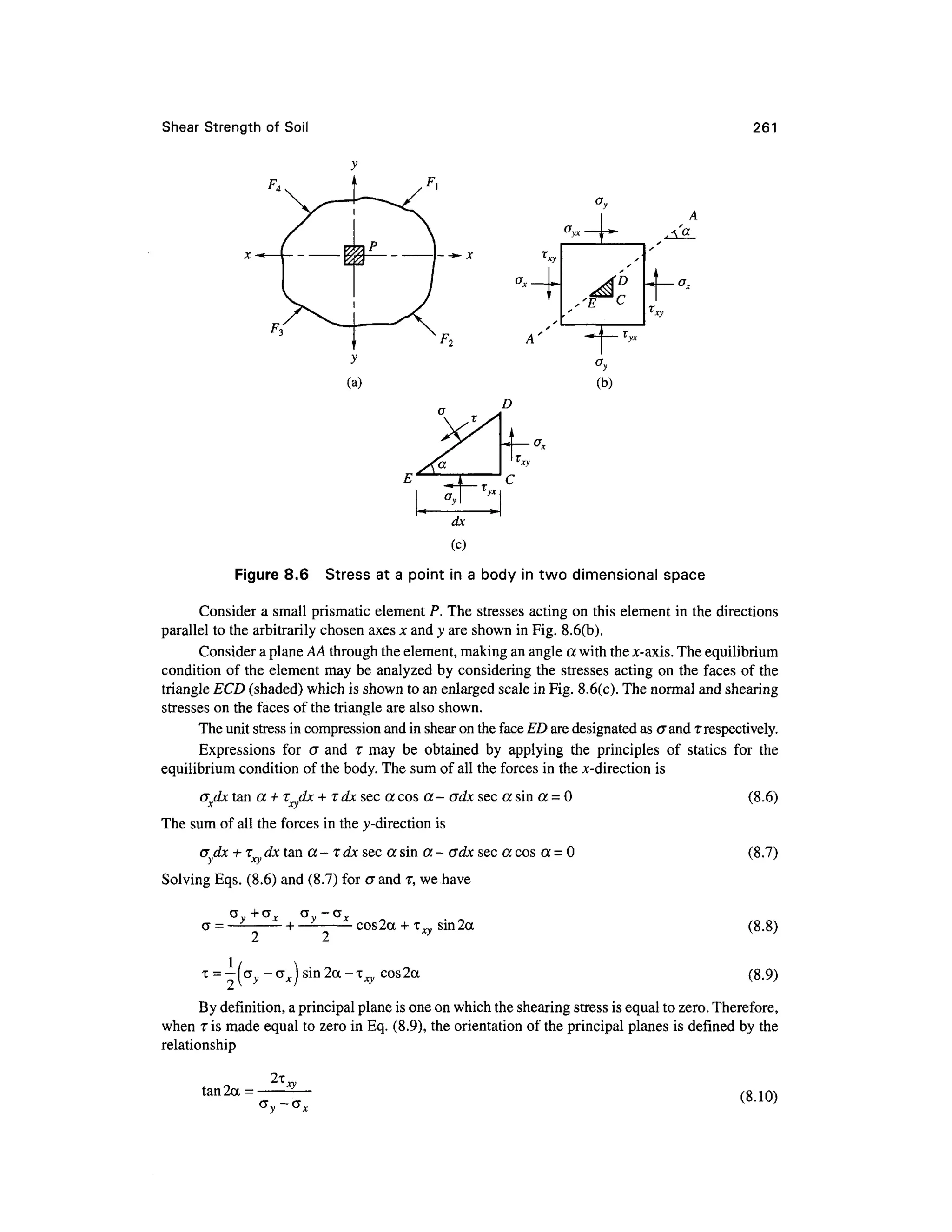


![264 Chapte r 8
If the sides of the cylindrical specimen are not acted on by the horizontal pressure <7 3, the load
required t o caus e failur e i s calle d th e unconfme d compressiv e strengt h qu. I t i s obviou s tha t a n
unconfmed compressio n test can be performed onl y on a cohesive soil. According to Eq. (8.20), the
unconfmed compressive strength q i s equal to
<T = a — 2r N f 8 71
u
i y «-] </> (o.Zj)
If 0 = 0, then qu = 2c (8.24a )
or the shear strength
s = c= —(8.24b )
Eq. (8.24b ) show s one o f the simples t way s of determining the shea r strengt h of cohesiv e
soils.
8.9 MOH R CIRCL E O F STRESS
Squaring Eqs. (8.8) and (8.9) and adding, we have
i2 / _ ^ x 2
+ ^ = I " 2 j + *ly (8.25 )
Now, Eq. (8.25) is the equation of a circle whose center has coordinate s
and whose radius is — i/(c7 - c r ) -
2v vy
'
The coordinates of points on the circle represent the normal and shearing stresses on inclined
planes at a given point. The circle is called th e Mohr circle of stress, after Mohr (1 900), who firs t
recognized thi s usefu l relationship . Mohr's metho d provide s a convenient graphical metho d fo r
determining
I . Th e normal and shearing stress on any plane through a point in a stressed body .
2. Th e orientation of the principal planes if the normal and shear stresses on the surface of the
prismatic elemen t (Fig . 8.6 ) ar e known . The relationship s ar e vali d regardles s o f th e
mechanical propertie s o f th e material s sinc e onl y th e consideration s o f equilibriu m are
involved.
If th e surface s o f th e elemen t ar e themselve s principa l planes , th e equatio n fo r th e Moh r
circle of stress may be written as
T + oy -- -
= - y -- ( 8.26)
The center of the circle has coordinates T- 0 , and o=(a{ + (T3)/2, and its radius is (<Jl - (T 3)/2.
Again from Mohr's diagram, the normal and shearing stresses on any plane passing through a point
in a stressed body (Fig. 8.7) may be determined if the principal stresses cr l and (J3 are known. Since
<7j andO" 3 are always known in a cylindrical compression test, Mohr's diagram is a very useful too l
to analyze stresses on failure planes.](https://image.slidesharecdn.com/geotechbook-240326034957-6522ccd8/75/geotech-book-FOR-CIVIL-ENGINEERINGGG-pdf-283-2048.jpg)
![Shear Strengt h of Soi l 265
8.10 MOH R CIRCL E O F STRESS WHE N A PRISMATI C ELEMEN T
IS SUBJECTED TO NORMA L AND SHEA R STRESSE S
Consider first the case of a prismatic element subjected to normal and shear stresses as in Fig. 8.8(a).
Sign Conventio n
1. Compressiv e stresses are positive and tensile stresses are negative.
2. Shea r stresses are considered a s positive if they give a clockwise moment about a point
above the stressed plane as shown in Fig. 8.8(b), otherwise negative.
The norma l stresse s ar e take n a s absciss a an d th e shea r stresse s a s ordinates . I t i s
assumed the norma l stresses c r , cr an d the shear stress r ( T = T ) acting o n the surface of
x y xy xy yx
the elemen t ar e known . Tw o point s P l an d P 2 ma y no w b e plotte d i n Fig . 8.8(b) , whos e
coordinates are
If the points P} and P2 are joined, the line intersects the abscissa at point C whose coordinates
are [(0,+op/2,0].
Minor principal
> a
i
plane
(a) A prismatic element subjected to normal and shear stresses
(ax + ay)/2
+ ve
(b) Mohr circle of stress
Figure 8.8 Moh r stres s circl e for a general case](https://image.slidesharecdn.com/geotechbook-240326034957-6522ccd8/75/geotech-book-FOR-CIVIL-ENGINEERINGGG-pdf-284-2048.jpg)
![266 Chapte r 8
Point O is the origin of coordinates for the center of the Mohr circle of stress. With center C
a circle may now be constructed with radius
This circl e whic h passes throug h points Pl an d P2 i s called th e Mohr circle o f stress. The
Mohr circle intersects the abscissa at two points E and F . The major and minor principal stresses
are ol ( = OF) and cr 3 (= OE) respectively .
Determination o f Norma l an d Shea r Stresse s o n Plan e A A [Fig . 8.8(a) ]
Point P{ o n the circle of stress in Fig. 8. 8(b) represents the state of stress on the vertical plane of the
prismatic element ; similarl y point P2 represent s th e stat e o f stres s o n th e horizonta l plan e o f th e
element. If from point P{ a line is drawn parallel to the vertical plane, it intersects the circle at point PQ
and if from th e point P2 on the circle, a line is drawn parallel to the horizontal plane, this line also
intersects the circle at point PQ . The point PQ so obtained is called the origin of planes or the pole. If
from the pole PQ a line is drawn parallel to the plane AA in Fig. 8.8(a) to intersect the circle at point P3
(Fig. 8.8(b)) then the coordinates o f the point give the normal stress cran d the shear stress Ton plane
AA as expressed by equations 8.8 and 8.9 respectively. This indicates that a line drawn from the pole PQ
at any angle a t o the cr-axi s intersects the circle at coordinates tha t represent the normal and shear
stresses on the plane inclined at the same angle to the abscissa.
Major an d Mino r Principa l Planes
The orientations of the principal planes may be obtained by joining point PQ to the points E and F
in Fig 8.8(b). PQ F is the direction of the major principal plane on which the major principal stres s
dj acts ; similarly PQ E is the direction o f the minor principal plane on which the minor principal
stress<7 3 acts. It is clear from the Mohr diagram that the two planes PQ E and PQ F intersect at a right
angle, i.e., angle EPQ F = 90°.
8.1 1 MOH R CIRCL E O F STRESS FO R A CYLINDRICA L SPECIME N
COMPRESSION TES T
Consider the case of a cylindrical specimen of soil subjected to normal stresses<7 j and<J 3 which are
the major and minor principal stresses respectively (Fig . 8.9 )
From Eqs. (8.14 ) and (8.15), we may write
2 2
Again Eq. (8.27) is the equation of a circle whose center has coordinate s
<7, + CT , (7 , — (J-.
<J = — - -
-and T =
0 and whose radius is
/O /-*^T
(8.27)
2 2
A circle with radius (o{ - cr 3)/2 with its center C on the abscissa a t a distance of (al + cr3)/2
may be constructed a s shown in Fig. 8.9 . This i s the Mohr circle of stress. The majo r and mino r
principal stresses are shown in the figure wherein cr, = OF and<7 3 = OE.
From Fig. 8.8 , we can writ e equations for cf j an d<7 3 and T max as follows
±](https://image.slidesharecdn.com/geotechbook-240326034957-6522ccd8/75/geotech-book-FOR-CIVIL-ENGINEERINGGG-pdf-285-2048.jpg)






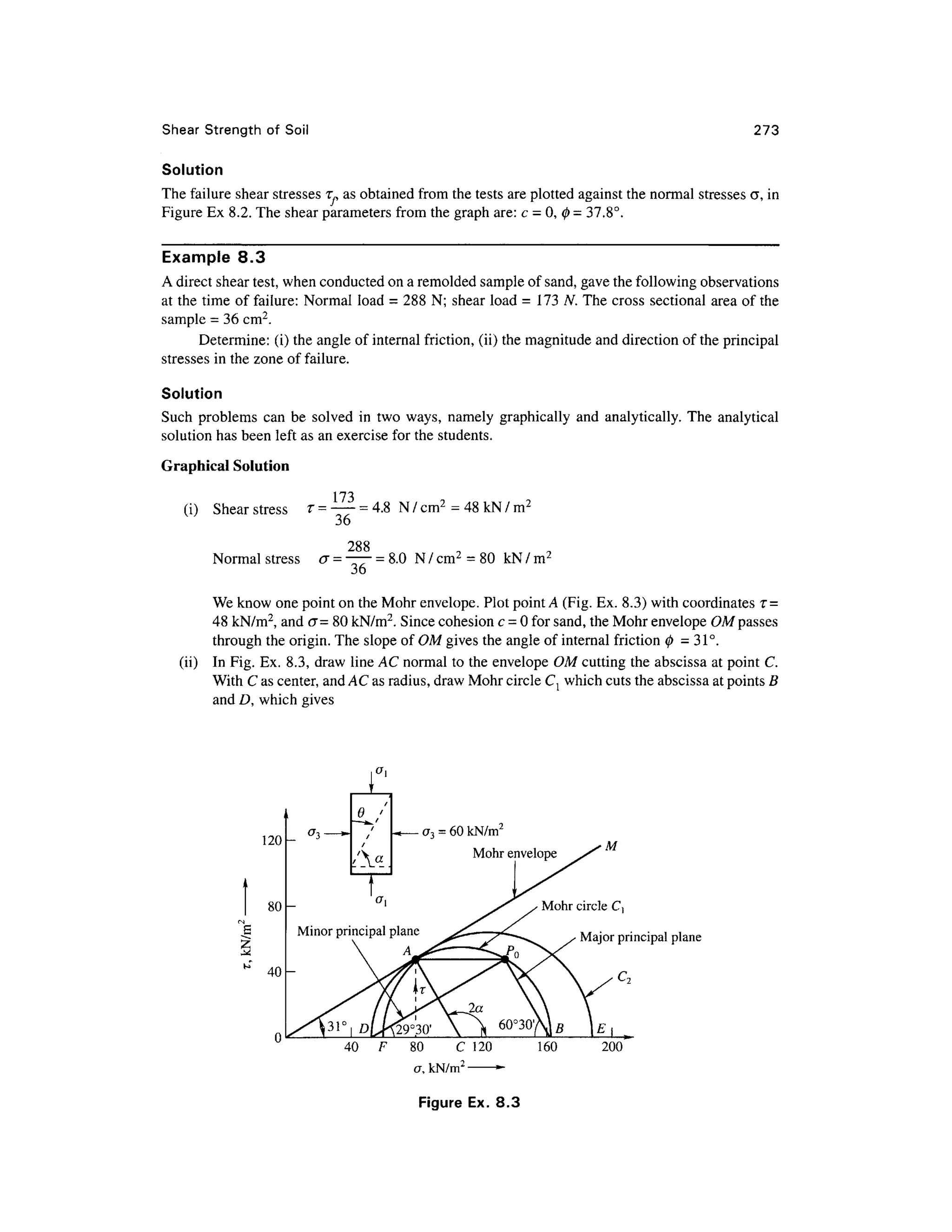


![276 Chapte r 8
Simplifying, w e have
(o[ -o'3)f = (o{ + o'3 ) sin(/)' + 2c' cos 0' (8.39 )
8.17 STRESS-CONTROLLE D AN D STRAIN-CONTROLLE D TESTS
Direct shear tests or triaxial compression tests may be carried out by applying stresses or strains at
a particularly known rate. When the stress is applied at a constant rate it is called a stress-controlled
test an d whe n th e strai n is applie d a t a constan t rate i t i s calle d a strain-controlled test. Th e
difference betwee n the two types of tests may be explained with respect t o box shear tests.
In the stress-controlled test [Fig. 8.15(a)] the lateral load Fa which induces shear is gradually
increased unti l complete failur e occurs. Thi s ca n be done b y placin g weights o n a hanger o r by
filling a counterweighte d bucke t o f origina l weigh t W a t a constan t rate . Th e shearin g
displacements are measured by means of a dial gauge G as a function of the increasing load F . The
shearing stress at any shearing displacement, is
where A i s the cross sectional are a o f the sample. A typical shape o f a stress-strain curv e of the
stress-controlled test is shown in Fig. 8.15(a).
A typical arrangement of a box-shear test apparatus for the strain-controlled test is shown in
Fig. 8.15(b) . The shearin g displacements ar e induced and controlled i n such a manner that they
occur at a constant fixed rate. This can be achieved by turning the wheel either by hand or by means
of any electrically operate d motor so that horizontal motion is induced through the worm gear B.
The dial gauge G gives the desired constant rate of displacement. The bottom of box C is mounted
on frictionless rollers D. The shearing resistance offered to this displacement by the soil sample is
measured b y the proving ring E. The stress-strain curves for this type of test have the shape shown
in Fig. 8.15(b).
Both stress-controlled and strain-controlled types of test are used in connection with all the
direct triaxia l and unconfined soi l shea r tests . Strain-controlled tests ar e easier to perform an d
have the advantage of readily giving not only the peak resistance as in Fig. 8.1 5 (b ) but also the
ultimate resistance which is lower than the peak suc h as point b in the same figure, whereas th e
stress controlled gives only the peak values but not the smaller values after the peak is achieved.
The stress-controlled test is preferred only in some special problem s connecte d wit h research.
8.18 TYPE S O F LABORATOR Y TEST S
The laboratory tests on soils may be on
1. Undisturbe d samples, or
2. Remolde d samples .
Further, the tests may be conducted on soils that are :
1 .Full y saturated, or
2. Partiall y saturated.
The type of test to be adopted depend s upon how best we can simulate the field conditions.
Generally speaking, the various shear tests for soils may be classified as follows:](https://image.slidesharecdn.com/geotechbook-240326034957-6522ccd8/75/geotech-book-FOR-CIVIL-ENGINEERINGGG-pdf-295-2048.jpg)

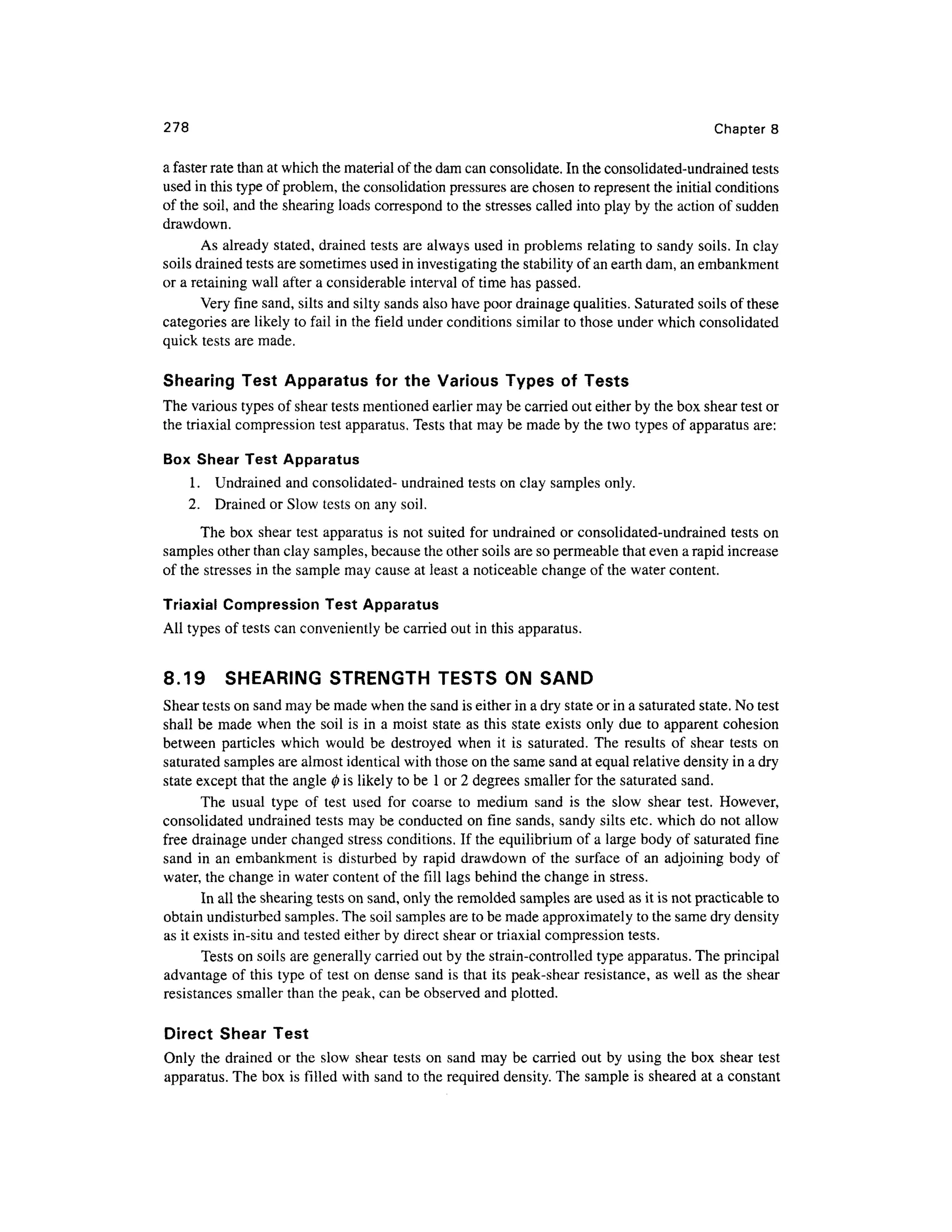

![280 Chapte r 8
Table 8.1 Typica l value s of 0 and (j) u fo r granula r soil s
Types of soi l
Sand: rounded grains
Loose
Medium
Dense
Sand: angular grains
Loose
Medium
Dense
Sandy gravel
0 deg
28 to 30
30 to 35
35 to 38
30 to 35
35 to 40
40 to 45
34 to 48
0u deg
26 to 30
30 to 35
33 to 36
intermediate values of pressure, the shearing force causes a decrease in the void ratio of loose sand
and an increase i n the void ratio of dense sand. Fig 8.16(b) shows how the volume of dense sand
decreases u p t o a certai n valu e o f horizonta l displacemen t an d wit h furthe r displacemen t th e
volume increases , wherea s i n th e cas e o f loose san d th e volum e continues to decreas e wit h an
increase in the displacement. In saturated san d a decrease of the void ratio is associated with an
expulsion of pore water, and an increase with an absorption of water. The expansion of a soil due to
shear a t a constant valu e of vertica l pressure i s called dilatancy. At som e intermediat e stat e o r
degree of density in the process of shear, the shear displacement does not bring about any change in
volume, that is, density. The density of sand at which no change in volume is brought about upon
the applicatio n o f shea r strain s i s calle d th e critical density. Th e porosit y an d voi d rati o
corresponding t o th e critica l densit y are calle d th e critical porosity an d th e critical void ratio
respectively.
By plottin g the shea r strength s corresponding to the state of failure i n the differen t shea r test s
against the normal pressure a straight line is obtained for loose sand and a slightly curved line for dense
sand [Fig . 8.16(c)] . However , fo r al l practica l purposes , th e curvatur e for th e dens e san d ca n b e
disregarded an d an average line may be drawn. The slopes of the lines give the corresponding angles of
friction 0 of the sand. The general equation forthe lines may be written as
s = <J tan(f)
For a given sand, the angle 0 increases wit h increasing relative density. For loose san d it is
roughly equal to the angle of repose, defined as the angle between the horizontal and the slope of a
heap produced by pouring clean dry sand from a small height. The angle of friction varie s with the
shape of the grains. Sand samples containing well graded angular grains give higher values of 0 as
compared to uniformly graded san d with rounded grains. The angl e of friction</ > for dense sand at
peak shear stress is higher than that at ultimate shear stress. Table 8.1 gives some typical values of
0 (at peak) and 0 M (at ultimate).
Triaxial Compression Test
Reconstructed sand samples at the required density are used for the tests. The procedure of making
samples shoul d be studie d separately (refe r to any book o n Soil Testing). Tests o n sand ma y be
conducted either in a saturated state or in a dry state. Slow or consolidated undraine d tests may be
carried out as required.
Drained o r Slow Test s
At least three identical samples havin g the same initial conditions are to be used. For slow test s
under saturated conditions the drainage valve should always be kept open. Each sample should be](https://image.slidesharecdn.com/geotechbook-240326034957-6522ccd8/75/geotech-book-FOR-CIVIL-ENGINEERINGGG-pdf-299-2048.jpg)

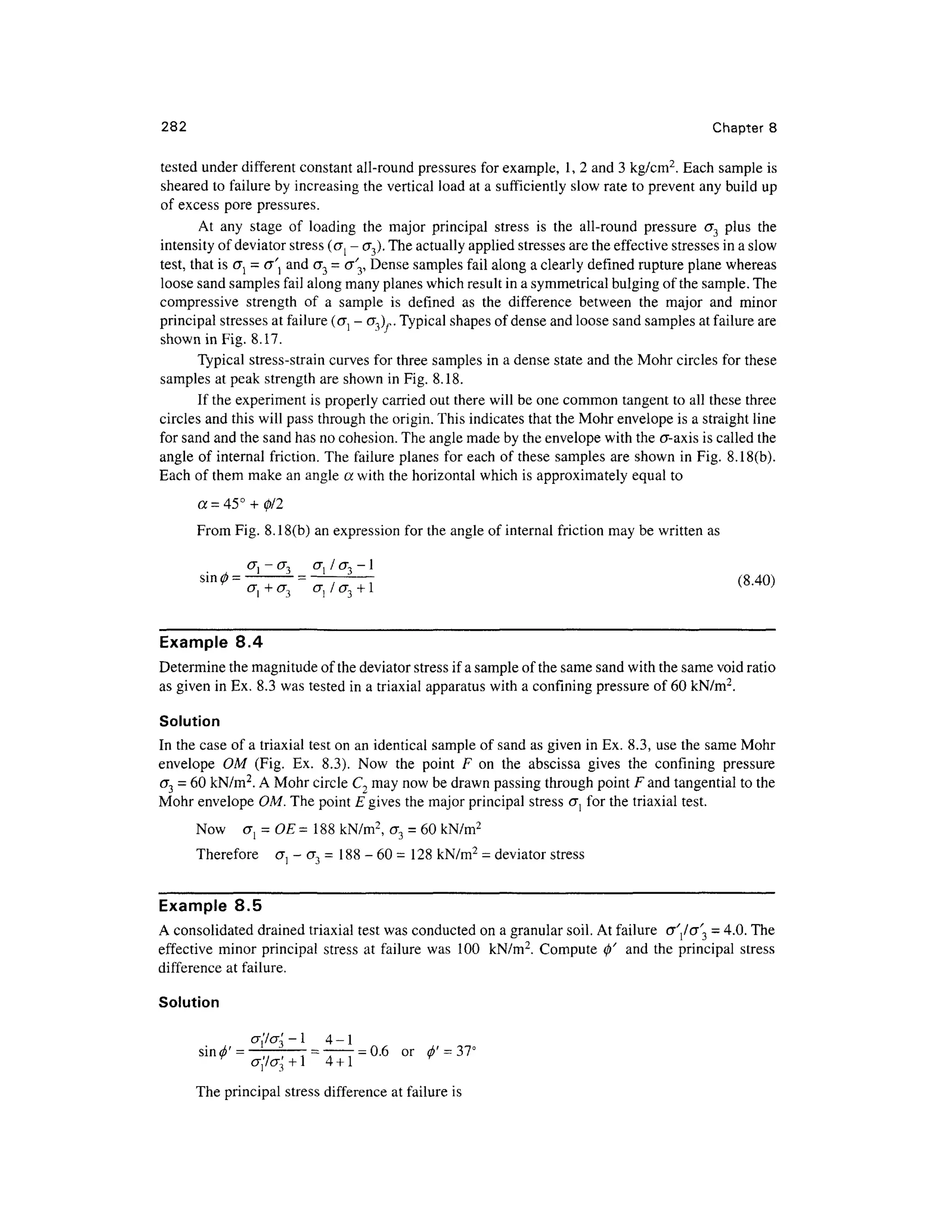


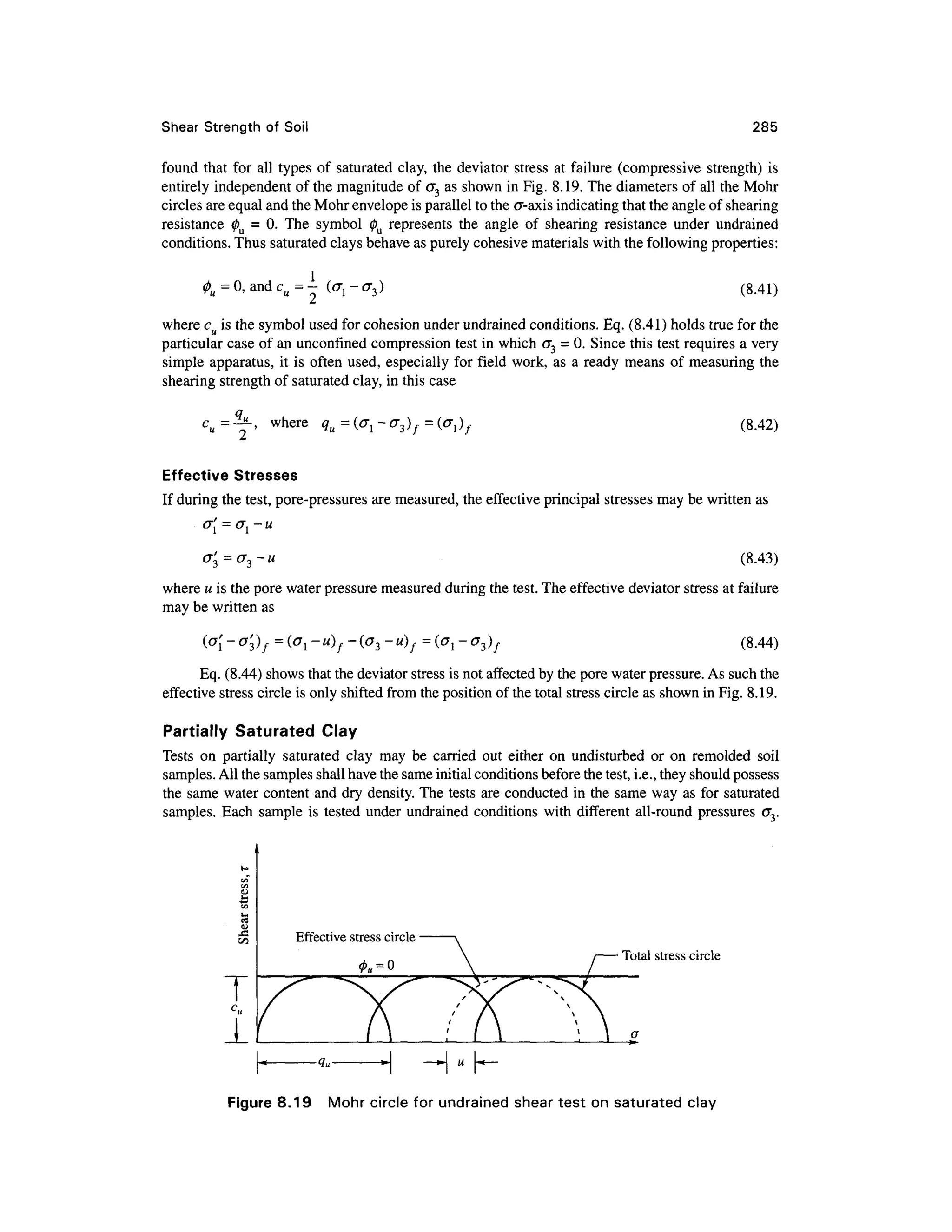


![288 Chapte r 8
Any compressio n testin g apparatus wit h arrangement fo r strai n contro l ma y b e use d fo r
testing the samples . The axial load u may be applied mechanically or pneumatically.
Specimens of height to diameter ratio of 2 are normally used for the tests. The sampl e fail s
either by shearing on an inclined plane (if the soil is of brittle type) or by bulging. The vertical stress
at any stage of loading is obtained by dividing the total vertical load by the cross-sectional area. The
cross-sectional are a of the sample increases with the increase in compression. Th e cross-sectiona l
area A at any stage of loading of the sample may be computed on the basic assumption that the total
volume of the sample remains the same. That is
AO/IQ = A h
where A Q, hQ = initial cross-sectional area and height of sample respectively.
A,h = cross-sectional area and height respectively at any stage of loading
If Ah is the compression of the sample, the strain is
A/z
£
~ ~j~~ sinc e A/ z =h
0- h, we may write
AO/ZQ = A(/ZO - A/z )
Therefore, A = -j^-= ^
^ = ^
(8.45 )
The average vertical stress at any stage of loading may be written as
P P(l-e]
A A ()
(8.46)
where P is the vertical load at the strain e.
Using the relationship given by Eq. (8.46) stress-strain curves may be plotted. The peak value
is taken as the unconfined compressiv e strength qti, that is
( f f
i ) f
=
V u (8-47 )
The unconfine d compression test (UC ) i s a specia l cas e o f th e unconsolidated-undrained
(UU) triaxial compression test (TX-AC). The only difference between the UC test and UU test is
that a total confining pressure under which no drainage was permitted was applied in the latter test.
Because of the absence of any confining pressure in the UC test, a premature failure through a weak
zone may terminate an unconfined compression test. For typical soft clays, premature failure is not
likely to decrease th e undrained shear strength by more than 5%. Fig 8.23 show s a comparison of
undrained shear strength values from unconfine d compression tests and from triaxia l compression
tests on soft-Natsushima cla y from Toky o Bay. The properties o f the soil are :
Natural moisture content w = 80 to 90%
Liquid limit w,= 10 0 to 110 %
Plasticity index /; = 60%
There is a unique relationship between remolded undraine d shear strength and the liquidity
index, / , as shown in Fig. 8.24 (after Terzaghi et al., 1996). This plot includes soft clay soil and silt
deposits obtaine d from differen t part s of the world.](https://image.slidesharecdn.com/geotechbook-240326034957-6522ccd8/75/geotech-book-FOR-CIVIL-ENGINEERINGGG-pdf-307-2048.jpg)
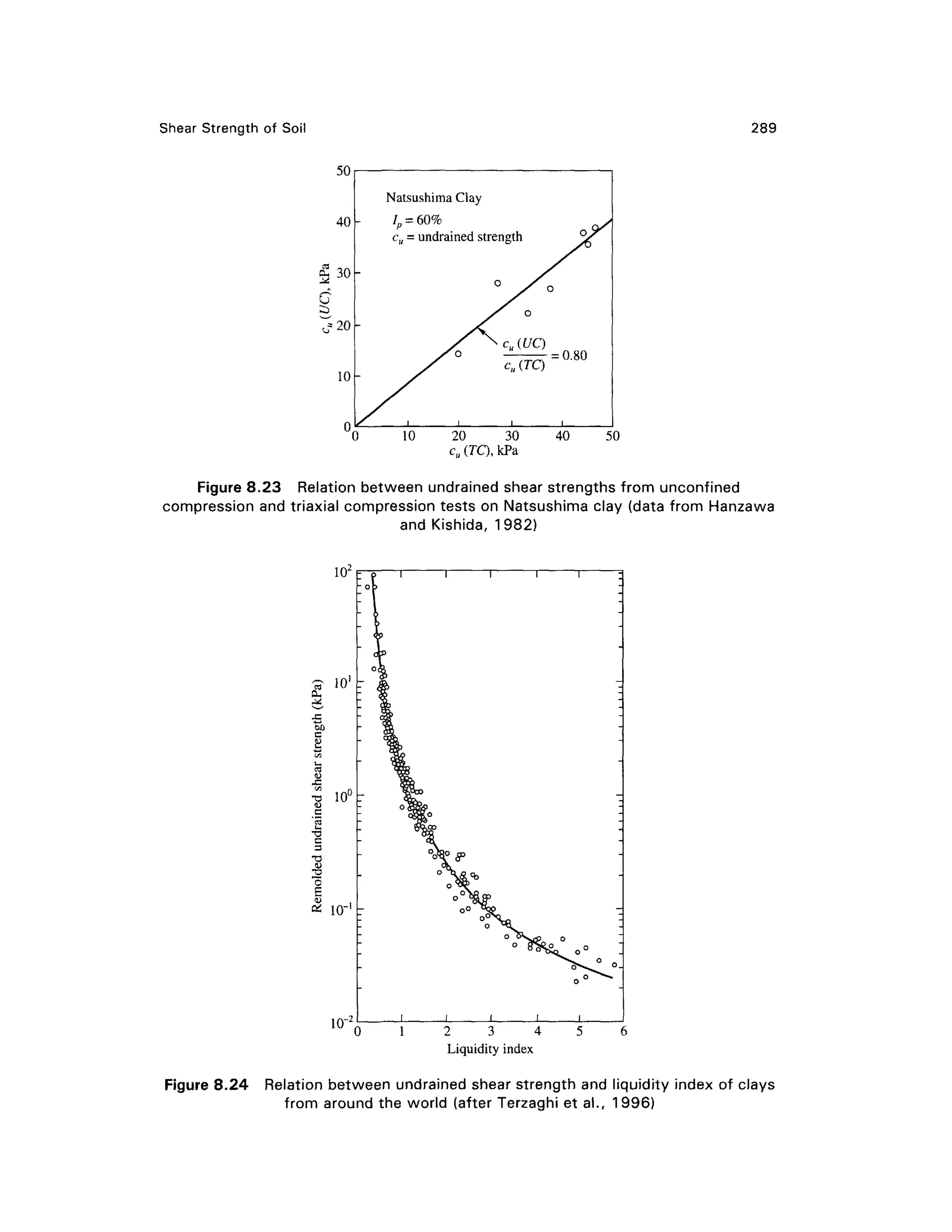
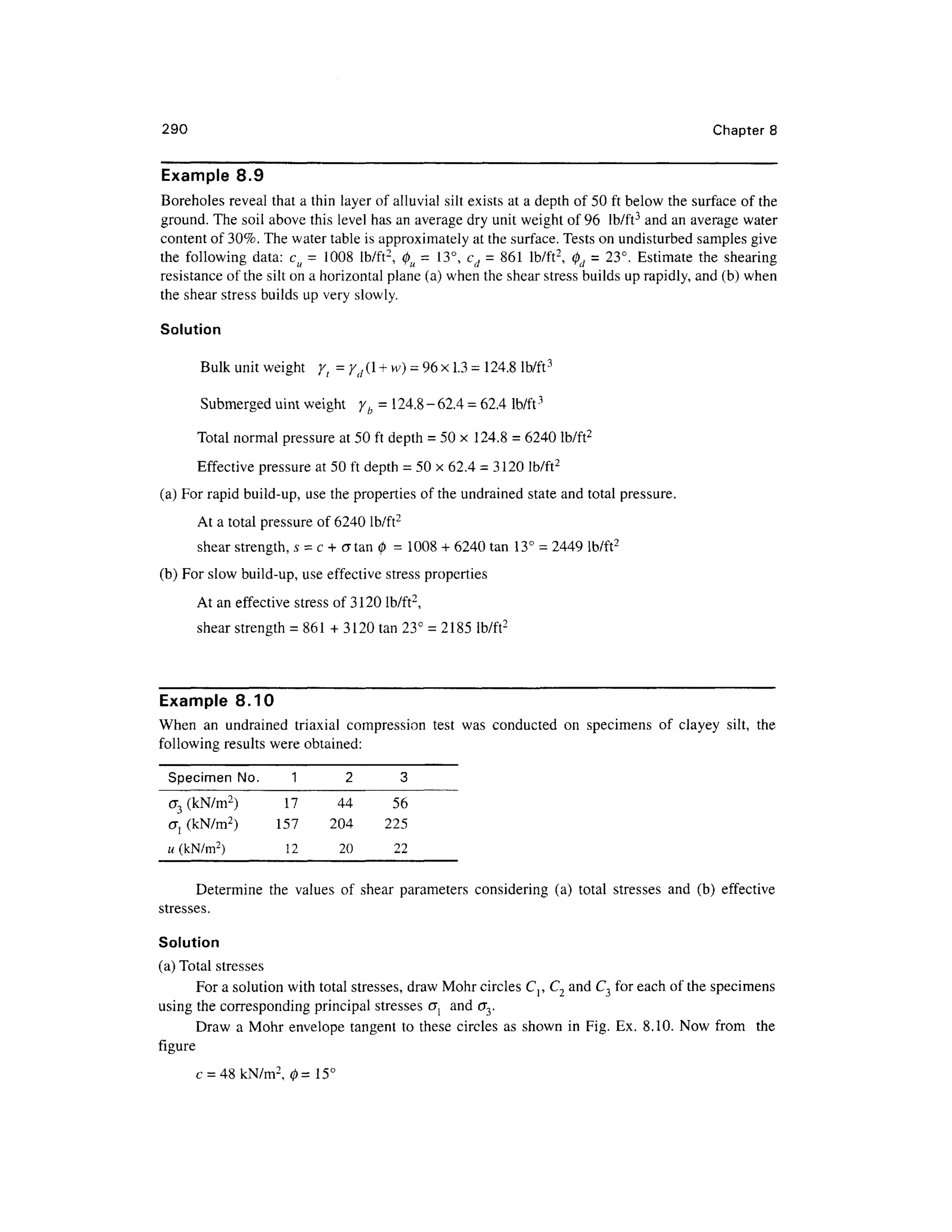

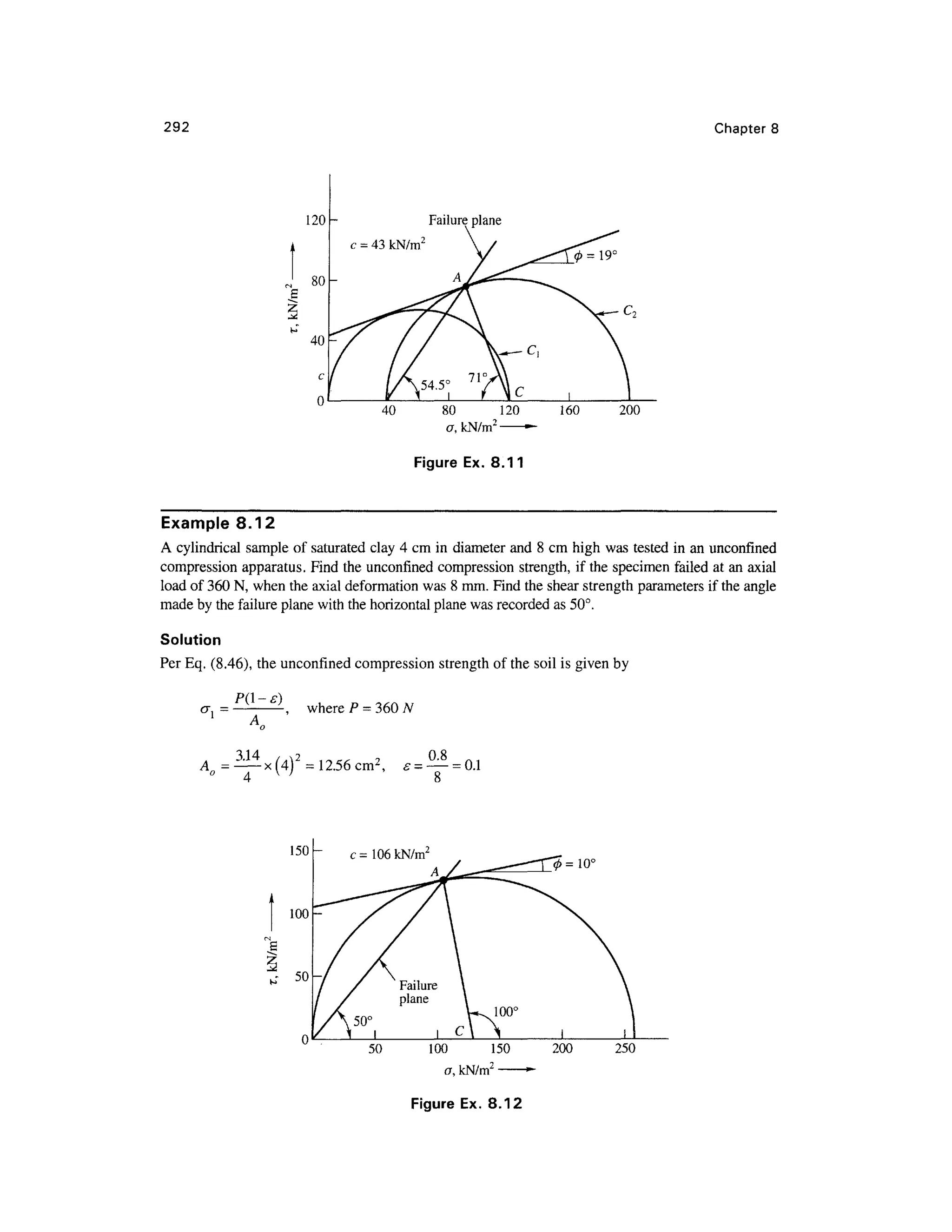
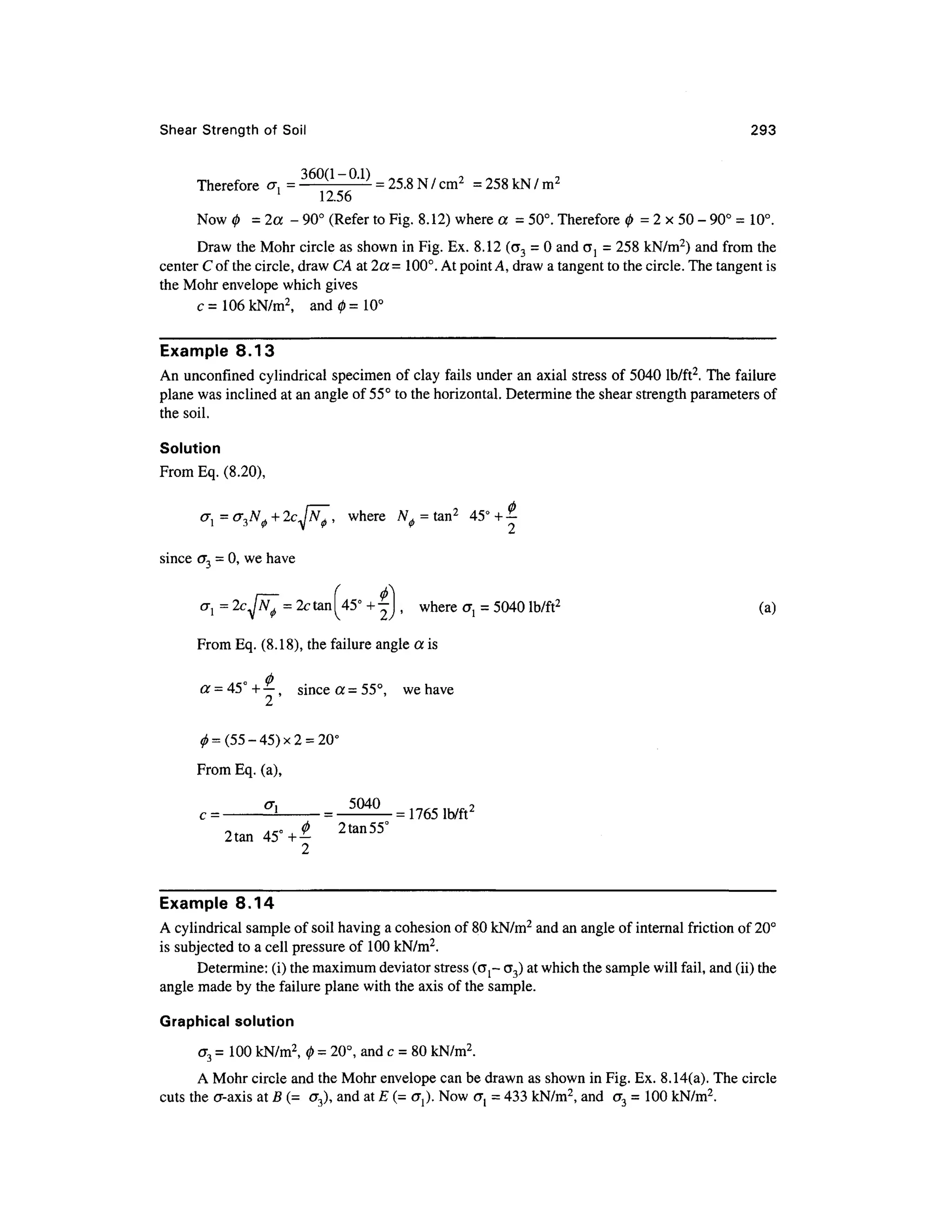
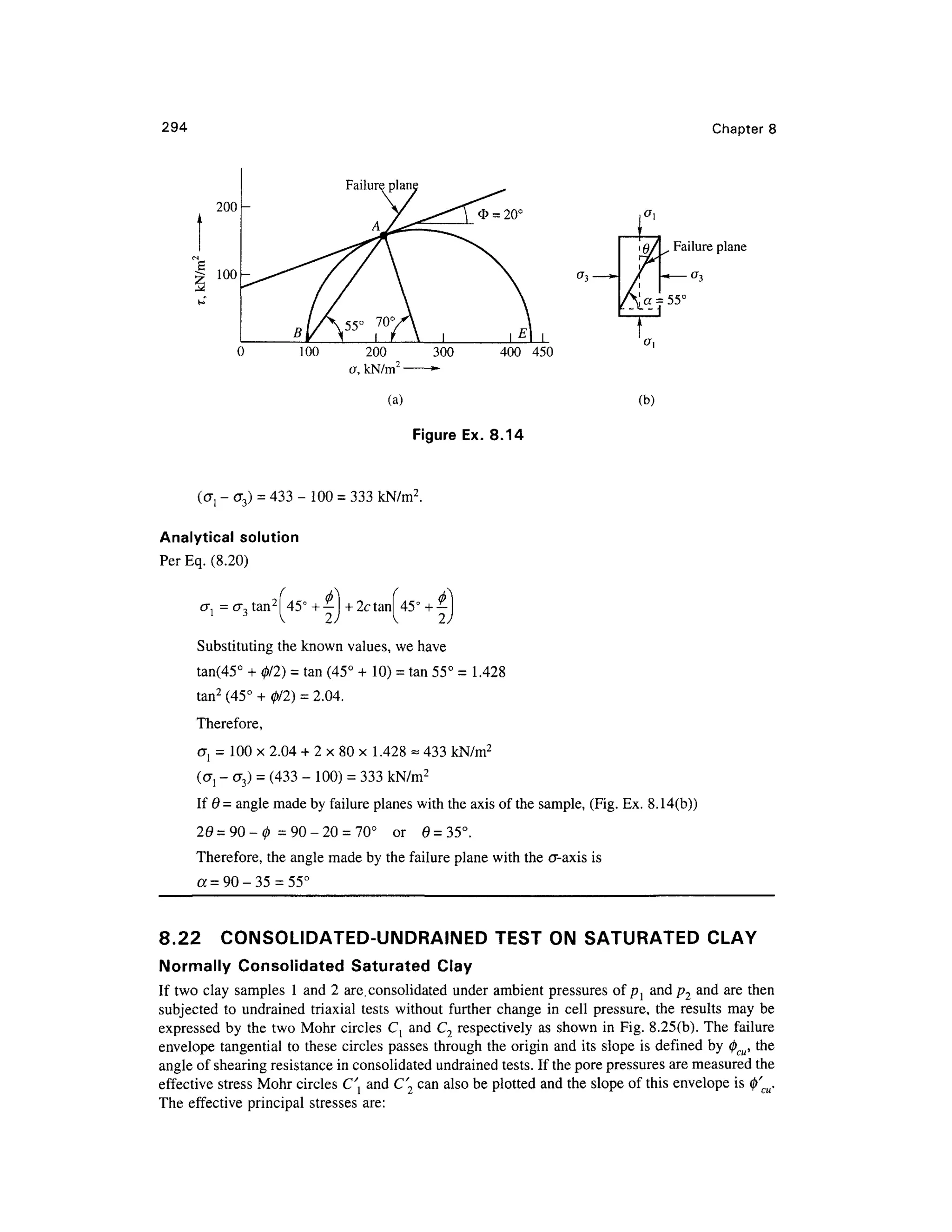



![298 Chapter 8
undrained tests on the sam e soils, the volume change is zero and consequently(j) d fo r dense sand s
and heavily overconsolidated clays is greater than 0'. Fig. 8.28(a) shows the nature of variation of
the deviator stres s with axial strain. During the application o f the deviator stress, the volume of the
specimen gradually reduces for normally consolidated clays. However, overconsolidated clays go
through some reduction of volume initially but then expand.
8.24 POR E PRESSURE PARAMETERS UNDER UNDRAINE D
LOADING
Soils in nature are at equilibrium under their overburden pressure. If the same soil is subjected to an
instantaneous additional loading, there will be development of pore pressure if drainage is delayed
under the loading. The magnitude of the pore pressure depends upo n the permeability of the soil,
the manner of application of load, the stress history of the soil, and possibly many other factors. If
a load is applied slowl y and drainage takes place with the application of load, there will practically
be no increase o f pore pressure. However, if the hydraulic conductivity of the soil is quite low, and
if the loading is relatively rapid, there will not be sufficient time for drainage to take place. In such
cases, there will be an increase in the pore pressure in excess of the existing hydrostatic pressure. It
is therefore necessary man y times to determine or estimate the excess pore pressure for the various
types o f loadin g conditions . Por e pressure parameter s ar e use d t o express th e response o f por e
pressure t o changes i n total stres s under undrained conditions. Values of the parameters ma y be
determined i n the laboratory an d can be used t o predict pore pressure s i n the field under similar
stress conditions.
Pore Pressur e Parameter s Under Triaxia l Test Condition s
A typical stress application on a cylindrical element of soil under triaxial test conditions is shown in
Fig. 8.29 (Adj > A<73). AM is the increase in the pore pressure without drainage. From Fig. 8.29, w e
may write
AM3 = 5A<73, Awj = Afi(Acr1 - Acr 3), therefore,
AM = AMj + AM3 = #[A<73 + /4(A(Tj - Acr 3)]
or A M =BAcr3 + A(Aer, - A<r 3)
where, A = AB
for saturate d soils B = 1, so
(8.50)
(8.51)
Aw = A< 7 - A<73)
IACT,
(8.52)
ACT,
A<73 A<7 3
(ACT, - ACT 3)
ACT, AM,
ACT, ACT, (ACT, - ACT 3)
Figure 8.29 Exces s water pressur e unde r triaxia l tes t conditions](https://image.slidesharecdn.com/geotechbook-240326034957-6522ccd8/75/geotech-book-FOR-CIVIL-ENGINEERINGGG-pdf-317-2048.jpg)
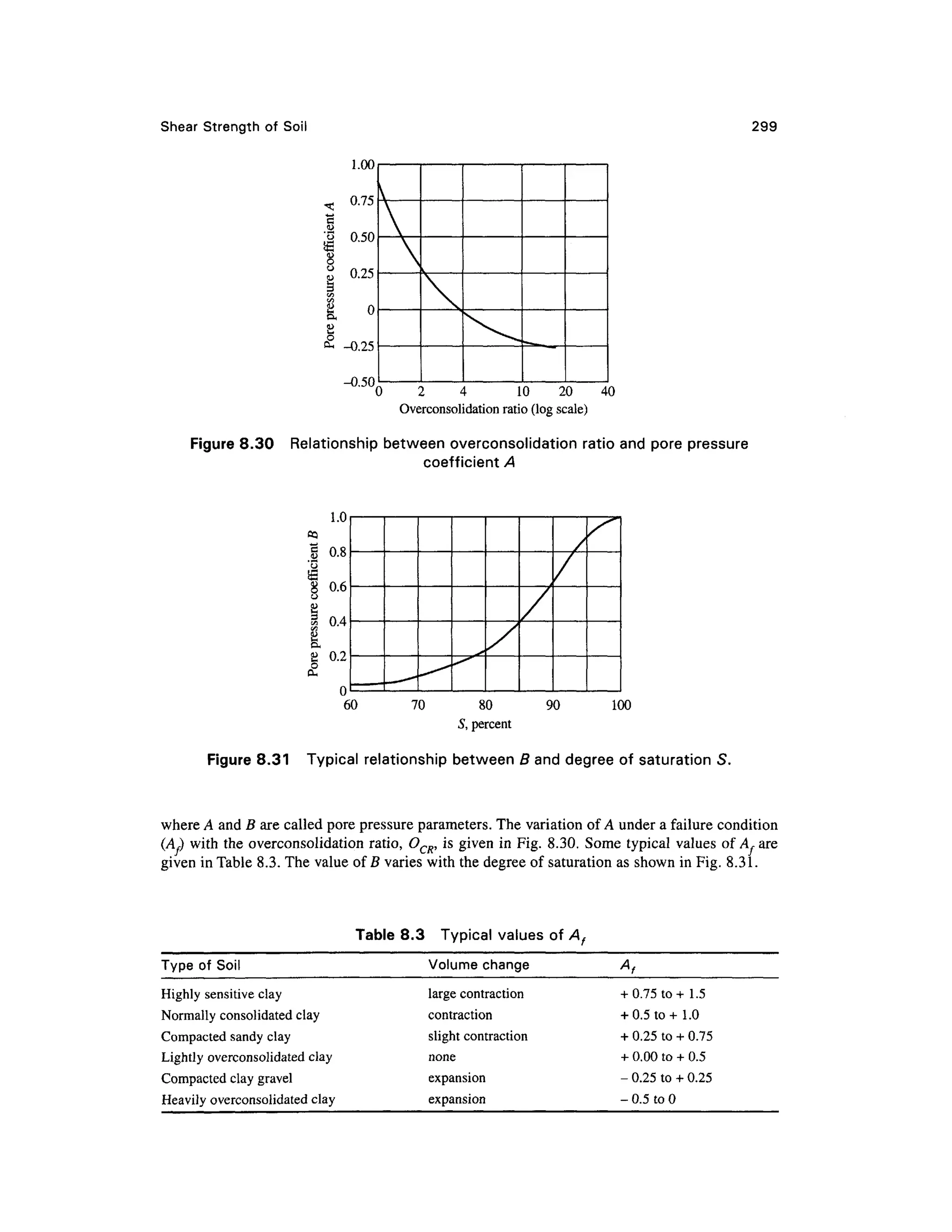


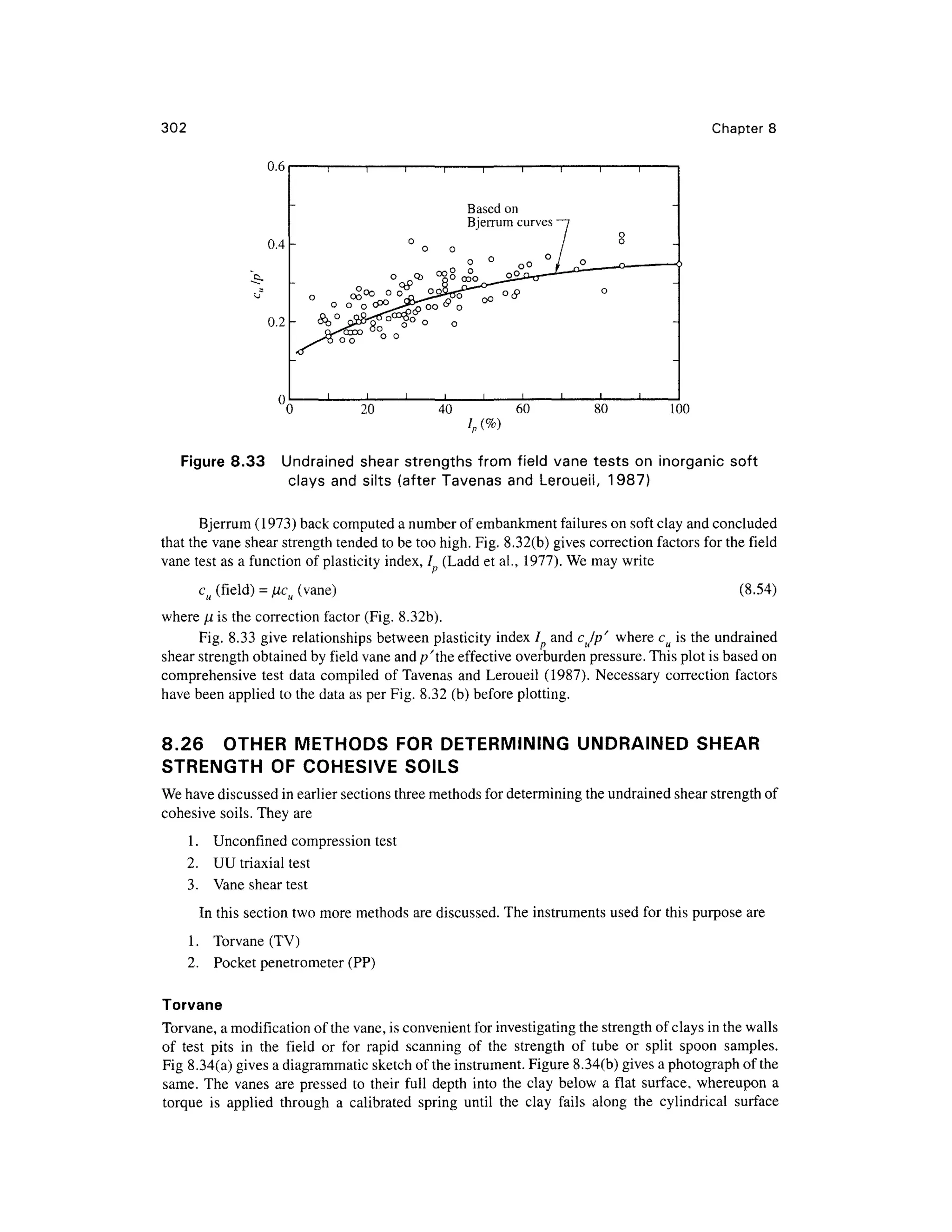

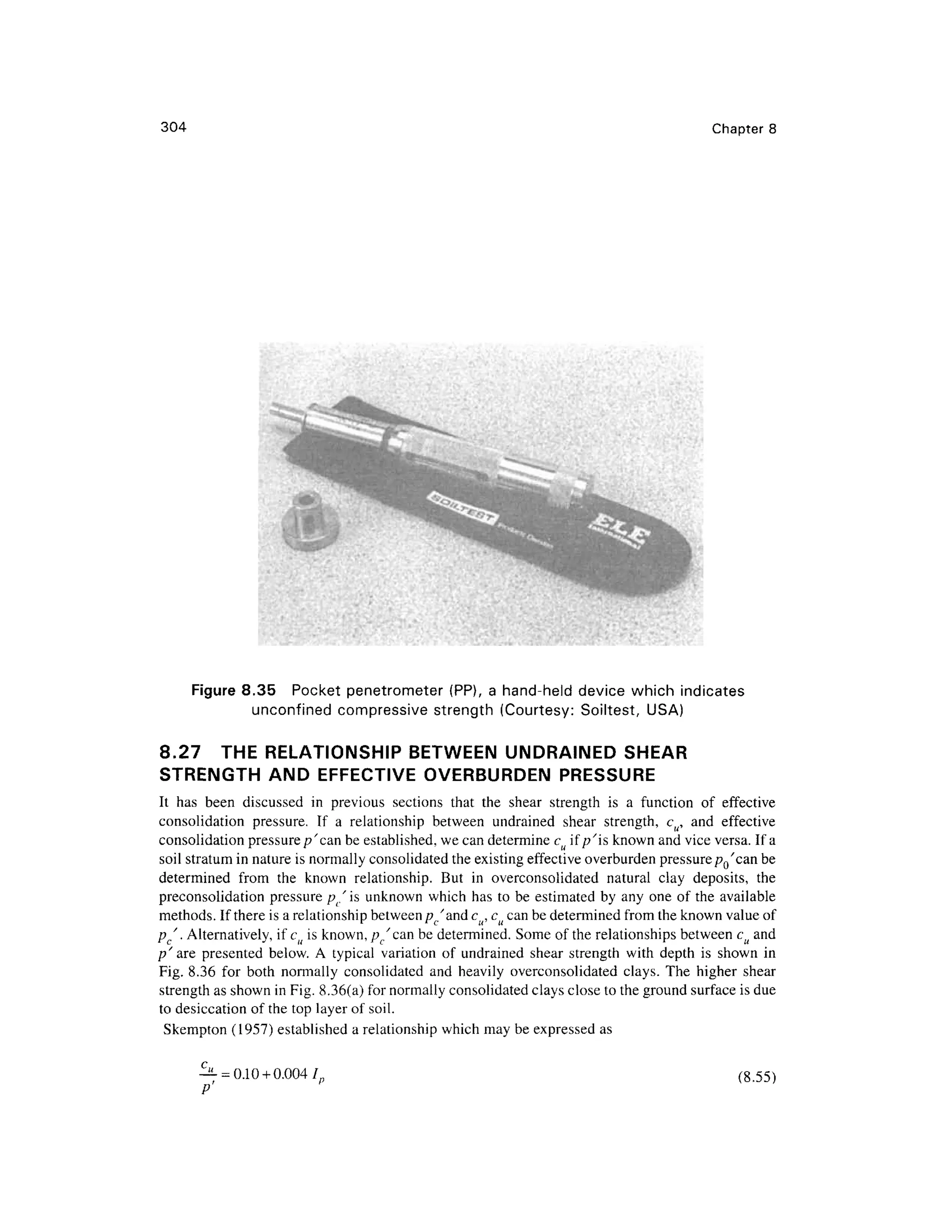
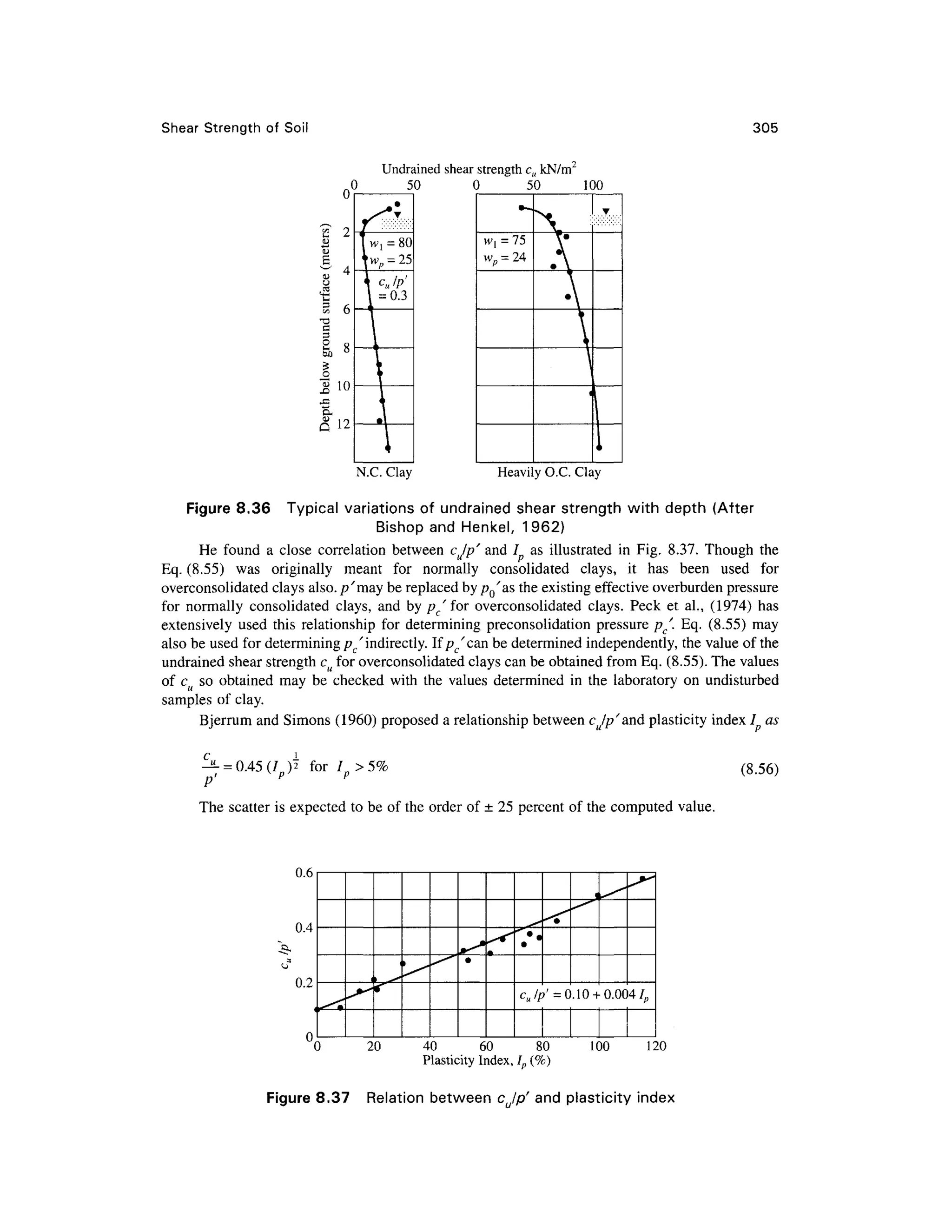
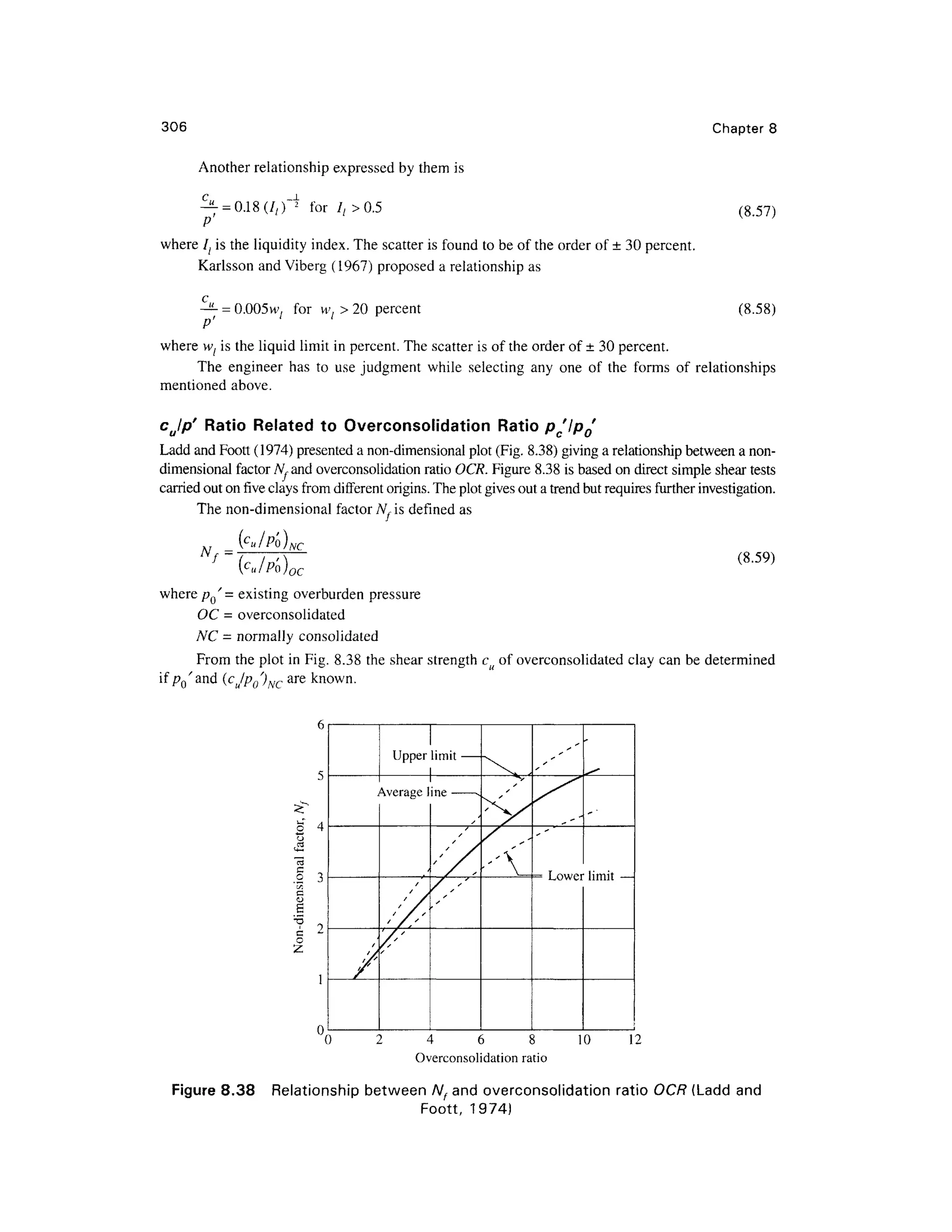
![Shear Strengt h of Soi l 30 7
Example 8.15
A normall y consolidate d cla y wa s consolidate d unde r a stres s o f 315 0 lb/ft2
, the n sheare d
undrained in axial compression. The principal stress difference at failure was 2100 lb/ft2
, an d the
induced por e pressur e a t failur e wa s 184 8 lb/ft2
. Determin e (a ) th e Mohr-Coulom b strengt h
parameters, i n term s o f bot h tota l an d effectiv e stresse s analytically , (b ) comput e ((T,/cr 3), and
(<7/
1/cr/
3),, and (c) determine the theoretical angle of the failure plane in the specimen.
Solution
The parameters required are: effective parameters c' and 0', and total parameters c and 0.
(a) Given <T3/= 3150 lb/ft 2
, and (<TJ - a 3)f= 2100 lb/ft2
. The total principal stress at failure alf
is obtained from
fflf= (CT j - aj f+ <7 3/ =2100 + 3150 =5250 lb/ft 2
Effective o /
1/= alf- u f= 5250 - 184 8 = 3402 lb/ft 2
°V =
cr3/- "/= 3150 - 184 8 = 1302 lb/ft2
Now cr j = <7 3 tan2
(45° + 0/2) + 2c tan (45° + 0/2
)
Since the soil is normally consolidated, c = 0. As such
---tan2
(45°
-tan (45 or
T * I * " 1 210
° ' I 2 1 0 0
1, 1 Co
Total 0 =sin ]
-
= sin"1
-
=14.5
5250 +3150 840 0
^ . - i 210 0 . _ ! 2100 _ , _ „
Effective 0 = sin -
= sin -
=26.5
3402+1302 470 4
(b) The stress ratios at failure are
^L=5250 ^[ = 3402 =Z6
1
cr3 315 0<j' 3 130 2
(c) From Eq. (8.18)
a = 45° +—= 45° +—= 58.25°
f
2 2
The above problem can be solved graphically by constructing a Mohr-Coulomb envelope.
Example 8.16
The following results were obtained at failure in a series of consolidated-undrained tests, with pore
pressure measurement, on specimens of saturated clay. Determine the values of the effective stres s
parameters c'and 0x
by drawing Mohr circles.
a3 kN/m2
a , - o 3 kN/m2
u w kN/m2
150 19 2 8 0
300 34 1 15 4
450 50 4 22 2](https://image.slidesharecdn.com/geotechbook-240326034957-6522ccd8/75/geotech-book-FOR-CIVIL-ENGINEERINGGG-pdf-326-2048.jpg)
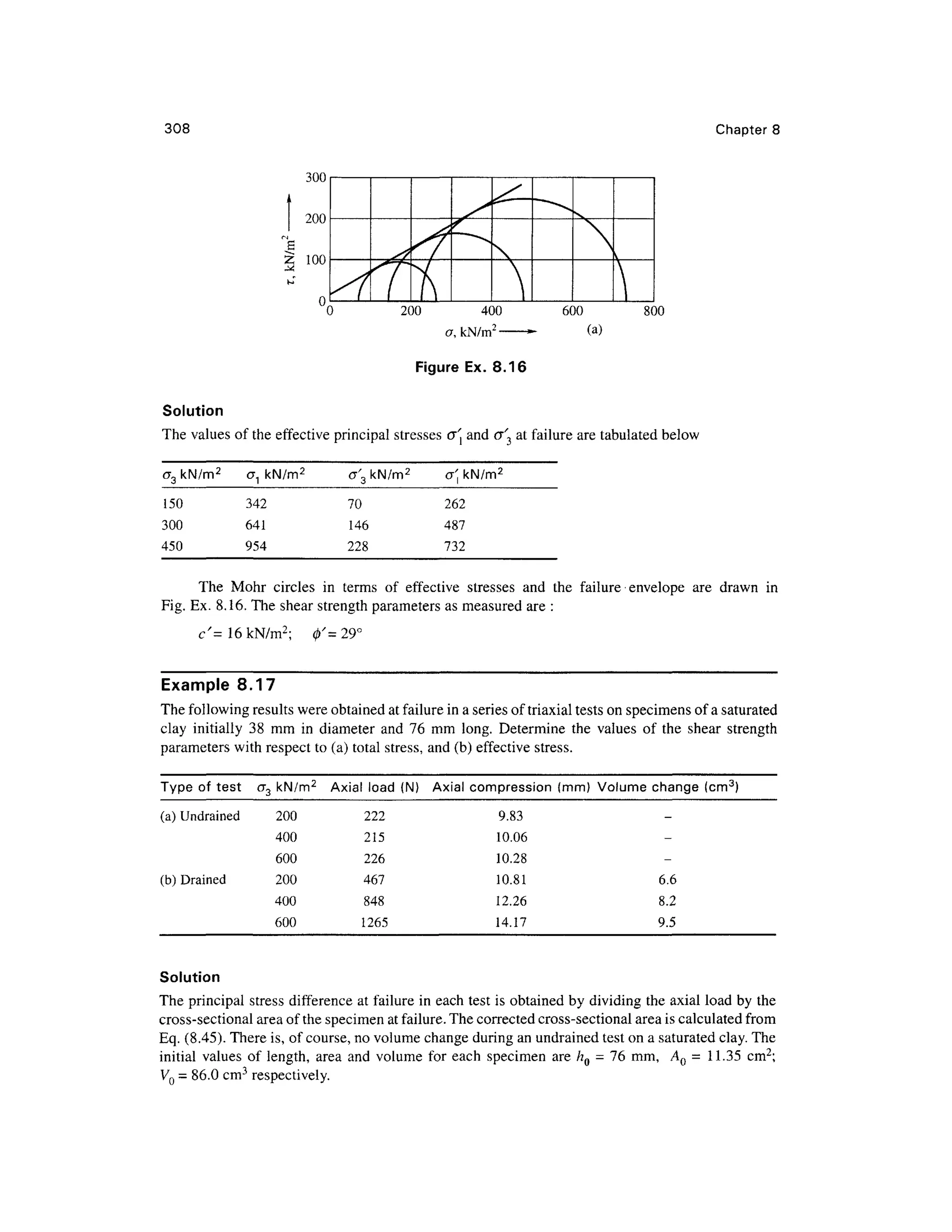
![Shear Strengt h o f Soi l 309
'0 20 0 40 0 60 0 80 0 100 0 120 0
cr, kN/m2
-
Figure Ex. 8.17
The Mohr circles at failure and the corresponding failure envelopes for both series of tests are
shown in Fig. Ex. 8.17. In both cases the failure envelope is the line nearest to the common tangent
to the Mohr circles. The total stress parameters representing the undrained strength of the clay are:
cu = 85 kN/m2
; 0 u = 0
The effective stres s parameters, representin g the drained strength of the clay, are:
c' = 20 kN/m2
; 0 = 26°
a~ A/7//? n AWV n Are a (corrected ) a, - a- a,
3 0 0 1 3 1
a
b
kN/m2
200
400
600
200
400
600
0.129
0.132
0.135
0.142 0.07 7
0.161 0.09 5
0.186 0.11 0
cm2
13.04
13.09
13.12
12.22
12.25
12.40
kN/m2
170
160
172
382
691
1020
kN/m2
370
564
772
582
1091
1620
Example 8.1 8
An embankmen t is being constructed of soil whose properties ar e c'-107 1 lb/ft 2
, 0' = 21° (all
effective stresses) , an d y= 99.85 lb/ft3
. The pore pressure parameters as determined fro m triaxia l
tests are A = 0.5, and B = 0.9. Find the shear strength of the soil at the base of the embankment just
after th e heigh t o f fil l ha s bee n raise d fro m 1 0 ft t o 2 0 ft . Assume that the dissipatio n of por e
pressure during this stage of construction is negligible, and that the lateral pressure at any point is
one-half of the vertical pressure.
Solution
The equation for pore pressure is [Eq. (8.51)]
A« = 5JAcr3 +A(AcTj -Acr3)|
AcTj = Vertical pressure due to 1 0 ft of fill = 10 x 99.85 = 998.5 lb/ft2](https://image.slidesharecdn.com/geotechbook-240326034957-6522ccd8/75/geotech-book-FOR-CIVIL-ENGINEERINGGG-pdf-328-2048.jpg)
![310 Chapter s
9985
ACT, = ^
^ = 499.25 lb/ft 2
3
2
Therefore, A w = 0.9[499.25 + 0.5 x 499.25] = 674 lb/ft 2
Original pressure, ^ = 10x99.85 = 998.5 lb/ft 2
Therefore, a' = <j} + A<JI - A w
= 998.5 + 998.5 -674 = 1323 lb/ft2
Shear strength, s = c' + a'tan0'= 1071 +1323tan21° = 1579 lb/ft 2
Example 8.1
9
At a depth o f 6 m below th e groun d surface a t a site , a van e shea r tes t gav e a torque valu e of
6040 N-cm. The vane was 10 cm high and 7 cm across the blades. Estimate the shear strength of the
soil.
Solution
Per Eq. (8.53)
Torque (r )
c =
where T = 6040 N-cm, L = 10 cm, r = 3.5 cm.
substituting,
6040 , „ X T , 7
c, =
= 6.4 N /cm2
- 6 4 kN/m2
" 2 x3.14 x 3.52
(10 +0.67 x 3.5) ~ °4 K1N/m
Example 8.20
A van e 11.2 5 c m long , an d 7. 5 c m i n diamete r wa s presse d int o sof t cla y a t th e botto m o f a
borehole. Torqu e was applied to cause failure of soil. The shear strength of clay was found t o be
37 kN/m2
. Determine the torque that was applied.
Solution
From Eq. (8.53) ,
Torque, T = cu [2nr2
(L + 0.67r)] wher e c u = 37 kN/m2
= 3.7 N/cm2
- 3.7 [2 x3.14 x (3.75)2
(11.25 + 0.67 x 3.75)] = 4500 N -cm
8.28 GENERA L COMMENT S
One o f the mos t importan t and the mos t controversial engineerin g propertie s o f soi l i s its shea r
strength. The behavior of soil under external load depends on many factors such as arrangement of
particles i n the soi l mass , it s mineralogical composition , wate r content, stres s histor y and many
others. The types of laboratory tests to be performed on a soil sample depends upon the type of soil](https://image.slidesharecdn.com/geotechbook-240326034957-6522ccd8/75/geotech-book-FOR-CIVIL-ENGINEERINGGG-pdf-329-2048.jpg)
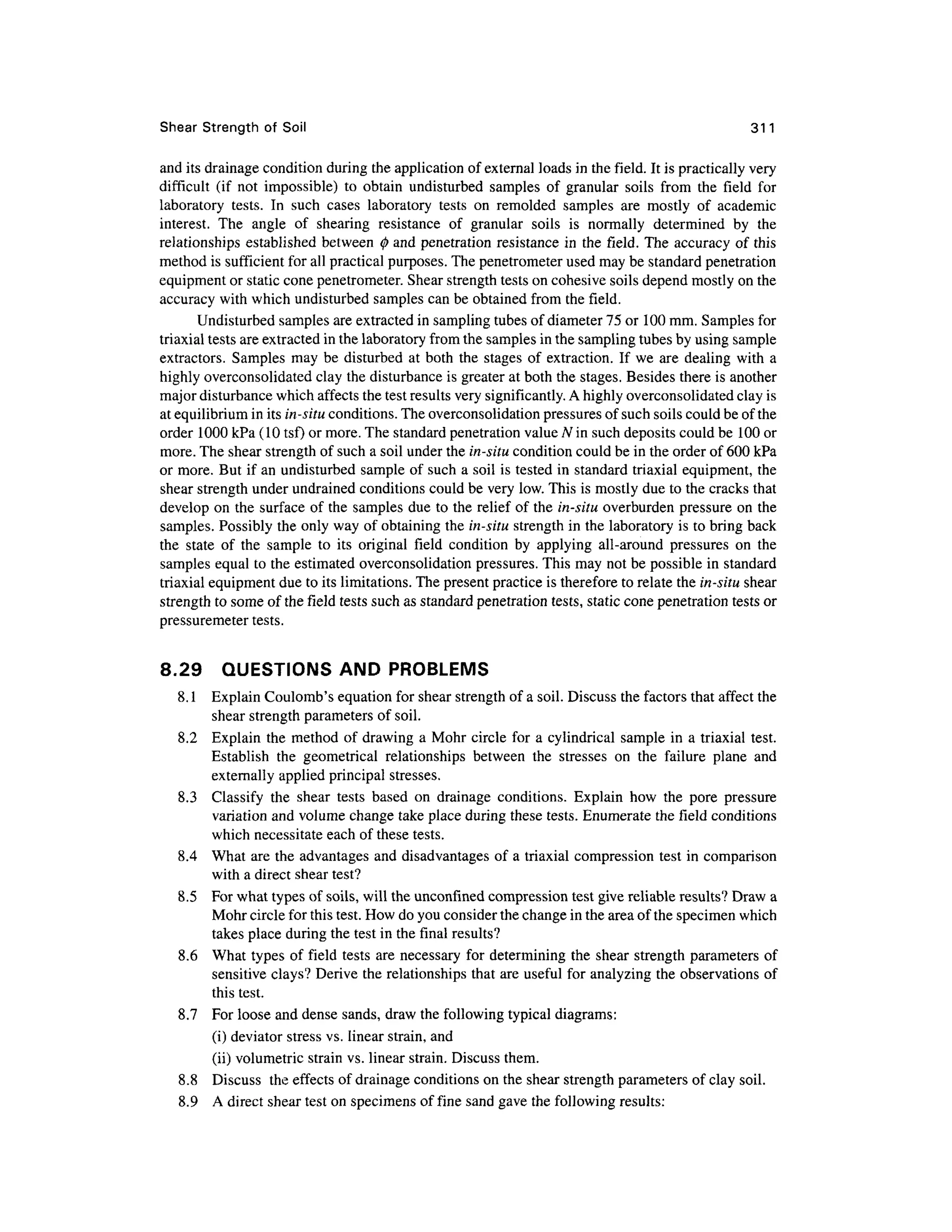


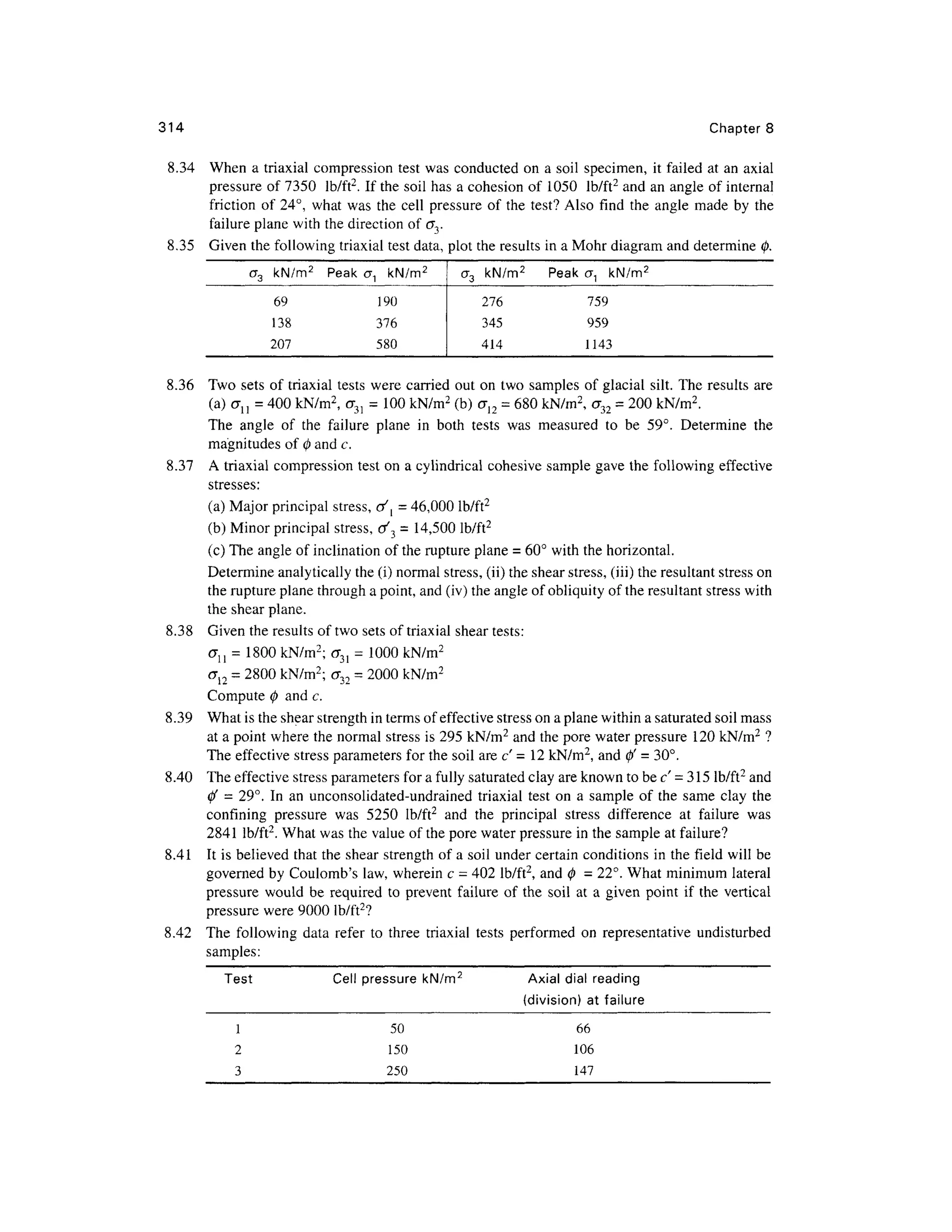


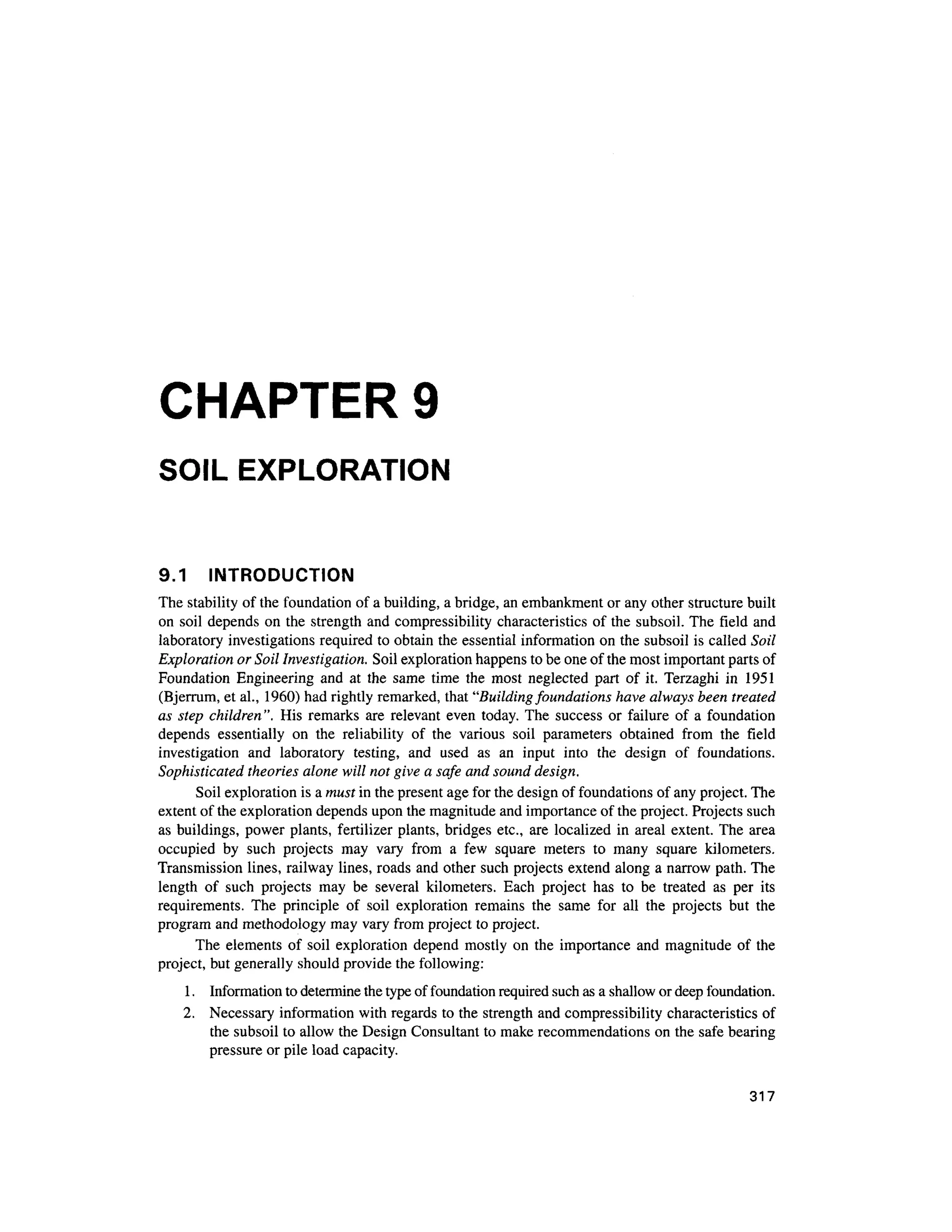
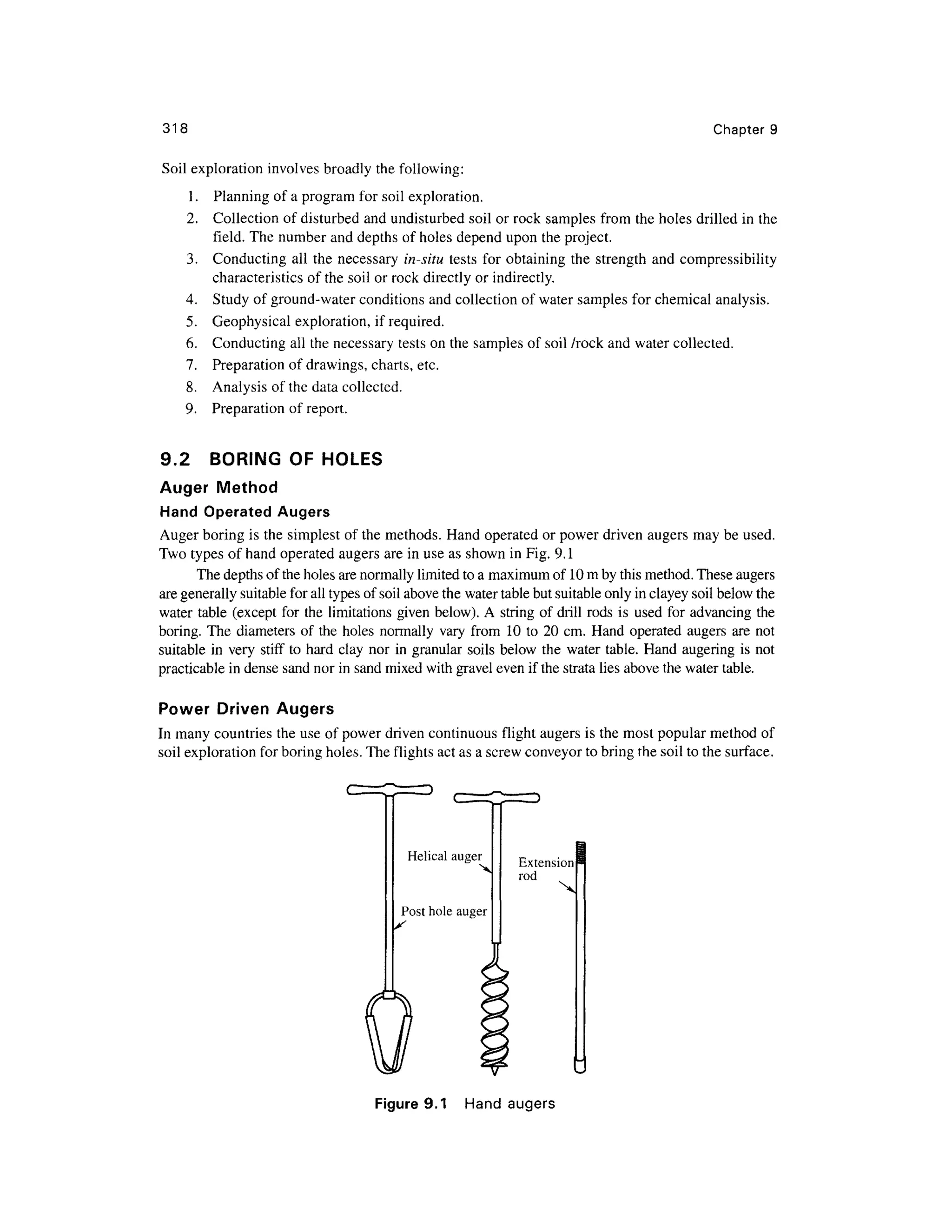

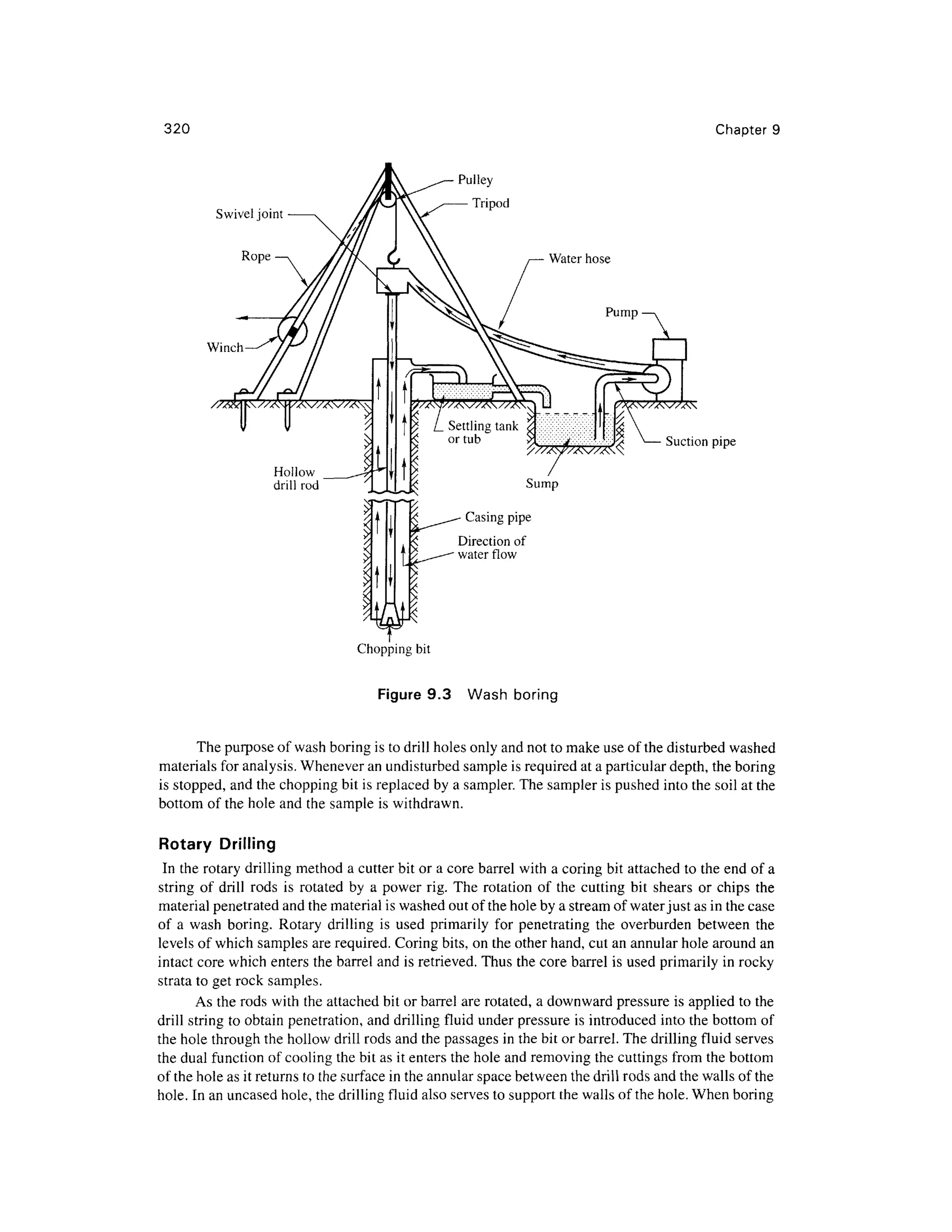

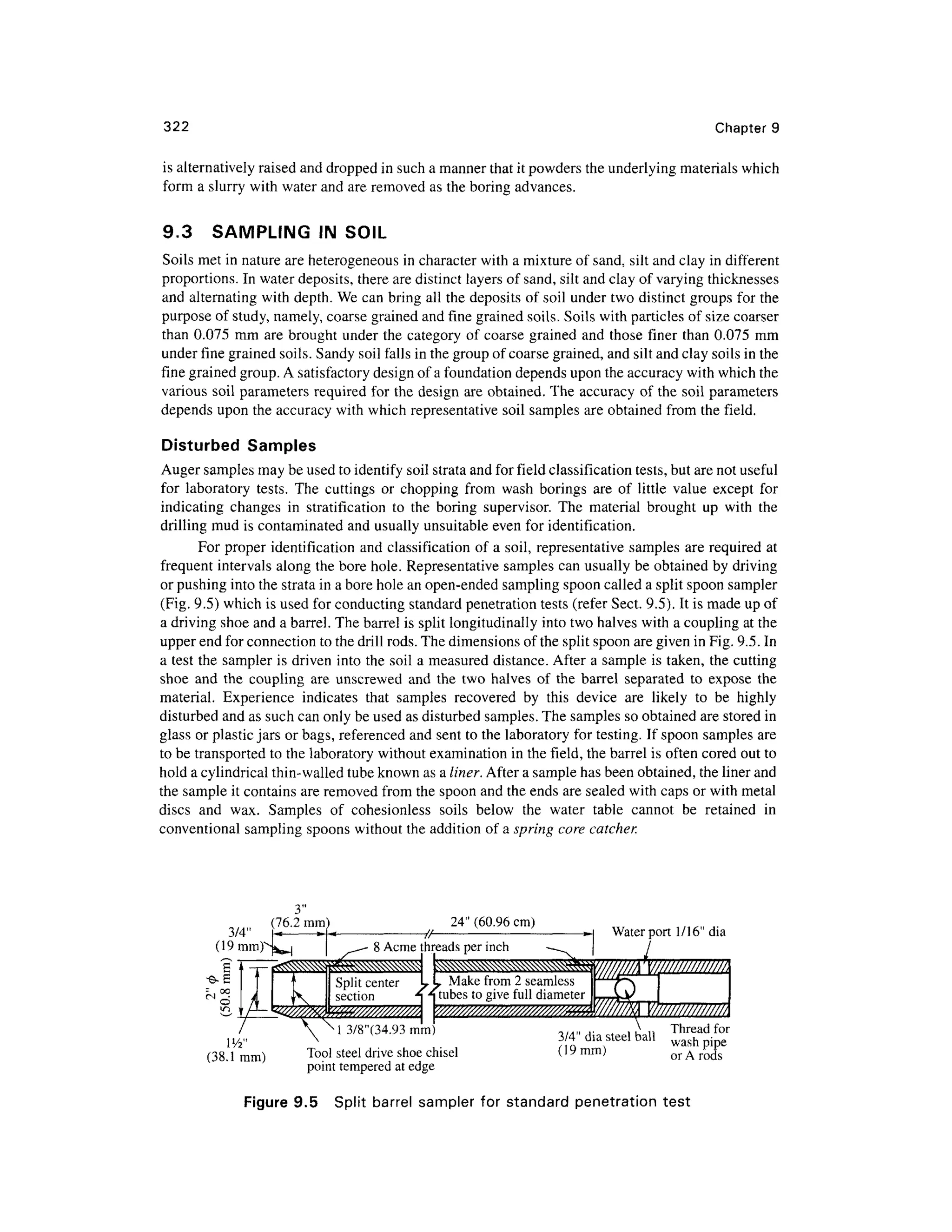


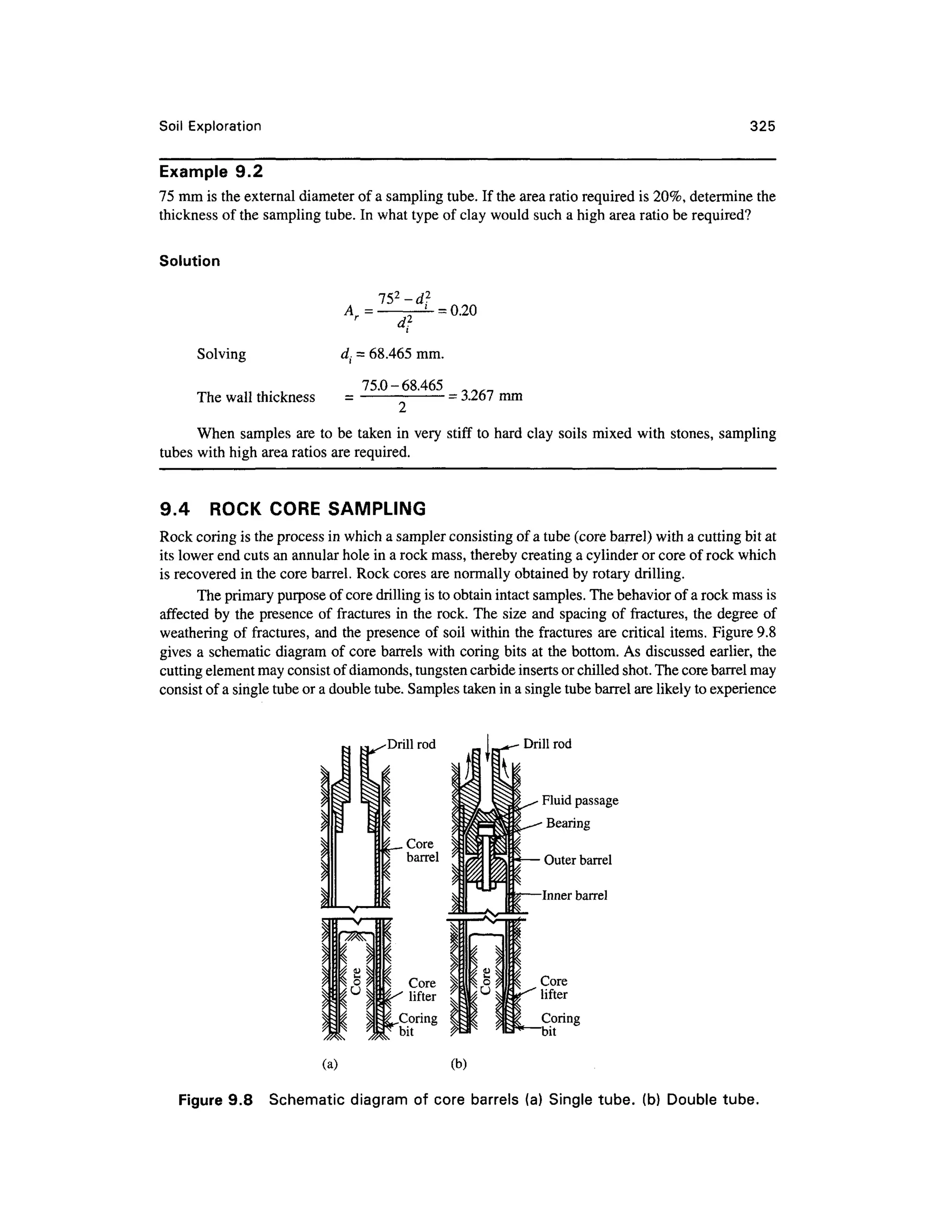


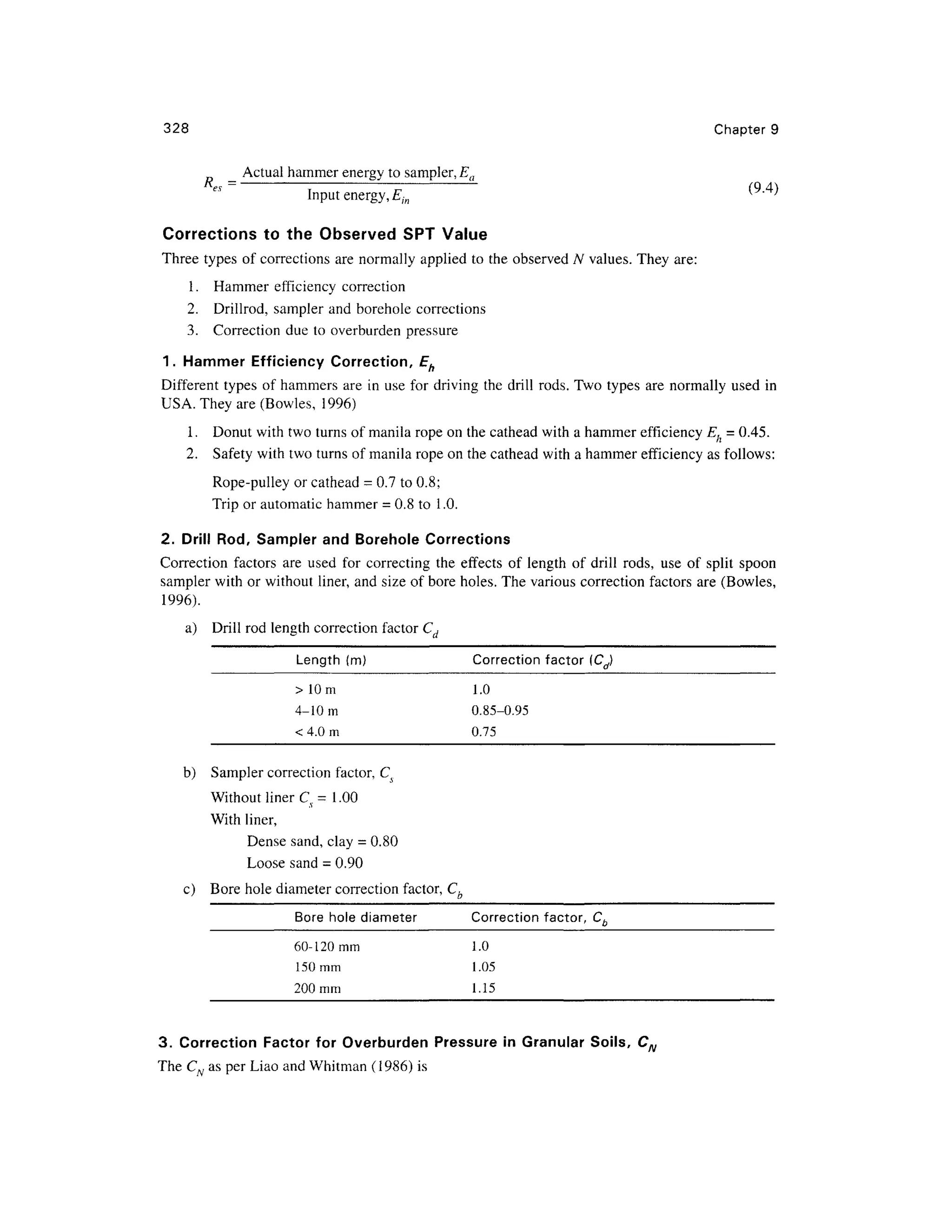
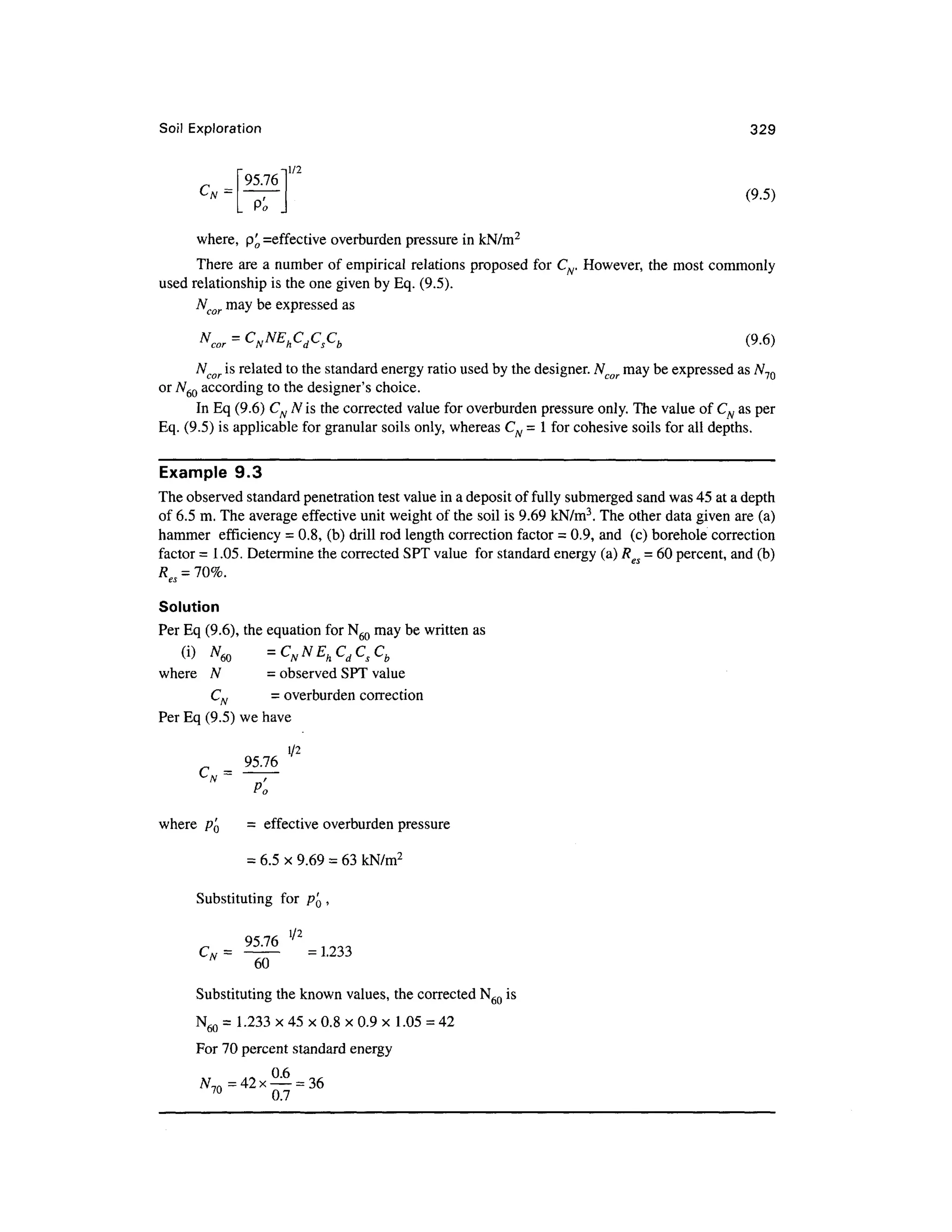









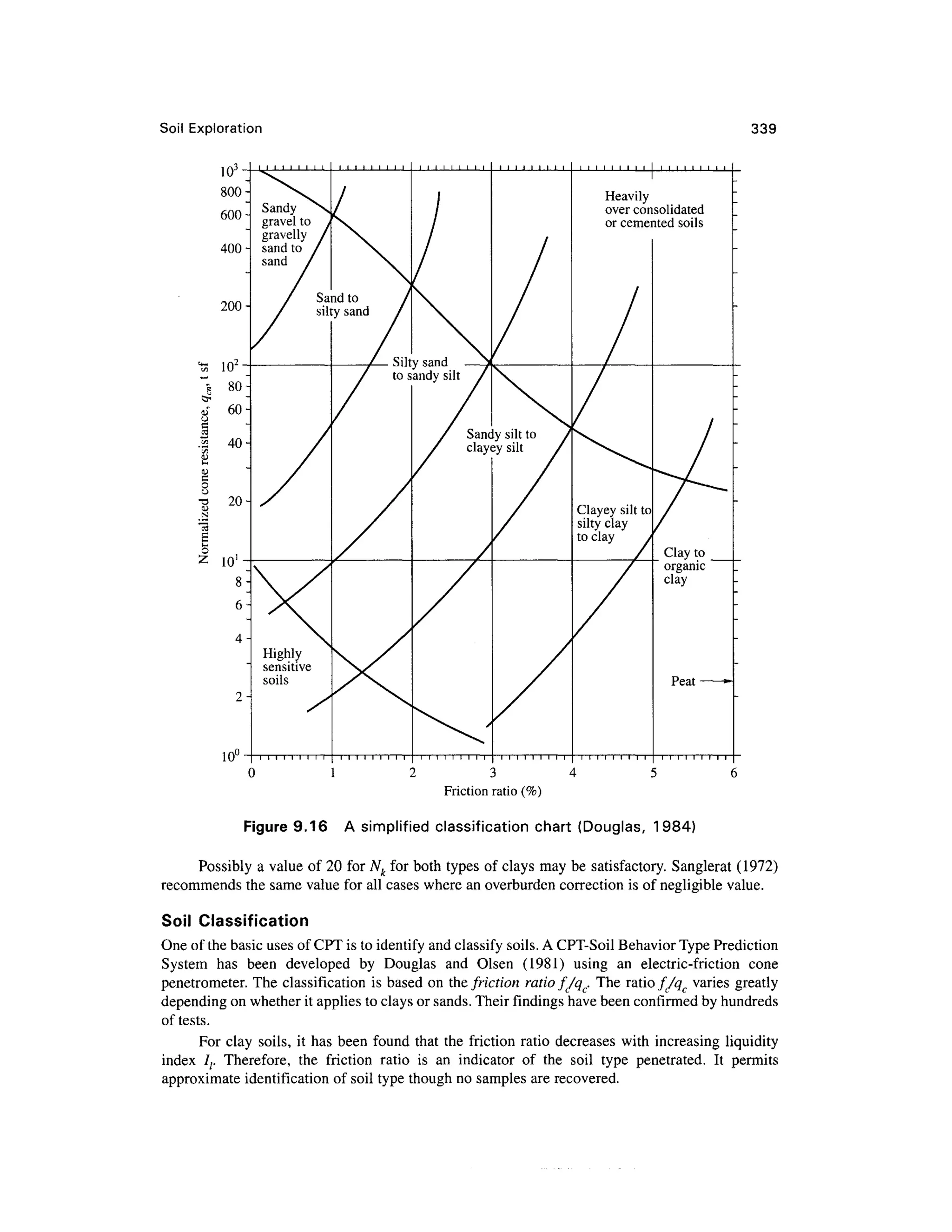
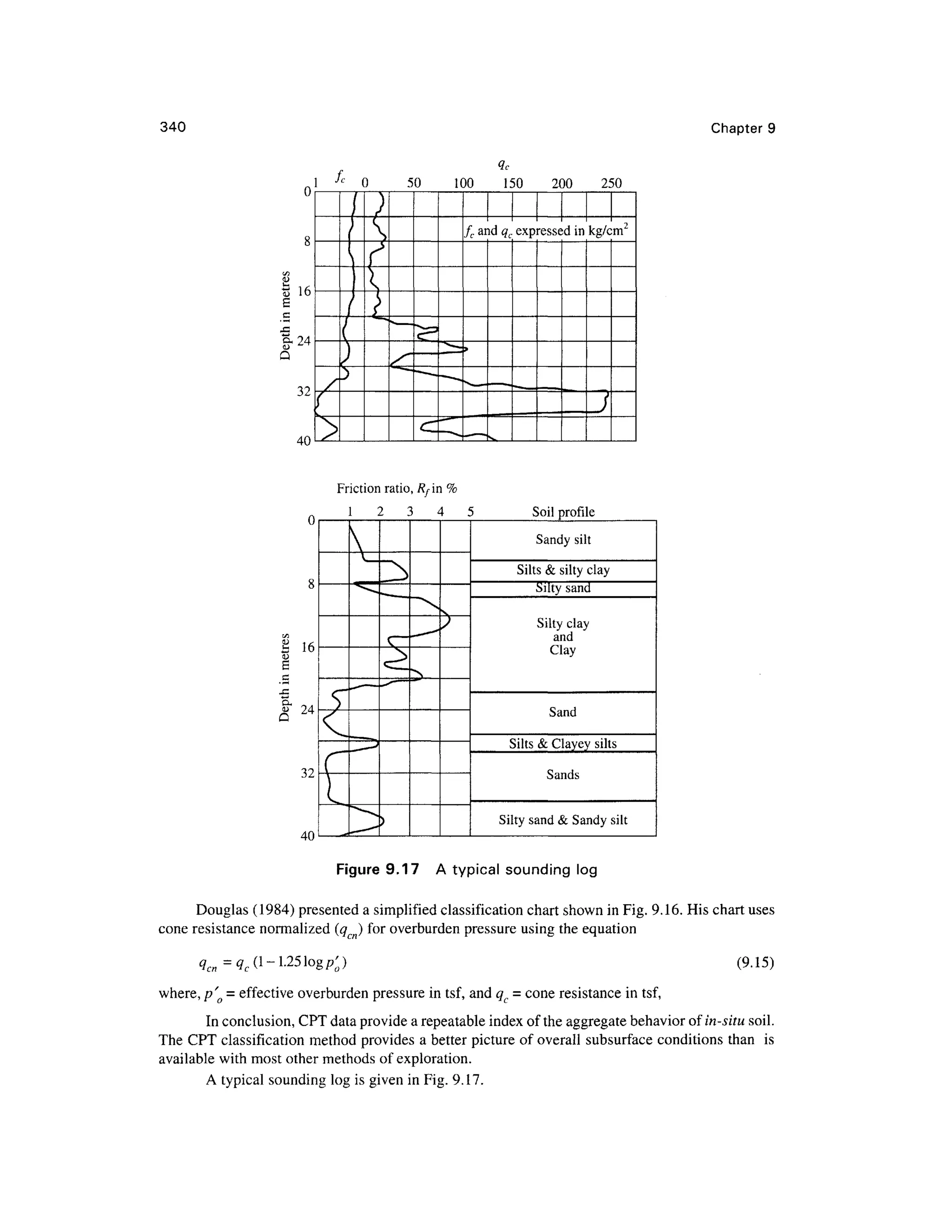


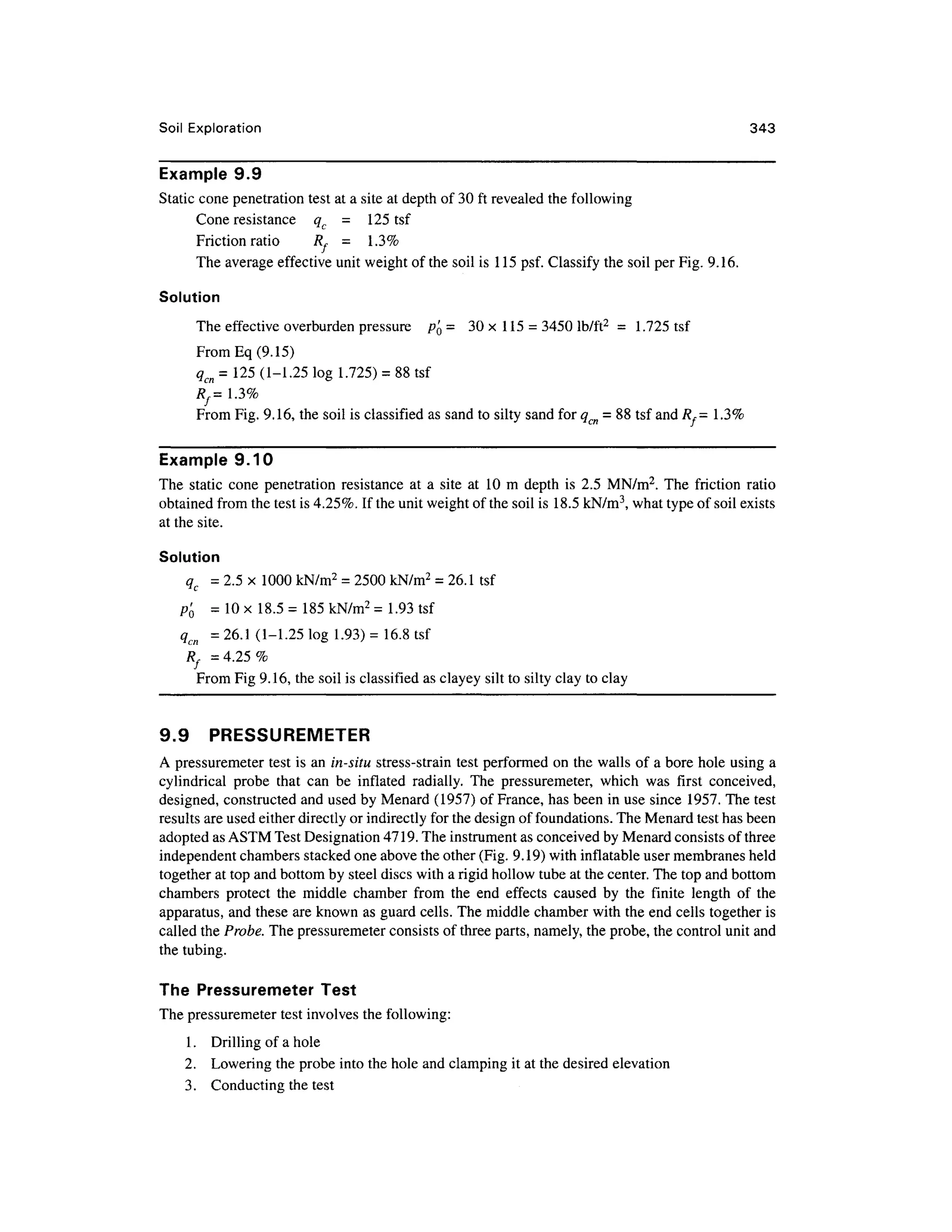

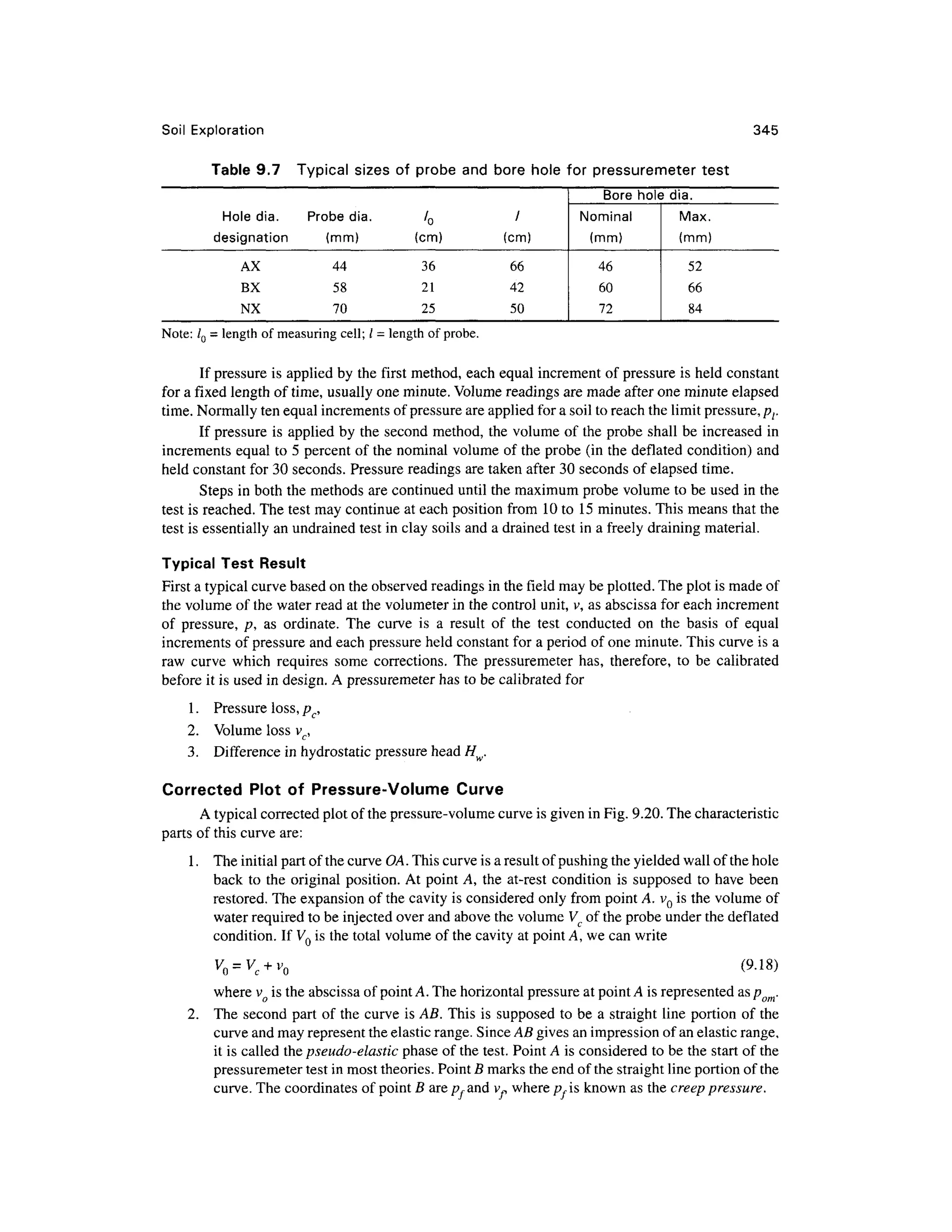

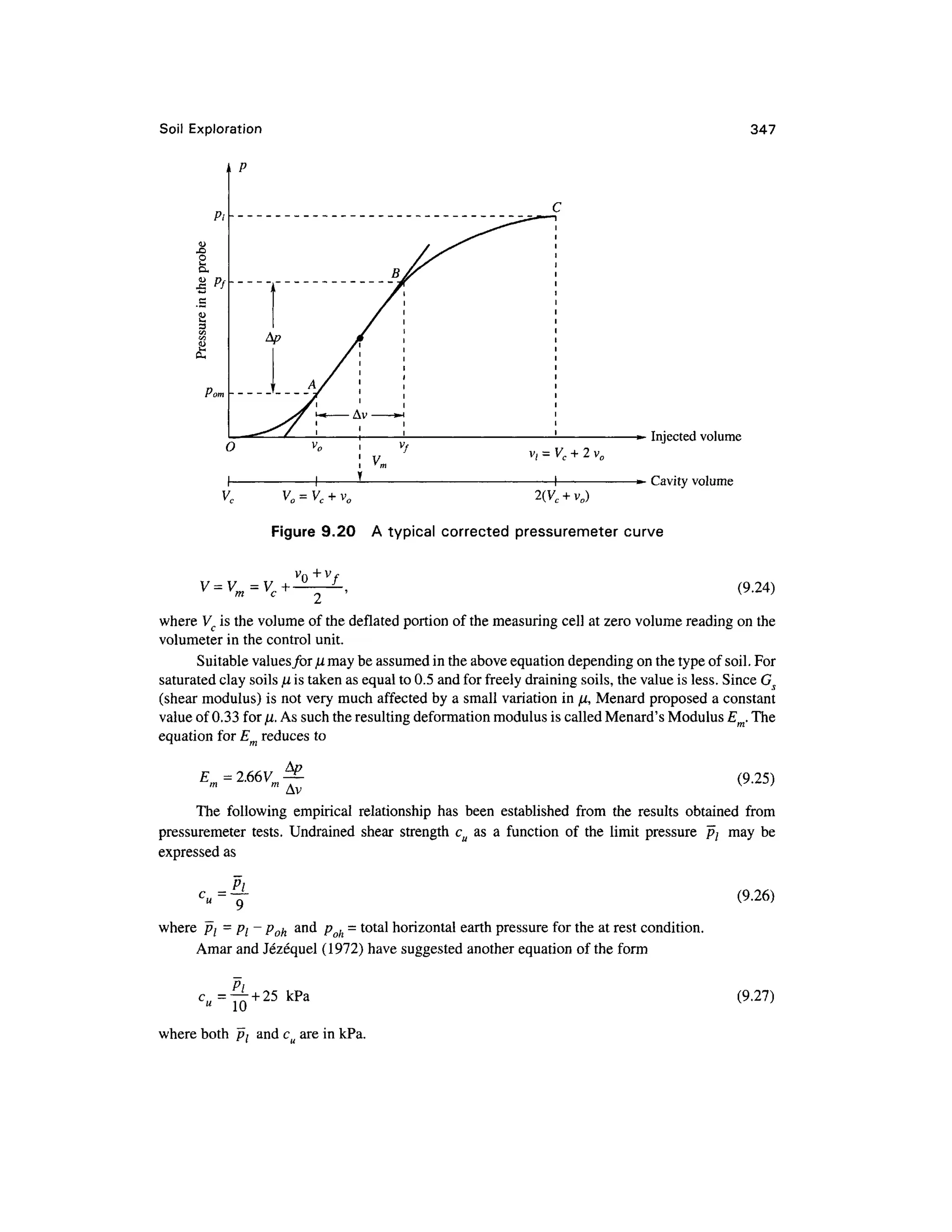
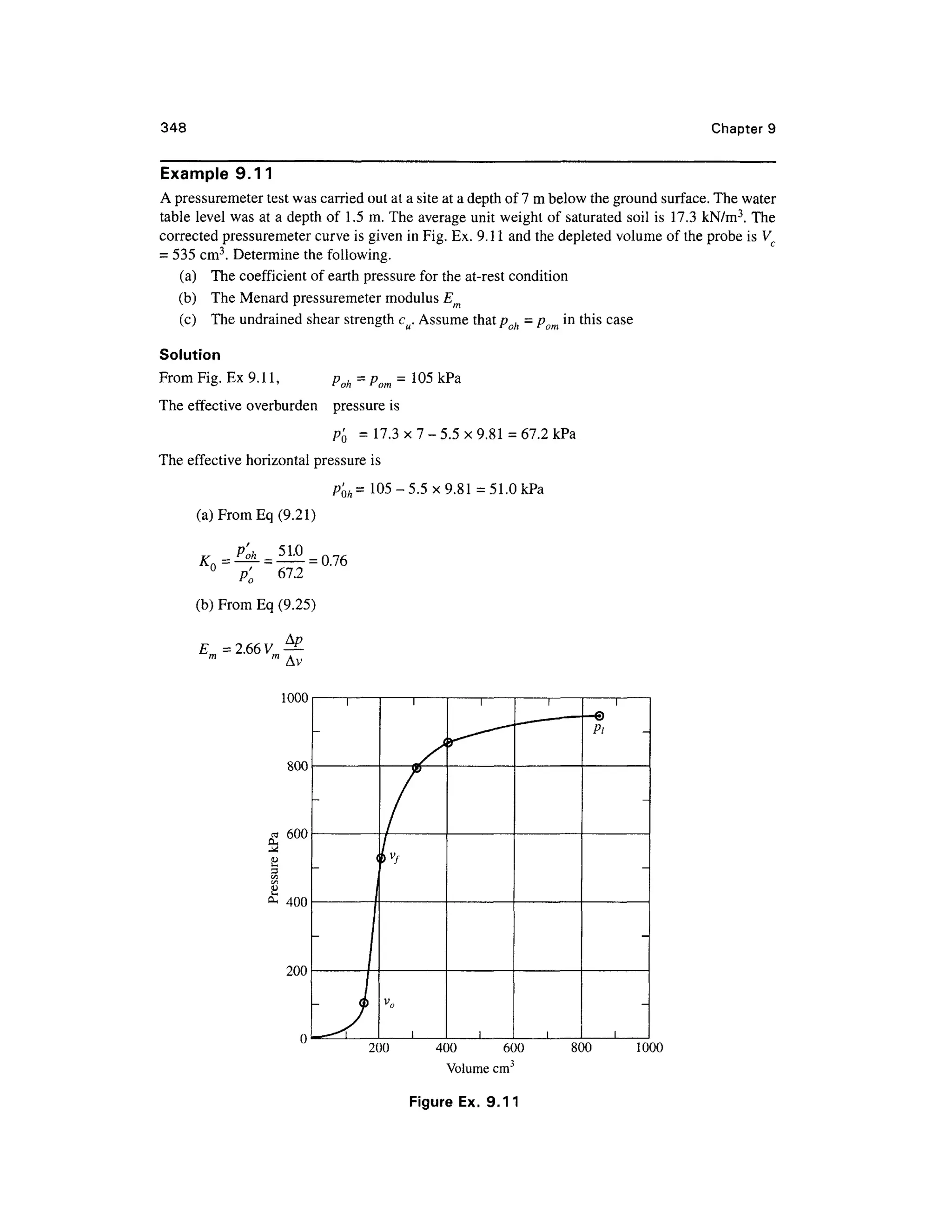


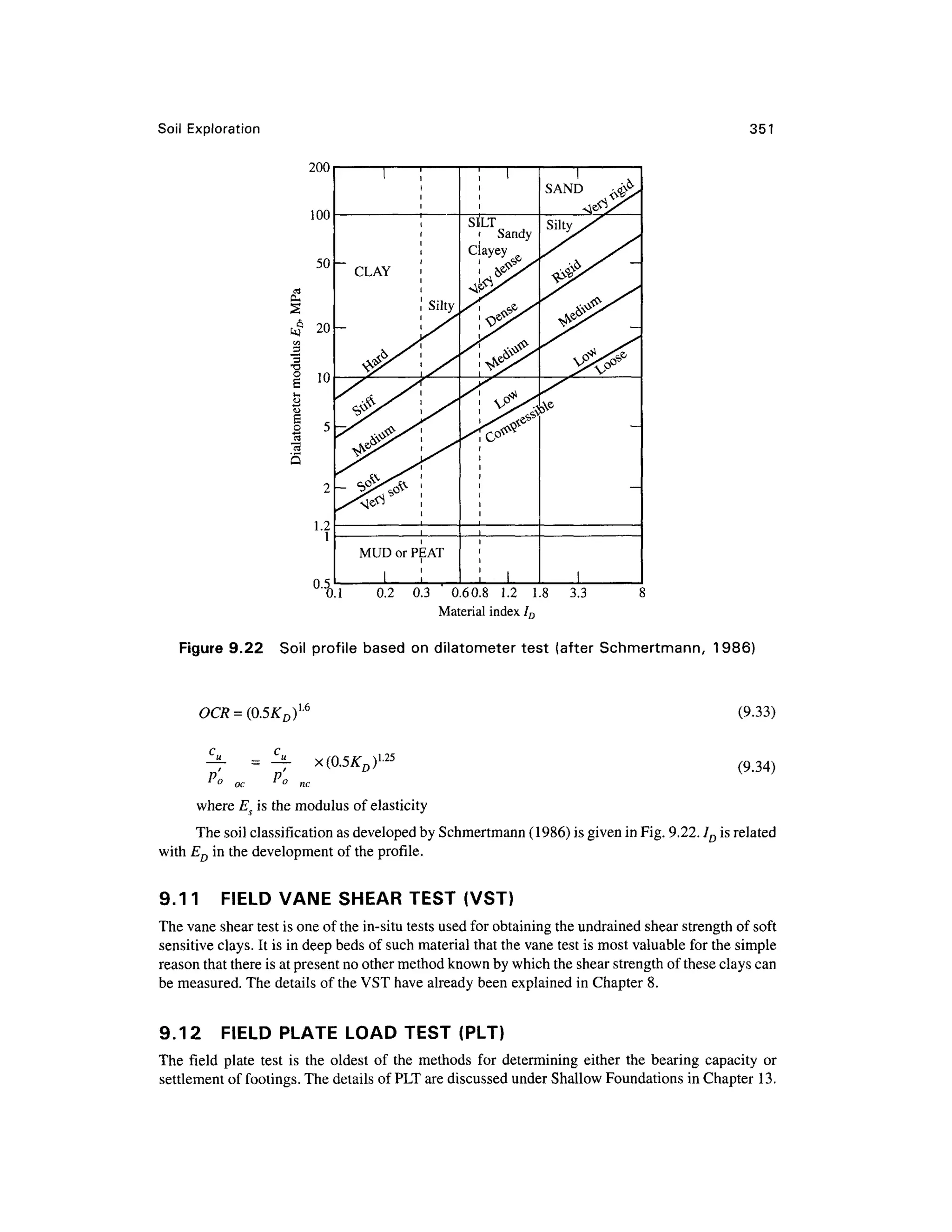










![362
9.17 PROBLEM S
Chapter 9
9.1 Comput e the area ratio of a sampling tube given the outside diameter = 100 mm and inside
diameter = 94 mm. In what types of soil can this tube be used for sampling?
9.2 A standar d penetratio n tes t wa s carrie d ou t a t a site . Th e soi l profil e i s give n i n
Fig. Prob. 9.2 with th e penetration values. The average soi l data are given for each layer.
Compute the corrected value s of N and plot showing the
(a) variatio n of observed value s with depth
(b) variatio n of corrected value s with depth for standard energy 60 %
Assume: Eh = 0.7, C d = 0.9, C s = 0.85 an d Cb = 1.05
Depth (m)
0
2m
2-
Sand
•ysdt=185kN/m
3
•
4m
Figure Prob. 9. 2
N-values
20
A
8-
10-
1 9
14
'V ' . '. ' ' ' '
''-;'.- • ''• ;B ;• ''•:
'"' •"•' 'V - ?•'"••..'• ''".' i .'"•'•'-.v' : V
-'':
'..'' •'•'.' i .'"•''•'•.'J'' J
v•"• • : 'j.(- /•- .'.*•> * . ,v - V : 'i.^; .V
:
*y ... v - V ;'*; •
.7 ^y at = is 5 kN/m3
J'V'c ,•*'.;--•'•/-.- .'/"j;":^
Sand• -.;• • ••'.. :. ; ' . '.-.•' • ' . ; • . '
. :y sal= 1981kN/m3
:/ * . . •.,.'- . - :-.-'?. ,
. . C . . - . . . - ; • • - • • • '
,"
m
t-
m
m
[.'•'
. 3 0
' f " ^ *
/ /^ ]
CV
1 5
^ /''A/- ' 19
•
9.3 Fo r the soil profile given in Fig. Prob 9.2, compute the corrected values of W for standar d
energy 70% .
9.4 Fo r the soil profile given in Fig. Prob 9.2, estimate the average angle of friction for the sand
layers based o n the following:
(a) Tabl e 9.3
(b) E q (9.8 ) by assuming the profile contains less tha n 5% fines (Dr ma y b e taken fro m
Table 9.3 )
Estimate the values of 0 and Dr for 60 percent standar d energy.
Assume: Ncor = N6Q.
9.5 Fo r the corrected value s of W 60 given in Prob 9.2, determine the unconfined compressiv e
strengths o f cla y a t point s C an d D i n Fi g Pro b 9. 2 b y makin g us e o f Tabl e 9. 4 an d
Eq. (9.9). What is the consistency of the clay?
9.6 A stati c con e penetratio n tes t wa s carrie d ou t a t a sit e usin g a n electric-frictio n con e
penetrometer. Fig . Pro b 9. 6 give s th e soi l profil e an d value s o f q c obtained a t variou s
depths.
(a) Plo t the variation of q wit h depth](https://image.slidesharecdn.com/geotechbook-240326034957-6522ccd8/75/geotech-book-FOR-CIVIL-ENGINEERINGGG-pdf-381-2048.jpg)
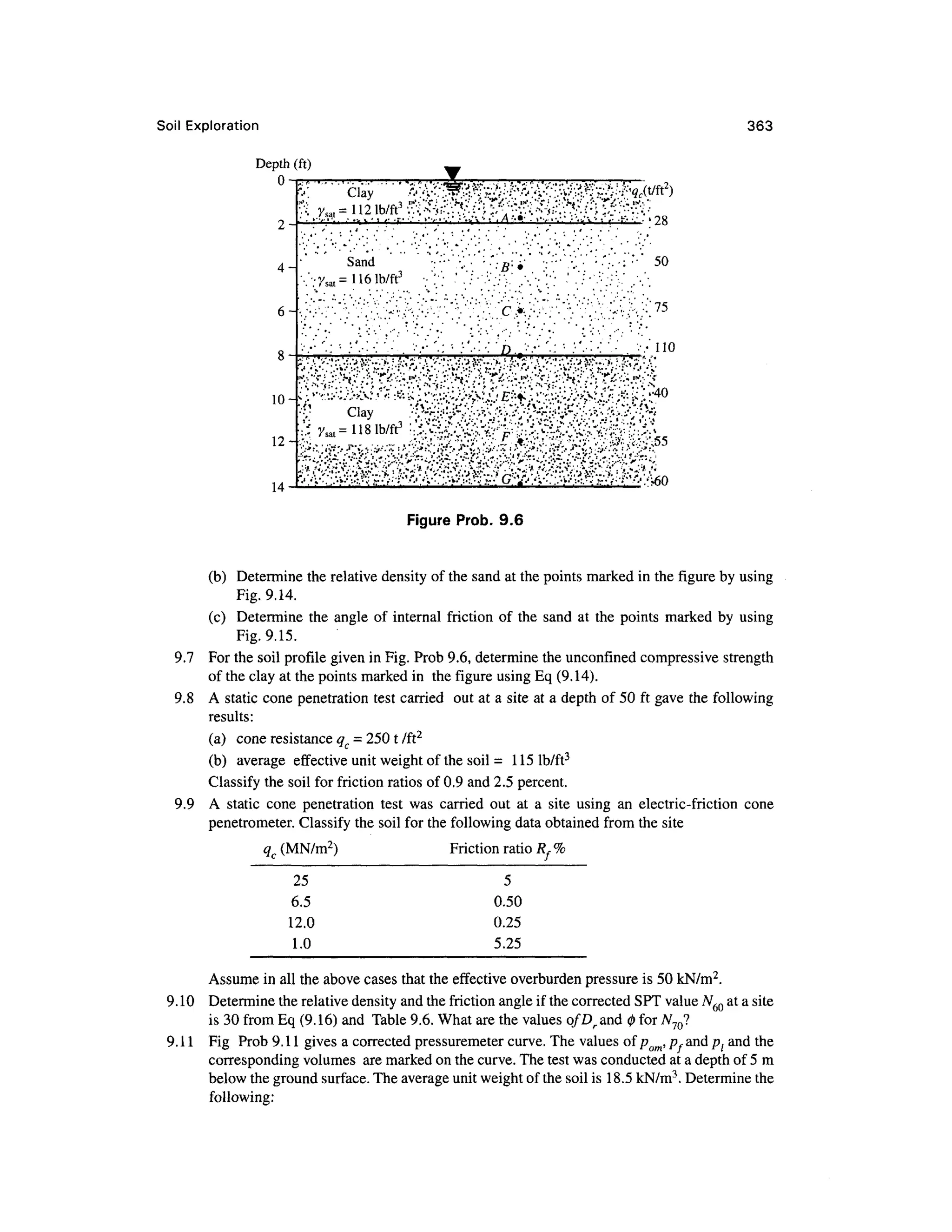
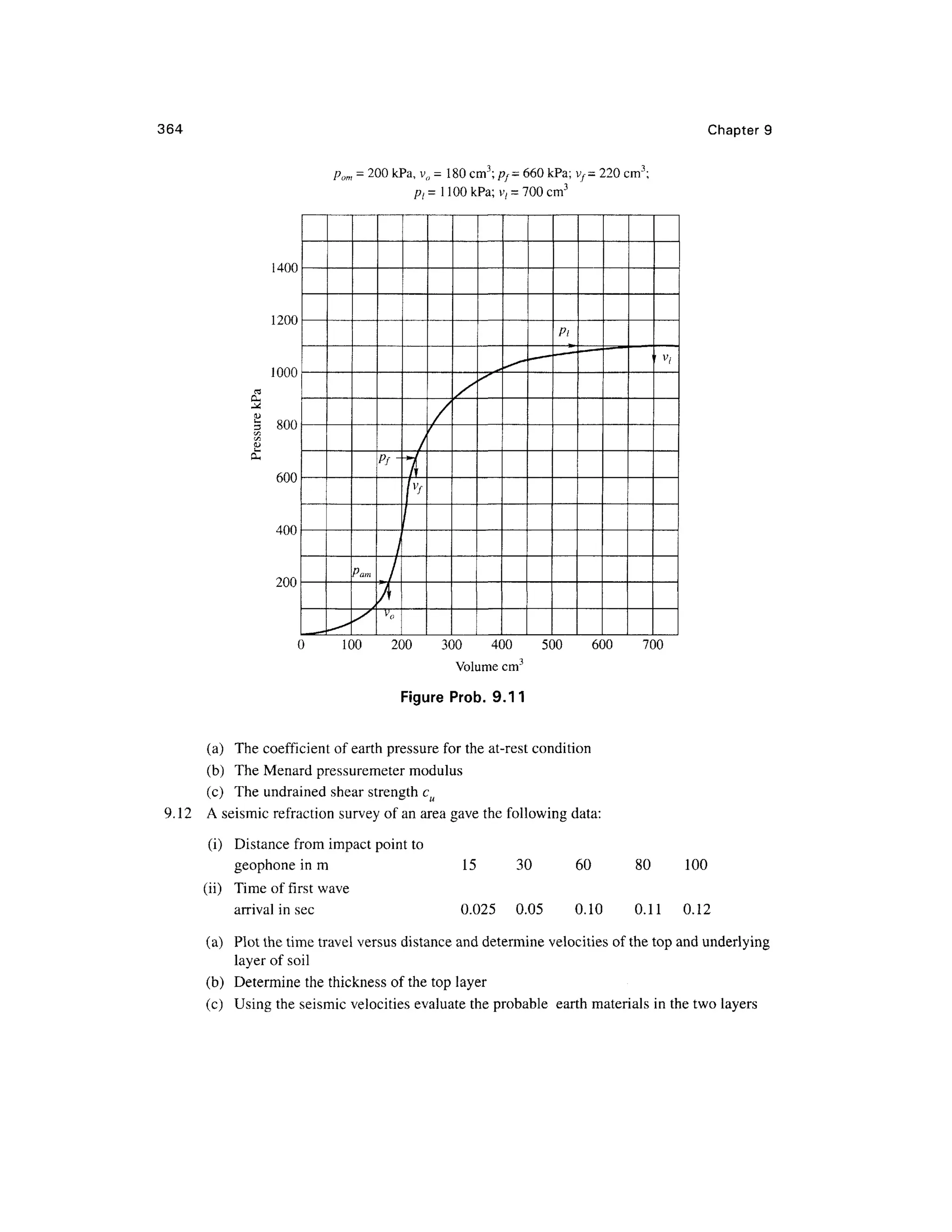
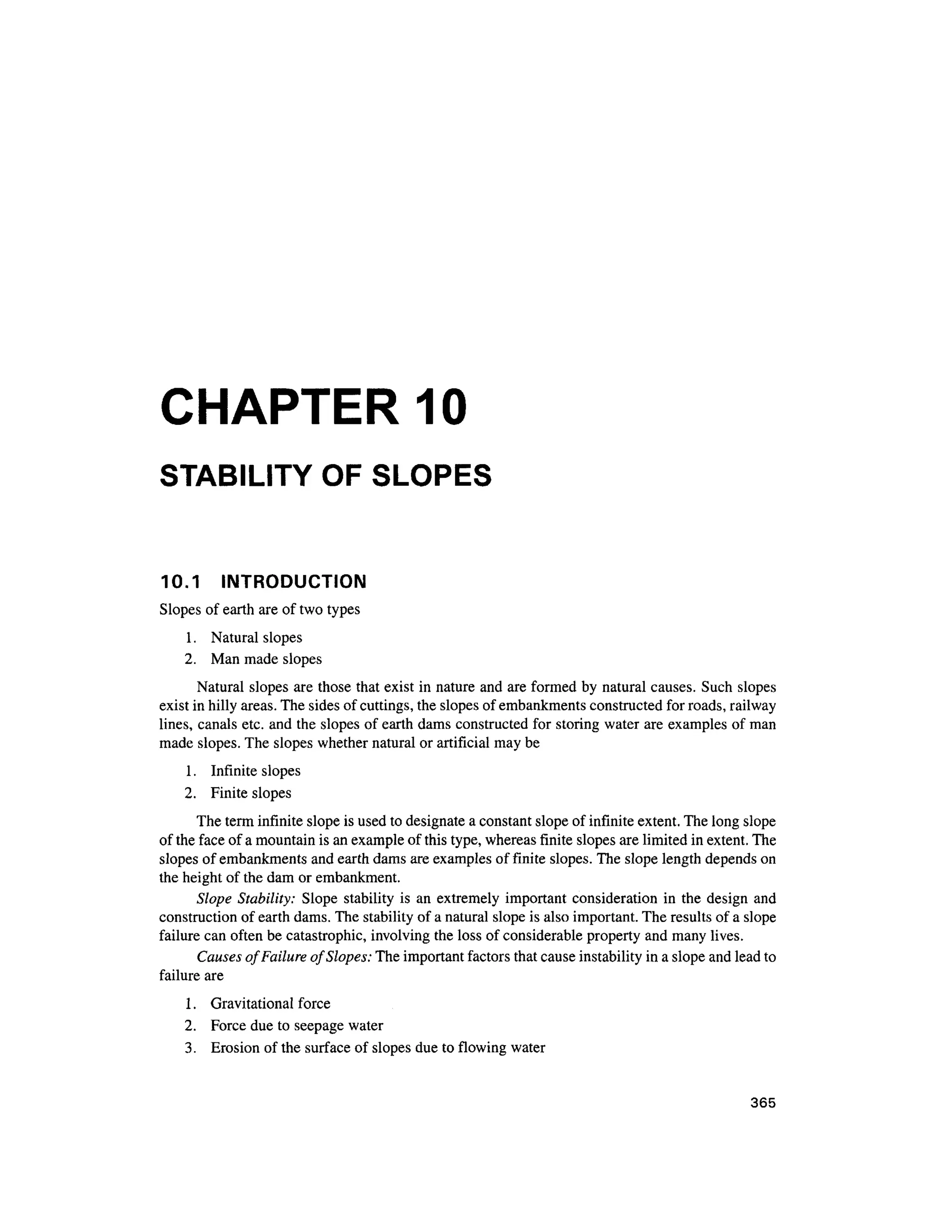


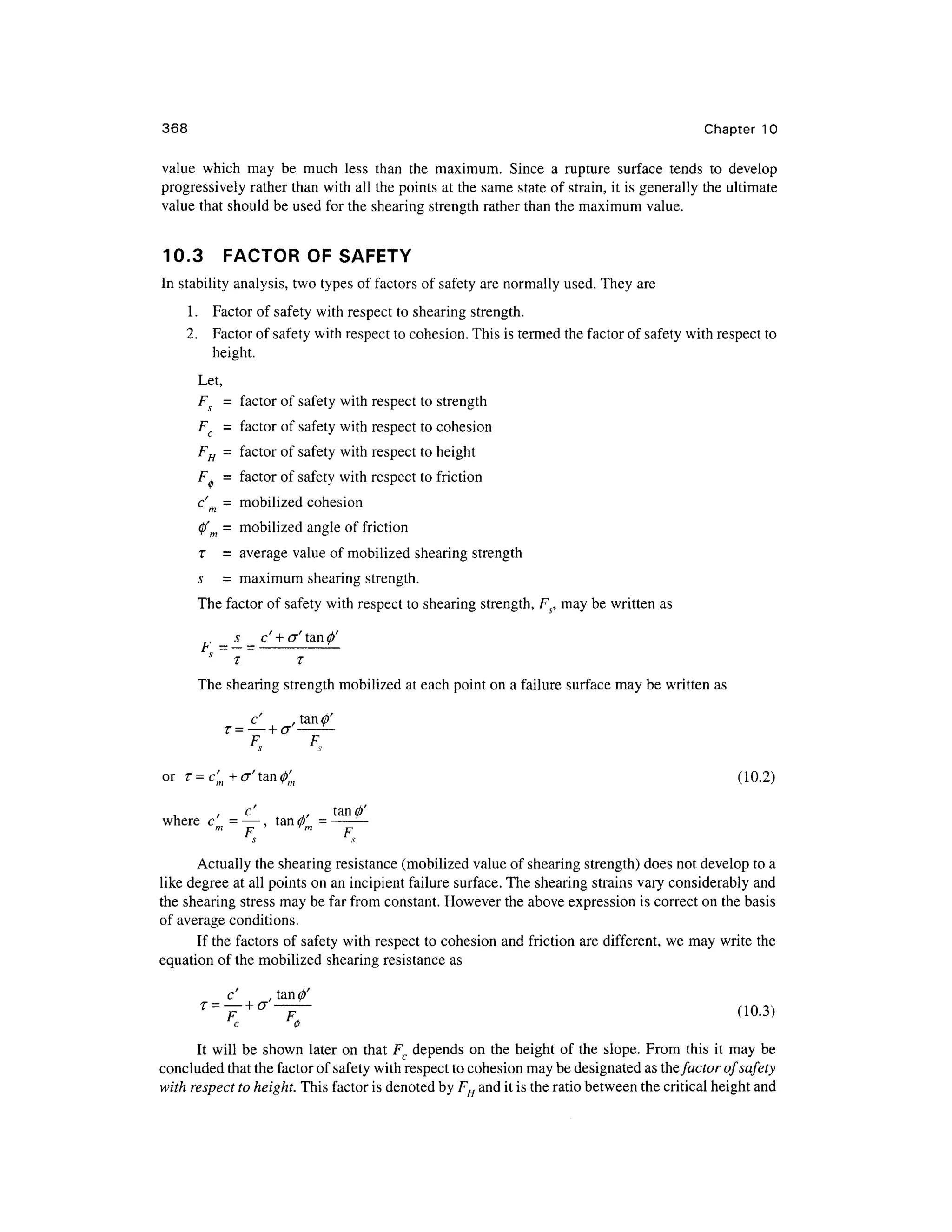


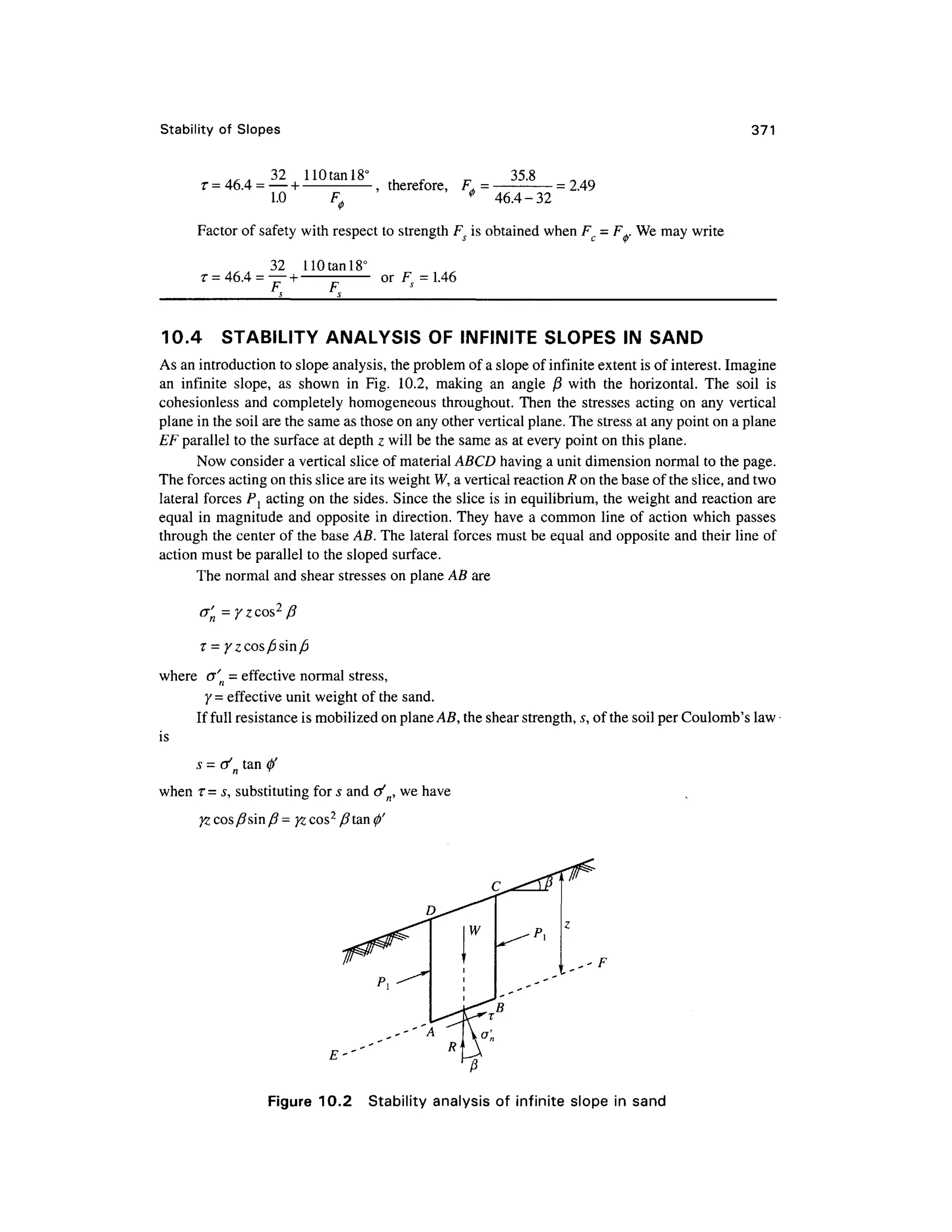
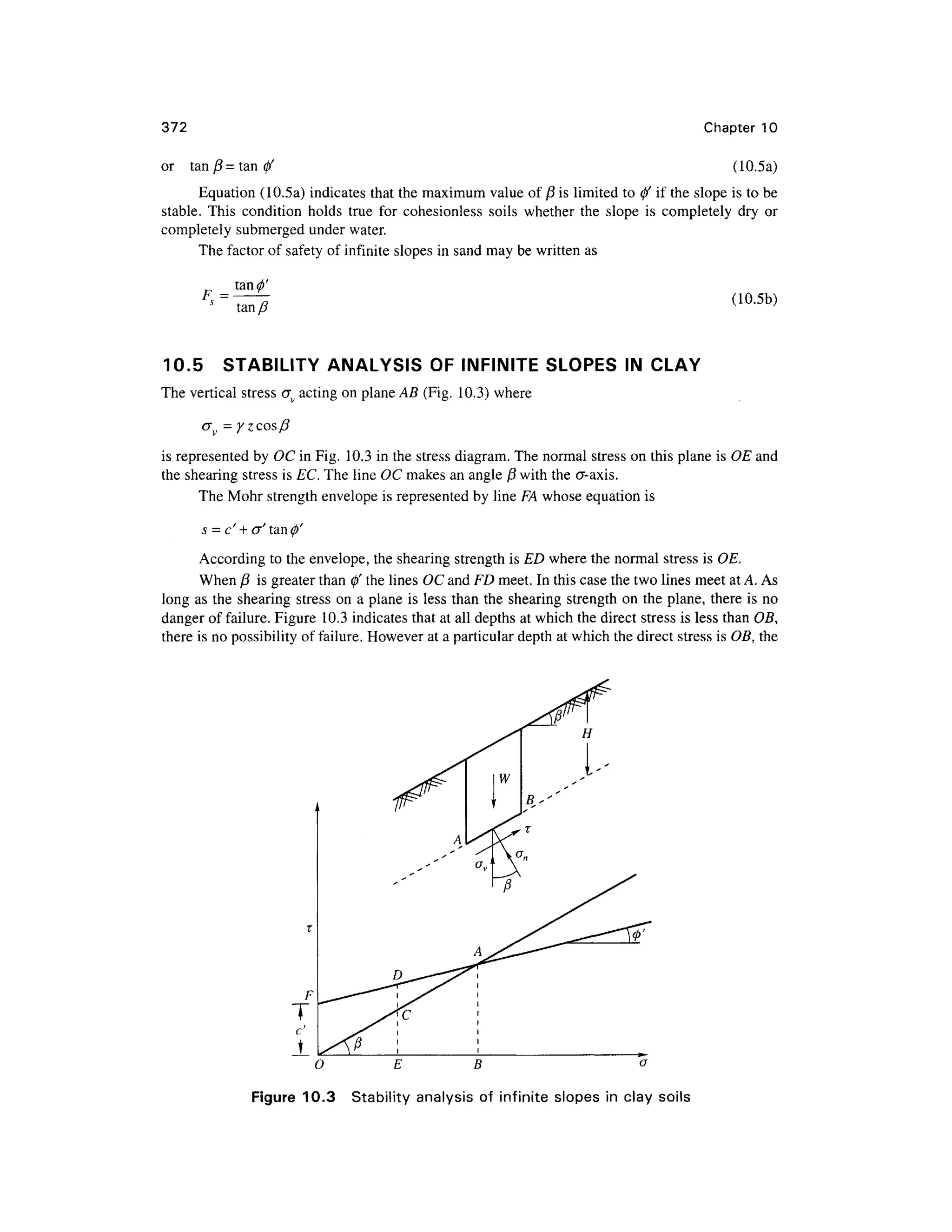
![Stability of Slope s 37 3
shearing strength and shearing stres s value s are equal as represented b y AB, failur e i s imminent.
This depth at which the shearing stress and shearing strength are equal is called the critical depth.
At depths greater than this critical value, Fig. 10.3 indicates that the shearing stress is greater than
the shearing strength but this is not possible. Therefore it may be concluded that the slope may be
steeper tha n 0' as long as the depth of the slope is less than the critical depth.
Expression for th e Stabilit y of a n Infinite Slop e o f Cla y o f Dept h H
Equation (10.2) gives the developed shearin g stress as
T = c'm+(T'tan</>'m (10.6 )
Under conditions o f no seepage an d no pore pressure, the stress component s o n a plane at
depth H and parallel to the surface of the slope are
r=
<j' = yHcos 2
j3
Substituting these stress expressions i n the equation above and simplifying, we have
c'm = YHcos2
0 (tan 0 -tan 0'
J
c'
or N = ^
- = cos2
/?(tanytf-tan^) (10.7 )
yti
where H i s th e allowabl e heigh t an d th e ter m c'Jy H i s a dimensionless expressio n calle d th e
stability number and is designated a s A^. This dimensionless number is proportional to the required
cohesion and is inversely proportional to the allowable height. The solution is for the case when no
seepage is occurring. If in Eq. (10.7) the factor of safety with respect to friction is unity, the stability
number with respect t o cohesion ma y be written as
8)
, c
where c m= —
The stability number in Eq. (10.8) may be written as
where Hc = critical height. From Eq. (10.9), we have
Eq. (10.10) indicates that the factor of safety with respect to cohesion, Fc, is the same as the
factor of safety with respect t o height F H.
If there i s seepage parallel t o the ground surfac e throughout the entire mass , wit h the fre e
water surface coinciding with the ground surface, the components o f effective stresses o n planes
parallel to the surface of slopes at depth H are given as [Fig. 10.4(a)].
Normal stres s
(lO.lla)](https://image.slidesharecdn.com/geotechbook-240326034957-6522ccd8/75/geotech-book-FOR-CIVIL-ENGINEERINGGG-pdf-392-2048.jpg)

![Stability of Slope s 37 5
Example 10. 3
Find the factor of safety of a slope of infinite extent having a slope angle = 25°. The slope is made
of cohesionless soi l with 0 = 30°.
Solution
Factor o f safety
tan 30° 0.577 4
tan/? ta n 25° 0.466 3
Example 10. 4
Analyze the slope of Example 10. 3 if it is made of clay having c' - 3 0 kN/m2
, 0' =20°, e = 0.65 and
Gs = 2.7 and under the following conditions: (i) when the soil is dry, (ii) when water seeps parallel
to the surface of the slope, and (iii) when the slope is submerged.
Solution
For e = 0.65 and G = 2.7
= 27x^1 =
= (2. 7 +0.65)x9.81 =
ld
1 + 0.65 /sa t
1 +0.65
yb = 10.09 kN/m 3
(i) For dry soil the stability number Ns i s
c
N = ——— = cos2
/?(tan/?- tan<j>') whe n F,=l
' d c
= (cos 25° )2
(tan 25° -ta n 20°) = 0.084.
c' 3 0
Therefore, th e critical height H = -
= -
=22.25 m
16.05x0.084
(ii) For seepage parallel to the surface of the slope [Eq . (10.13)]
c' 100 Q
N = — -—= cos2
25° ta n 25°-^--
- tan 20° = 0.231 5
s
y tHc 19. 9
Hc=^= 3
°
= 6.5 1 m
c
y tNs 19.9x0.231 5
(iii) Fo r the submerged slope [Eq . (10.14)]
N = cos2
25° (tan 25° - ta n 20°) = 0.084
c
y bNs 10.09x0.08 4](https://image.slidesharecdn.com/geotechbook-240326034957-6522ccd8/75/geotech-book-FOR-CIVIL-ENGINEERINGGG-pdf-394-2048.jpg)
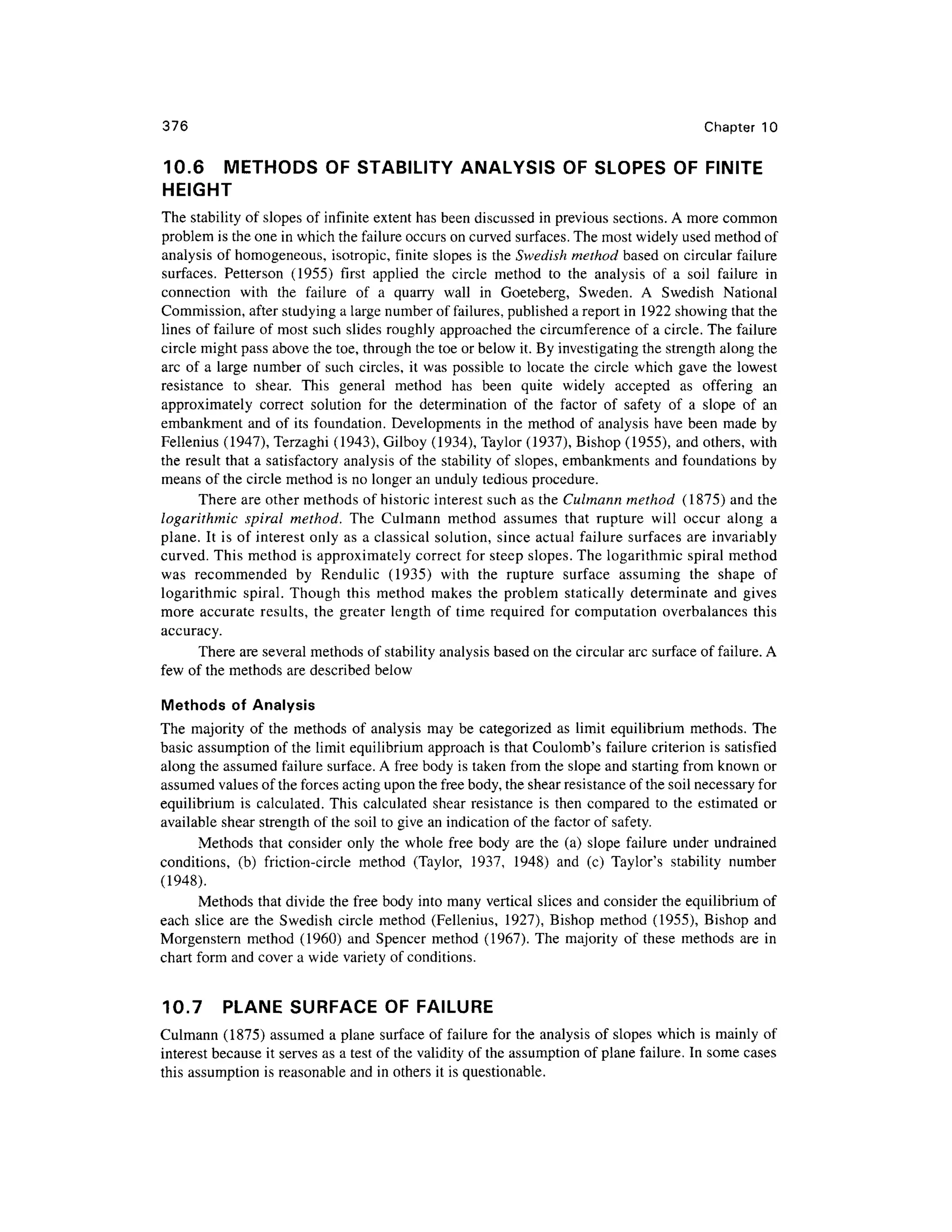

![378 Chapte r 10
If we write
F -— F tan
^'
c
~V' < > ~ t a n ^
where Fc an d F^ ar e safety factors wit h respect t o cohesion an d friction respectively, Eq . (10.15)
may be modified for chosen values of c an d 0' a s
^=
4 sin/3 cos(/)'m (10.16 )
The critical angle for any assumed values of c'm and 0'm is
1
From Eq . (10.16), th e allowable height of a slope is
Example 10.5
Determine by Culmann's method the critical height of an embankment having a slope angle of 40°
and the constructed soil having c' = 630 psf, 0' = 20° and effective uni t weight =114 lb/ft3
. Find the
allowable height of the embankment if F, = F, = 1 .25.
Solution
4c'sin/?cos0' 4 x 630 x sin 40° cos 20°
H, = -
- -
—= -
= 221 ft
y[l-cos(0-4>')] 114(l-cos20° )
For F c = F.= 1.25, c '= —= —= 504 lb/ft2
<(> m
' ta n 20°
and ta n #, = —- = — —= 0.291, f a = 16.23°
,, , • , 4x50 4 sin 40° cos 16.23° ^ 0 r
Allowable height, H = -
=128.7 ft.
_ 114[l-cos(40 - 16.23°)]
10.8 CIRCULA R SURFACES OF FAILURE
The investigation s carried ou t in Sweden a t the beginning of this century have clearly confirme d
that the surfaces of failure of earth slopes resemble the shape of a circular arc. When soil slips along
a circula r surface , suc h a slid e ma y b e terme d a s a rotational slide . I t involve s downward an d
outward movement of a slice of earth as shown in Fig. 10.6(a) and sliding occurs alon g the entire
surface of contact between th e slice and its base. The types of failure that normally occur may be
classified a s
1. Slop e failure](https://image.slidesharecdn.com/geotechbook-240326034957-6522ccd8/75/geotech-book-FOR-CIVIL-ENGINEERINGGG-pdf-397-2048.jpg)
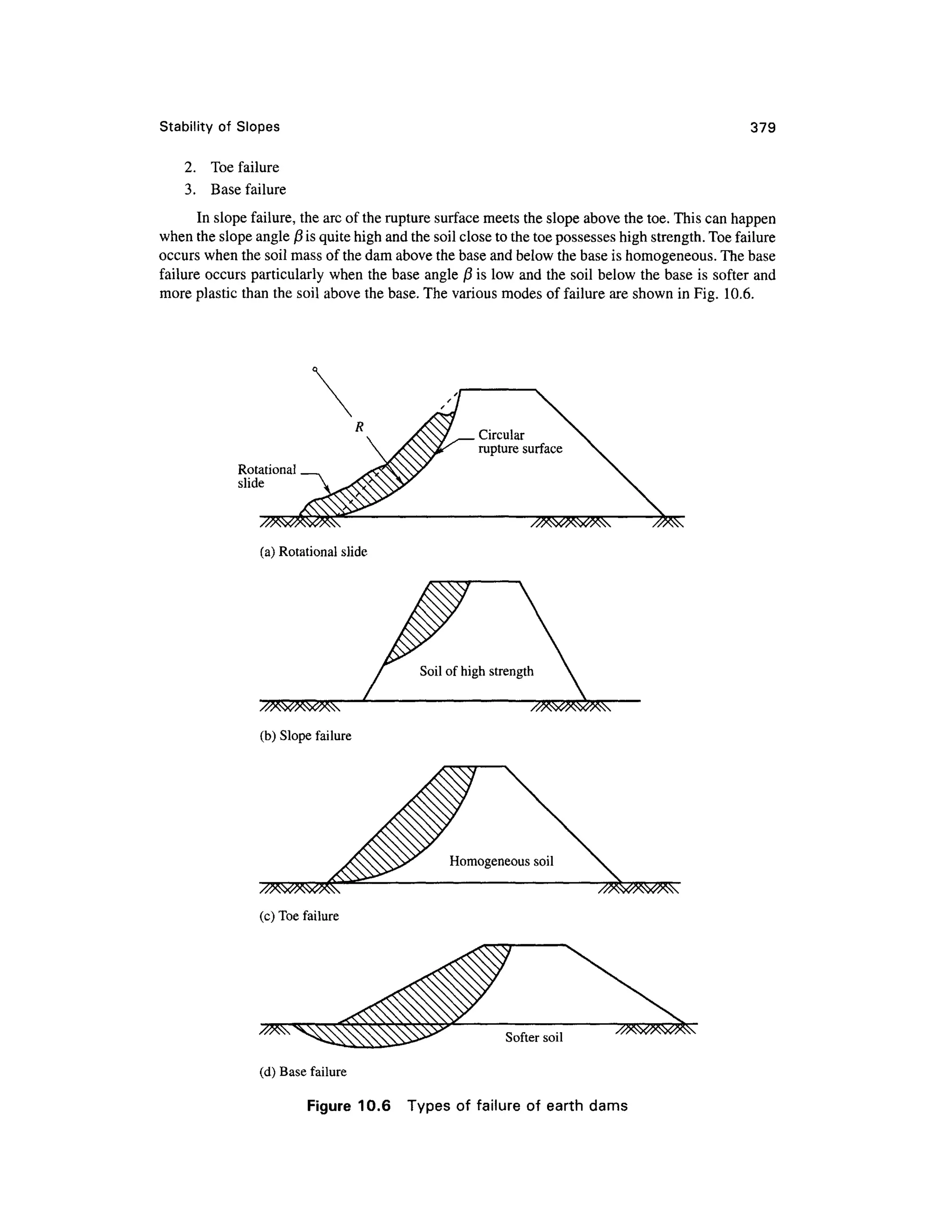
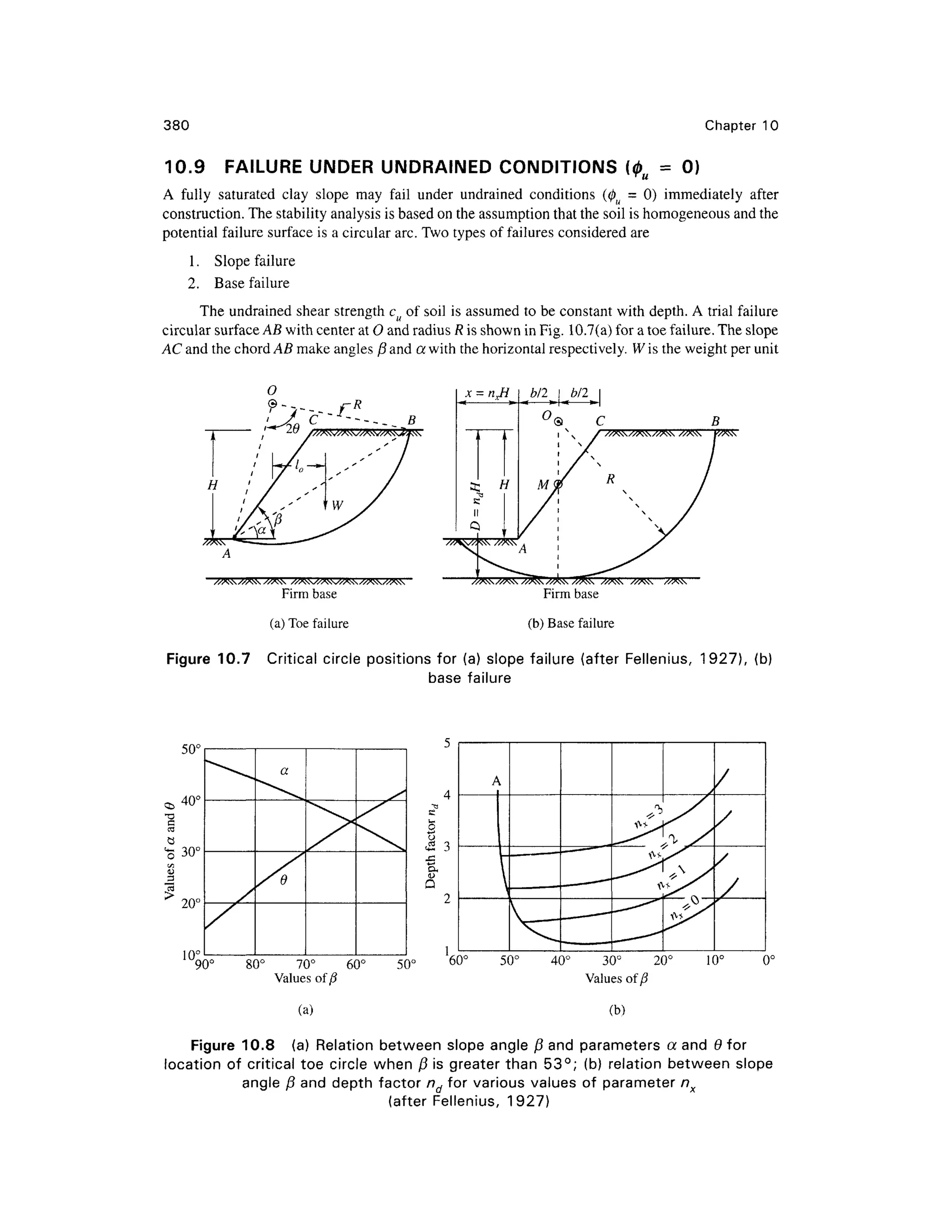



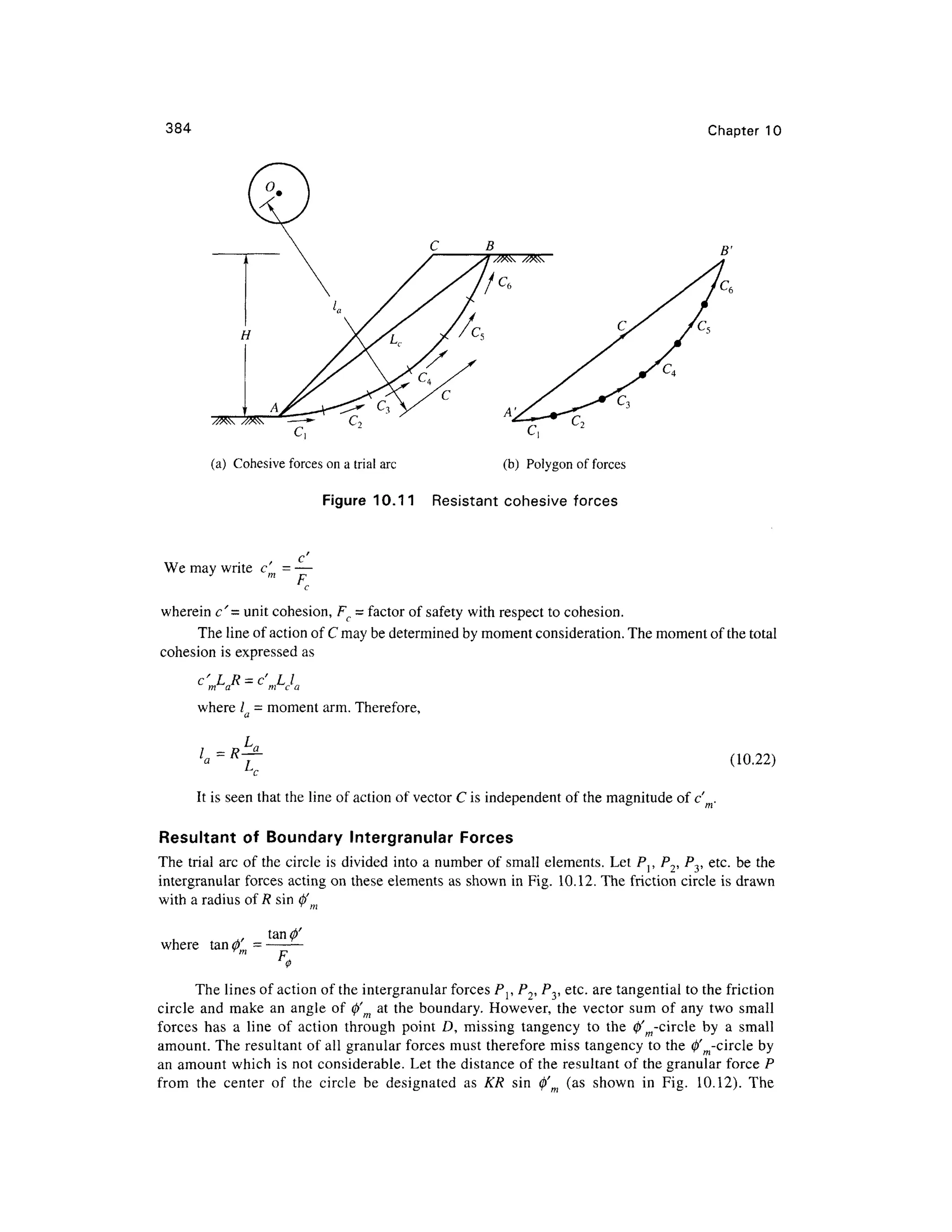

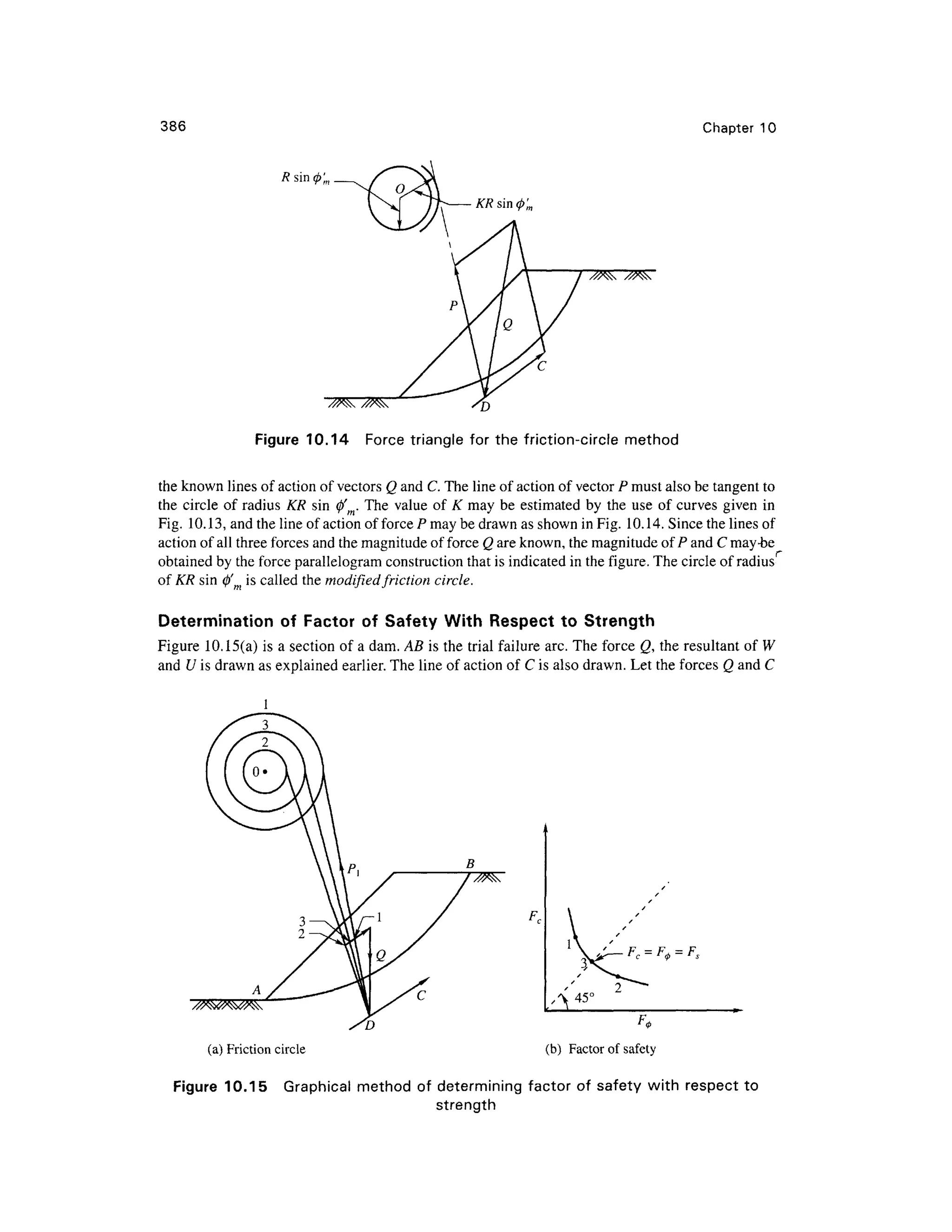
![Stability o f Slope s 38 7
meet at point D. An arbitrary first trial using any reasonable $m value, which will be designated
by 0' ml i s given by th e us e o f circle 1 or radius KR si n <j)' ml. Subscrip t 1 is used fo r al l other
quantities of the first trial. The force Pl is then drawn through D tangent to circle 1 . Cl is parallel
to chord an d point 1 is the intersection of forces C { an d Pr Th e mobilized cohesio n i s equal
c'm]Lc. From thi s the mobilized cohesion c'ml i s evaluated. The factors of safety with respect to
cohesion and friction are determined from the expressions
c' tanfl'
F' = ——, an d F*,
These factors are the values used to plot point 1 in the graph in Fig. 10.15(b) . Similarly
other friction circles wit h radii KR sin <j/ m2, K R sin 0'm3. etc. may be drawn and the procedur e
repeated. Point s 2, 3 etc. ar e obtained as shown in Fig. 10.15(b). The 45° line , representing
Fc = F.,intersects the curve to give the factor of safety Fs for this trial circle.
Several trial circles must be investigated in order to locate the critical circle, which is the one
having the minimum value of F5.
Example 10.7
An embankment has a slope of 2 (horizontal) to 1 (vertical) with a height of 10 m. It is made of a
soil havin g a cohesio n o f 3 0 kN/m 2
, a n angl e o f interna l friction o f 5 ° an d a uni t weigh t of
20 kN/m3
. Consider any slip circle passing through the toe. Use the friction circle method to find
the factor of safety with respect to cohesion.
Solution
Refer to Fig. Ex. 10.7 . Let EFB be the slope and AKB be the slip circle drawn with center O and
radius R = 20 m.
Length of chord AB = Lc = 27 m
Take J as the midpoint of AB, then
Area AKBFEA = area AKBJA + area ABEA
= -ABxJK + -ABxEL
3 2
= -x27 x 5.3 + -x 27 x 2.0 =122.4 m2
3 2
Therefore th e weight of the soil mass = 122. 4 x 1 x 20 = 2448 kN
It will act through point G, the centroid of the mass which can be taken as the mid point of
FK.
Now, 0= 85° ,
314
Length of arc AKB = L = RO = 20 x 85 x—= 29.7 m
6
18 0
L 29. 7
Moment arm of cohesion, / = R— = 20 x —— = 22 m
L
c 21
From cente r O , at a distance / fl, dra w the cohesive force vector C , which is parallel to the
chord AB. Now from the point of intersection of C and W, draw a line tangent to the friction circle](https://image.slidesharecdn.com/geotechbook-240326034957-6522ccd8/75/geotech-book-FOR-CIVIL-ENGINEERINGGG-pdf-406-2048.jpg)

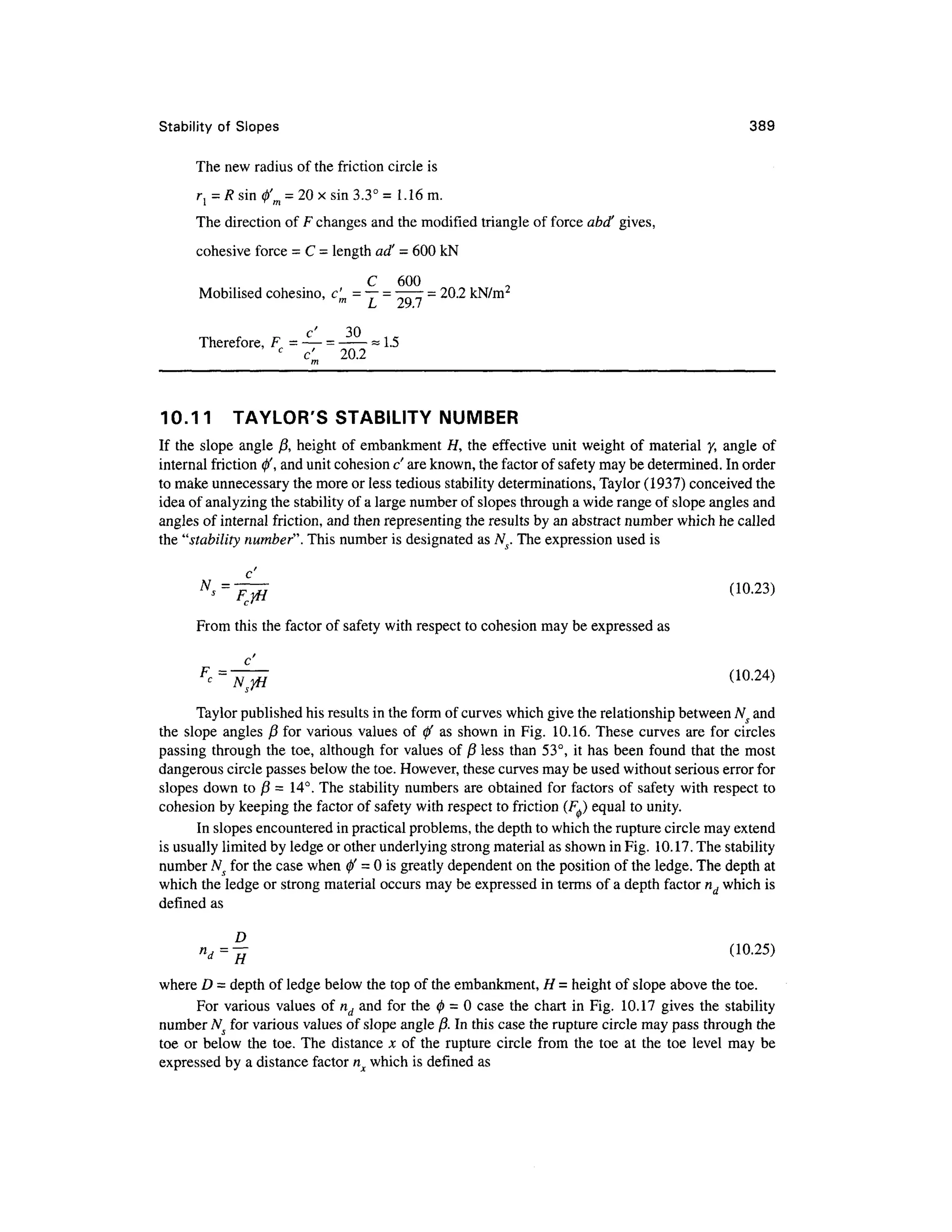


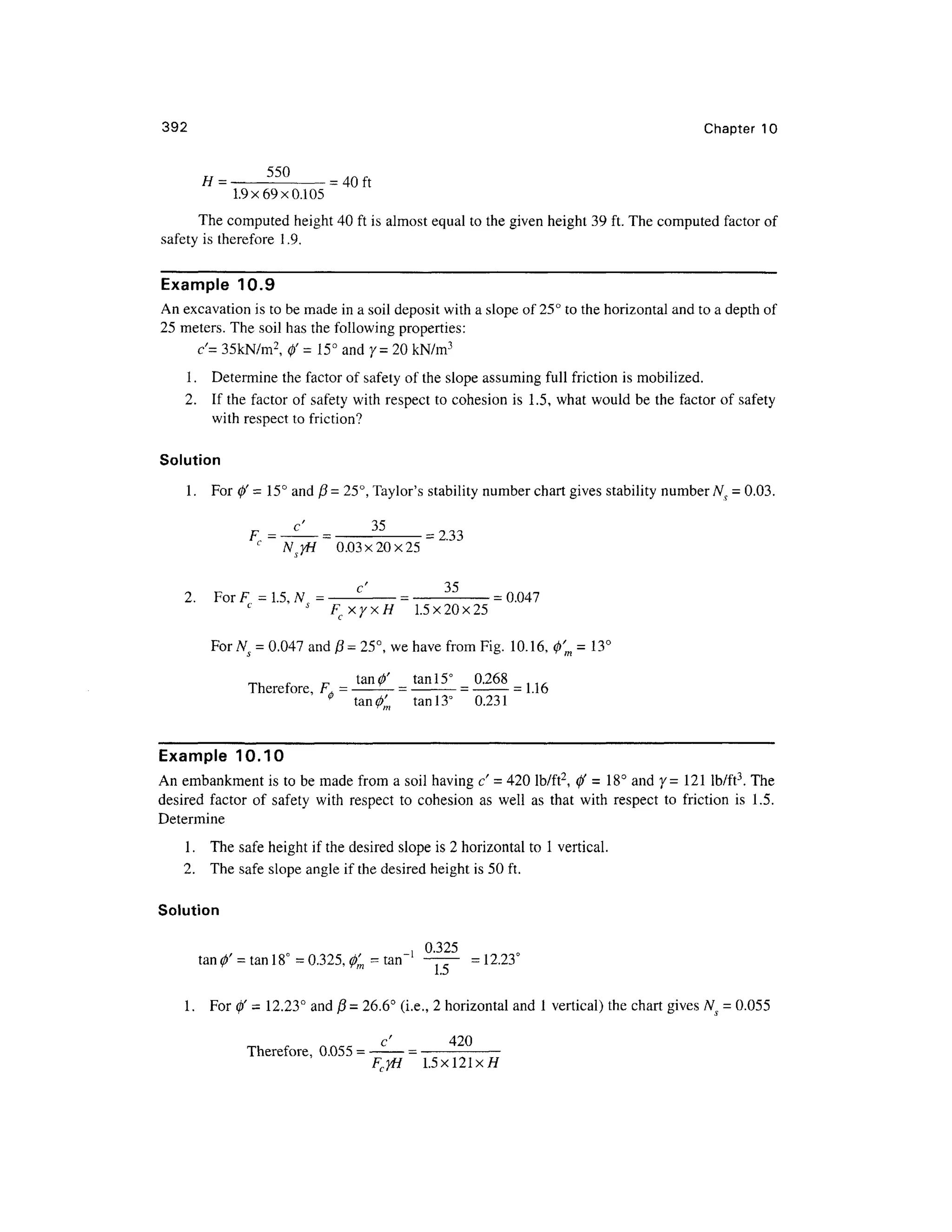
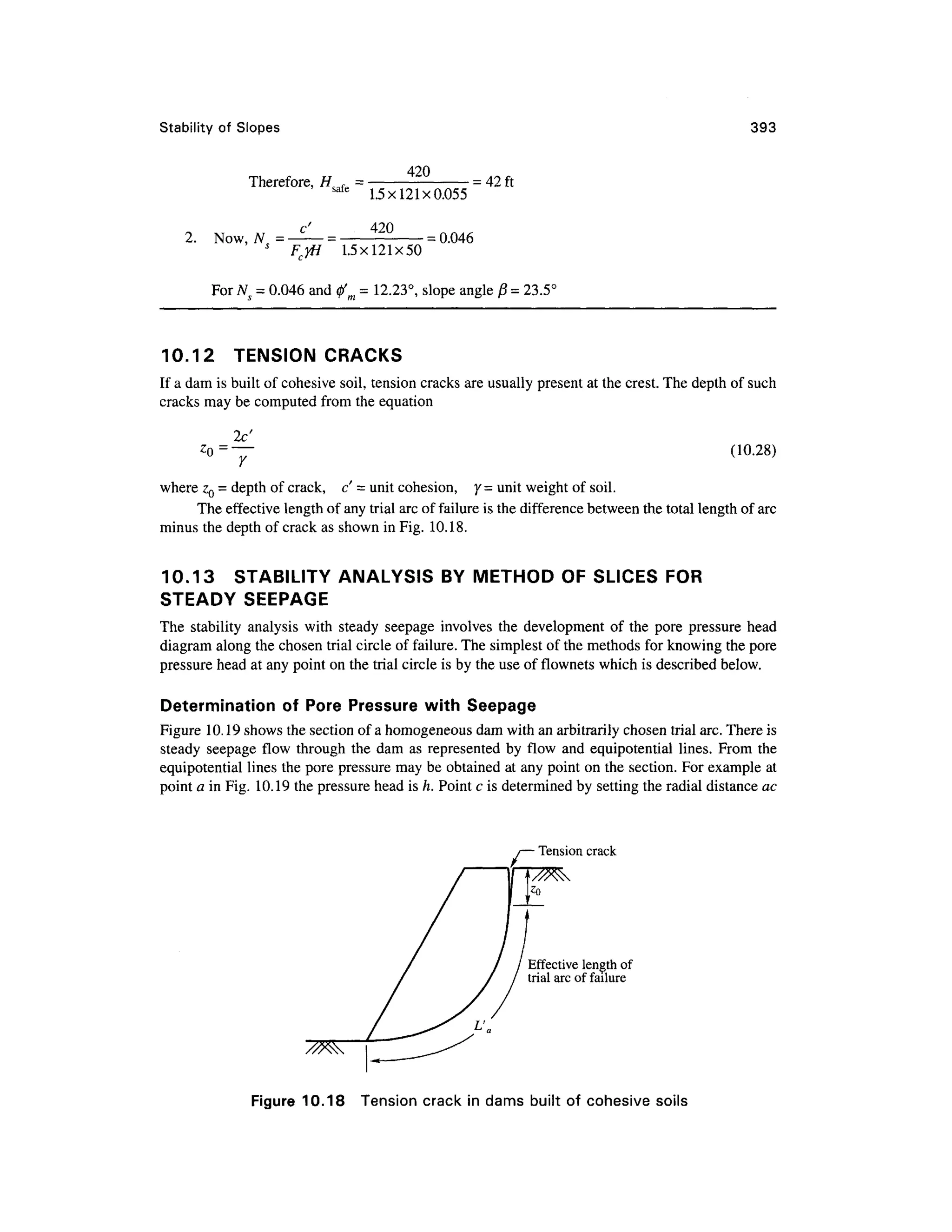


![396 Chapte r 1 0
The forces that are actually considered in the analysis are shown in Fig. 10.20(c) . The various
components ma y be determined as follows:
1 .Th e weight, W, of a slice per unit length of dam may be computed fro m
W=yhb
where, y = total unit weight of soil, h = average height of slice, b - widt h of slice.
If the widths of all slices are equal, and if the whole mass is homogeneous, th e weight W
can be plotted as a vector AB passing throug h the center of a slice as in Fig. 10.20(a) . AB
may be made equal to the height of the slice.
2. B y constructing triangle ABC, th e weight can be resolved int o a normal component N and
a tangential component T. Similar triangles can be constructed for all slices. The tangential
components of the weights cause the mass to slide downward. The sum of all the weight s
cause th e mass _ to slid e downward . The su m o f al l th e tangentia l component s ma y b e
expressed a s T= I.T. If the trial surface is curved upward near its lower end, the tangential
component of the weight of the slice will act in the opposite direction along the curve. The
algebraic su m of T should be considered.
3. Th e average pore pressure u acting on the base of any slice of length / may be found from
the pore pressure diagram shown in Fig. 10.20(b). The total pore pressure, U, on the base of
any slice is
U=ul
4. Th e effective normal pressure N' acting on the base of any slice is
N'=N- t/[Fig . 10.20(c)]
5. Th e frictional force Ff
actin g on the base of any slice resisting the tendency of the slice to
move downward is
F = (N - U ) tan 0'
where 0' is the effectiv e angl e o f friction. Similarl y th e cohesive forc e C " opposing th e
movement of the slice and acting at the base of the slice is
where c i s the effective unit cohesion. The total resisting force S acting on the base of the
slice is
S = C + F'= c'l + (N - U ) tan 0'
Figure 10.20(c ) shows the resisting forces actin g on the base of a slice.
The sum of all the resisting forces actin g on the base of each slice may be expressed a s
Ss = c'I,l+ tan 0' I(W- £/) = c'L + tan 0' X(N - U )
where £/ = L = length of the curved surface.
The moment s o f th e actuatin g an d resistin g force s abou t th e poin t o f rotatio n ma y b e
written as follows:
Actuating moment = R~LT
Resisting moment = R[c'L + tan 0' £(jV - U)]
The factor of safety F? may now be written as
(10.29)](https://image.slidesharecdn.com/geotechbook-240326034957-6522ccd8/75/geotech-book-FOR-CIVIL-ENGINEERINGGG-pdf-415-2048.jpg)


![Stability of Slope s 399
Figure Ex. 10.11
may be resolved into normal components hn and tangential components h{. The values of ha, hn and
ht for the various slices are given below in a tabular form.
Values o f hal h n and /?,
o / v r
Slice No .
1
2
3
4
5
6
7
ha(m)
1.8
5.5
7.8
9.5
10.6
11.0
10.2
hn(m)
0.80
3.21
5.75
7.82
9.62
10.43
10.20
ht(m]
1.72
4.50
5.30
5.50
4.82
3.72
2.31
Slice No .
8
9
10
11
12
13
ha(m)
9.3
8.2
6.8
5.2
3.3
1.1
hn(m)
9.25
8.20
6.82
5.26
3.21
1.0
ht(m)
1.00
-0.20
-0.80
-1.30
-1.20
-0.50
The sum of these components hn and ht may be converted into forces ZN and Irrespectively
by multiplying them as given below
Sfcn = 81.57m, Ui t = 24.87m
Therefore, ZN = 81.57 x2 x 1 8 = 2937 kN
Zr = 24.87 x2x 1 8 =895kN
Length of arc = L = 31.8 m
'L + tonfiZ N 30x31. 8 + 0.364x2937
Factor of safety =
895
= 2.2
6](https://image.slidesharecdn.com/geotechbook-240326034957-6522ccd8/75/geotech-book-FOR-CIVIL-ENGINEERINGGG-pdf-418-2048.jpg)

![Stability o f Slope s 40 1
N=Wcos6
(10.31)
where F( = tangentia l component of W
The unit stresses on the failure surface of length, /, may be expressed a s
Wcos6
normal stress, <r n = -
Wsin0 (10.32 )
shear stress, r n = -
The equation for shear strength, s, is
s = c' + cr'tan^' = c' + (cr-u)tan0'
where r f = effective normal stress
c' - effectiv e cohesio n
(ft = effective angle of friction
u = unit pore pressur e
The shearing resistance to sliding on the base of the slice is
si = c'l+ (Wcos9 -ul) tan $
where ul = U, the total pore pressure on the base of the slice (Fig 10.23b )
d = F
At - r R
The total resisting force and the actuating force on the failure surface ADC may be expressed
as
Total resisting force FR is
FR= [c 7 + (Wcos0-M/)tan0'] (10.33 )
Total actuating force Ft is
Ft = Wsm0 (10.34 )
The factor of safety Fs is then given as
F
Eq. (10.35) is the same as Eq. (10.29) obtained b y the conventional metho d of analysis .
Bishop (1955) suggest s tha t the accuracy of the analysis can be improved b y taking into
account the forces E and Ton the vertical faces of each slice. For the element in Fig. 10.23(b) , we
may writ e a n expressio n fo r al l th e force s actin g in th e vertica l directio n fo r th e equilibrium
condition as
N' co&0 = W + (T^ -T2)-ulcos0- F R sin# (10.36 )
If th e slop e i s no t o n th e verg e of failur e (Fs > 1), the tangentia l force F t i s equal t o th e
shearing resistance FR on cd divided by Fg.](https://image.slidesharecdn.com/geotechbook-240326034957-6522ccd8/75/geotech-book-FOR-CIVIL-ENGINEERINGGG-pdf-420-2048.jpg)






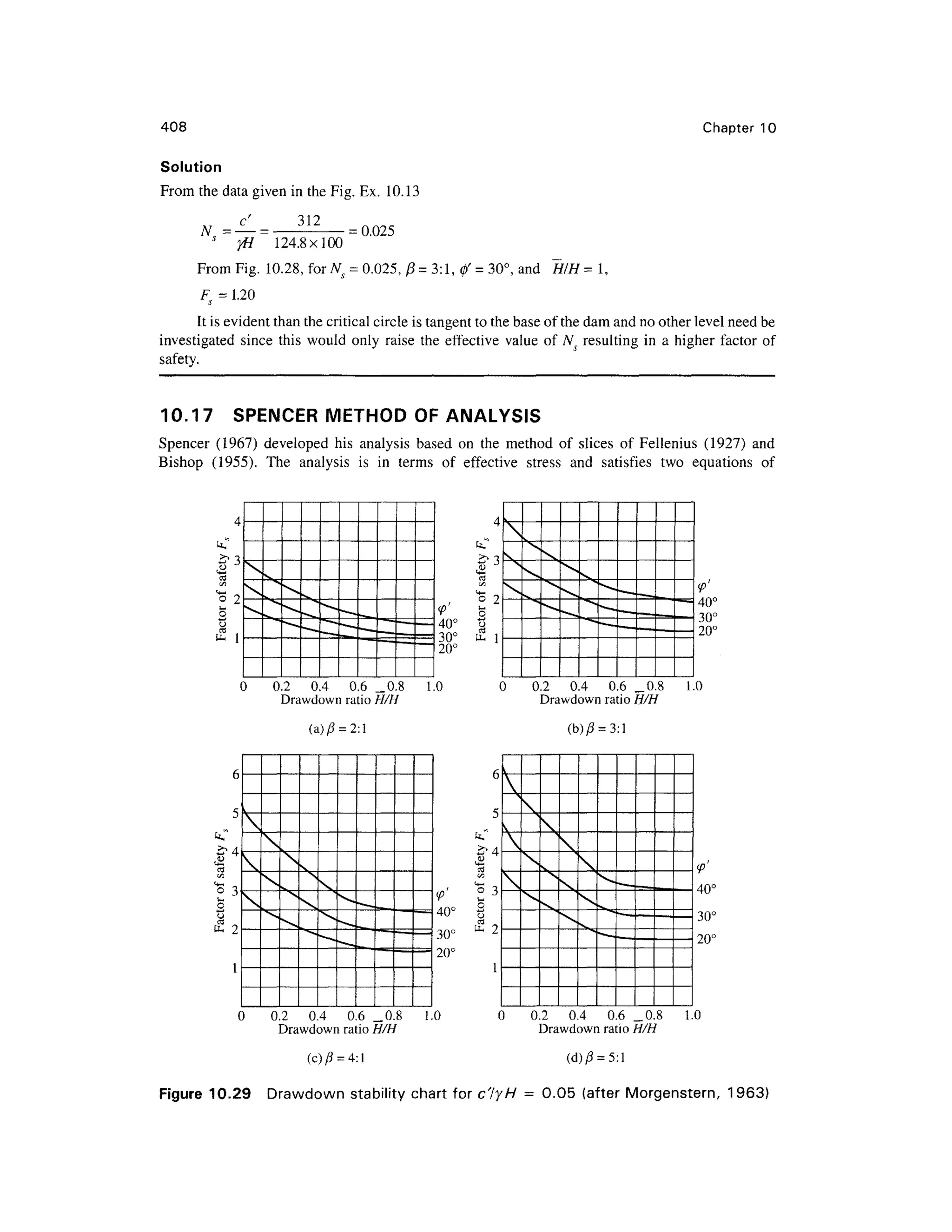




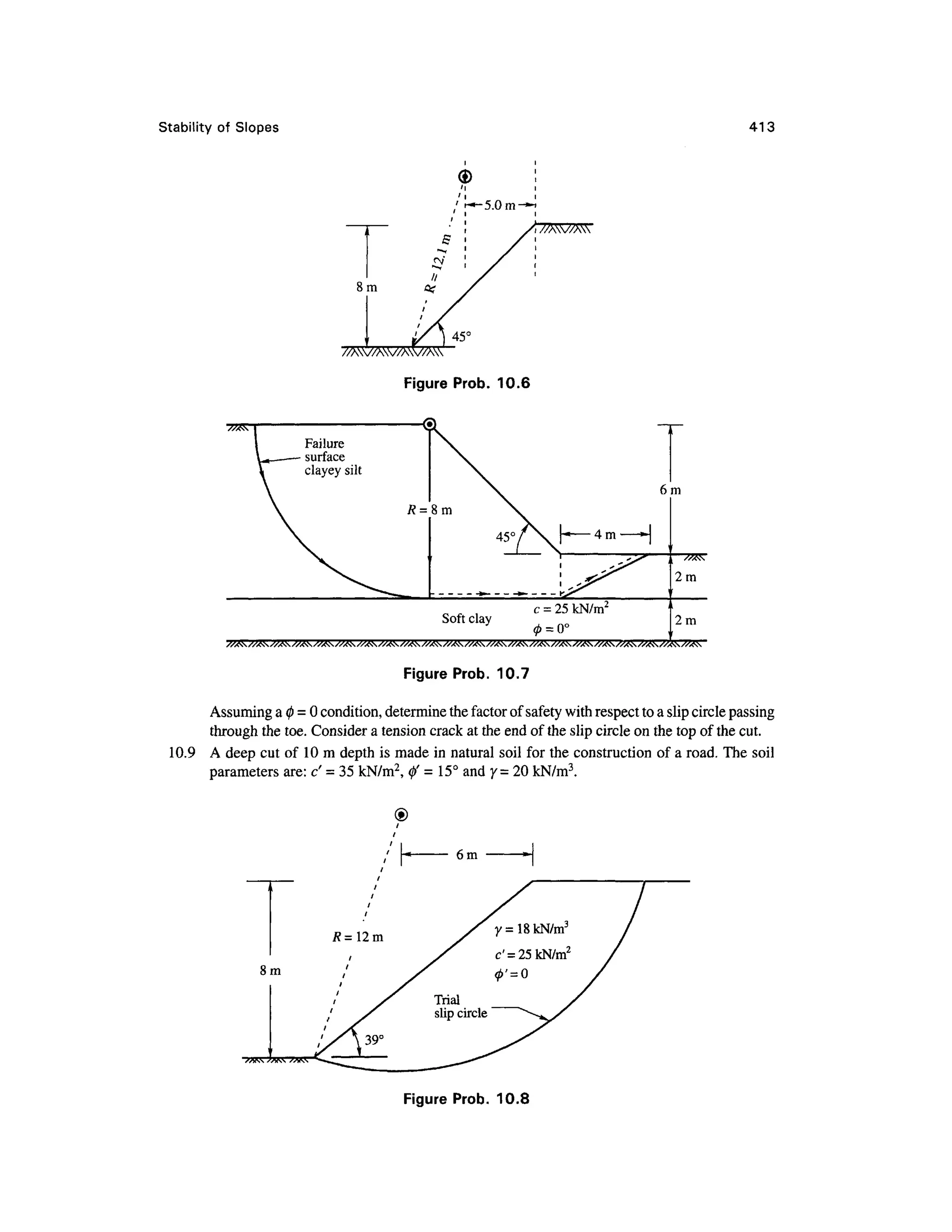


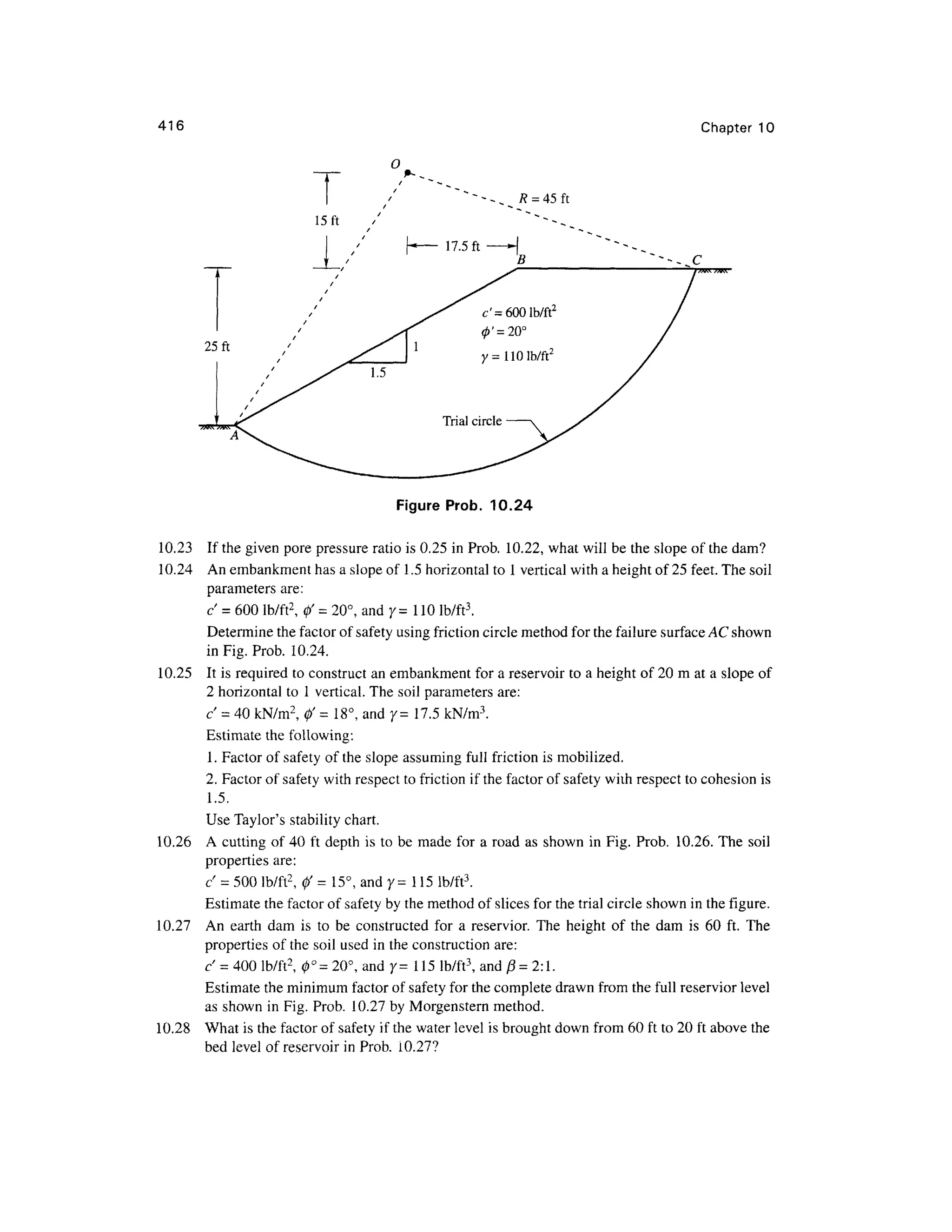




![Lateral Eart h Pressure 421
Base sla b
Heel
(a) Gravity walls (b) Semi-gravity walls (c) Cantilever walls
Backfill Counterfort Fac e of wall —i
— Buttres s
Face
of wall
(d) Counterfort walls (e) Buttressed walls
Figure 11. 2 Principa l types of rigid retaining wall s
the resultant pressure acts normal to the face of the wall. If the wall is rough, it makes a n angle< 5
with the normal on the wall. The angle 8 is called the angle of wall friction.A s the wall moves away
from the backfill, the soil tends to move forward. When the wall movement is sufficient, a soil mass
of weight W ruptures along surface ADC shown in Fig. 11.3(a) . This surface is slightly curved. If
the surface is assumed to be a plane surface AC, analysis would indicate tha t this surface would
make an angle of 45° + 0/2 with the horizontal.
If the wall is now rotated about A towards the backfill, th e actual failure plane ADC is also a
curved surface [Fig. 11.3(b)]. However, if the failure surface is approximated as a plane AC, this
makes an angle 45° - 0/ 2 with the horizontal and the pressure on the wall increases from the value
of the at rest condition to the maximum value possible. The maximum pressure P tha t is developed
is terme d th e passive earth pressure. Th e pressure i s called passiv e becaus e th e weigh t o f the
backfill opposes the movement of the wall. It makes an angle 8 with the normal if the wall is rough.
The gradual decrease or increase of pressure on the wall with the movement of the wall from
the at rest condition may be depicted as shown in Fig. 11.4 .
The movement A require d to develop the passive state is considerably larger than AQ required
for the active state .
11.3 LATERA L EARTH PRESSURE FO R AT RES T CONDITION
If the wall is rigid and does not move with the pressure exerted on the wall, the soil behind the wall
will be in a state of elastic equilibrium. Consider a prismatic element E in the backfill at depth z
shown in Fig. 11.5 .
Element E is subjected to the following pressures.
Vertical pressure = crv= yz; latera l pressure = <J h](https://image.slidesharecdn.com/geotechbook-240326034957-6522ccd8/75/geotech-book-FOR-CIVIL-ENGINEERINGGG-pdf-440-2048.jpg)


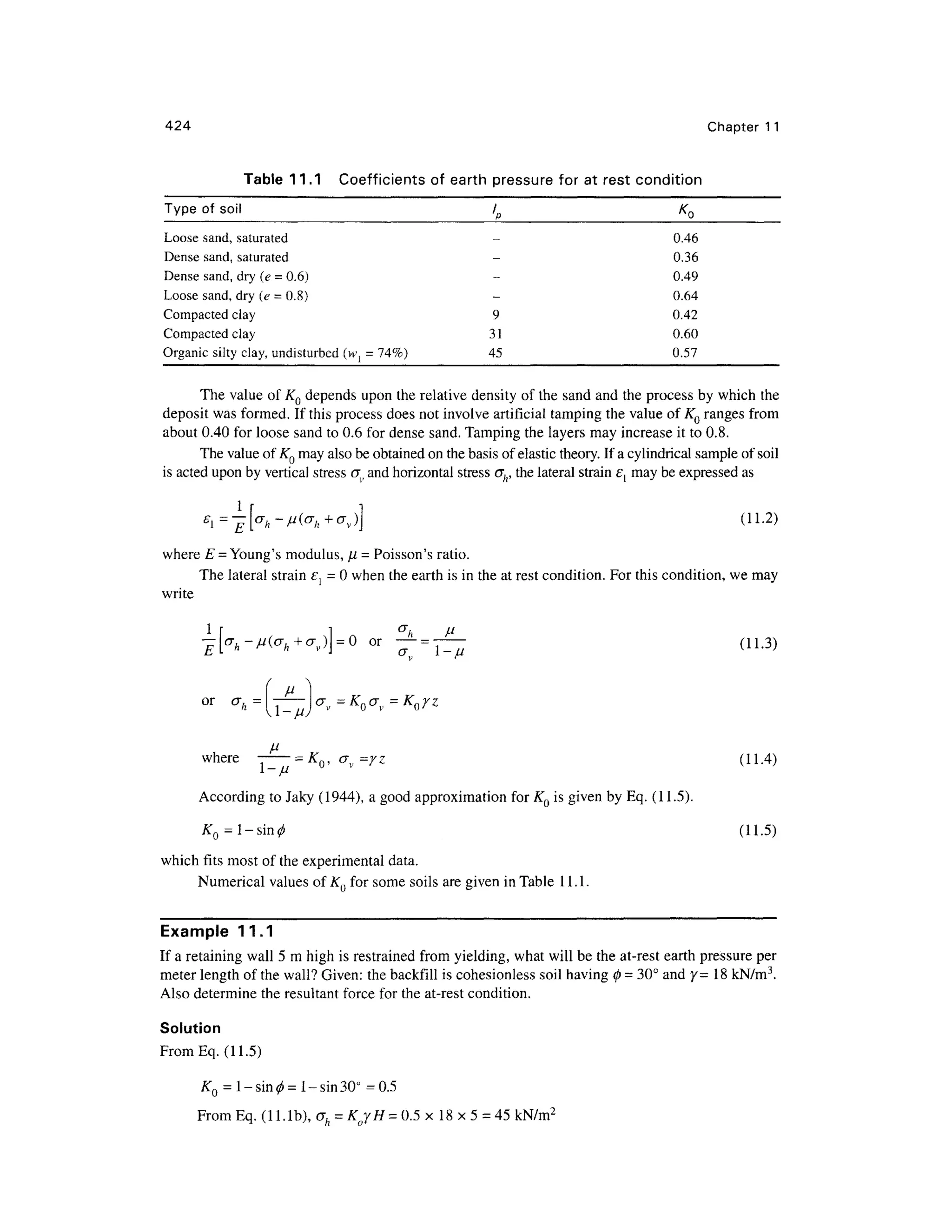

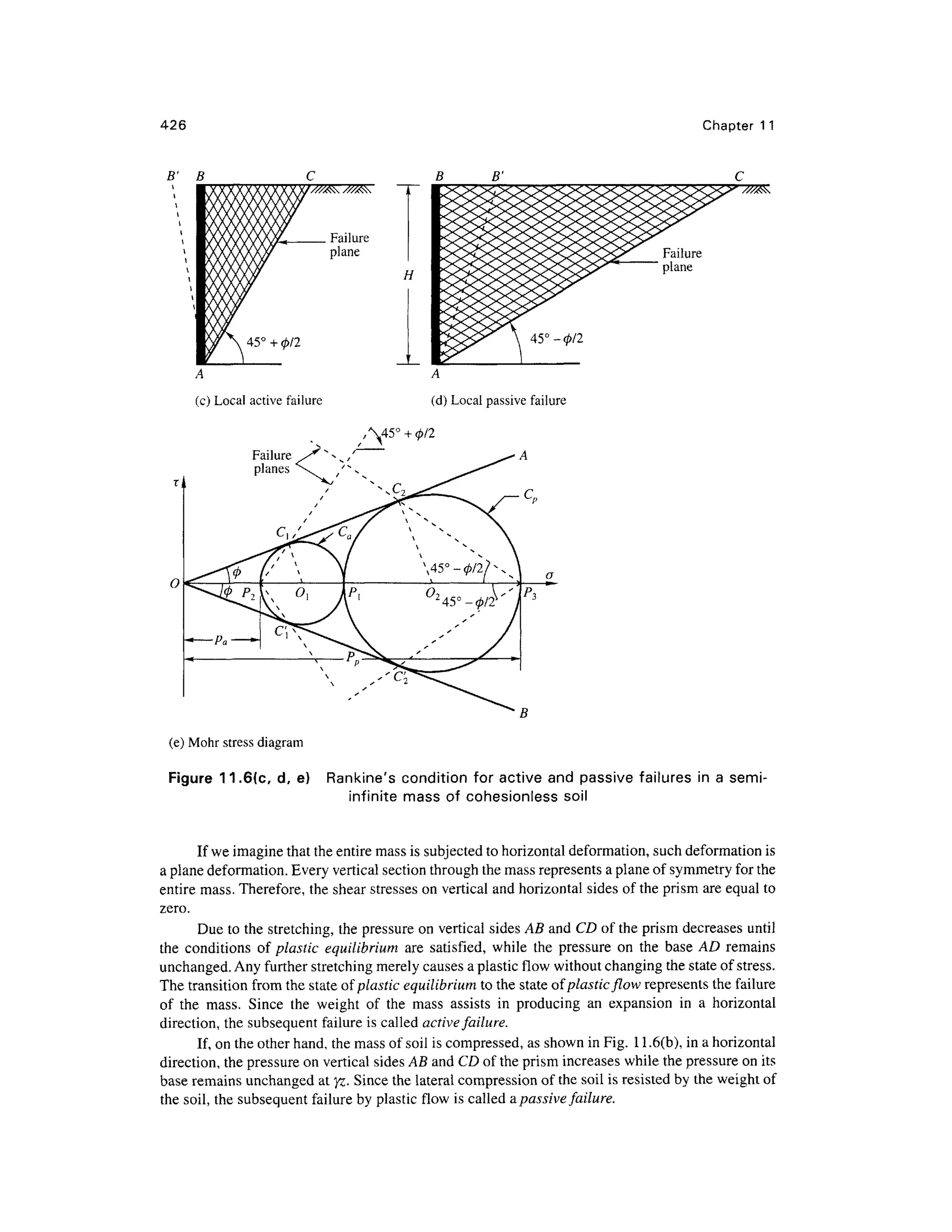
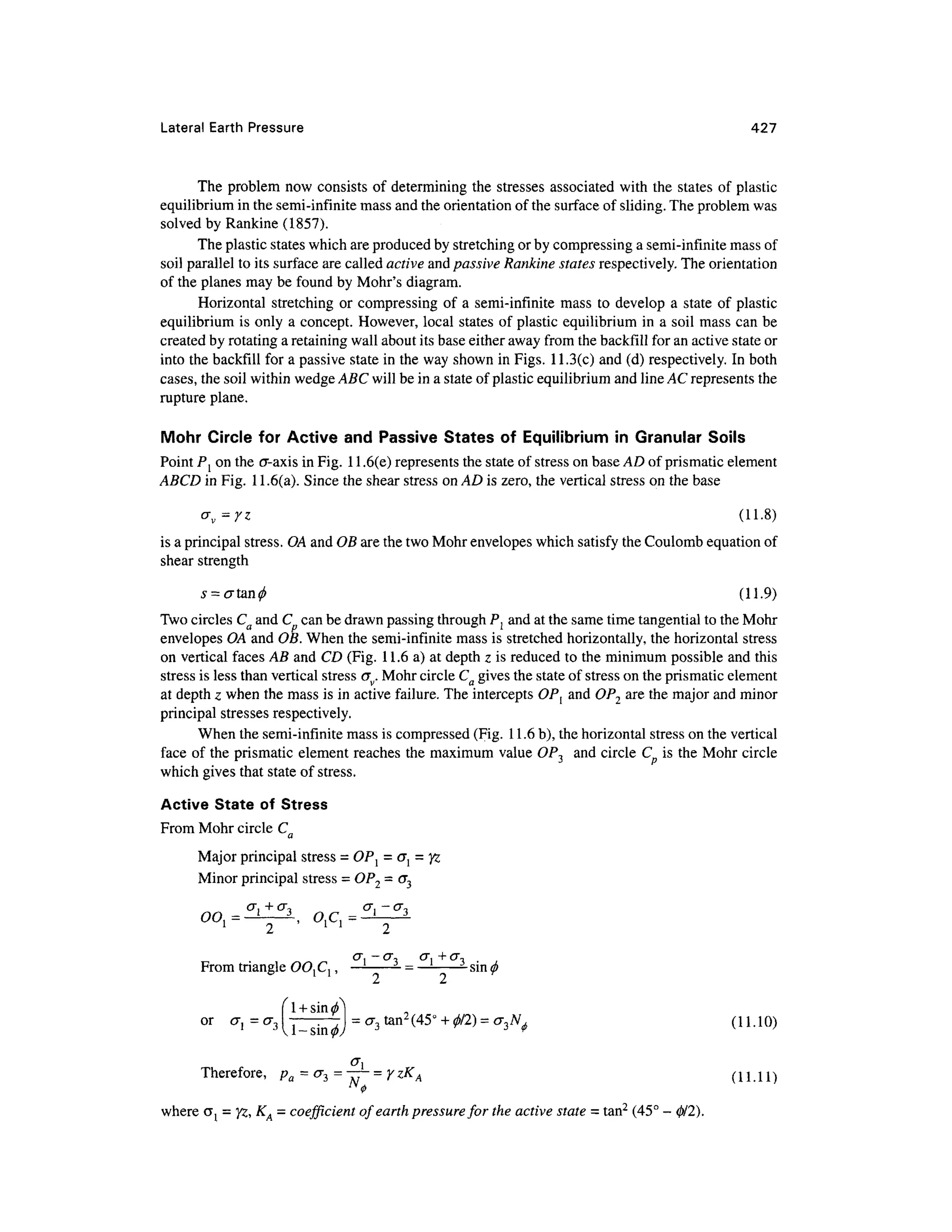
![428 Chapter 1 1
From point Pr draw a line parallel to the base AD on which (7 { acts . Since this line coincide s
with the cr-axis, point P9 is the origin of planes. Lines P2C{ an d P^C giye tne
orientations of the
failure planes. They make an angle of 45° + 0/2 with the cr-axis. The lines drawn parallel to the lines
P2Cj and P2C'{ i n Fig. 11.6(a ) give the shear lines along which the soil slips in the plastic state. The
angle between a pair of conjugate shear lines is (90° - 0).
Passive Stat e o f Stress
C i s the Mohr circle in Fig. (11.6e) for the passive state and P3 is the origin of planes.
Major principal stress = (j } = p= OP^
Minor principal stress = (73 = OPl = yz.
From triangle OO^C2, o{ = yzN^
Since <J l - p an d<J 3 = yz, we have
n -yzN:-r7K (] ] ]?}
i n * Q) i f t L L * . £ j
where K = coefficient o f earth pressure for th e passive state = tan2
(45° + 0/2).
The shea r failur e line s are P3C2 an d P3C^ an d they make a n angle o f 45° - 0/ 2 with the
horizontal. The shea r failure line s are drawn parallel to P3C2 an d P3C'2 i n Fig. 11.6(b) . The angle
between any pair of conjugate shear lines is (90° + 0).
11.5 RANKINE' S EARTH PRESSUR E AGAINST SMOOTH
VERTICAL WALL WITH COHESIONLES S BACKFIL L
Backfill Horizontal-Activ e Eart h Pressur e
Section AB i n Fig. 11.6(a ) in a semi-infinite mass is replaced by a smooth wall AB in Fig. 11.7(a) .
The latera l pressure actin g against smooth wal l AB i s due t o the mass o f soi l ABC abov e
failure lin e A C whic h make s a n angl e o f 45 ° + 0/ 2 wit h th e horizontal . Th e latera l pressur e
distribution o n wal l AB o f heigh t H increase s i n simpl e proportio n t o depth . The pressur e act s
normal to the wall AB [Fig . 11.7(b)] .
The lateral active pressure at A is
(11.13)
B' B
W
45° +
(a) (b )
Figure 11. 7 Rankine' s activ e eart h pressur e i n cohesionless soi l](https://image.slidesharecdn.com/geotechbook-240326034957-6522ccd8/75/geotech-book-FOR-CIVIL-ENGINEERINGGG-pdf-447-2048.jpg)
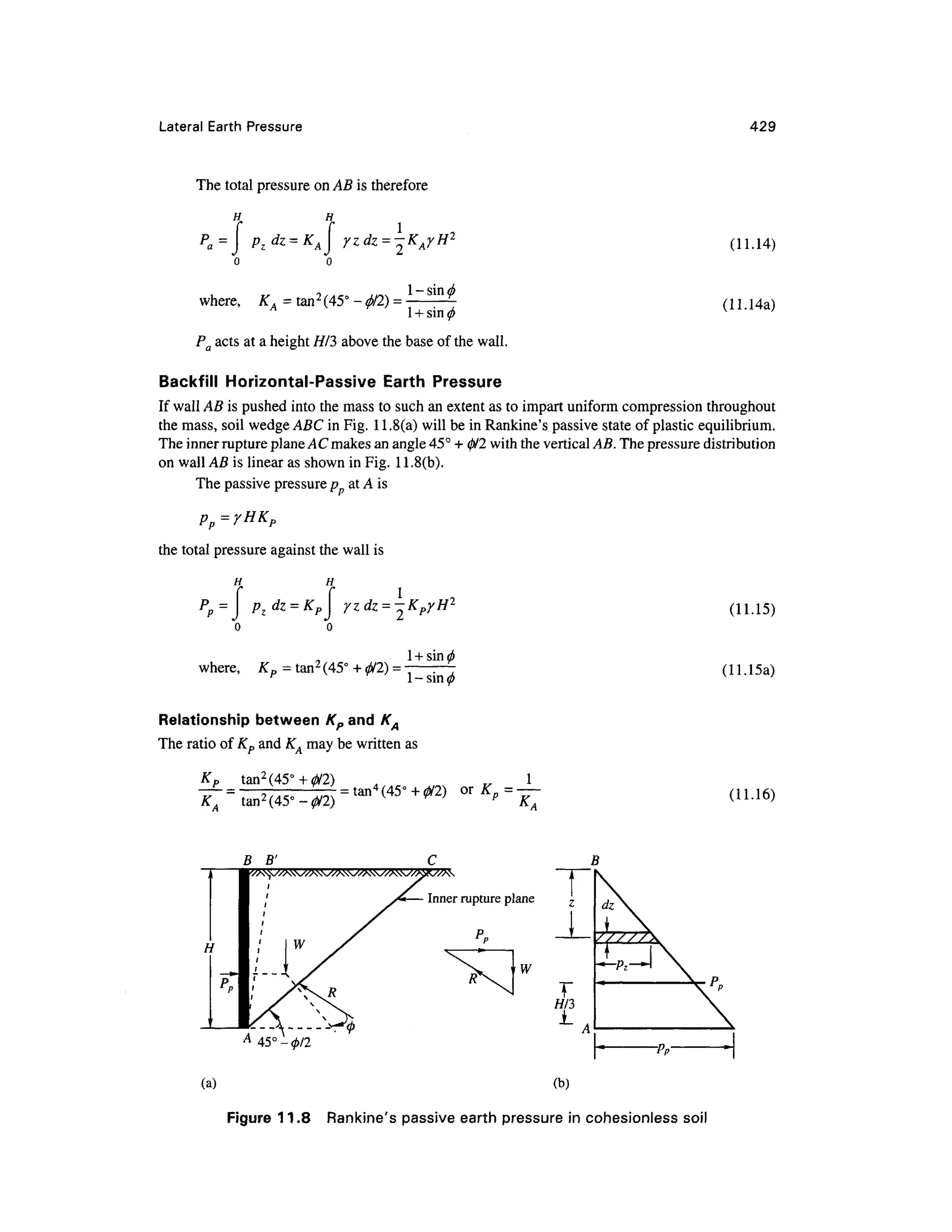

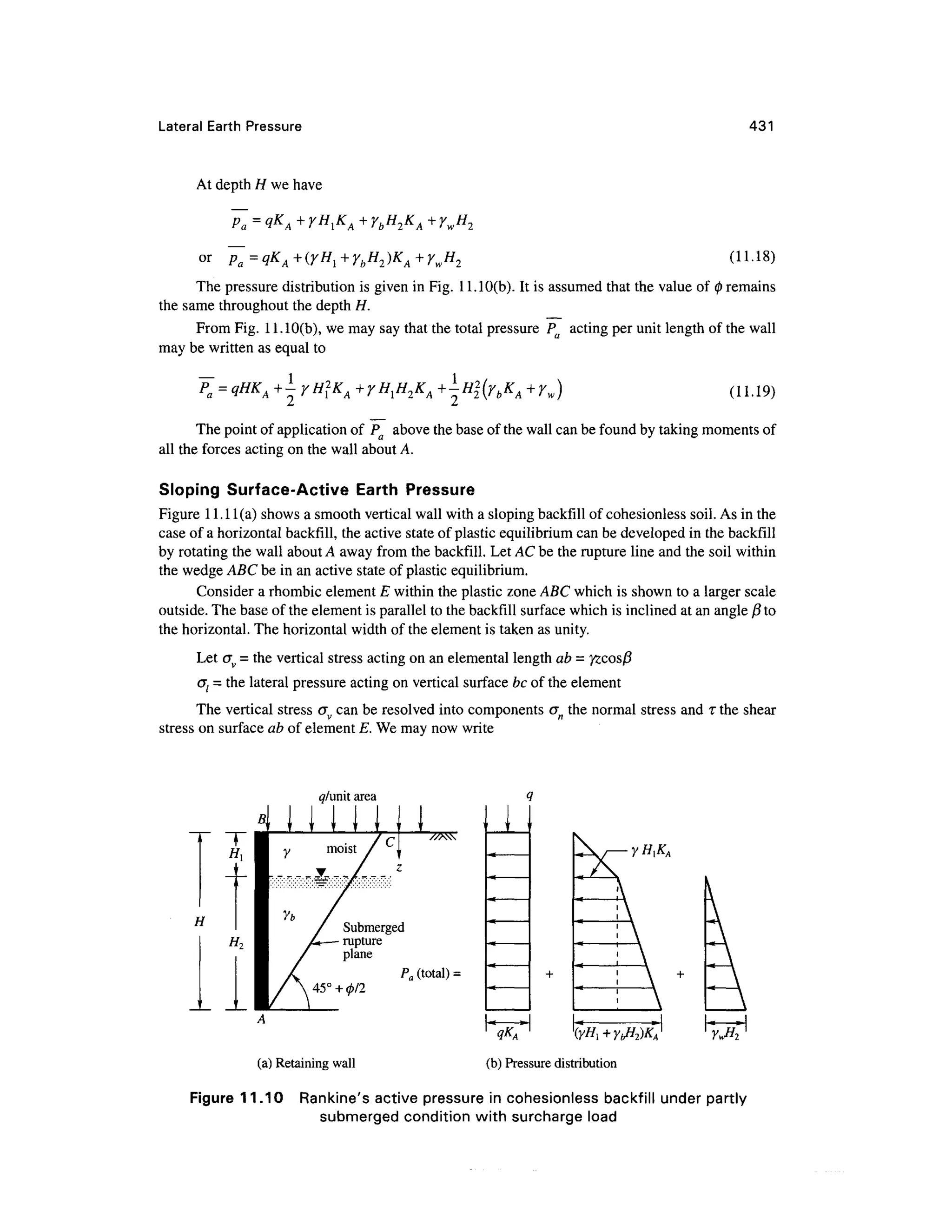
![432 Chapter 1 1
H
(a) Retaining wall (b) Pressure distribution
O CT 3 0 , O n O]
(c) Mohr diagram
Figure 11.1 1 Rankine' s active pressur e for a sloping cohesionles s backfil l
n - <J v cos fi = yz cos /?cos fl= y z cos 2
j3
T = a sin/ ? =
(11.20)
(11.21)
A Mohr diagram can be drawn as shown in Fig. 11. 1 l(c). Here , length OA = yzcos/3 make s
an angle (3 with the (T-axis. OD = on - yzcos 2
/3 and AD = T=yzcosf} sin/3 . OM is the Mohr envelope
making an angle 0 with the <7-axis. Now Mohr circle C} can be drawn passing through point A and
at the same time tangential to envelope OM. This circle cuts line OA at point B and the CT-axi
s a
t E
andF.
Now OB = the lateral pressure ol =pa in the active state.
The principal stresses are
OF = CTj and O E = a3
The following relationships can be expressed wit h reference to the Mohr diagram.
BC = CA =
— -
l -sm2
j3](https://image.slidesharecdn.com/geotechbook-240326034957-6522ccd8/75/geotech-book-FOR-CIVIL-ENGINEERINGGG-pdf-451-2048.jpg)
![Lateral Earth Pressure 433
= OC-BC =
2
cr, +CT , cr, + cr,
i
2 2
Now we have (after simplification)
cos 0 -
T] cos2
ft -cos
crv yzcosfi cos 0+J cos2
fi -cos2
0
or
cos B- A/cos2
/?- cos2
(b
- v
cos/?+cos2
/?-cos
where, K. = cos fi x
(11.22)
(11.23)
(11.24)
is calle d a s th e coefficient o f earth pressure fo r th e activ e stat e o r th e activ e eart h pressur e
coefficient.
The pressure distribution on the wall is shown in Fig. 1 1 . 1l(b). The active pressure at depth H
is
which acts parallel to the surface. The total pressure PQ per unit length of the wall is
(11.25)
which act s a t a height H/3 fro m th e bas e o f the wal l and paralle l t o th e slopin g surfac e o f th e
backfill.
(a) Retaining wall (b ) Pressure distribution
Figure 11.1 2 Rankine' s passive pressure in sloping cohesionless backfil l](https://image.slidesharecdn.com/geotechbook-240326034957-6522ccd8/75/geotech-book-FOR-CIVIL-ENGINEERINGGG-pdf-452-2048.jpg)
![434 Chapter 1 1
Sloping Surface-Passiv e Eart h Pressur e (Fig . 11.12 )
An equation for P fo r a sloping backfill surface can be developed i n the same way as for an active
case. The equation for P ma y be expressed as
(11.26)
n cos fi +Jcos2
fl- cos 2
0
where, K p
= cos]3x/
cos /3 - ^cos2
j3- cos2
0
P act s at a height H/3 abov e point A and parallel to the sloping surface.
(11.27)
Example 11. 2
A cantilever retaining wall of 7 meter height (Fig. Ex. 11.2) retains sand. The properties o f the sand
are: e - 0.5 , 0 =30° and G^ = 2.7. Using Rankine's theory determine the active earth pressure at the
base when the backfill is (i) dry, (ii) saturated and (iii) submerged, and also the resultant active force
in each case . In addition determine the total water pressure under the submerged condition.
Solution
e = 0.
5 an
d G= 2.7, y, = -^= —— x 9.81 =17.66 kN/m3
d
l + e1 + 0.5
Saturated unit weight
Backfill submerge d
Backfill saturate d
Water pressur e
pa = 48.81 kN/m"
= 68.67 kN/m2
= Pw
Figure Ex. 11.2](https://image.slidesharecdn.com/geotechbook-240326034957-6522ccd8/75/geotech-book-FOR-CIVIL-ENGINEERINGGG-pdf-453-2048.jpg)
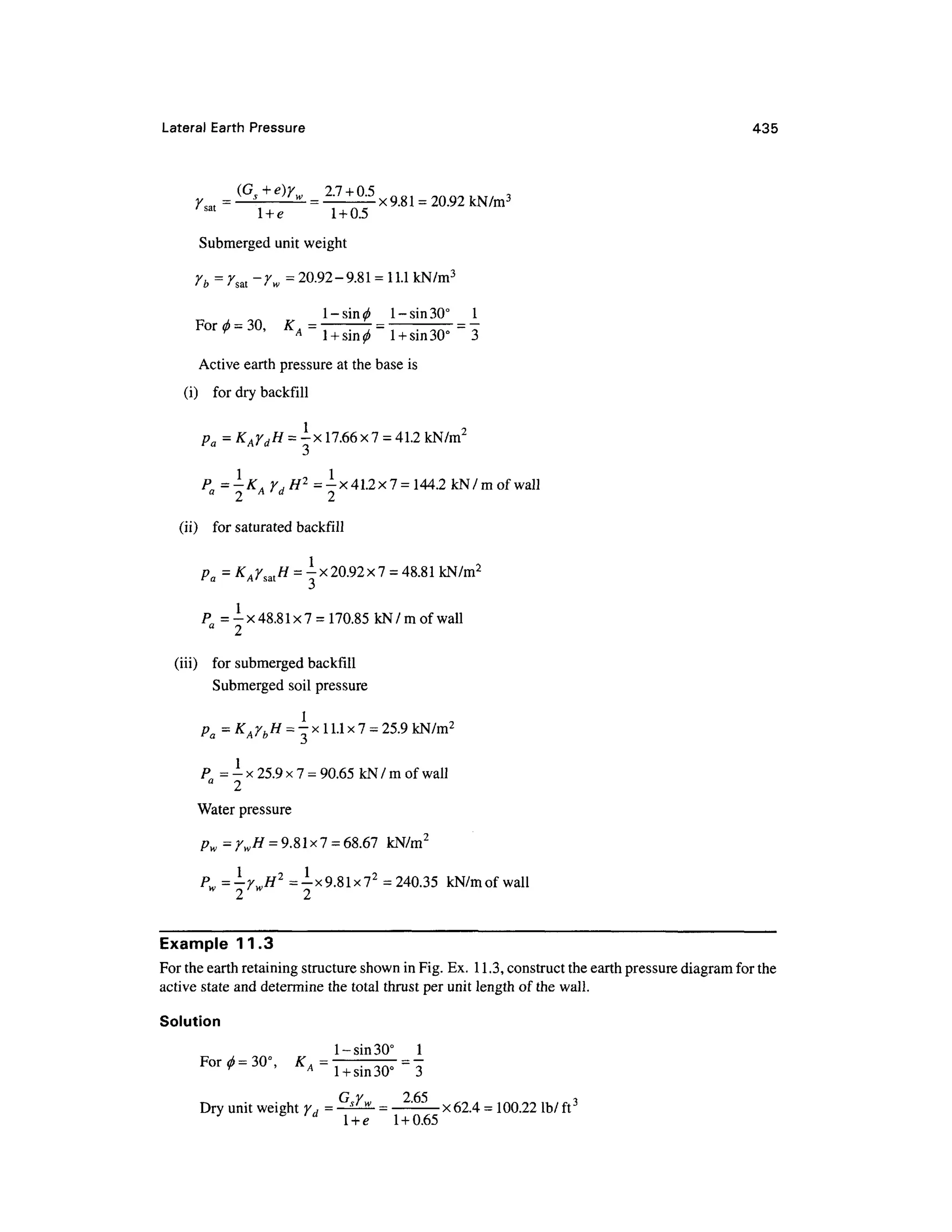
![436 Chapter 1 1
q = 292 lb/ft 2
J I U J J H J
E--
//A
|
=i
32.8ft> >
1
1
J
1
9.8ft
Sand G s =2.65
e = 0.65
0 = 30°
(a) Given syste m
Pl Pi P3
(b) Pressure diagram
Figure Ex . 11.3
(Gs-l)yw 2.65- 1
7b =-^—- =T
-^X 62.4 =62.4 ,b/f,3
Assuming the soil above the water table is dry, [Refer to Fig. Ex. 11.3(b)] .
P! = KAydHl = - x 100.22x9.8 = 327.39 lb/ft 2
p2 = KAybH2 = -x 62.4 x 23 =478.4 lb/ft 2
p3 = KAxq = -x292= 97.33 lb/ft 2
P4 = (K
A^wrw
H
2 = 1x62.4x23 =1435.2 lb/ft 2
Total thrust = summation of the areas of the different part s of the pressure diagra m
1 1 1
= ^PiHl+plH2+-p2H2+p3(Hl+H2) + -p4H2
= -x 327.39 x9.8 + 327.39 x 23 + -
x 478.4 x 23 + 97.33(32.8) + -
x 1435.2x23
2 2 2
= 34,333 lb/f t = 34.3 kips/ft o f wall
Example 11. 4
A retaining wall with a vertical back of height 7.32 msupports a cohesionless soil of unit weight
17.3 kN/m 3
an d a n angle o f shearing resistance 0 = 30°. The surfac e o f th e soi l i s horizontal .
Determine th e magnitud e an d directio n o f th e activ e thrus t pe r mete r o f wal l usin g Rankin e
theory.](https://image.slidesharecdn.com/geotechbook-240326034957-6522ccd8/75/geotech-book-FOR-CIVIL-ENGINEERINGGG-pdf-455-2048.jpg)

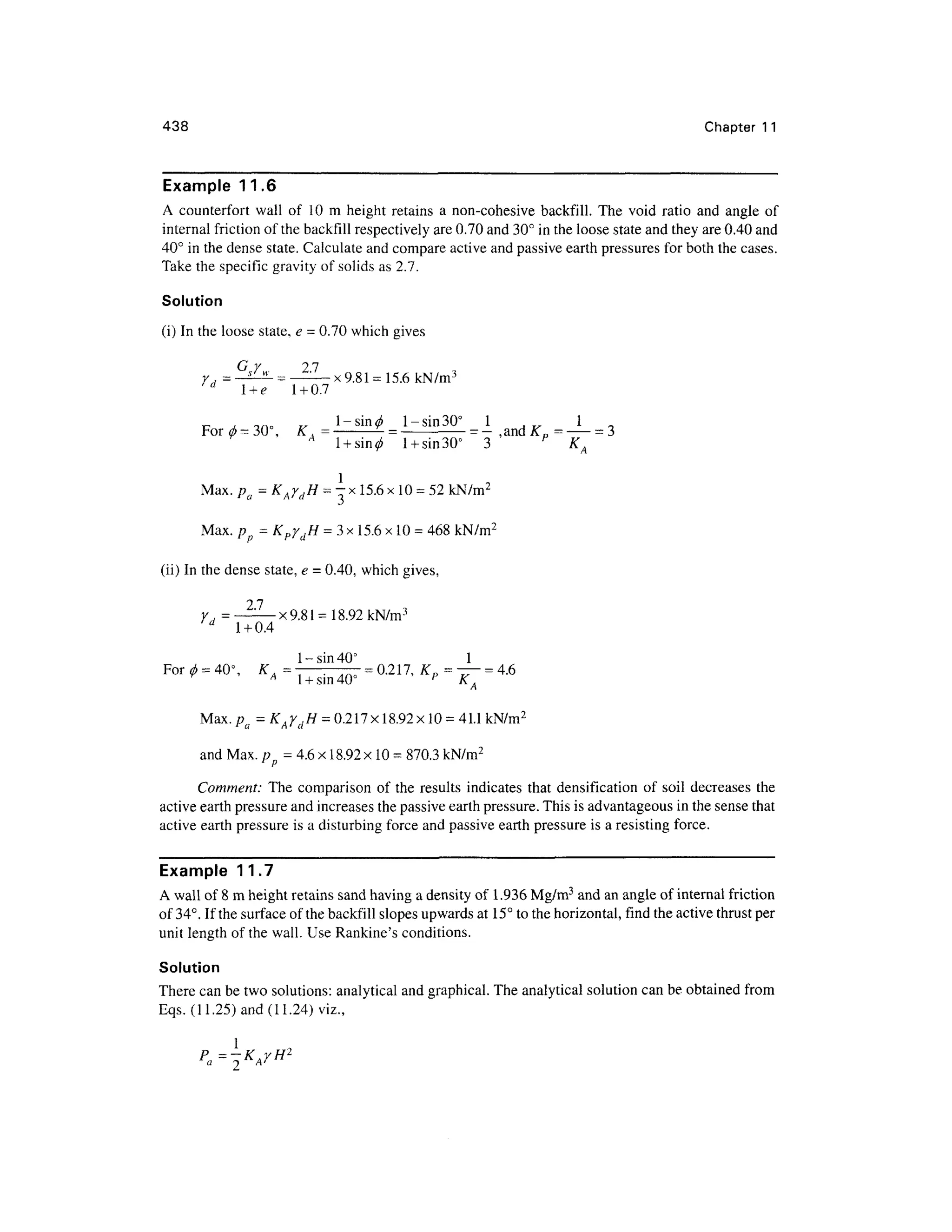
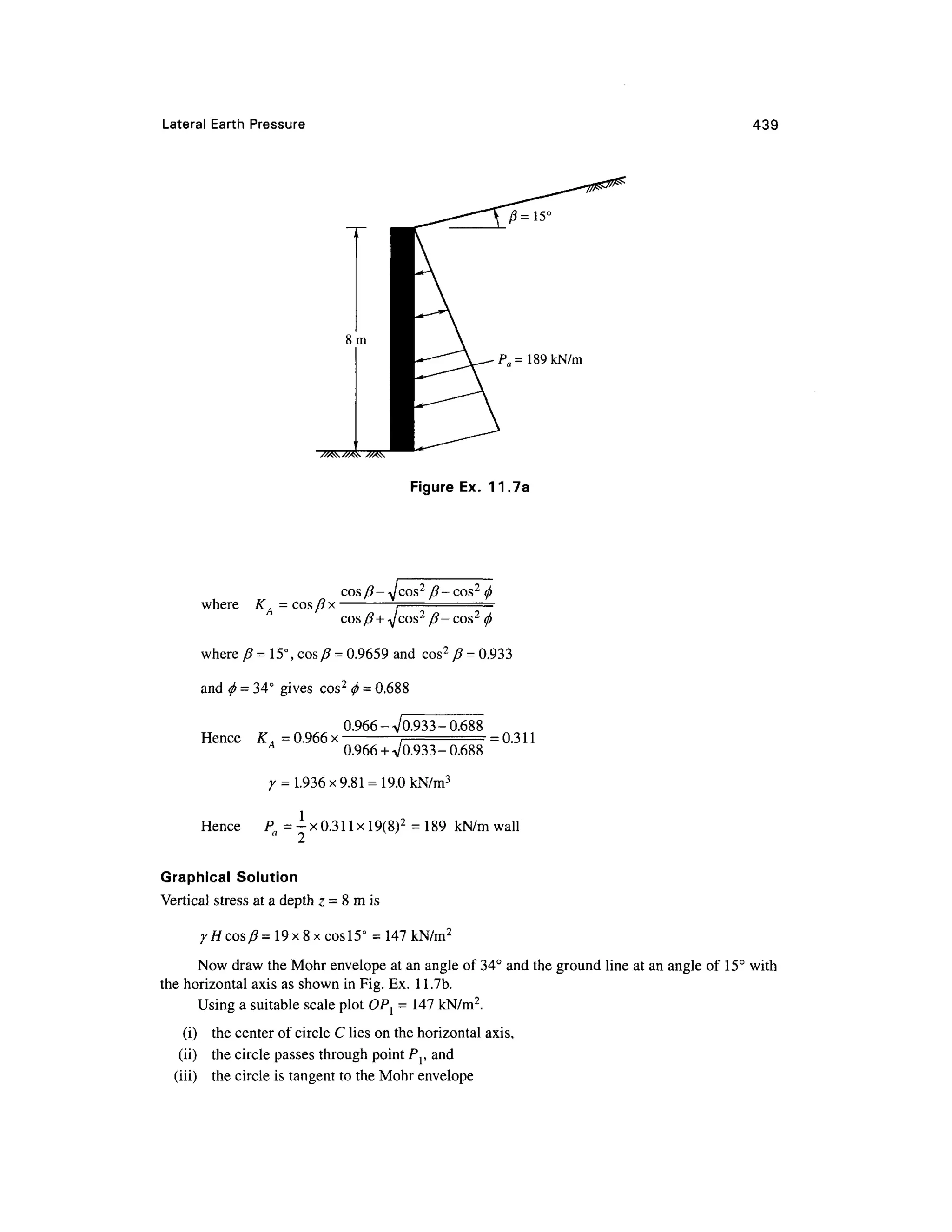
![440 Chapter 1 1
Ground line
16 18 x 1 0
Pressure kN/m
Figure Ex. 11.7 b
The point P2 at which the circle cuts the ground line represents the lateral earth pressure. The length
OP2 measures 47.5 kN/m 2
.
Hence the active thrust per unit length, P a = -x 47.5 x 8 =190 kN/m
1 1 .
6 RANKINE' S ACTIVE EARTH PRESSURE WIT H COHESIVE
BACKFILL
In Fig. 1 1.1 3(a
) is shown a prismatic element in a semi-infinite mass with a horizontal surface. The
vertical pressure on the base AD of the element at depth z is
The horizontal pressure on the element when the mass is in a state of plastic equilibrium may
be determined b y making use of Mohr's stres s diagram [Fig. 1 1.13(b)]
.
Mohr envelopes O'A and O'E for cohesive soils are expressed by Coulomb's equation
s - c +tan 0 (11.28)
Point P j o n the cr-axi s represents th e stat e of stres s o n the base of the prismati c element .
When the mass is in the active state cr, is the major principal stress Cfj . The horizontal stress oh is the
minor principal stres s <7 3. The Moh r circle of stress C a passing throug h P{ an d tangentia l to th e
Mohr envelope s O'A an d O'B represent s th e stres s condition s i n th e activ e state . Th e relatio n
between the two principal stresses may be expressed by the expression
(11.29)
(11.30)
<7, = <7, A
1 J V v y
SubstitutingO" , = 72,<7 3 =pa and transposin g we have
rz 2 c](https://image.slidesharecdn.com/geotechbook-240326034957-6522ccd8/75/geotech-book-FOR-CIVIL-ENGINEERINGGG-pdf-459-2048.jpg)
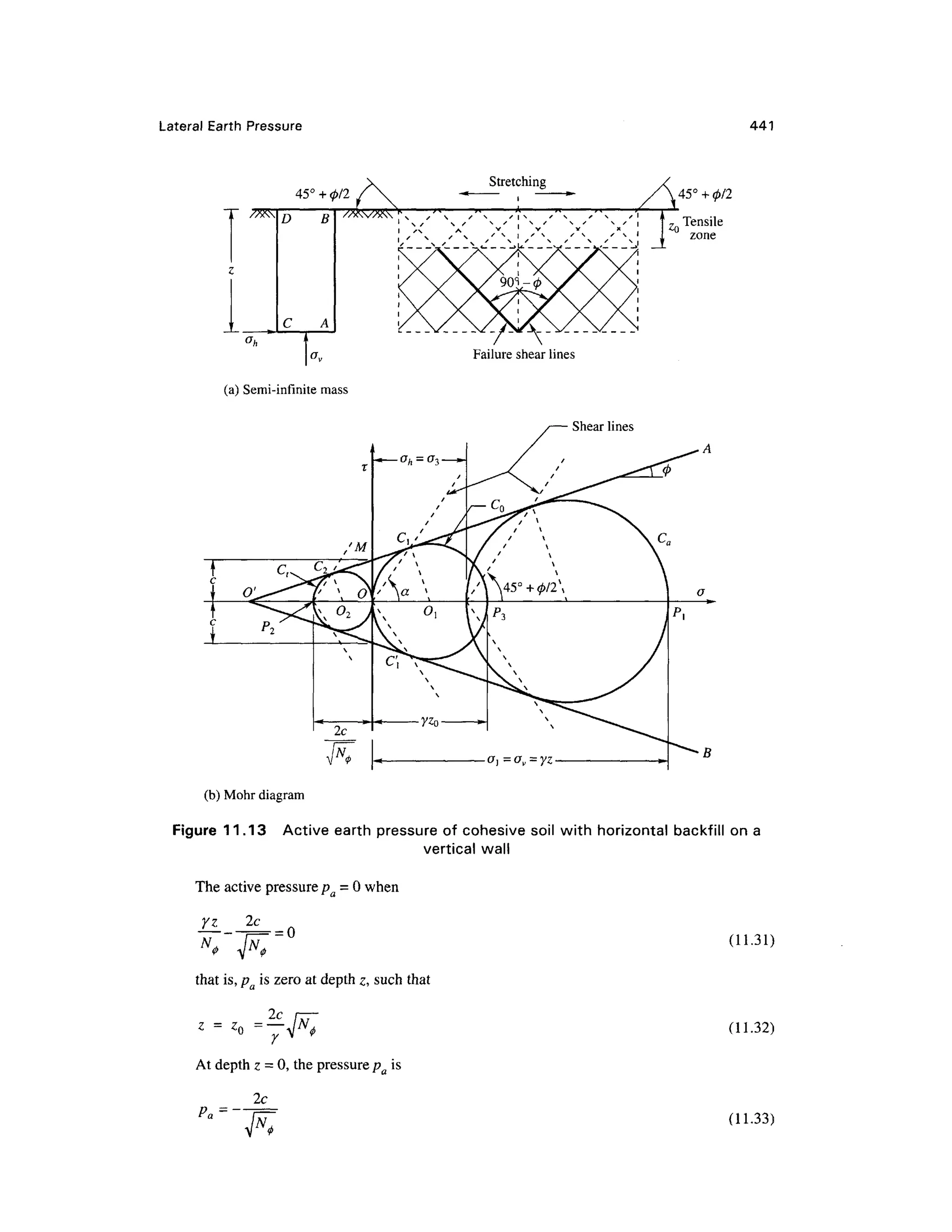
![442 Chapte r 1 1
Equations (1 1 .32) and (1 1.33) indicate that the active pressure pa i s tensile between dept h 0
and ZQ. The Eqs. ( 1 1.32) and (1 1.33) can also be obtained fro m Mohr circles CQ and Ct respectively .
Shear Line s Patter n
The shear lines are shown in Fig. 1 1 . 13(a). Up to depth ZQ they are shown dotted to indicate that this
zone is in tension.
Total Active Eart h Pressur e o n a Vertical Sectio n
If AB is the vertical section [1 1.14(a)], the active pressure distribution against this section of height
H is shown in Fig. 11.1 4(b) as per Eq. (1 1.30). The total pressure against the section i s
H H H
yz 2c
Pa = PZdz
= ~dz- -r
= = dz
o 0 ' 0 V A
0
H
The shaded are a in Fig. 1 1.14(b) gives the total pressure Pa. If the wall has a height
the total earth pressure is equal to zero. This indicates that a vertical bank of height smaller than H
can stand without lateral support. //, is called the critical depth. However , the pressure agains t the
wall increases fro m - 2c/JN^ a t the top to + 2c/jN^ a t depth //,, whereas on the vertical face of
an unsupported bank the normal stress is zero at every point. Because of this difference, the greatest
depth of which a cut can be excavated without lateral support for its vertical sides is slightly smaller
than H c.
For soft clay, 0 =0, and N^= 1
therefore, P a
= ±yH2
-2cH (11.36 )
4c
and HC
=
~^ (1L37 )
Soil does not resist any tension and as such it is quite unlikely that the soil would adhere to the
wall within the tension zone of depth z0 producing cracks i n the soil. It is commonl y assume d that
the active eart h pressure is represented b y the shaded are a in Fig. 1 1.14(c).
The tota l pressure o n wal l AB i s equal to the are a o f the triangle in Fig. 11.14(c) whic h is
equal to
1 yH 2c
D 1 yH 2c „ 2c
or F =
" H
"](https://image.slidesharecdn.com/geotechbook-240326034957-6522ccd8/75/geotech-book-FOR-CIVIL-ENGINEERINGGG-pdf-461-2048.jpg)

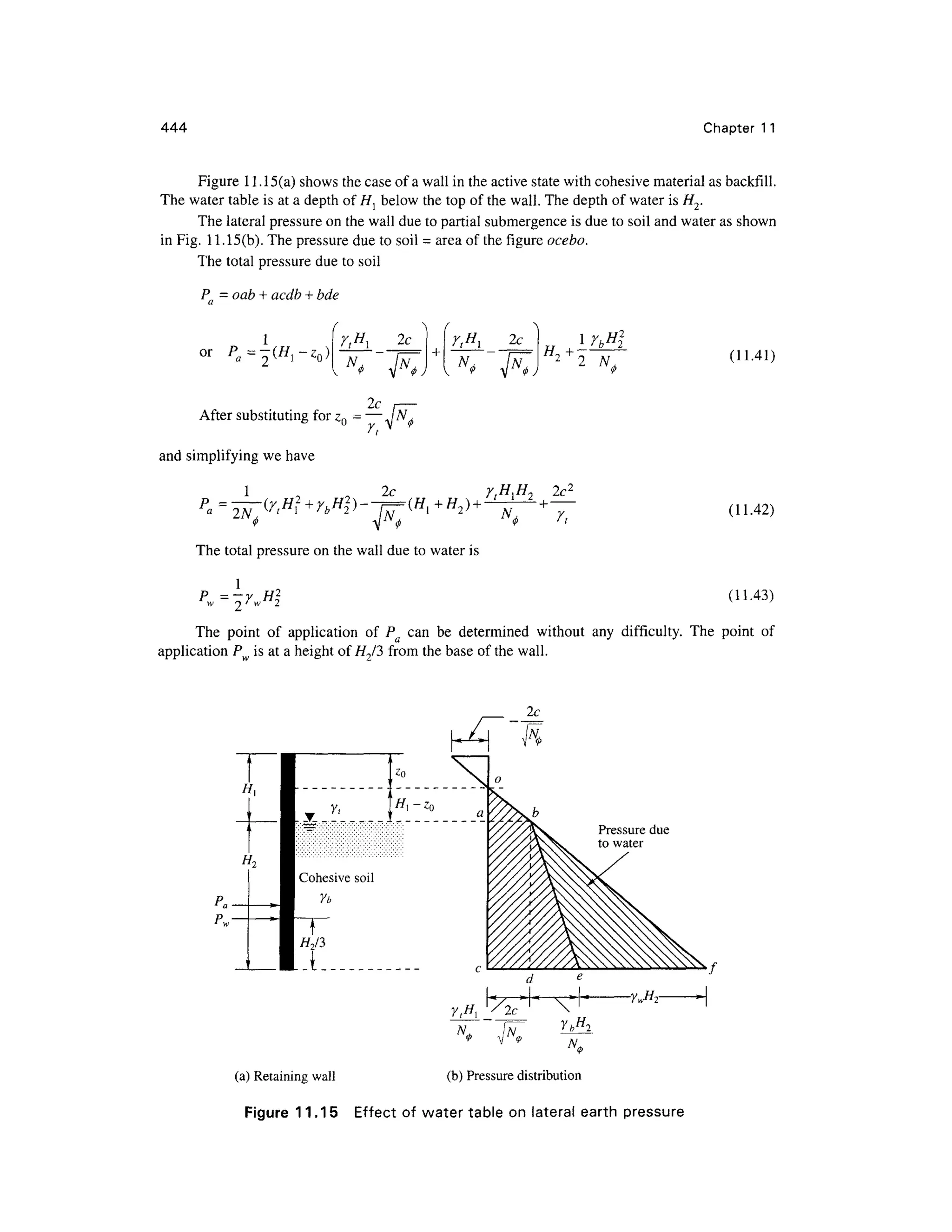
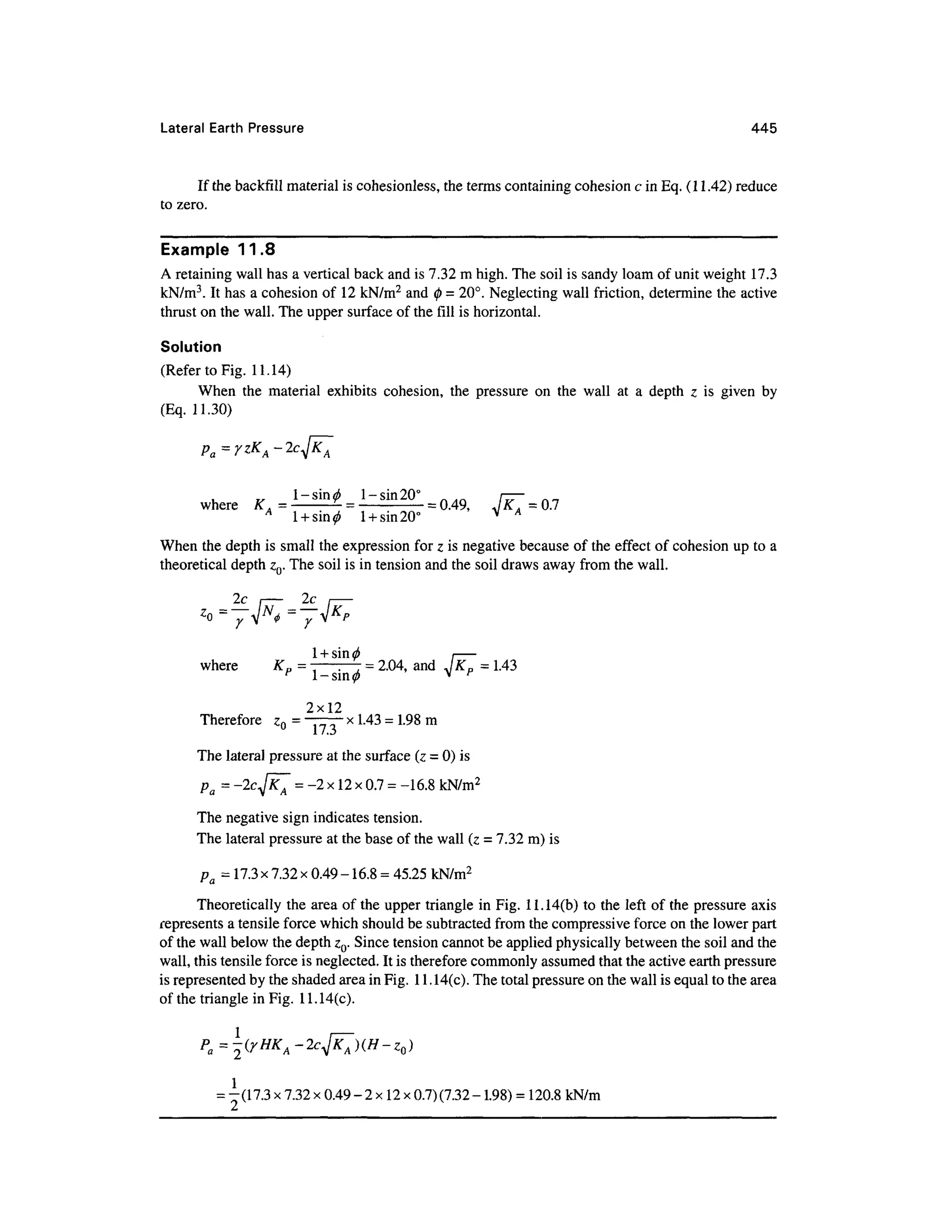

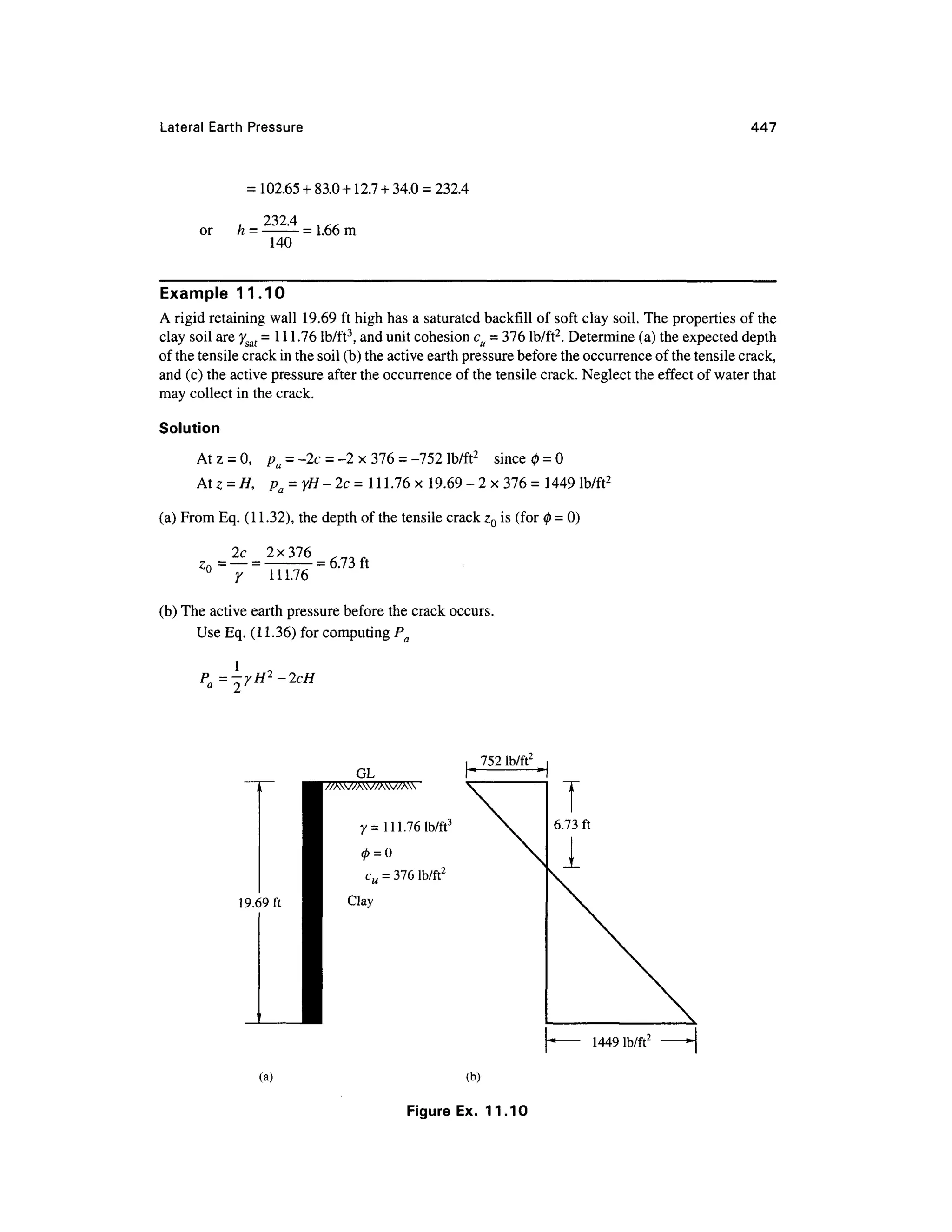




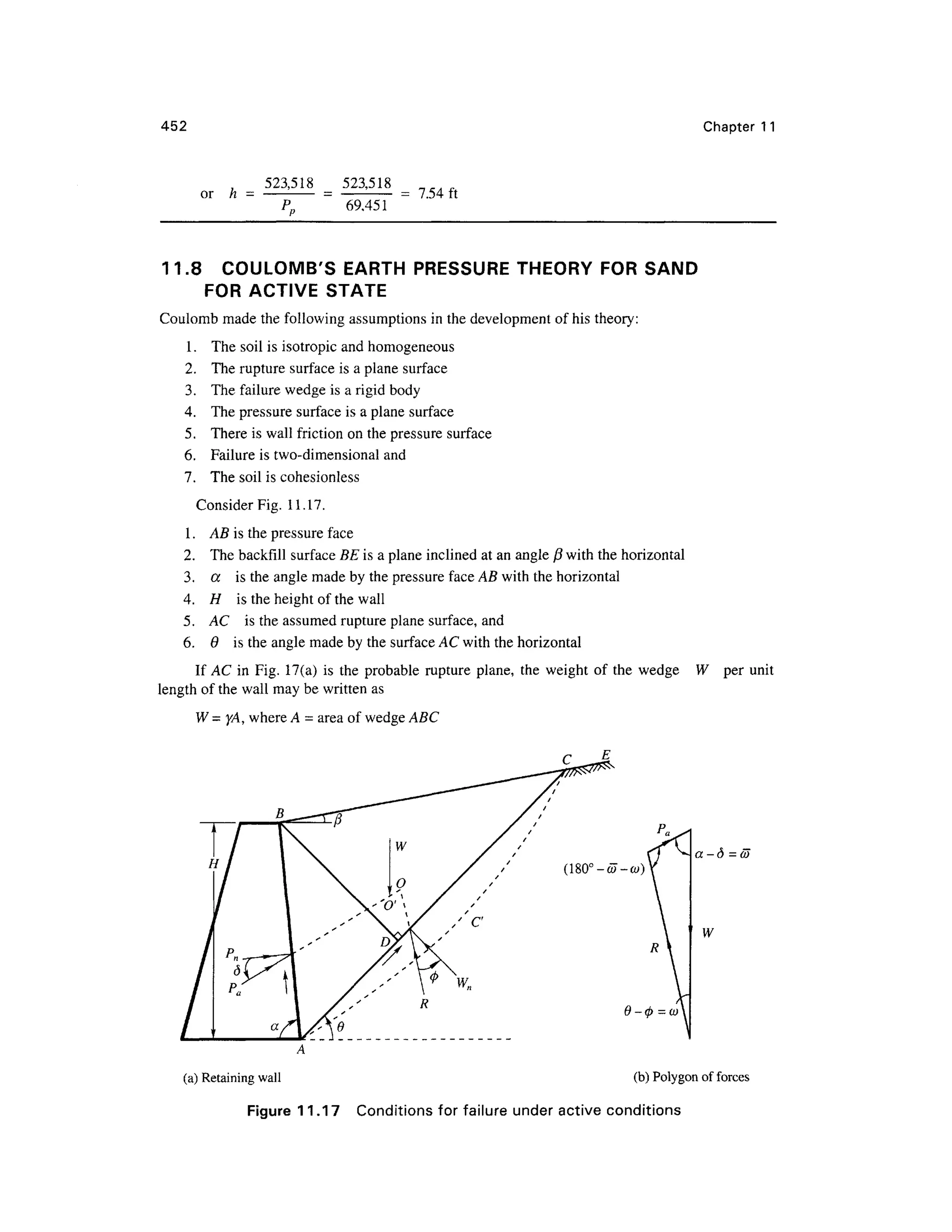



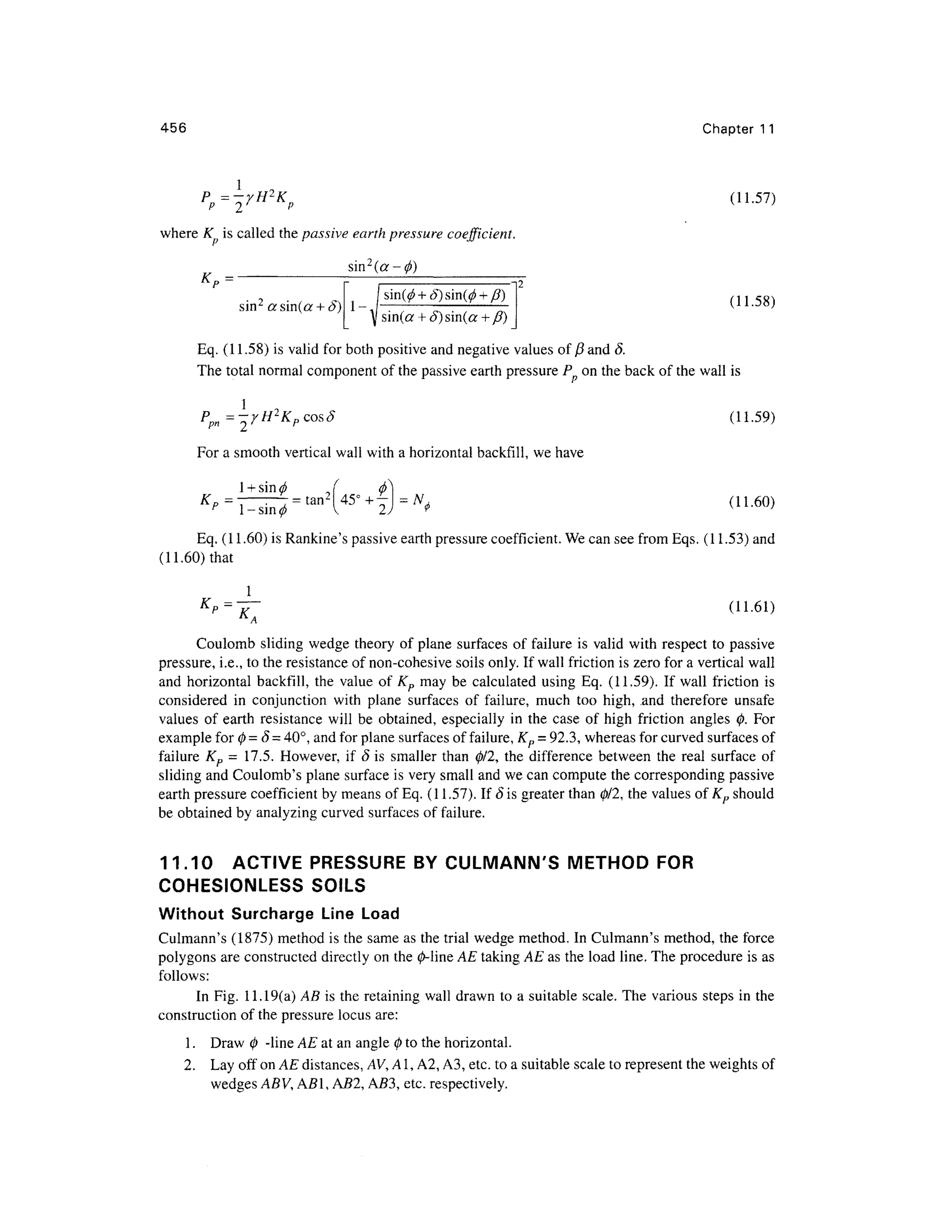
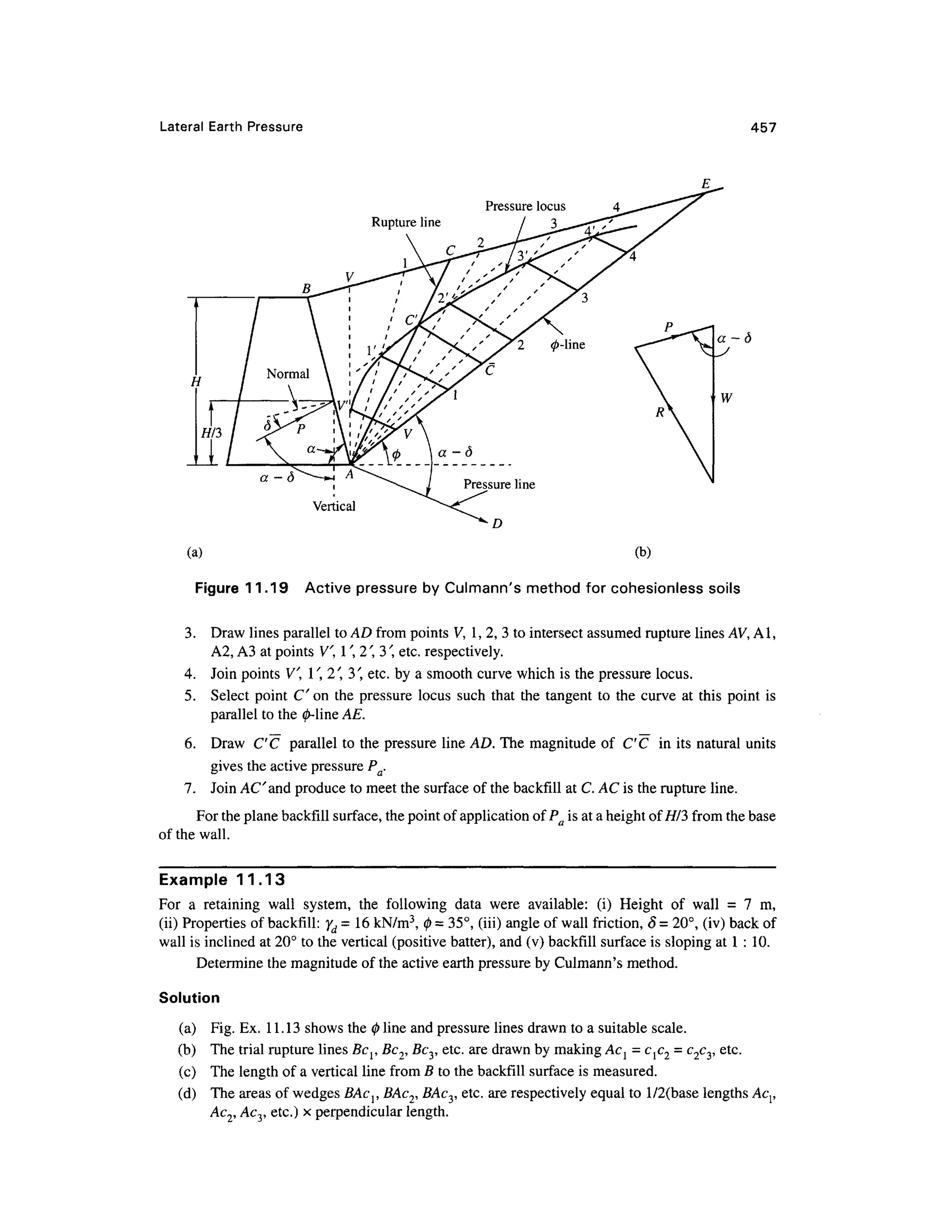


![460 Chapter 1 1
0.28Q n 2
H2
(0.1 6 + n2
)3 (11.65)
(c) Latera l pressur e a t point s alon g th e wal l o n eac h sid e o f a perpendicula r fro m th e
concentrated load Q to the wall (Fig. 11.20b )
Ph = Ph cos2
(l.la) (11.66)
Lateral Pressur e o n a Rigi d Wal l du e t o Lin e Loa d
A concrete block wall conduit laid on the surface, or wide strip loads may be considered a s a series of
parallel line loads as shown in Fig. 11.21 . The modified equations for computing ph ar e as follows:
(a) For m > 0.4
Ph= n H
(a) For m < 0.4
2x2 (11.67)
Ph =
0.203n
(0.16+ n2
)2 (11.68)
Lateral Pressur e o n a Rigi d Wal l du e t o Stri p Loa d
A stri p loa d i s a loa d intensit y with a finit e width , such a s a highway , railwa y lin e o r eart h
embankment which is parallel to the retaining structure. The application of load is as given in Fig.
11.22.
The equation for computing ph i s
ph = — (/?-sin/?cos2«r) (11.69a)
The tota l lateral pressure per uni t length of wall due to strip loading ma y b e expressed a s
(Jarquio, 1981 )
x = mH
*"] q/unit length
x
H
q/unit are a
Figure 11.2 1 Latera l pressure against a Figur e 11.22 Latera l pressure against a
rigid wall due to a line loa d rigi d wal l due to a strip load](https://image.slidesharecdn.com/geotechbook-240326034957-6522ccd8/75/geotech-book-FOR-CIVIL-ENGINEERINGGG-pdf-479-2048.jpg)

![462 Chapte r 1 1
, A
, 2
a, = tan"1
— = tan"1
— = 11.31°
H 1 0
T1
— ^tan" 1
—= 21.80 C
H 1 0
=—[10(21.80-11.31)] « 70 kN/m
11.12 CURVE D SURFACE S O F FAILURE FO R COMPUTING
PASSIVE EART H PRESSUR E
It is customary practice to use curved surfaces of failure for determining the passive earth pressur e
P o n a retaining wall with granular backfill if § is greater than 0/3. If tables or graphs are available
for determining K fo r curved surfaces of failure the passive earth pressure P ca n be calculated. If
tables or graphs are not available for this purpose, P ca n be calculated graphically by any one of
the following methods.
1 .Logarithmi c spira l method
2. Frictio n circle method
In bot h thes e methods , th e failur e surfac e clos e t o th e wal l i s assume d a s th e par t o f a
logarithmic spira l or a part of a circular arc with the top portion of the failure surfac e assumed as
planar. Thi s statemen t i s vali d fo r bot h cohesiv e an d cohesionles s materials . Th e method s ar e
applicable fo r bot h horizonta l an d incline d backfil l surfaces . However , i n th e followin g
investigations it will be assumed that the surface of the backfill i s horizontal.
Logarithmic Spira l Metho d o f Determinin g Passiv e Eart h Pressur e o f Idea l
Sand
Property o f a Logarithmi c Spira l
The equation of a logarithmic spiral may be expressed as
(11.70)
where
rQ = arbitrarily selected radius vector for reference
r = radius vector of any chosen point on the spiral making an angle 0 wit h rQ.
<j) = angle of internal friction o f the material .
In Fig. 11.23a O is the origi n o f the spiral . Th e propert y o f the spira l i s that every radius
vector suc h as Oa makes a n angle of 90°-0 to the tangent of the spiral at a or in other words, the
vector Oa makes an angle 0 with the normal to the tangent of the spiral at a.
Analysis o f Force s fo r th e Determinatio n o f Passiv e Pressur e P p
Fig. 1 1 .23b gives a section through the plane contact face AB of a rigid retaining wall which rotates
about poin t A int o the backfill o f cohesionless soi l wit h a horizontal surface. B D is drawn at an
angle 45°- 0/2 to the surface. Let Ol be an arbitrary point selected o n the line BD as the center of
a logarithmic spiral, and let O}A be the reference vecto r r Q. Assume a trial slidin g surface Aelcl
which consists of two parts. The first part is the curved part Ael which is the part of the logarithmic](https://image.slidesharecdn.com/geotechbook-240326034957-6522ccd8/75/geotech-book-FOR-CIVIL-ENGINEERINGGG-pdf-481-2048.jpg)
![Lateral Eart h Pressur e 463
0
Tangent
V,
(a) Properties of logarithmic spiral
Curve C
(c) Polygon of forces
-0/2 /
B
(b) Methods of analysis
Figure 11.23 Logarithmi c spiral method of obtaining passive earth pressure of sand
(After Terzaghi, 1943 )
spiral with center at Ol an d the second a straight portion elcl whic h is tangential to the spiral at
point e{ on the line BD.
e^c meets the horizontal surface at Cj at an angle 45°- 0/2. O
lel is the end vector rt of the
spiral which makes an angle 6l with the reference vector rQ . Line BD makes an angle 90°- 0 with
line ^Cj which satisfies the property of the spiral.
It is now necessary t o analyze the forces actin g on the soil mass lyin g above th e assumed
sliding surface A^jCj.
Within the mass of soil represented by triangle Belcl the state of stress is the same as that in
a semi-infinite mass in a passive Rankine state. The shearing stresse s along vertical section s ar e
zero in this triangular zone. Therefore, w e can replace the soil mass lying in the zone eldlcl b y a
passive earth pressure Pd acting on vertical section eldl a t a height hgl/3 wher e hg] i s the height of
the vertical section e{d{ . This pressure is equal to
p =
e (11.71)](https://image.slidesharecdn.com/geotechbook-240326034957-6522ccd8/75/geotech-book-FOR-CIVIL-ENGINEERINGGG-pdf-482-2048.jpg)
![464 Chapte r 1 1
where W 0 = tan2
(45° + 0/2 )
The body of soil mass BAe]dl (Fig . 1 1.23b) is acted on by the following forces:
1. Th e weight Wj o f the soil mass acting through the center of gravity of the mass havin g a
lever arm /2 with respect to Or the center of the spiral.
2. Th e passive earth pressure /^acting on the vertical section el d} havin g a lever arm /3.
3. Th e passive earth pressure Pj acting on the surface AB at an angle S to the normal and at a
height H/3 abov e A having a lever arm l{ .
4. Th e resultant reaction forc e F l o n the curved surface Ae{ an d passing through the center
Determination o f th e Forc e />
1 Graphically
The directions of all the forces mentioned above except that of Fl ar e known. In order to determine
the direction o f F, combin e th e weight W { an d the force P el whic h gives th e resultant /?, (Fig .
1 1.23c). This resultant passes through the point of intersection nl of W{ and Pel i n Fig. 1 1.23b and
intersects forc e P { a t poin t n2. Equilibrium requires tha t forc e F { pas s throug h th e sam e point .
According t o th e propert y o f th e spiral , it mus t pass throug h th e sam e point . According t o th e
property of the spiral, it must pass through the center Ol o f the spiral also. Hence, the direction of
Fj is known and the polygon of forces shown in Fig. 1 1.23c can be completed. Thus we obtain the
intensity of the force P} require d to produce a slip along surface Aelcl .
Determination o f /* , b y Moment s
Force Pl ca n be calculated by taking moments of all the forces abou t the center O { o f th e spiral .
Equilibrium of the system requires that the sum of the moments o f all the forces mus t be equal to
zero. Since the direction of Fl i s now known and since it passes through Ol , it has no moment. The
sum of the moments o f all the other forces may be written as
P1 /1 +W1 /2 +J P1 /3 =0 (11.72 )
Therefore,P
=
-7(^2 + P
^) (11.73 )
l
i
Pl i s thus obtained fo r an assumed failure surface Ae^c^. The next step consists in repeating
the investigation for more tria l surfaces passing through A which intersect line BD at points e2, e3
etc. The values of Pr P 2 P 3 etc so obtained may be plotted as ordinates dl d{ , d2 d'2 etc., as shown
in Fig. 1 1 .23b and a smooth curve C is obtained by joining points d{ , d' 2 etc . Slip occurs along the
surface correspondin g t o th e minimu m value P whic h i s represente d b y th e ordinat e dd'. Th e
corresponding failur e surface is shown as Aec i n Fig. 1 1.23b.
11.13 COEFFICIENT S OF PASSIVE EARTH PRESSURE TABLES
AND GRAPH S
Concept o f Coulomb' s Formul a
Coulomb (1776 ) computed the passive earth pressure o f ideal sand on the simplifying assumptio n
that the entire surface of sliding consists of a plane through the lower edge A of contact face AB as
shown in Fig. 1 1.24a. Line AC represents a n arbitrary plane section throug h this lower edge. The
forces actin g on this wedge and the polygon of forces ar e shown in the figure. The basic equatio n
for computing the passive earth pressure coefficient ma y be developed a s follows:](https://image.slidesharecdn.com/geotechbook-240326034957-6522ccd8/75/geotech-book-FOR-CIVIL-ENGINEERINGGG-pdf-483-2048.jpg)
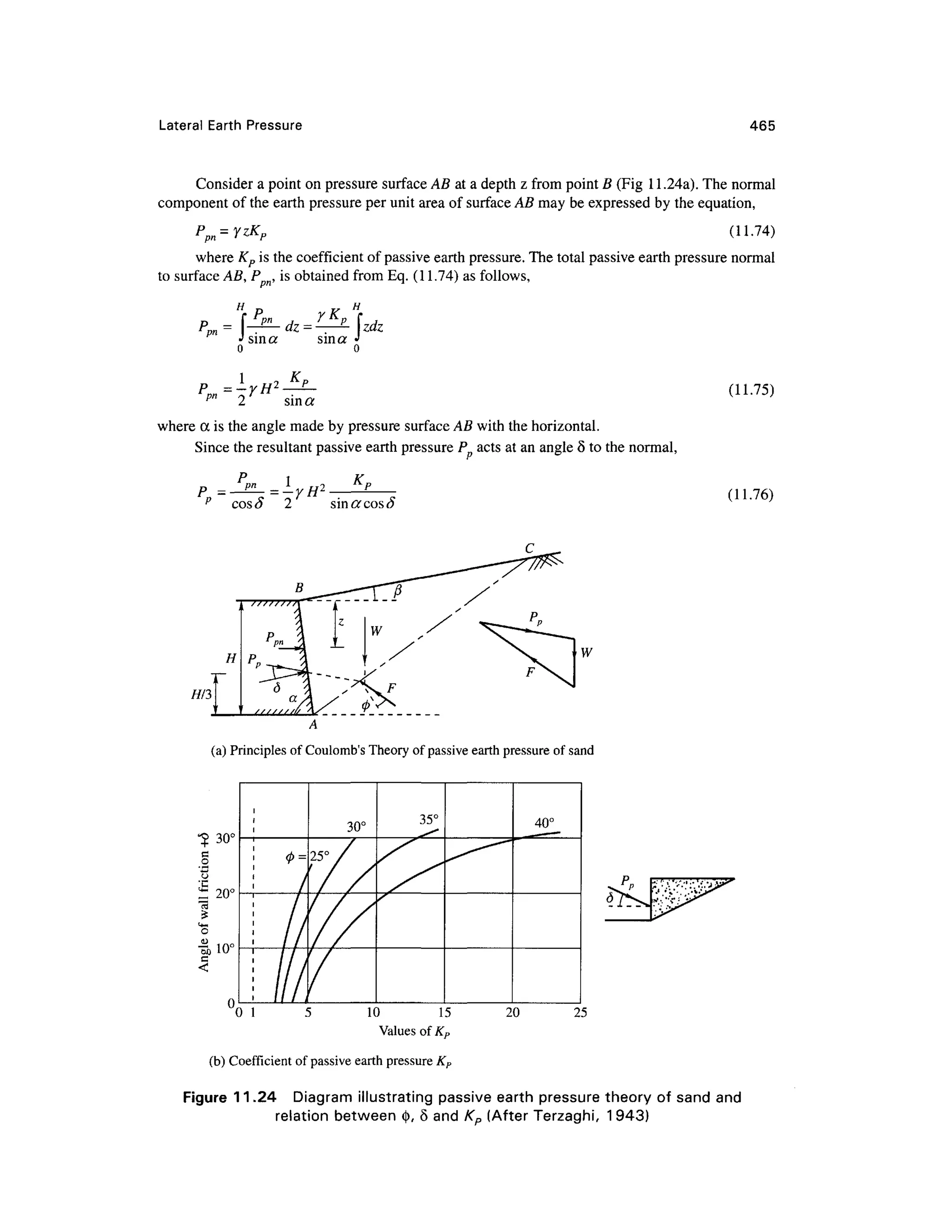
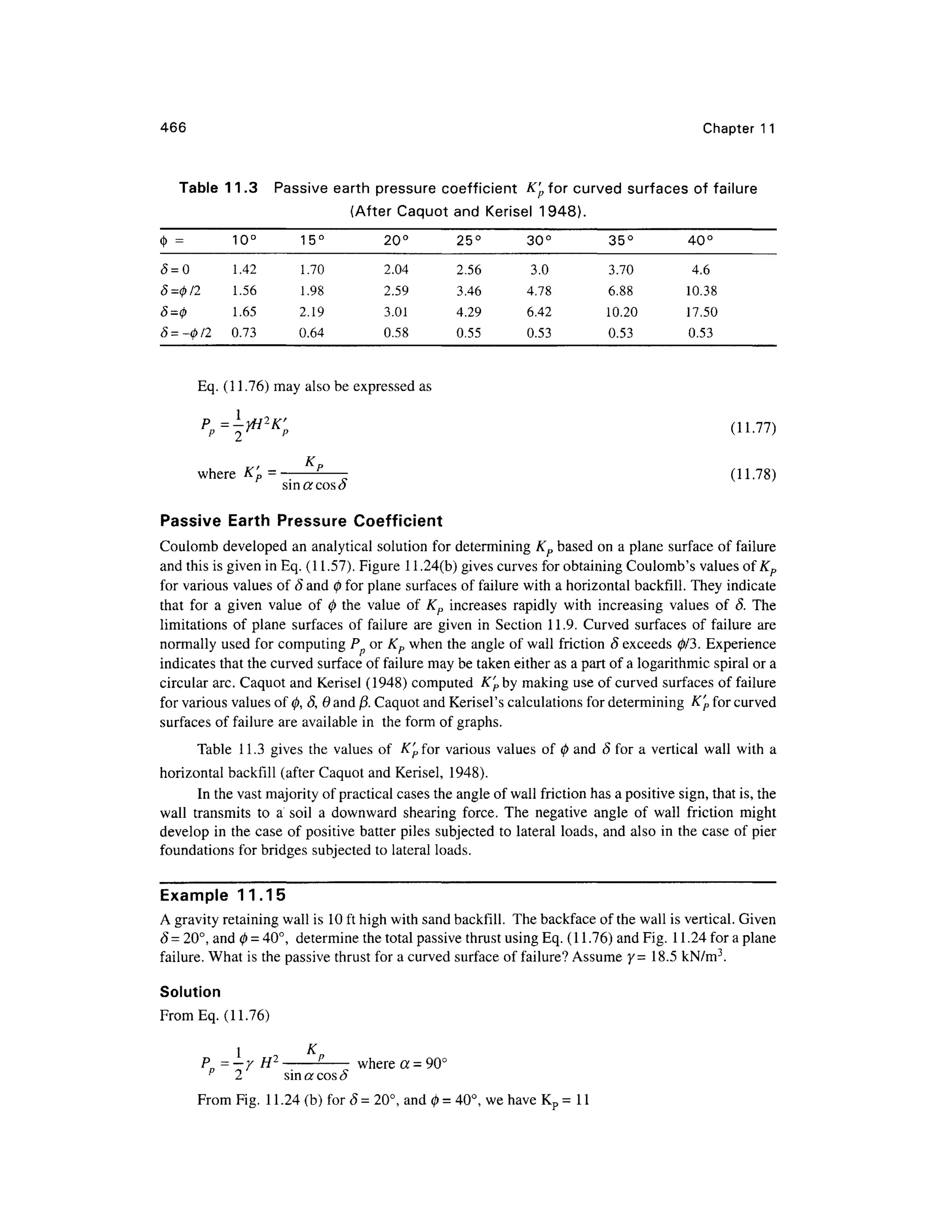

![468 Chapter 1 1
loading are expected t o withstand horizontal accelerations u p to 0.2g. For larger accelerations, and
for wall s with sloping backfill , additiona l allowances shoul d be made for the earthquake forces .
Murphy (1960) shows that when subjected to a horizontal acceleration a t the base, failure occurs in
the soil mass along a plane inclined at 35° from the horizontal . The analysis of Mononobe (1929 )
considers a soil wedge subjected to vertical and horizontal accelerations t o behave as a rigid body
sliding over a plane slip surface.
The current practice for earthquake design of retaining walls is generally based on design rules
suggested b y See d an d Whitman (1970). Richard s e t al. (1979) discus s the design an d behavior of
gravity retainin g wall s wit h unsaturate d cohesionless backfill. Most o f th e paper s mak e us e o f the
popular Mononobe-Okabe equations as a starting point for their own analysis. They follow generally the
pseudoplastic approac h fo r solving the problem. Solution s are available for both the active and passive
cases with as granular backfill materials. Though solutions for (c-0) soils have been presented by some
investigators (Prakas h an d Saran , 1966 , Saran and Prakash, 1968) , thei r findings have not yet been
confirmed, and as such the solutions for (c-0) soils have not been taken up in this chapter.
Earthquake Effec t o n Active Pressur e wit h Granula r Backfil l
The Mononobe-Okab e metho d (1929 , 1926 ) for dynamic lateral pressur e o n retaining walls is a
straight forward extensio n o f the Coulomb slidin g wedge theory. The forces tha t act on a wedge
under the active state are shown in Fig. 11.25
In Fig. 11.25 AC i n the slidin g surface o f failure of wedg e ABC havin g a weigh t W with
inertial components k v W and khW. The equation for the total active thrust Pae acting on the wall AB
under dynamic force conditions as per the analysis of Mononobe-Okabe i s
(11.79)
in which
K. = •
Ae
cos //cos2
<9cos(#+ 0+77) 1+
cos( 8+ 9+ /7)cos(/?- 9]
(11.80)
Figure 11.2 5 Activ e forc e on a retaining wal l with earthquake force s](https://image.slidesharecdn.com/geotechbook-240326034957-6522ccd8/75/geotech-book-FOR-CIVIL-ENGINEERINGGG-pdf-487-2048.jpg)
![Lateral Earth Pressure 469
where P ae =dynamic component of the total earth pressure P ae o r Pae = Pa + Pae
KAe = the dynamic earth pressure coefficient
77 = tan" (11.81)
Pa = active earth pressure [Eq . (11.50)]
kh = (horizontal acceleration)/g
kv ^(vertical acceleration)/g
g = acceleration due to gravity
y= unit weight of soil
0 = angle of friction of soil
8 = angle of wall friction
/3 =slope of backfill
6 = slop e o f pressur e surfac e o f retainin g wal l wit h respec t t o vertica l a t poin t B
(Fig. 11.25 )
H = height of wall
The total resultant active earth pressure Pae due to an earthquake is expressed as
P - P +P
L
ae L
a ^ l
ae (11.82)
The dynamic component P ae is expected to act at a height 0.6H abov e the base whereas the
static earth pressure acts at a height H/3. For all practical purposes it would be sufficient to assume
that the resultant force Pae acts at a height H/2 above the base with a uniformly distributed pressure.
0.7
0.6
0.5
50.4
c
0.2
0.1
= 0,0 = 0,0 =
= 1/2 0
'0 = 30C
'0 = 35<
0 0. 1 0. 2 0. 3 0. 4 0. 5
kh
(a) Influence of soil frictio n
on soil dynamic pressure
u. /
n f
O c
"O n A
T3
C
v? A a
O 9
0 1
A
°(
//,
^x
) 0
0
/
/
//
X
1 0
= 20°
/ ft
A
//
/ s
2 0
/
= 10°
ft =
/=
kv-0
d = l
/2
3 0
/
°v
-10°
:o
6> - 0
0
4 0 .
(b) Influence of backfill slop e on
dynamic lateral pressure
Figure 11.26 Dynami c latera l active pressur e (after Richards et al., 1979 )](https://image.slidesharecdn.com/geotechbook-240326034957-6522ccd8/75/geotech-book-FOR-CIVIL-ENGINEERINGGG-pdf-488-2048.jpg)



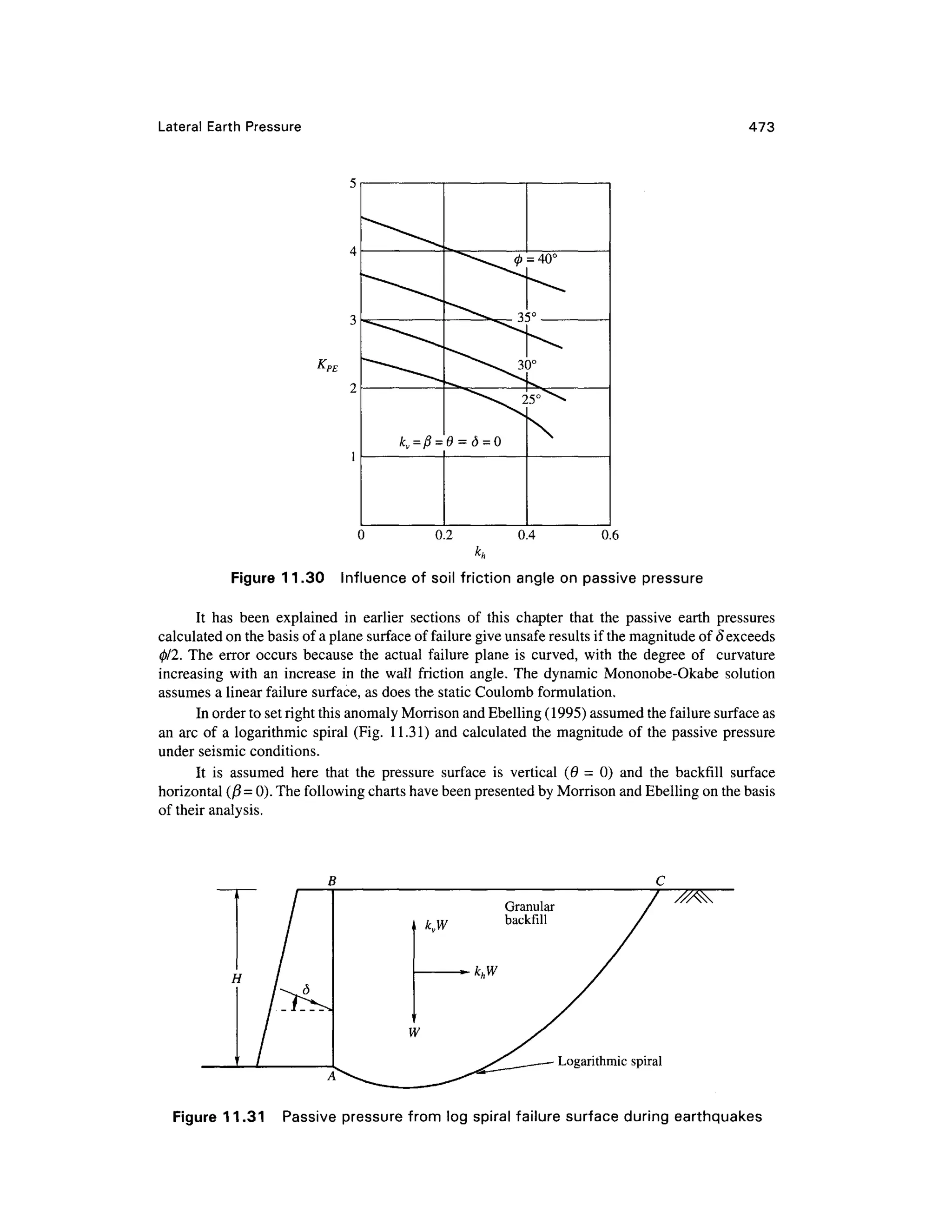
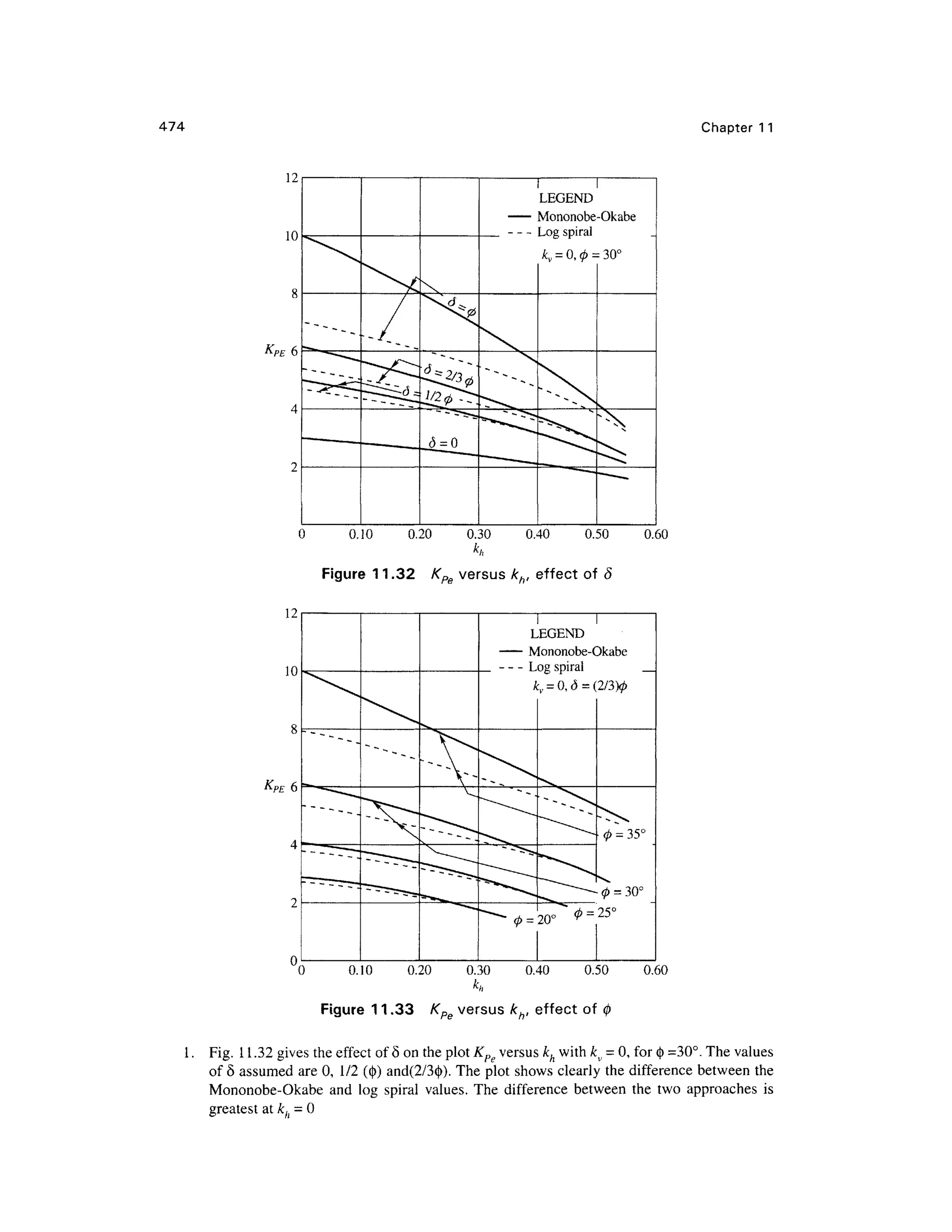





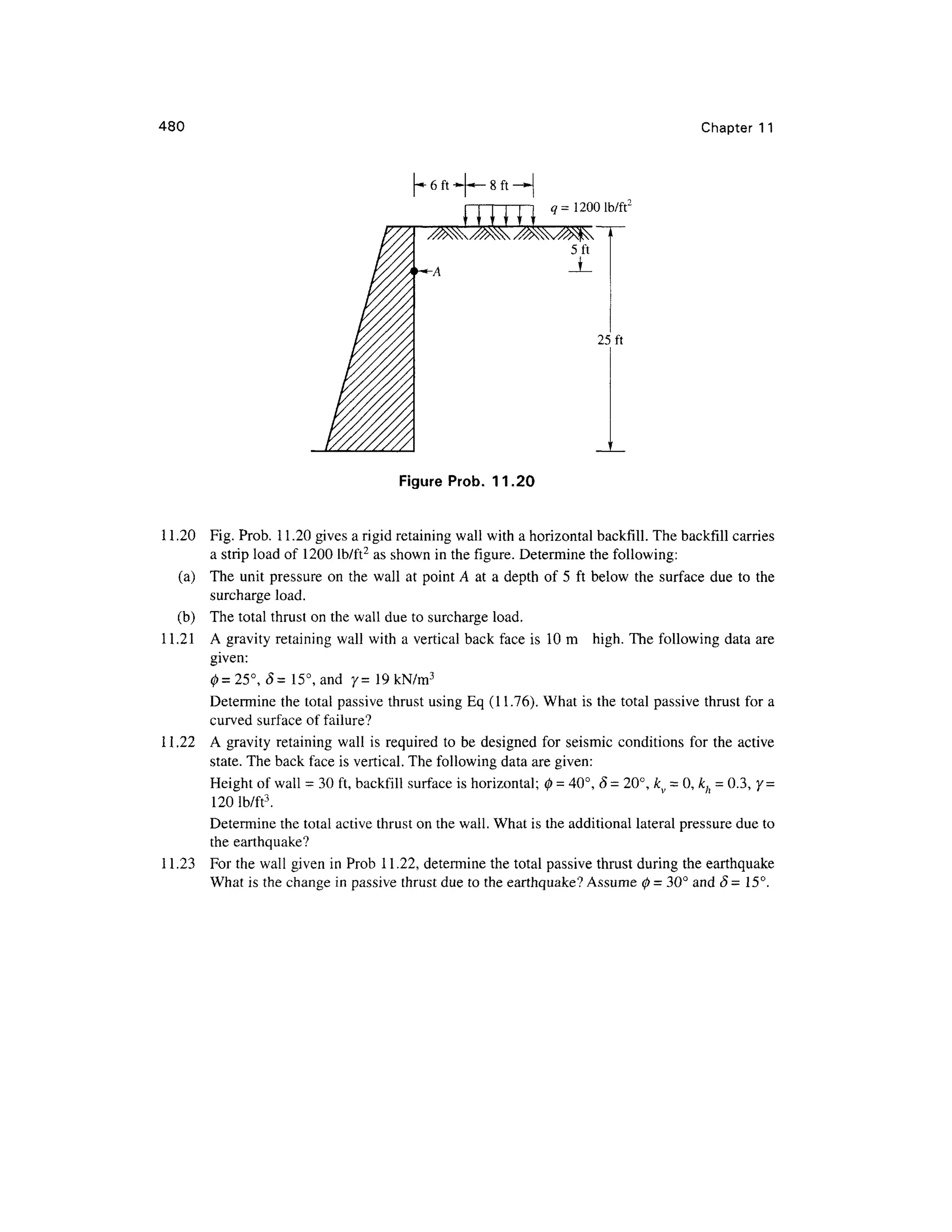


![Shallow Foundatio n I: Ultimate Bearin g Capacit y 483
5. Estimat e the cost of each of the promising types of foundation, and choose th e type that
represents the most acceptable compromise between performance and cost.
12.2 TH E ULTIMAT E BEARIN G CAPACITY O F SOIL
Consider the simplest case of a shallow foundation subjected to a central vertical load. The footing
is founded at a depth Df below the ground surface [Fig. 12.2(a)] . If the settlement, 5, of the footing
is recorded against the applied load, Q, load-settlement curves, similar in shape to a stress-strain
curve, may be obtained as shown in Fig. 12.2(b) .
The shap e o f th e curv e depend s generall y o n th e siz e an d shap e o f th e footing , th e
composition o f the supporting soil, and the character, rate, and frequency o f loading. Normally a
curve will indicate the ultimate load Qu that the foundation can support. If the foundation soil is a
dense sand or a very stiff clay, the curve passes fairly abruptly to a peak value and then drops down
as shown by curve Cl in Fig. 10.2(b) . The peak load Q u is quite pronounced in this case. On the
other hand, if the soil is loose sand or soft clay, the settlement curve continues to descend on a slope
as show n by curv e C 2 whic h show s tha t the compressio n o f soi l i s continuousl y takin g plac e
without giving a definite value for Qu. On such a curve, Qu may be taken at a point beyond which
there is a constant rate of penetration.
12.3 SOM E O F THE TERMS DEFINE D
It will be useful to define, at this stage, some of the terms relating to bearing capacity of foundations
(refer to Fig. 12.3) .
(a) Tota l Overburden Pressur e q0
qo is the intensity of total overburden pressure due to the weight of both soil and water at the base
level of the foundation.
a — vD+ v D {"191 1
^n I U
MU ~ I int^w i
^-i
).
Q
L
Quit Load
(a) Footing (b ) Load-settlement curve s
Figure 12. 2 Typica l load-settlemen t curve s](https://image.slidesharecdn.com/geotechbook-240326034957-6522ccd8/75/geotech-book-FOR-CIVIL-ENGINEERINGGG-pdf-502-2048.jpg)
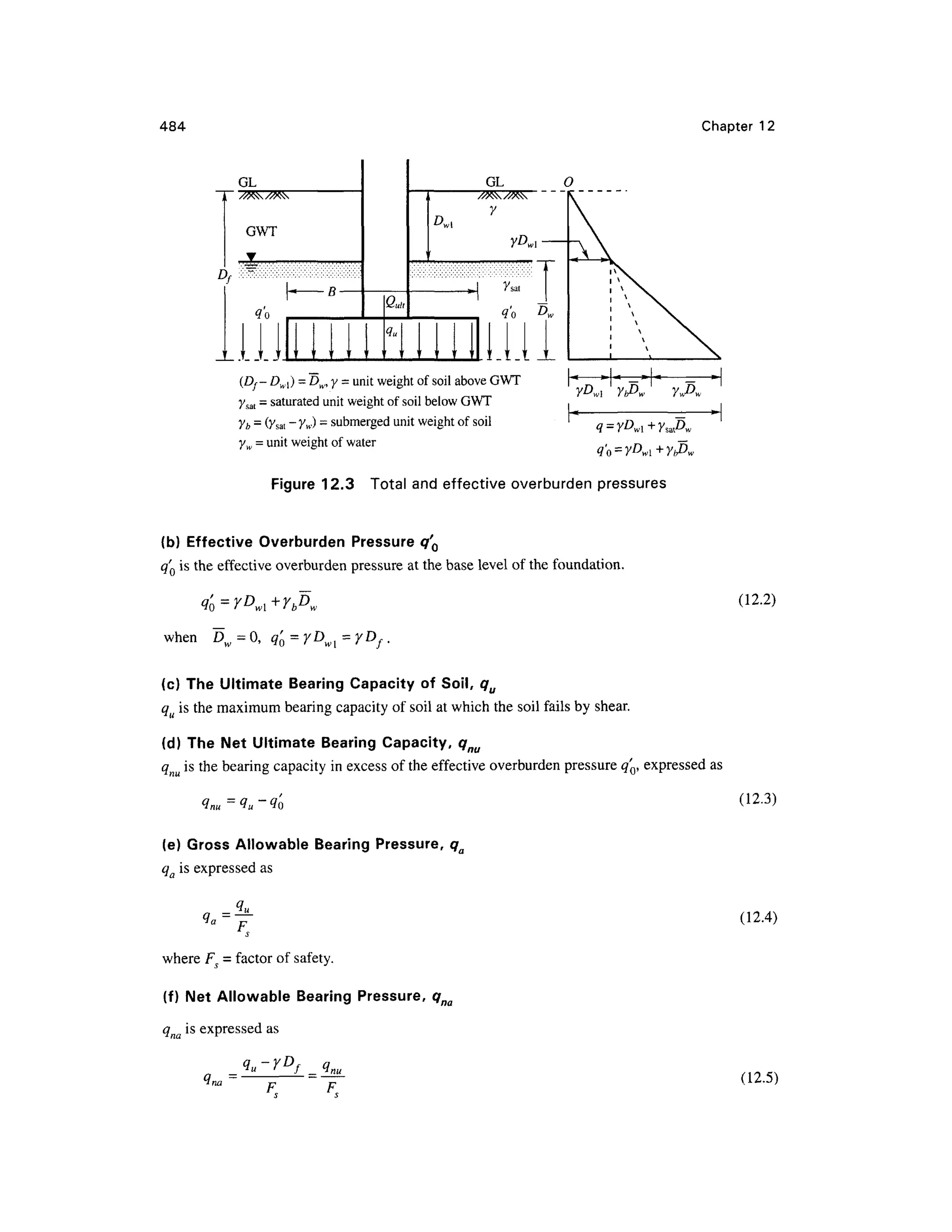

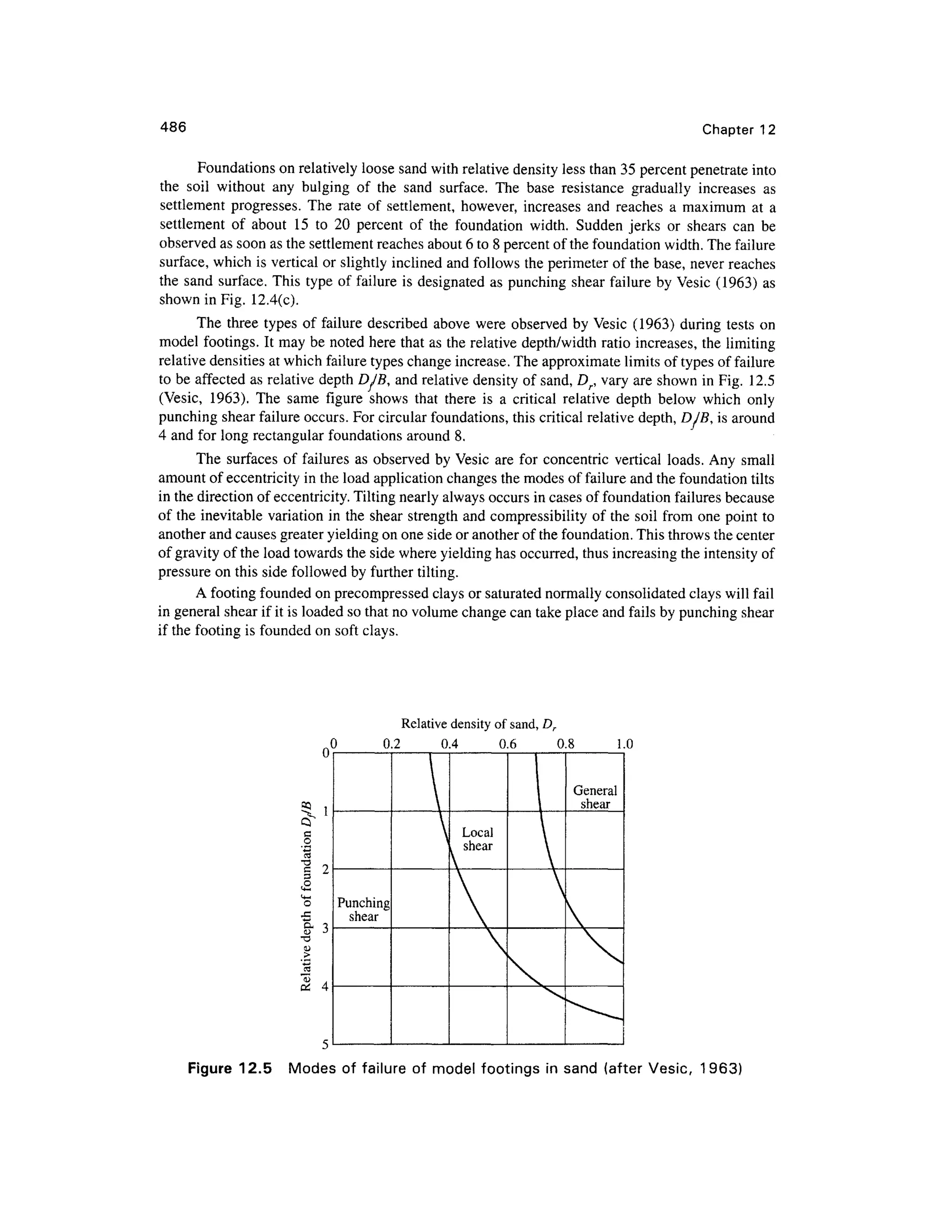



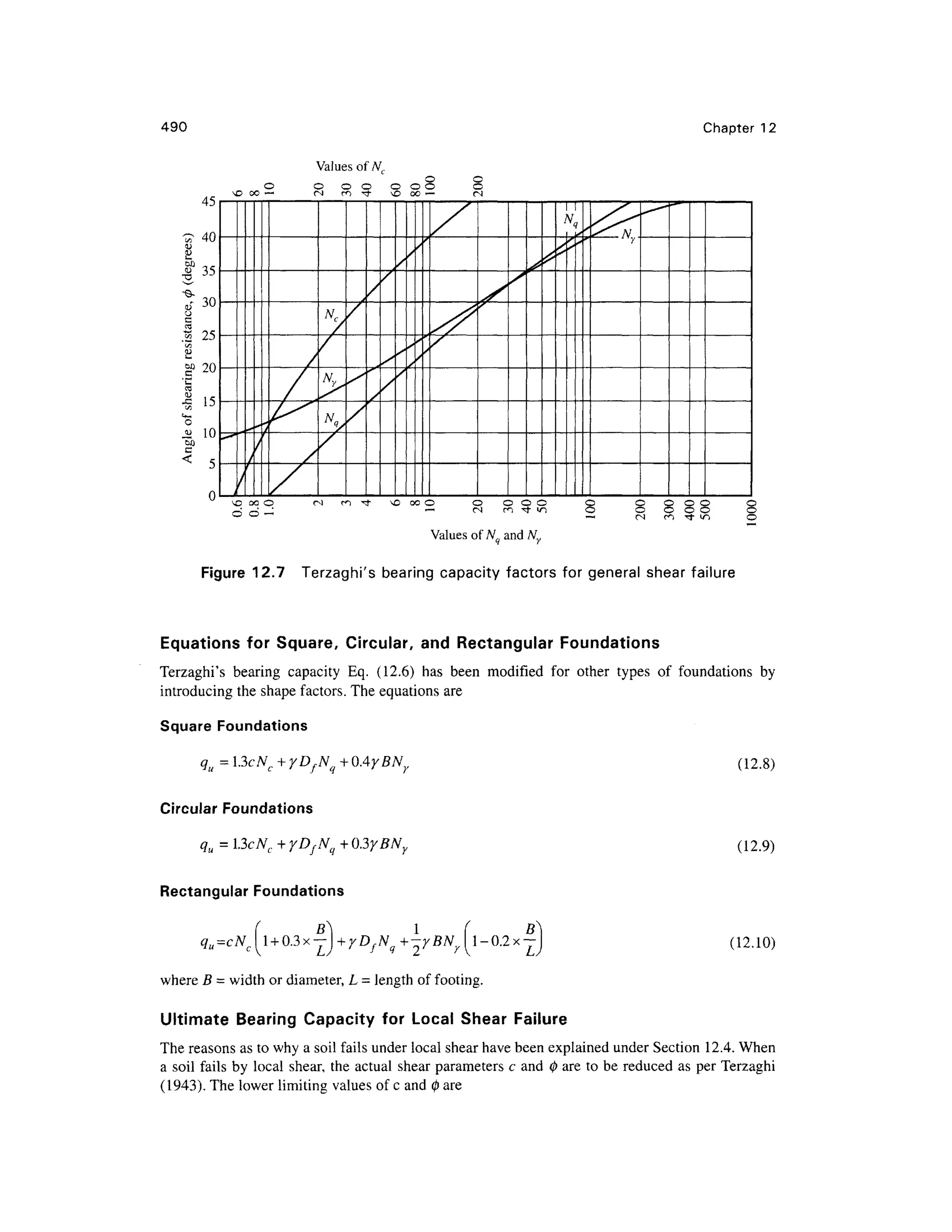
![Shallow Foundatio n I : Ultimate Bearin g Capacity 49 1
c = 0.67 c
and ta n 0 = 0.67 tan</> o r 0 = tan'1
(0.67 tan<fi) (12.11 )
The equations for the lower bound values for the various types of footings are as given below.
Strip Foundatio n
qu = 0.61cNc+yDfNc/ + yBN y (12.12 )
Square Foundatio n
q + OAyBNy (12.13 )
Circular Foundatio n
qu = O.S61cNc+yDfN(] + 03yBNy (12.14 )
Rectangular Foundatio n
qu=Q.61c l + 0.3x
| N C +yD fNq +±yBN y l-02x | (12 .15)
where N , N an d N ar e the reduced bearing capacity factors for local shear failure. These factors
may be obtained either from Table 12.1 or Fig. 12.7 by making use of the friction angl e(f> .
Ultimate Bearin g Capacit y q u in Purely Cohesionles s an d Cohesiv e Soil s
Under Genera l Shea r Failur e
Equations for the various types of footings for (c - 0 ) soil under general shea r failure have been
given earlier. The same equations can be modified to give equations for cohesionless soil (for c = 0)
and cohesiv e soils (for</ > = 0) as follows.
It may be noted here that for c = 0, the value of Nc = 0, and for 0=0, the value of NC = 5.7 for
a strip footing and N = 1 .
a) Stri p Footin g
Forc = 0, q u= yDfNq+-yBNy (12.16 )
For 0 = 0, q u =5.7c + yDf
b) Squar e Footin g
For c = 0, q u = yDfNq+OAyBNr (12.17 )
For 0 =0, q u = 7.4c + yDf
c) Circula r Footin g
For c = 0, q u = yDfNq +Q3yBN y (12.18 )](https://image.slidesharecdn.com/geotechbook-240326034957-6522ccd8/75/geotech-book-FOR-CIVIL-ENGINEERINGGG-pdf-510-2048.jpg)
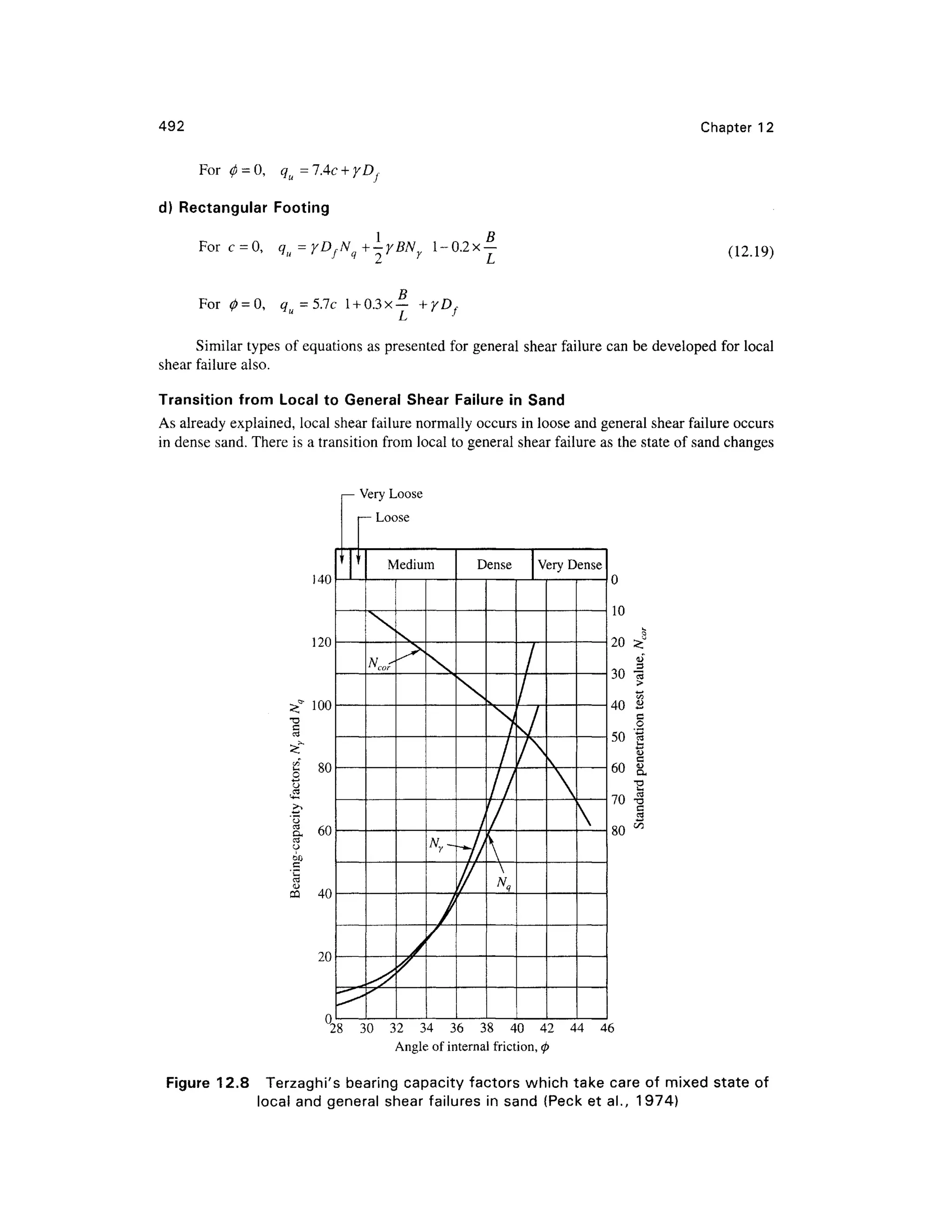

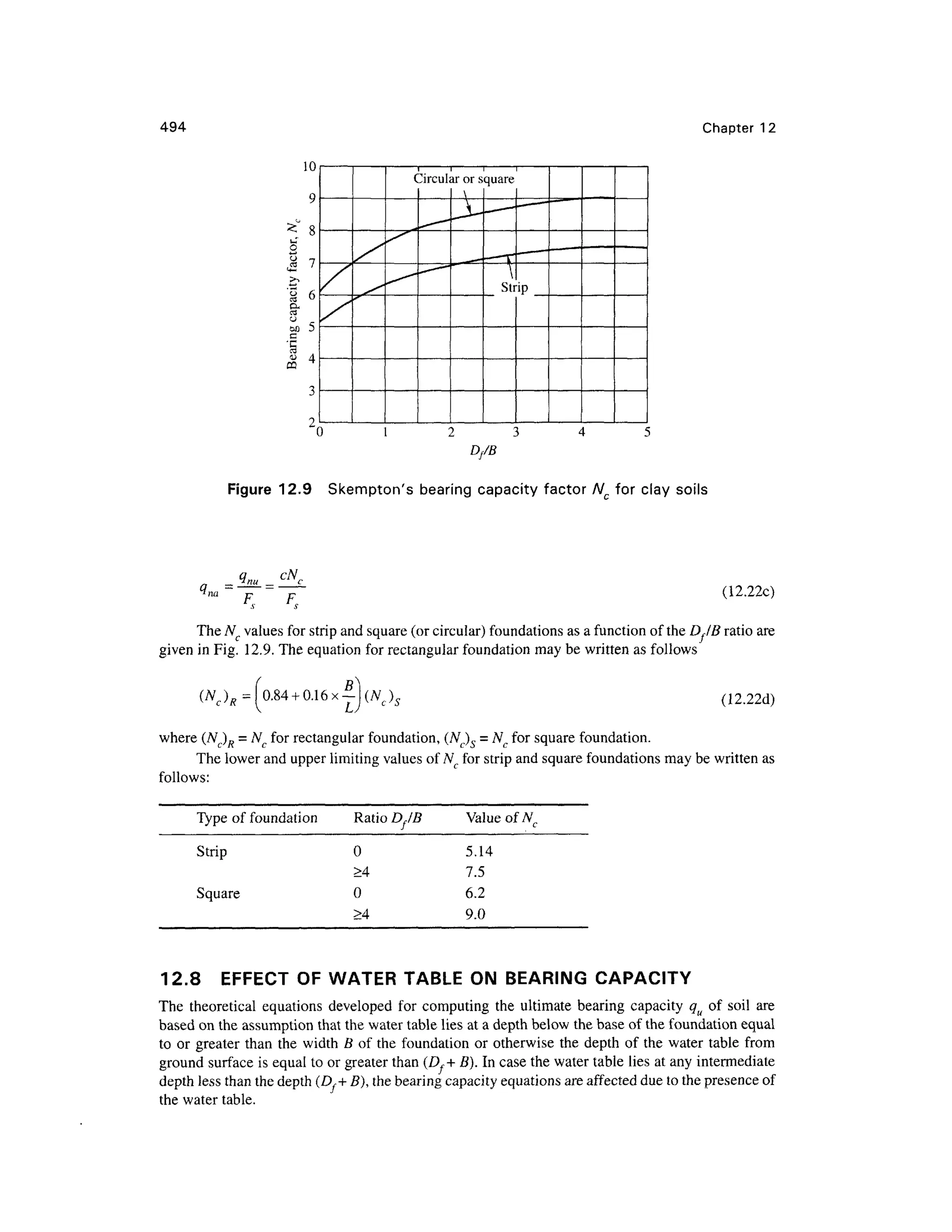




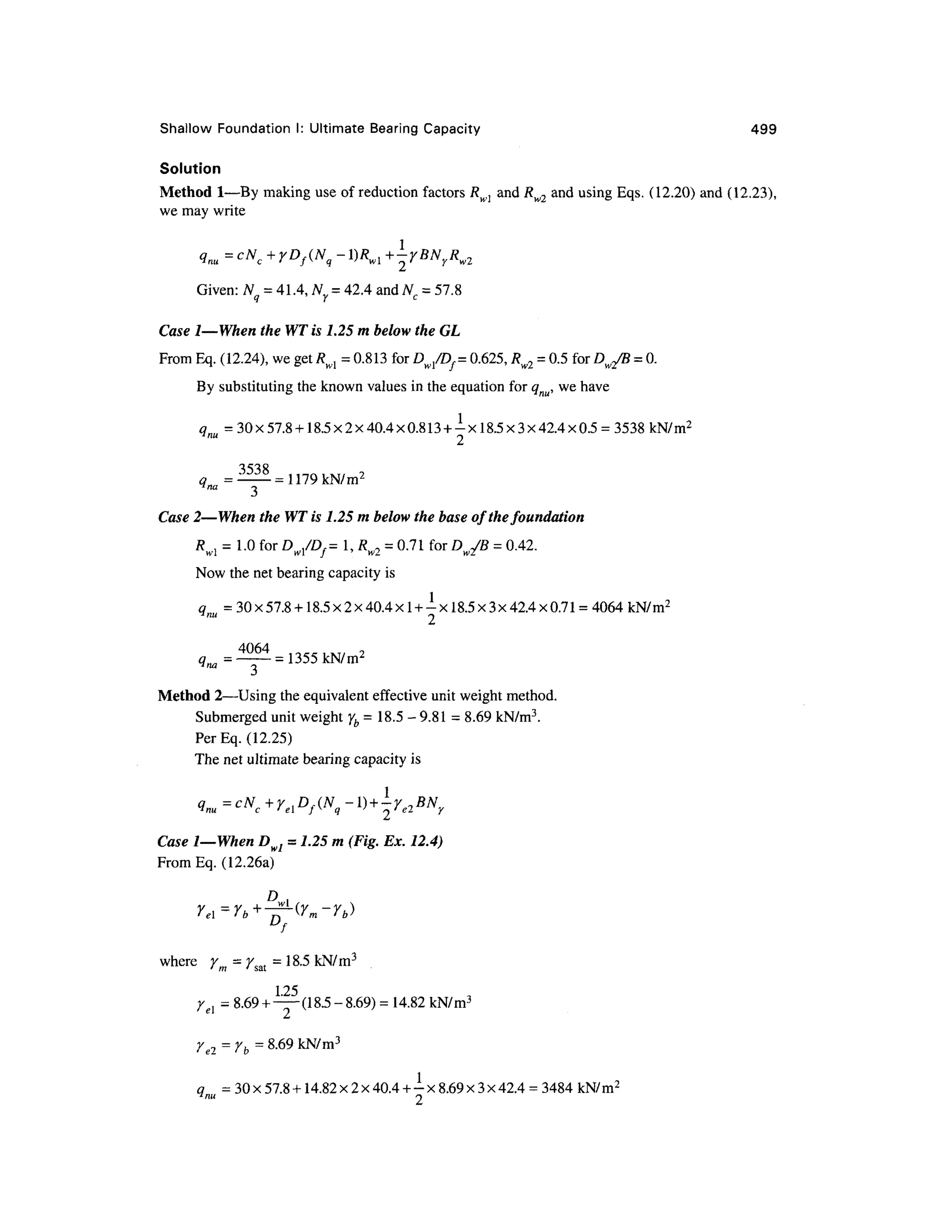
![500 Chapter 1 2
GL
"1
2
1
m
J
'
s S/K
L
-* —- 3 m - _HC,., =1.25m
1 . T f
t
Dw2= 1.25m
T 1
K
Case 1
Case 2
Figure Ex. 12. 4 Effec t of W T o n bearing capacit y
3484
Case 2—When Dw2 = 1.25 m (Fig. Ex. 12.4)
FromEq. (12.26b)
y=y = 18.5kN/m 3
* el ' m
1.25
y , =8.69 + —-(18.5- 8.69) = 12.78 kN/m3
€ L 4.
= 30x57.8 +18.5x2x40.4+ -
x 12.78x3x42.4 = 4042 kN/m2
4042
= 1347 kN/m2
Example 12. 5
A squar e footin g fail s b y genera l shea r i n a cohesionles s soi l unde r a n ultimat e loa d o f
Quh - 1687. 5 kips. The footing is placed at a depth of 6.5 ft below ground level. Given 0 =35°, and
7=110 Ib/ft3
, determin e the size of the footing if the water table is at a great depth (Fig. Ex. 12.5).
Solution
For a square footing [Eq. (12.17)] for c = 0, we have
For 0= 35° , Nq = 41.4, and Wy= 42.4 from Table 12.1 .](https://image.slidesharecdn.com/geotechbook-240326034957-6522ccd8/75/geotech-book-FOR-CIVIL-ENGINEERINGGG-pdf-519-2048.jpg)

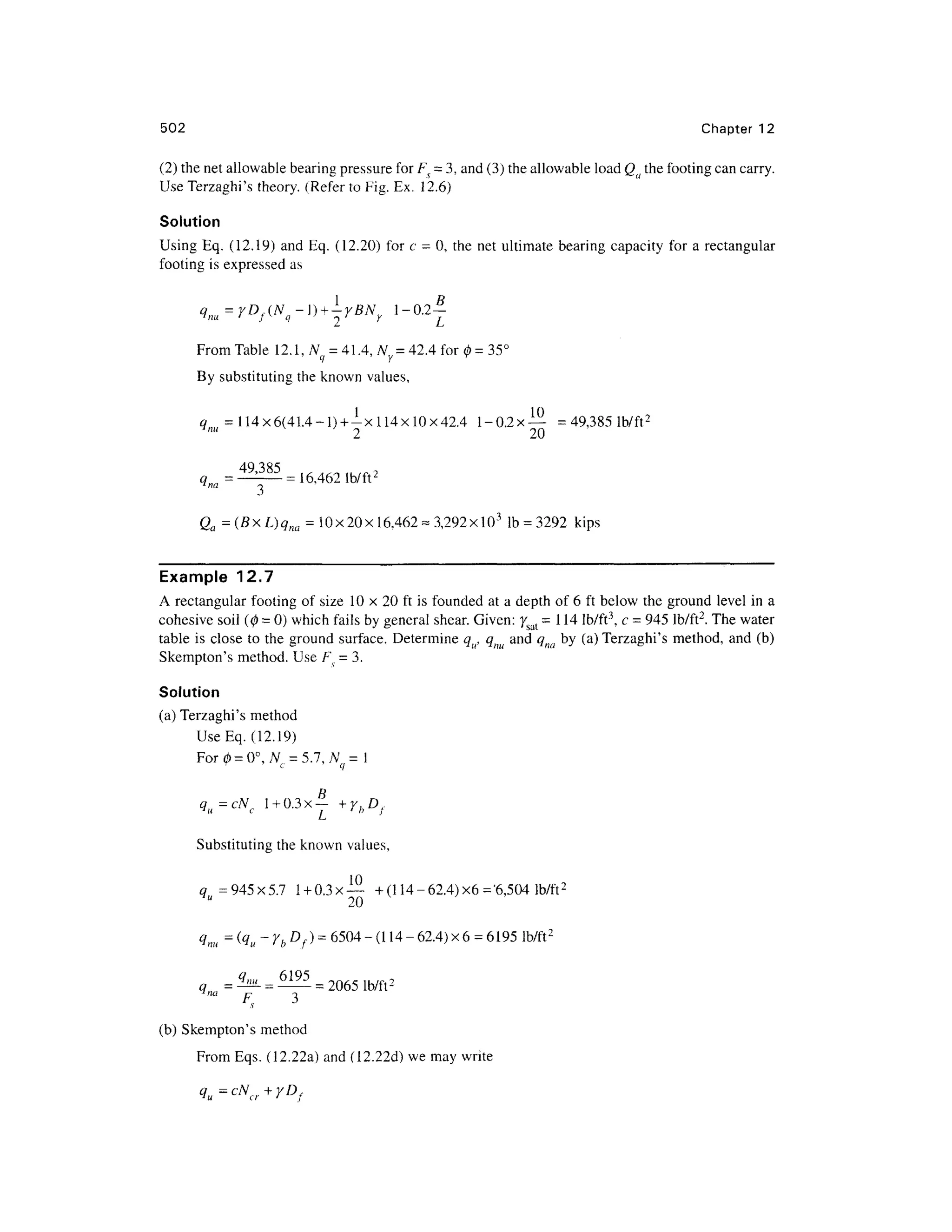




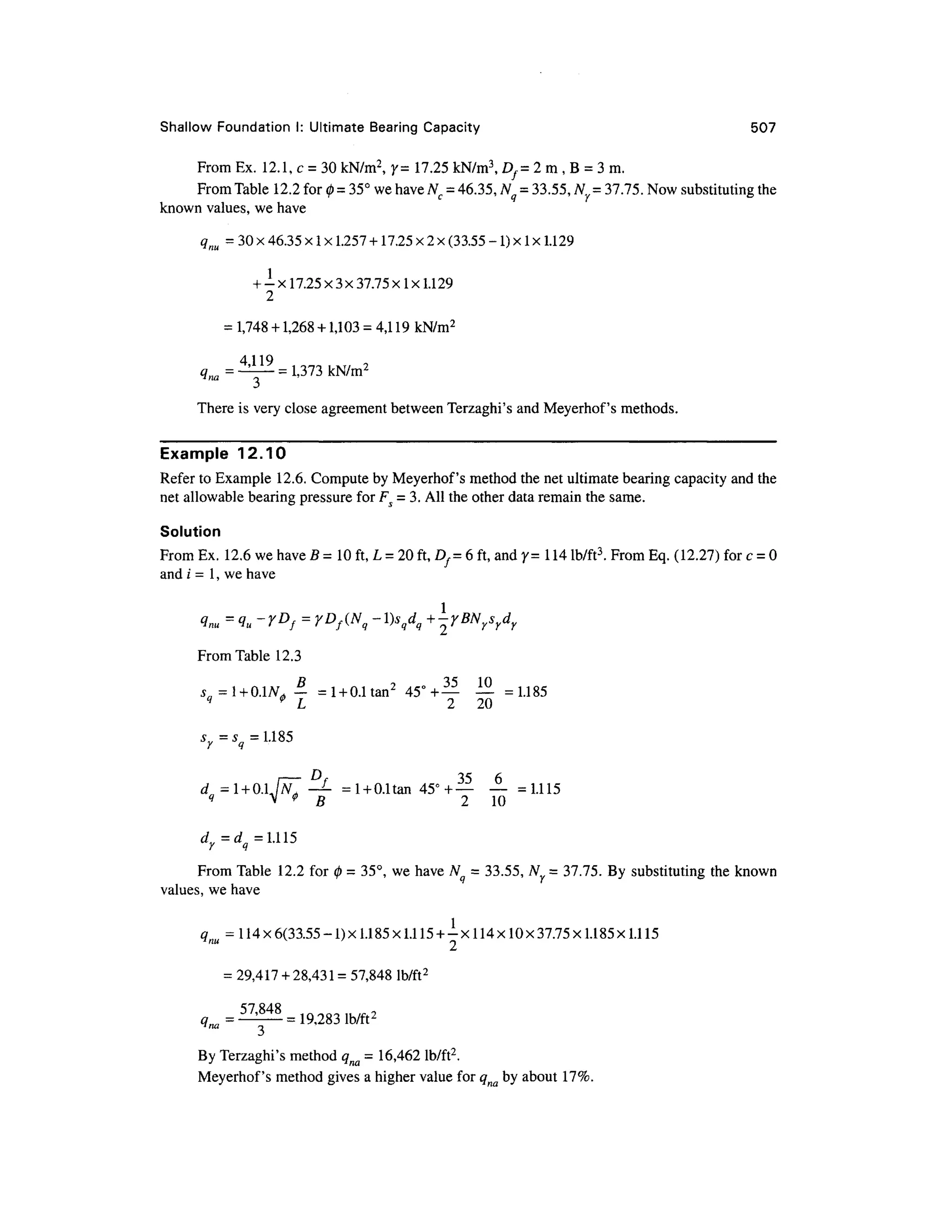


![510 Chapter 1 2
punching shear failure s i s too conservative and ignores th e existence o f scale effects. It has bee n
conclusively established tha t the ultimate bearing capacity qu of soil does not increase in proportion
to the increase i n the size of the footing as shown in Fig. 12.1 1 or otherwise the bearing capacit y
factorA f decrease s with the increase in the size of the footing as shown in Fig. 12.12 .
In order to take into account the influence of soil compressibility and the related scale effects ,
Vesic (1973 ) propose d a modificatio n o f Eq . (12.27 ) b y introducin g compressibilit y factor s a s
follows.
qu = cN
cdcscCc+q'oNqdqsqCq + (12.28)
where, C c, C an d C ar e the soil compressibility factors. The other symbol s remain th e same as
before.
For th e evaluatio n o f the relativ e compressibilit y o f a soi l mas s unde r loade d conditions,
Vesic introduced a term called rigidity index Ir, which is defined as
/ =
c + qtar0 (12.29)
where, G = shea r modulu s of soil = ^( +u]
Es = modulu s of elasticity
q = effectiv e overburden pressure at a depth equal to (ZX + 5/2 )
600
400
200
100
80
60
3 4 0
20
10
8
6
4
2
1
I I T
Circular footing s
Chattahoochee san d (vibrated)
Dry unit weight, 96.4 lb/ft 3
Relative density, Dr = 0.79
Standard triaxial, 0= 39°
Deep penetration resistanc e
(Measured) (Postulated ) V ;
Test plate size s
Dutch cone size - * *
II I I I I I
Usual footing size s
I I I I I I
0.2 0.40.60.81. 0 2 4 6 8 10
Footing size, ft
20 40 608010 0 20 0
Figure 12.1 1 Variatio n o f ultimat e resistanc e o f footings with size
(after Vesic , 1969 )](https://image.slidesharecdn.com/geotechbook-240326034957-6522ccd8/75/geotech-book-FOR-CIVIL-ENGINEERINGGG-pdf-529-2048.jpg)
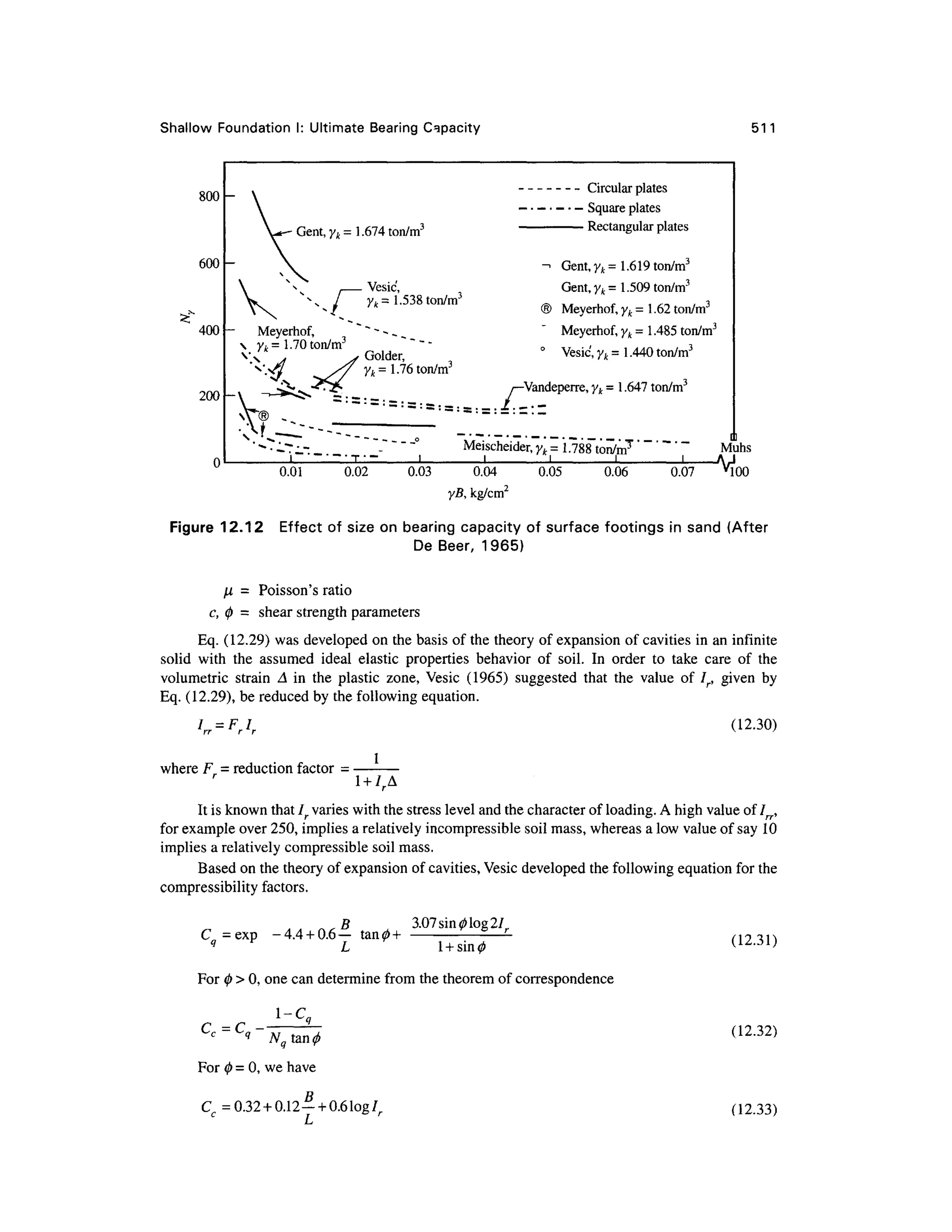
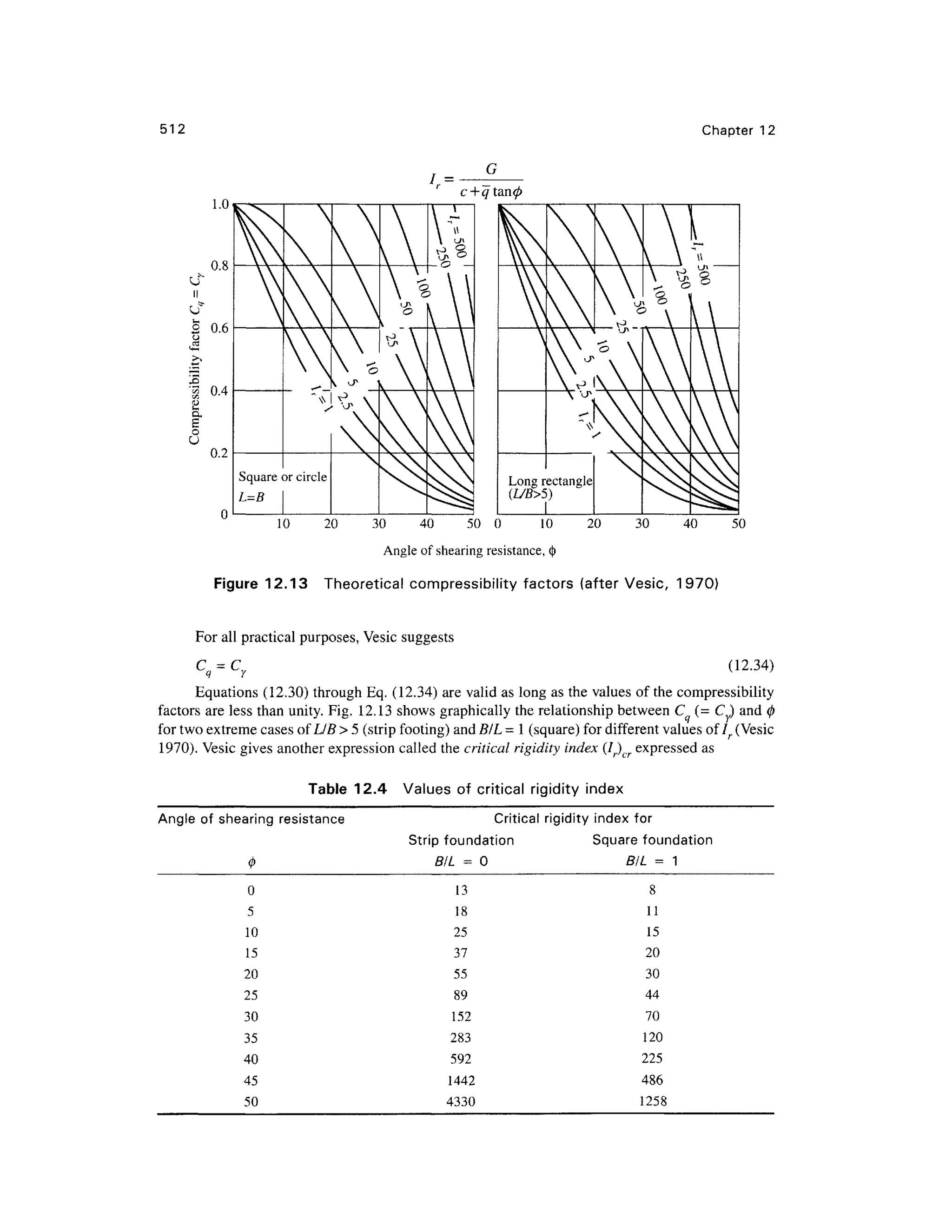


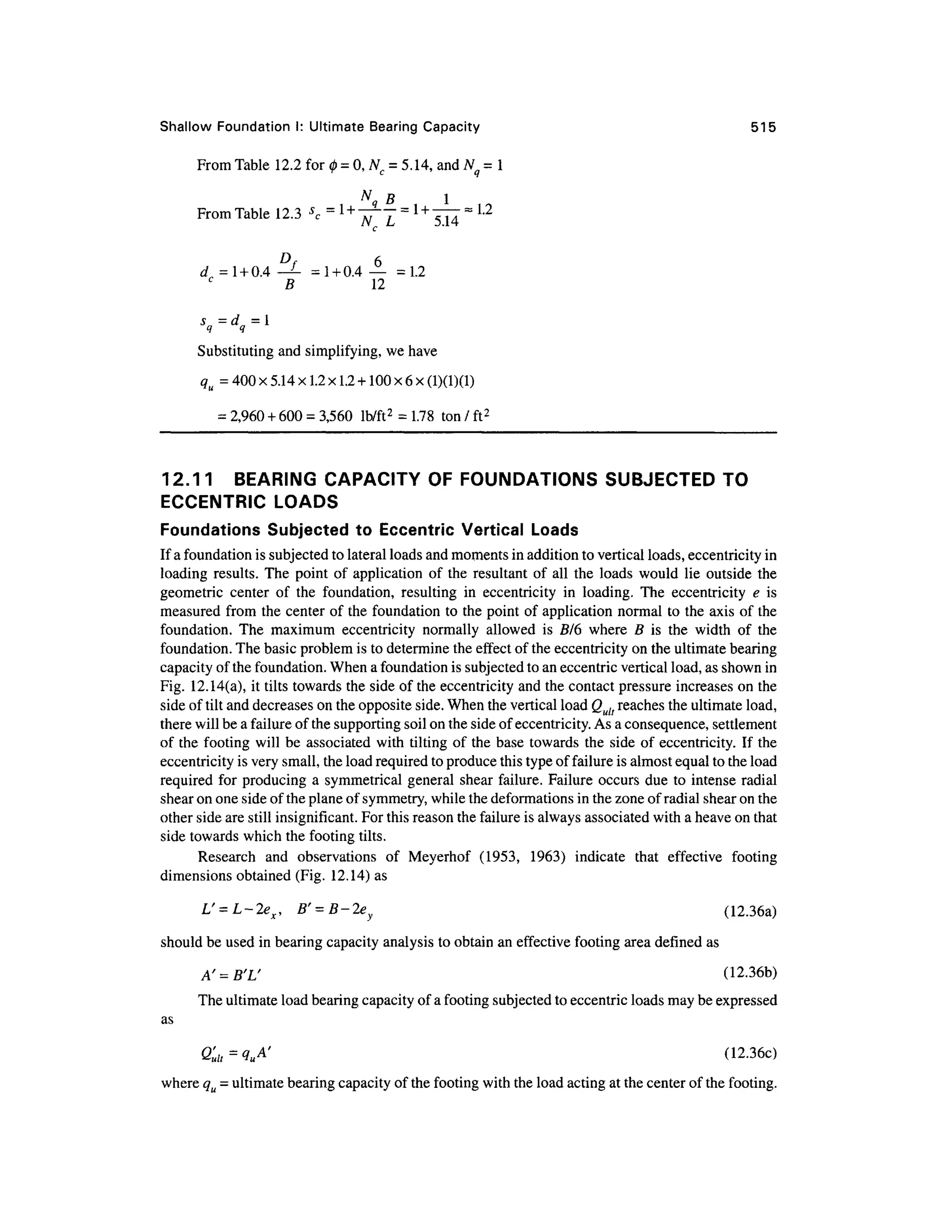


![518 Chapte r 1 2
When ex or e excee d a certain limit, Eq. (12.39) gives a negative value of q which indicates
tension between th e soil and the bottom of the footing. Eqs (12.39) ar e applicable onl y when the
load is applied within a limited area which is known as the Kern as is shown shaded in Fig 12.15 so
that the load may fall within the shaded area to avoid tension. The procedure for the determination
of soil pressur e whe n the load i s applied outside the kern is laborious and as such not dealt with
here. However, chart s are available for ready calculation s in references suc h as Teng (1969 ) an d
Highter and Anders (1985).
12.12 ULTIMAT E BEARIN G CAPACIT Y O F FOOTINGS BASE D O N
SPT VALUE S (N]
Standard Energ y Rati o Res Applicable to N Value
The effects of field procedures an d equipment on the field values of N were discussed in Chapter 9.
The empirical correlations establishe d in the USA between N and soil properties indicat e the value
of N conforms to certain standard energy ratios. Some suggest 70% (Bowles, 1996 ) and others 60%
(Terzaghi et al. , 1996) . I n order t o avoid this confusion, the autho r uses Ncor i n this book a s the
corrected value for standard energy.
Cohesionless Soil s
Relationship Betwee n Ncor and<| >
The relation between A^ and 0 established b y Peck e t al., (1974) is given in a graphical form in
Fig. 12.8 . The value ofNcor t o be used for getting 0 is the corrected valu e for standard energy. The
angle 0 obtained by this method can be used for obtaining the bearing capacity factors , and hence
the ultimate bearing capacity of soil.
Cohesive Soil s
Relationship Betwee n Ncor and qu (Unconfined Compressive Strength)
Relationships hav e been develope d betwee n Ncor an d qu (the undrained compressive strength ) for
the 0 = 0 condition . Thi s relationshi p give s th e valu e o f c u fo r an y know n valu e o f Ncor. Th e
relationship may be expressed a s [Eq. (9.12)]
tf^^jA^CkPa) (12-40 )
where the value of the coefficient& ma y vary from a minimum of 1 2 to a maximum of 25. A low
value of 1 3 yields qu given in Table 9.4 .
Once q u i s determined , th e ne t ultimat e bearing capacit y an d th e ne t allowabl e bearin g
pressure can be found following Skempton's approach.
12.13 TH E CR T METHO D O F DETERMINING ULTIMAT E BEARIN G
CAPACITY
Cohesionless Soil s
Relationship Between qc, Dr and 0
Relationships betwee n th e stati c con e penetratio n resistanc e q c an d 0 hav e bee n develope d b y
Robertson and Campanella (1983b) , Fig. 9.15. The value of $ can therefore be determined with the
known valu e of q . With the known value of 0 , bearing capacit y factor s ca n be determine d an d](https://image.slidesharecdn.com/geotechbook-240326034957-6522ccd8/75/geotech-book-FOR-CIVIL-ENGINEERINGGG-pdf-537-2048.jpg)
![Shallow Foundatio n I: Ultimate Bearin g Capacity 519
hence the ultimate bearing capacity. Experience indicates that the use of qc for obtaining 0 is more
reliable than the use of N.
Bearing Capacit y o f Soi l
As per Schmertmann (1978), the bearing capacity factors N an d N fo r use in the Terzaghi bearing
capacity equation can be determined by the use of the equation
N = (12.41)
where qc = cone point resistance in kg/cm2
(or tsf) averaged over a depth equal to the width below
the foundation.
Undrained Shea r Strengt h
The undrained shear strengt h cu under 0 = 0 condition ma y be related t o the stati c con e point
resistance qc as [Eq. (9.16)]
qc = N
kc
u+
Po
or c,, = (12.42)
where N k = con e factor , ma y b e take n a s equa l t o 2 0 (Sanglerat , 1972 ) bot h fo r normall y
consolidated an d preconsolidated clays .
po = tota l overburden pressure
When onc e c u i s known, the value s o f qm an d qna ca n b e evaluate d a s pe r th e method s
explained in earlier sections .
Example 12.1 5
A water tank foundation has a footing of size 6 x 6 m founded at a depth of 3 m below ground level
in a medium dense sand stratum of great depth. The corrected average SPT value obtained from the
site investigation is 20. The foundatio n is subjected to a vertical load a t an eccentricity o f fi/10
along one of the axes. Figure Ex. 12.15 gives the soil profile with the remaining data. Estimate the
ultimate load, Qult, by Meyerhof's method .
s/* //^
m
—1
QuU
^ €B -
SPT
c = 0,y=18.5kN/m3
,
0 = 33°, Ncor = 20
Medium dense san d
B
10
fix5 = 6 x 6m -H
Figure Ex. 12.1 5](https://image.slidesharecdn.com/geotechbook-240326034957-6522ccd8/75/geotech-book-FOR-CIVIL-ENGINEERINGGG-pdf-538-2048.jpg)
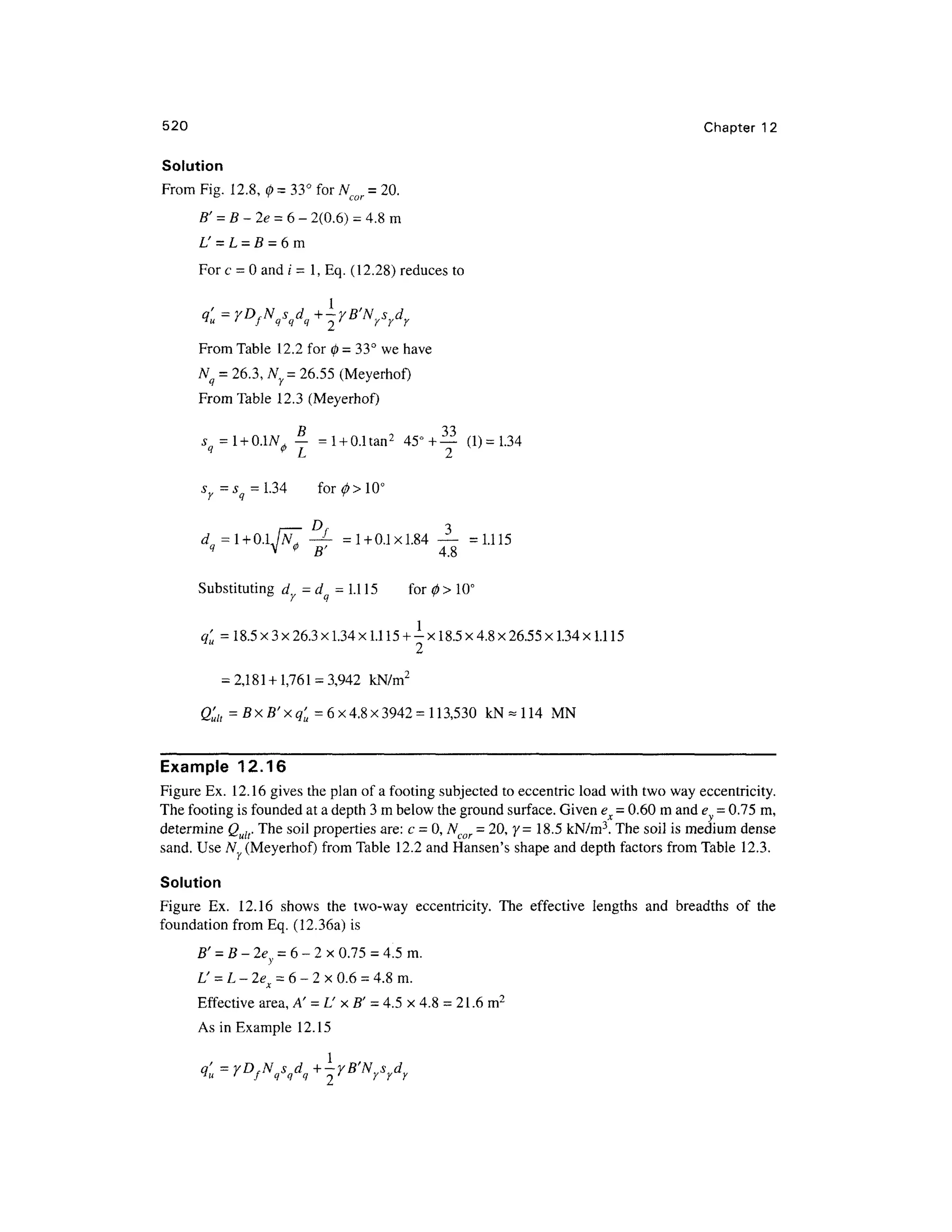
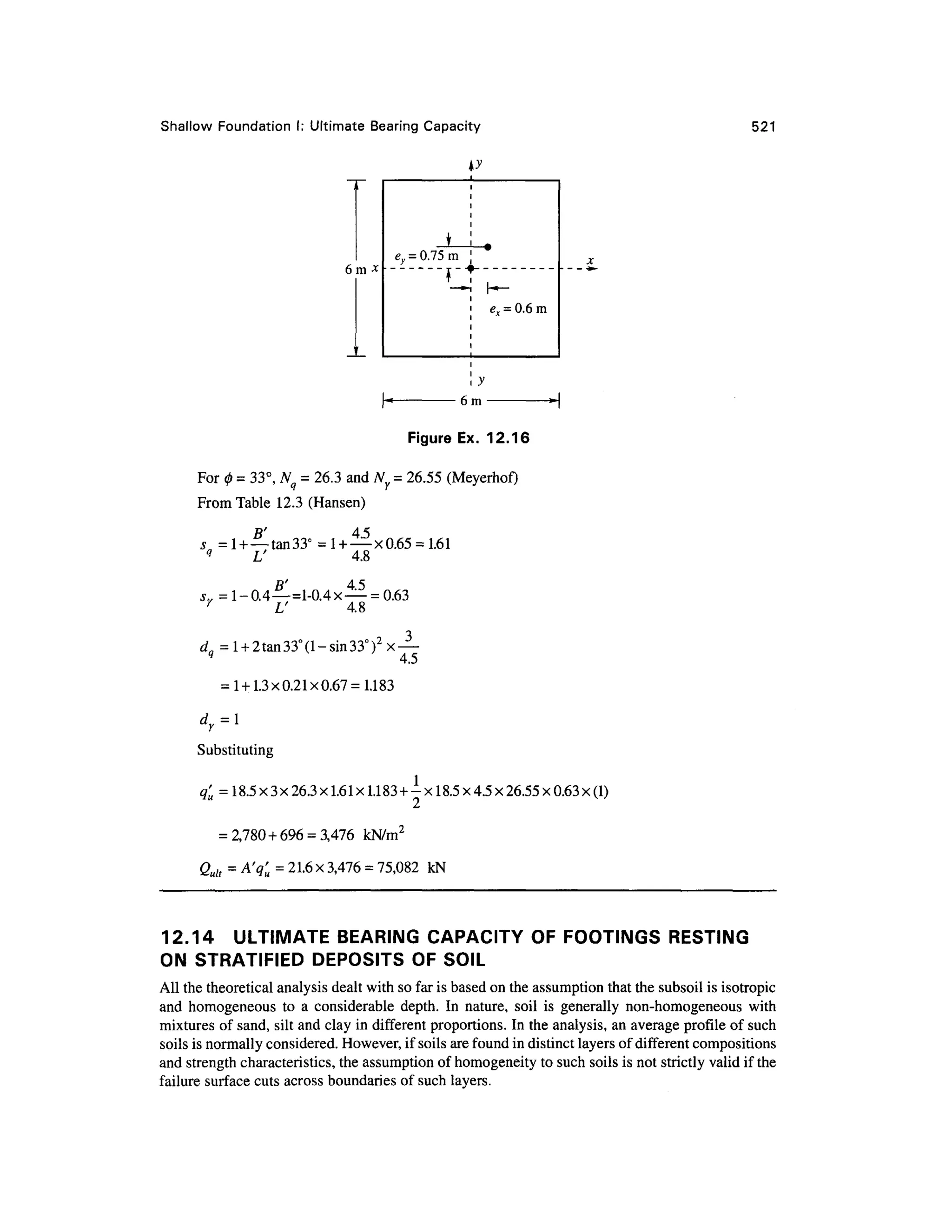




![526 Chapte r 1 2
We may now write an expression for qu from Eq . (12.54) as
B y,H 2
2D f B
q = 1 + 0.2— 5.14c ?+^ -
1+ — Li + _K tan0 ,
" L 2
B H L s l
+ ylDf<y]DfNqlS(il+~ylBNrlsn (12.58 )
The ratio of q1lql ma y be expressed by
C
^ 5.14 c
The value of Ks ma y be found fro m Fig. (12. 17).
Case 3 : Whe n Laye r 1 is Dense Sand and Layer 2 is Loose Sand (c 1 = c 2 = 0 )
Proceeding i n the same way as explained earlier the expression for qu for a rectangular footing may
be expressed as
qu= Y, f
y.H2
B 2 D
- ~ (1260)
where q t = Y^f^s^ +-Y^BN nsn (12.61 )
<12
-62)
Case 4 : Laye r 1 is Stiff Saturate d Cla y (01 = 0 ) an d Layer 2 i s Saturated Sof t
Clay (0 2 = 0 )
The ultimate bearing capacity of the layered system can be given as
qu= 1 + 0.2-5.Uc 2+ 1 + | ^- + y
]Df<qt (12 .63)
D
q,= 1 + 0.2
- 5.14c,+y,D / (12.64 )
L
q2 _ 5.1 4 c2 _
(12.65)
Example 12.1 7
.
A rectangular footing of size 3 x 2 m is founded at a depth of 1. 5 m in a clay stratum of very stif f
consistency. A clay laye r of medium consistency is located a t a depth o f 1. 5 m ( = H) belo w th e
bottom of the footing (Fig. Ex. 12.17) . The soil parameters of the two clay layers are as follows:
Top clay layer: c = 175 kN/m2](https://image.slidesharecdn.com/geotechbook-240326034957-6522ccd8/75/geotech-book-FOR-CIVIL-ENGINEERINGGG-pdf-545-2048.jpg)
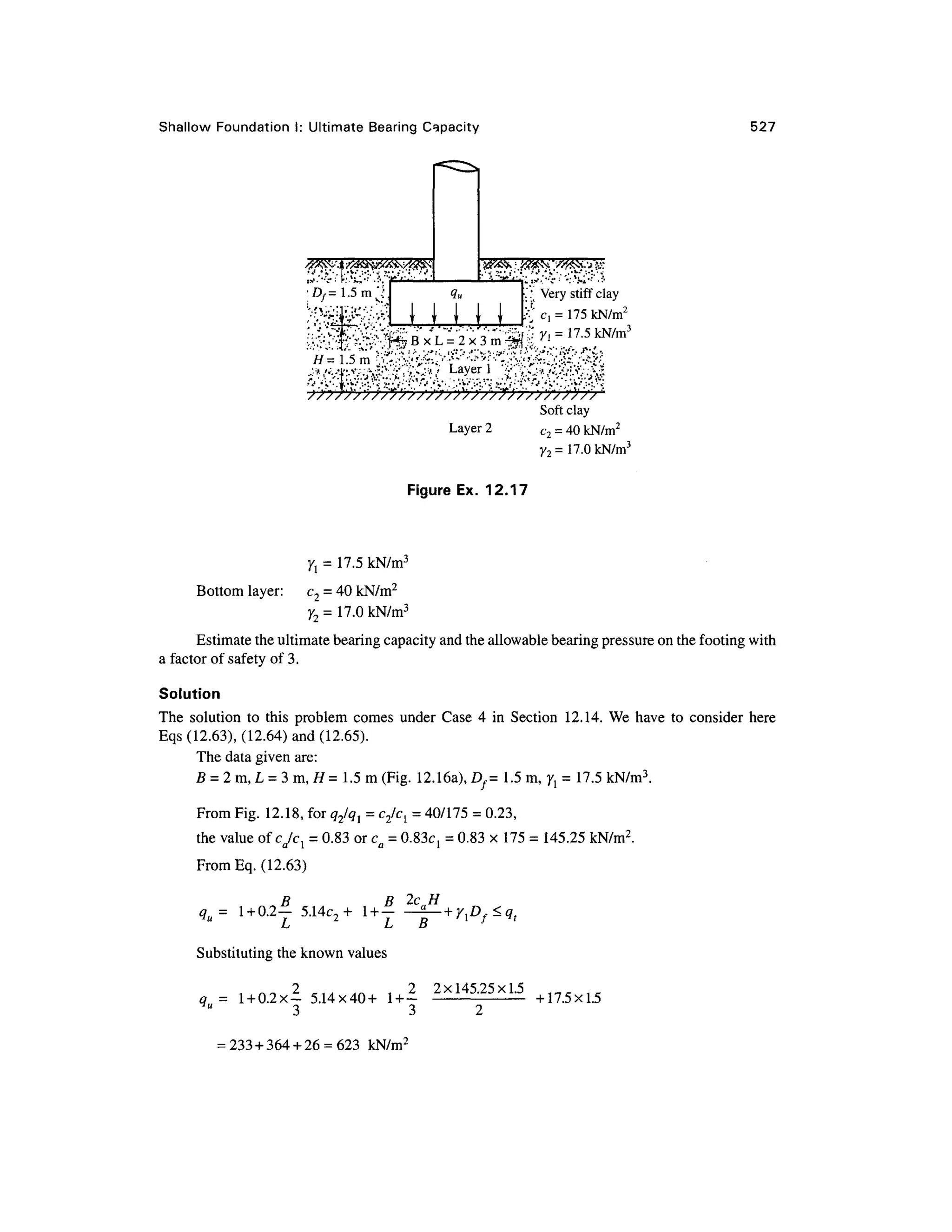

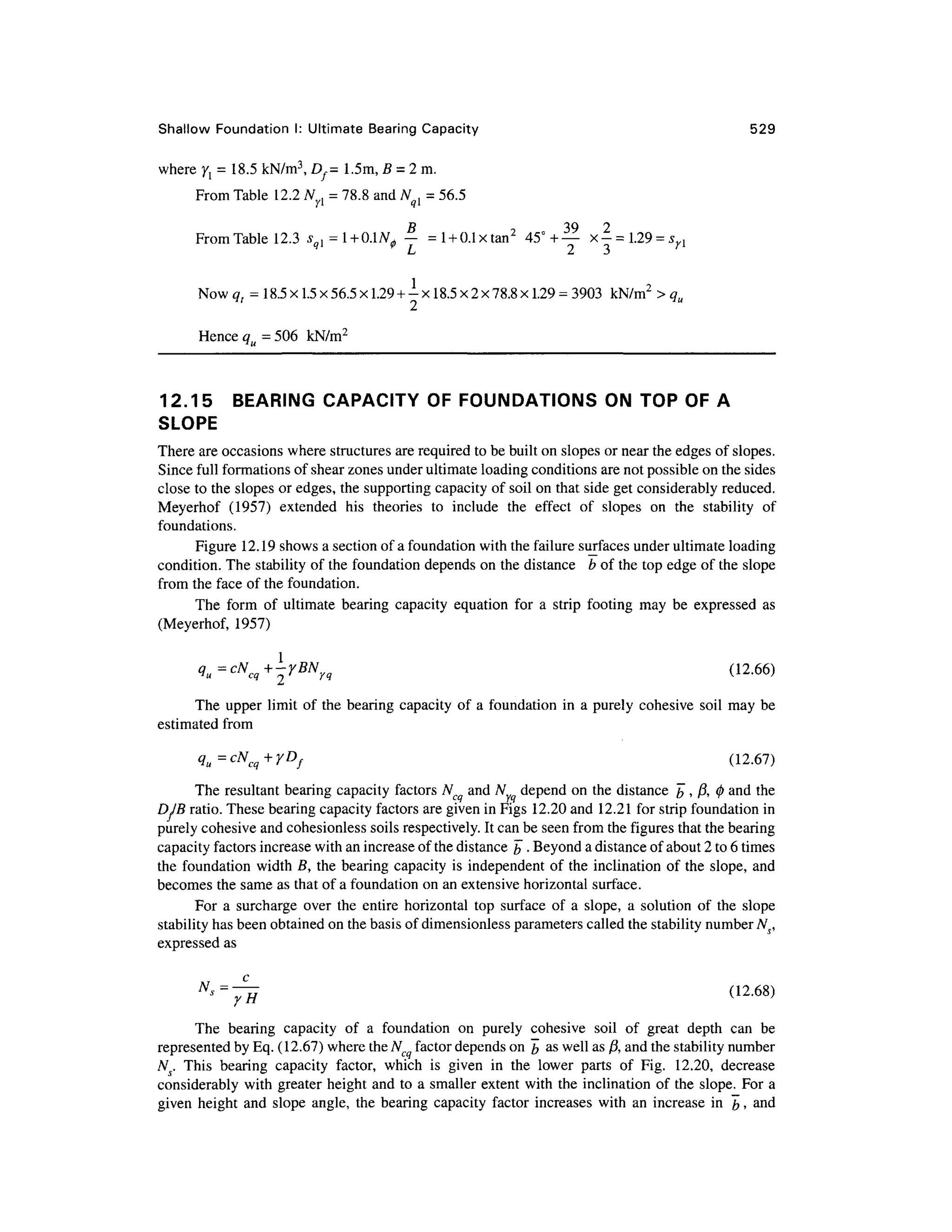






![536 Chapter 1 2
level of the new foundation is 34 ft below th e ground surface. Figure 12.2 3 shows the view of the
silo after it was straightened in 1916 .
During the period whe n the silo was designed and constructed, soil mechanics as a scienc e
had hardly begun. The behavior of the foundation under imposed loads was not clearly understood.
It was only during the year 1952 that soil investigation was carried out close to the silo and the soil
properties were analyze d (Peck an d Byrant, 1953) . Figure 12.2 4 give s the soi l classificatio n and
unconfmed compressiv e strengt h o f th e soi l wit h respec t t o depth . Fro m th e examinatio n o f
undisturbed sample s o f th e clay, it was determined tha t the averag e wate r content o f successiv e
layers of varved clay increased wit h their depth from 40 percent to about 60 percent. The average
unconfmed compressive strength of the upper stratum beneath th e foundation was 1.1 3 tsf, that of
the lower stratum was 0.65 tsf, and the weighted average was 0.93 tsf. The average liquid limit was
found to be 105 percent; therefore the plasticity index was 70 percent, which indicates that the clay
was highly colloidal an d plastic. The average unit weight of the soil was 12 0 lb/ft3
.
The contact pressure due to the load from the silo at the time of failure was estimated as equal to
3.06 tsf. The theoretical values of the ultimate bearing capacity by various methods are as follows.
Methods a., tsf
Terzaghi[Eq. (12.19)]
Meyerhof [Eq . (12.27)]
Skempton [Eq . (12.22)]
3.68
3.30
3.32
The above values compare reasonabl y well with the actual failure load 3.0 6 tsf . Perloff and
Baron (1976) give details of failure of the Transcona grain elevator.
12.18 PROBLEM S
12.1 Wha t will be the gross and net allowable bearing pressures of a sand having 0 = 35° and an
effective uni t weight of 1 8 kN/m3
under the following cases: (a) size of footing 1 x 1 m
square, (b ) circular footing of 1 m dia., and (c) 1 m wide strip footing.
The footing is placed at a depth of 1 m below the ground surface and the water table is at
great depth. Use F^ = 3. Compute by Terzaghi's genera l shear failure theory.
1 m :
Sand ••'•:
.•...;•-.;..• y = 1 8 kN/m3
12.2 A strip footing is founded at a depth of 1. 5 m below the ground surface (Fig. Prob. 12.2) .
The wate r tabl e i s clos e t o groun d leve l an d th e soi l i s cohesionless . Th e footin g i s
supposed to carry a net safe load of 400 kN/m2
with F = 3. Given y= 20.85 kN/m3
and](https://image.slidesharecdn.com/geotechbook-240326034957-6522ccd8/75/geotech-book-FOR-CIVIL-ENGINEERINGGG-pdf-555-2048.jpg)



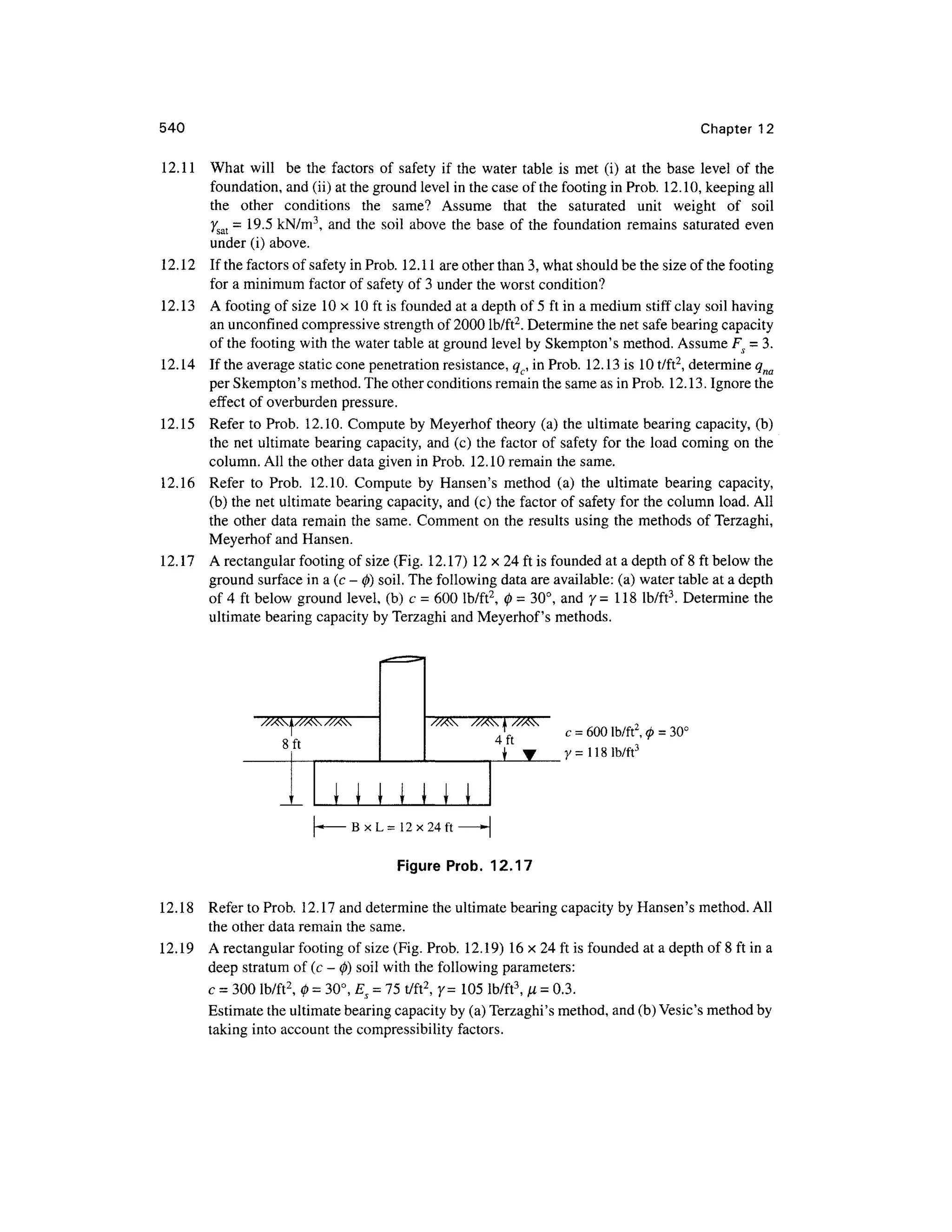

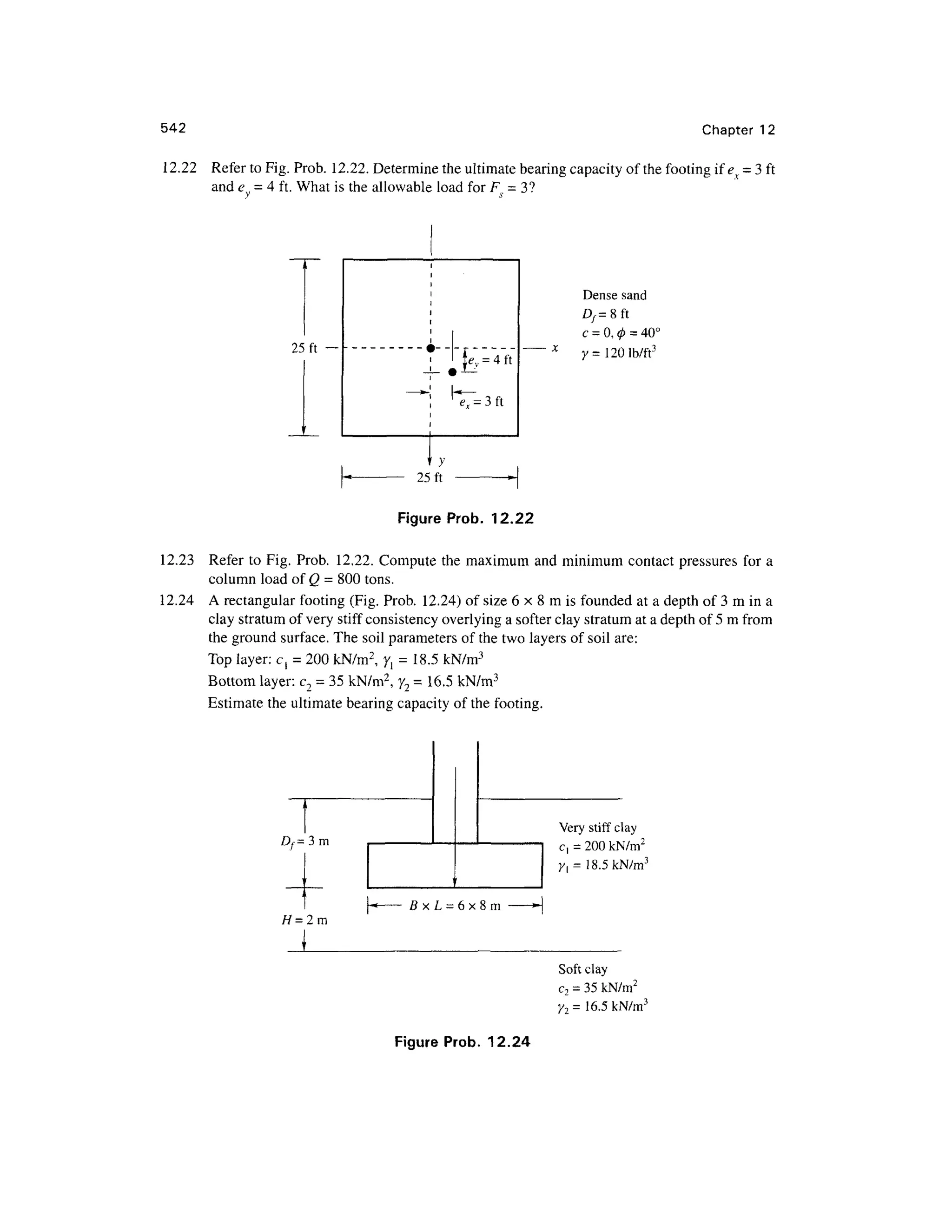


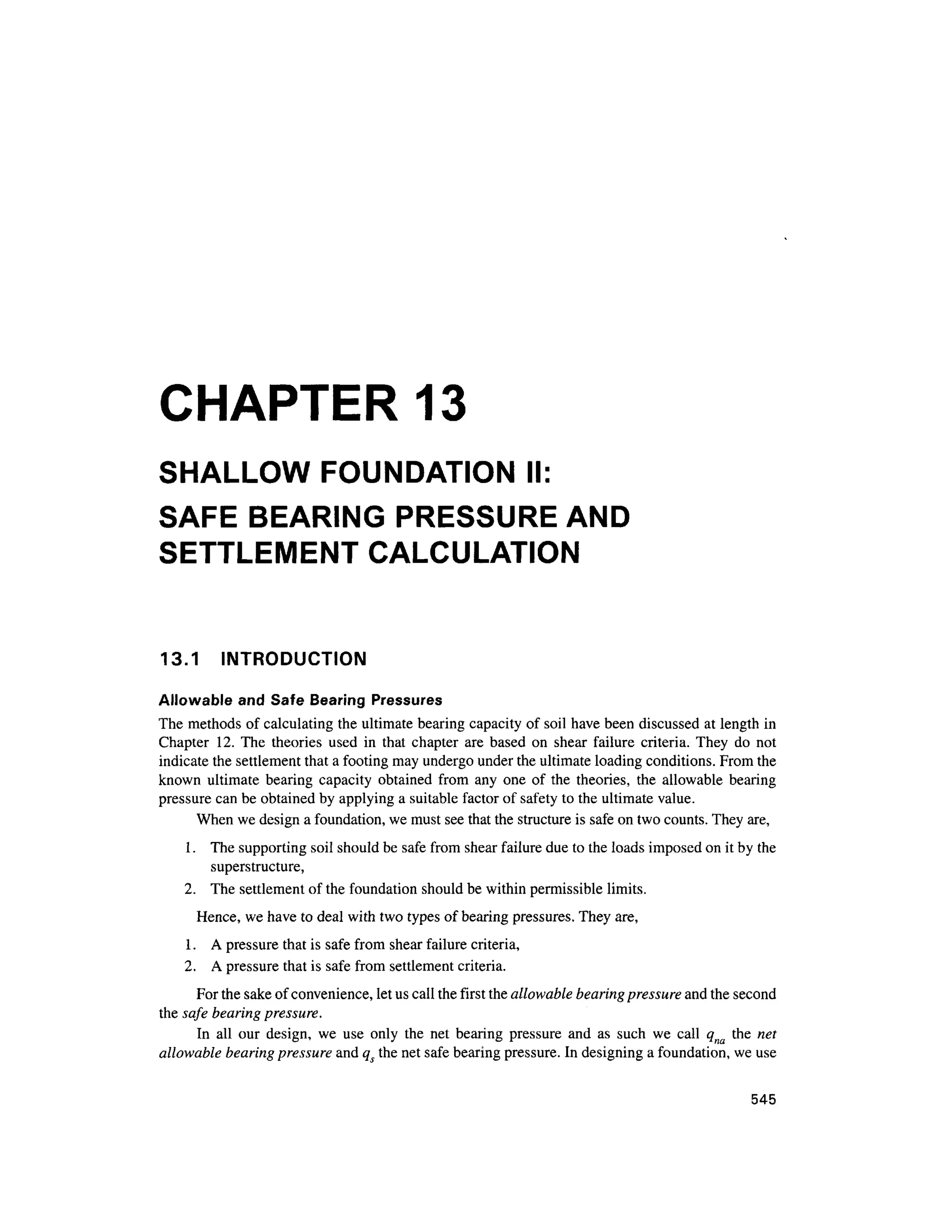

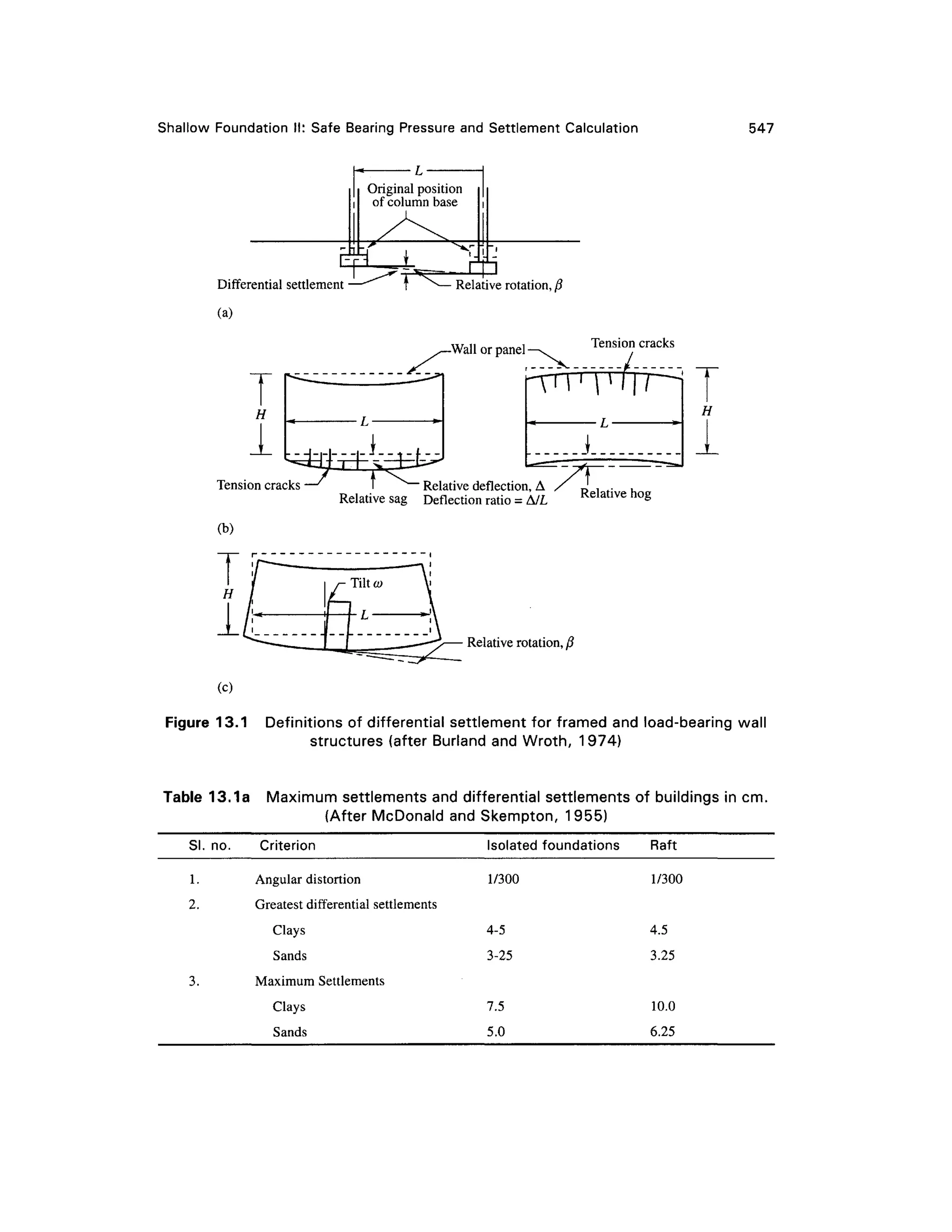
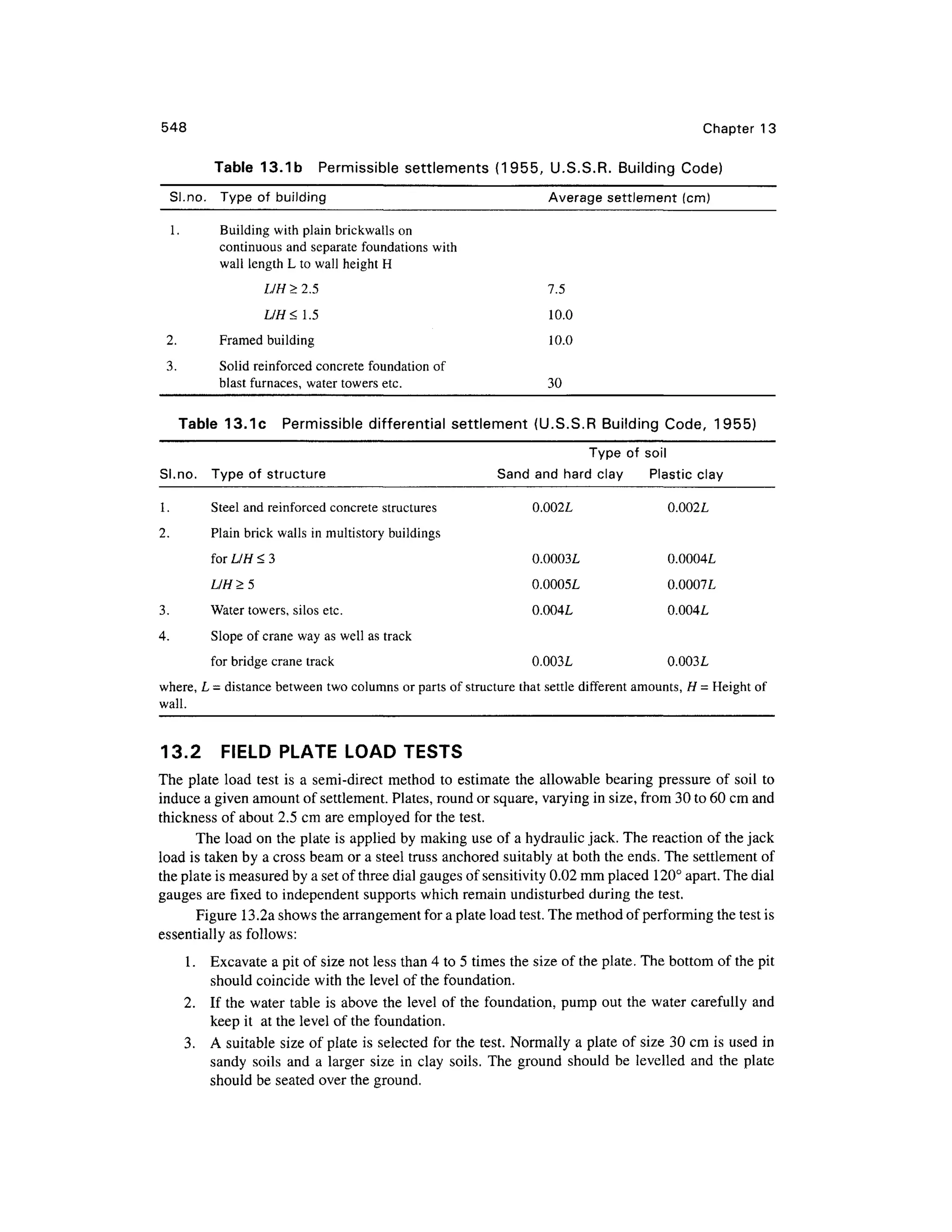
![Shallow Foundatio n II : Safe Bearing Pressure and Settlement Calculatio n 549
rod -
|k
k^
ns —Channel
IL
Steel girders
g
5IC ^V- ^
""•^X ^-^ |
/ (
Anchors ^
1
r_
Extension ^
^
pipe ^~^ ^
rt
—I
13
L_
u
c=
3-1
^^_ Hydraulic
>^ jac k
p
Dial gau£
«h
4
;e
a
i
£55
T^^-^S; .^^Ita.
J]
£
^7 N
1 /
Y
S;
Test plate —/ |^ _ &p __^| > ^ Test pit
Section
^na
©
©
©
—
©
©
©
U1Ci
i
i
I
2 Girders
A
ii /
p
i . t i i i i
)
Test plate
ii
i
1
Support
©
©
©
n
1
©
©
©
4.
Top plan
Figure 13.2 a Plat e load test arrangemen t
A seating load of about 70 gm/cm2
is first applied and released after som e time. A higher
load is next placed on the plate and settlements are recorded by means of the dial gauges.
Observations on every load increment shall be taken until the rate of settlement is less than
0.25 mm per hour. Load increments shall be approximately one-fifth o f the estimated saf e
bearing capacity of the soil. The average of the settlements recorded by 2 or 3 dial gauges
shall be taken as the settlement of the plate for each of the load increments.
5. Th e test should continue until a total settlement of 2.5 cm or the settlement at which the soil
fails, whichever is earlier, is obtained. After the load is released, the elastic rebound of the
soil should be recorded.
From the test results, a load-settlement curve should be plotted as shown in Fig. 13.2b . The
allowable pressure on a prototype foundation for an assumed settlement may be found by making
use o f th e followin g equations suggeste d b y Terzagh i an d Pec k (1948 ) fo r squar e footing s in
granular soils.](https://image.slidesharecdn.com/geotechbook-240326034957-6522ccd8/75/geotech-book-FOR-CIVIL-ENGINEERINGGG-pdf-568-2048.jpg)
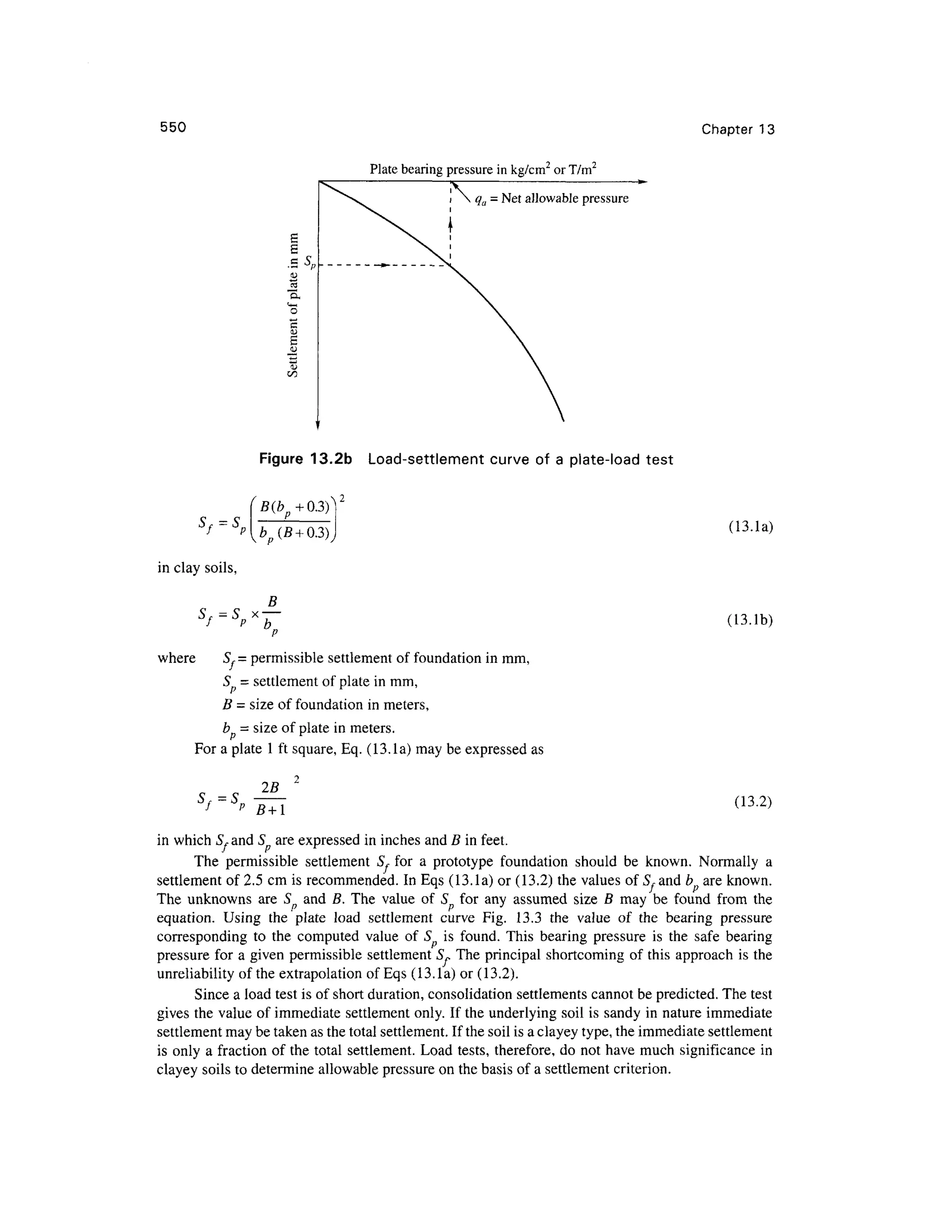
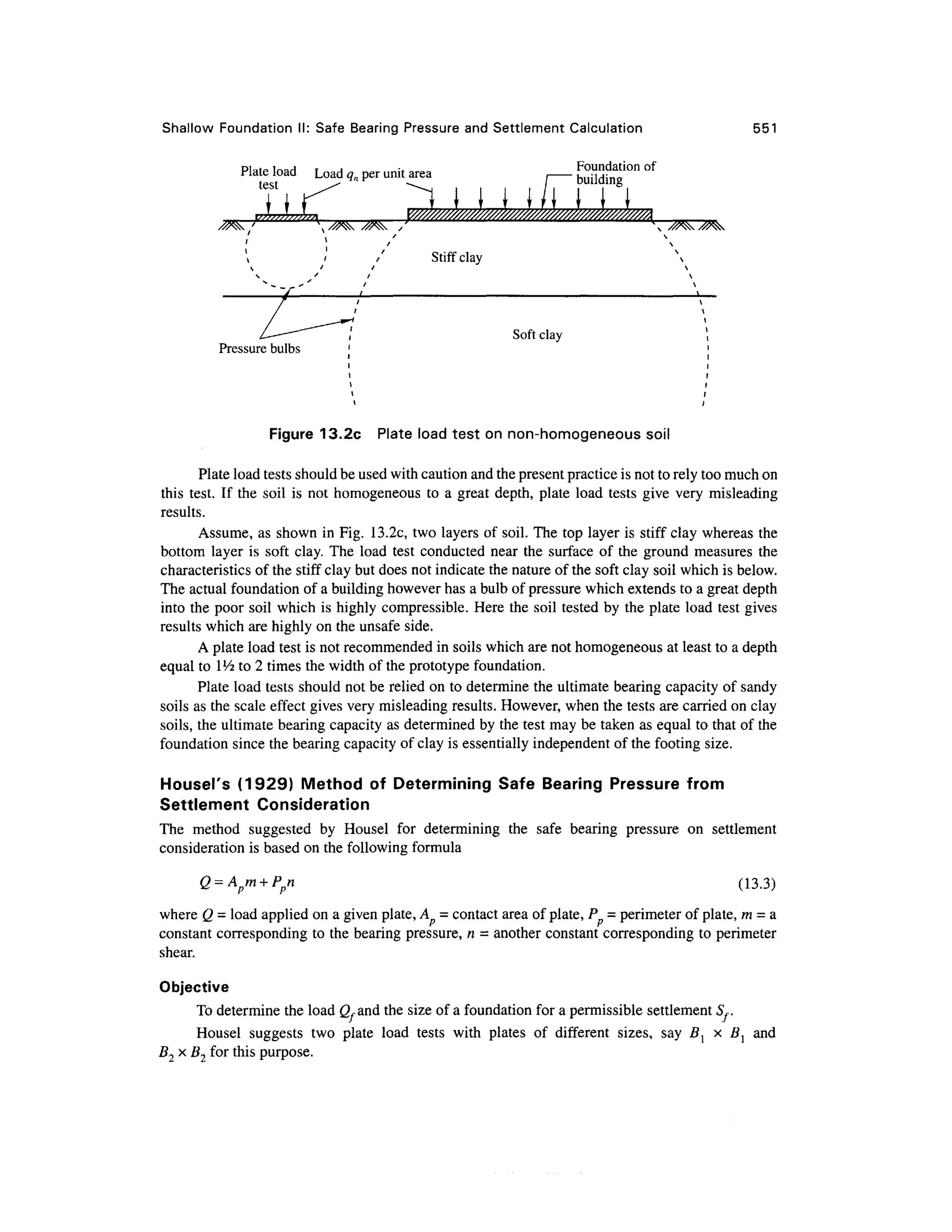


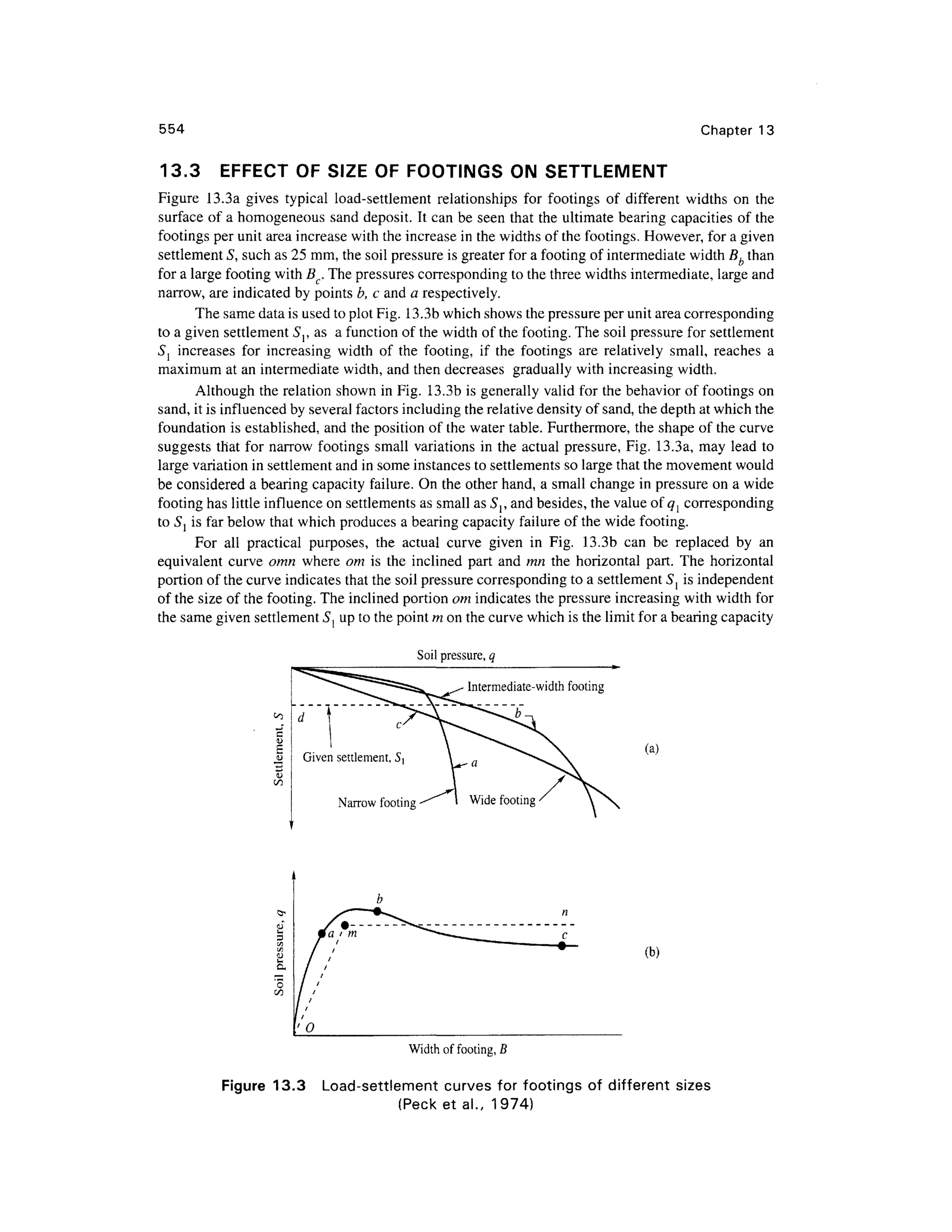



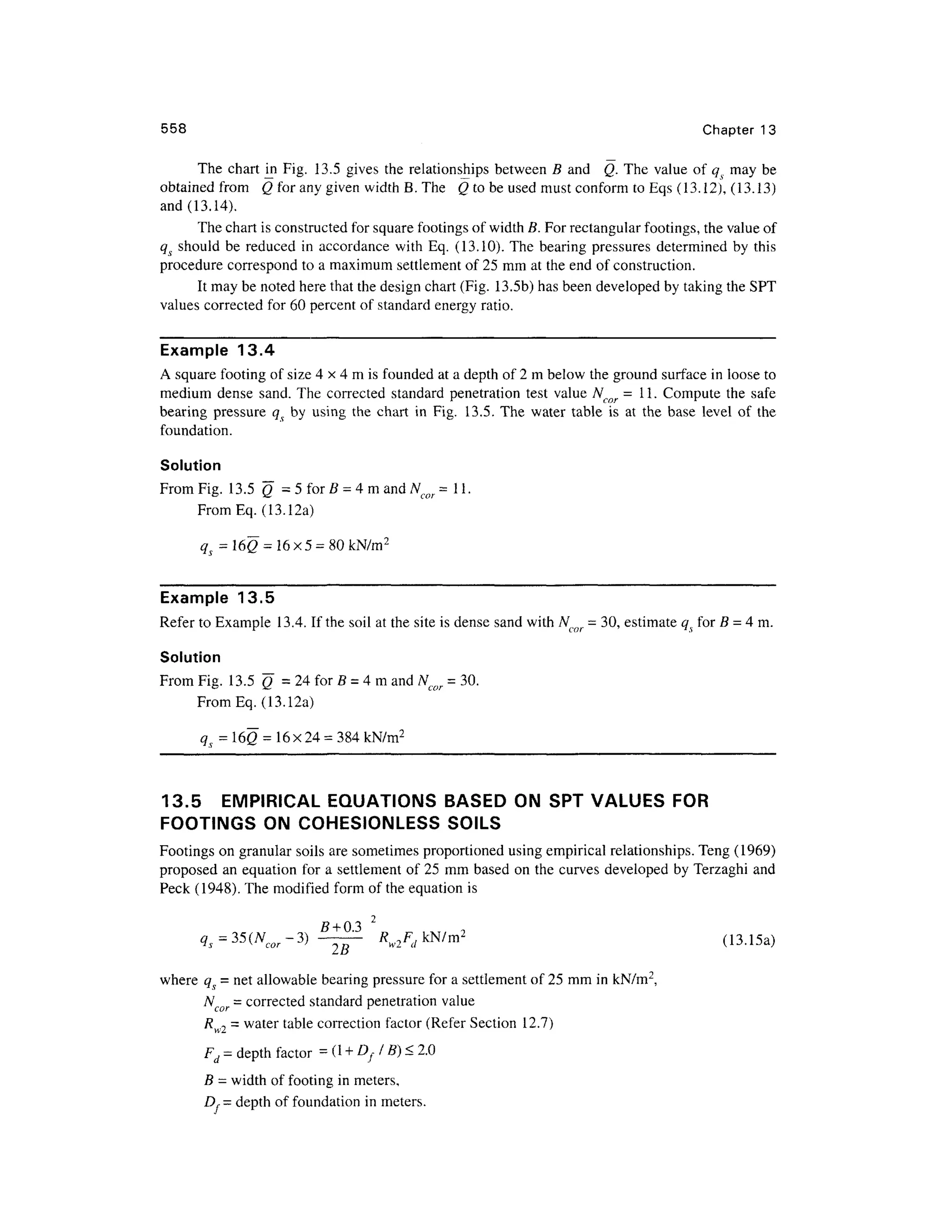




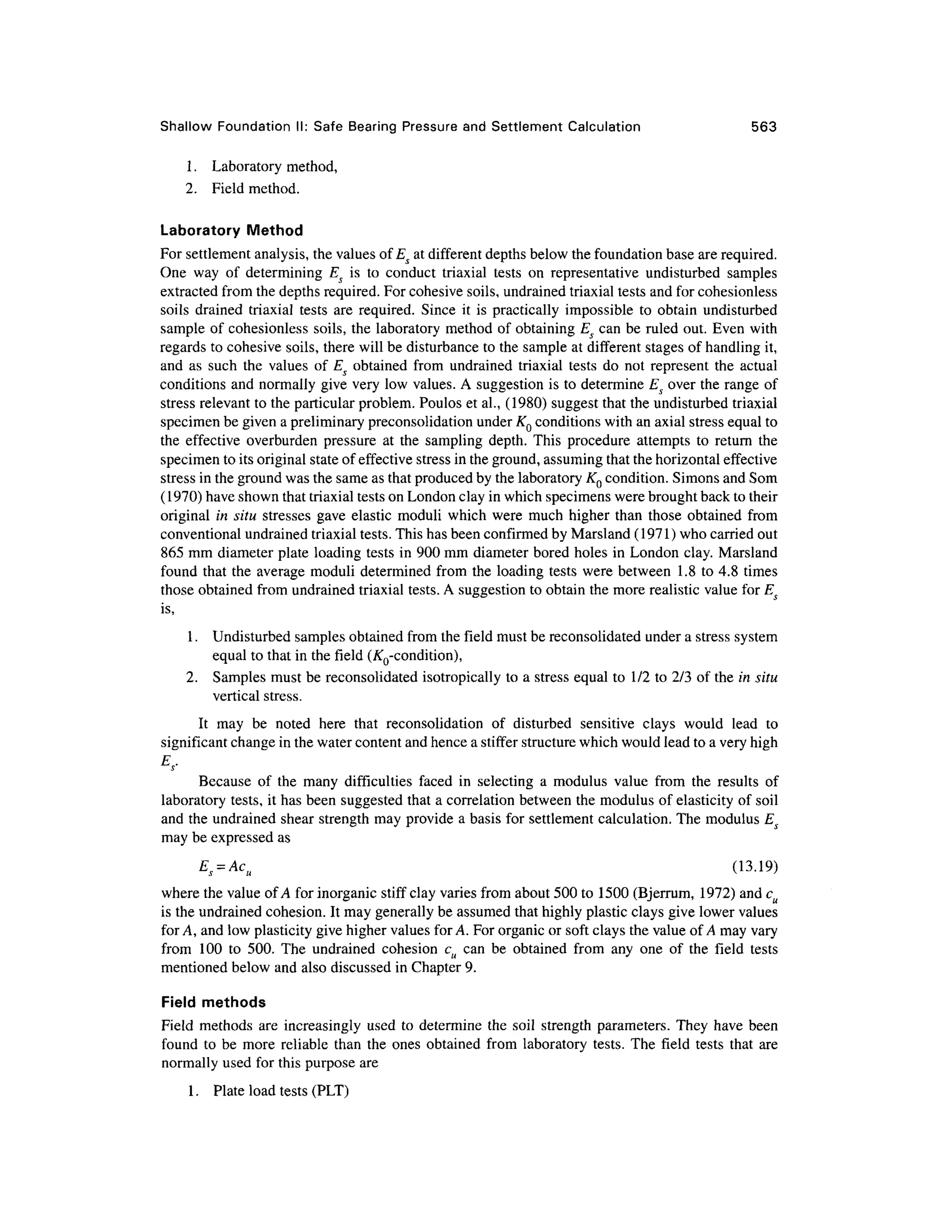
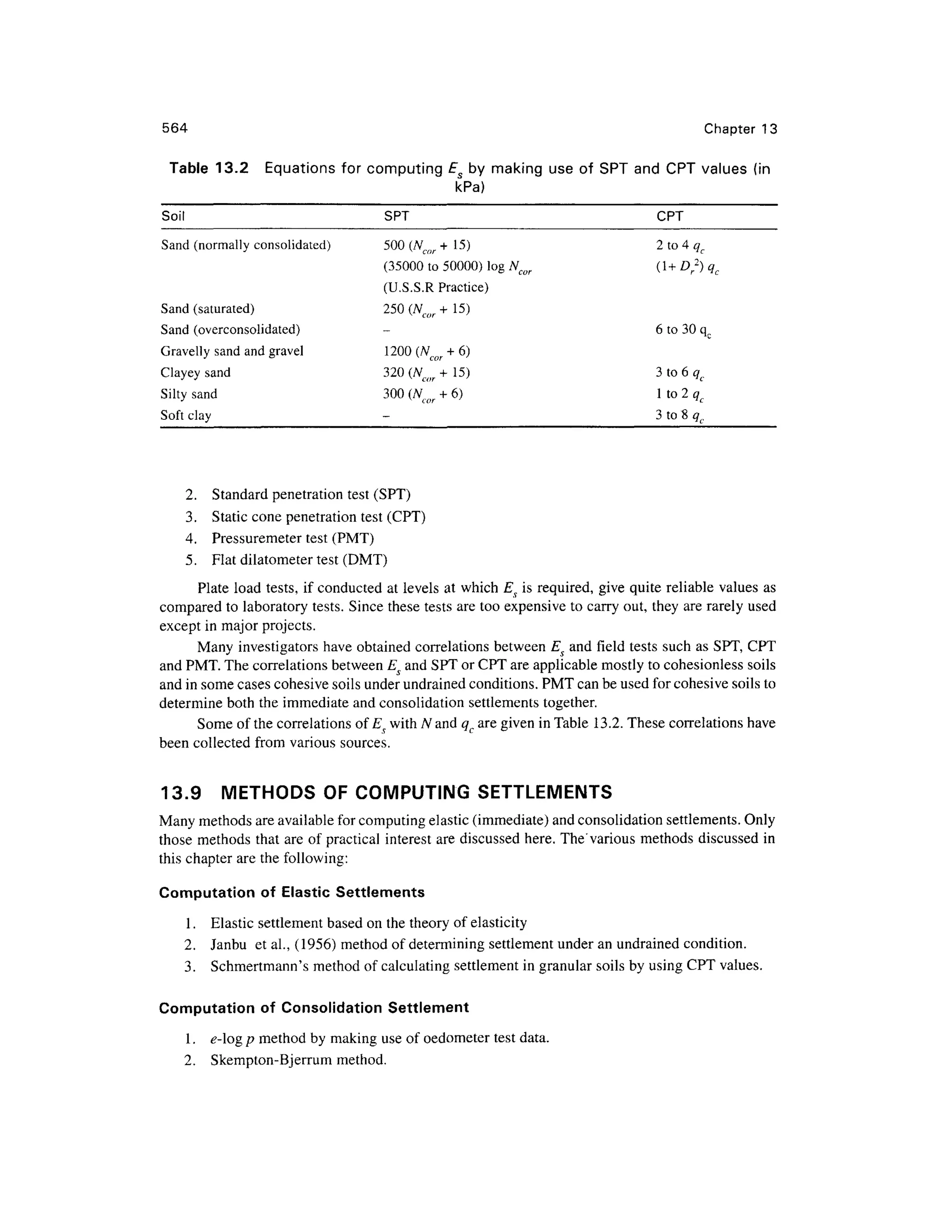
![Shallow Foundatio n II: Safe Bearing Pressur e and Settlement Calculatio n 56 5
13.10 ELASTI C SETTLEMEN T BENEAT H TH E CORNE R OF A
UNIFORMLY LOADE D FLEXIBL E AREA BASE D O N TH E THEOR Y O F
ELASTICITY
The net elastic settlement equation for a flexible surface footing may be written as,
c P a->"2
),
S=B-— -
I
f (13.20a )
s
where S e= elasti c settlement
B = widt h of foundation,
Es = modulu s of elasticity of soil,
fj,= Poisson' s ratio ,
qn = ne t foundation pressure,
7, = influenc e factor.
In Eq . (13.20a) , fo r saturate d clays ,JL - 0.5 , and E s i s t o b e obtaine d unde r undrained
conditions as discussed earlier. For soils other than clays, the value of ^ has to be chosen suitably
and the corresponding valu e of Es has to be determined. Table 13.3 gives typical values for /i as
suggested by Bowles (1996) .
7, is a function o f the LIB ratio of the foundation, and the thickness H of the compressibl e
layer. Terzaghi has a given a method of calculating 7, from curves derived by Steinbrenner (1934) ,
for Poisson's ratio of 0.5, 7, = F1?
for Poisson's rati o of zero, 7,= F7 + F2.
where F{ an d F2 are factors which depend upon the ratios of H/B and LIB.
For intermediate values of //, the value of If can be computed by means of interpolation or by
the equation
(l-f,-2f,2
)F2
(13.20b)
The value s o f F j an d F 2 ar e give n i n Fig. 13.7a. Th e elasti c settlemen t a t an y poin t N
(Fig. 13.7b ) is given by
(I-//2
)
Se a t point N = -S-_ [/ ^ + If2B2 + 7/37?3 + 7/47?4] (1 3 20c)
Table 13. 3 Typica l rang e of value s for Poisson' s rati o (Bowles , 1996 )
Type o f soi l y.
Clay, saturated 0.4-0. 5
Clay, unsaturated 0.1-0. 3
Sandy clay 0.2-0. 3
Silt 0.3-0.3 5
Sand (dense ) 0.2-0. 4
Coarse (void ratio 0.4 to 0.7) 0.1 5
Fine grained (void ratio = 0.4 to 0.7) 0.2 5
Rock 0.1-0. 4](https://image.slidesharecdn.com/geotechbook-240326034957-6522ccd8/75/geotech-book-FOR-CIVIL-ENGINEERINGGG-pdf-584-2048.jpg)

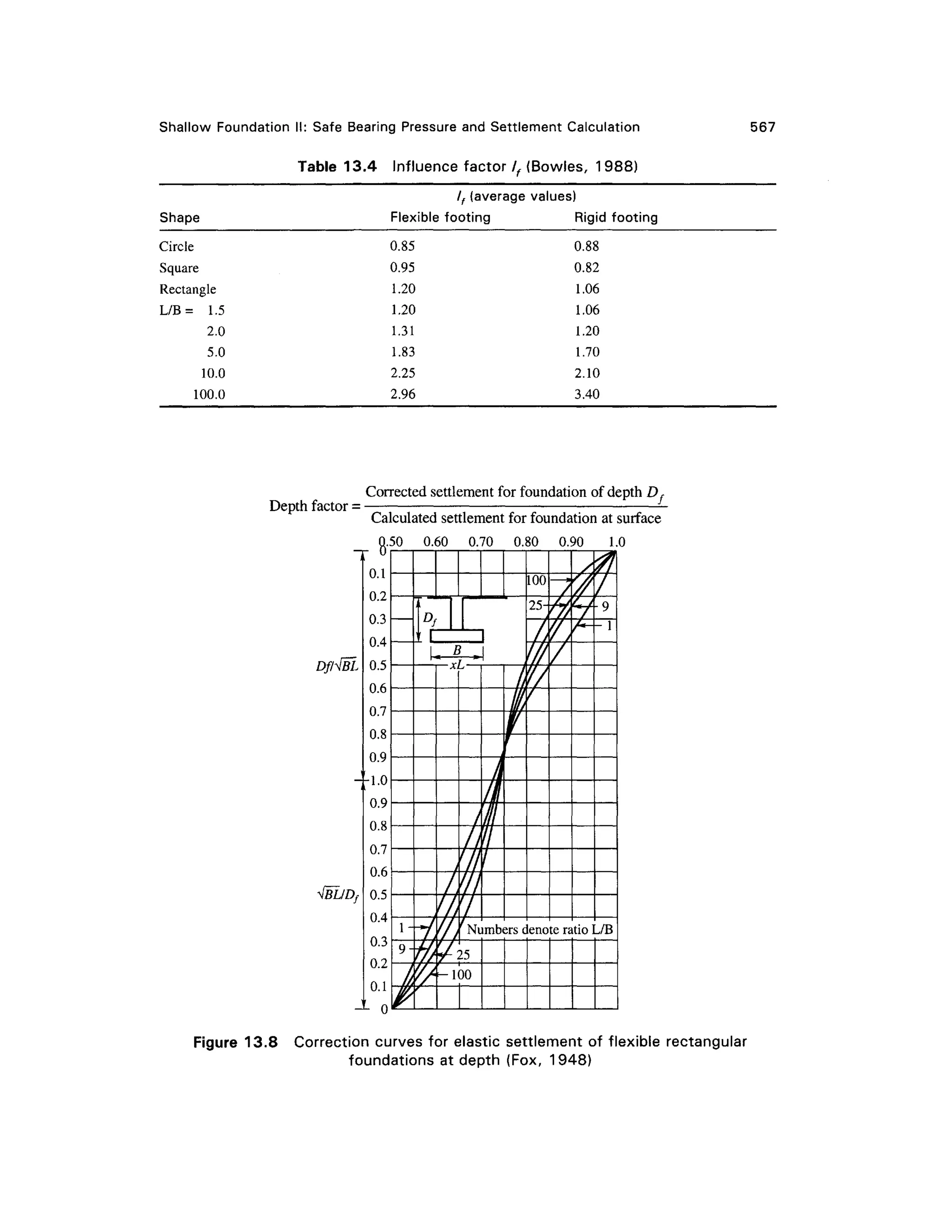
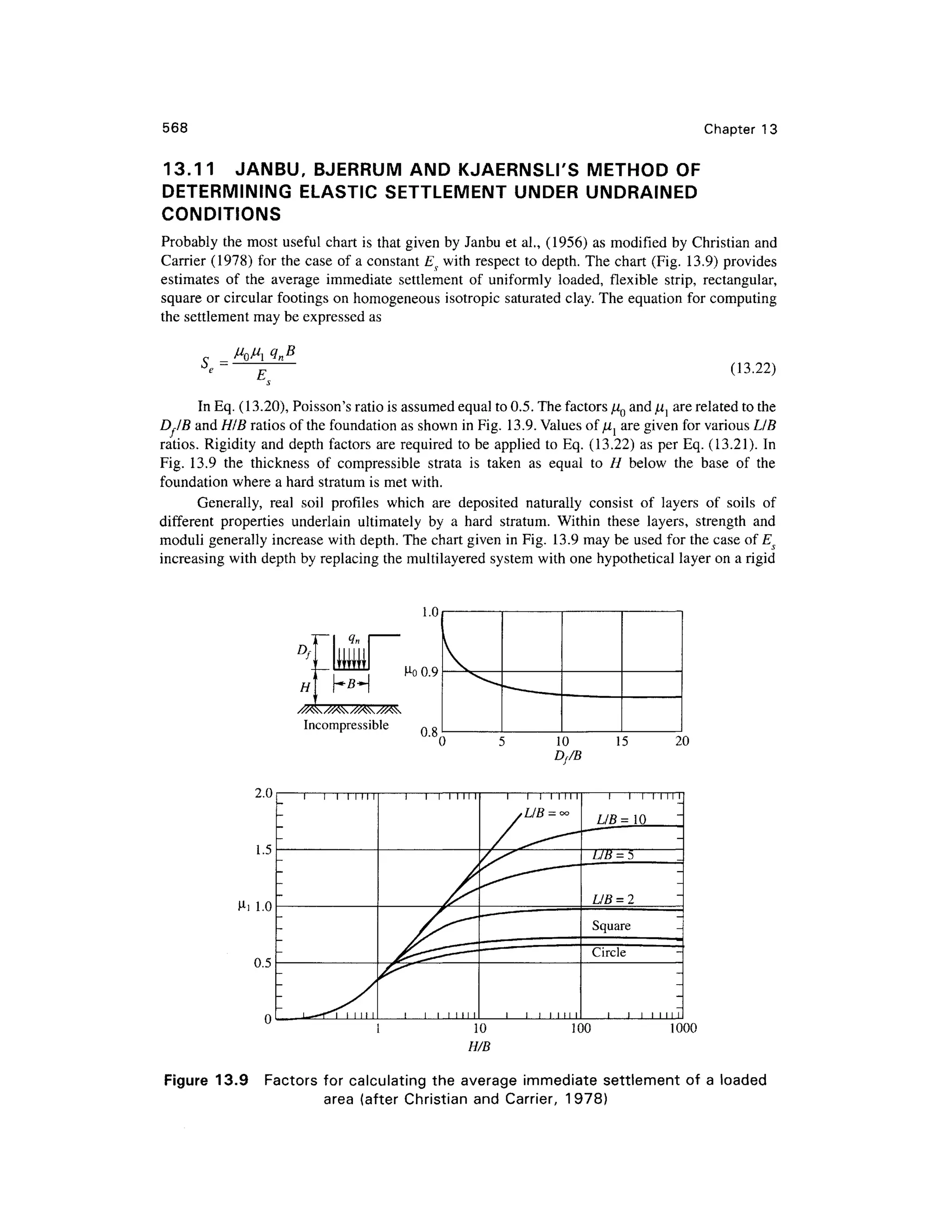


![Shallow Foundatio n II: Safe Bearin g Pressur e an d Settlement Calculation 571
drawn to the same scale. The settlements of each layer resulting from the net contact pressure qn are
then calculated using the values of Es and /z appropriate to each layer. The sum of the settlements in
each laye r i s the n correcte d fo r th e dept h an d cree p factor s usin g Eqs. (13.24) an d (13.25 )
respectively.
Example 13.8
Estimate the immediate settlement of a concrete footing 1.5 x 1. 5 m in size founded at a depth of
1 m in silty soil whose modulus of elasticity is 90 kg/cm2
. The footing is expected to transmit a unit
pressure of 200 kN/m2
.
Solution
Use Eq. (13.20a)
Immediate settlement ,
s =
E
Assume n =0.35, /,
=0.82 for a rigid footing.
Given: q = 200 kN/m2
, B = 1.5 m, Es = 90 kg/cm2
« 9000 kN/m2
.
By substituting the known values, we have
1-0352
S = 200xl.5 x -
:
-
x0.82 =0.024 m =2.4 cm
9000
Example 13.9
A square footing of size 8 x 8 m is founded at a depth of 2 m below the ground surface in loose to
medium dense sand with qn = 120 kN/m2
. Standard penetration tests conducted at the site gave the
following corrected N 6Q values.
Depth below G.L. (m)
2
4
6
8
"cor
8
8
12
12
Depth below G.L.
10
12
14
16
18
N
cor
11
16
18
17
20
The water table is at the base of the foundation. Above the water table y =16.5 kN/m3
, and
submerged y b = 8.5 kN/m3
.
Compute th e elastic settlemen t by Eq. (13.20a). Use the equation E s = 250 (Ncor + 15) for
computing the modulus of elasticity of the sand. Assume]U = 0.3 and the depth of the compressibl e
layer = 2B=16 m ( = //)•
Solution
For computing the elastic settlement, it is essential to determine the weighted average value ofN cor.
The dept h o f th e compressibl e laye r belo w th e bas e o f th e foundatio n i s take n a s equa l t o
16 m (= H). This depth may be divided into three layers in such a way that Ncor i s approximately
constant in each layer as given below.](https://image.slidesharecdn.com/geotechbook-240326034957-6522ccd8/75/geotech-book-FOR-CIVIL-ENGINEERINGGG-pdf-590-2048.jpg)
